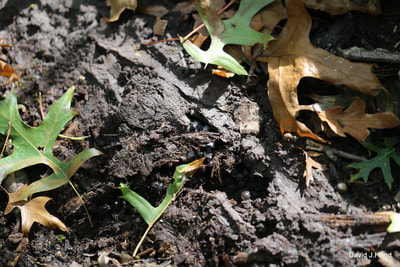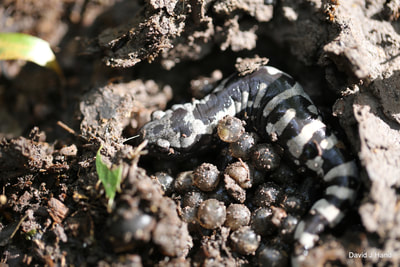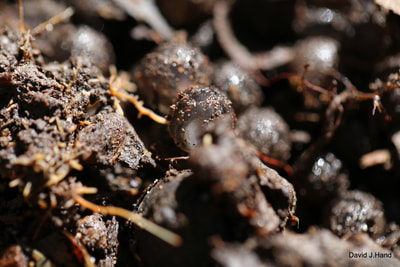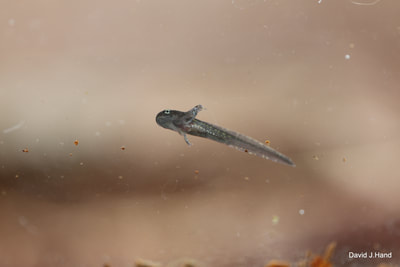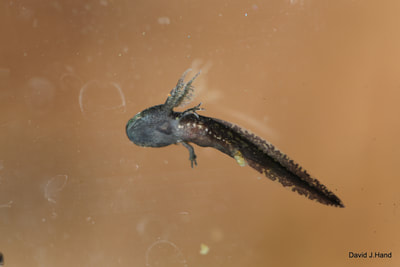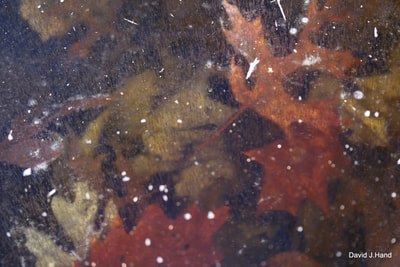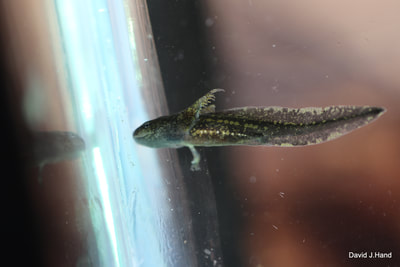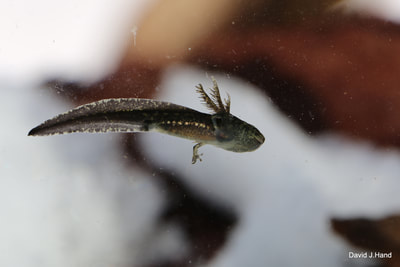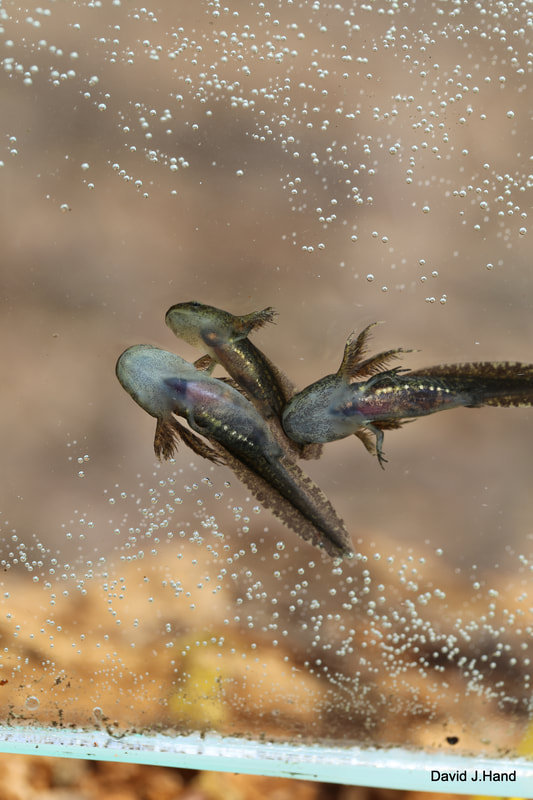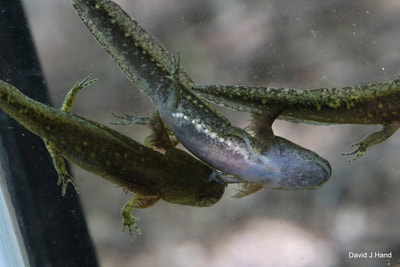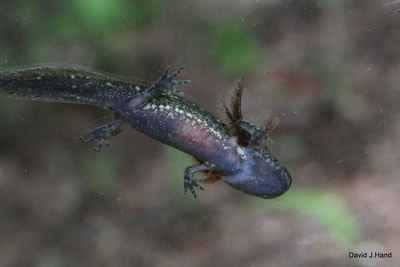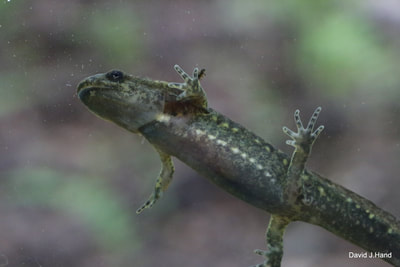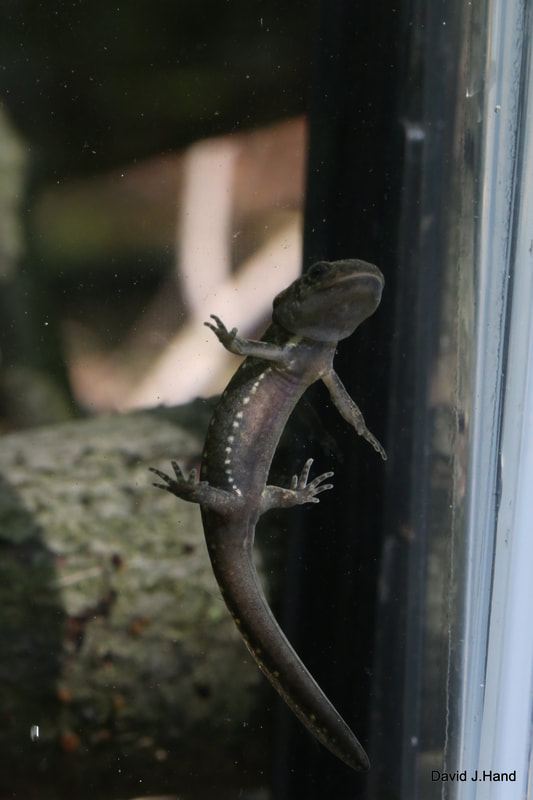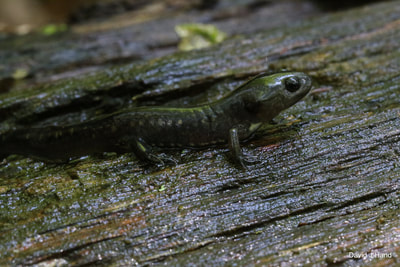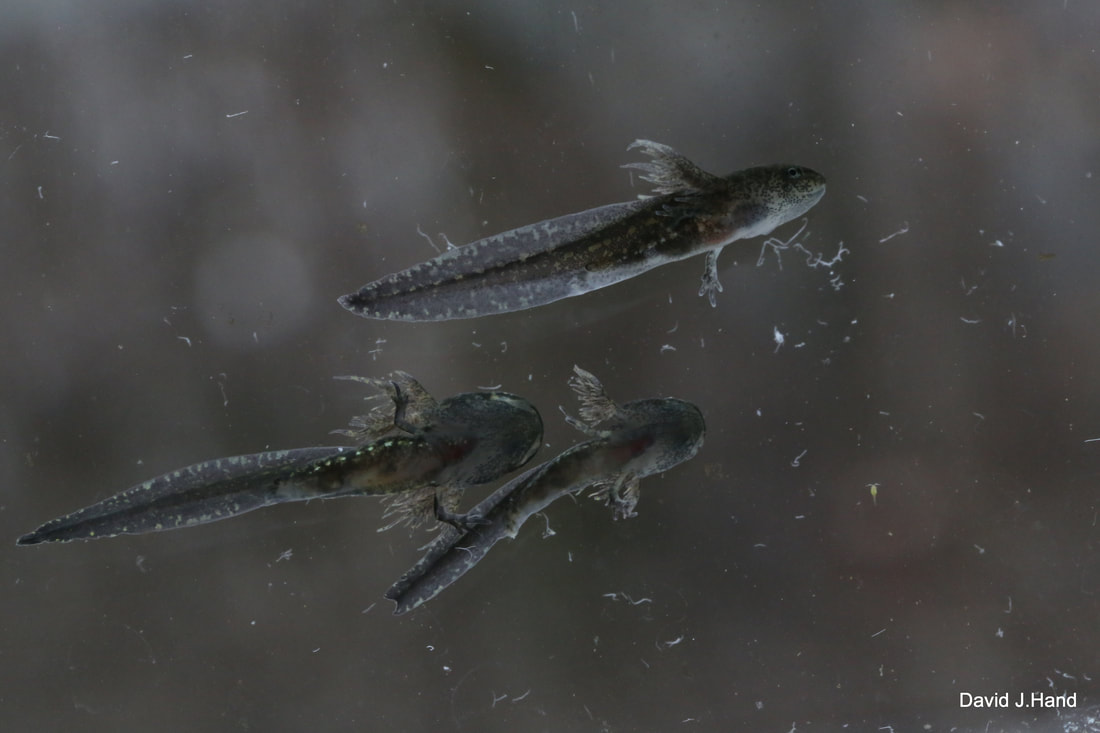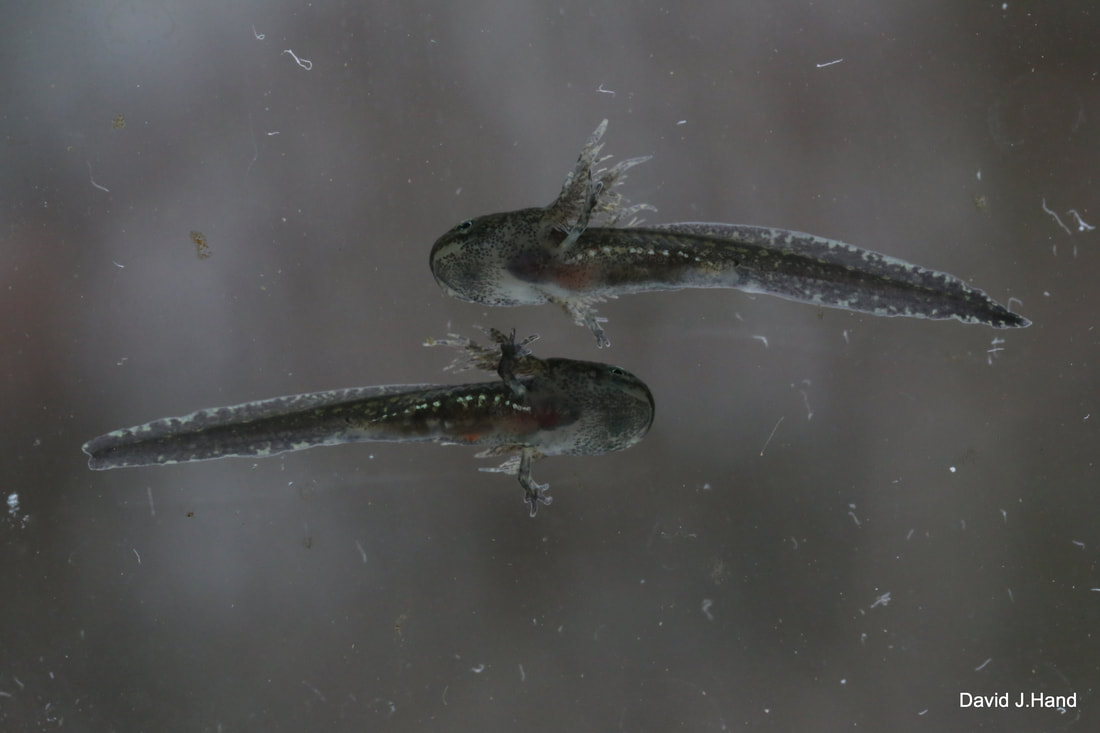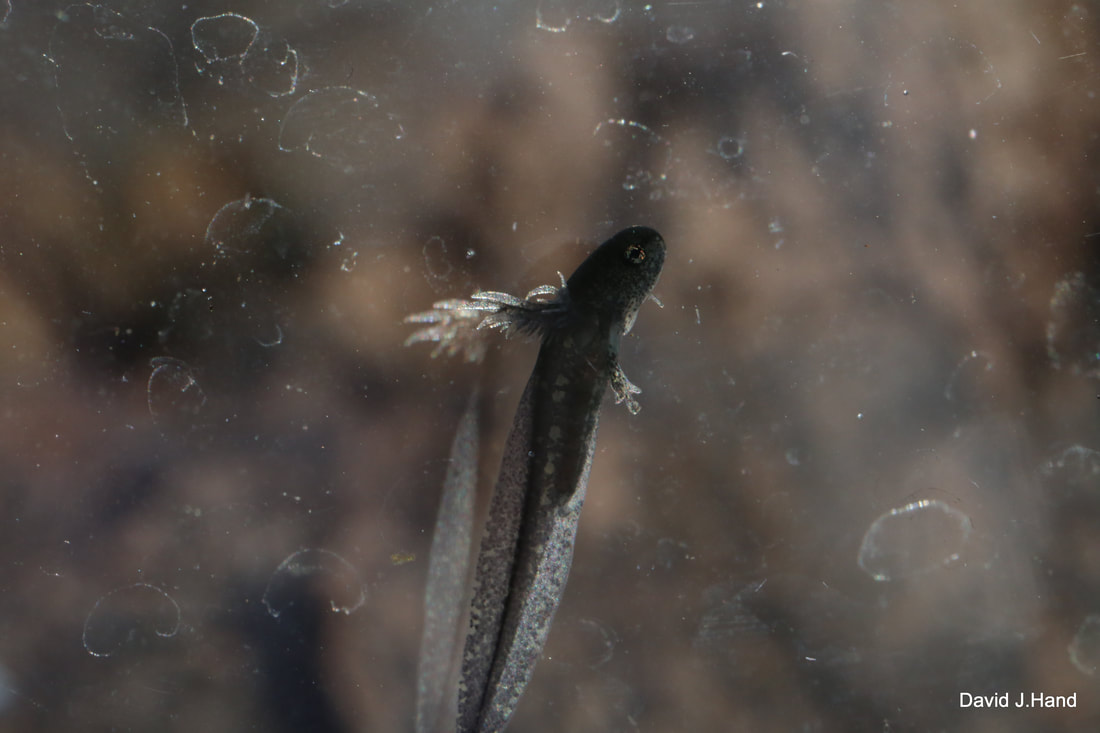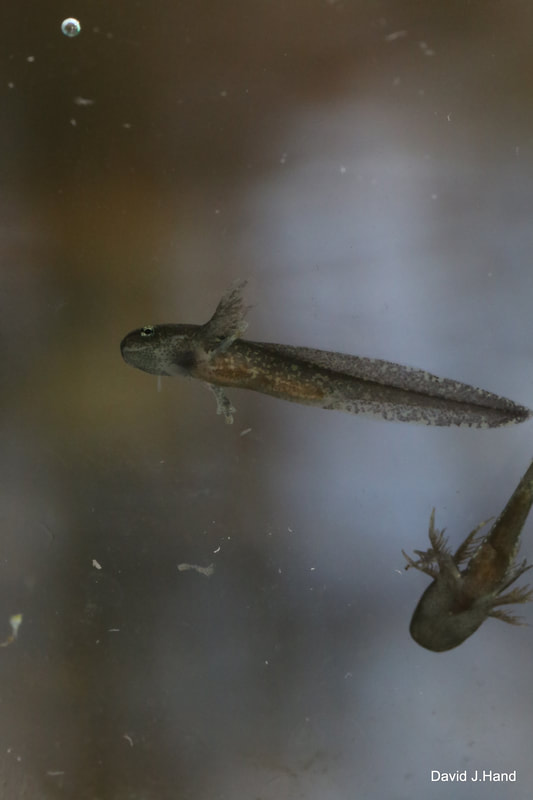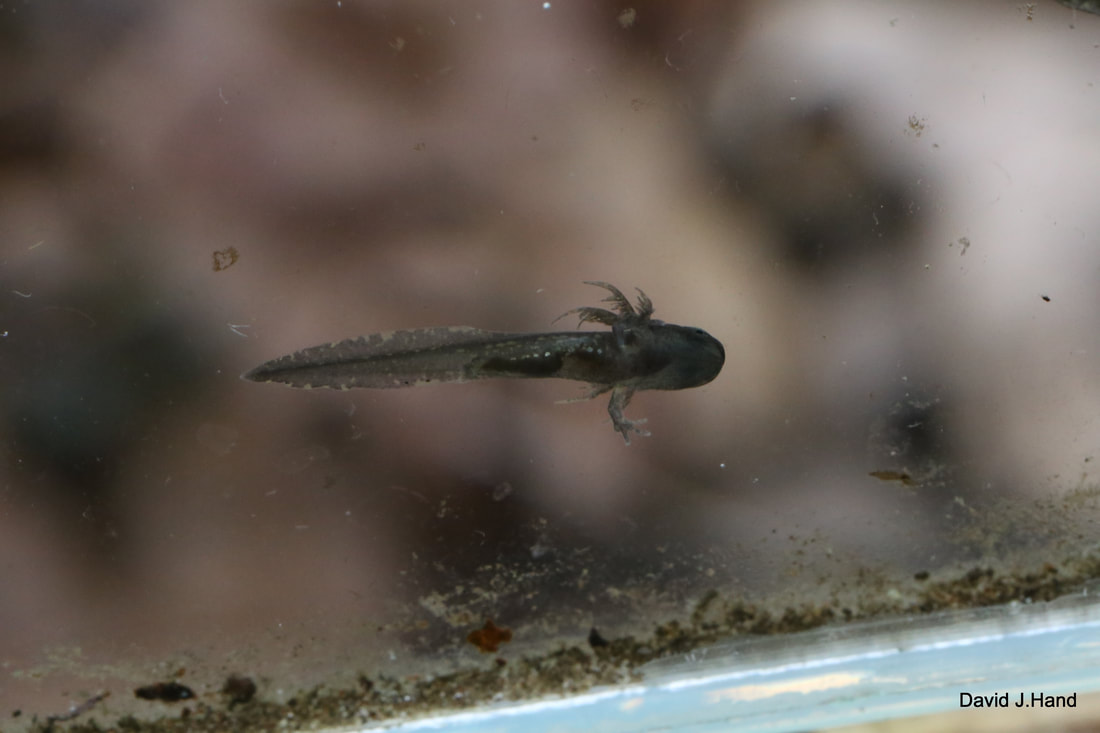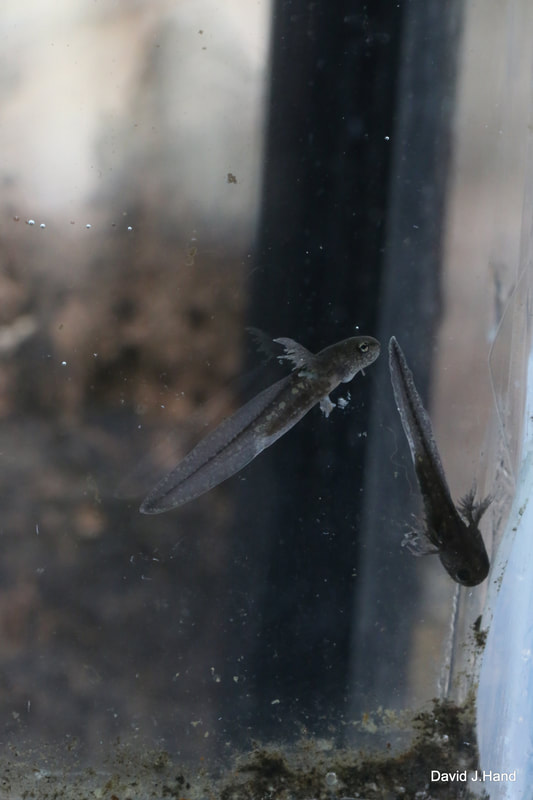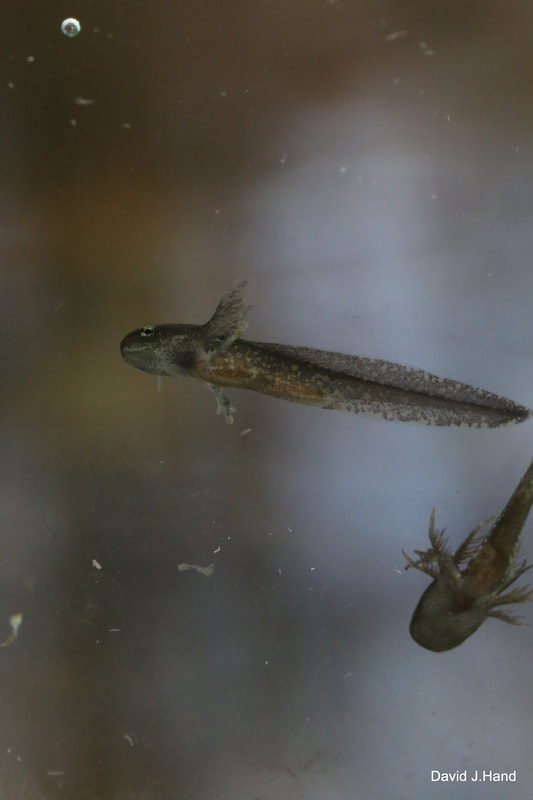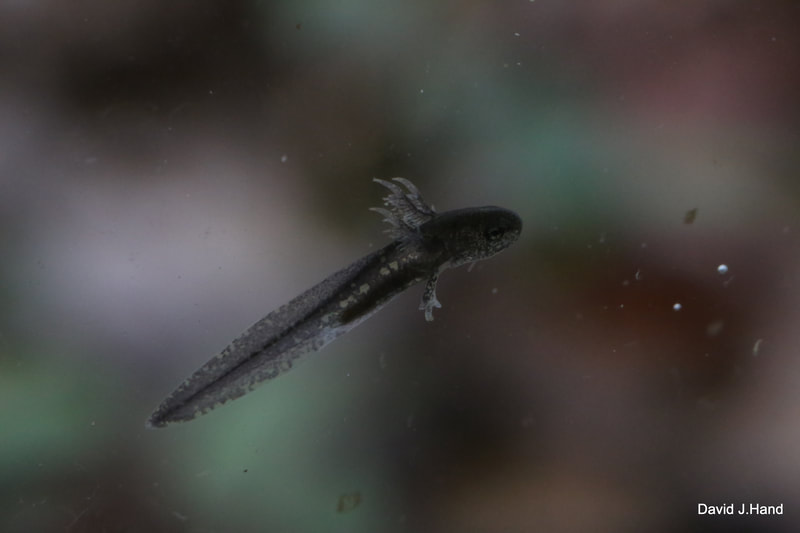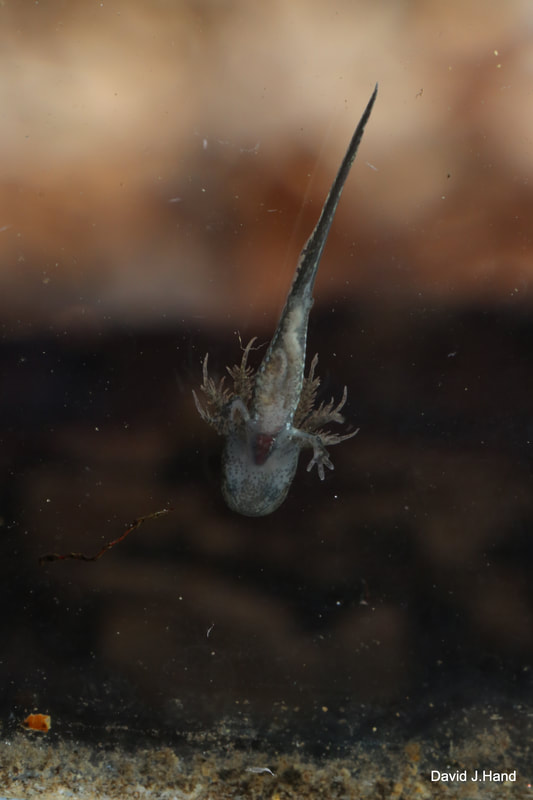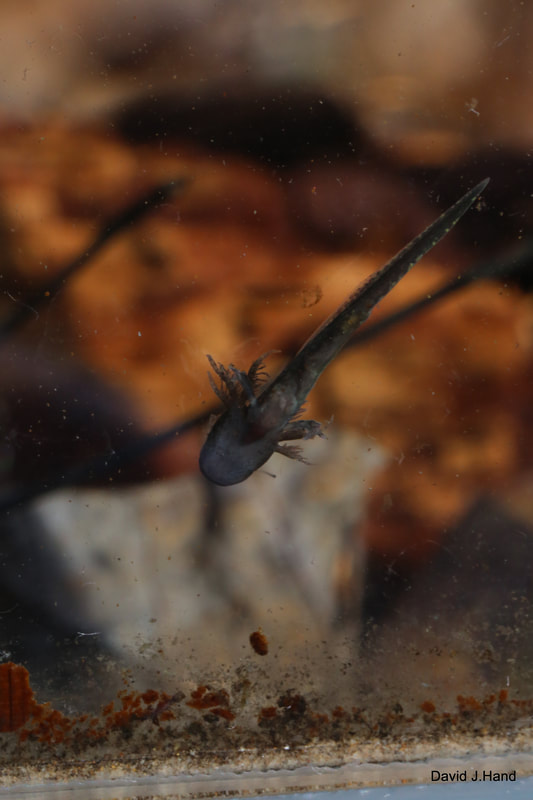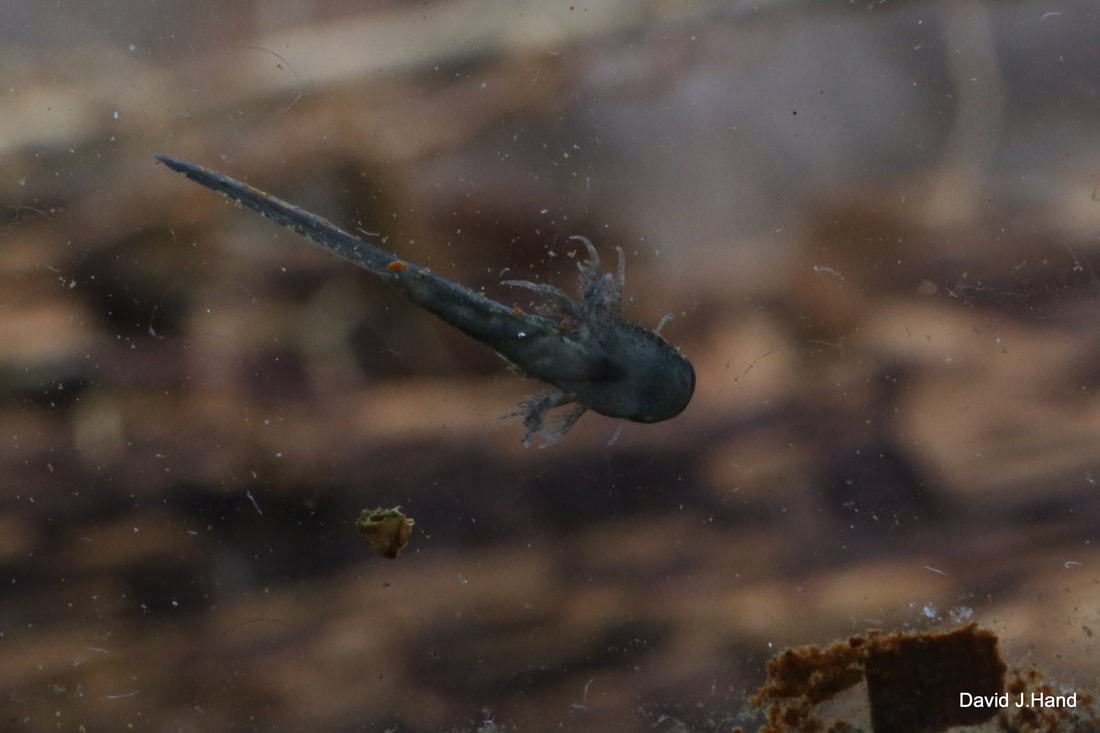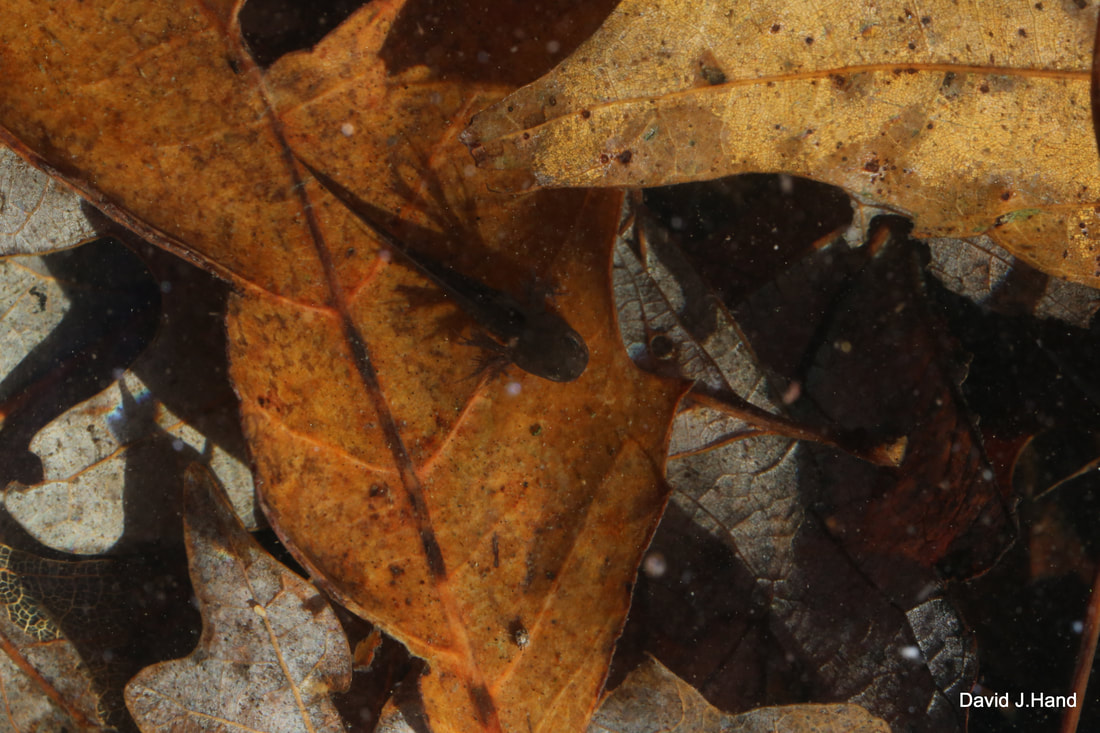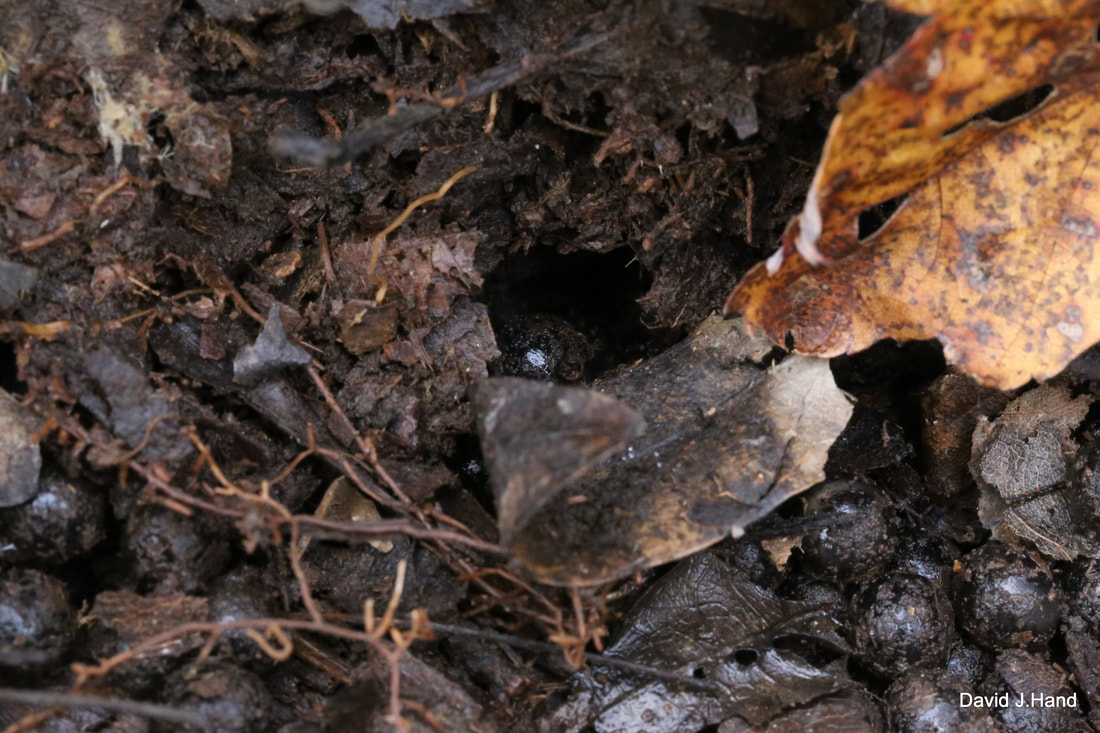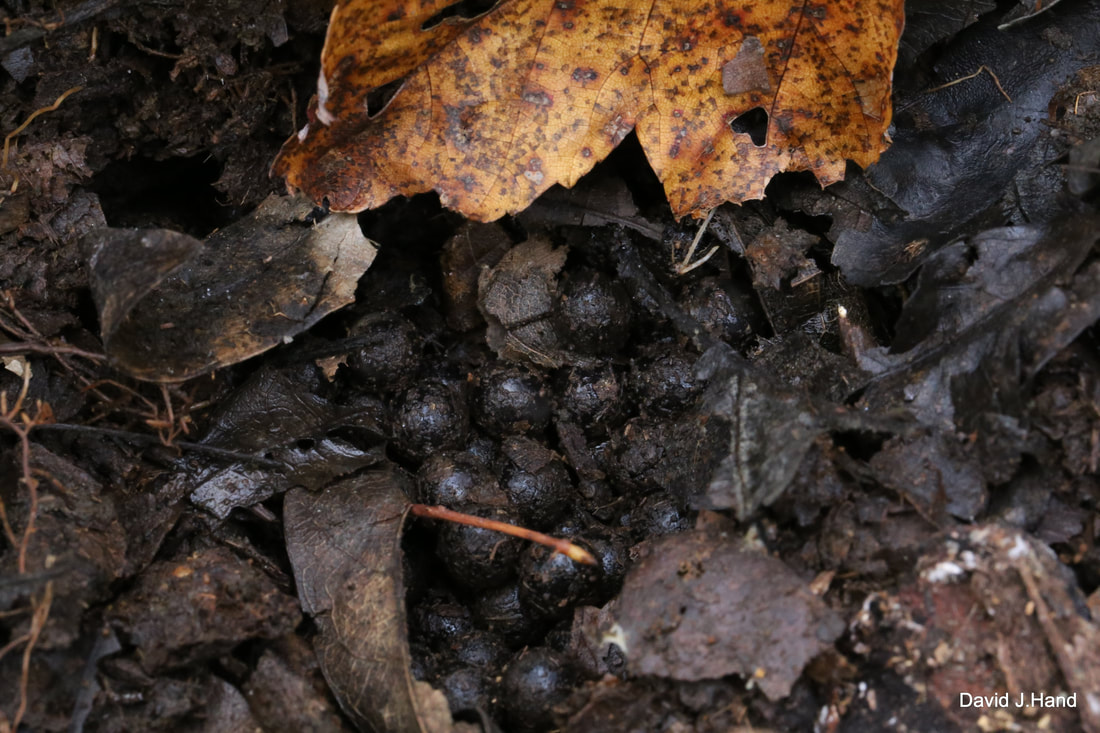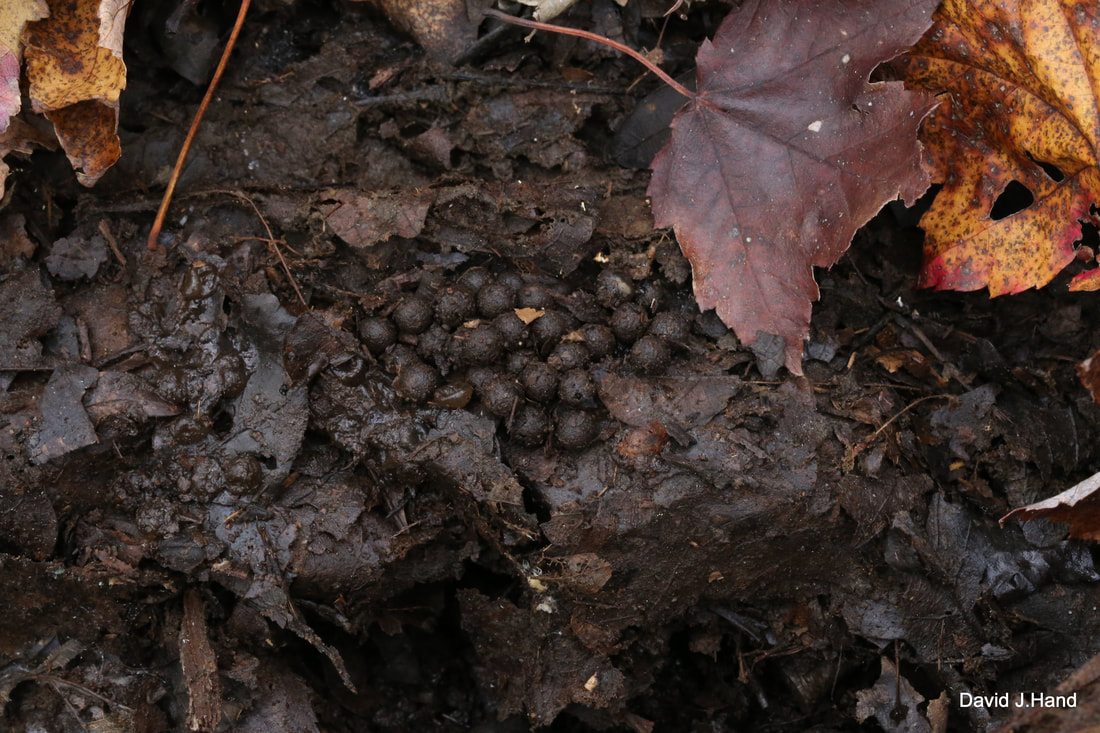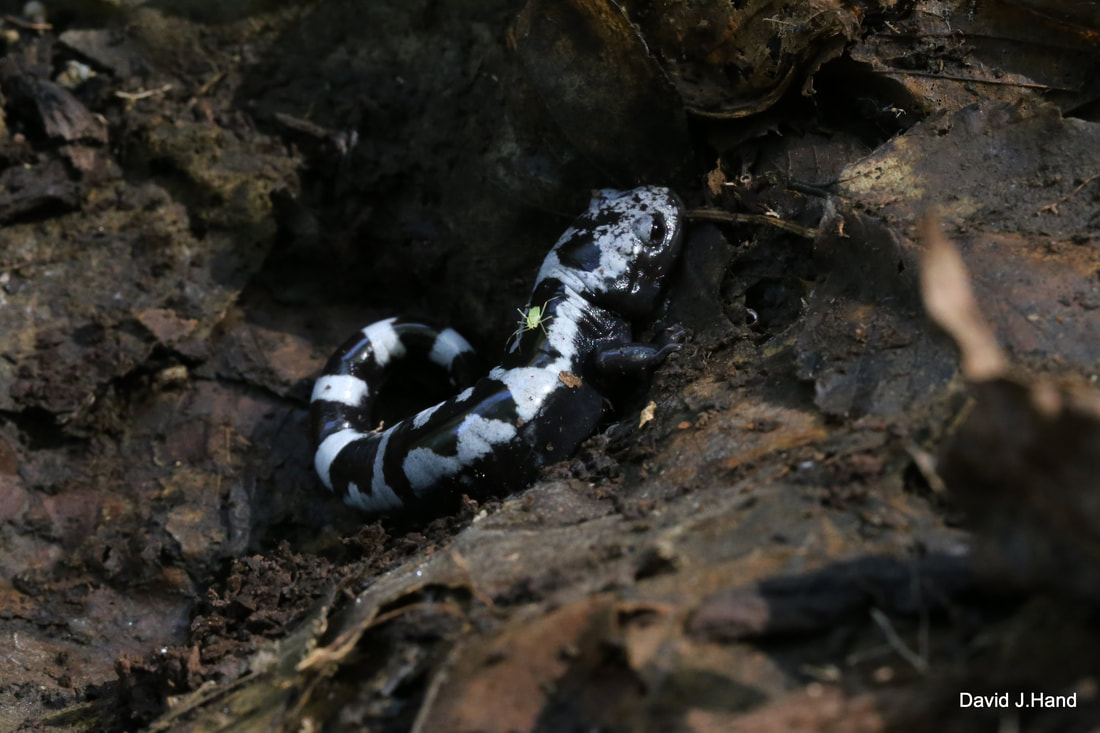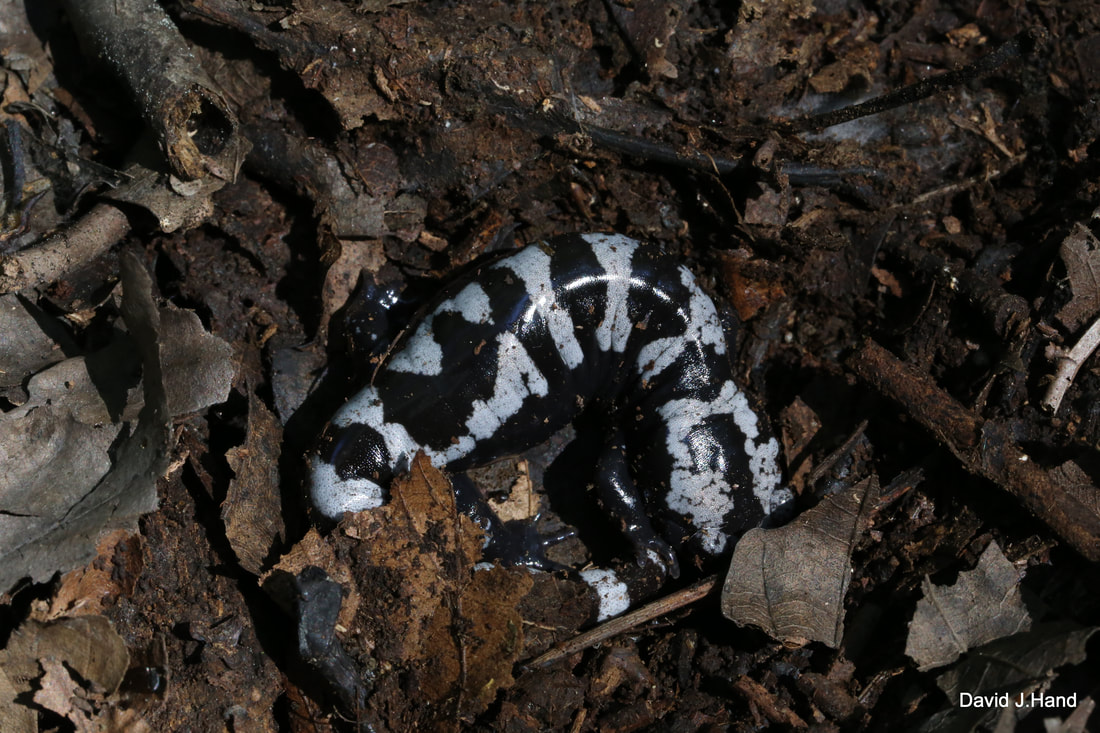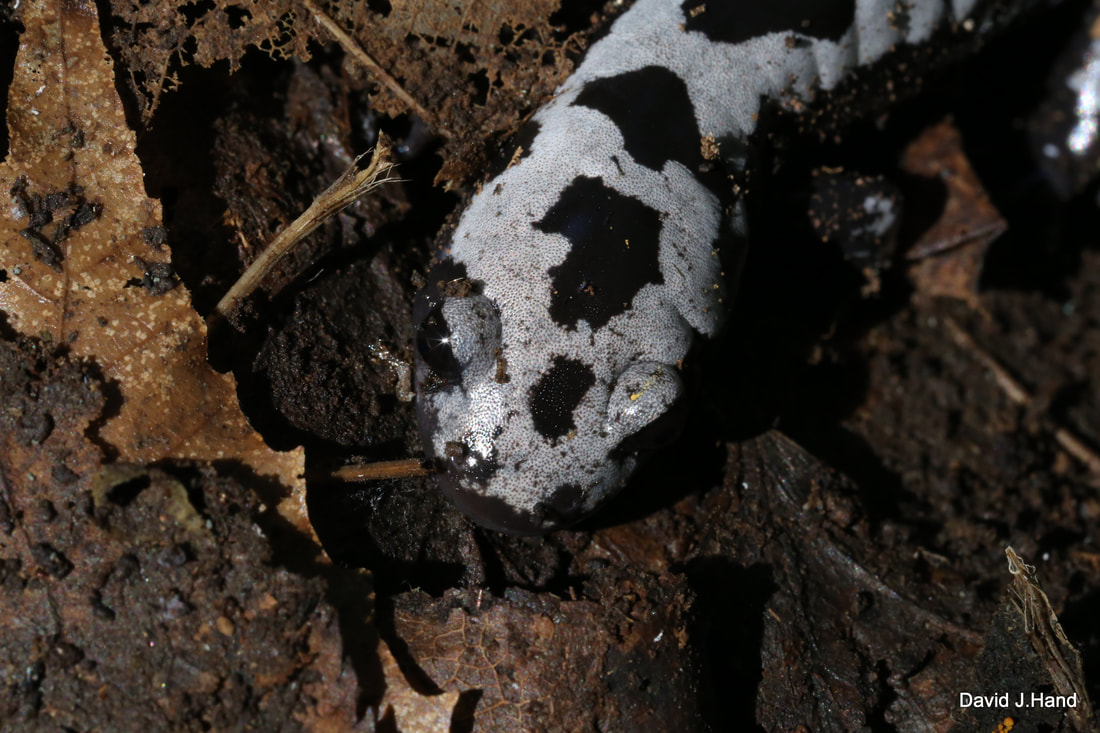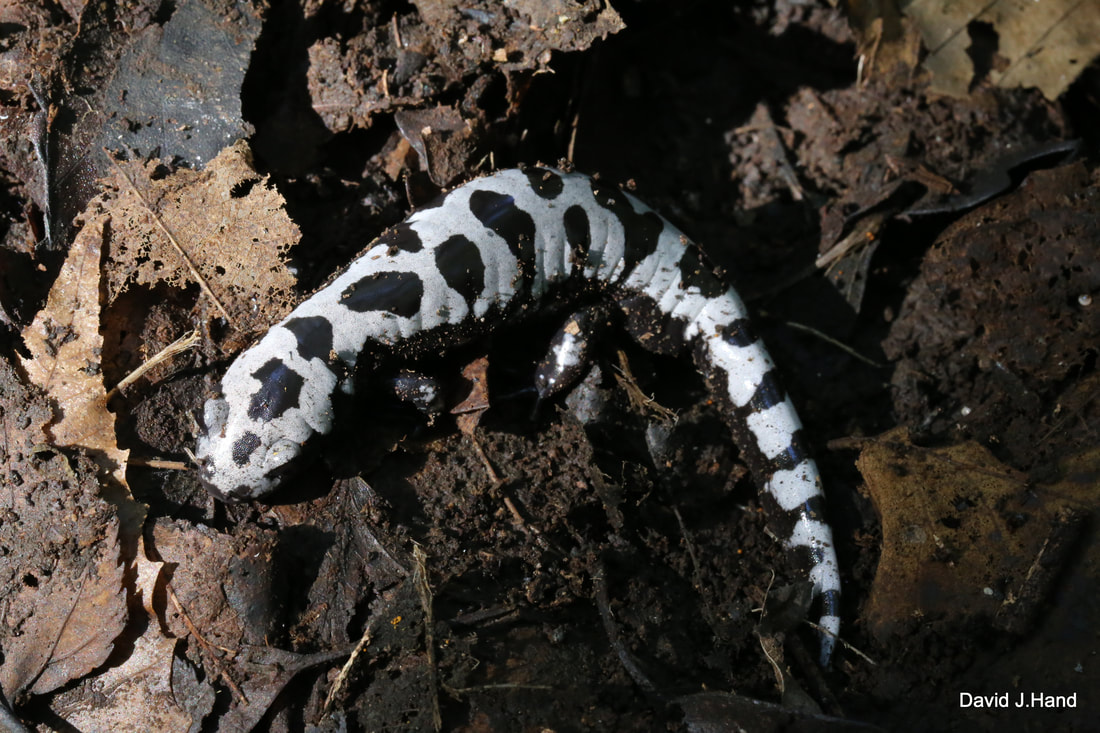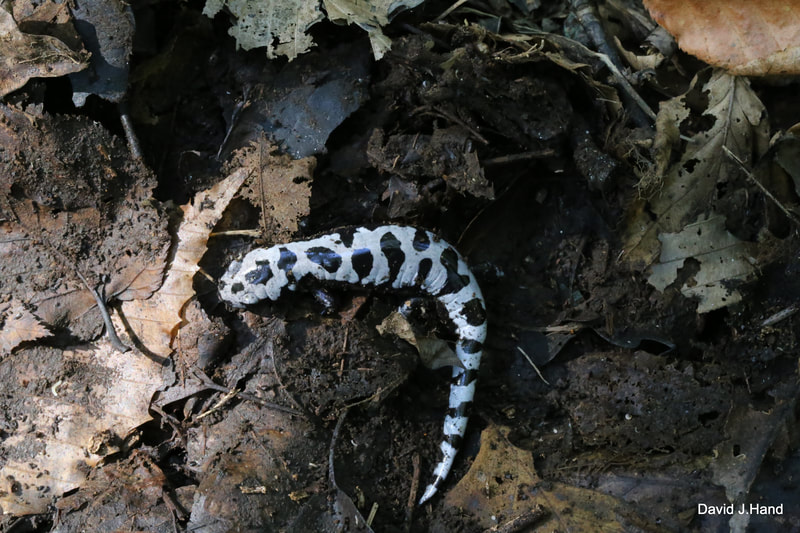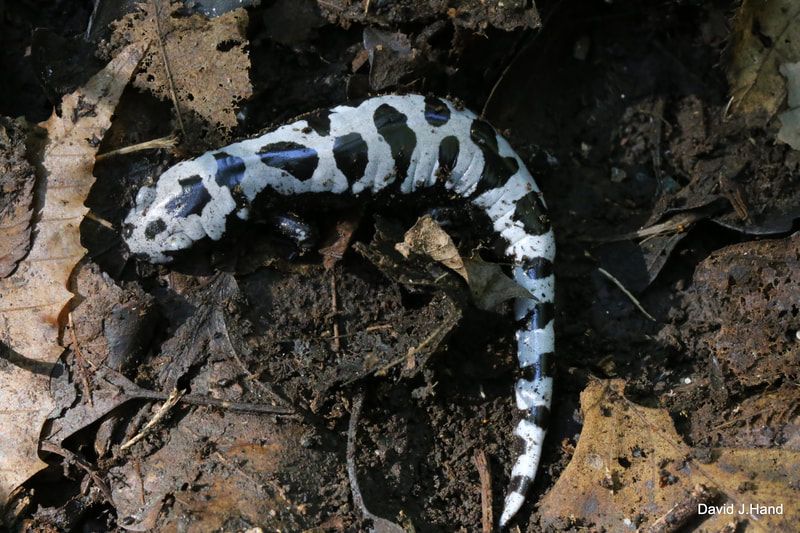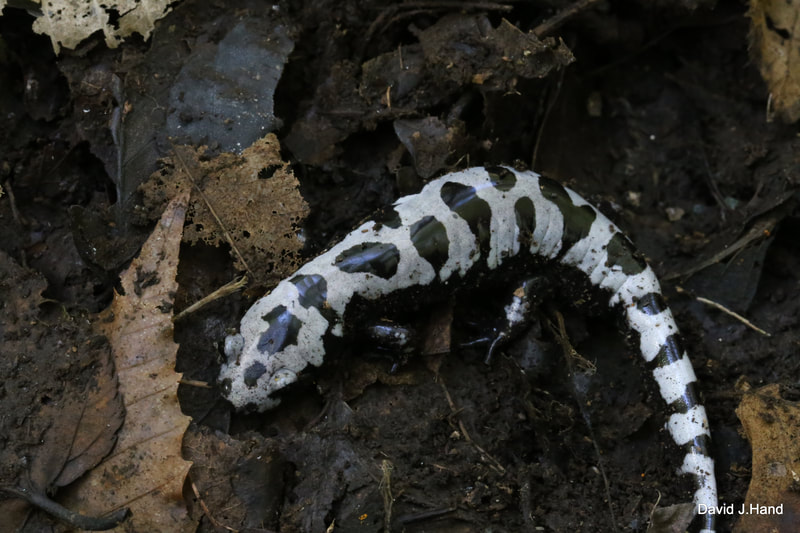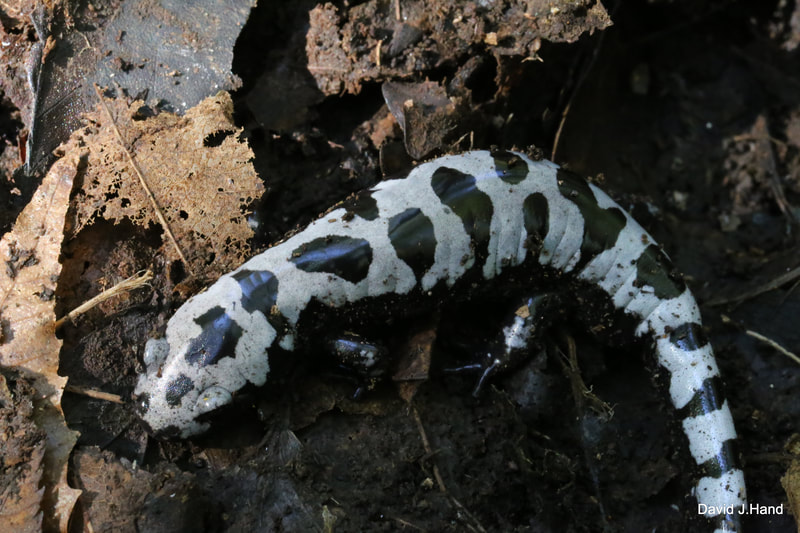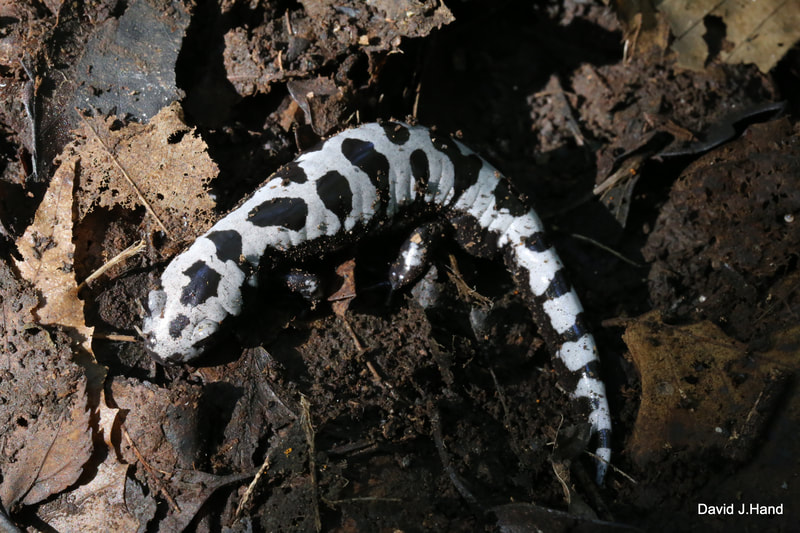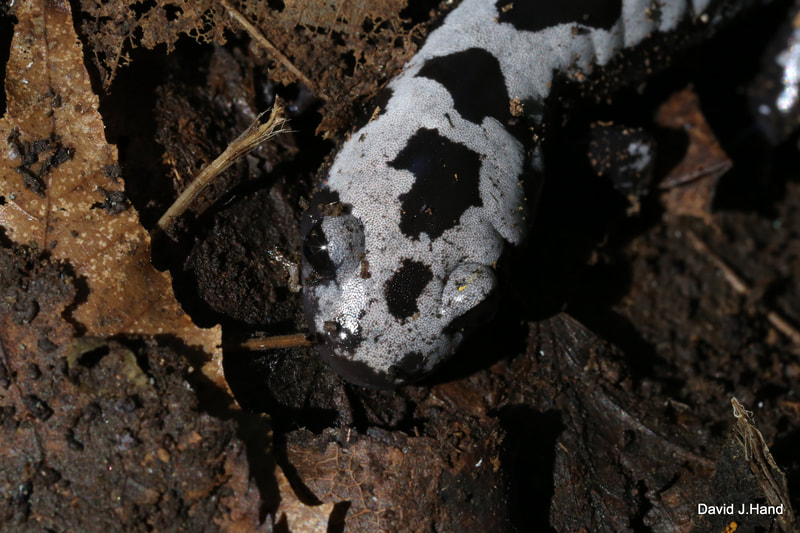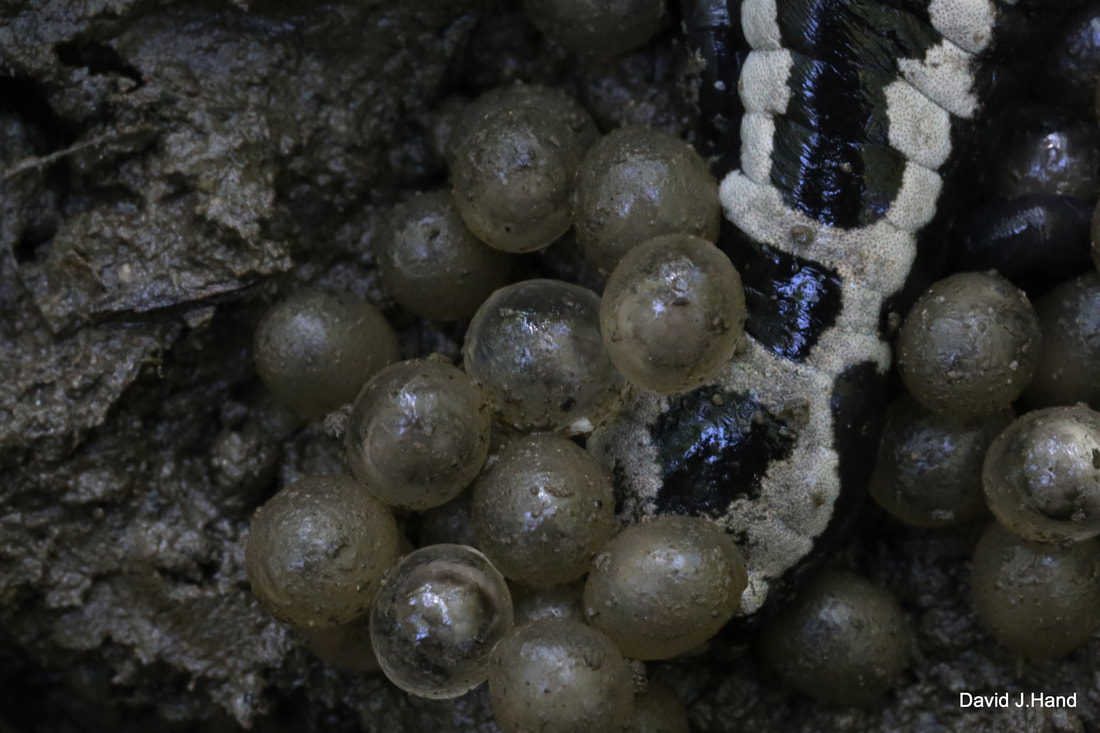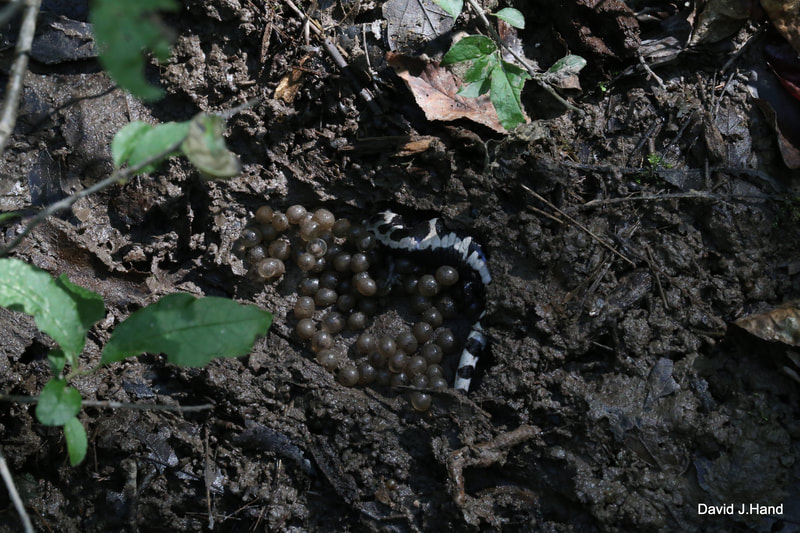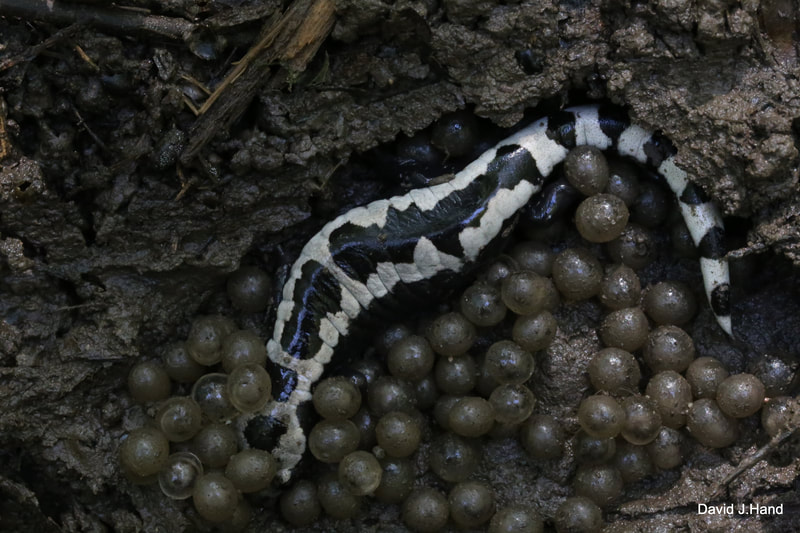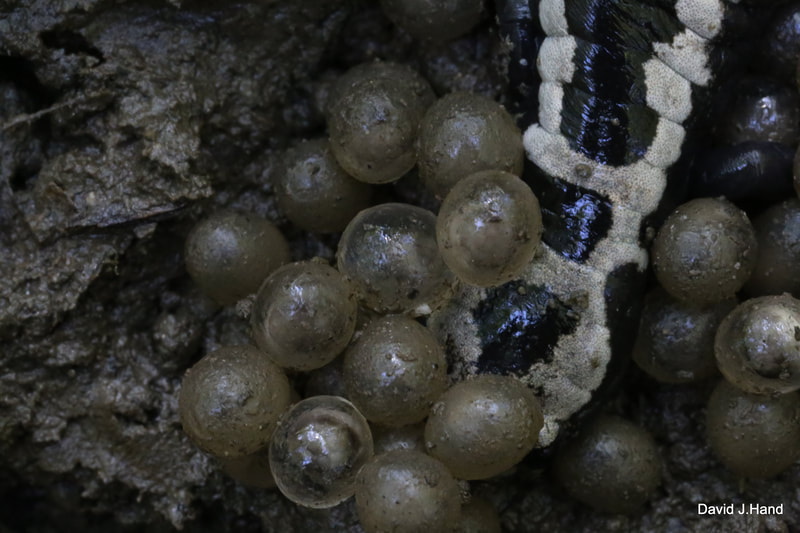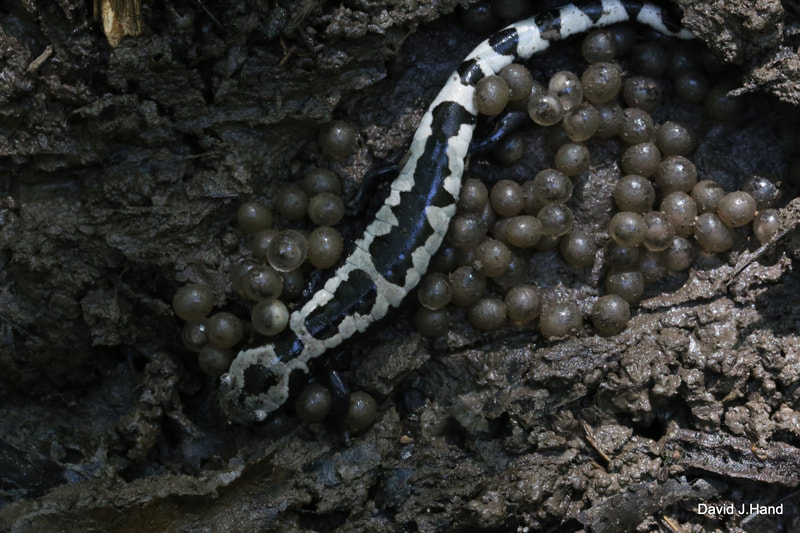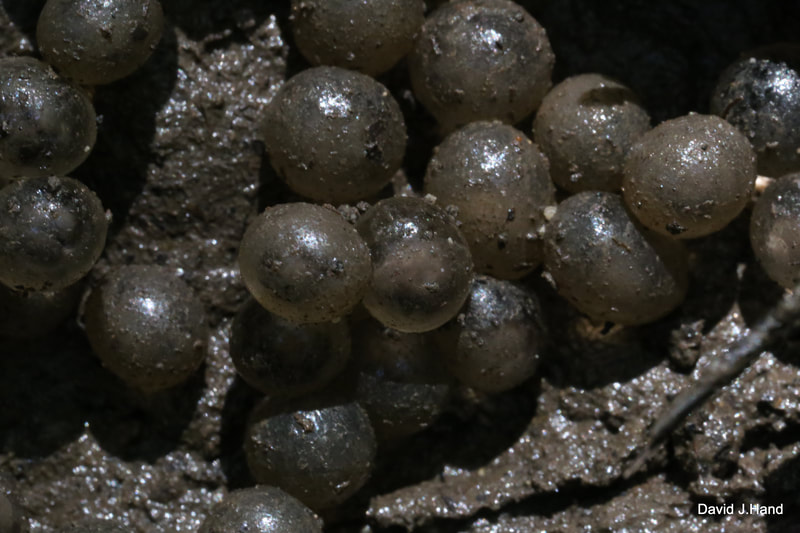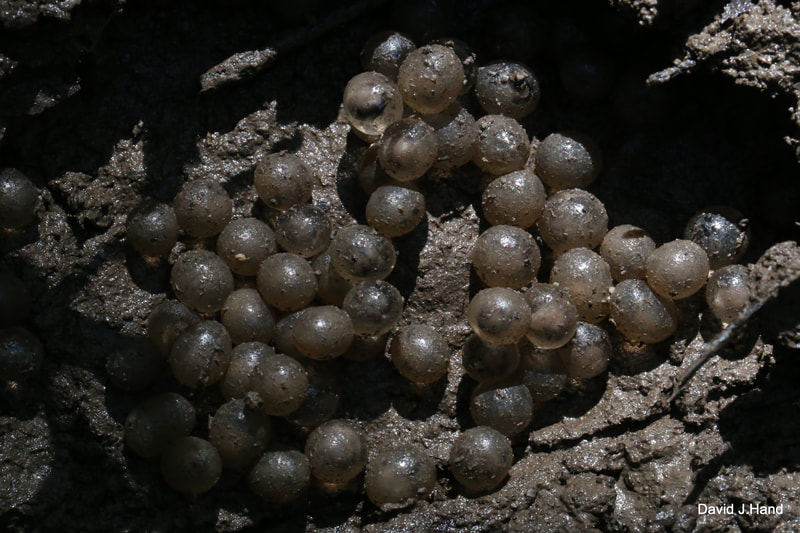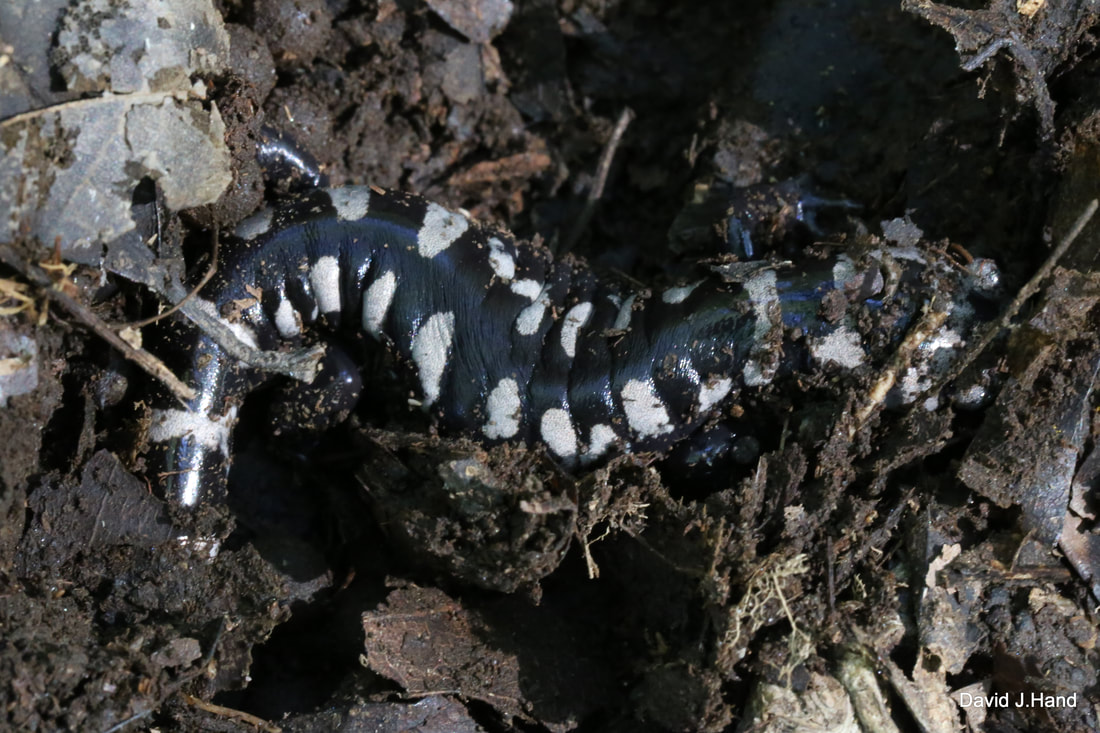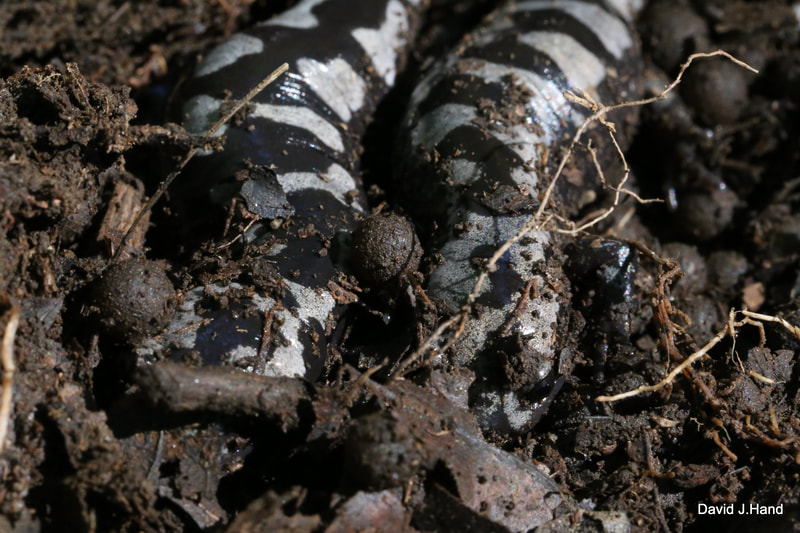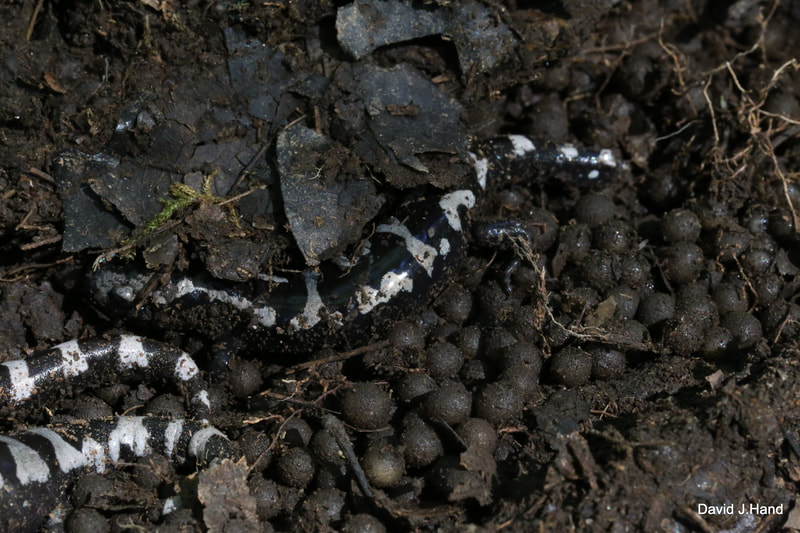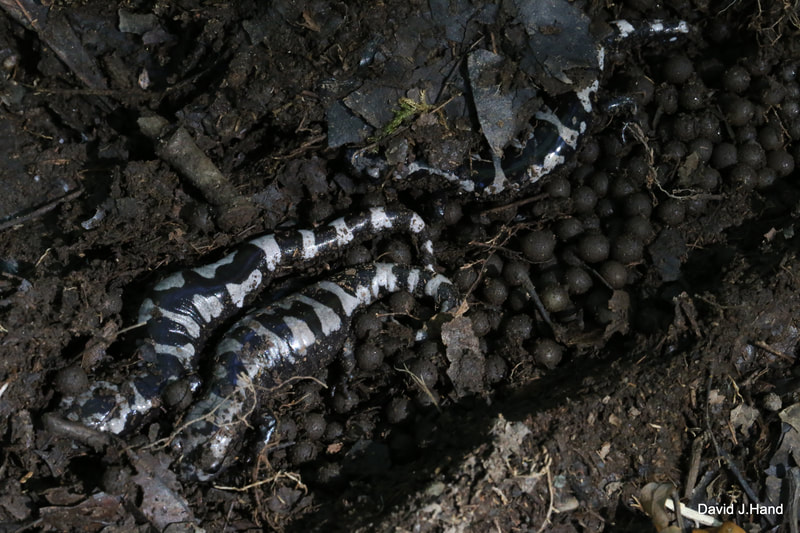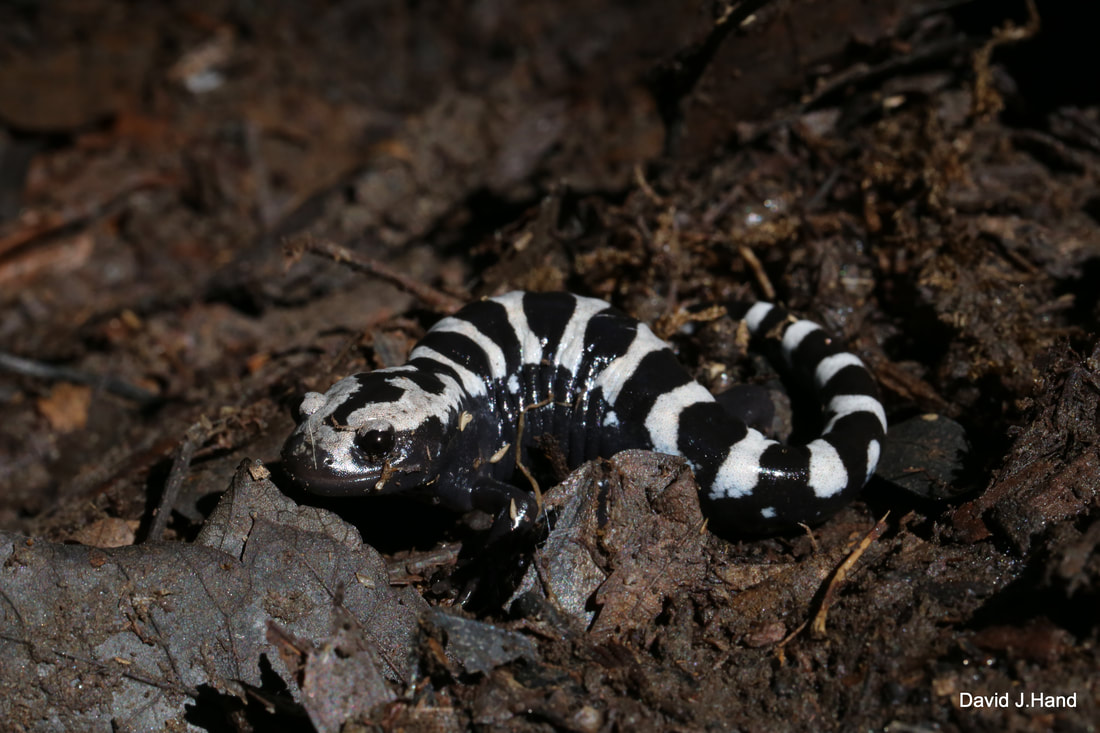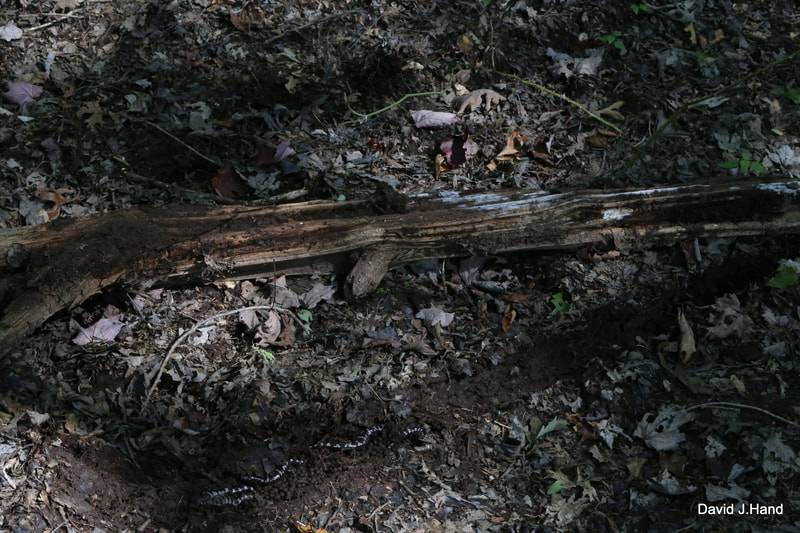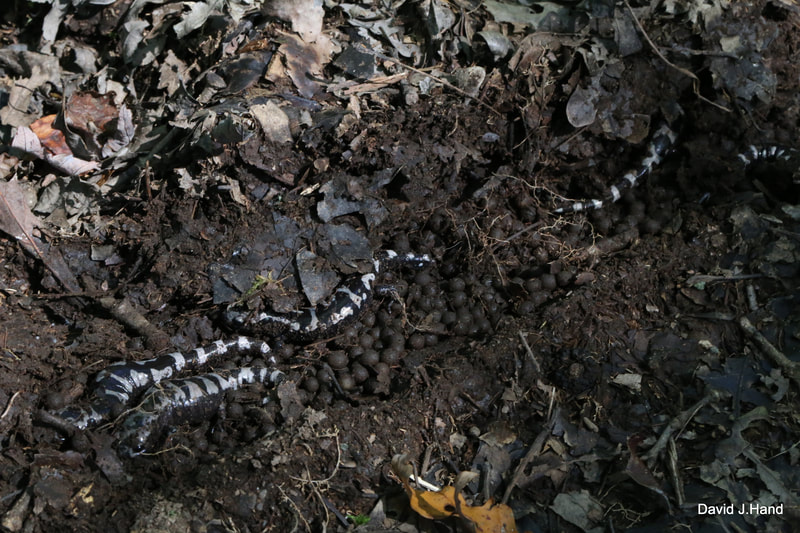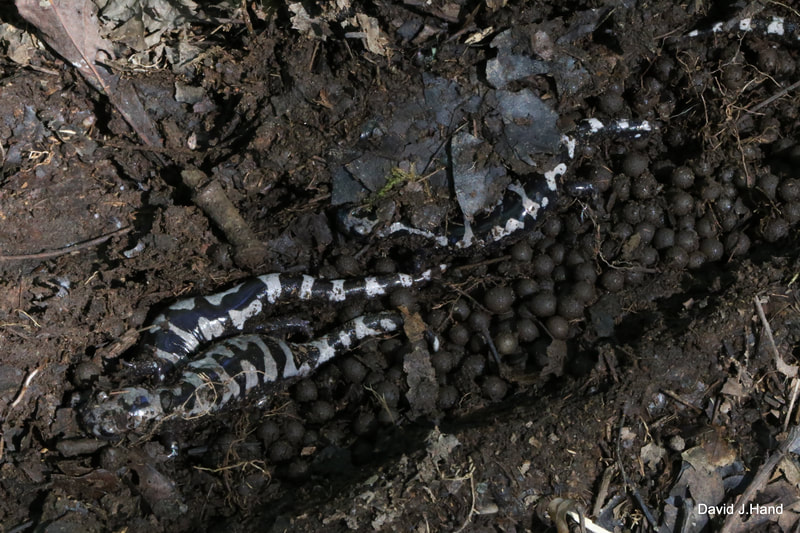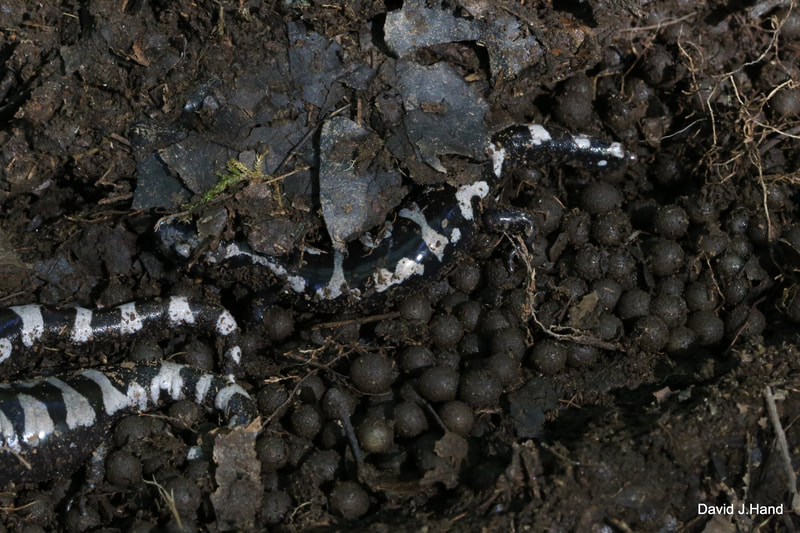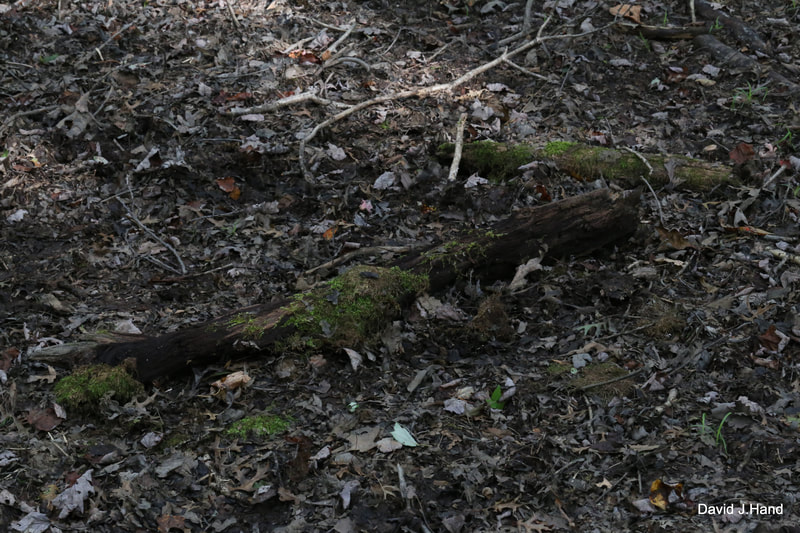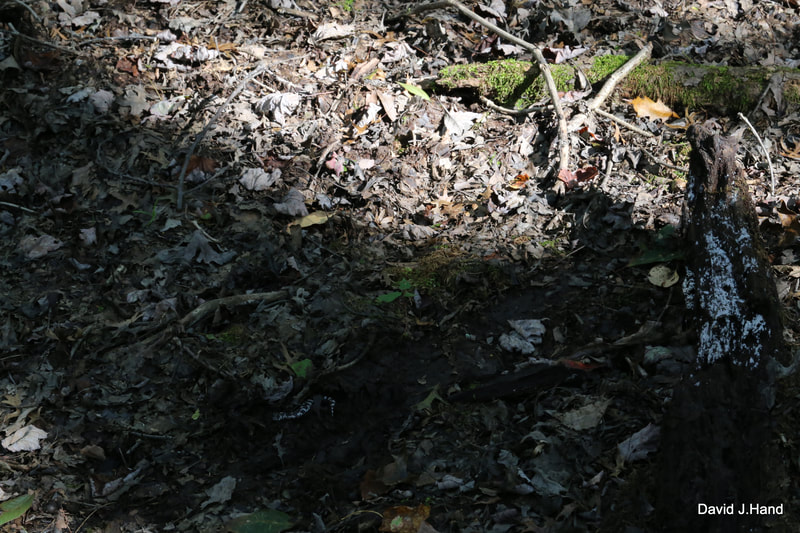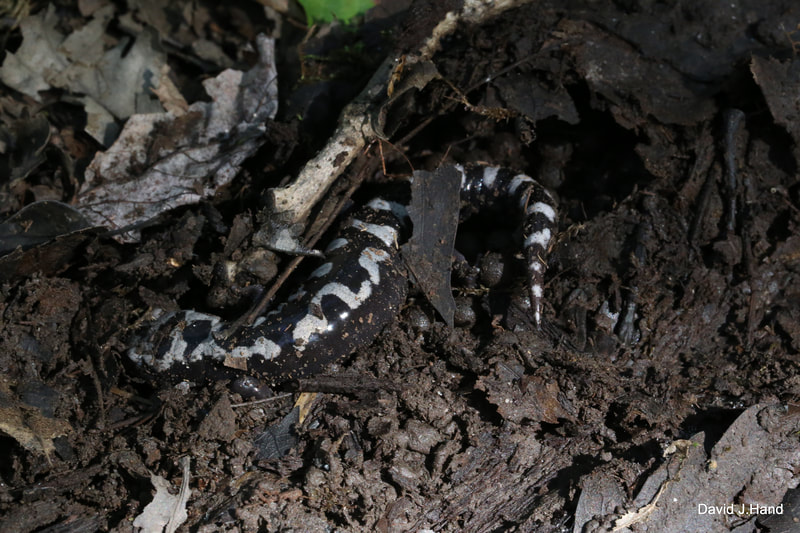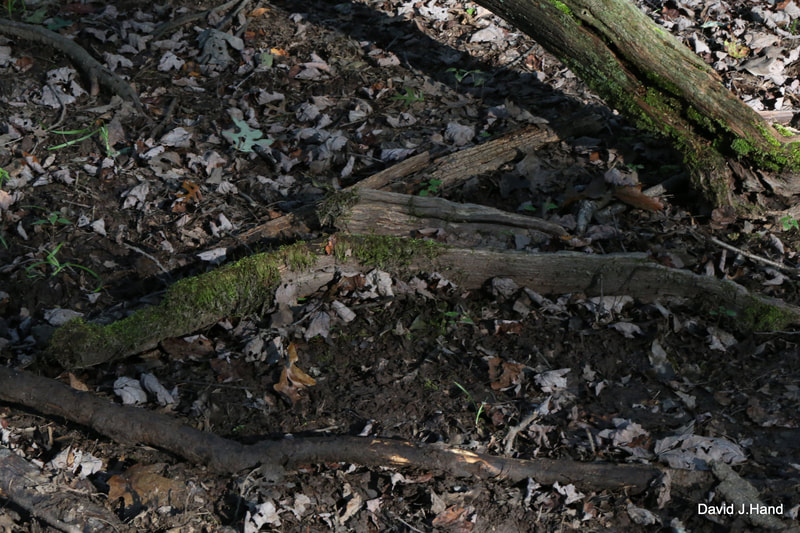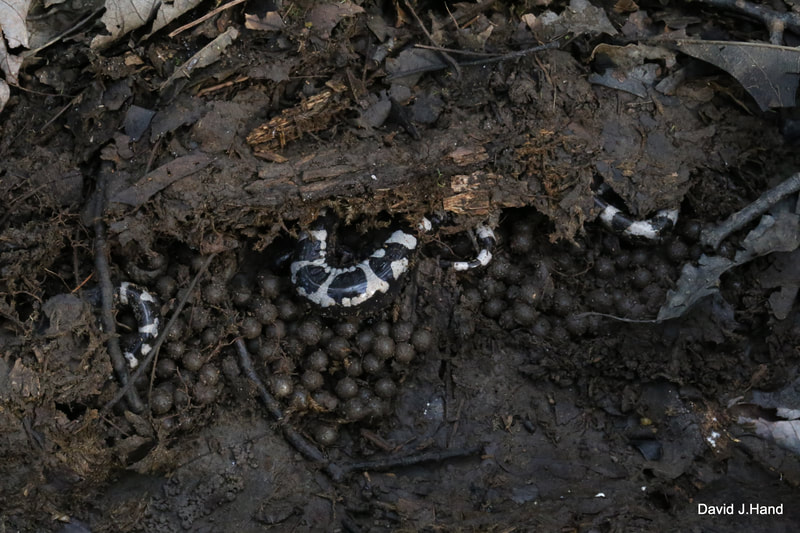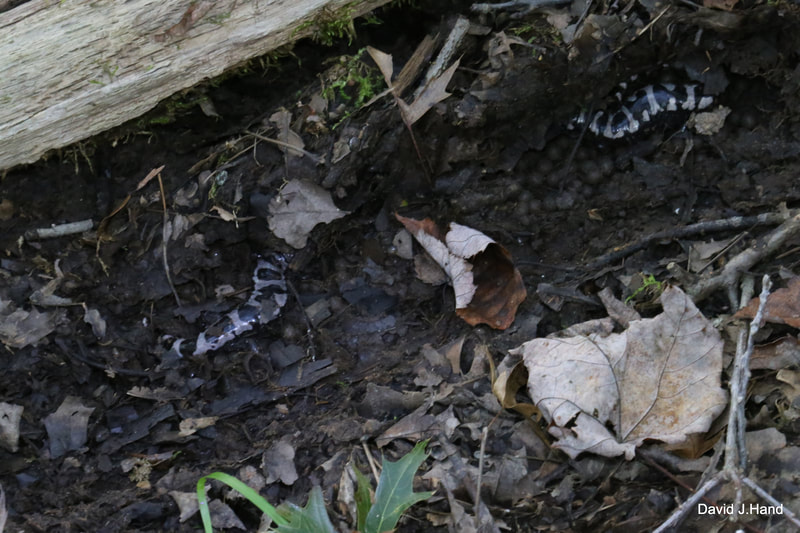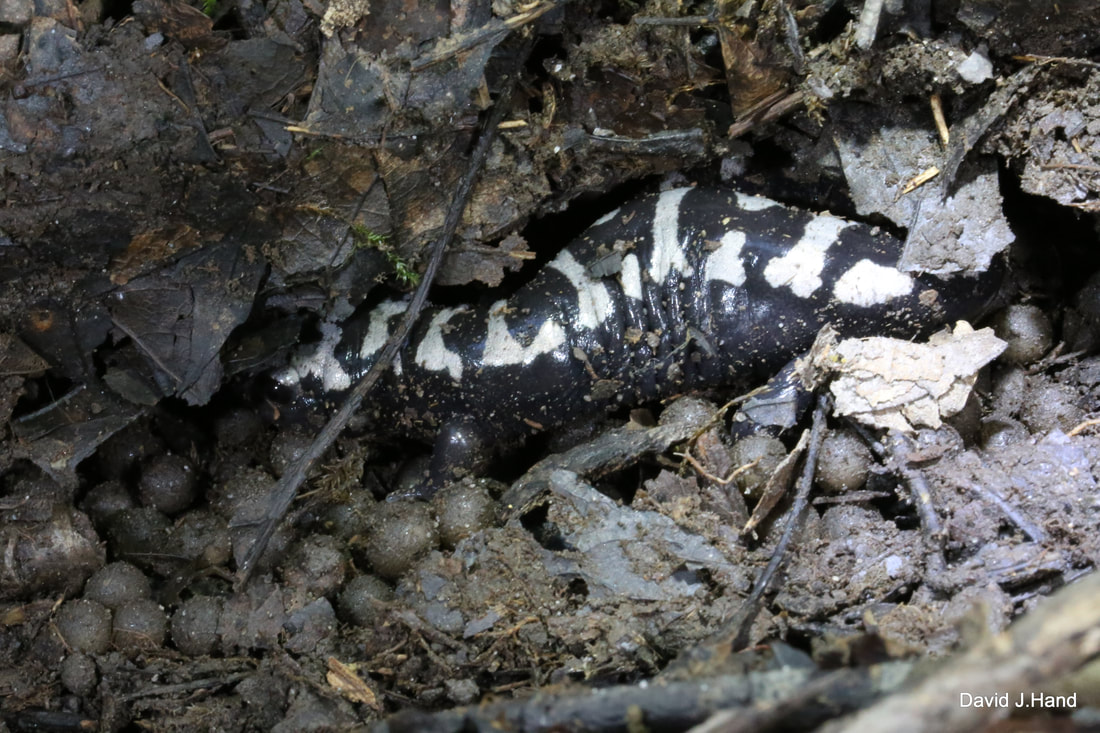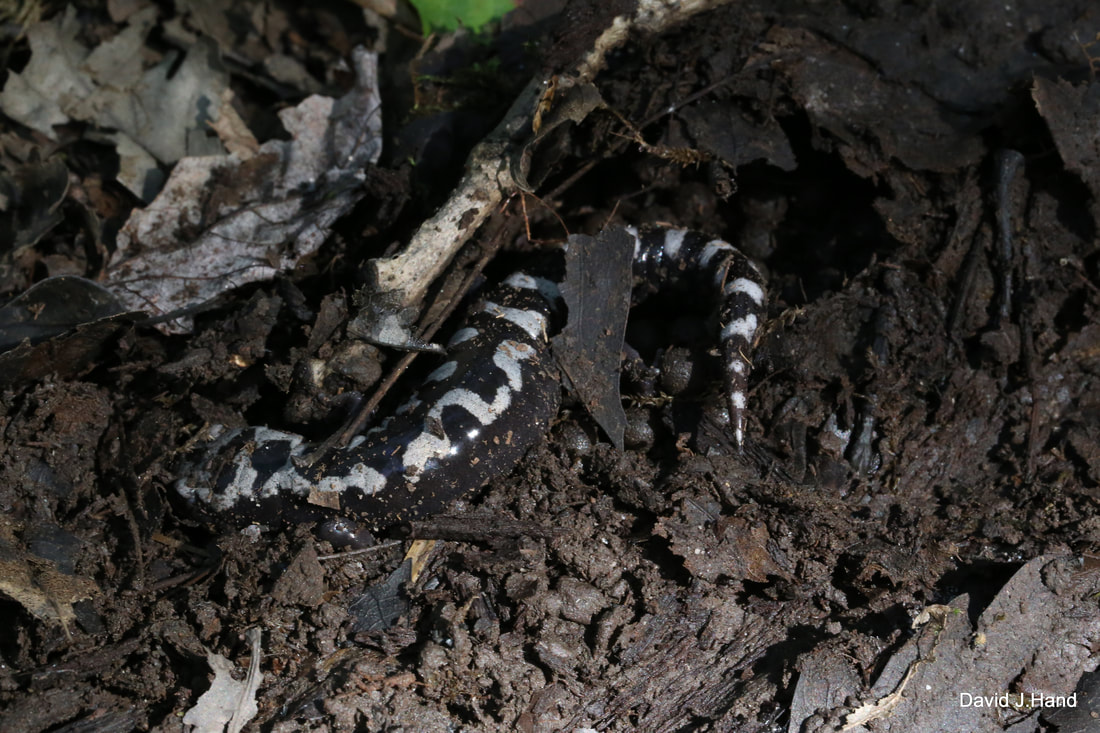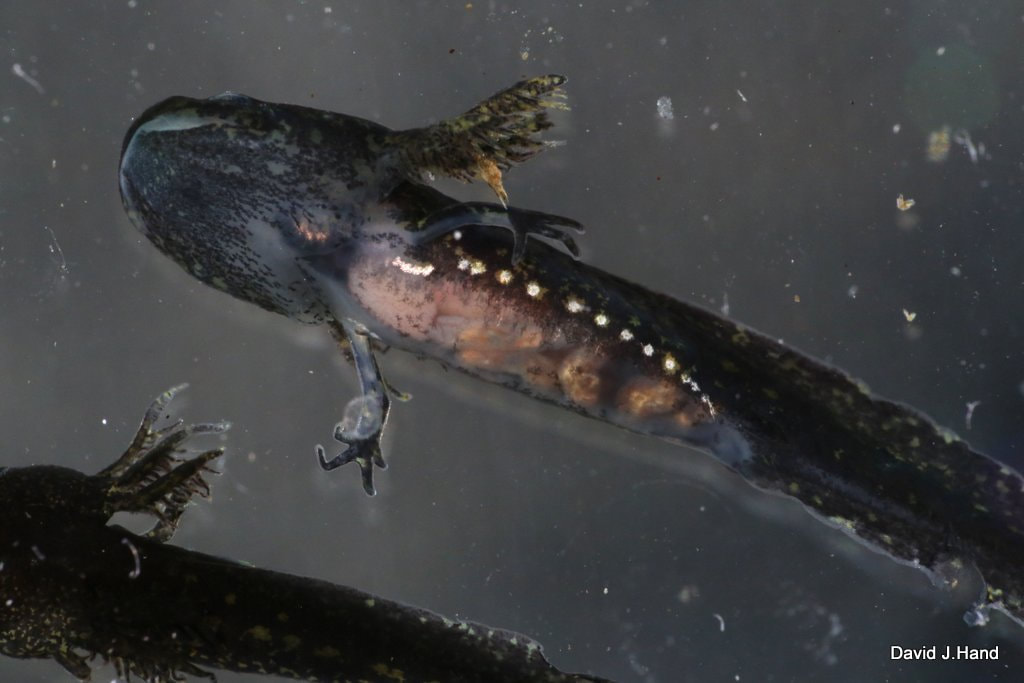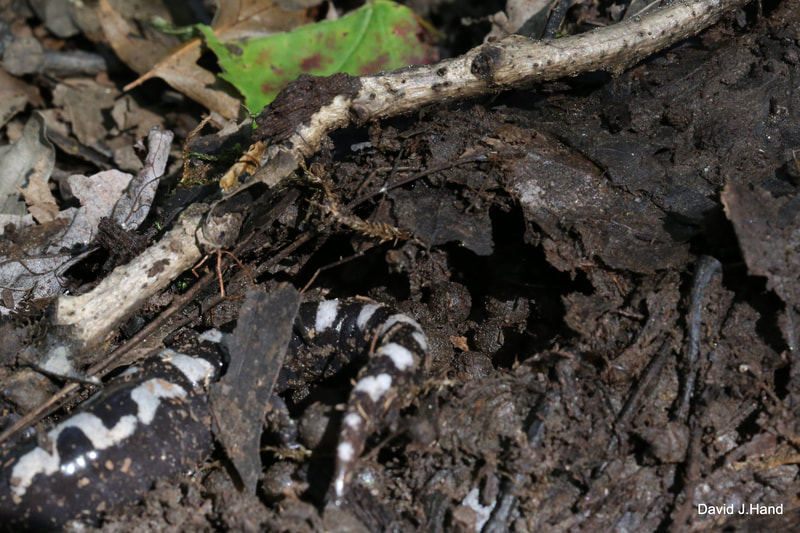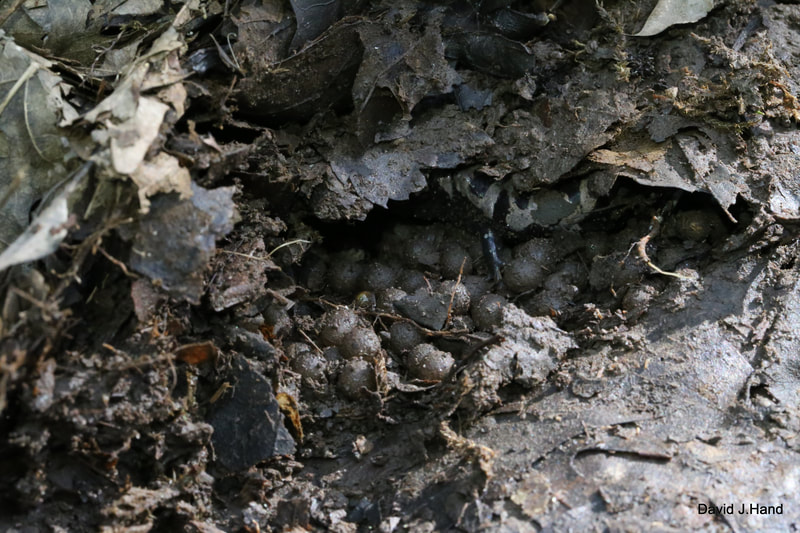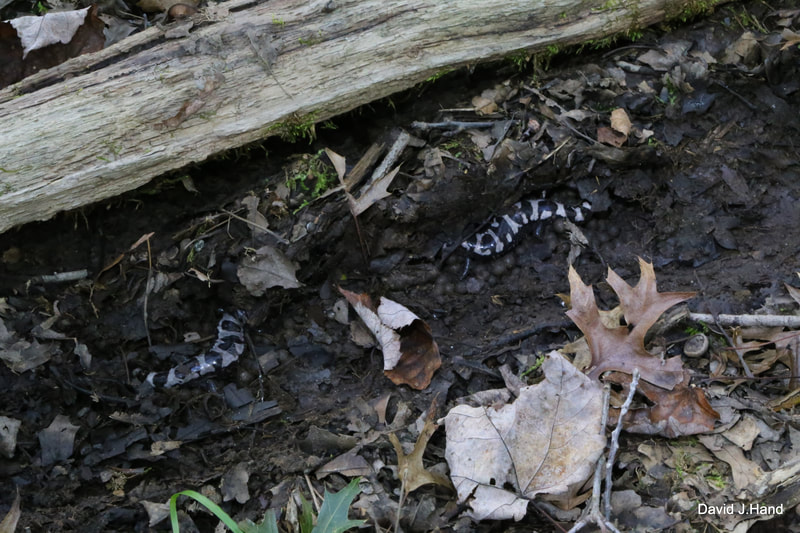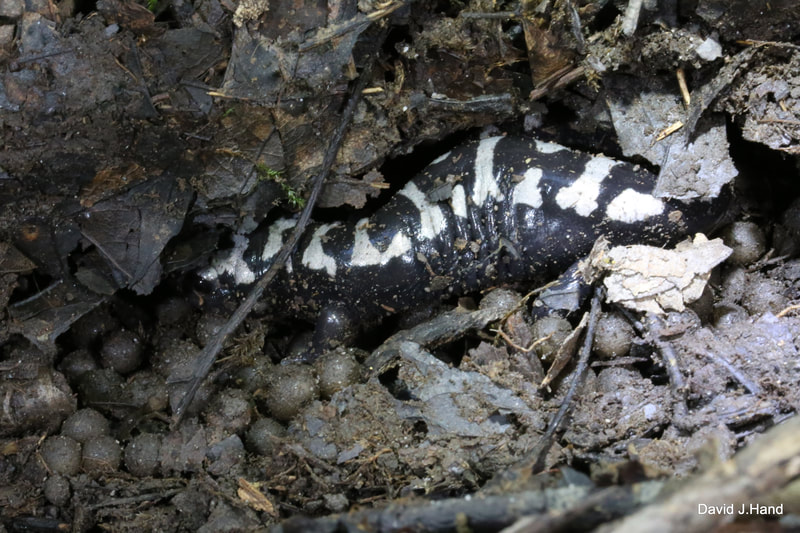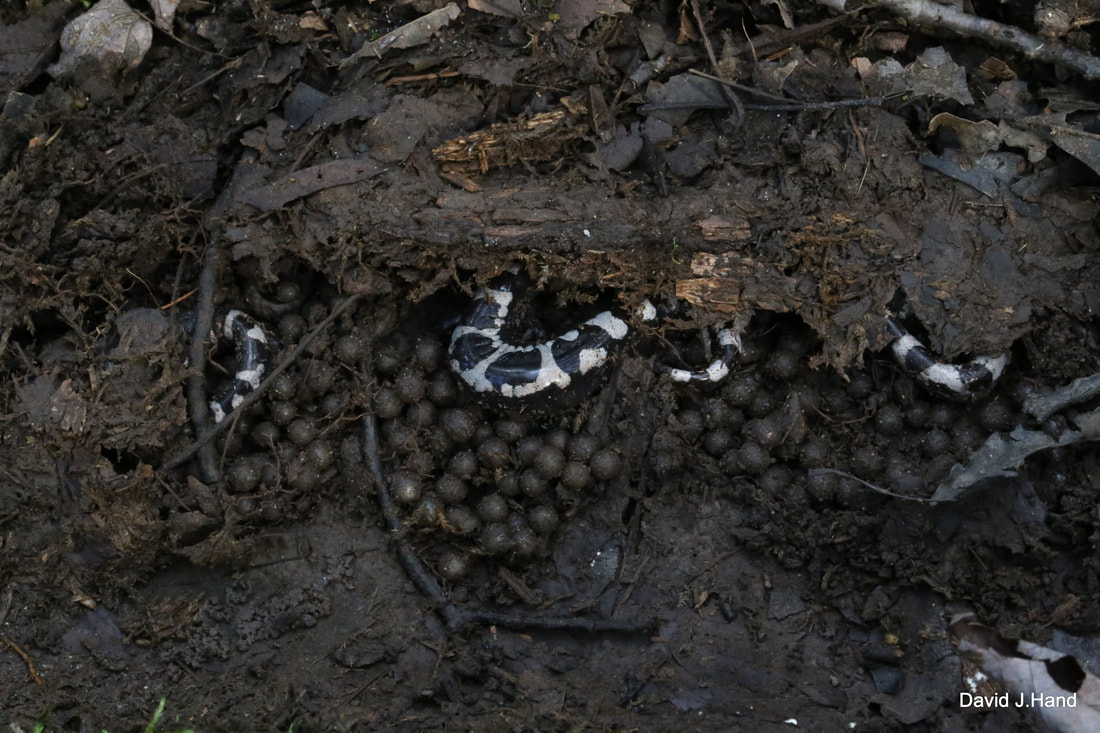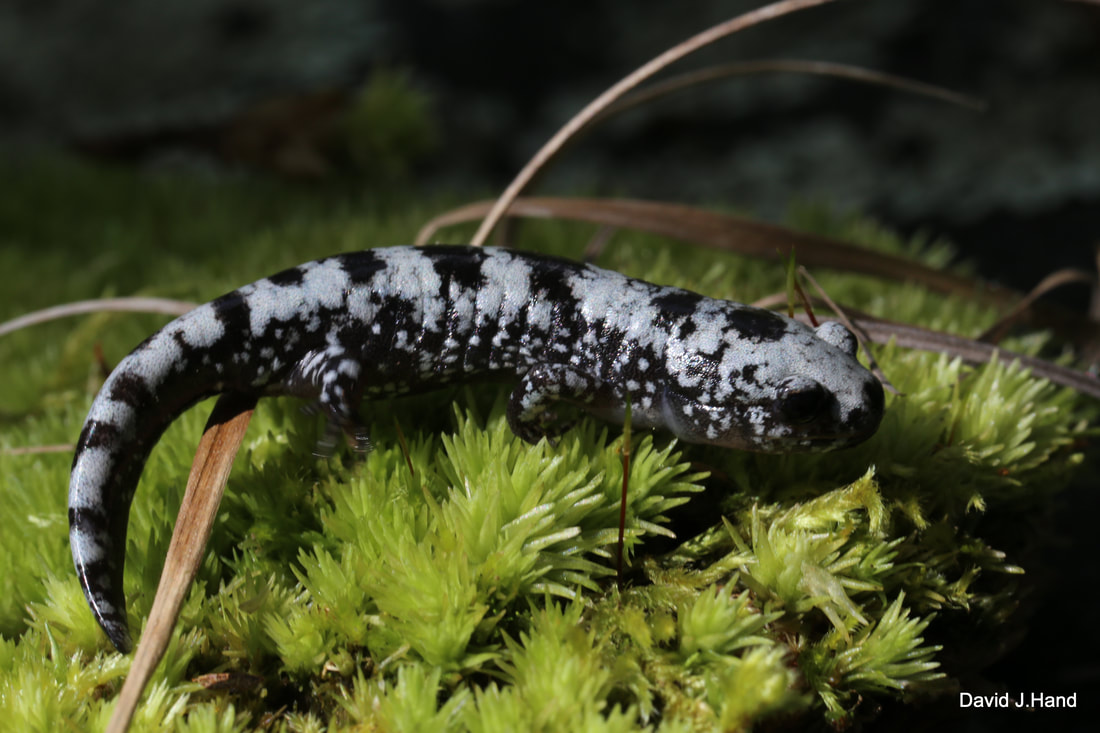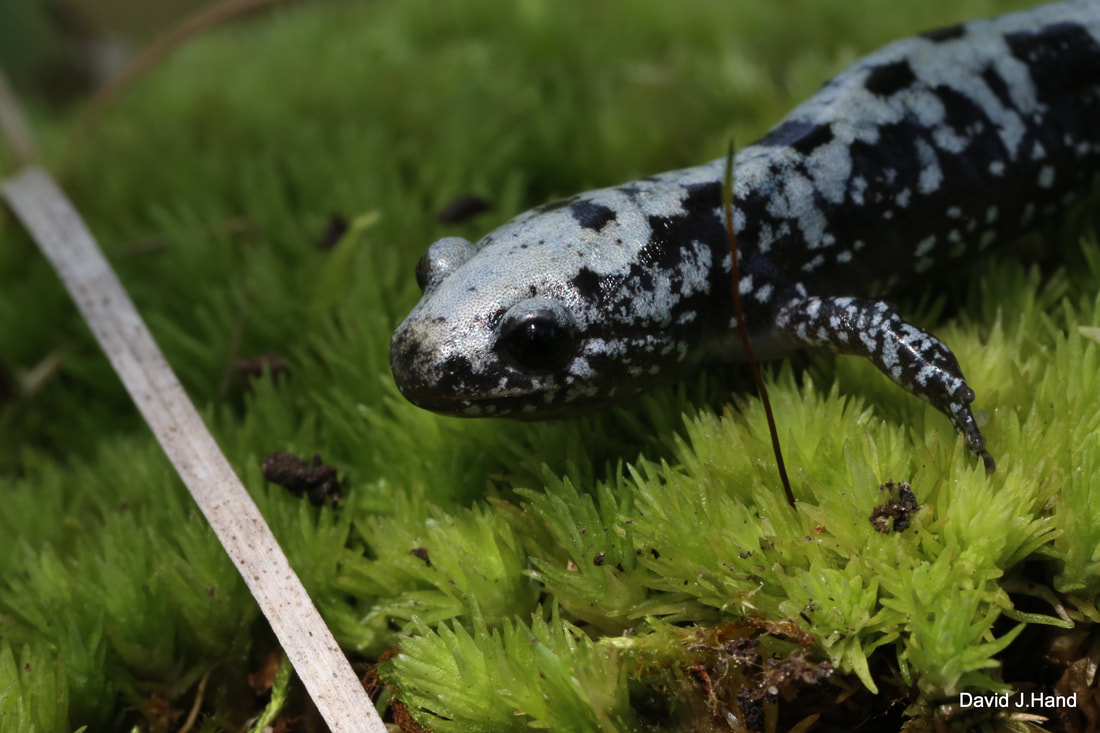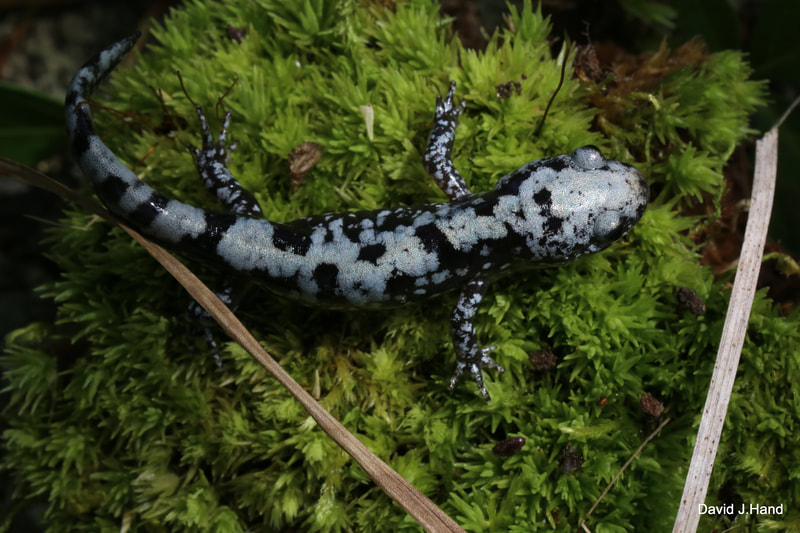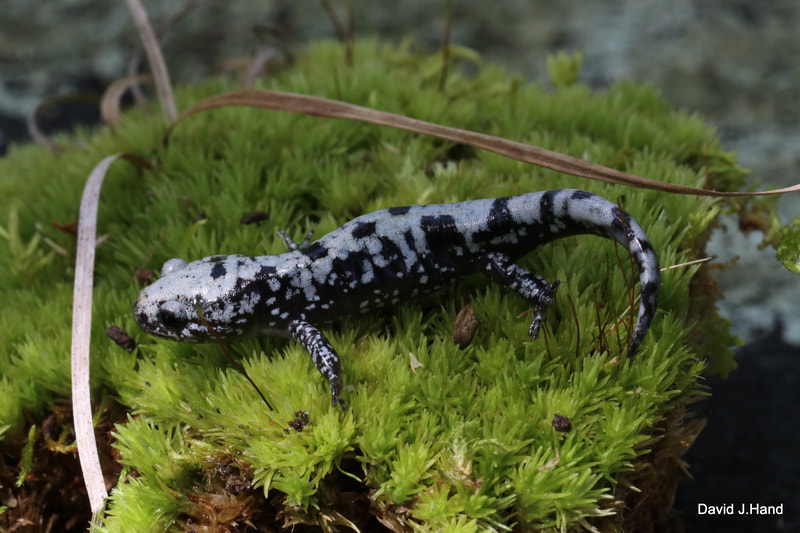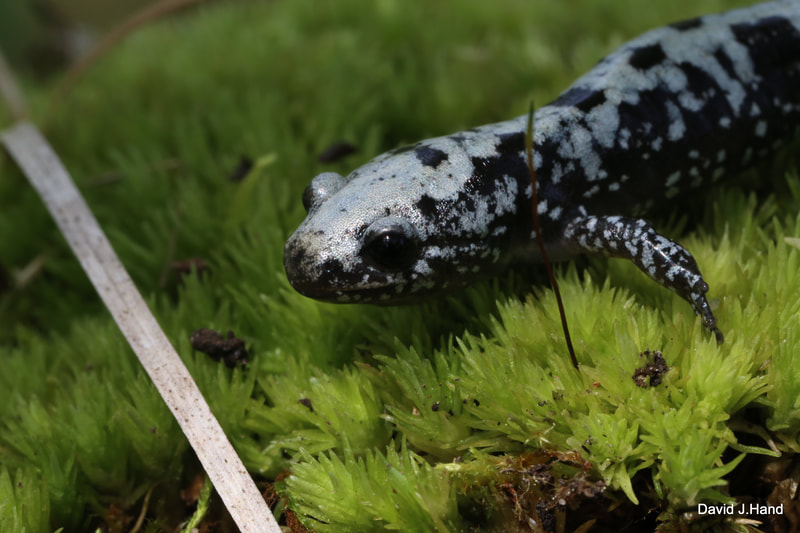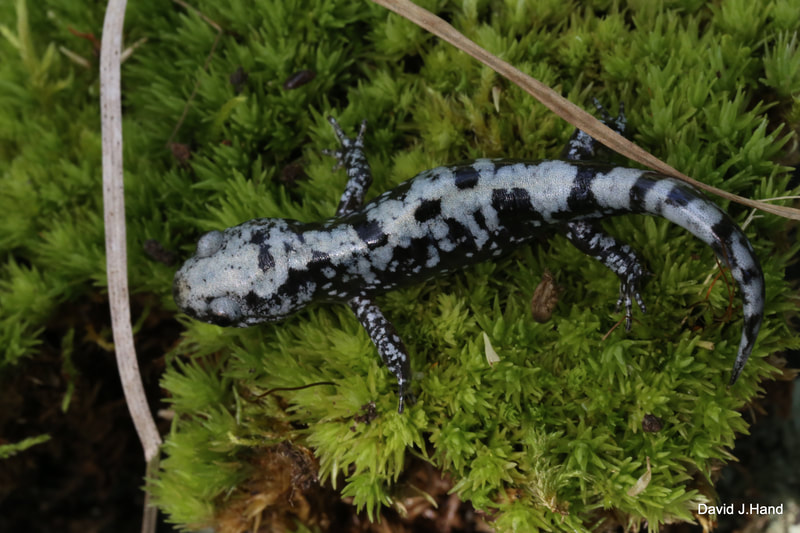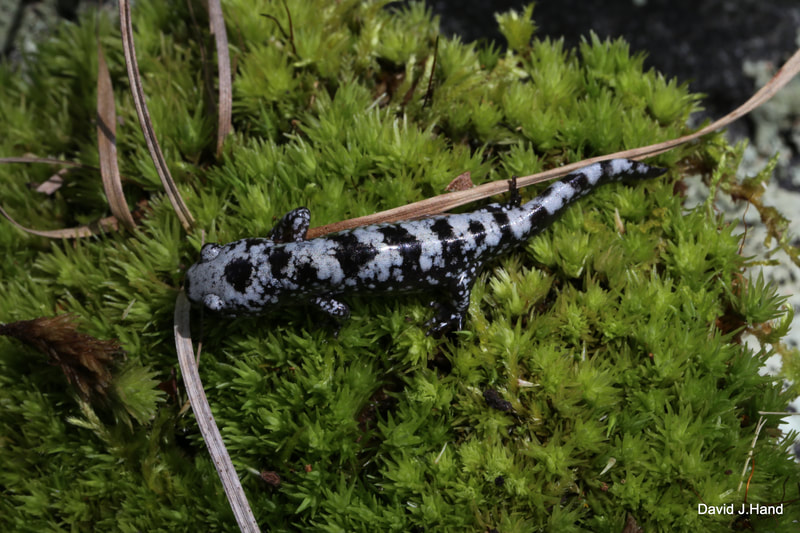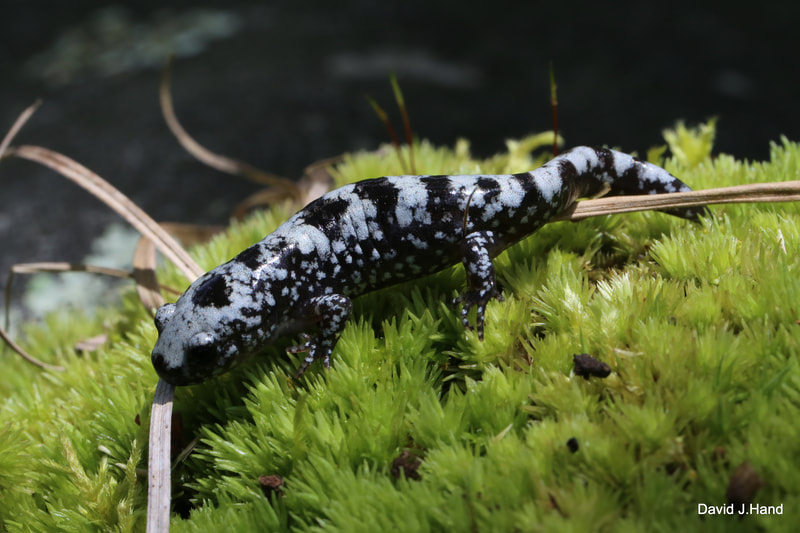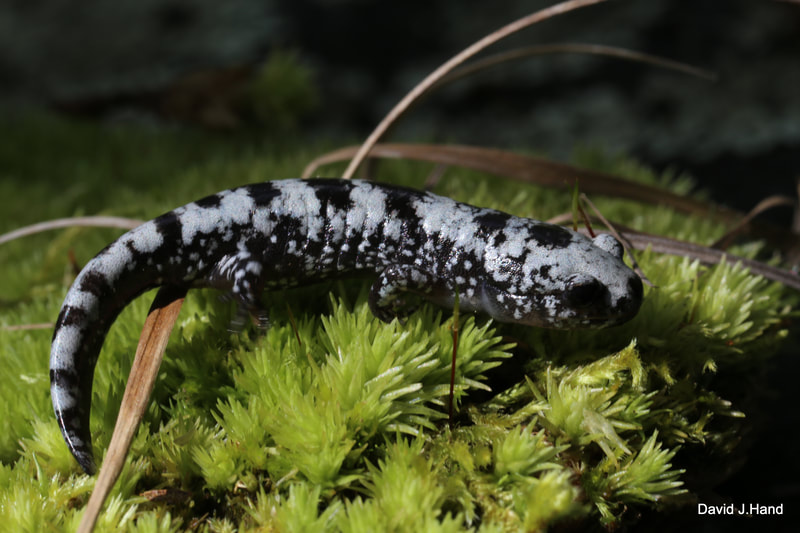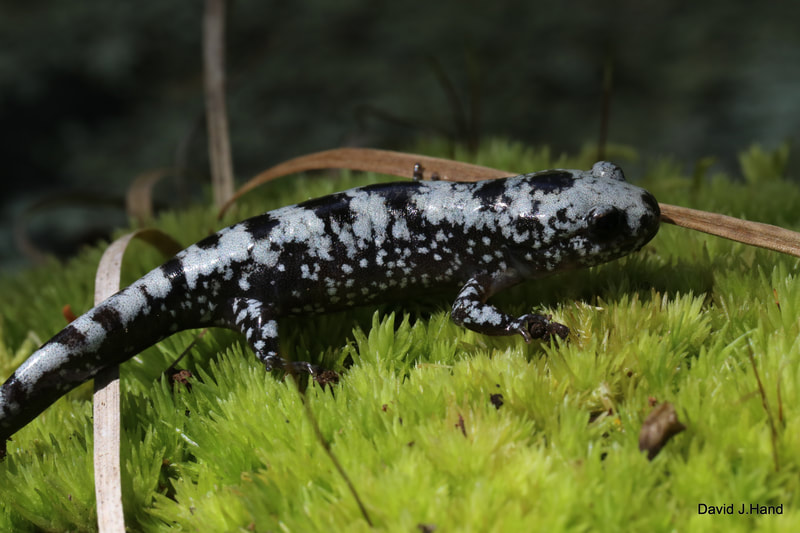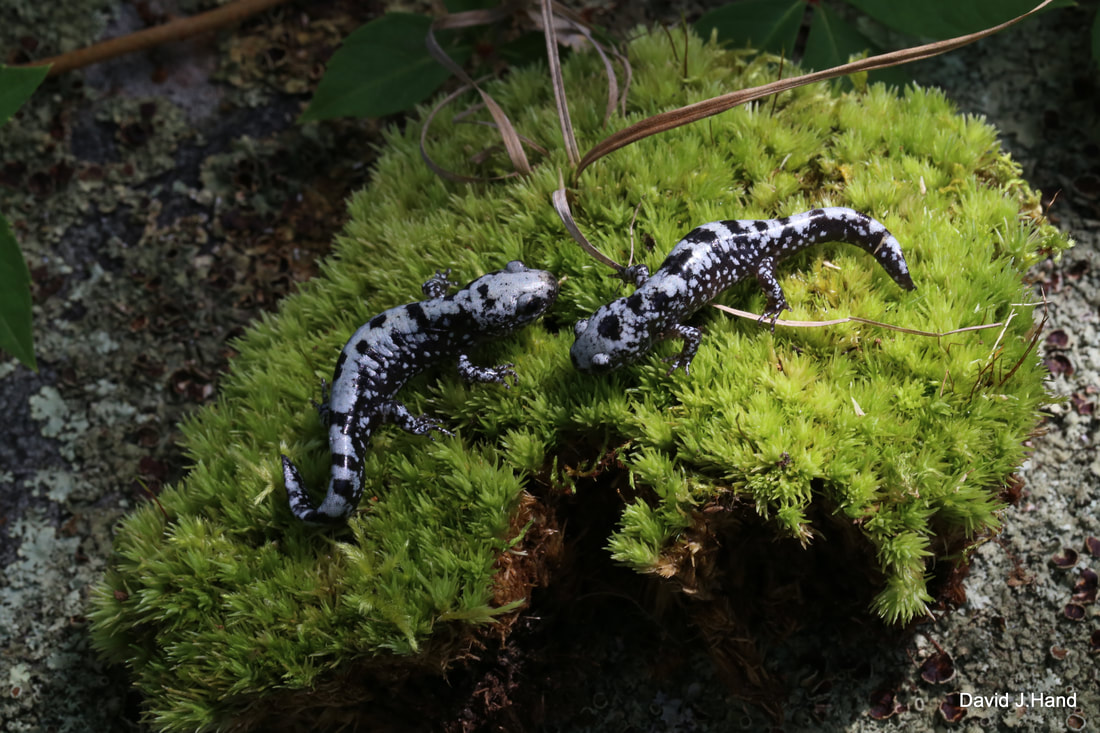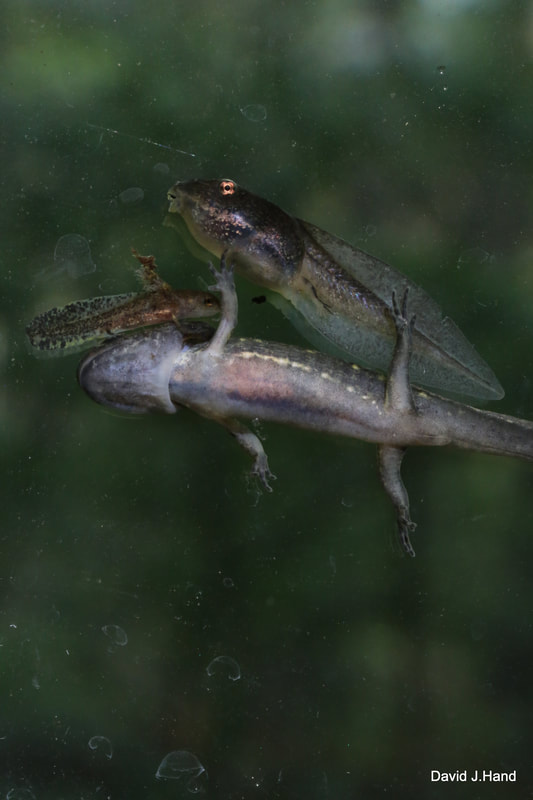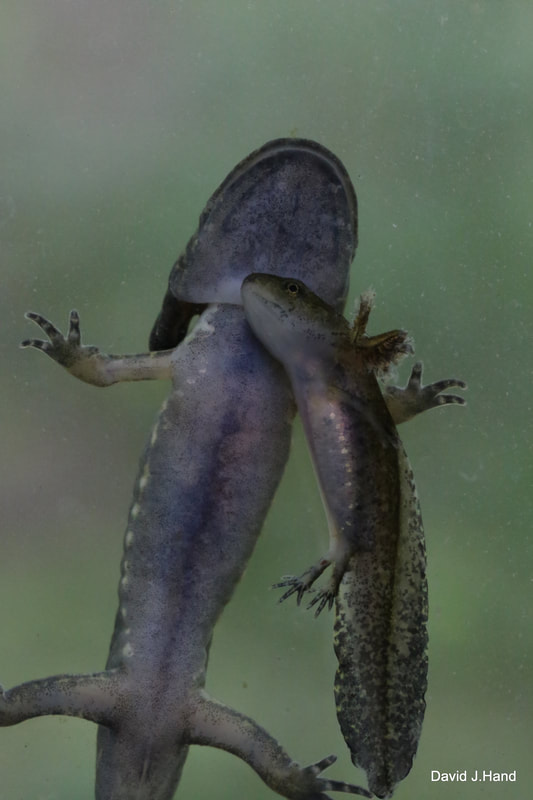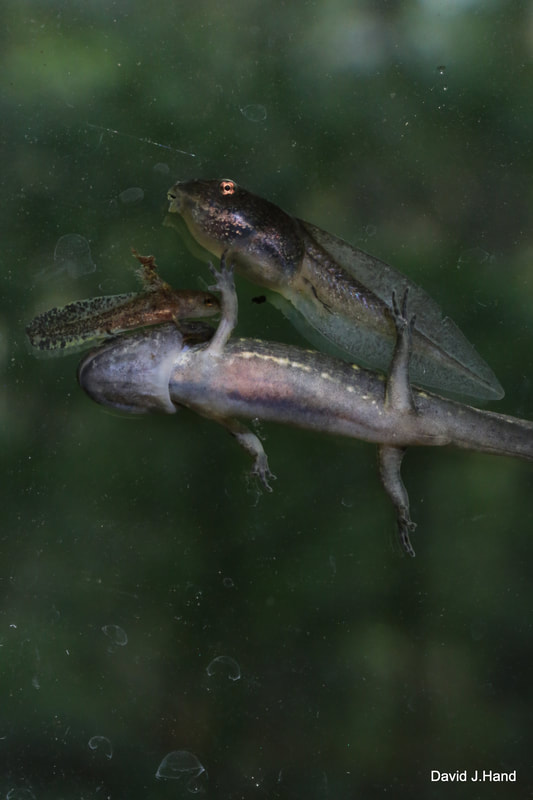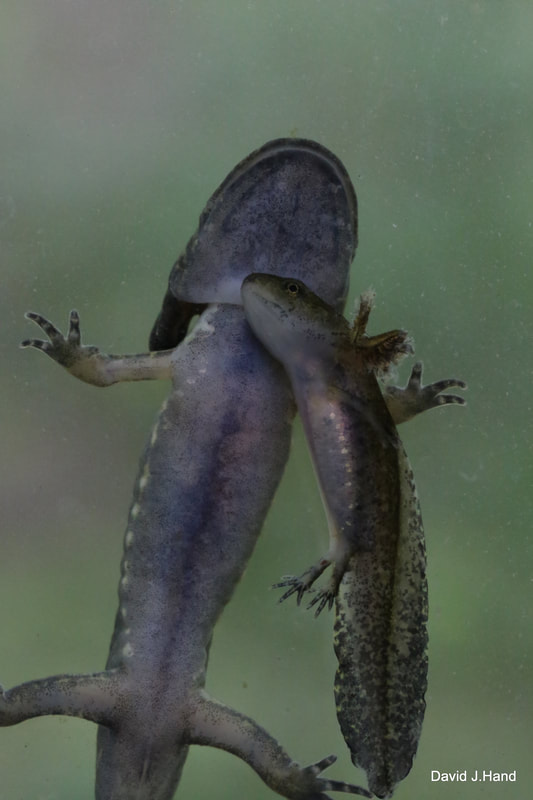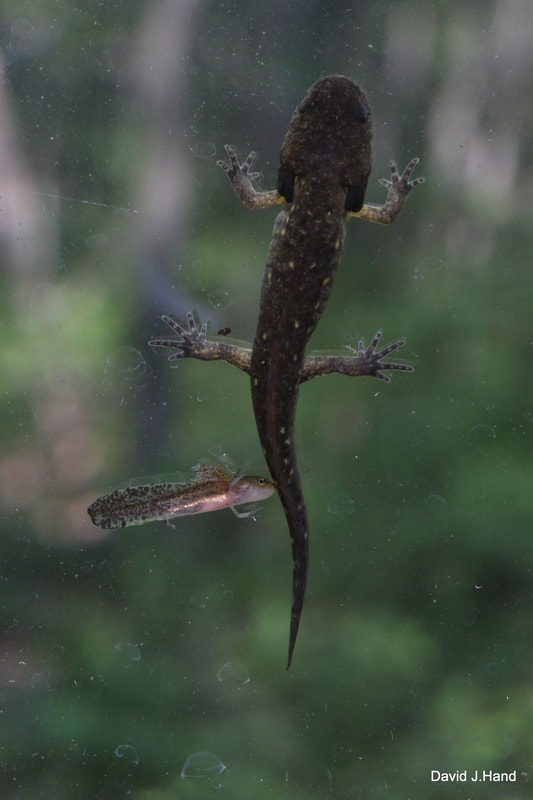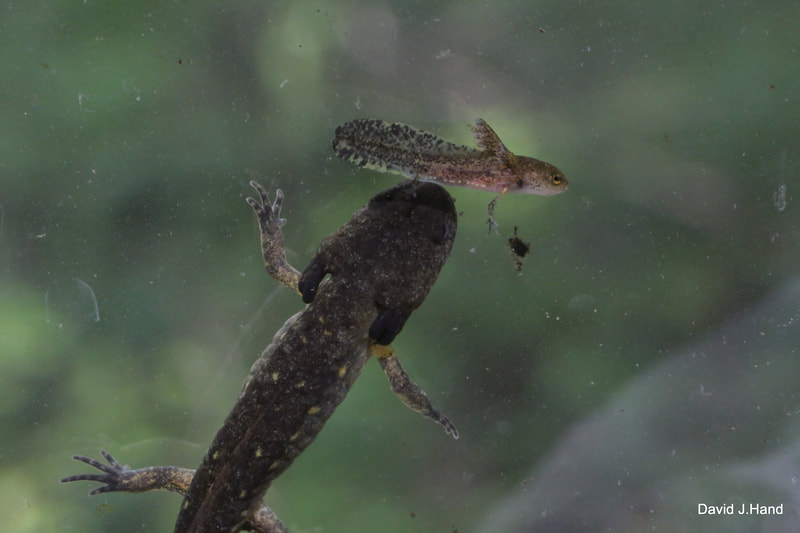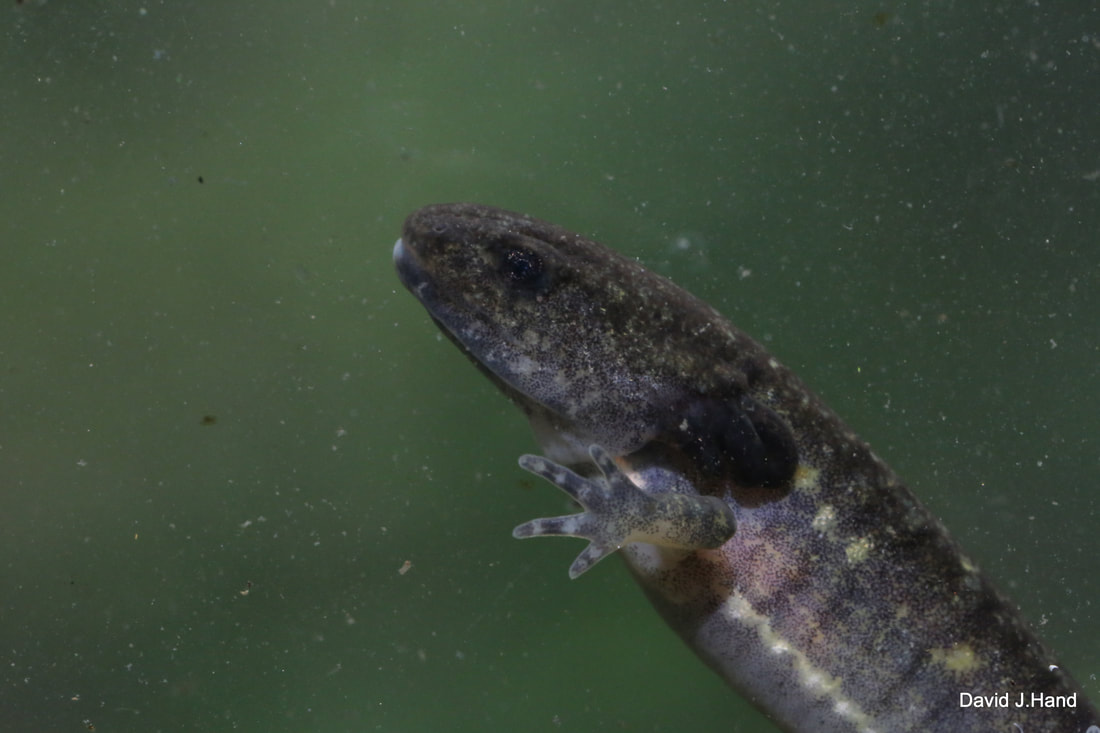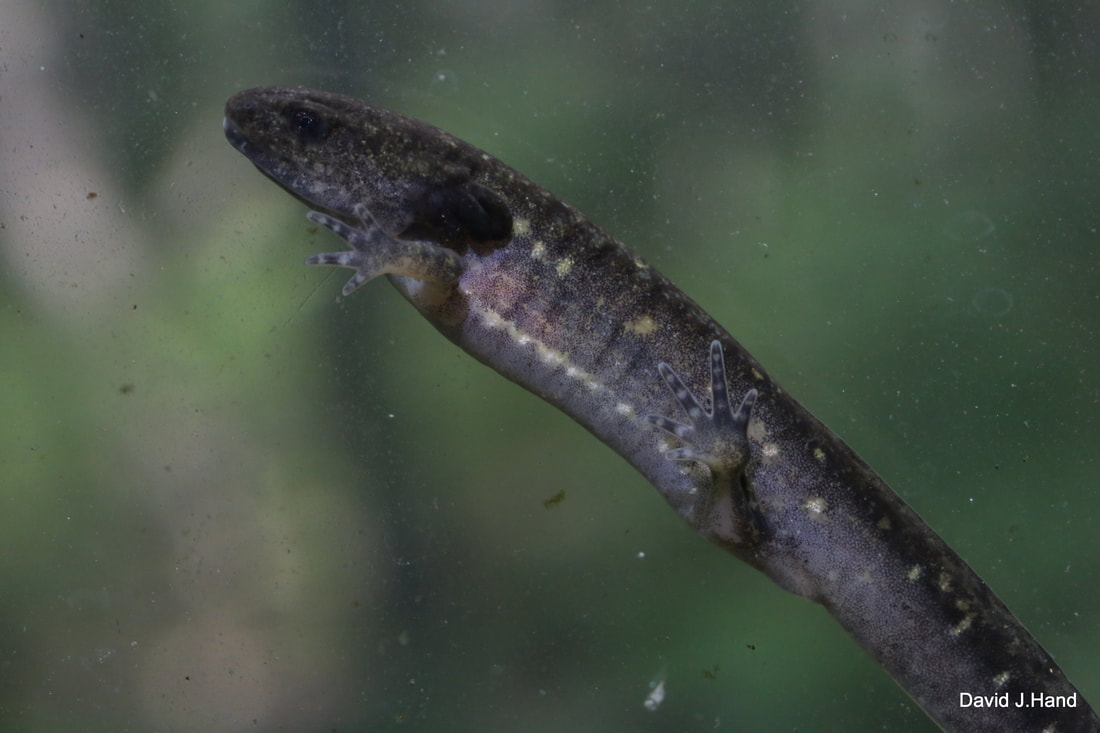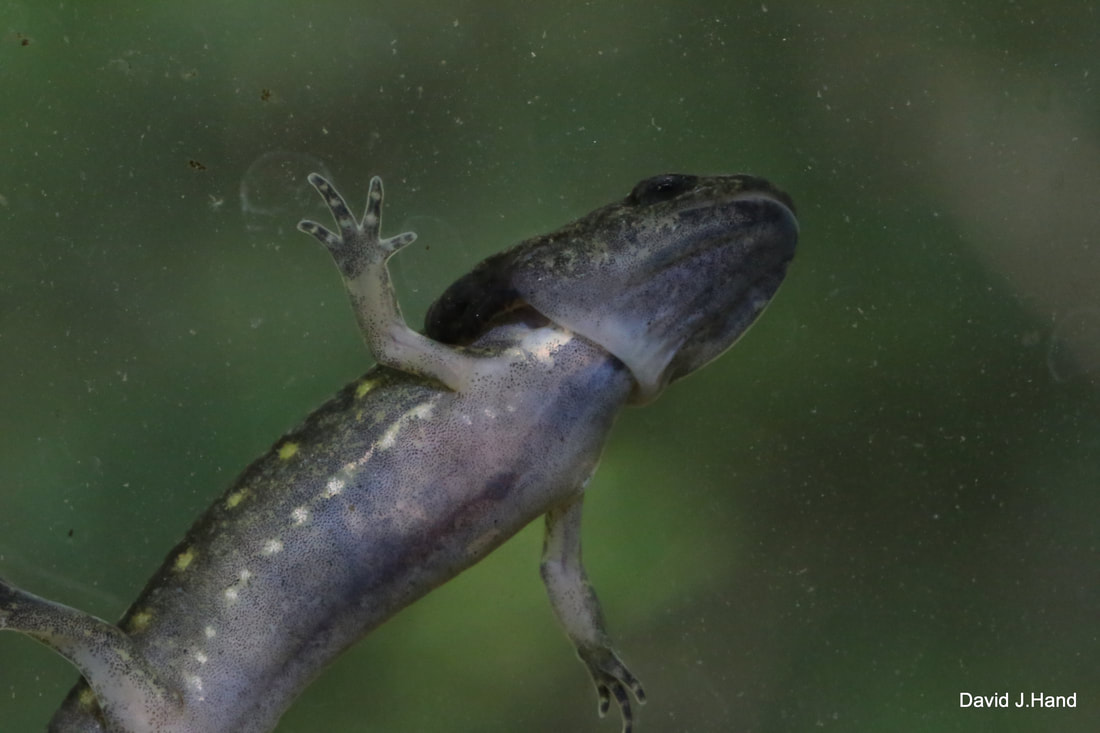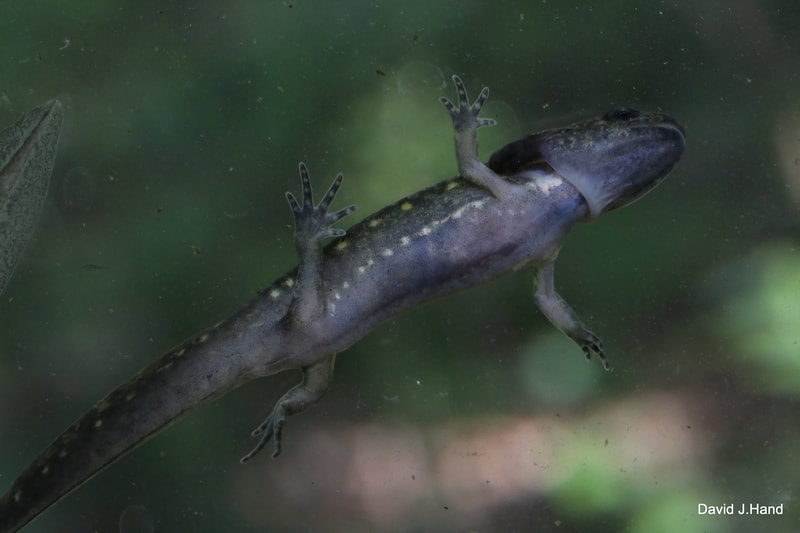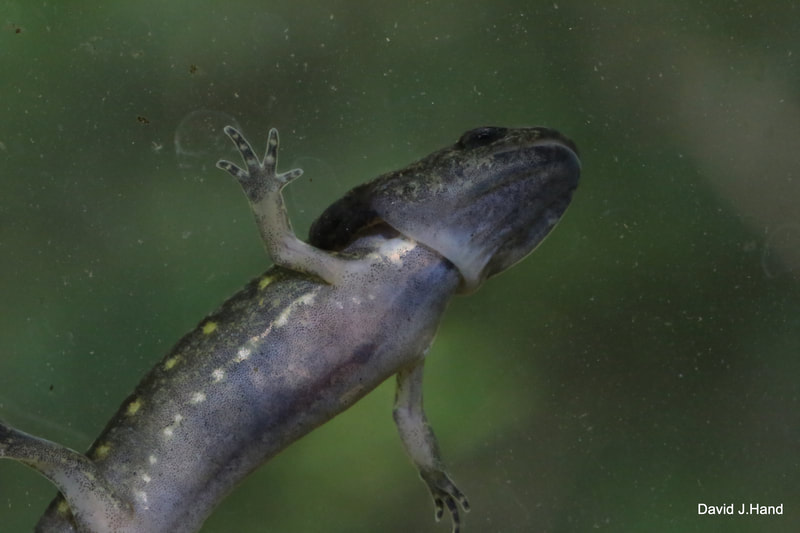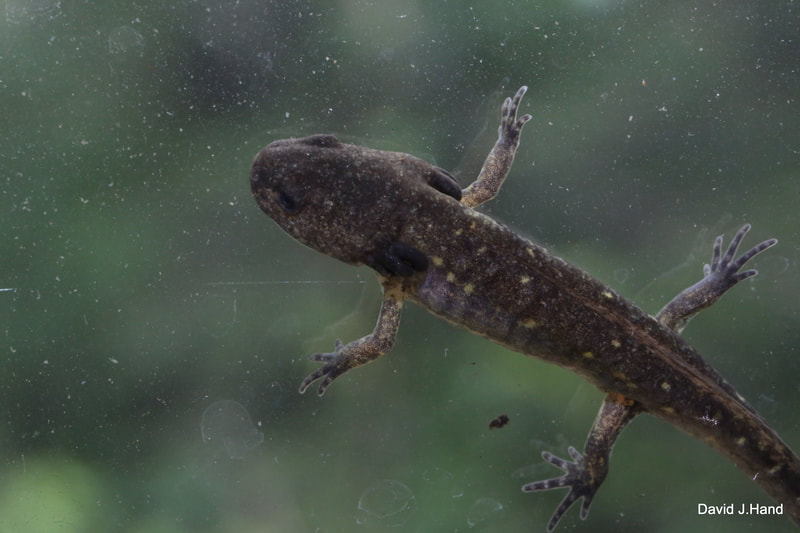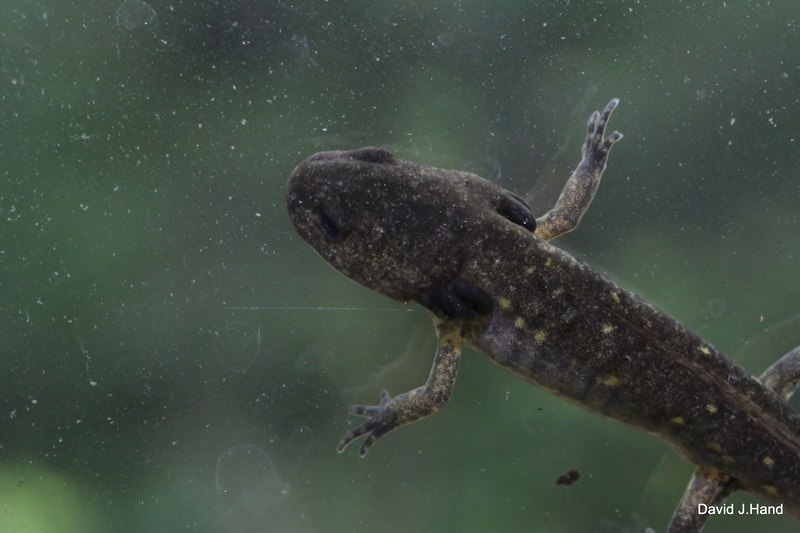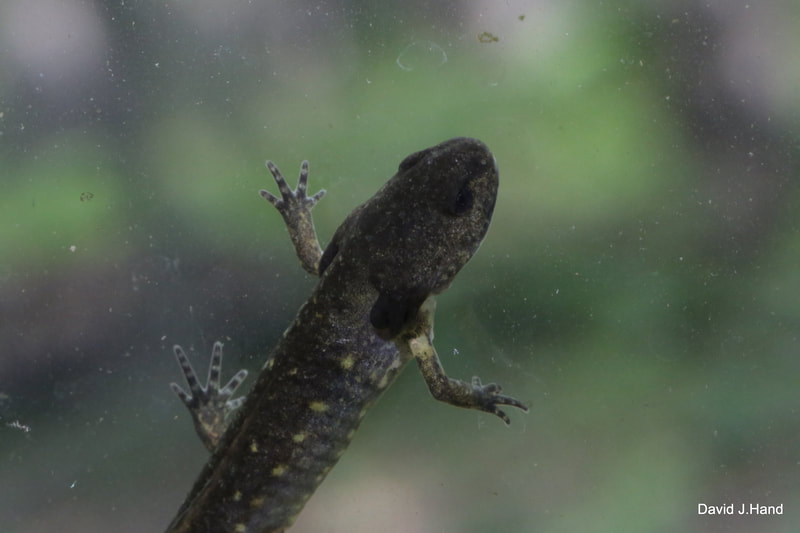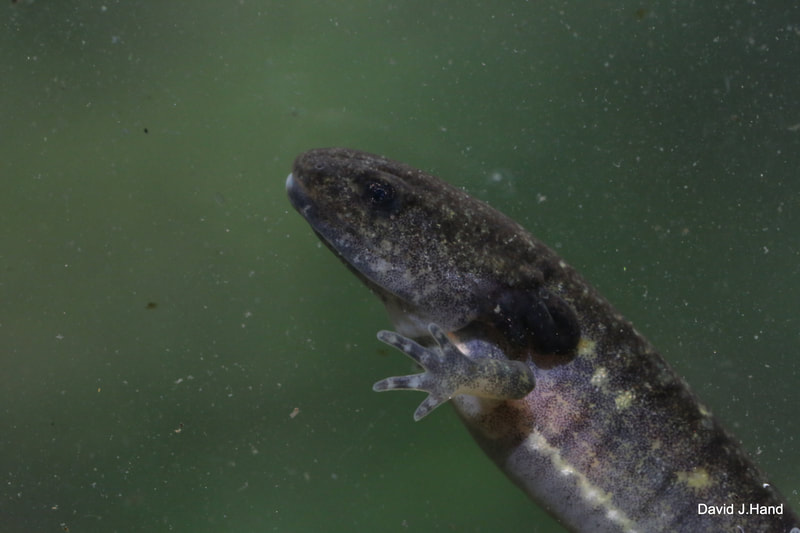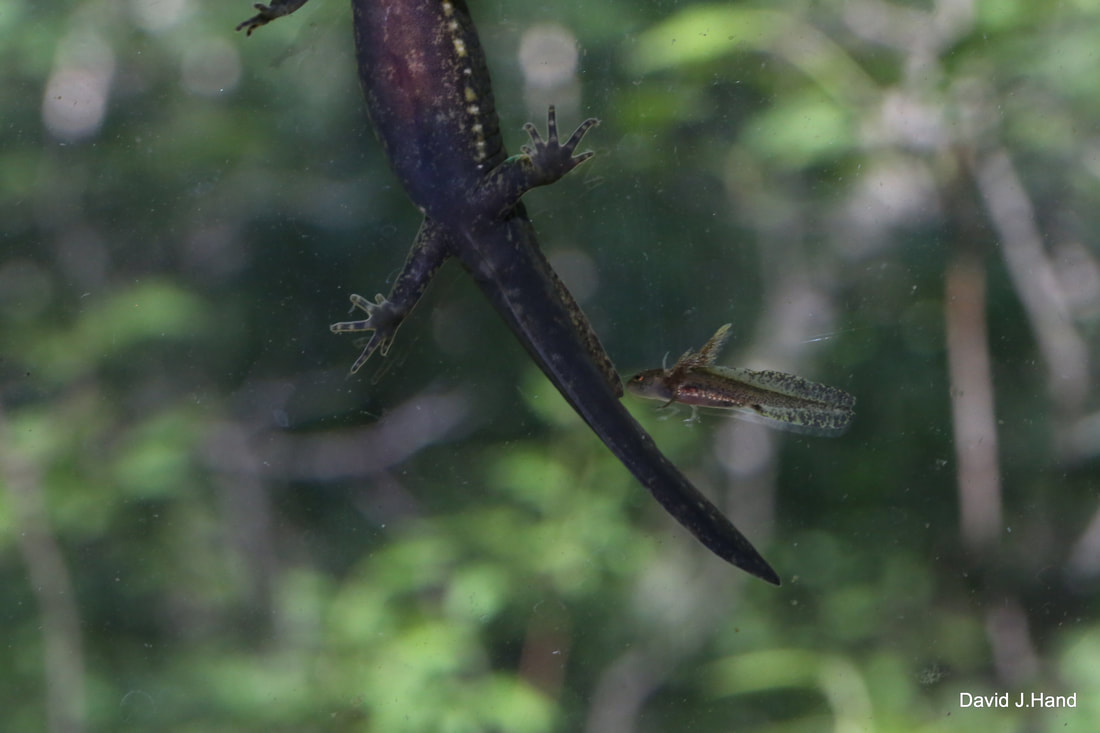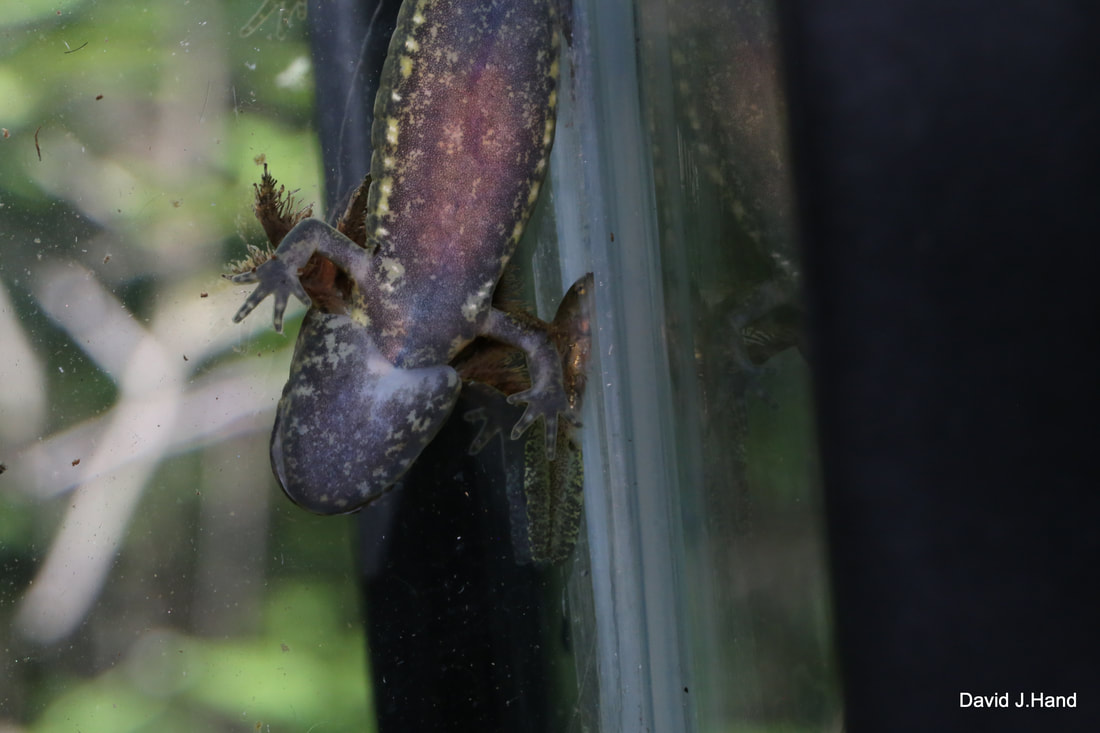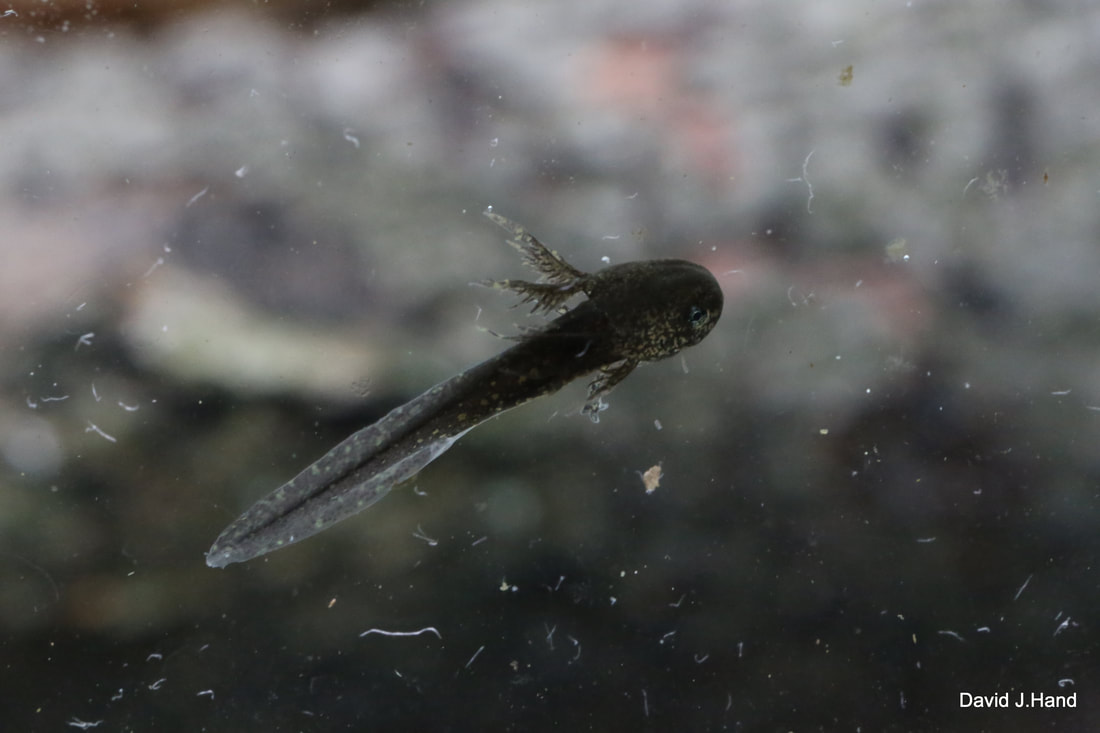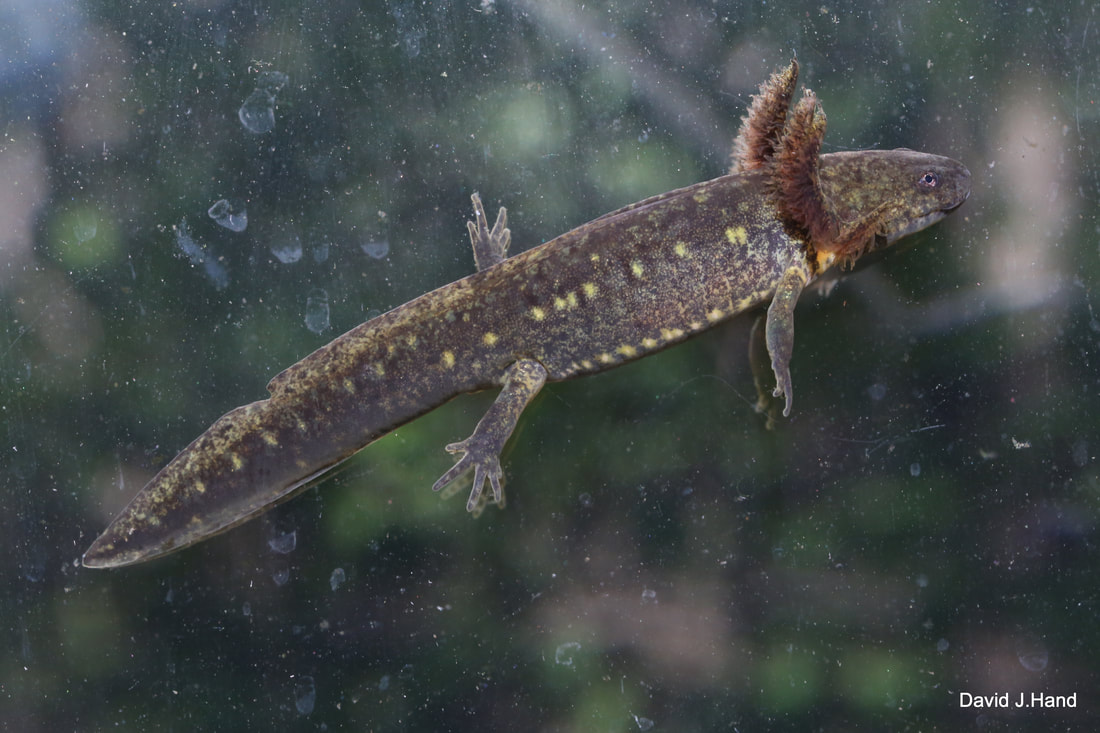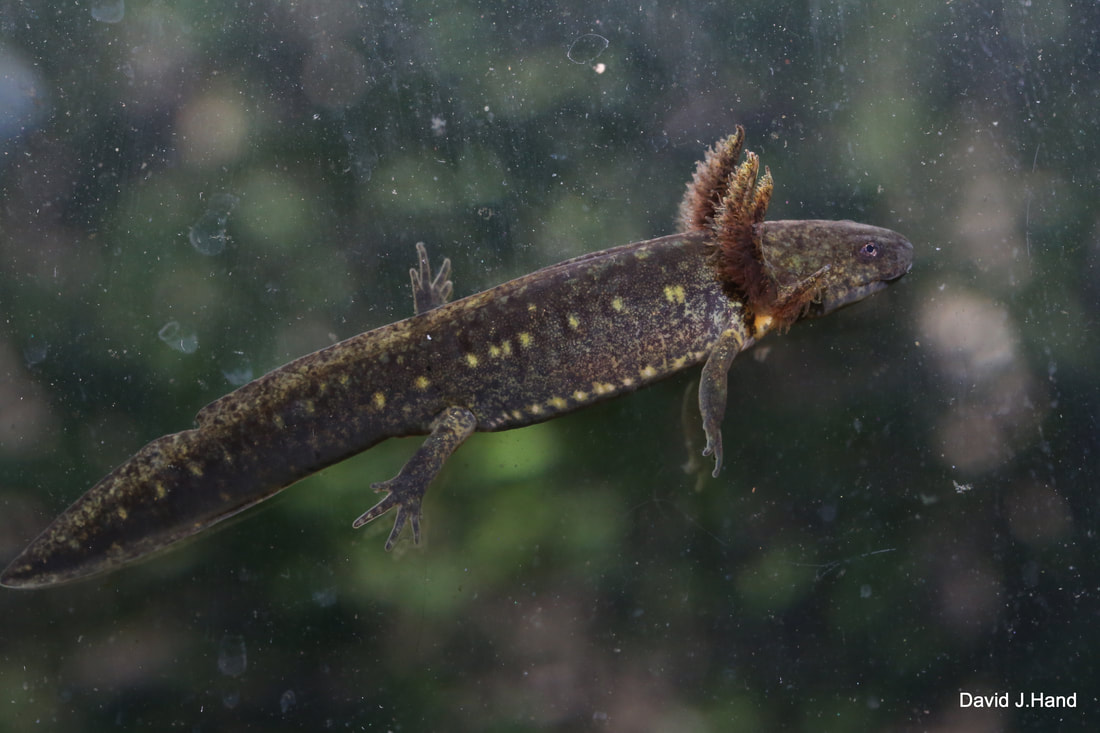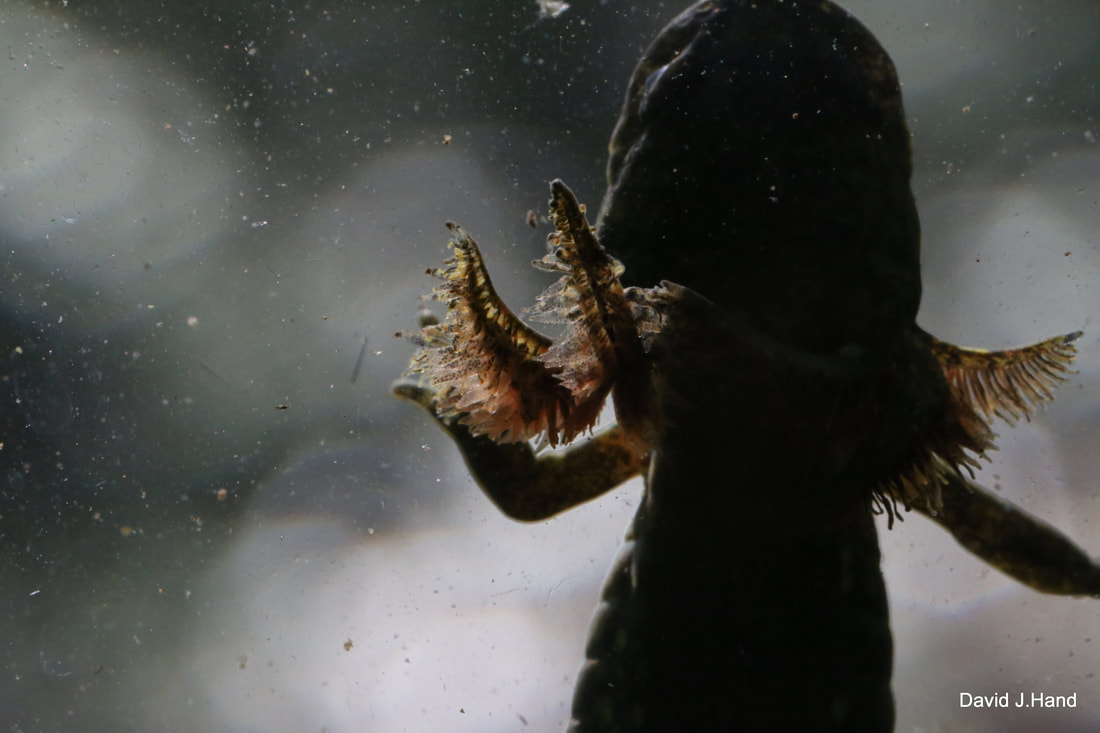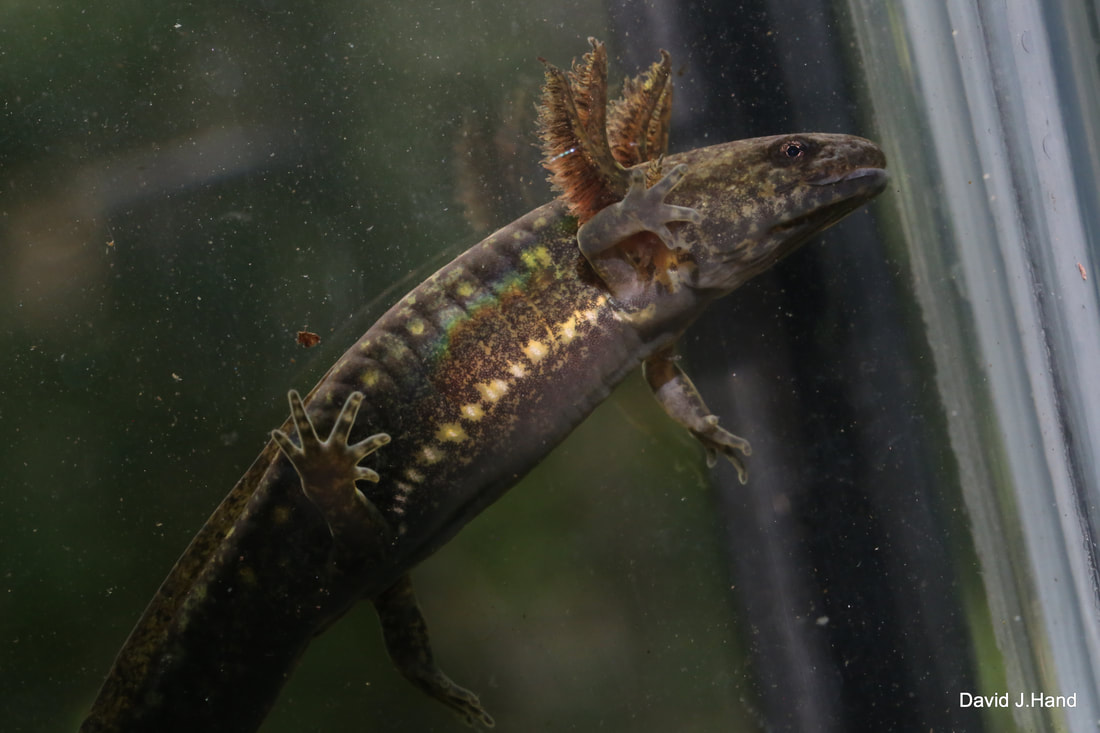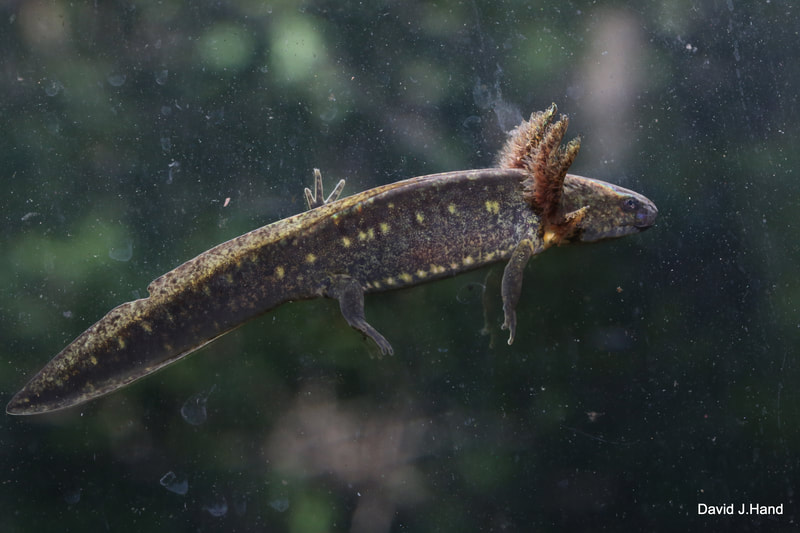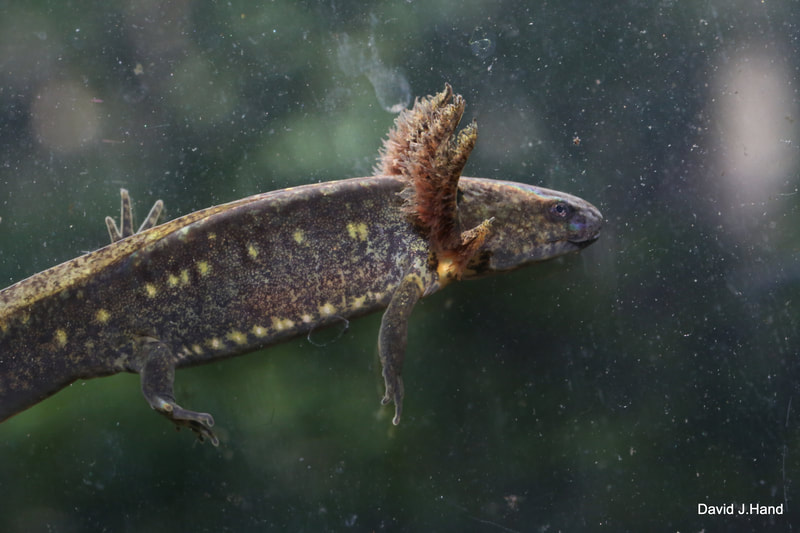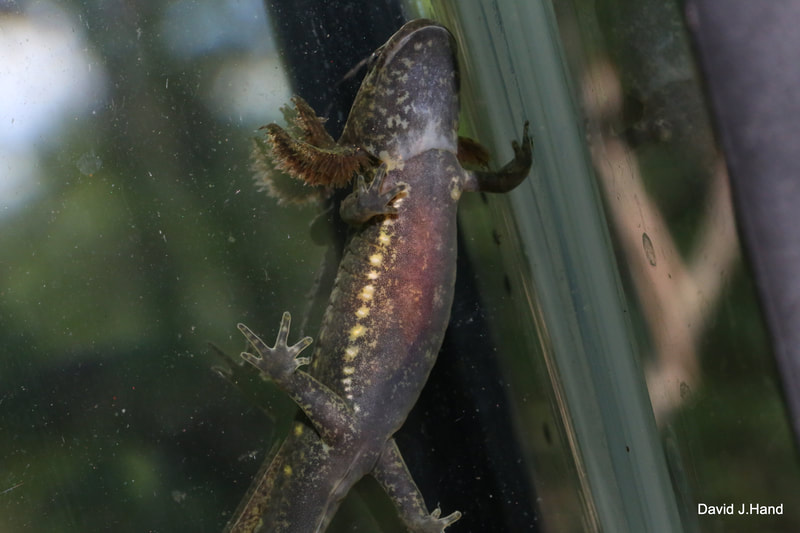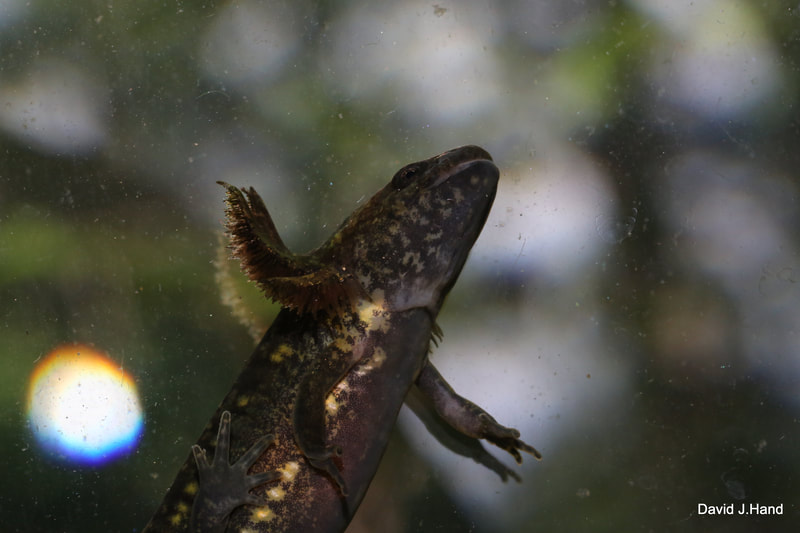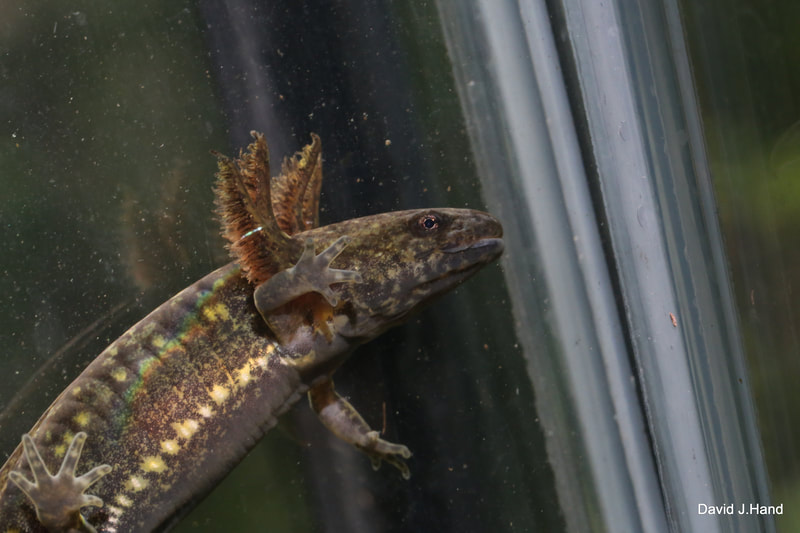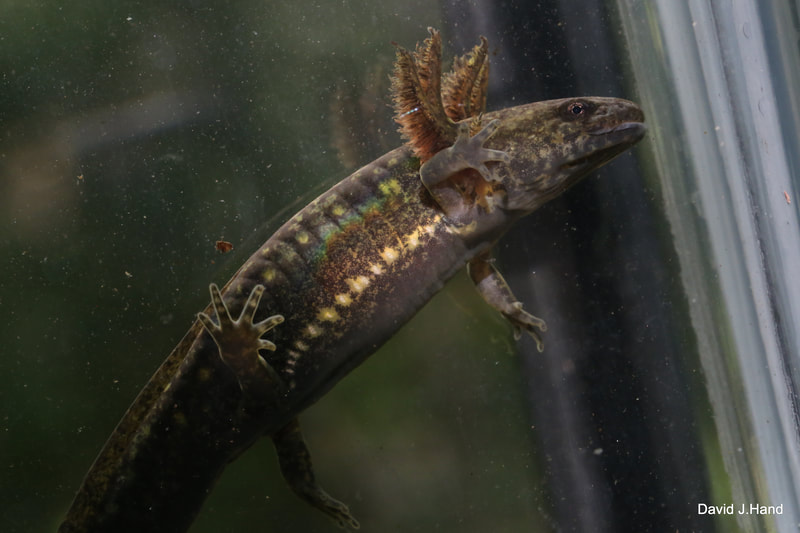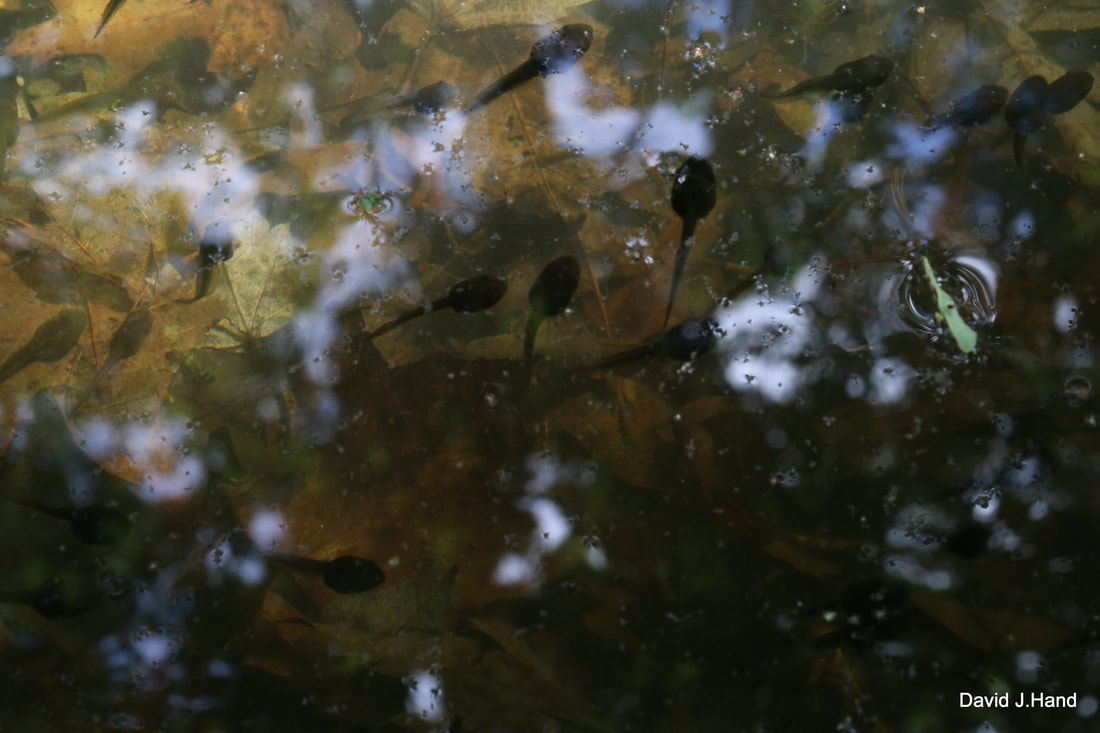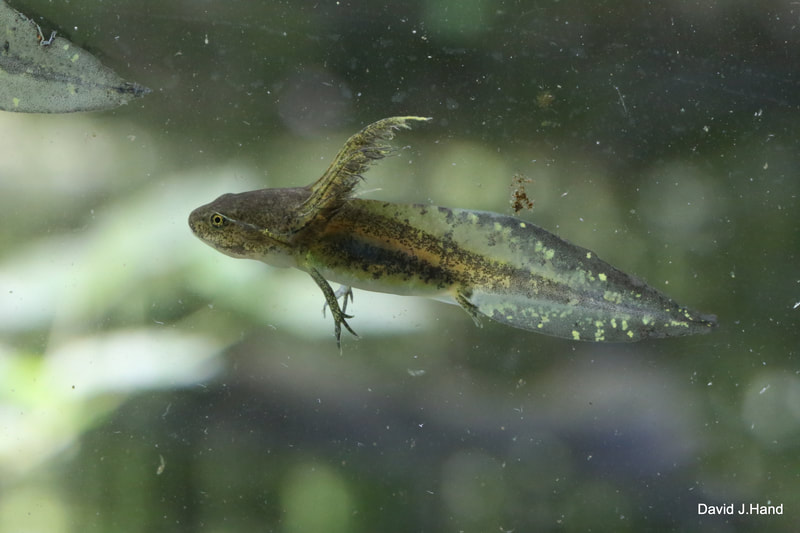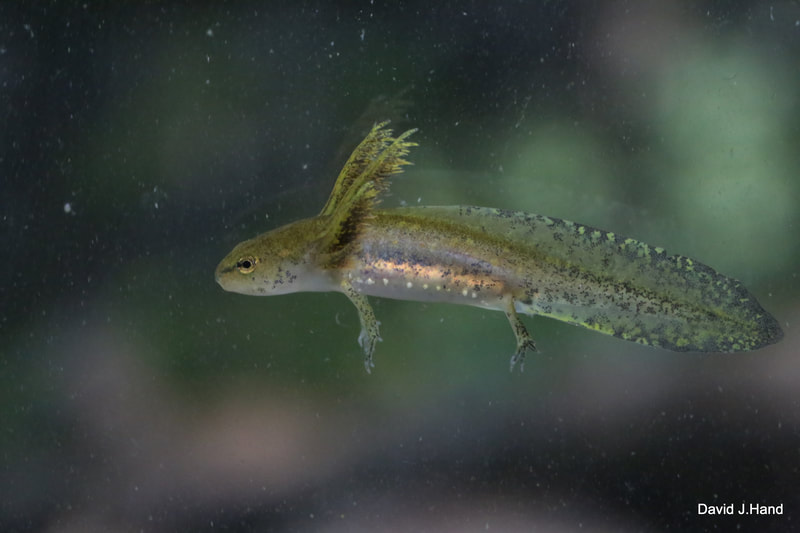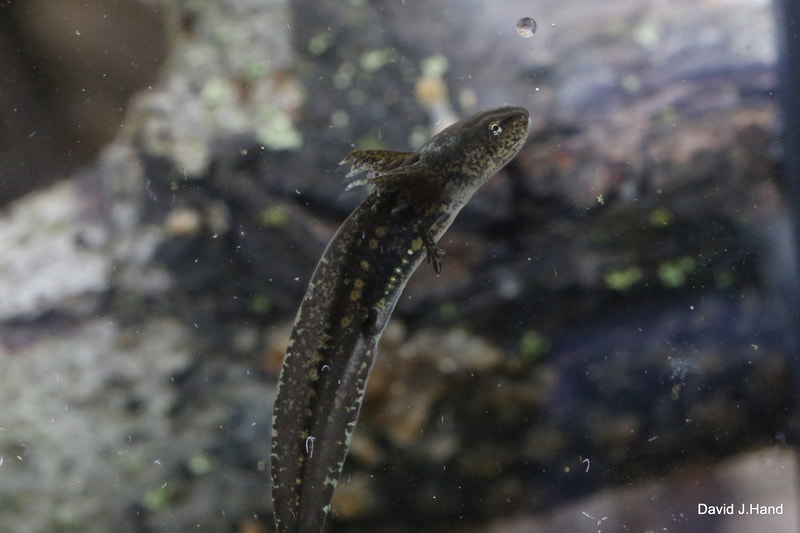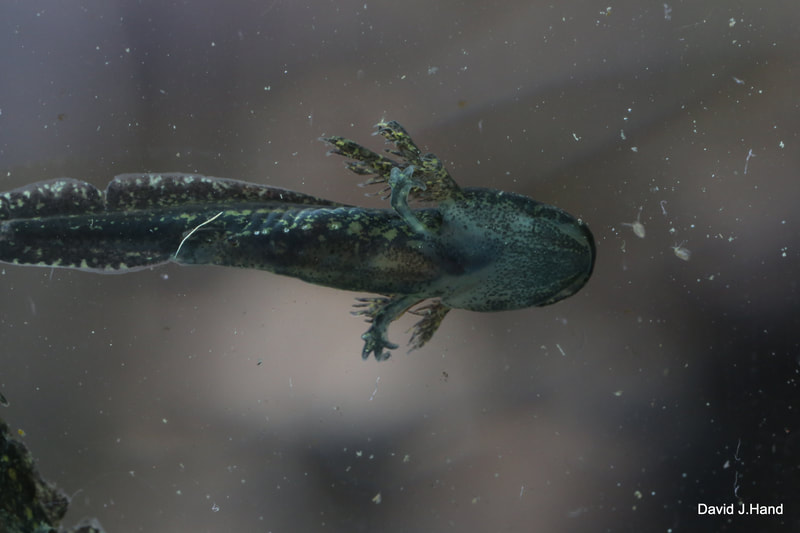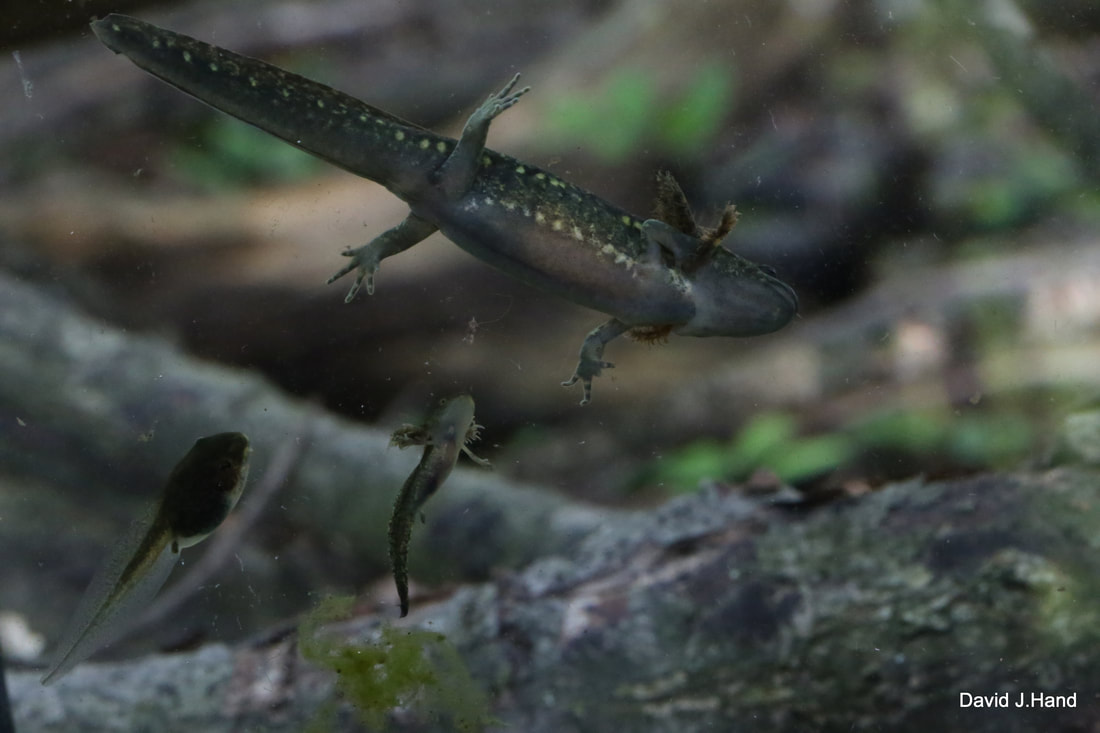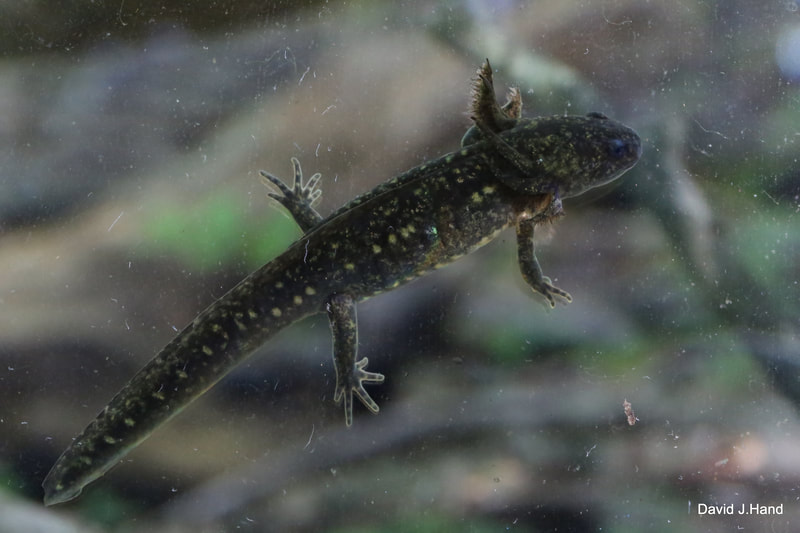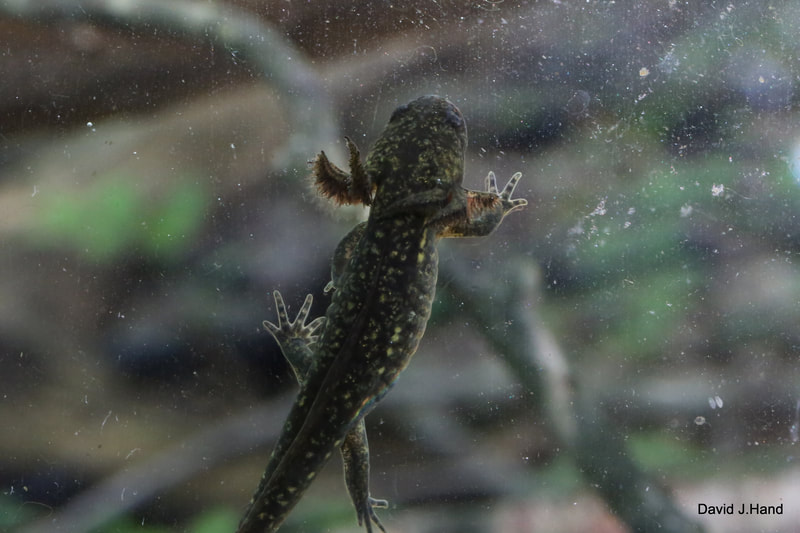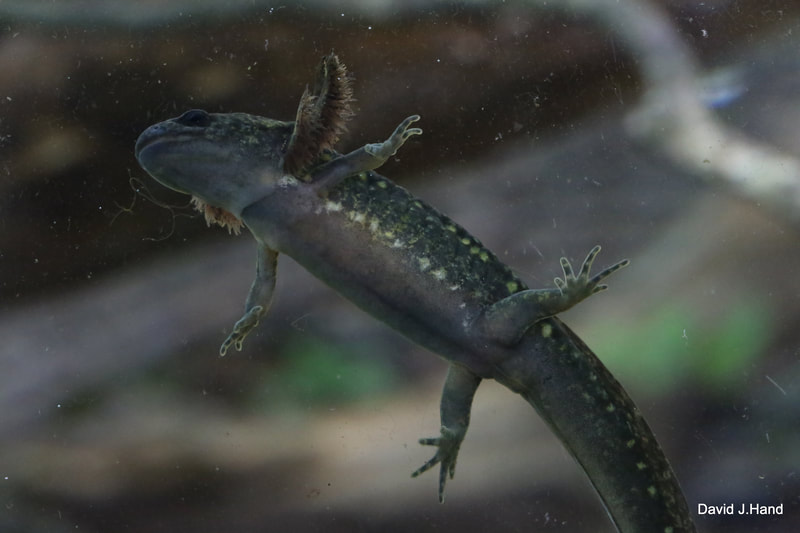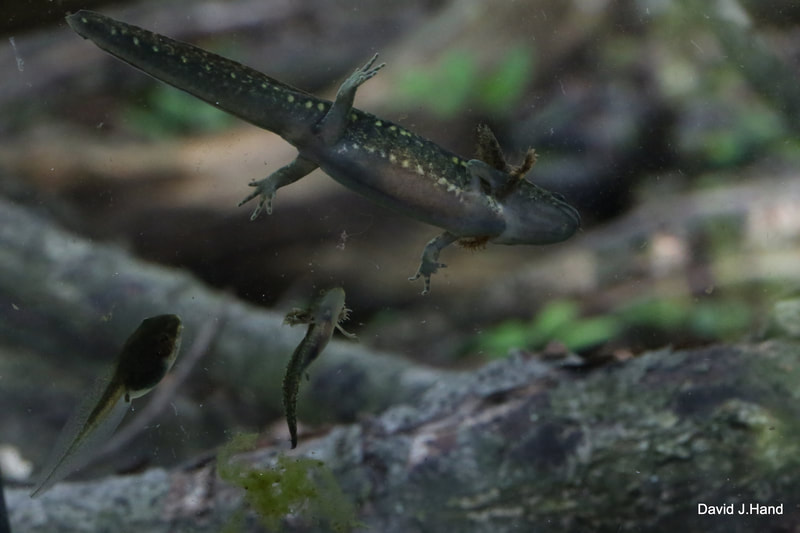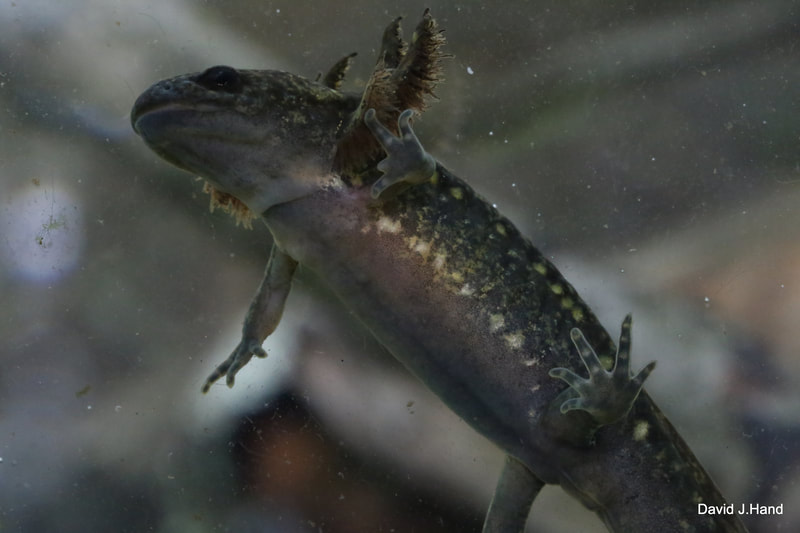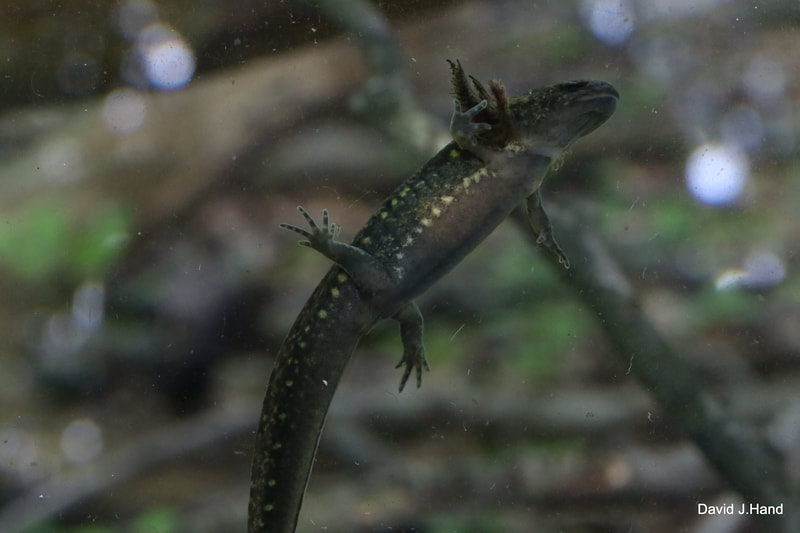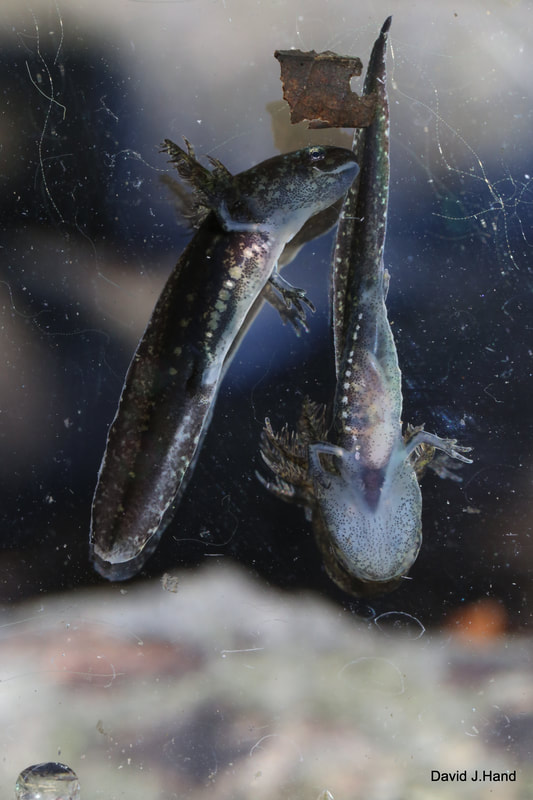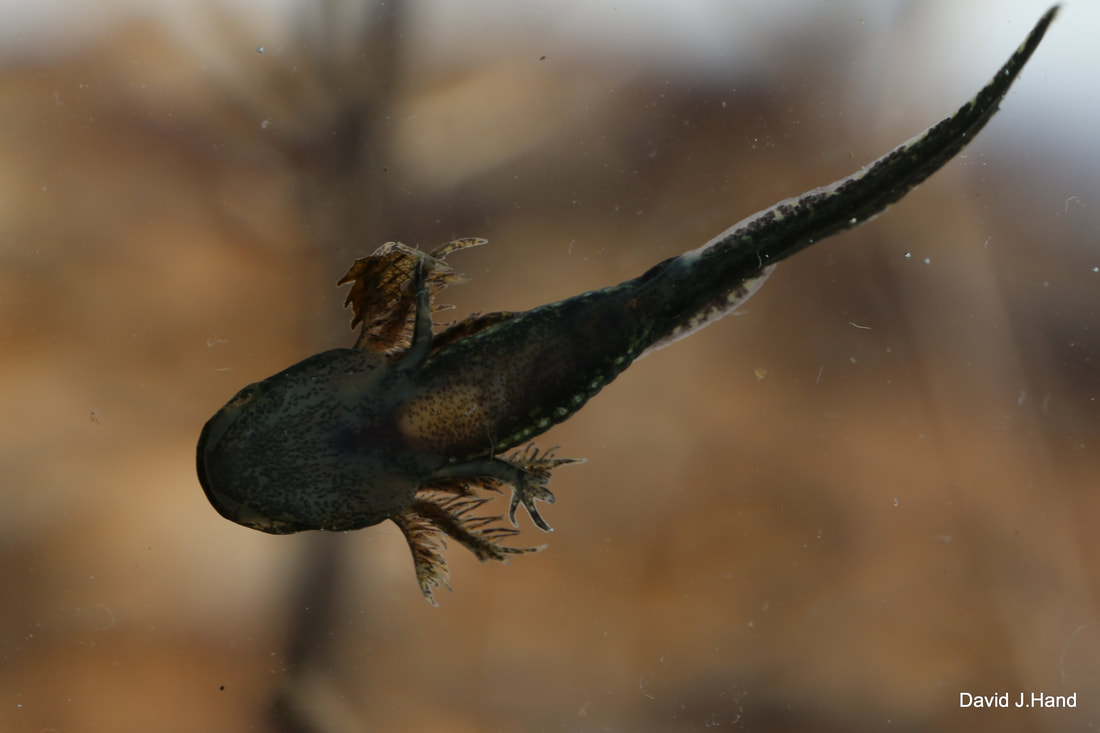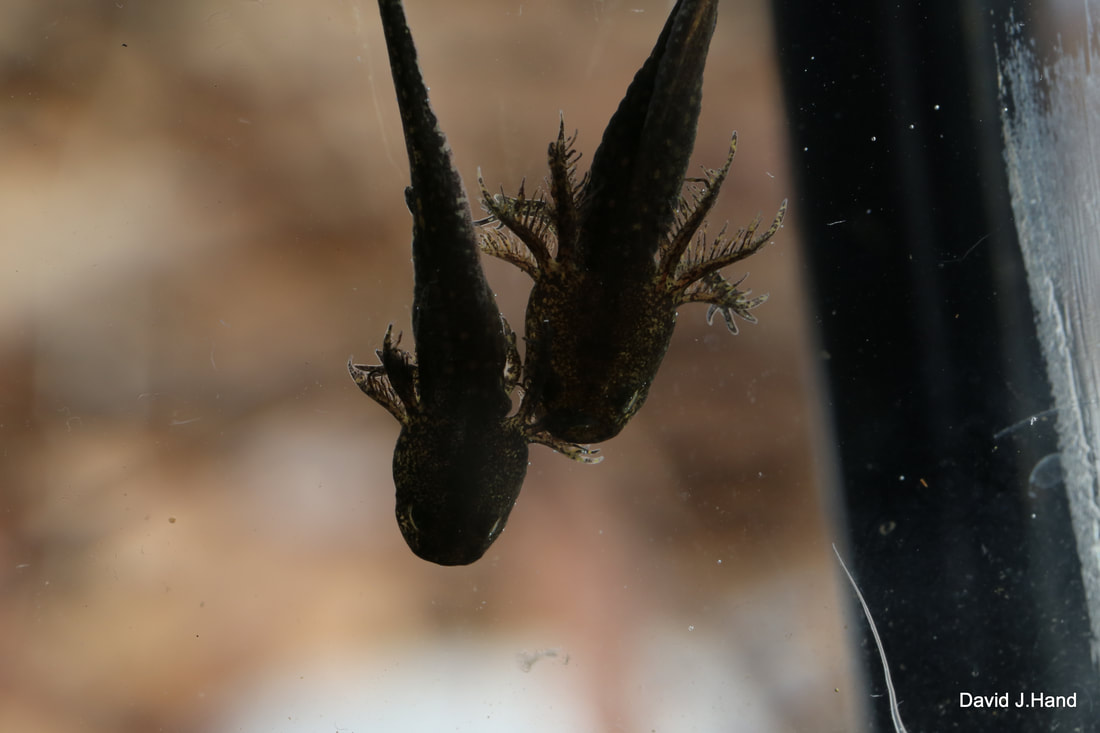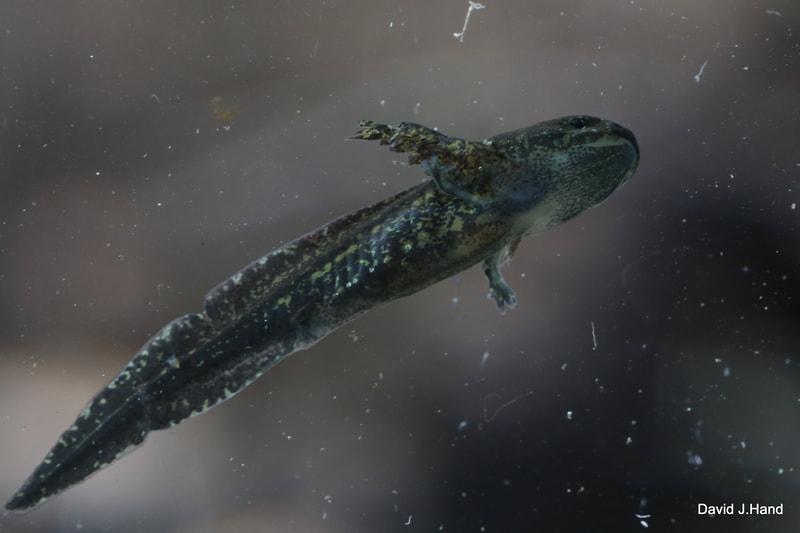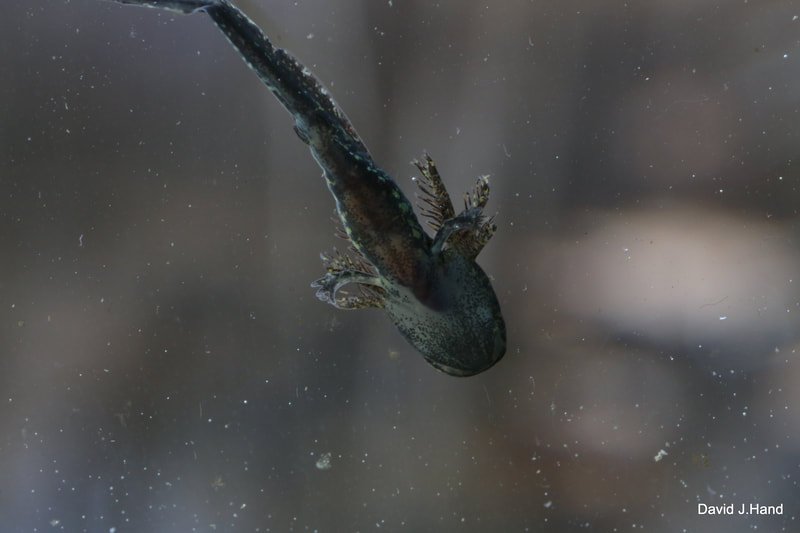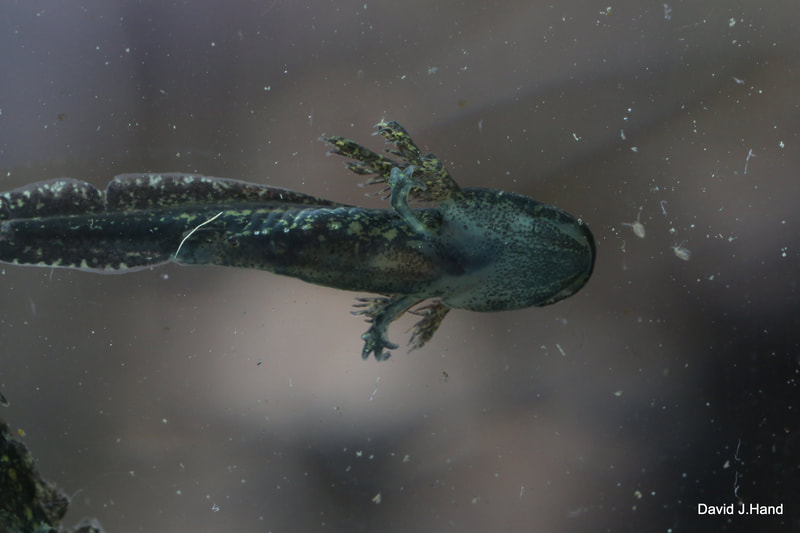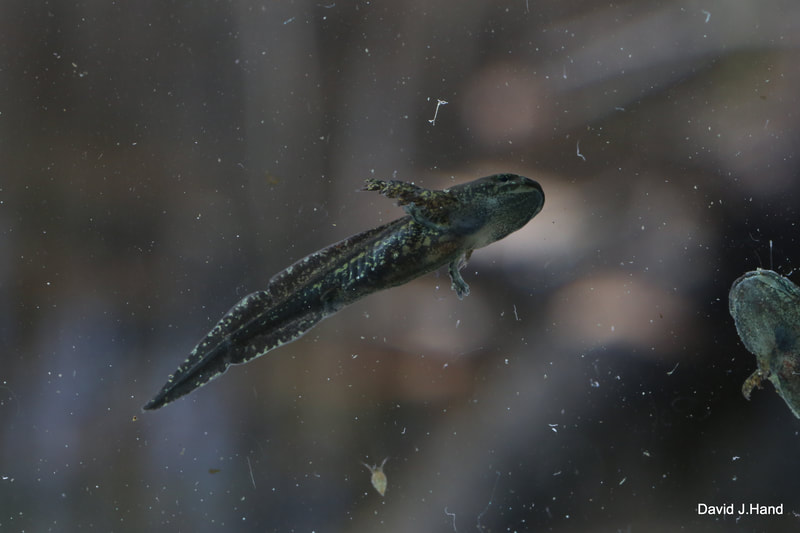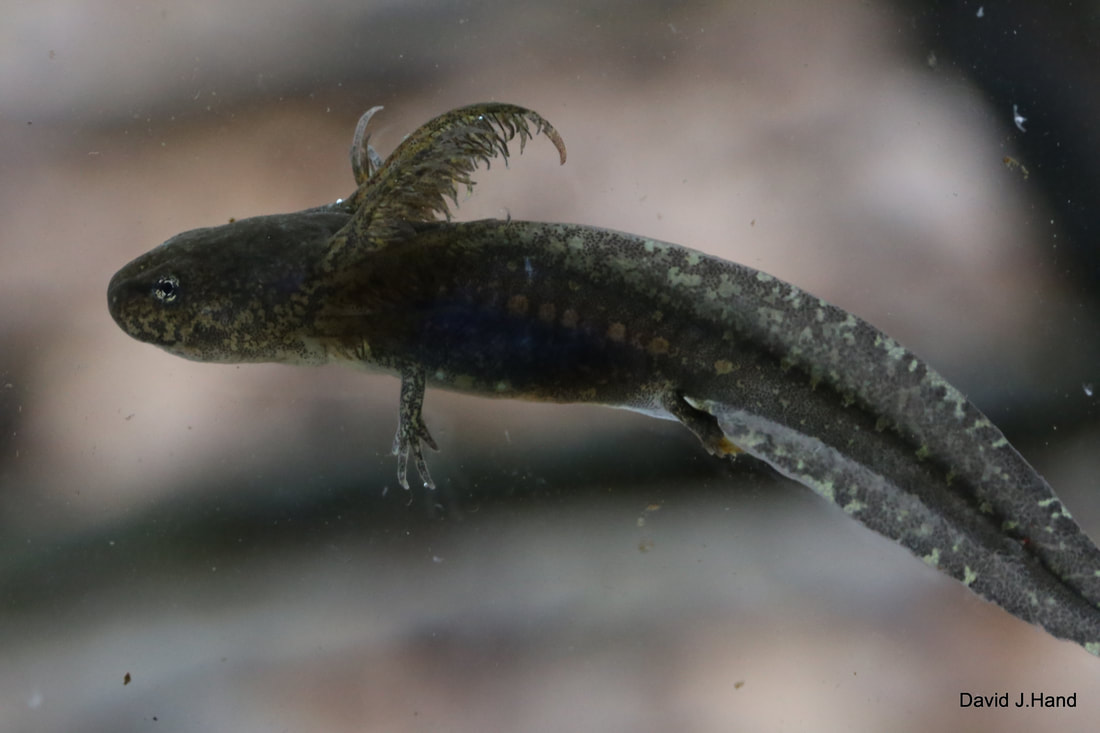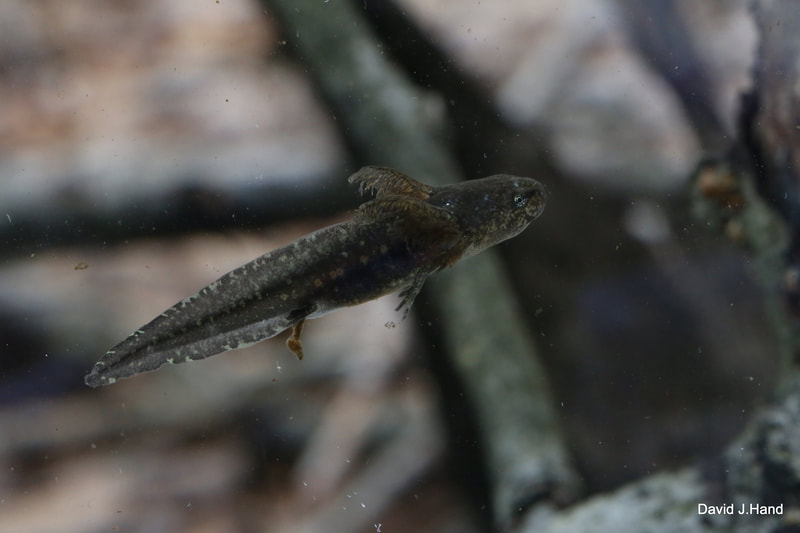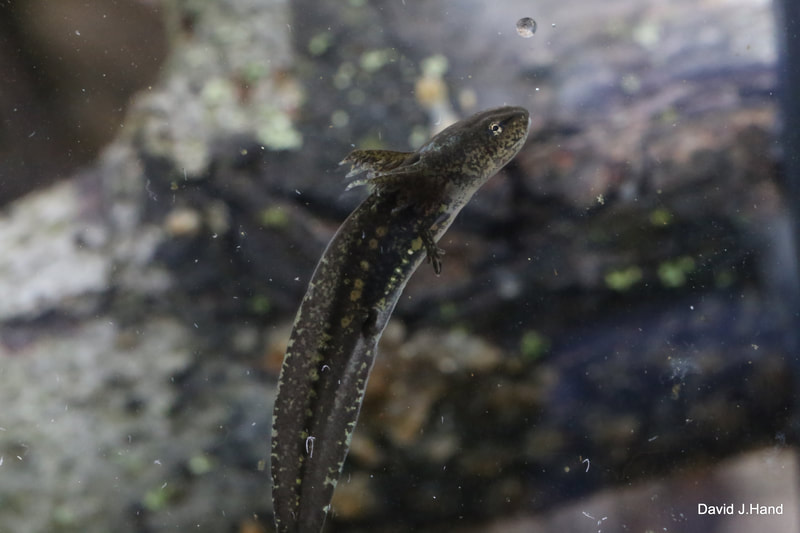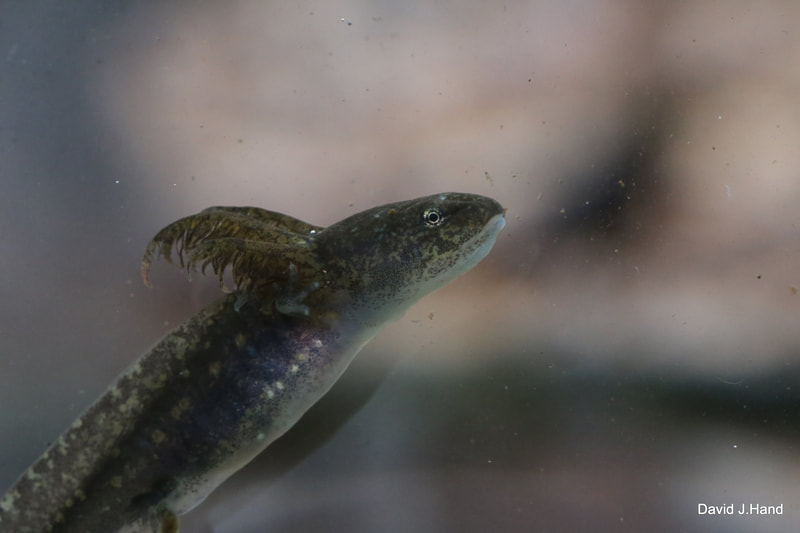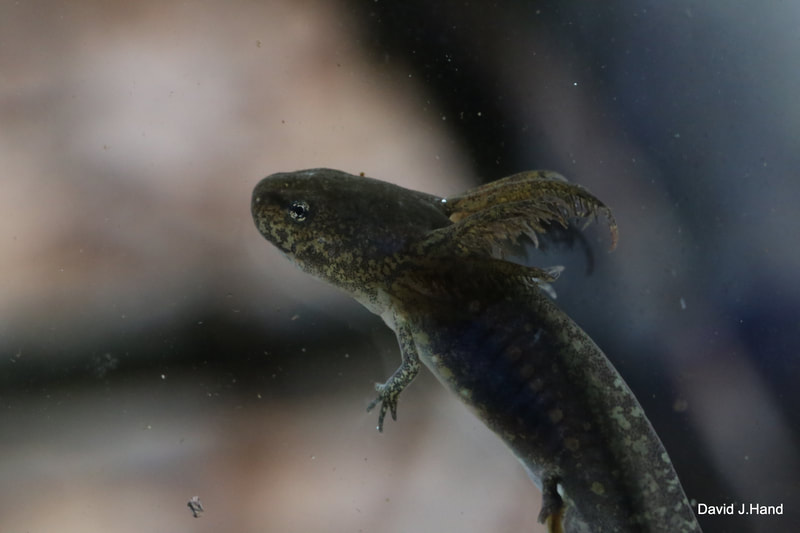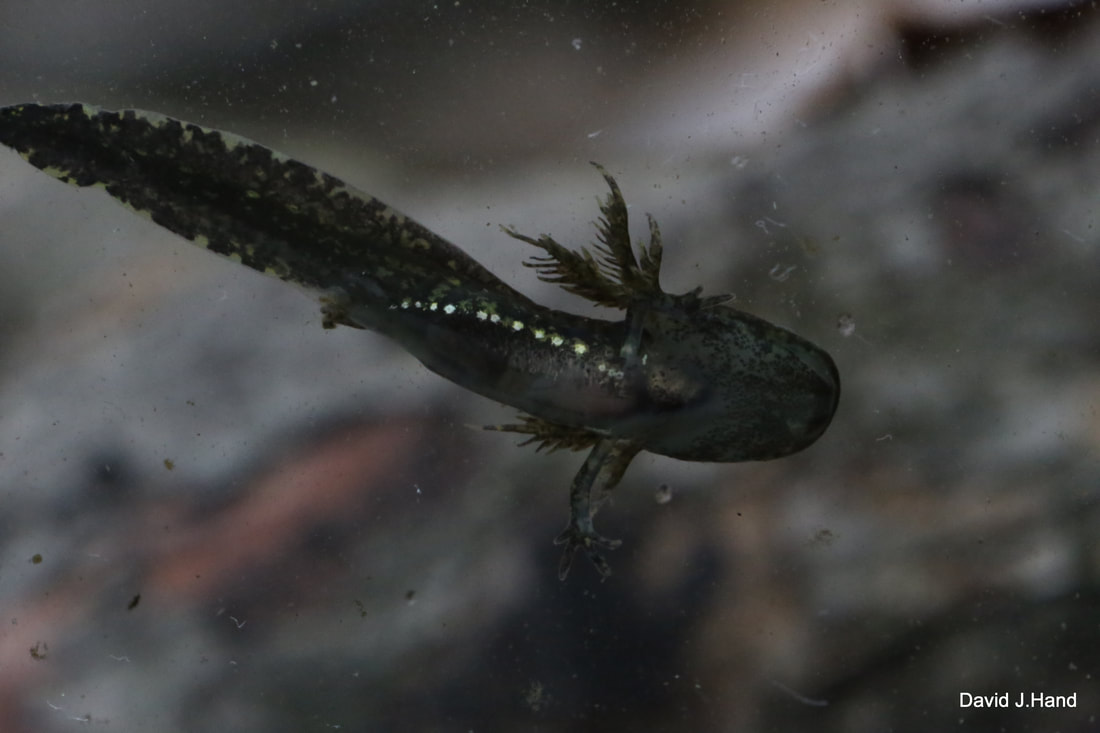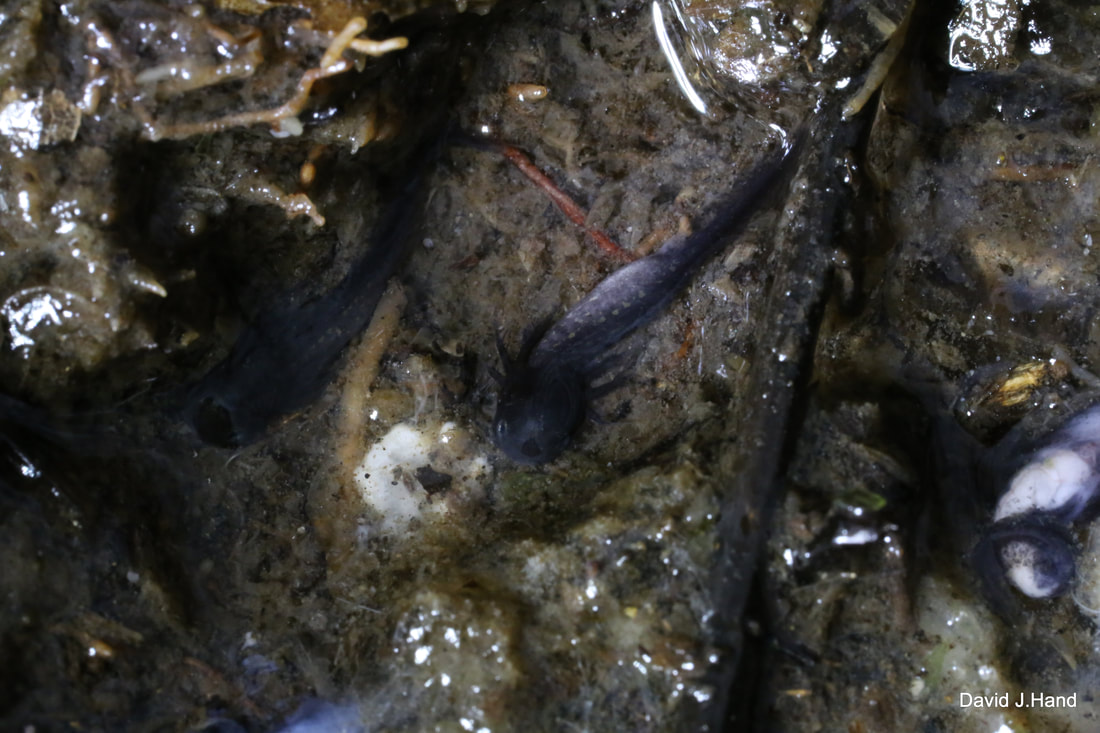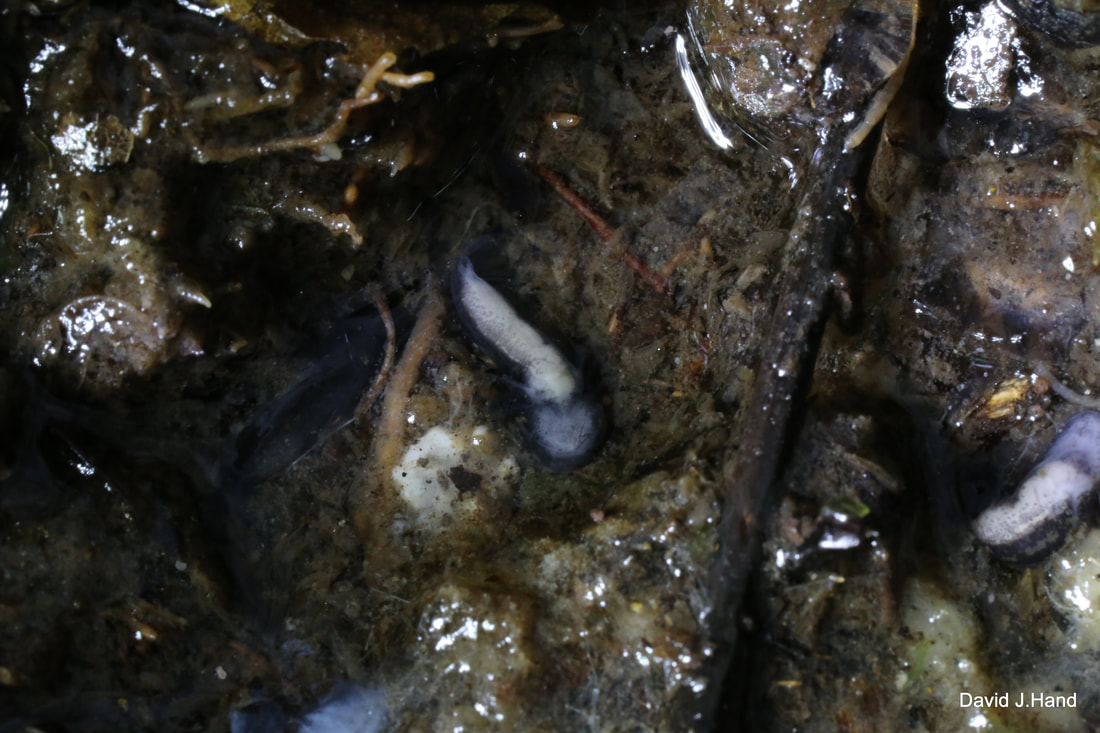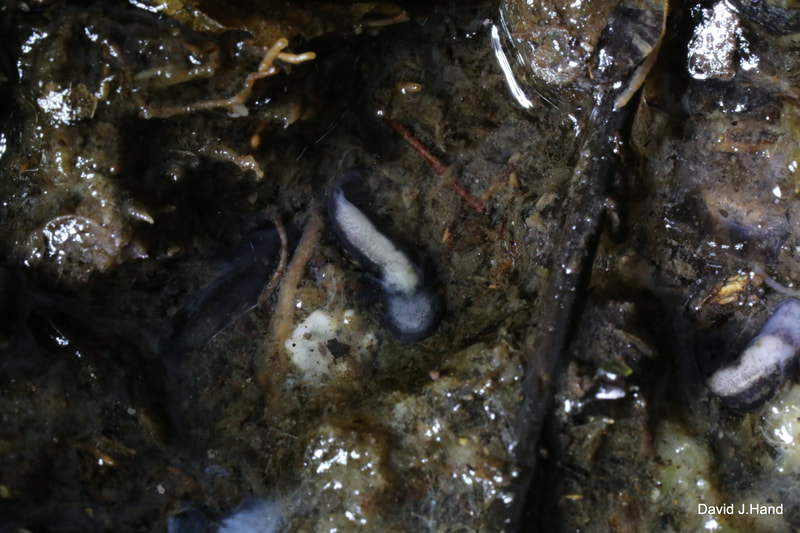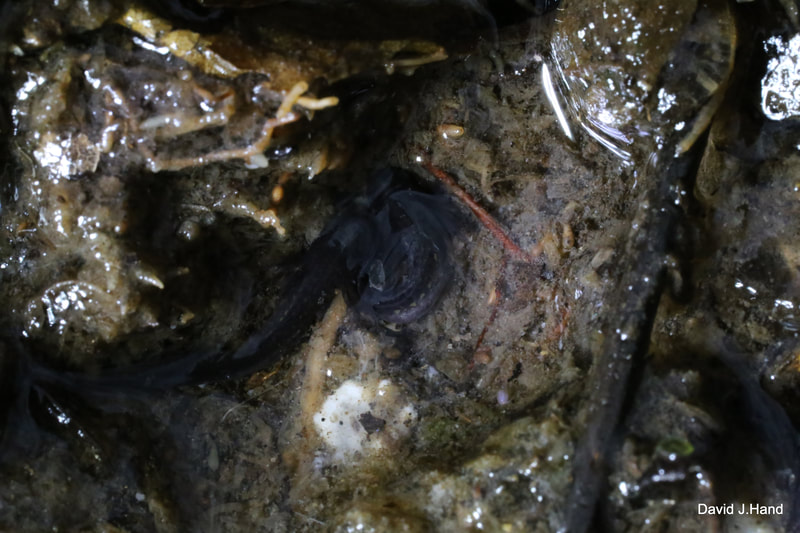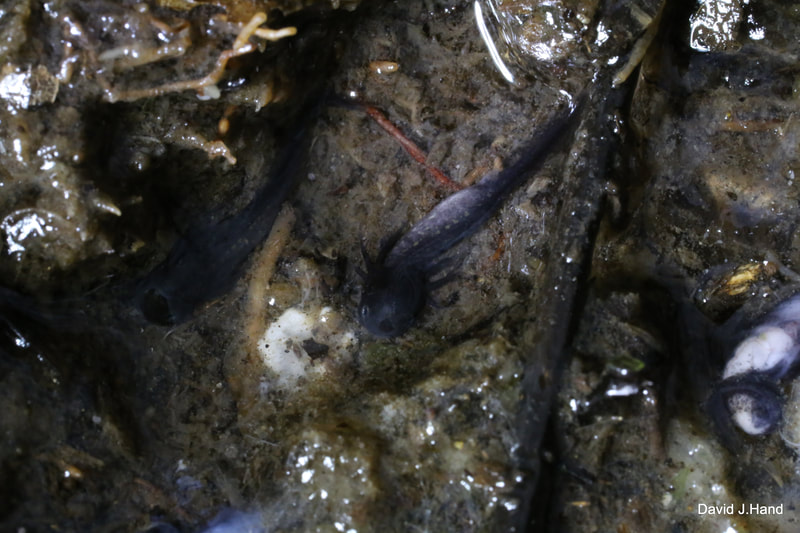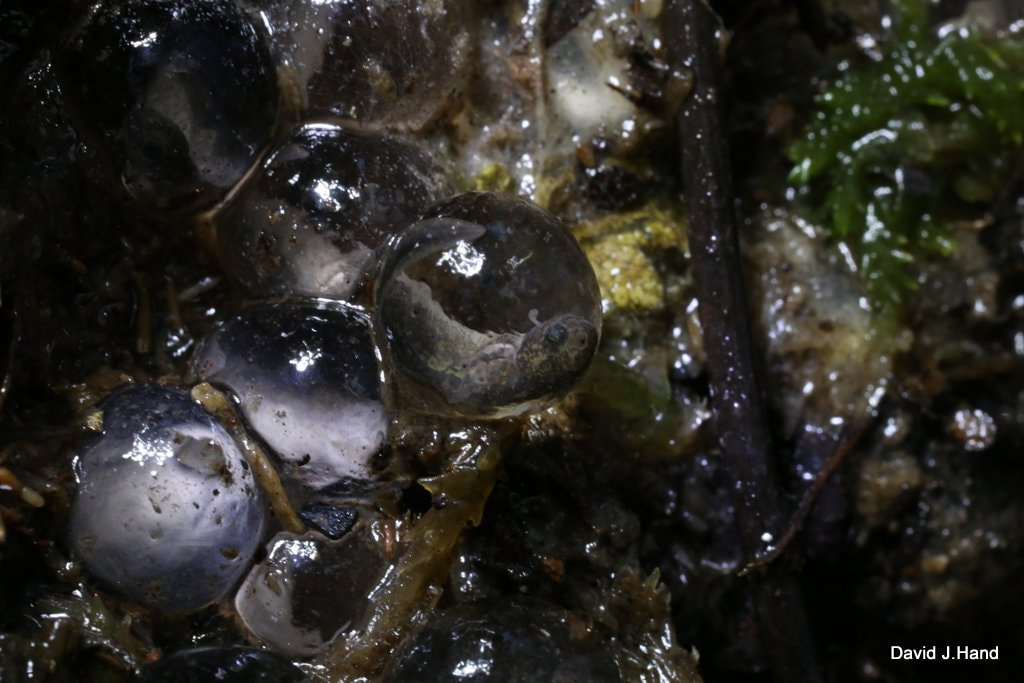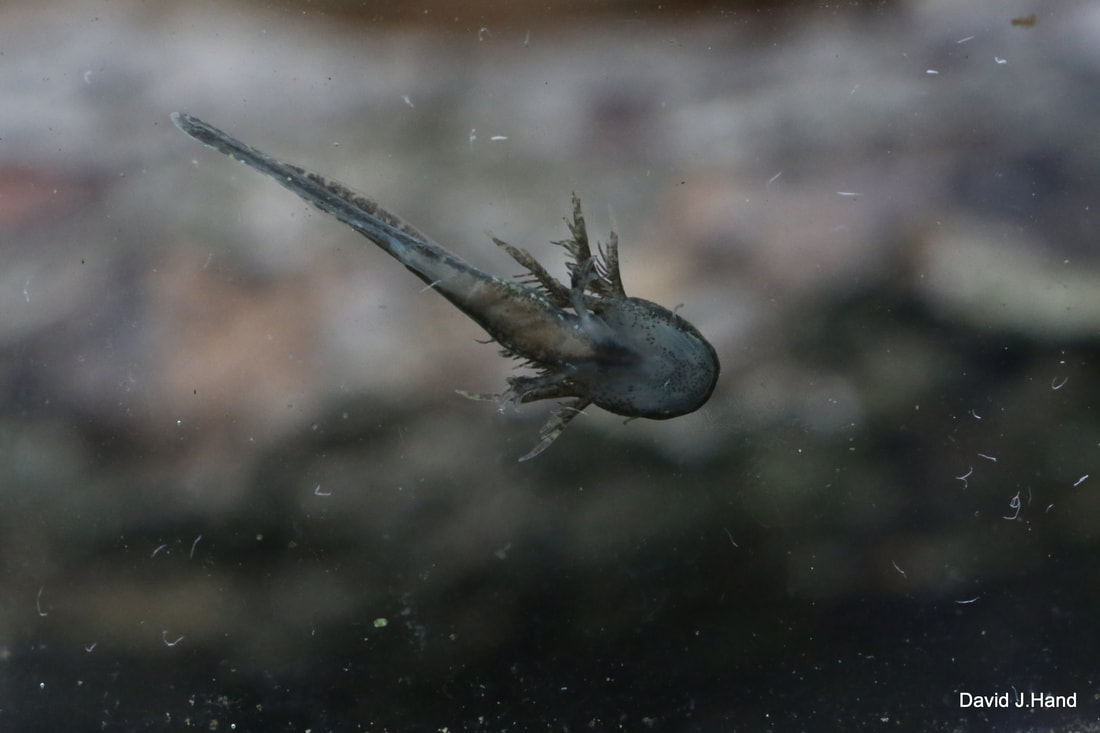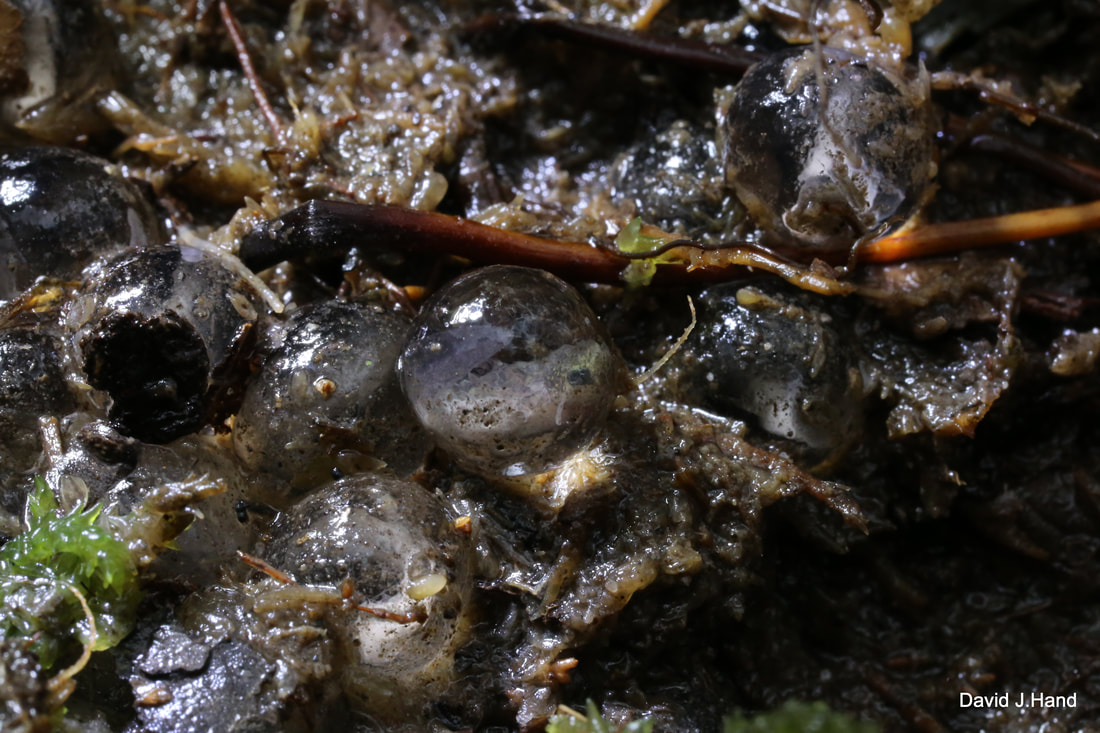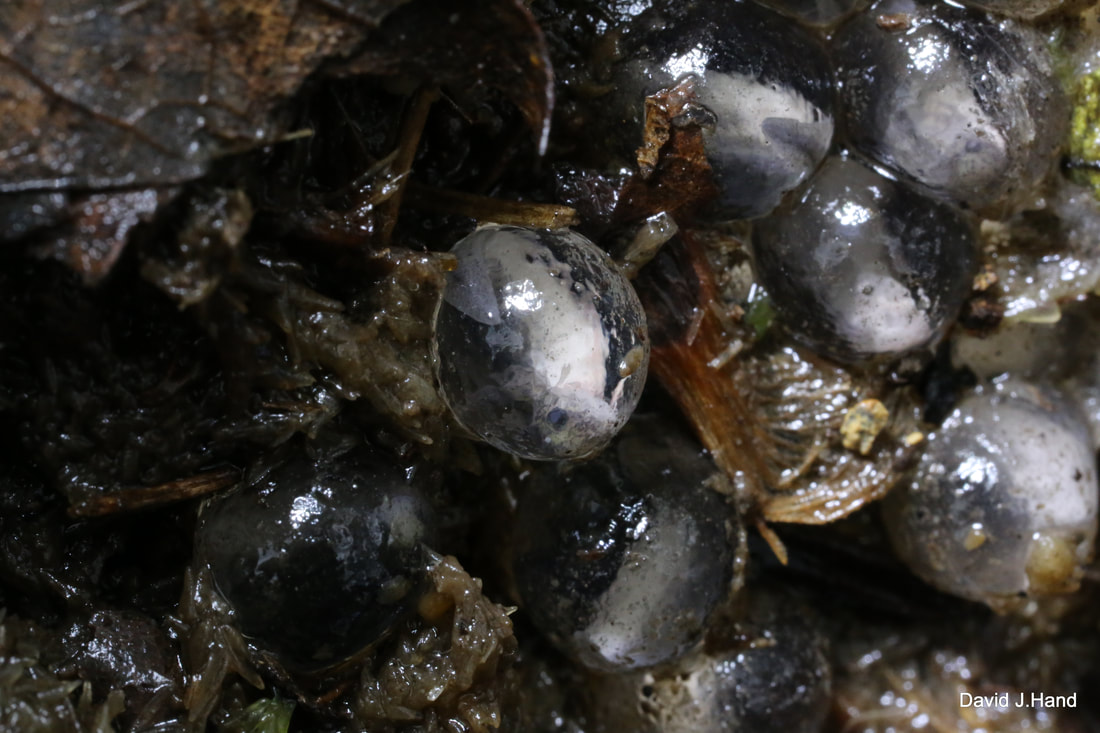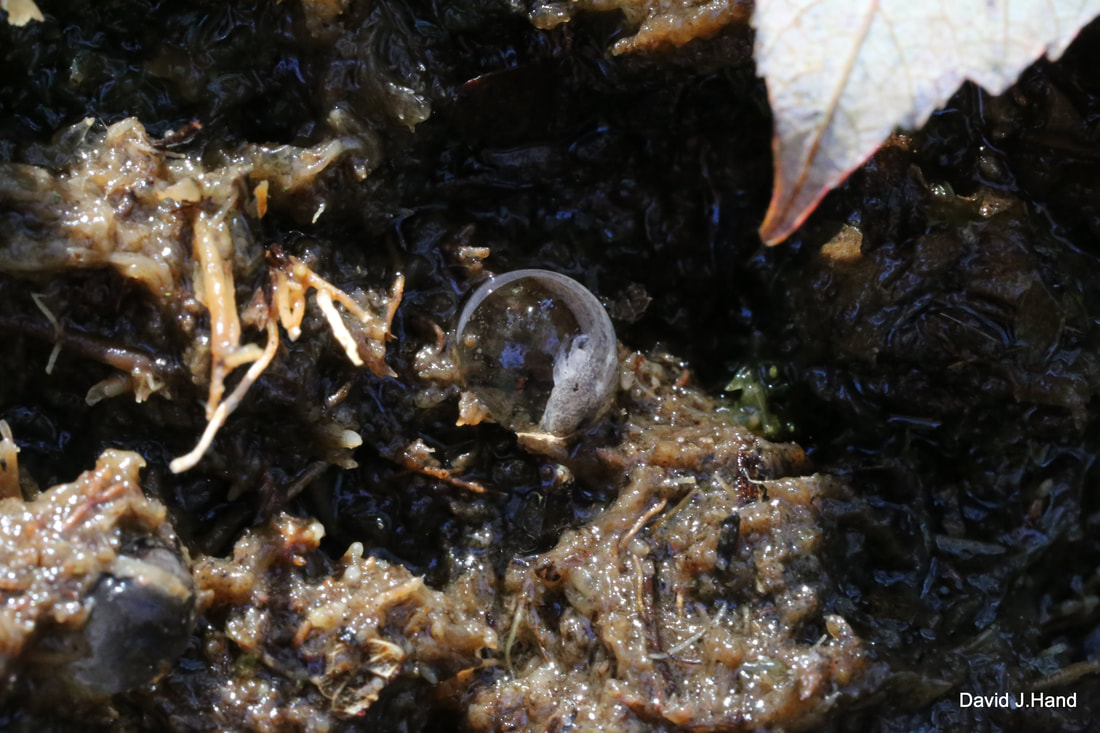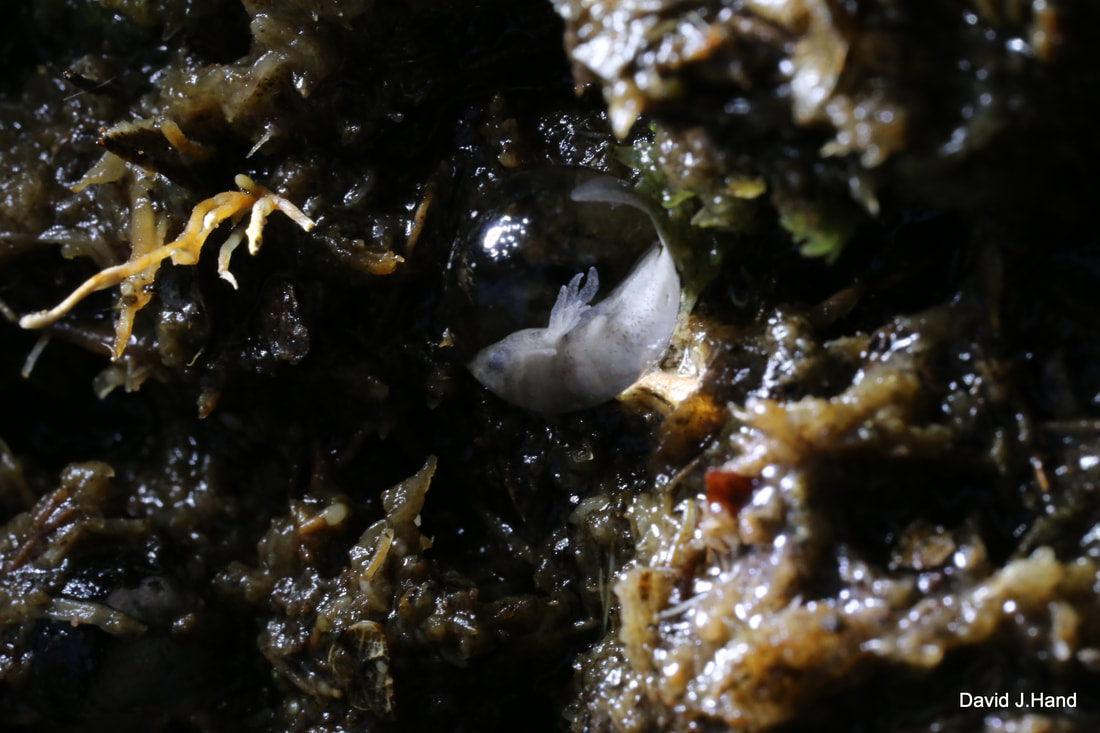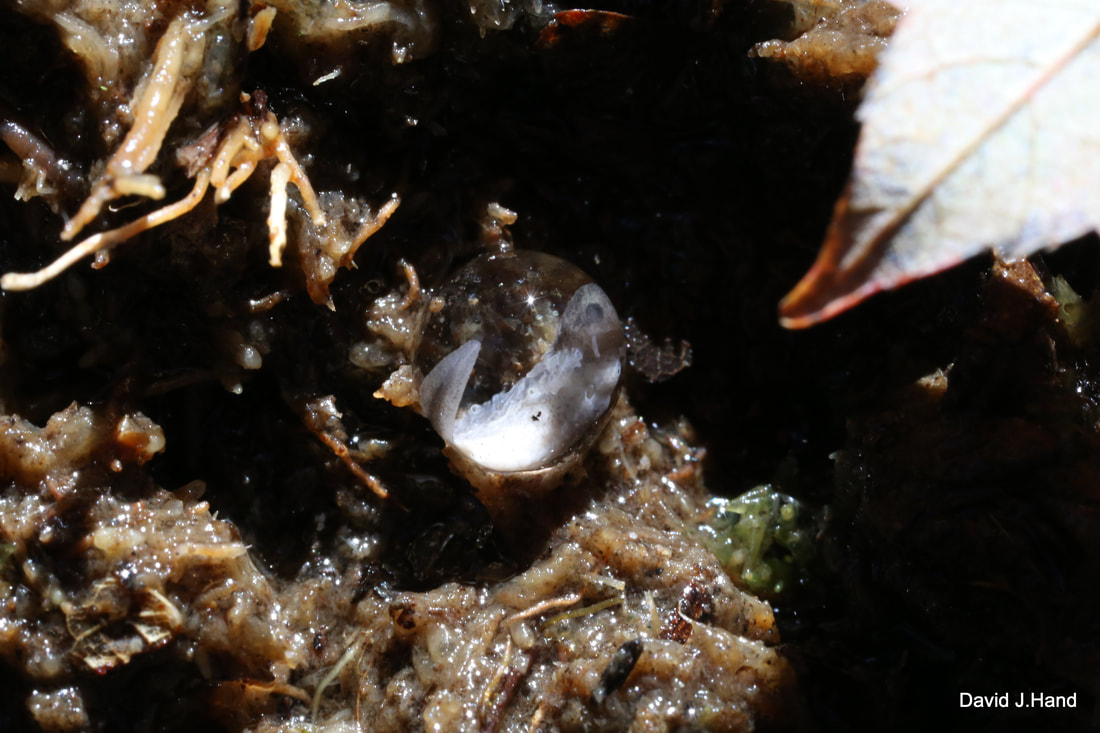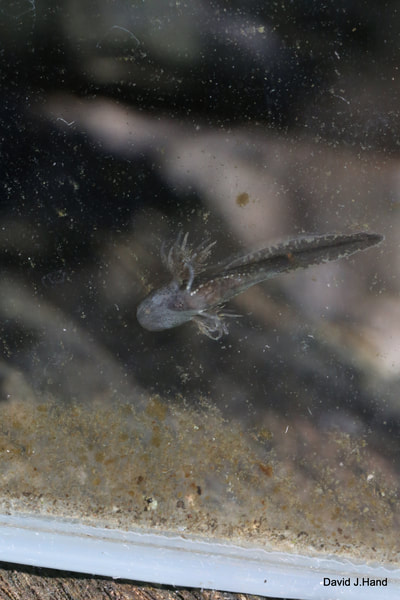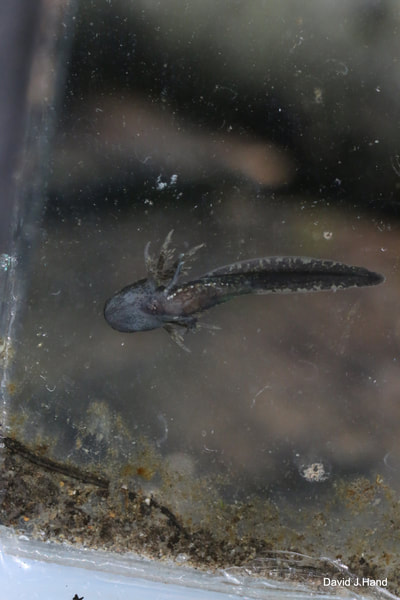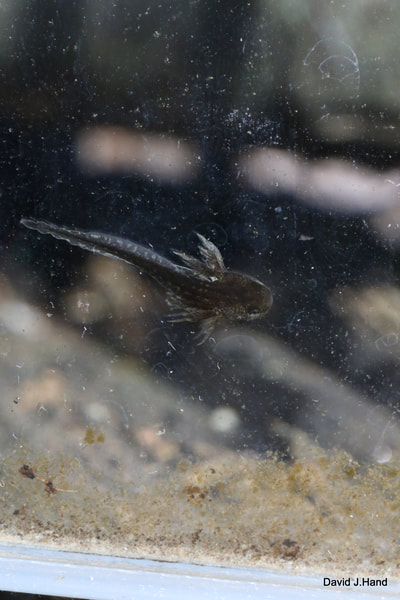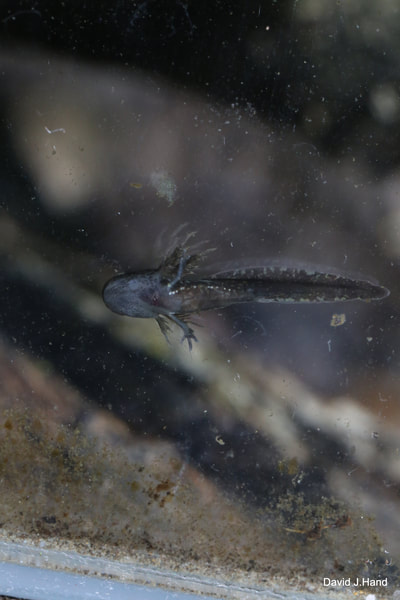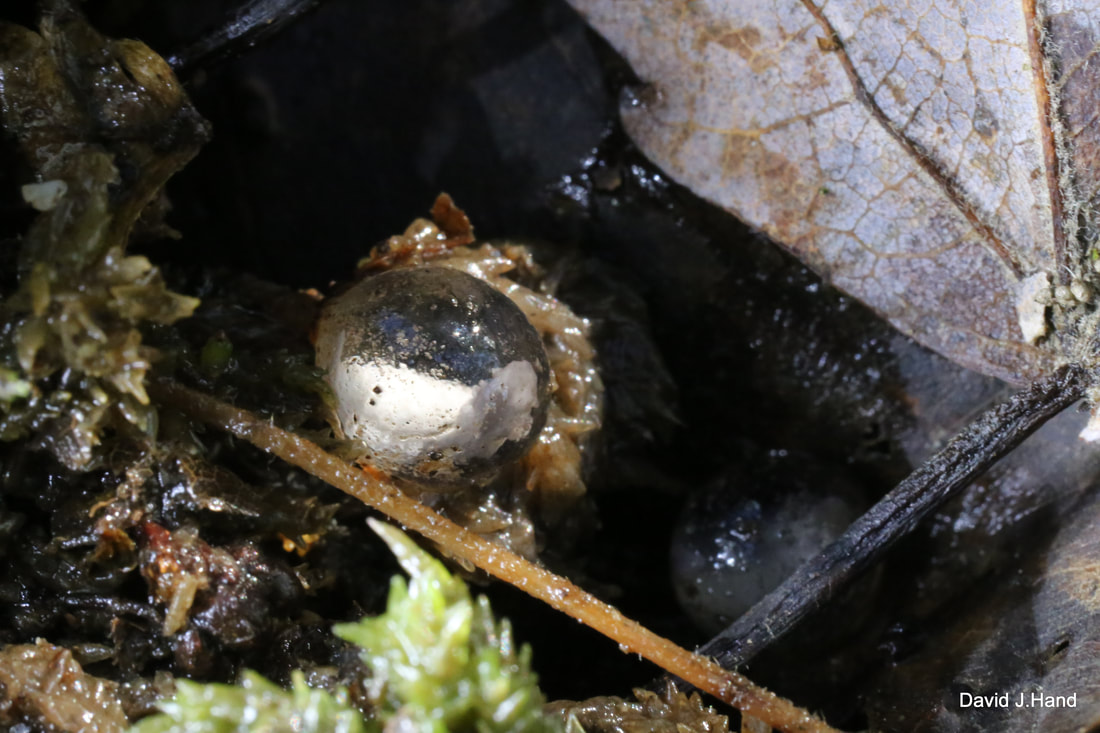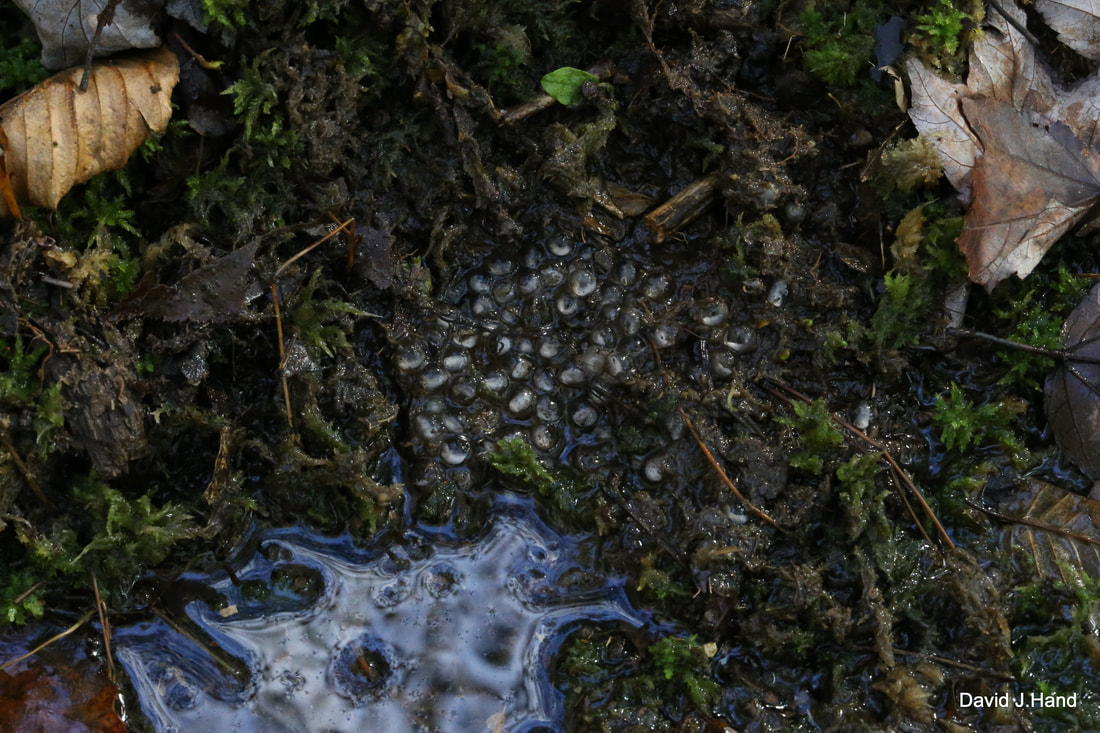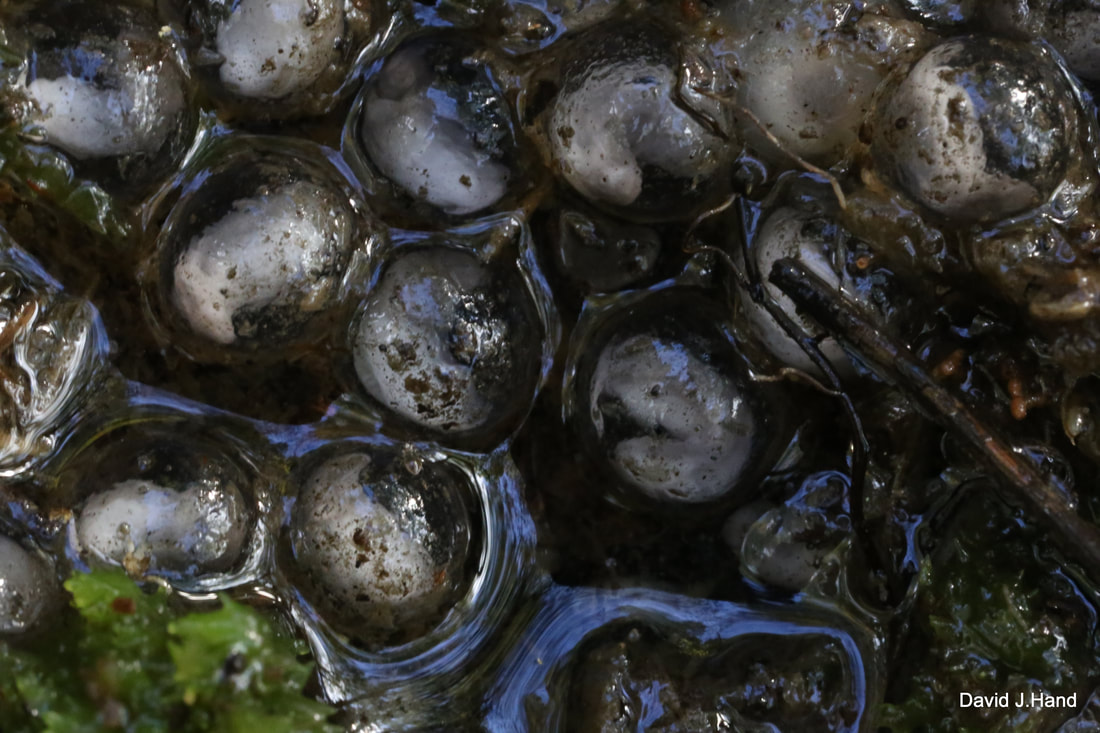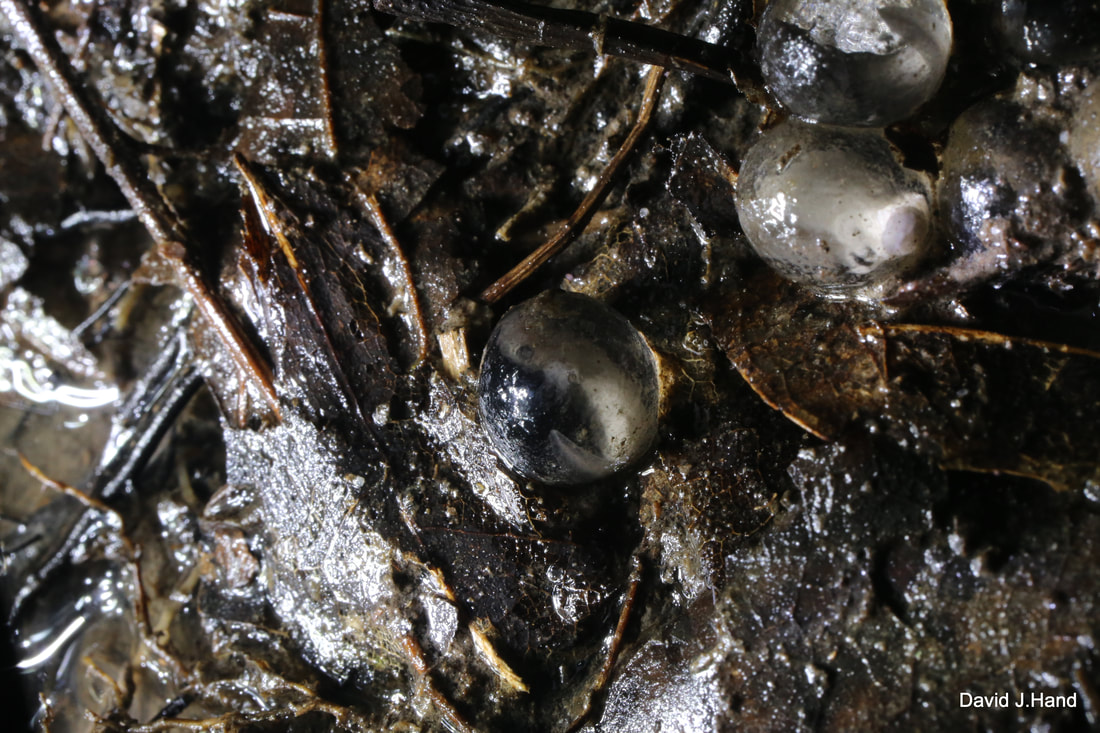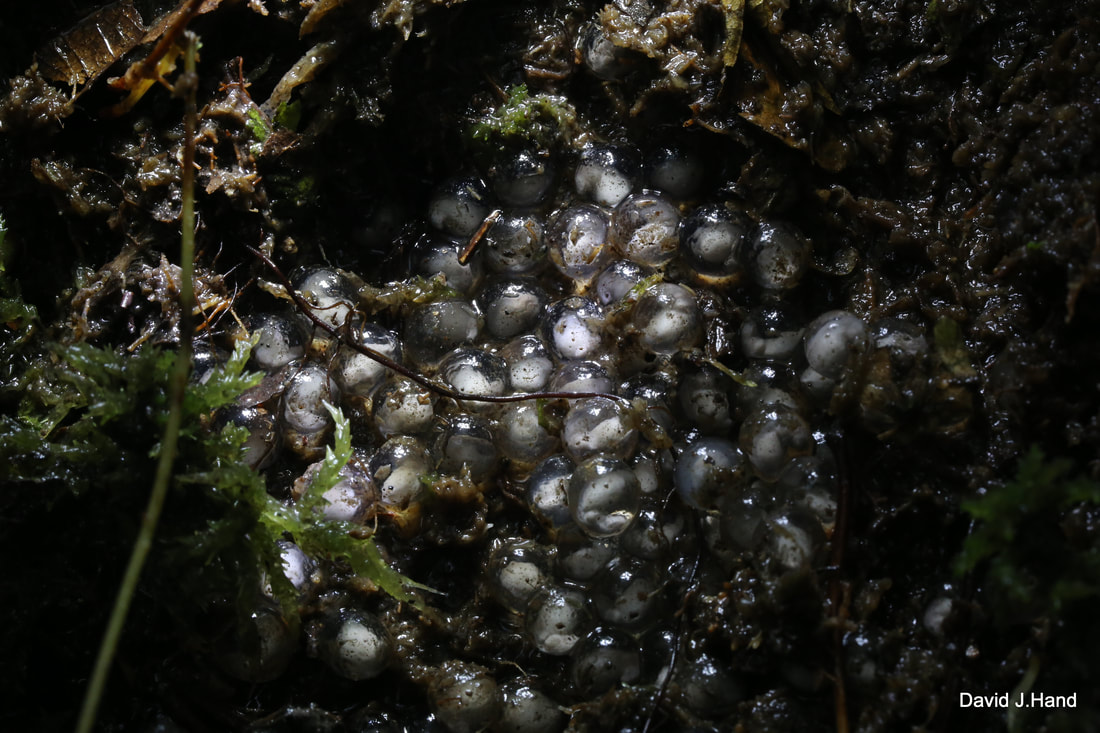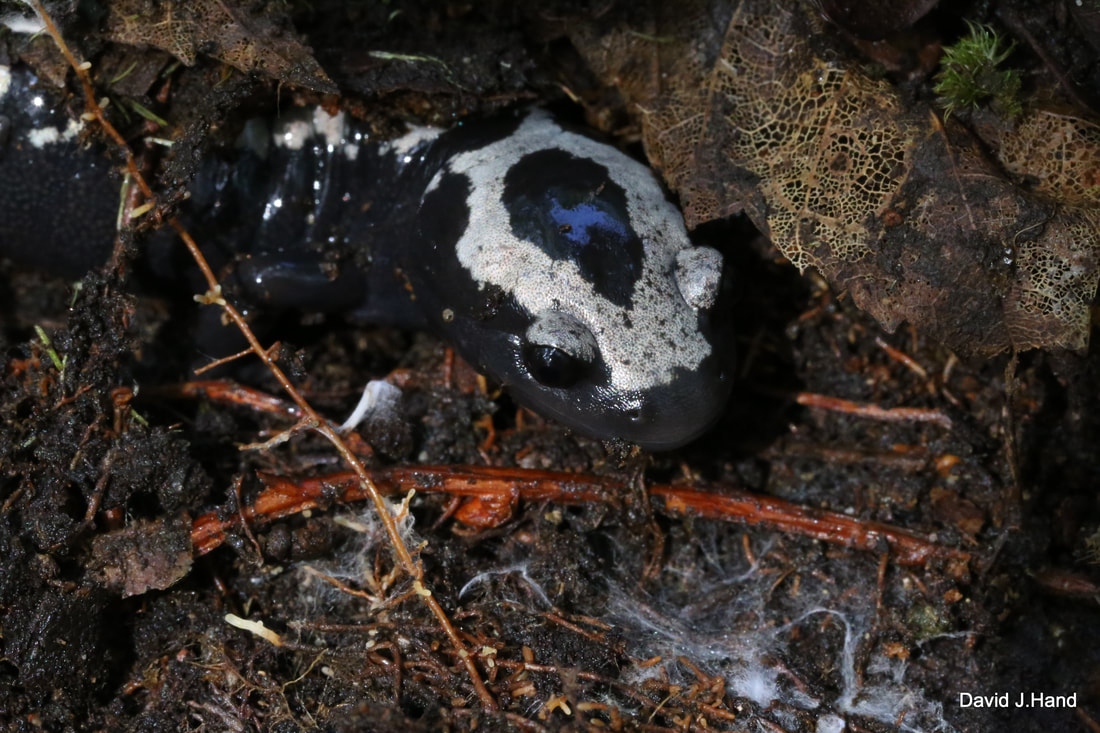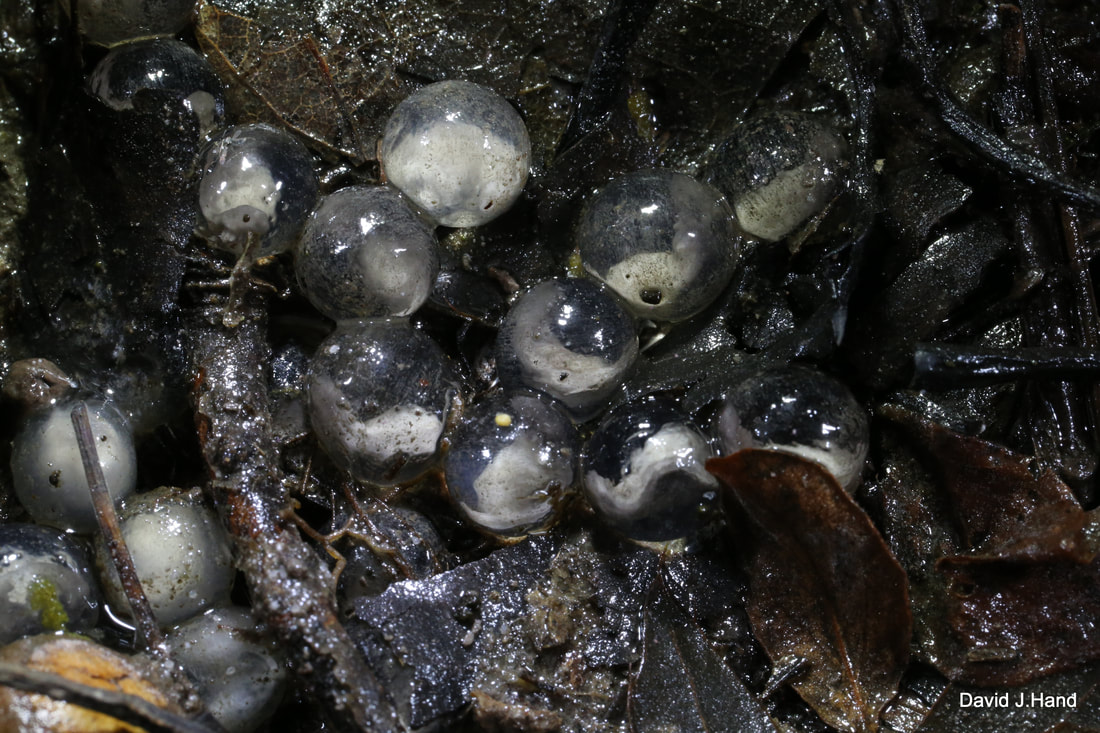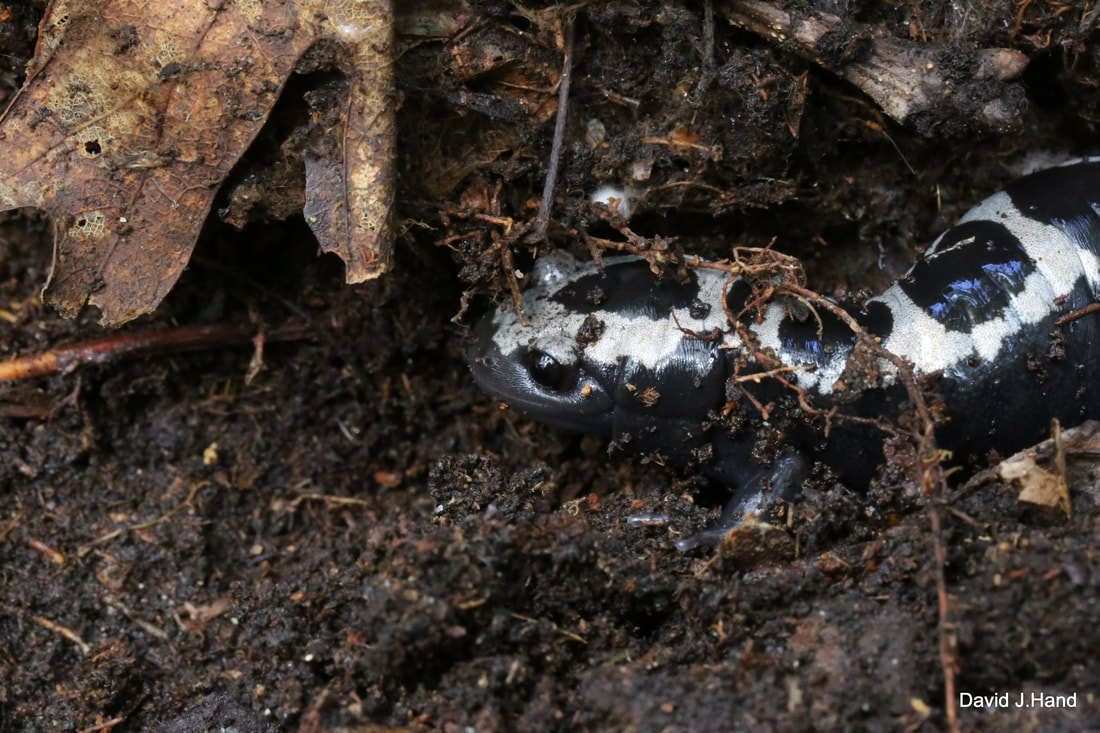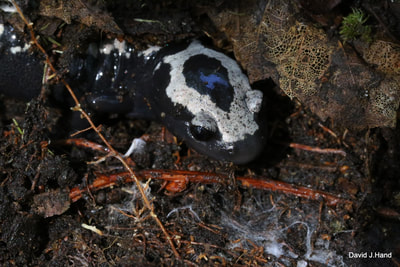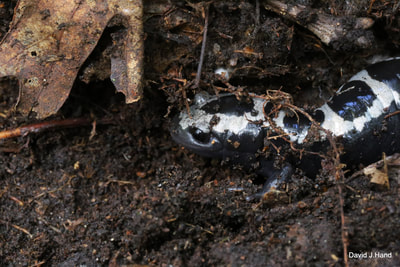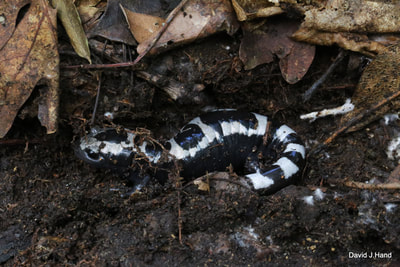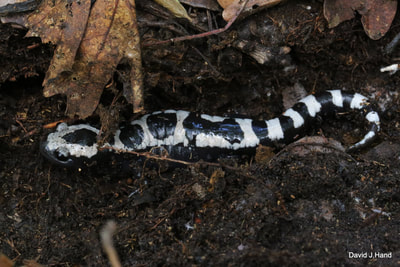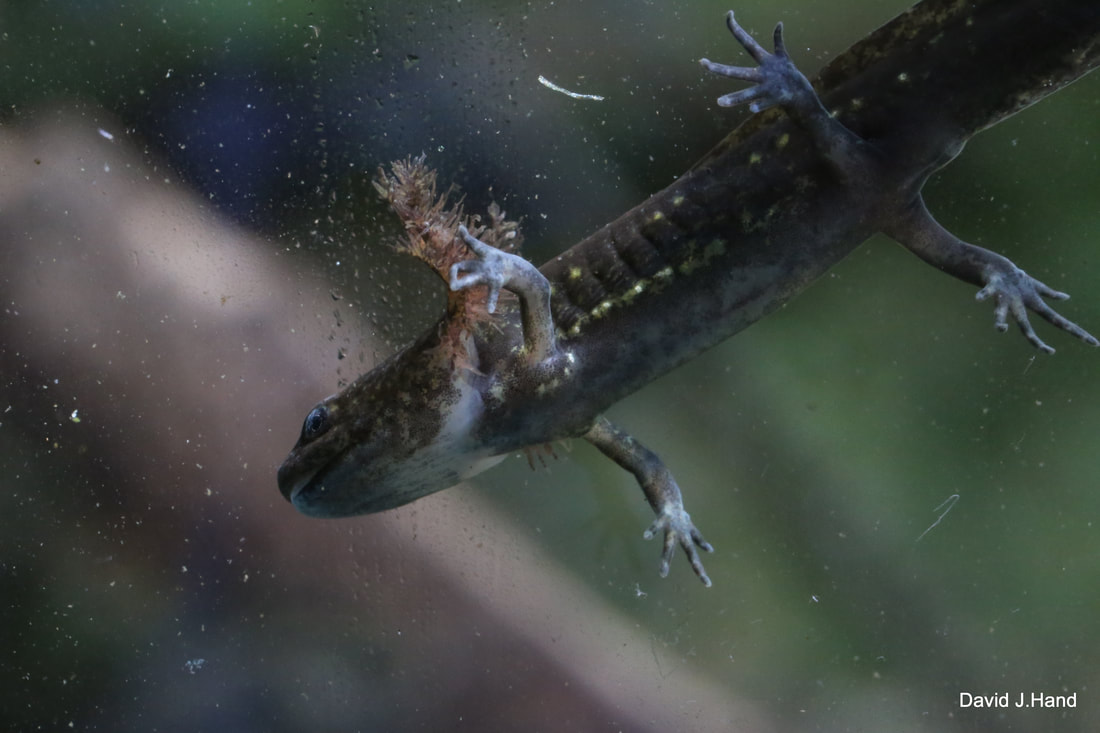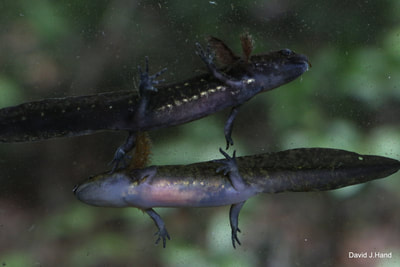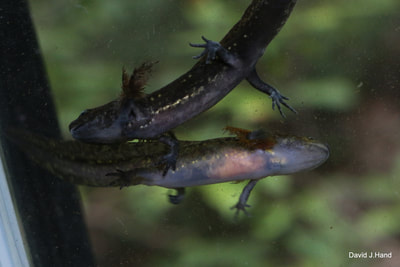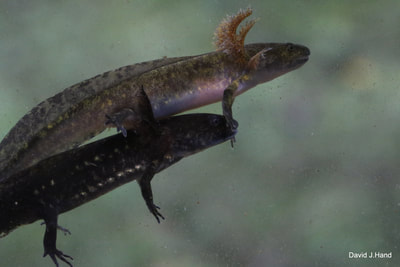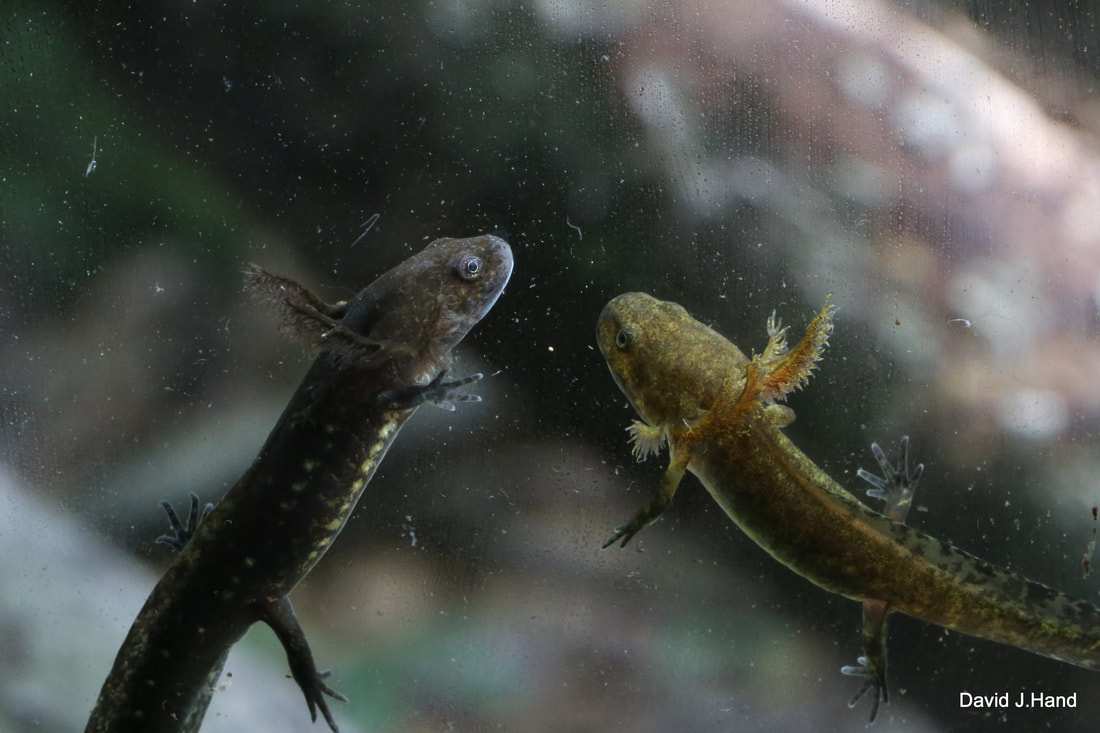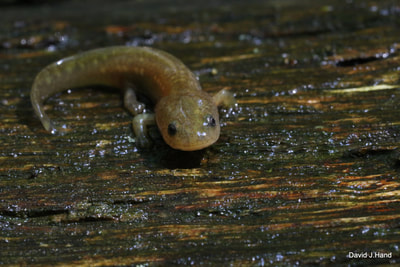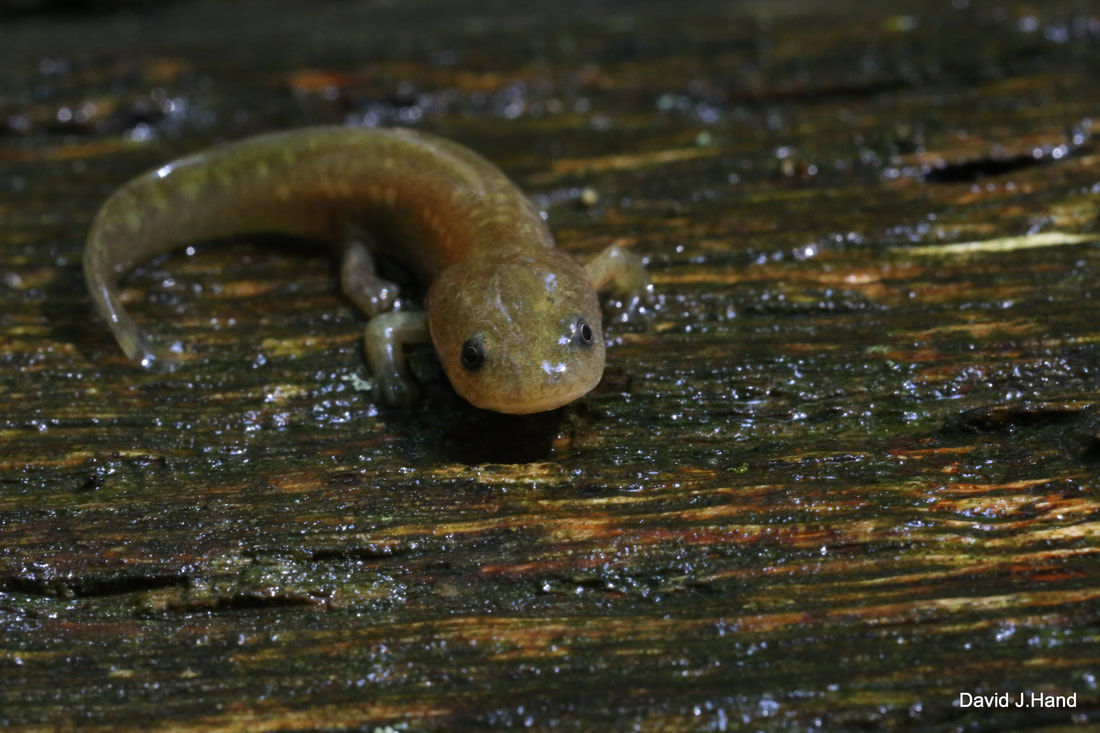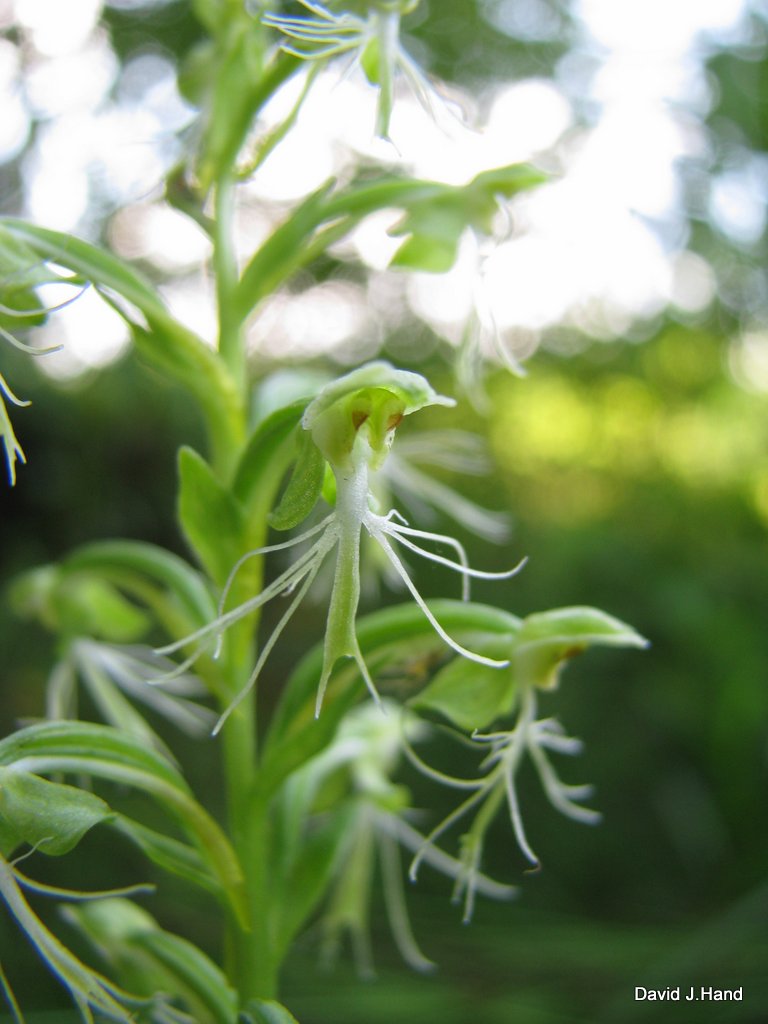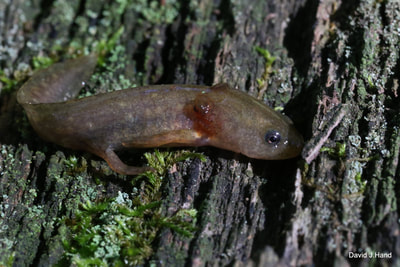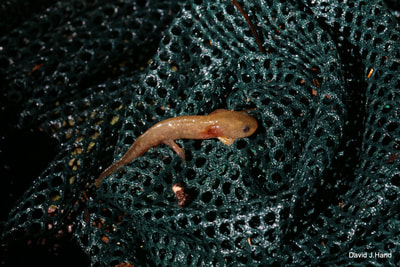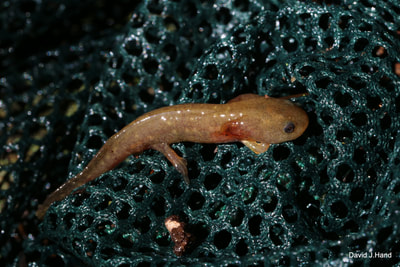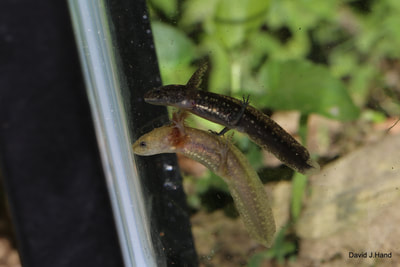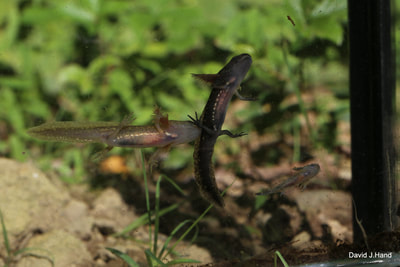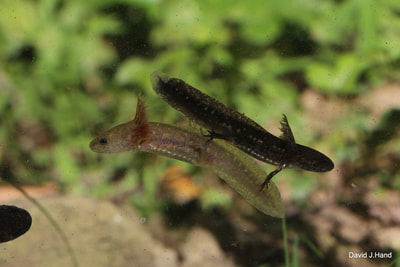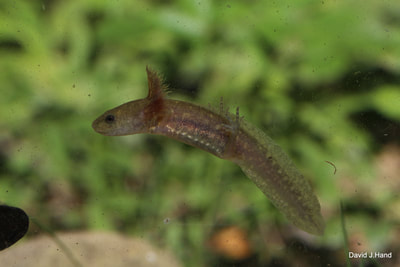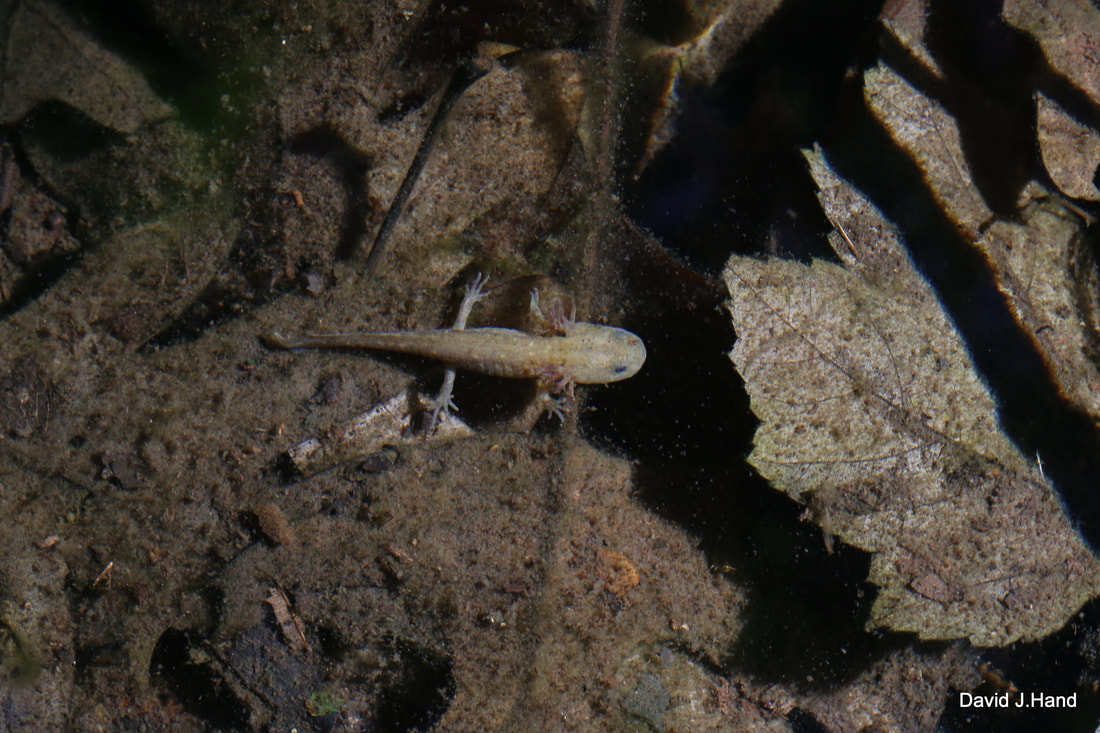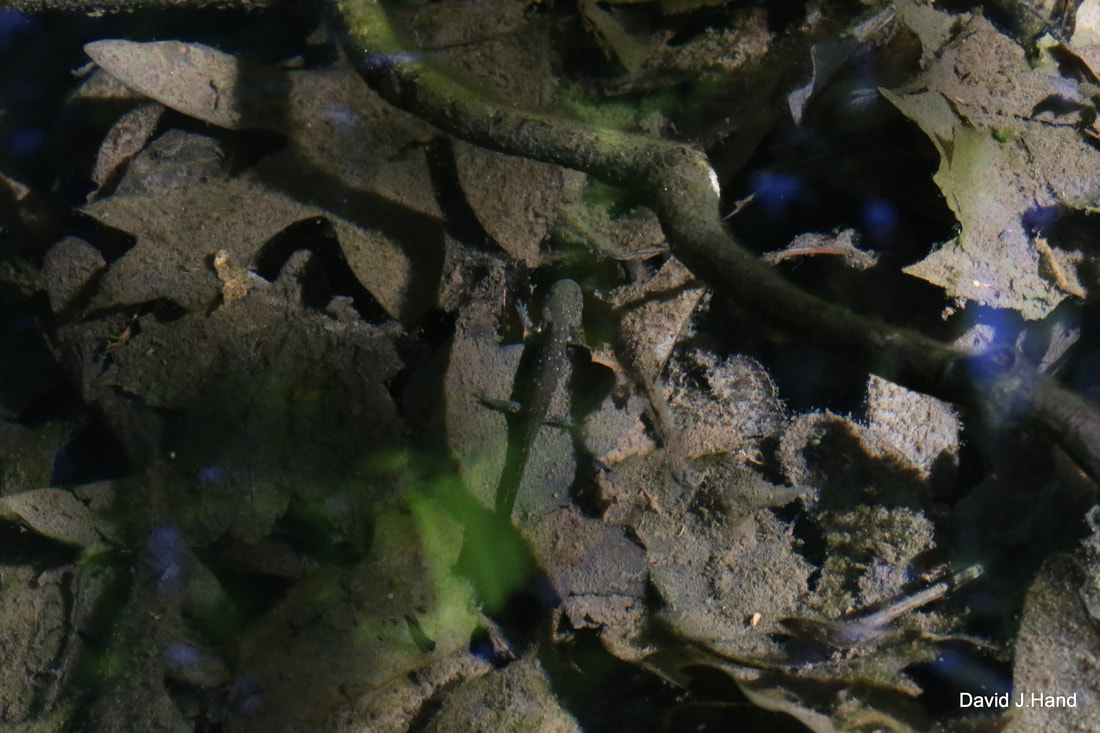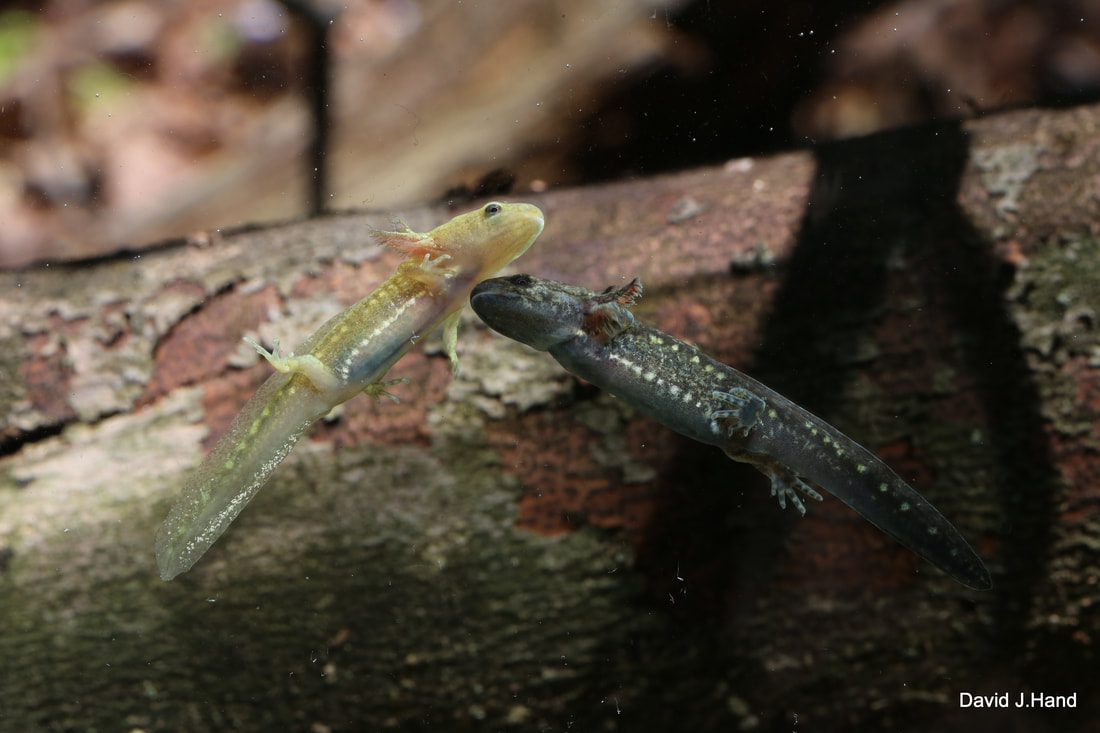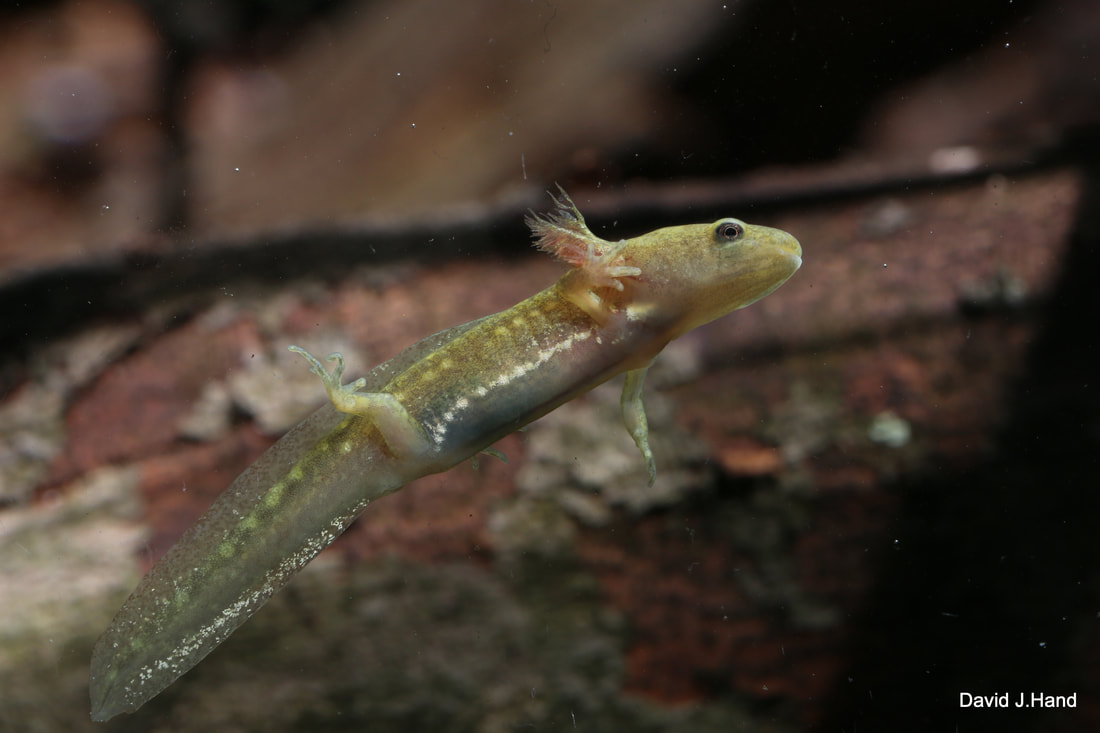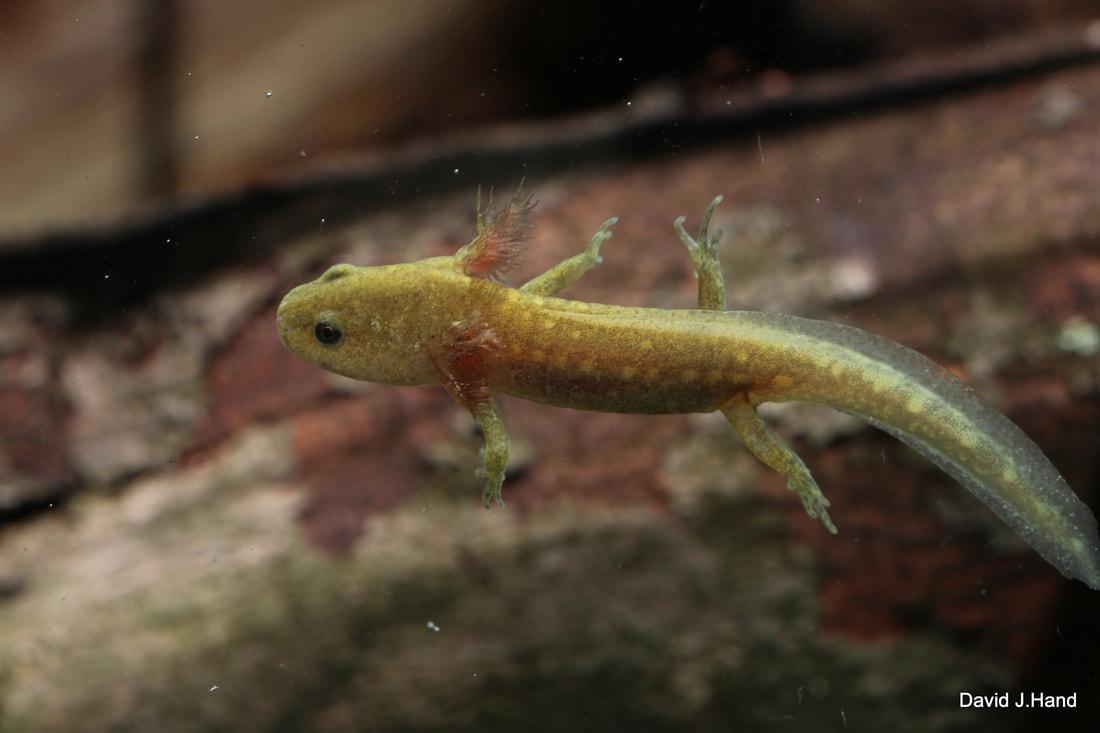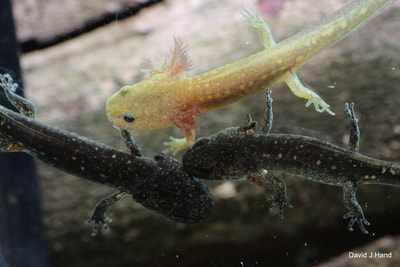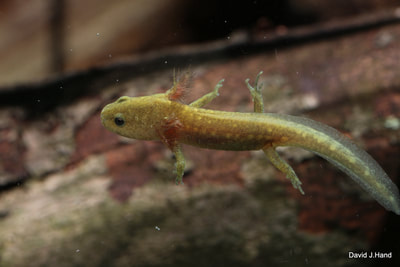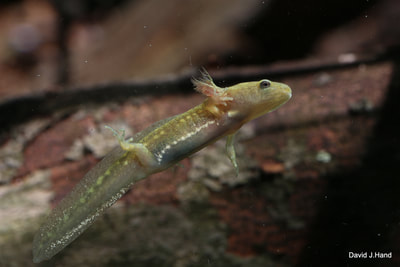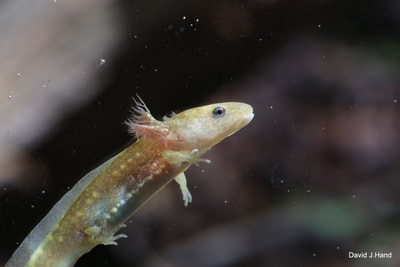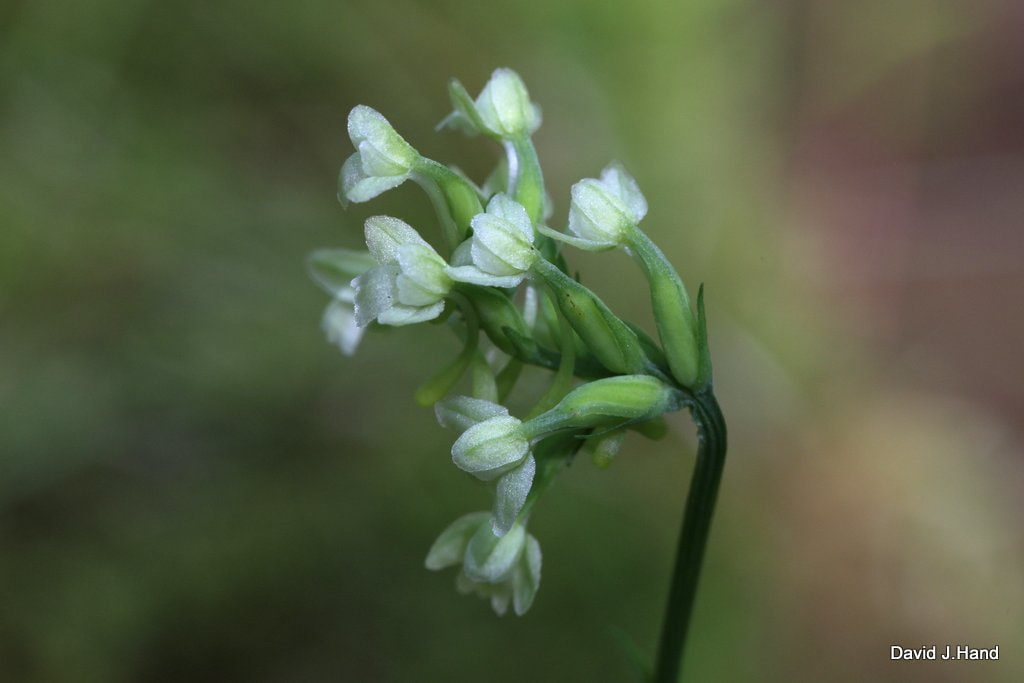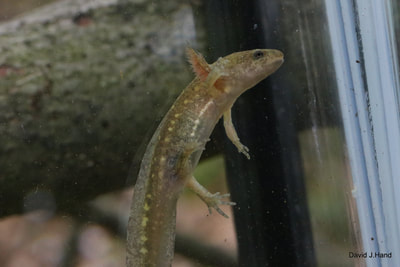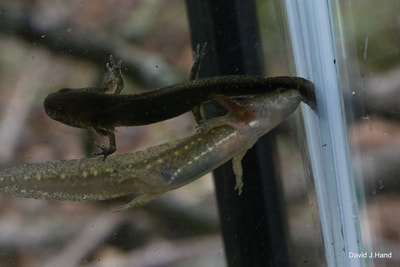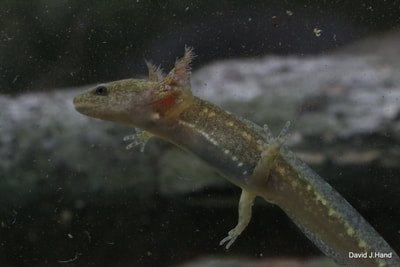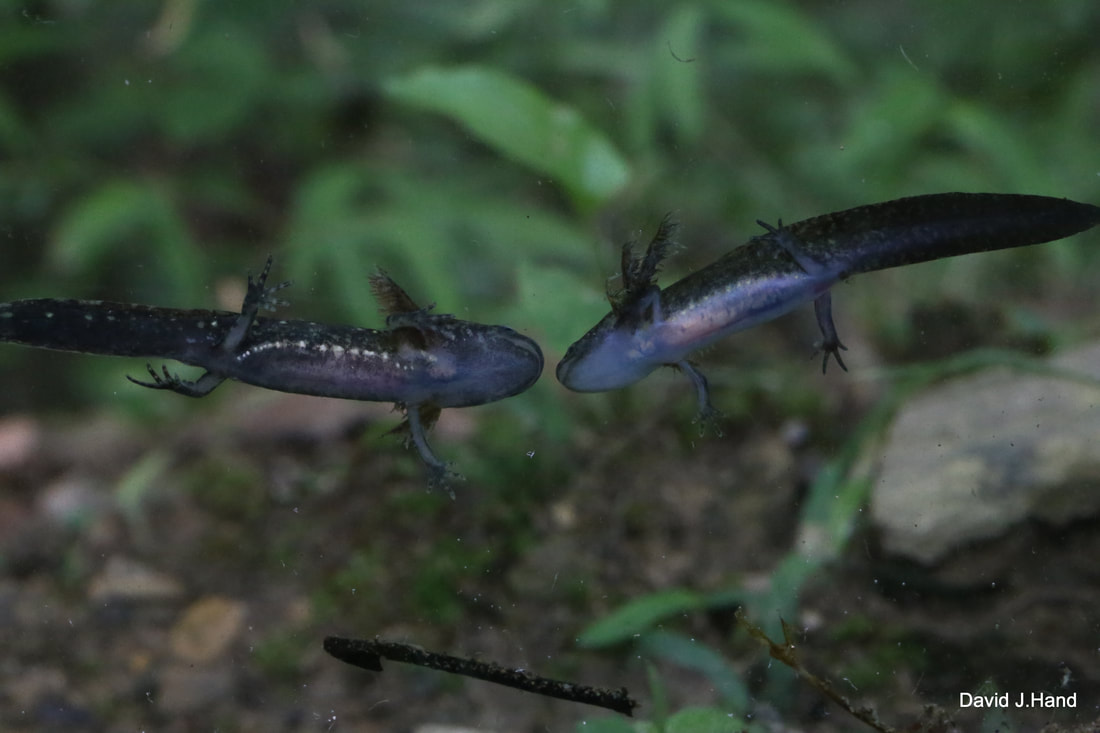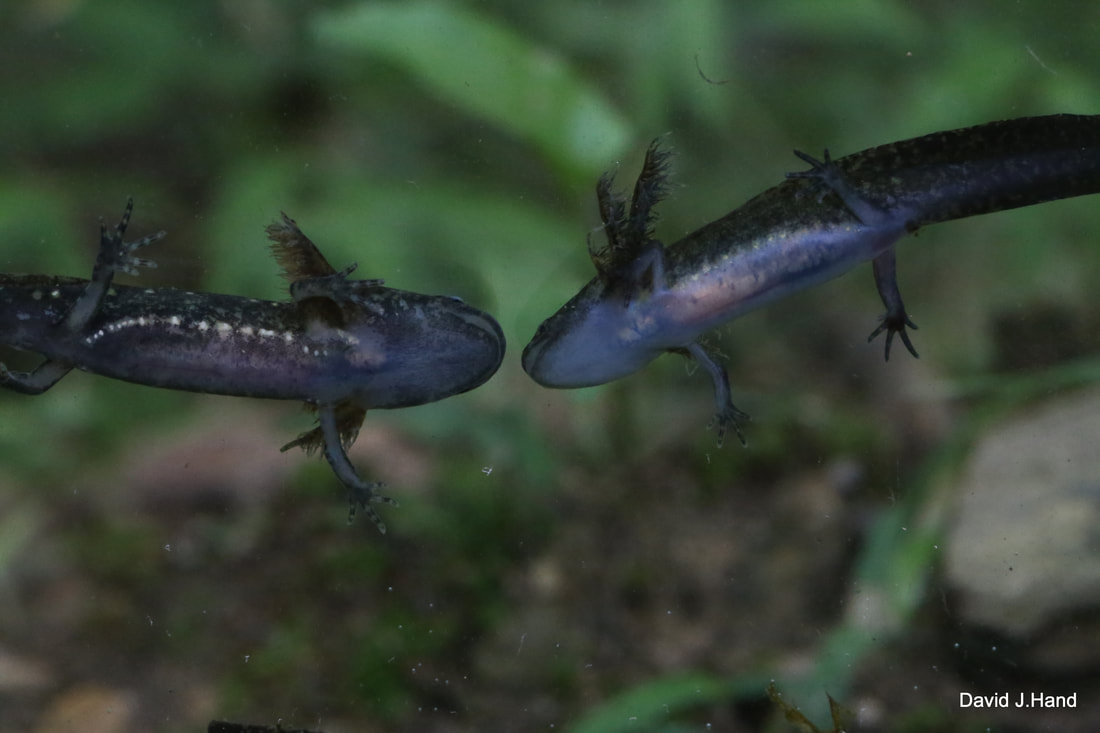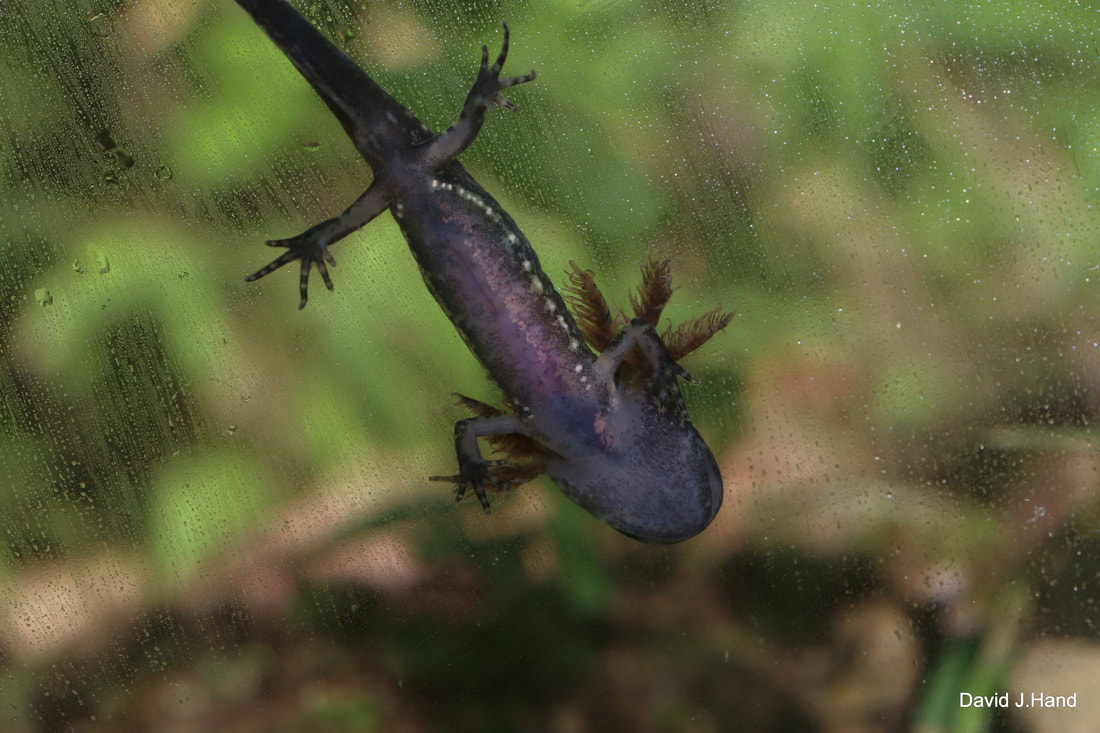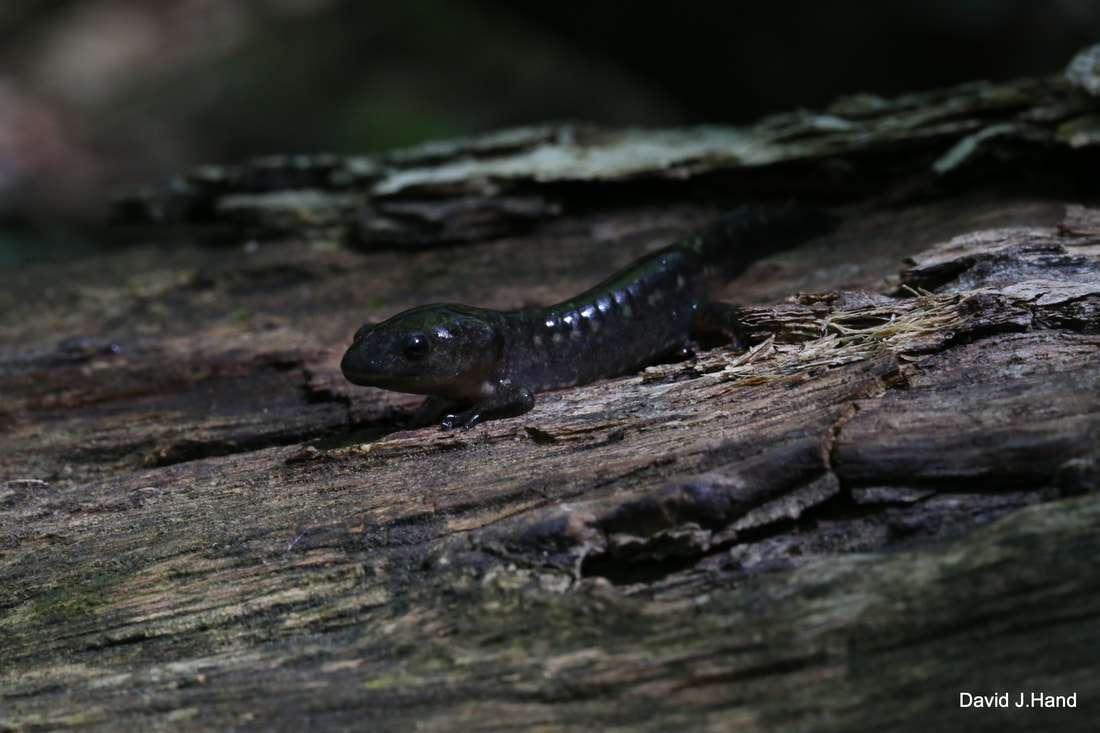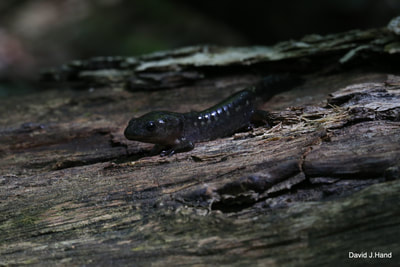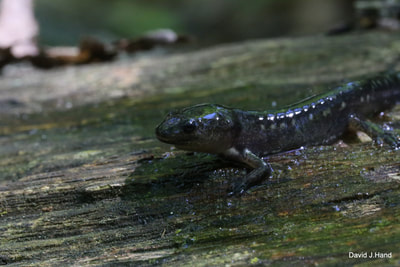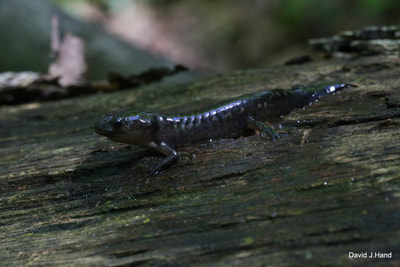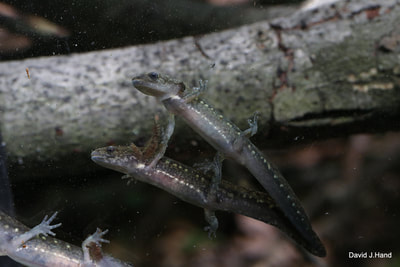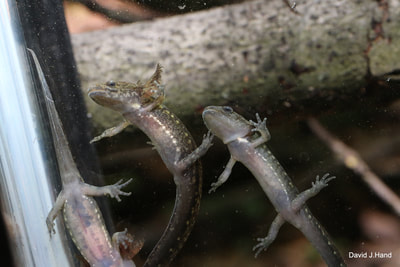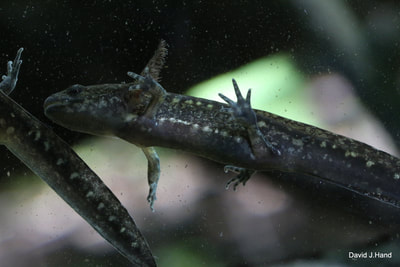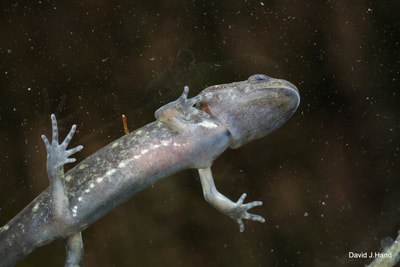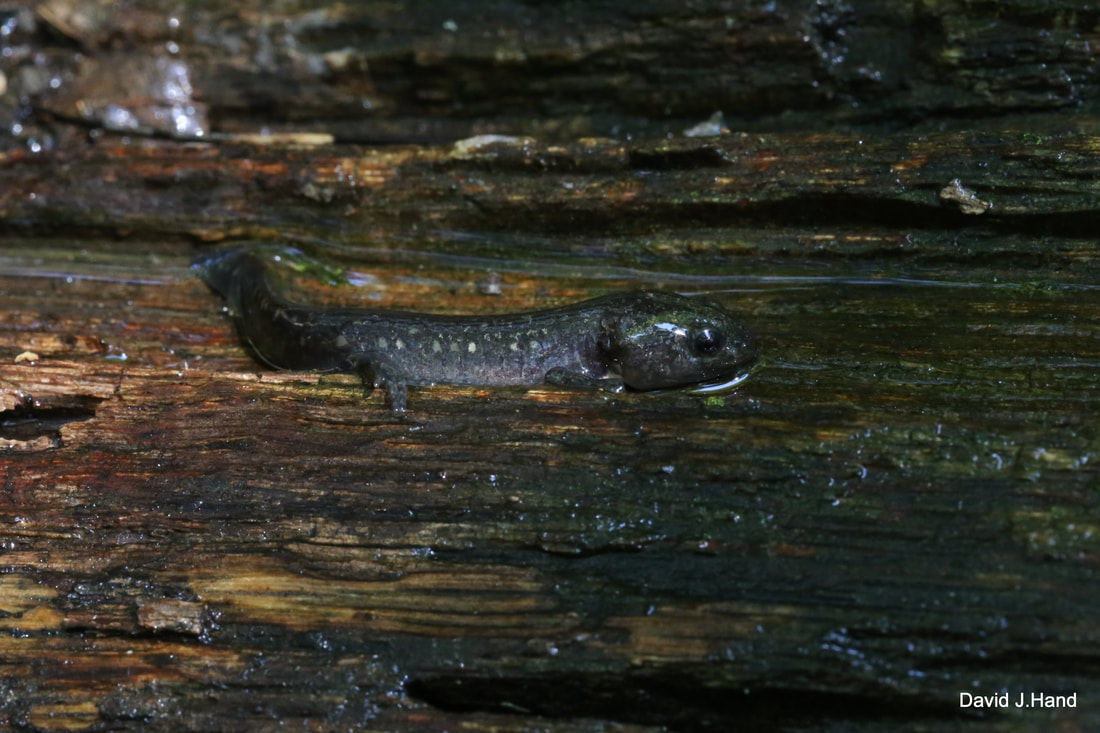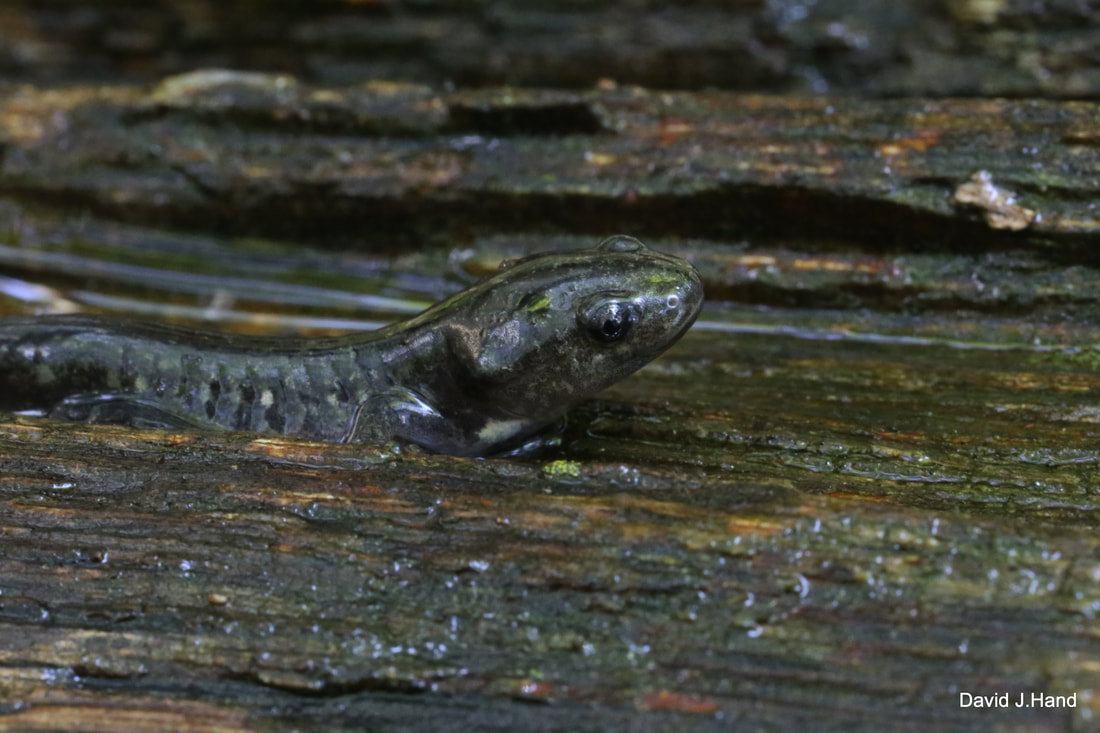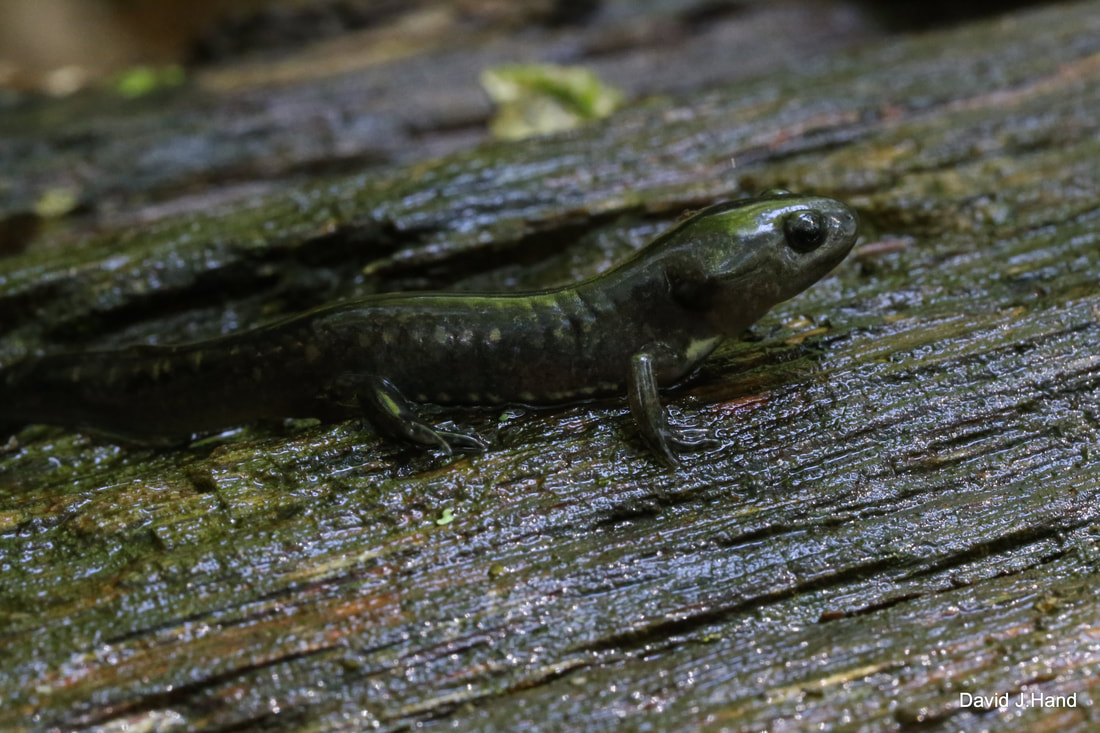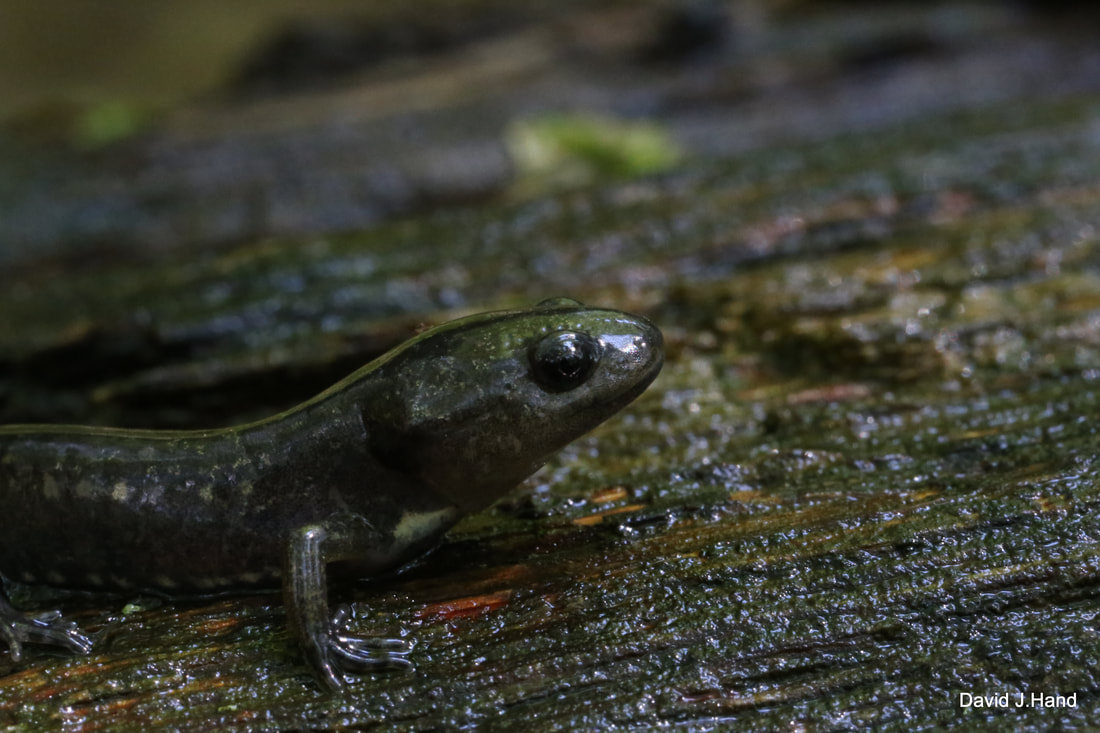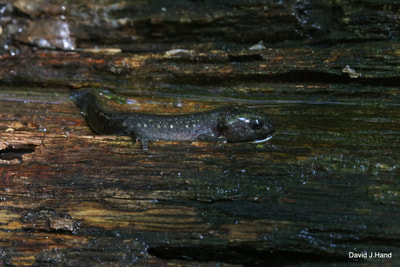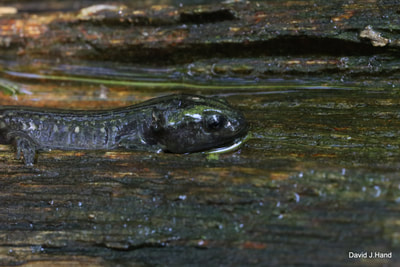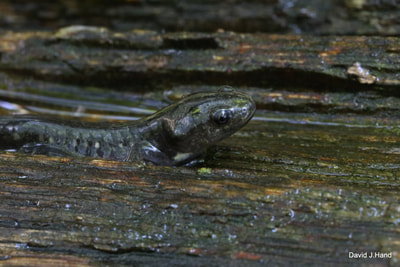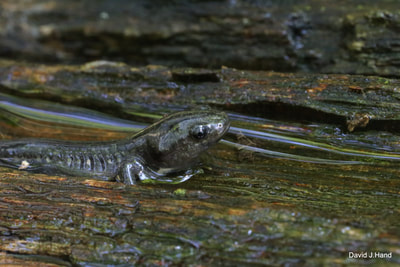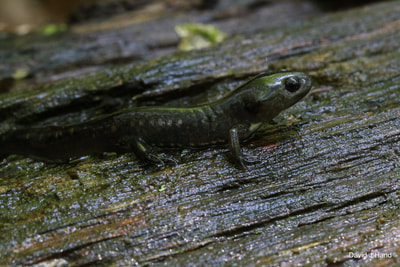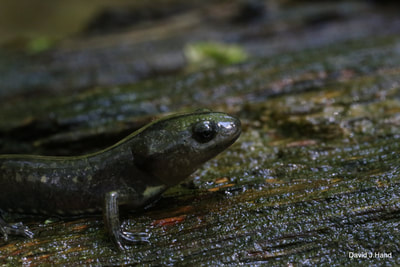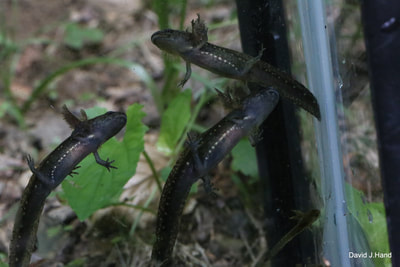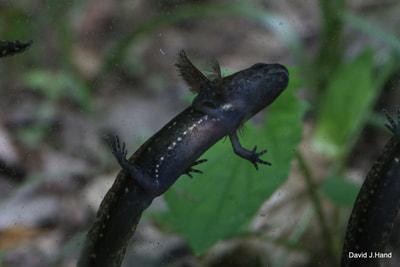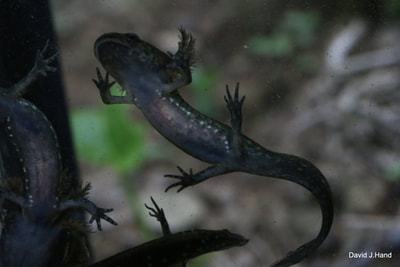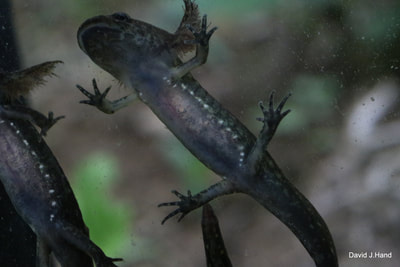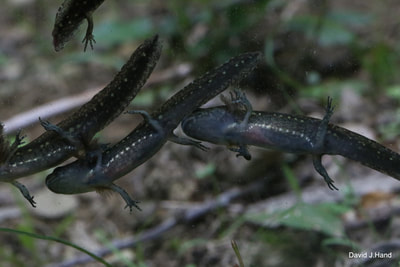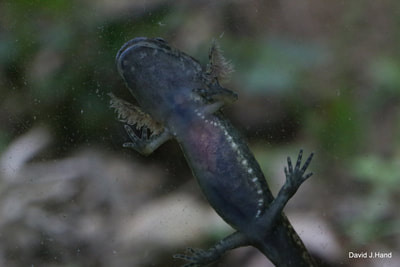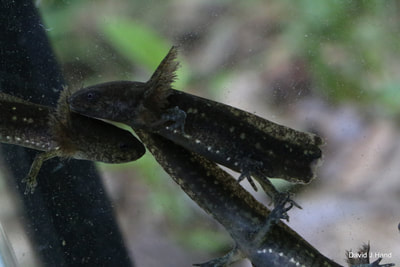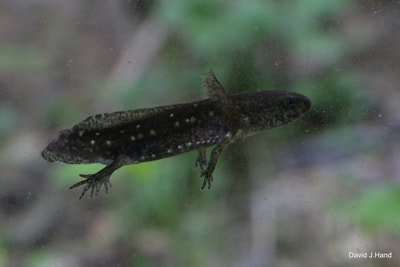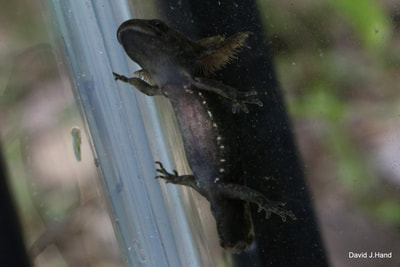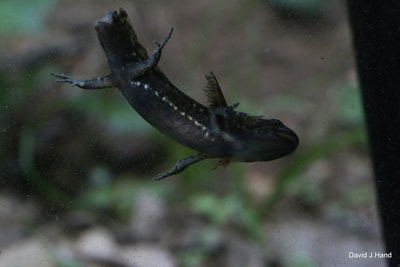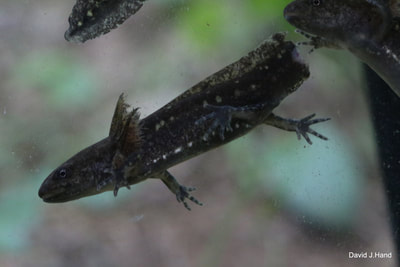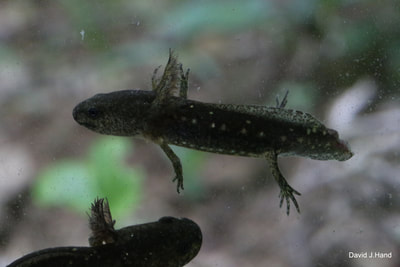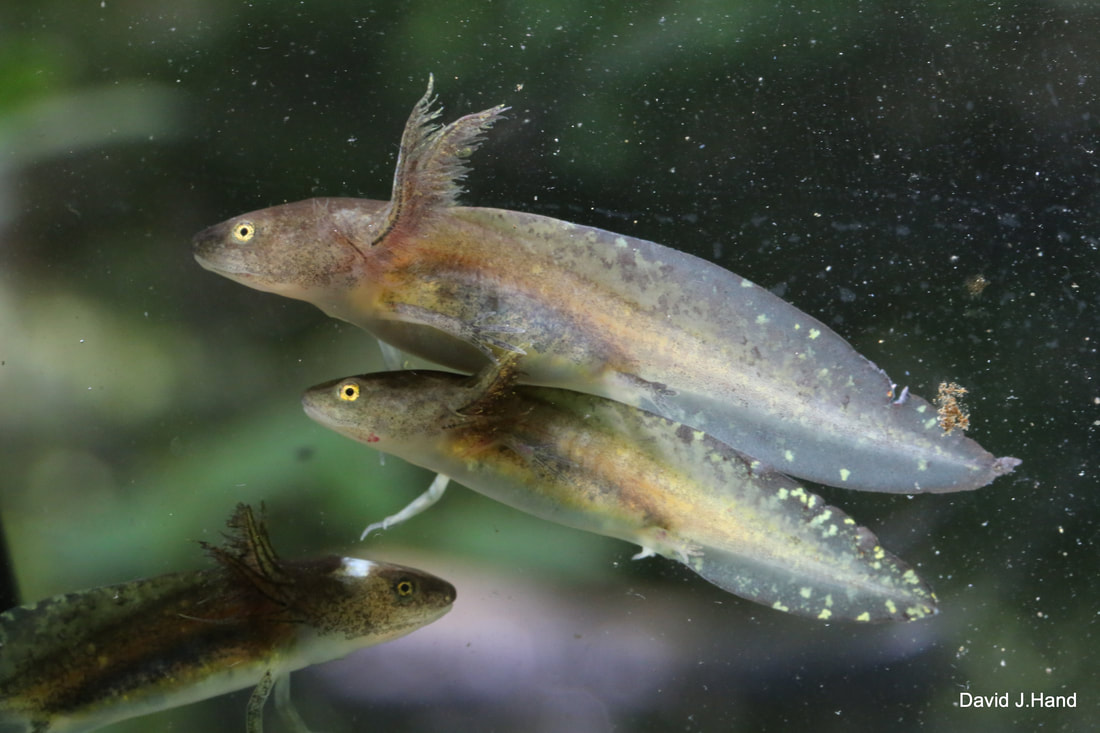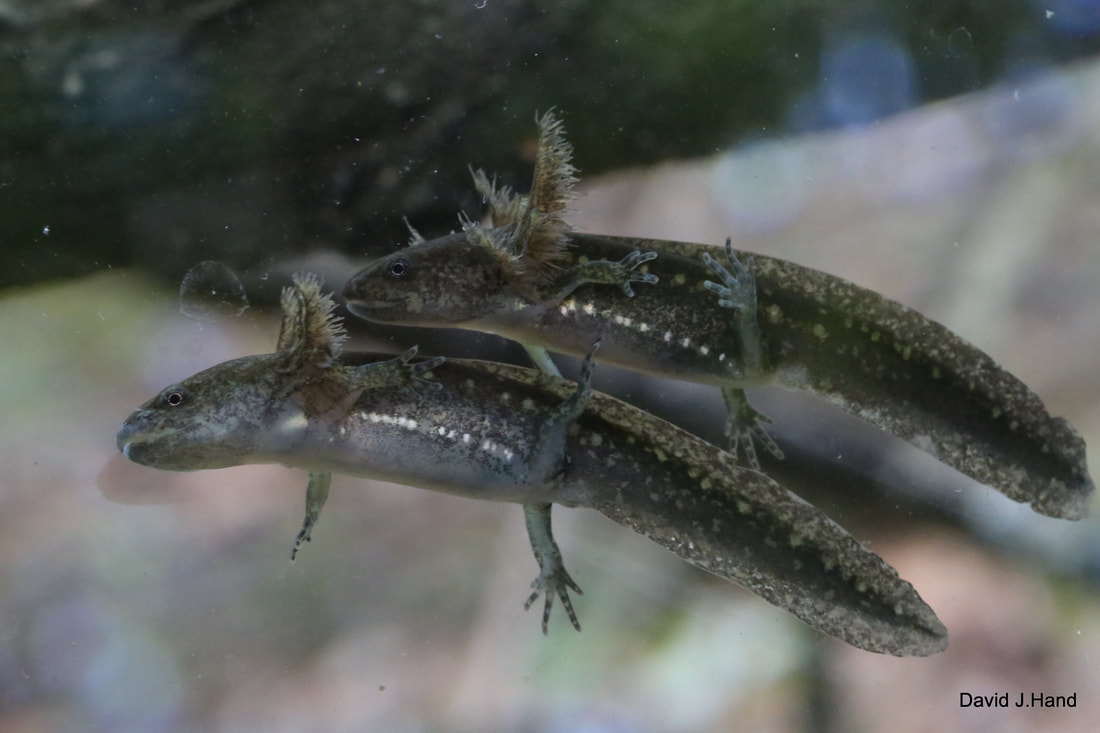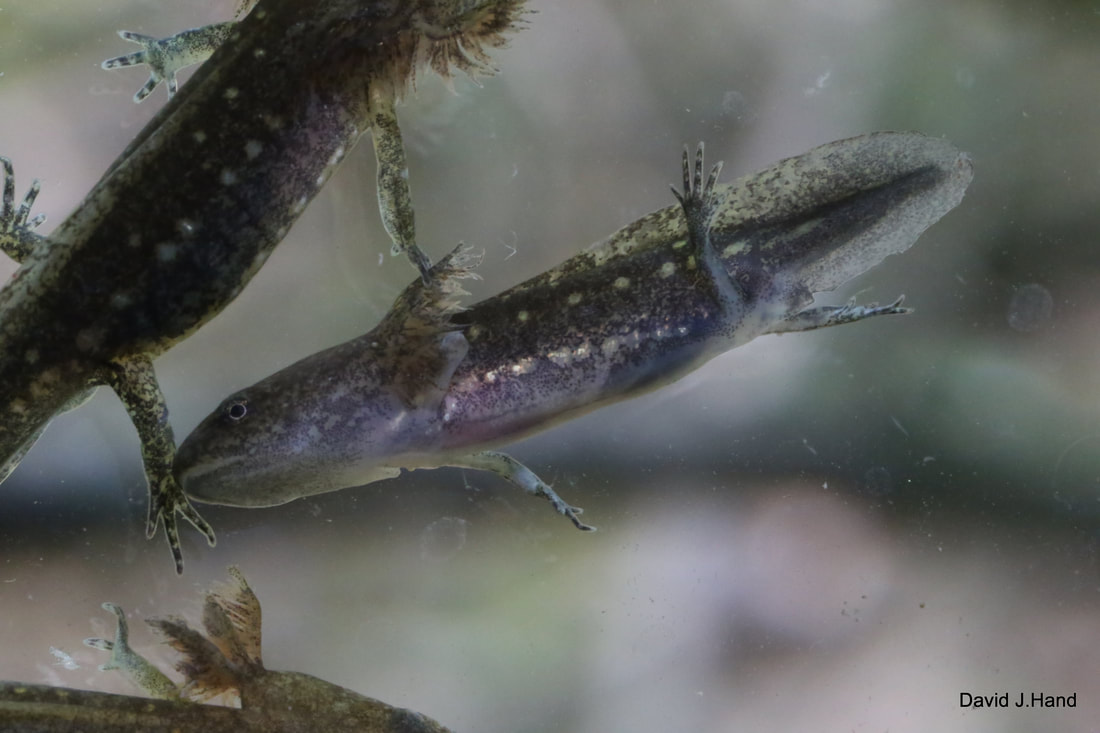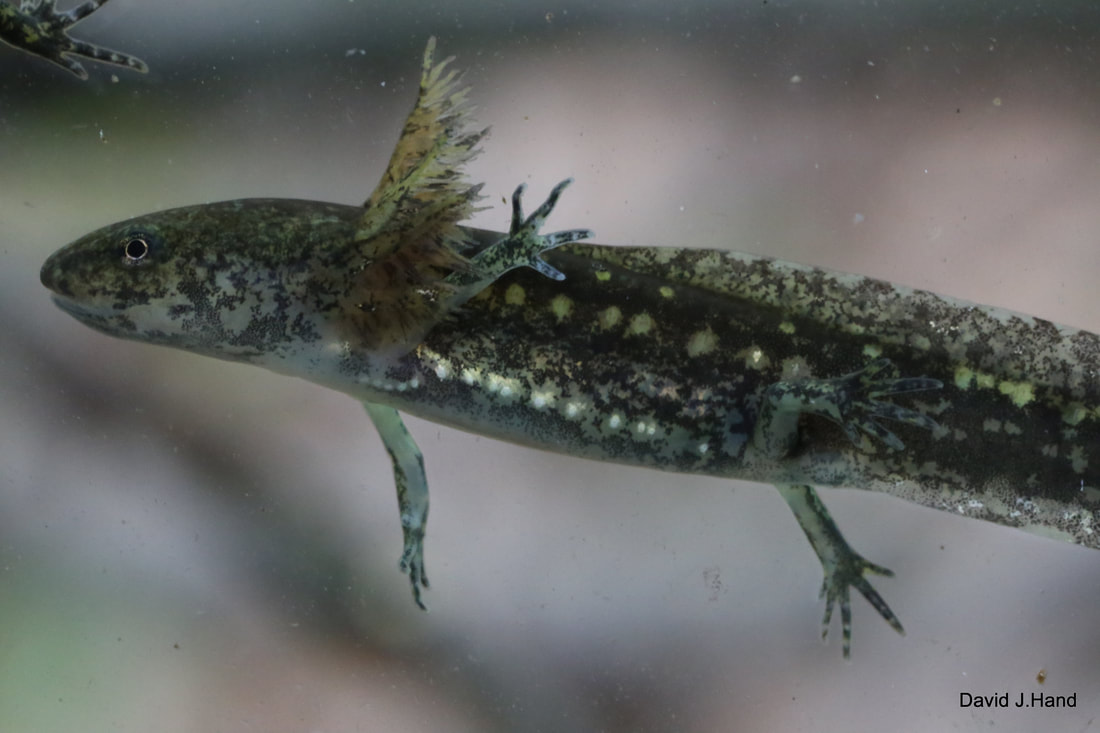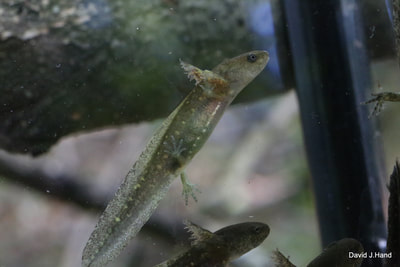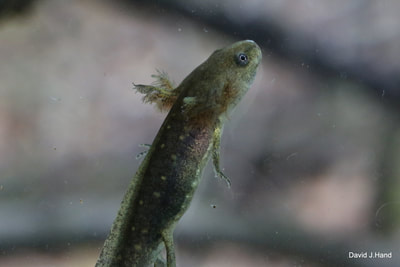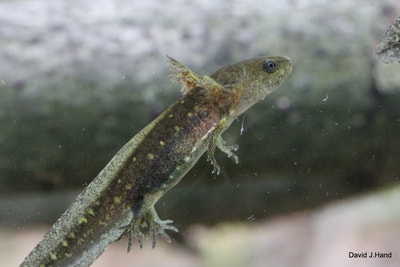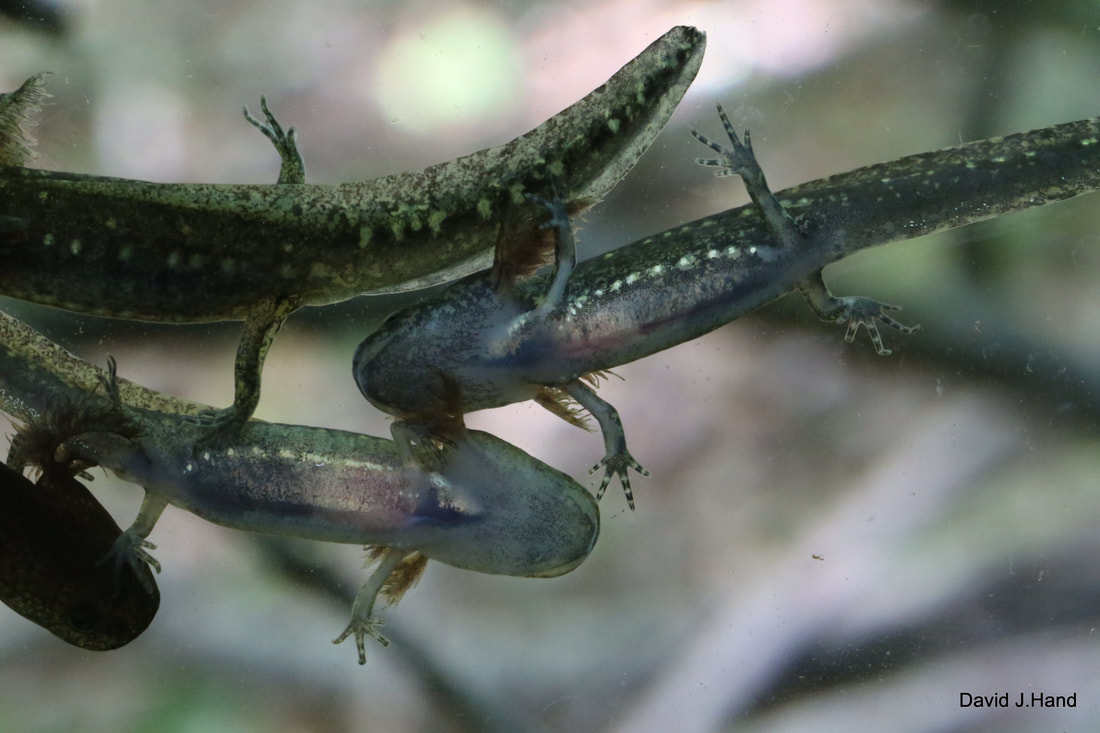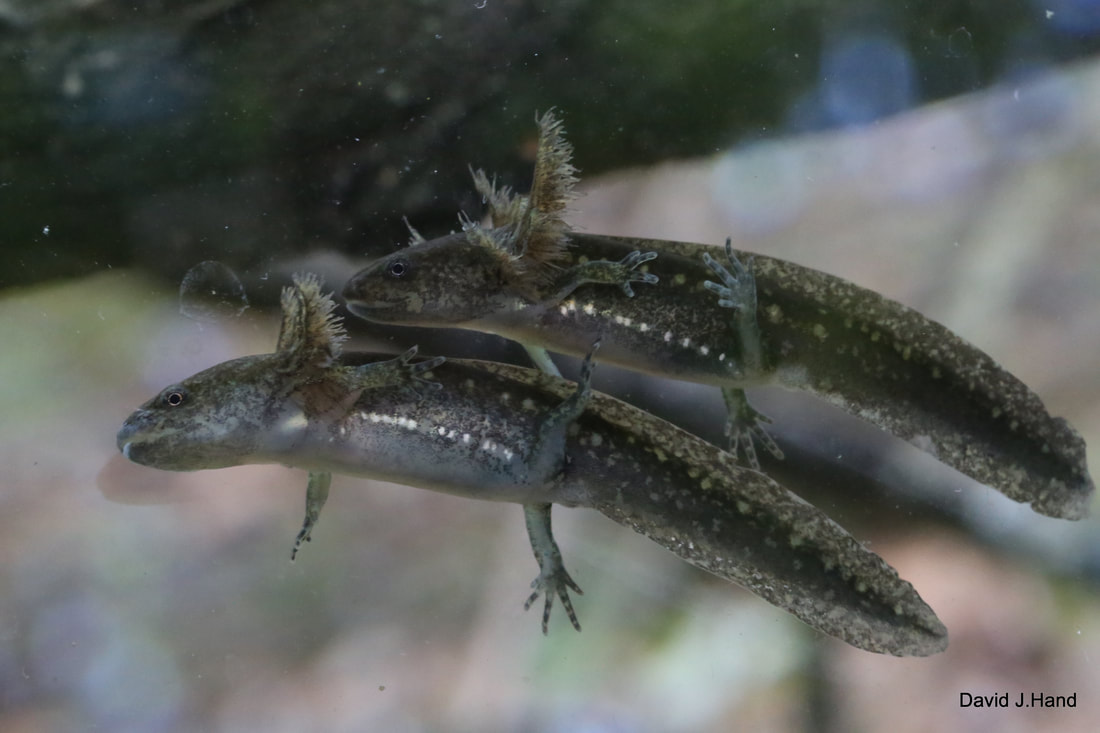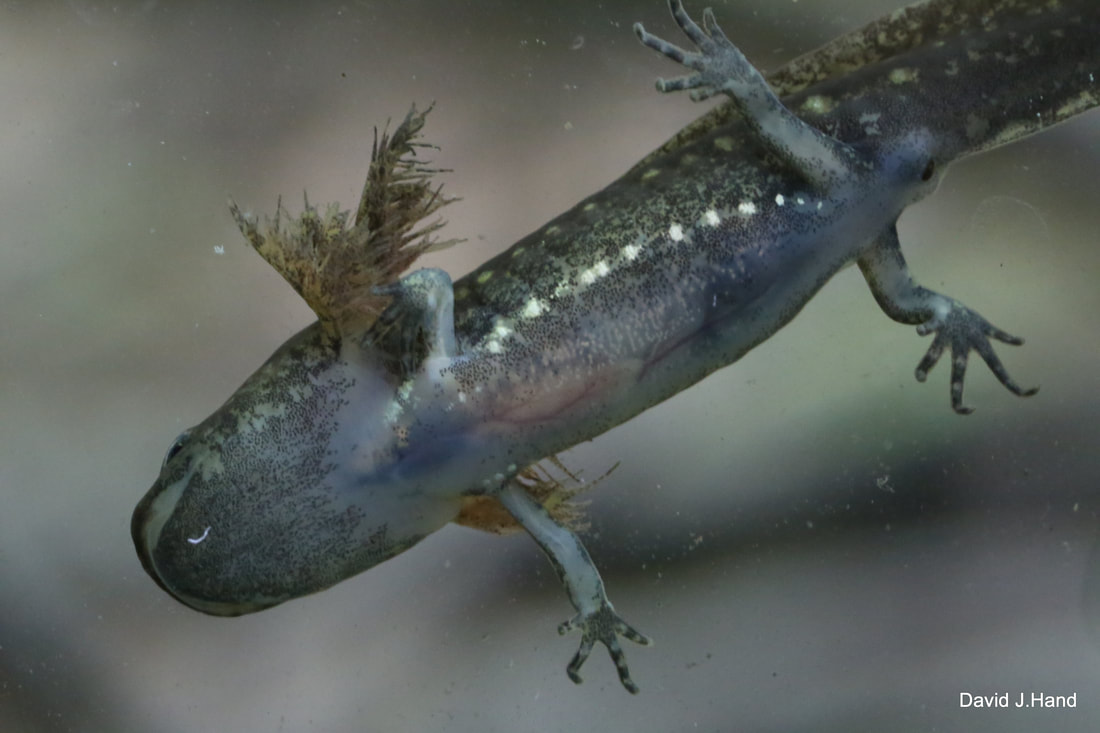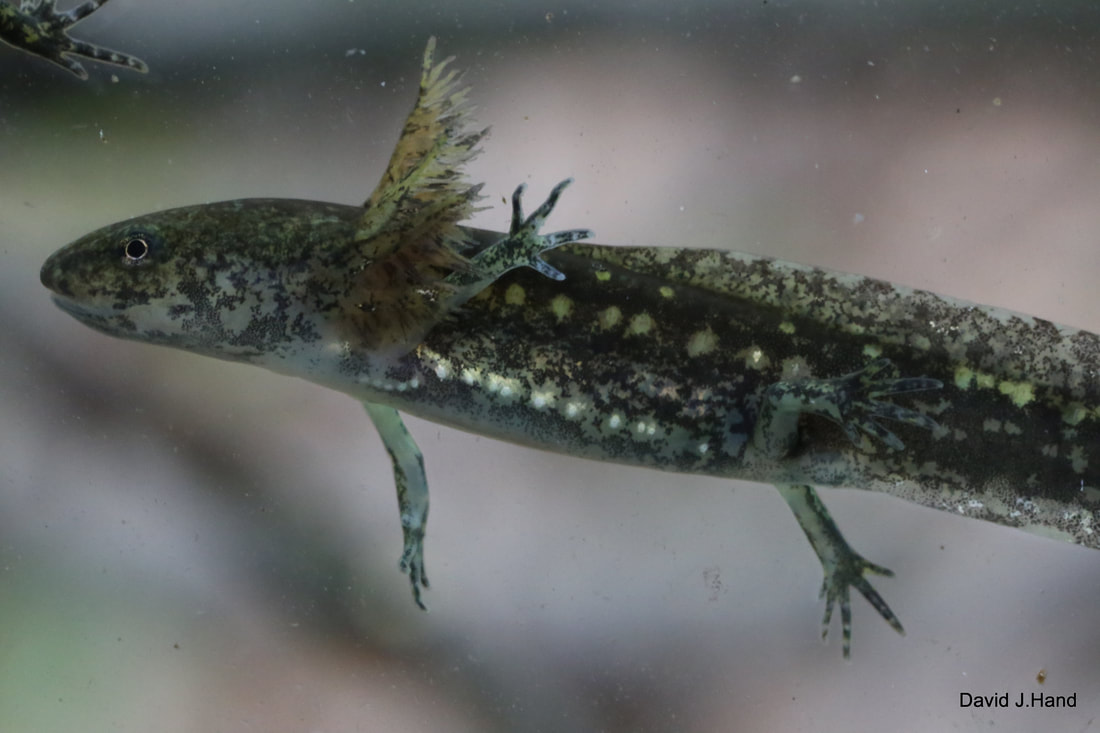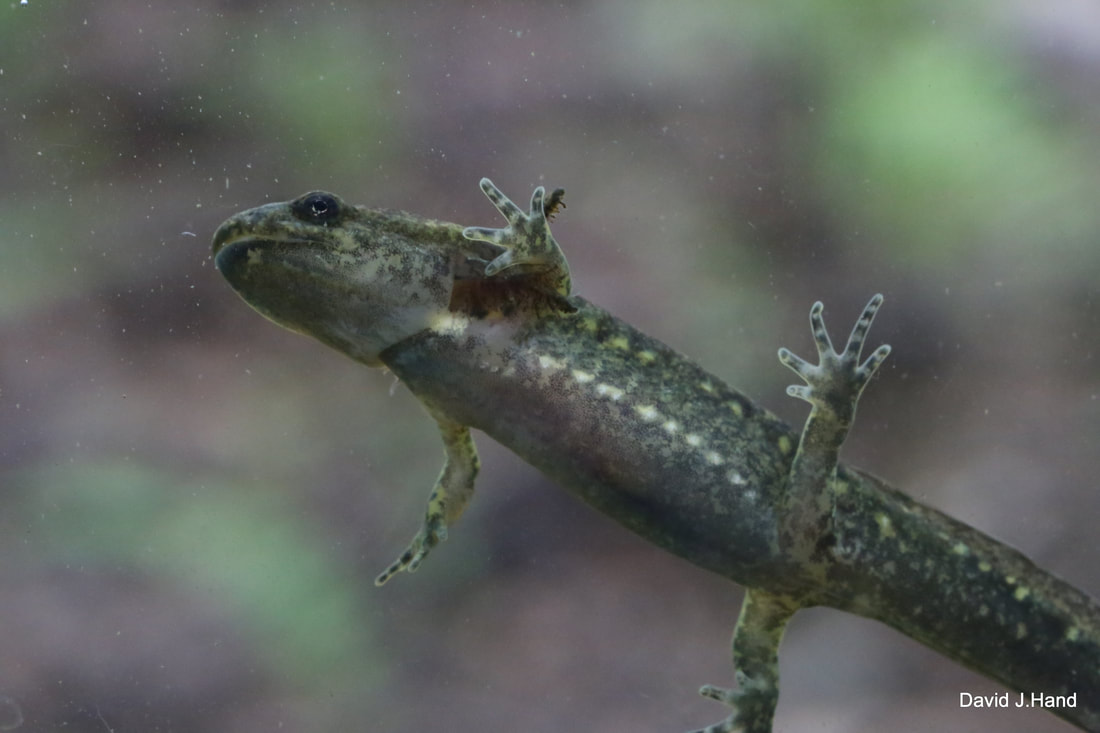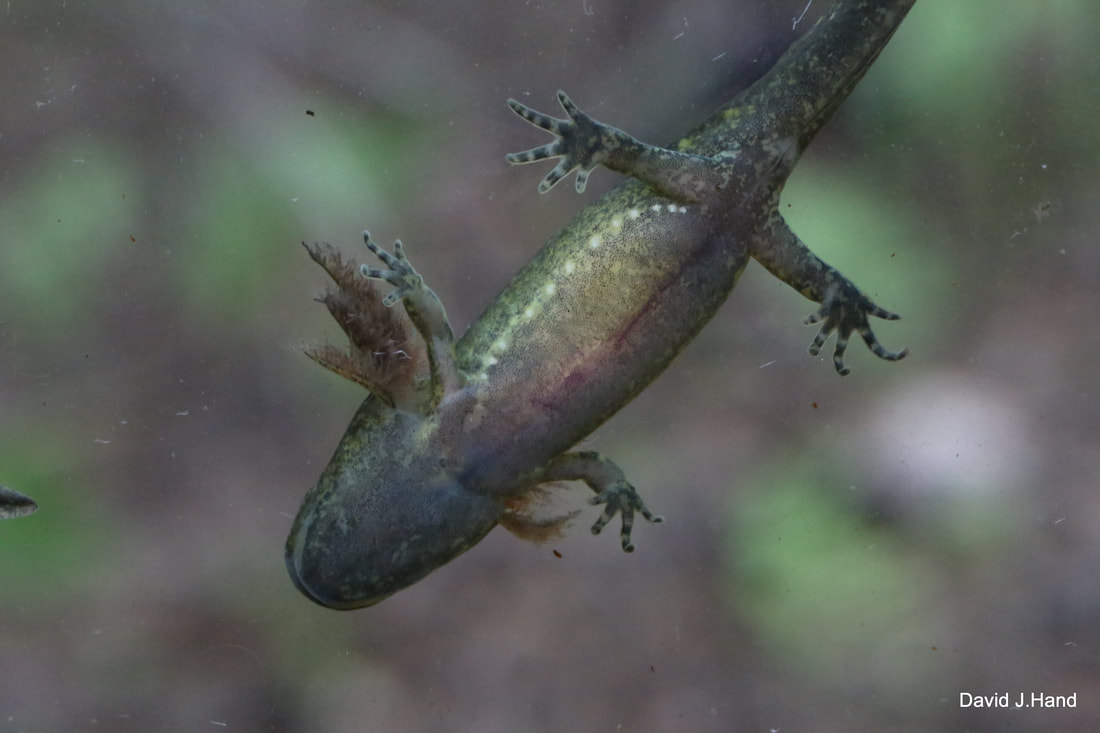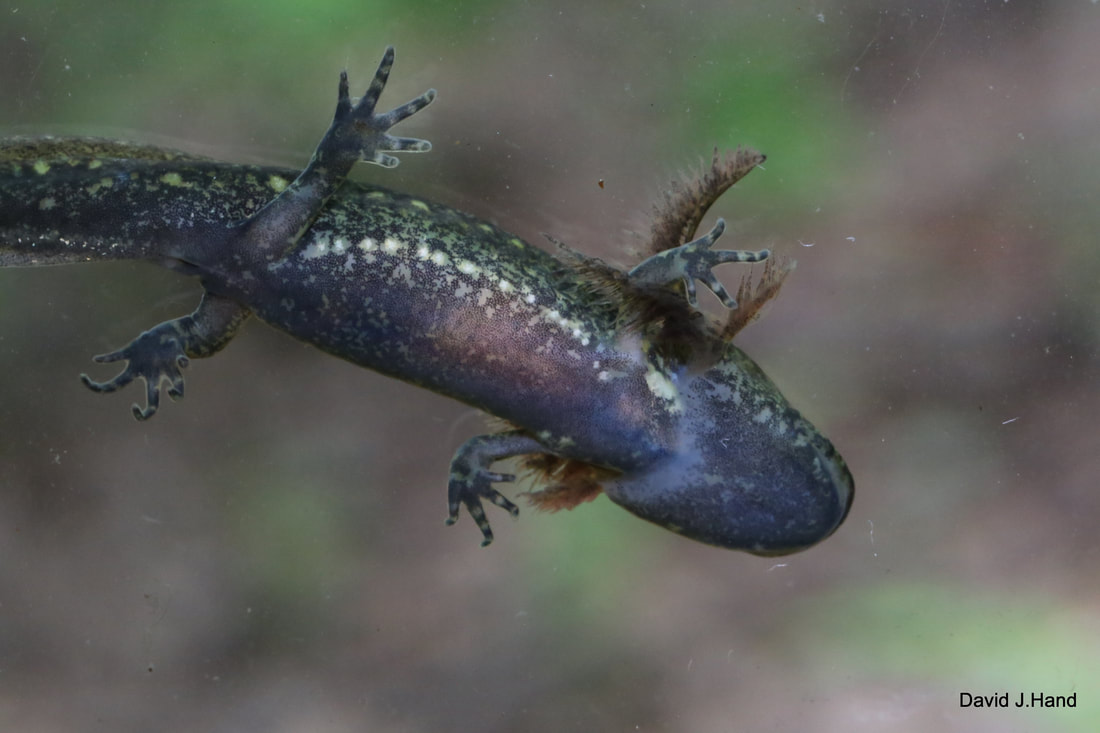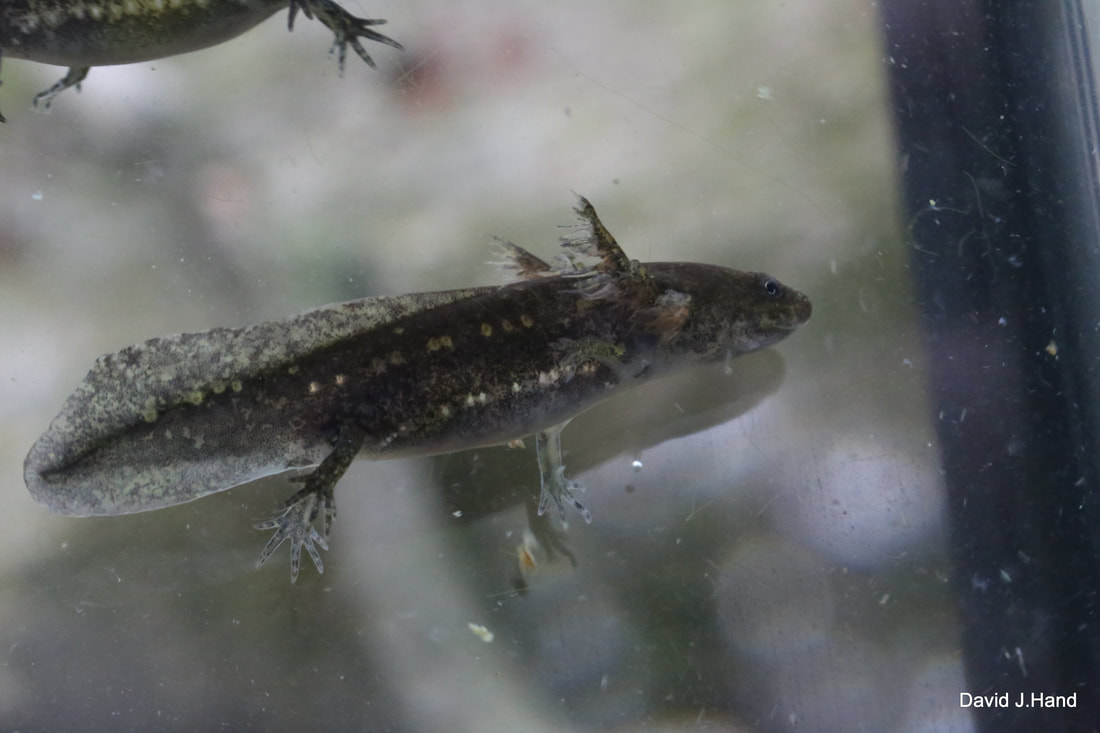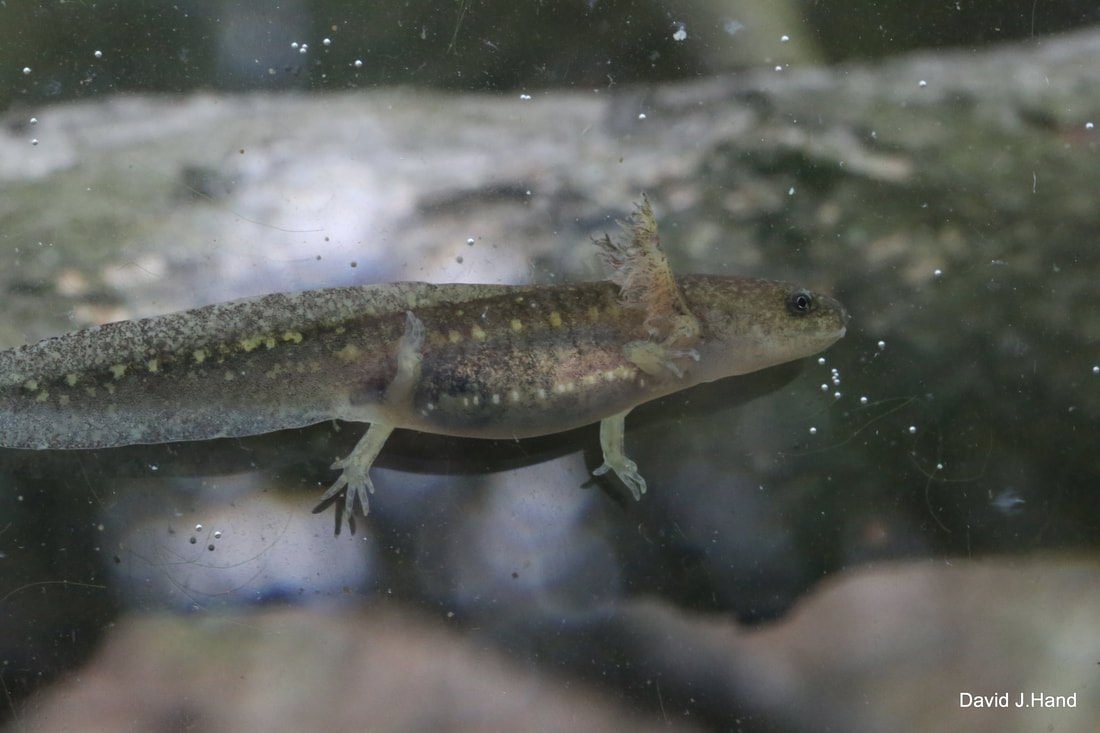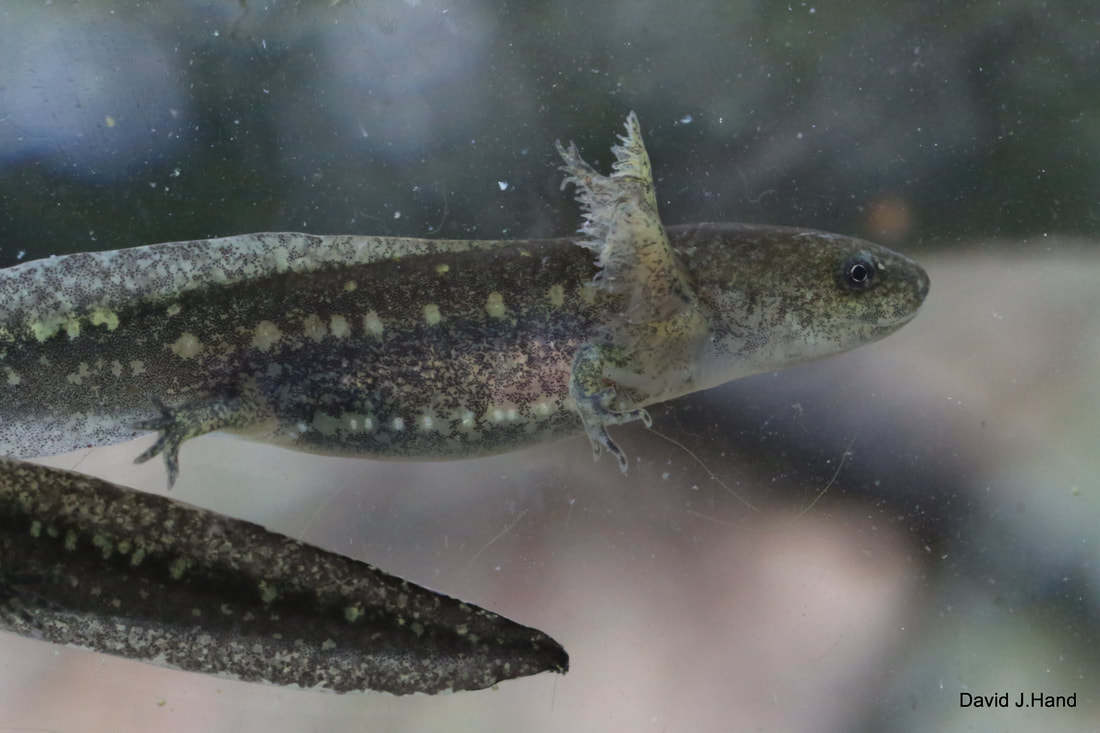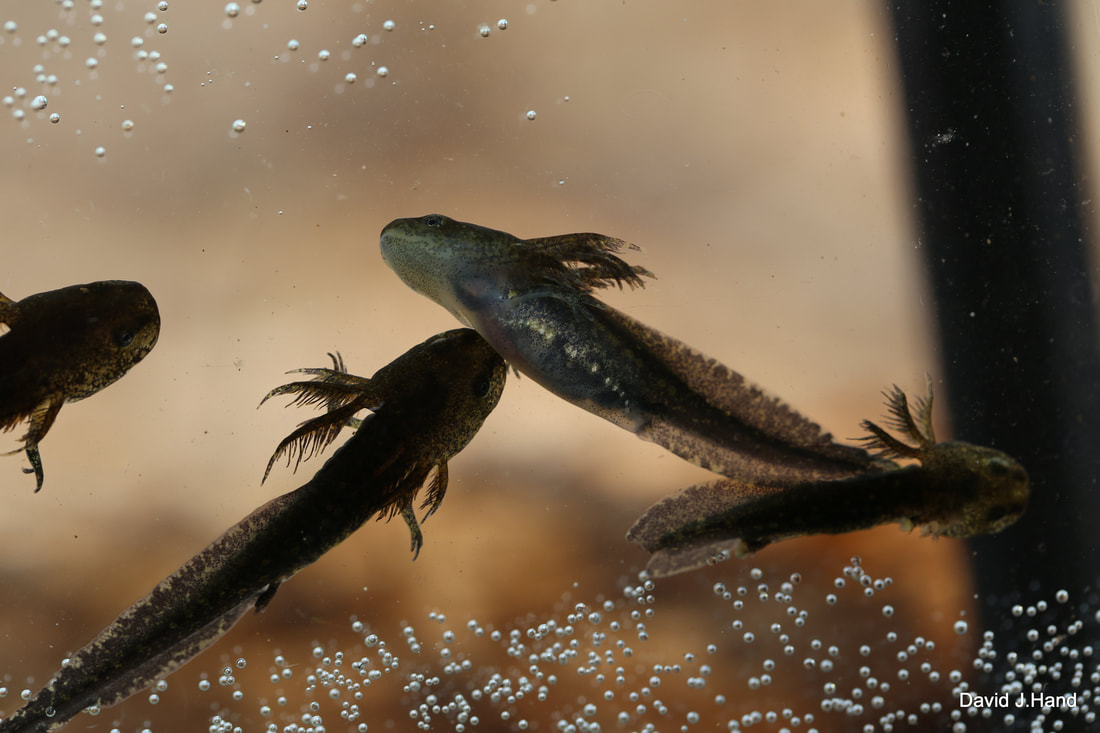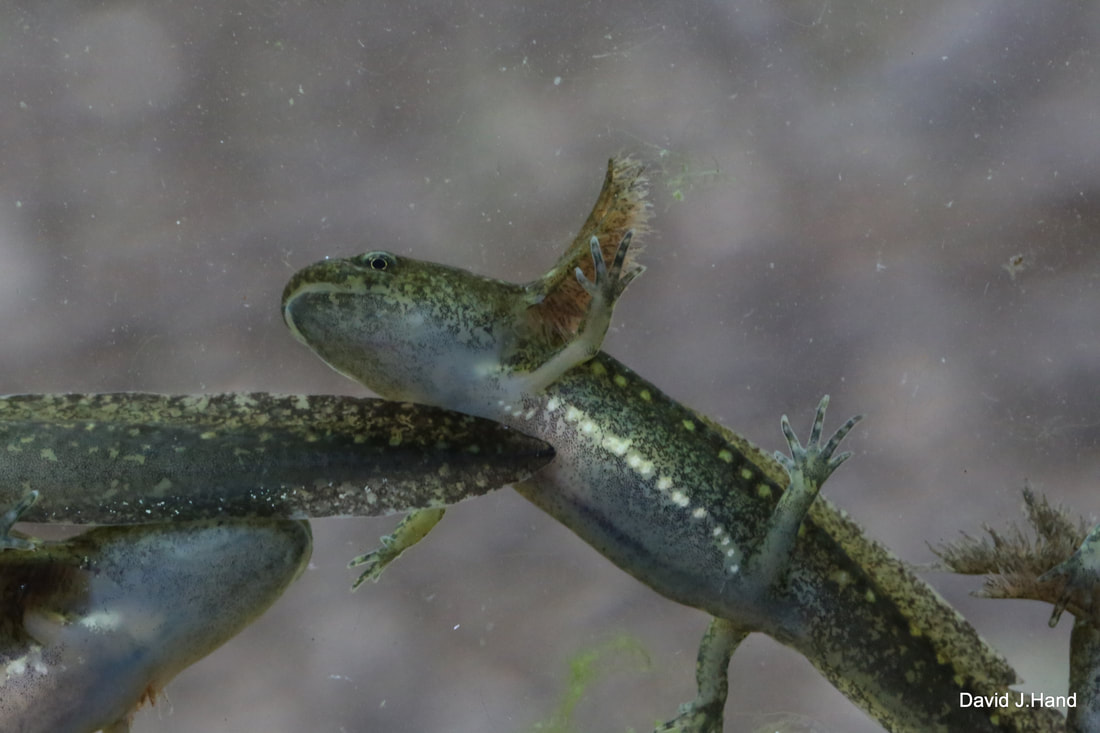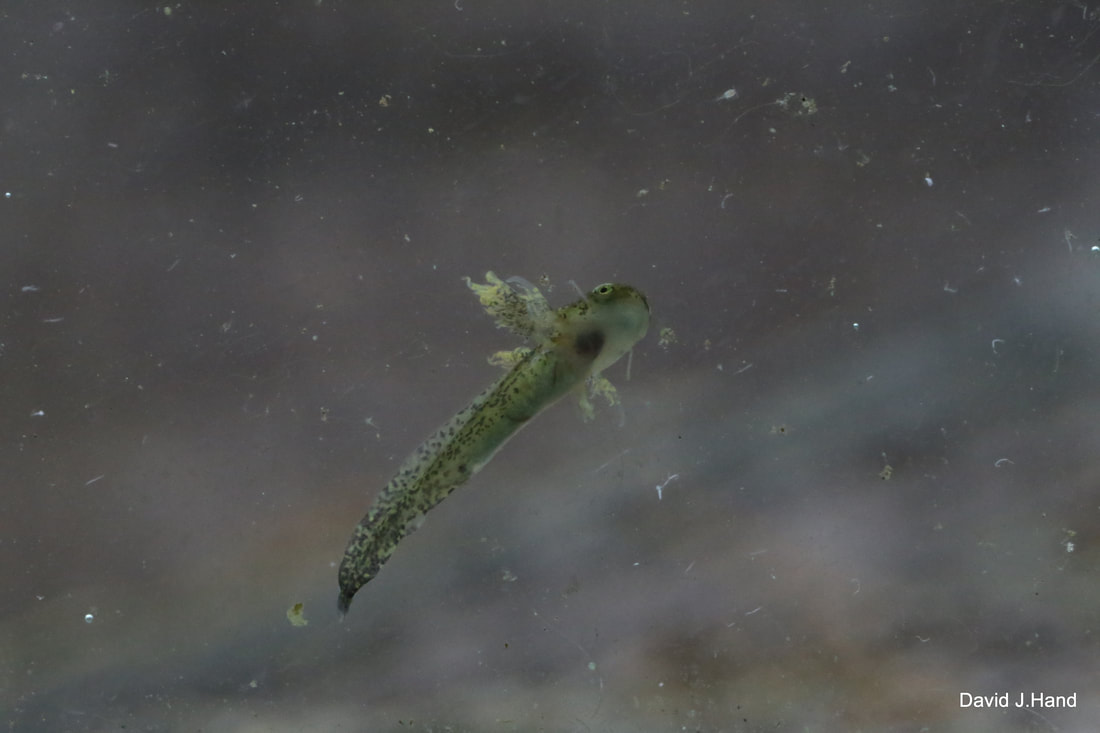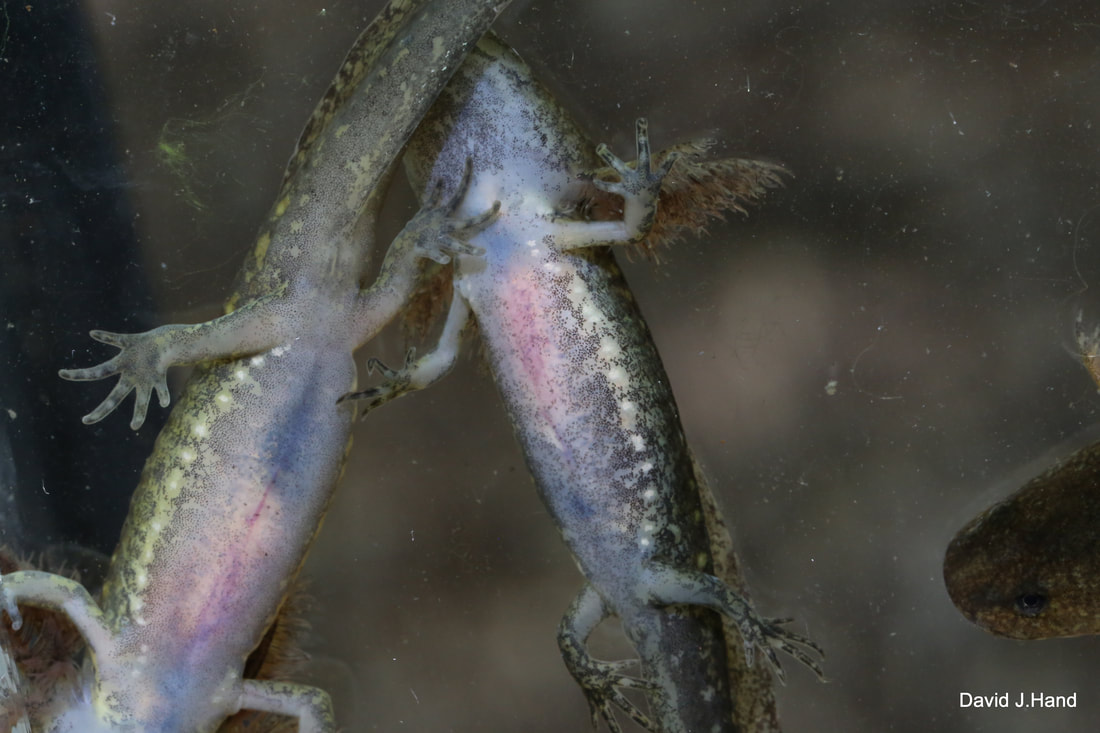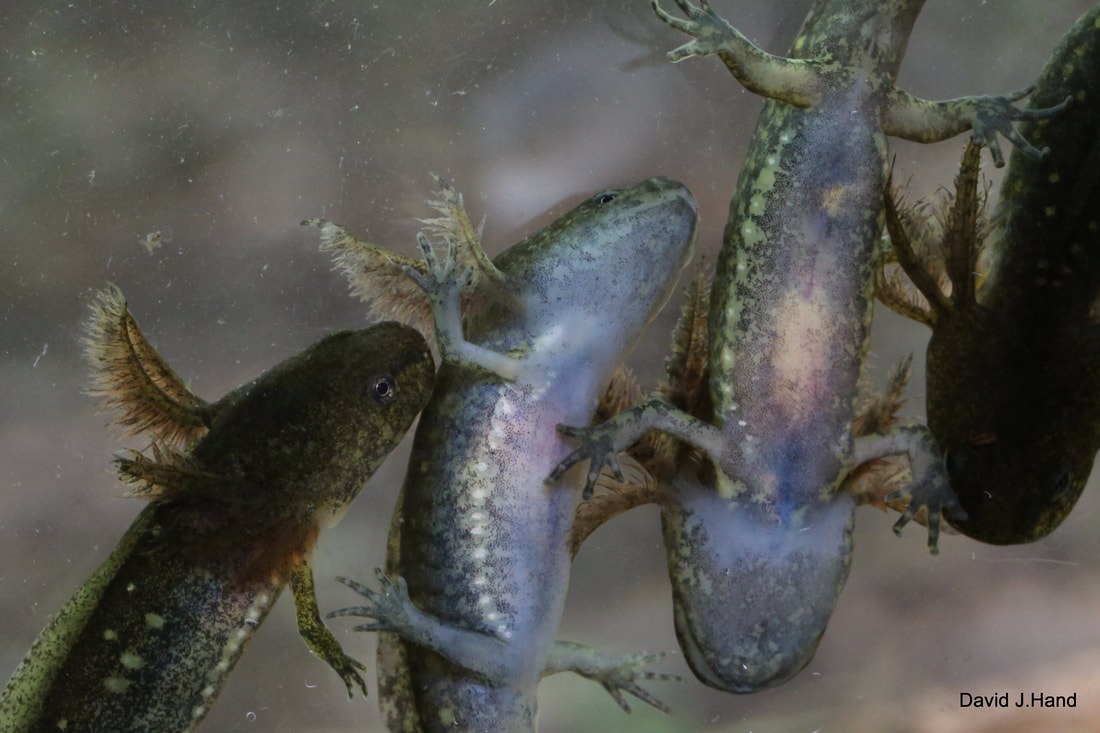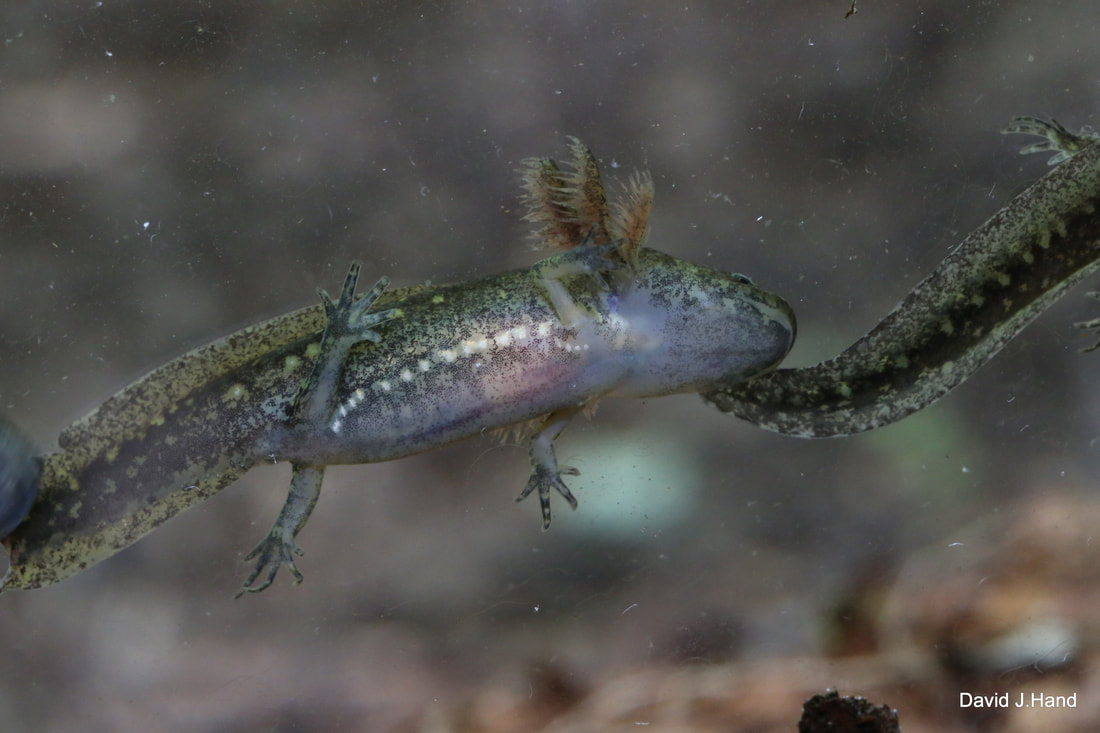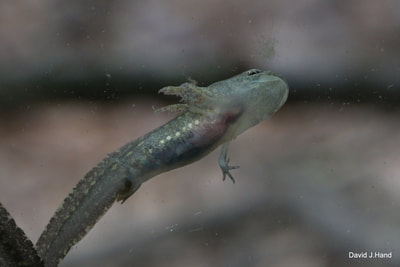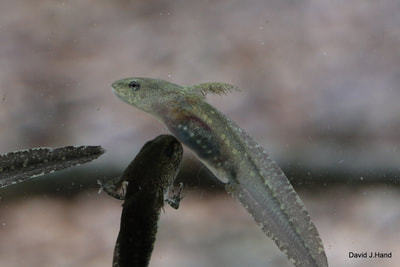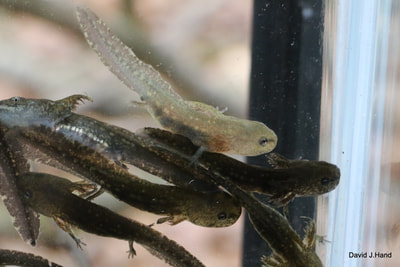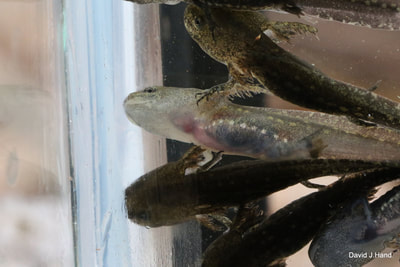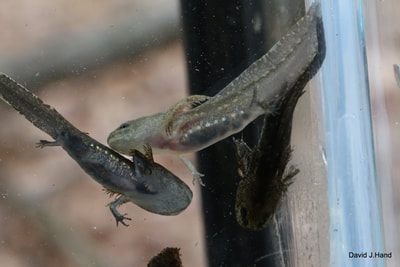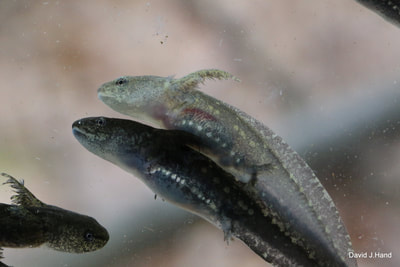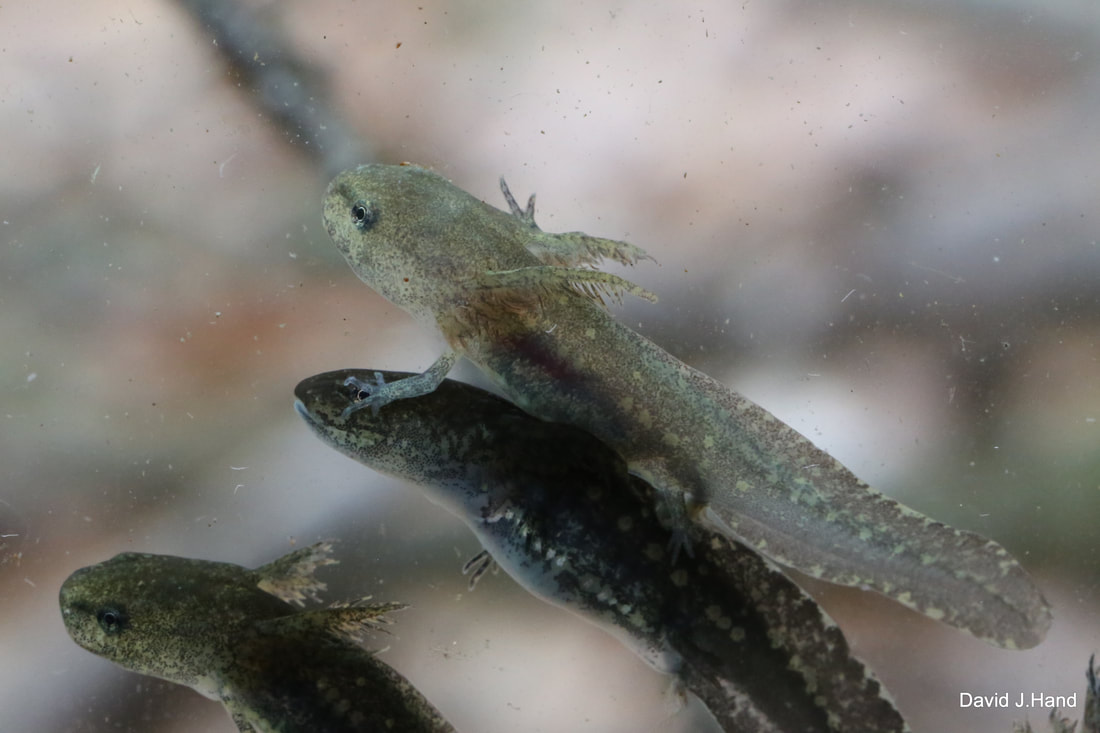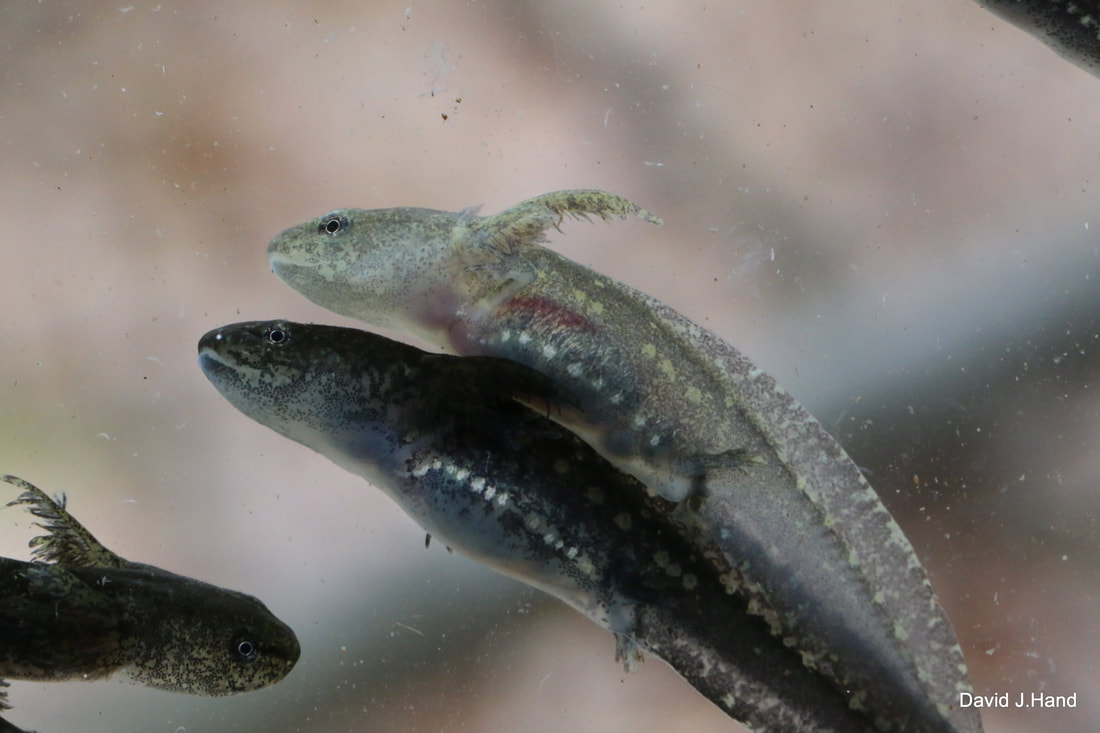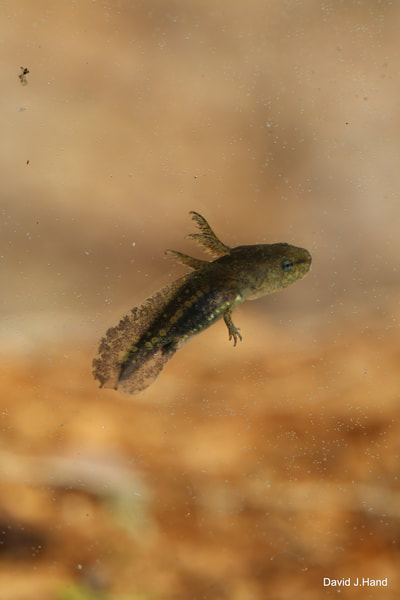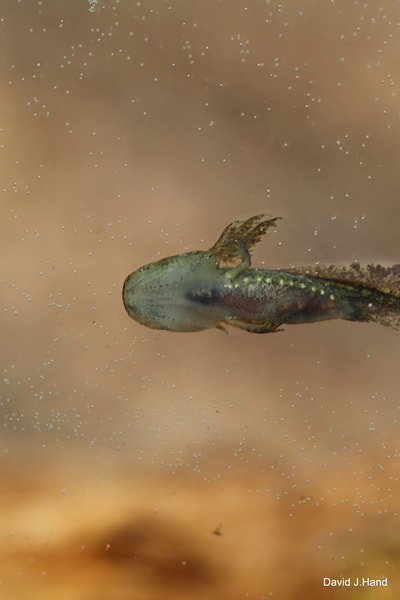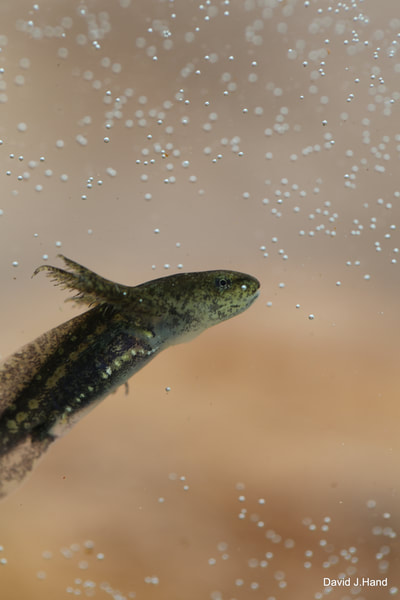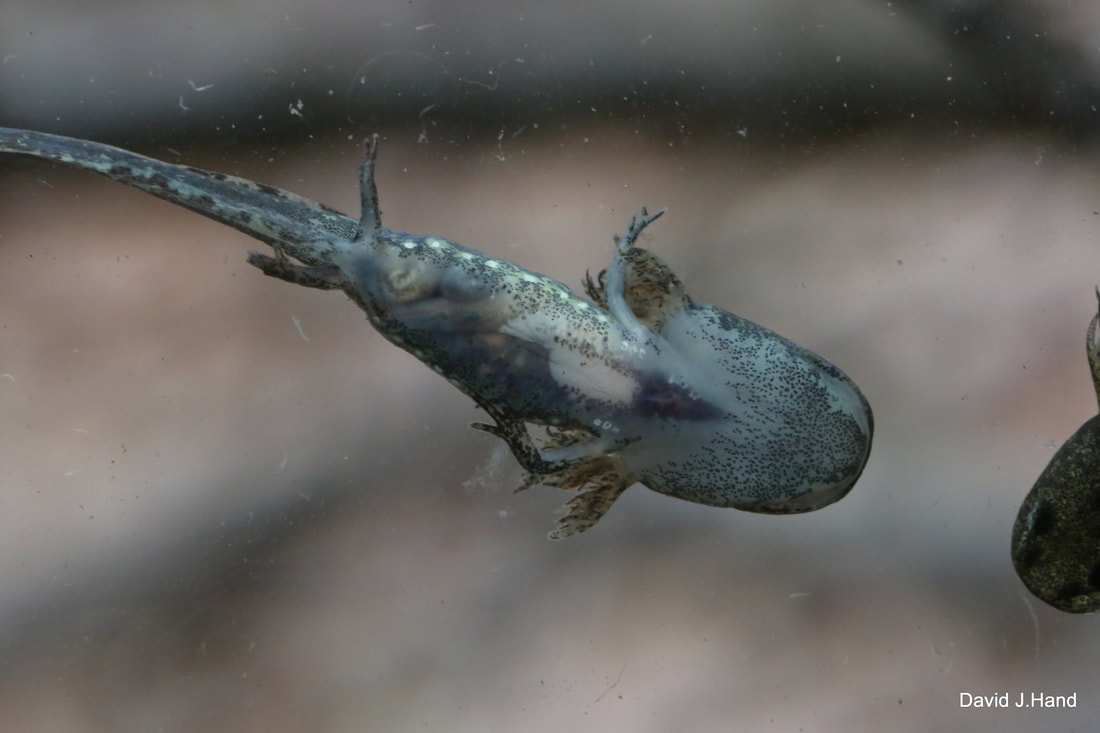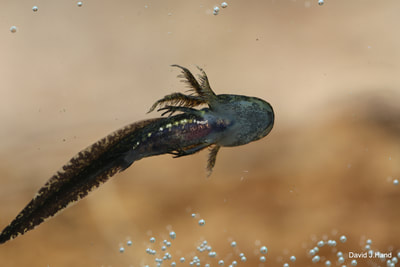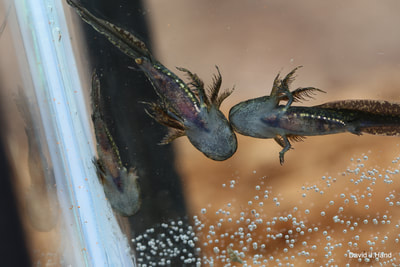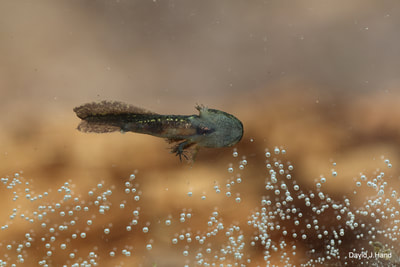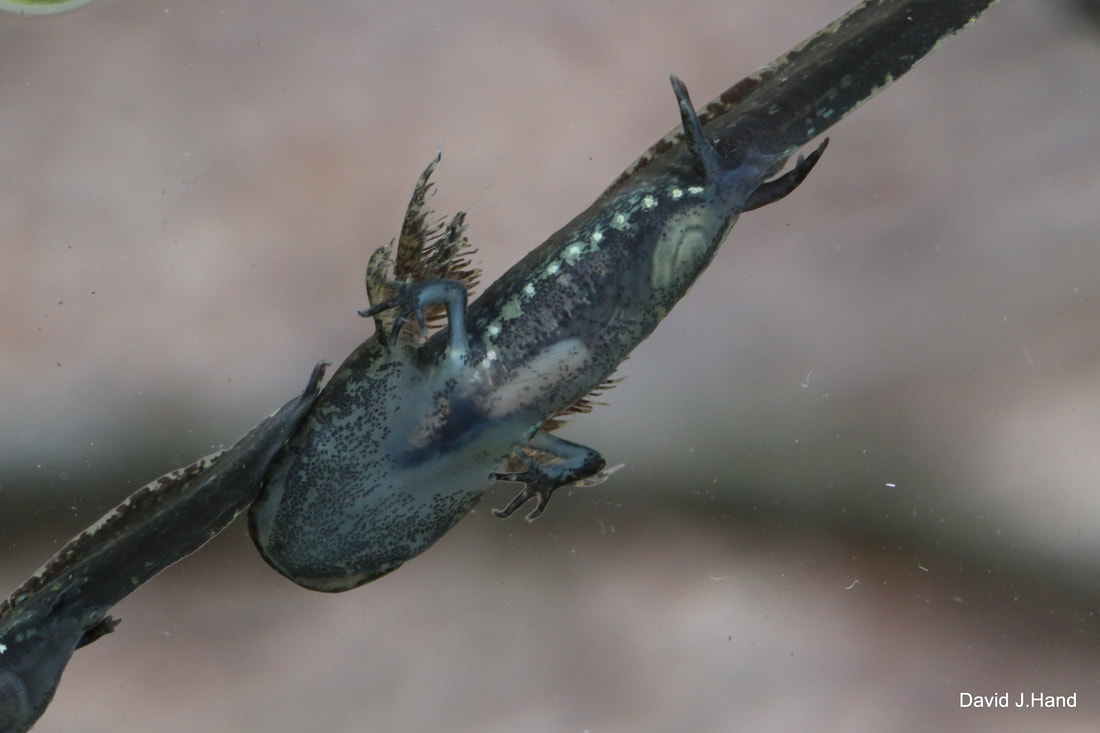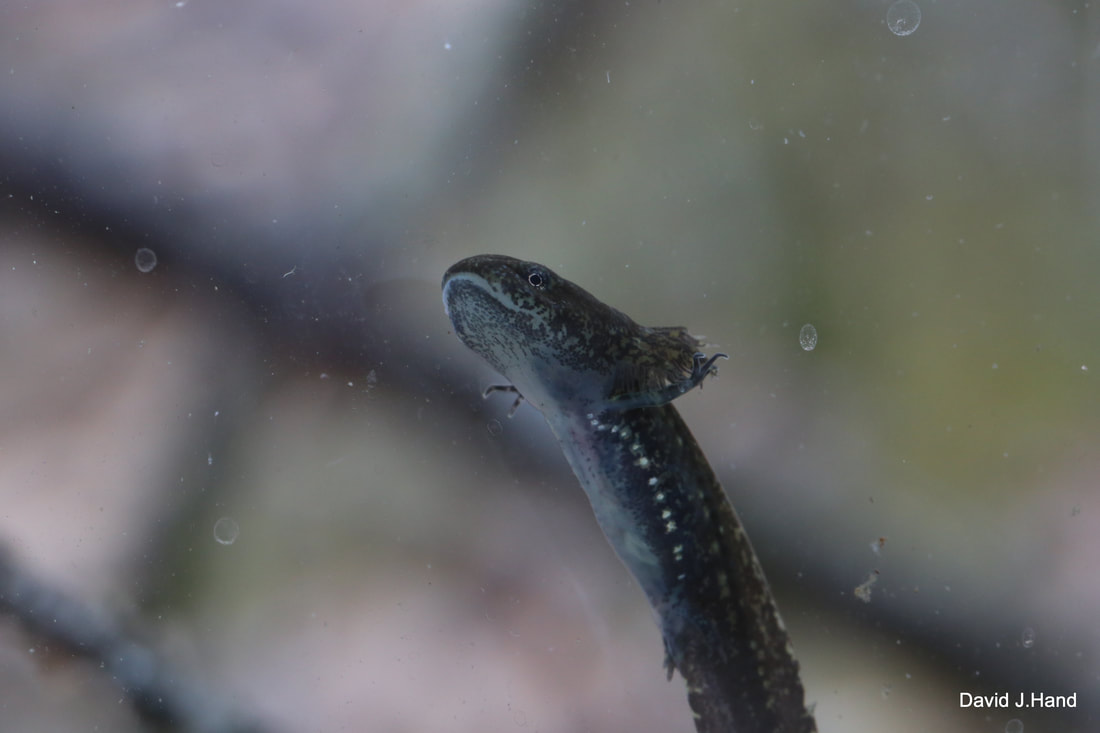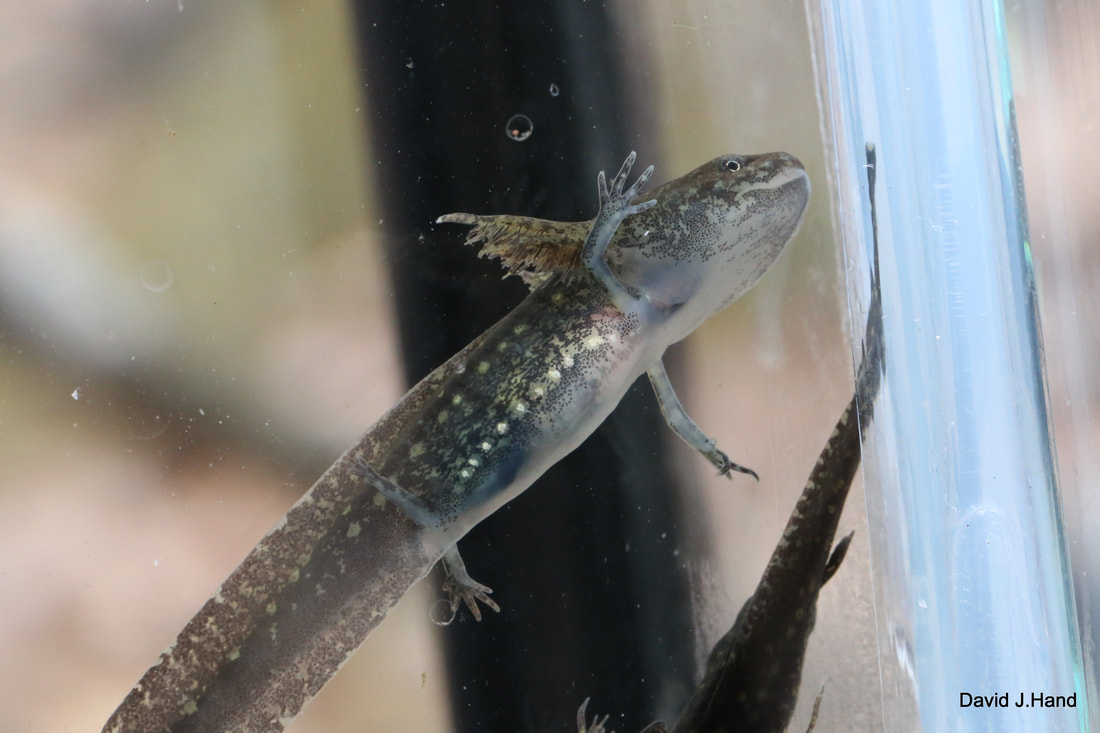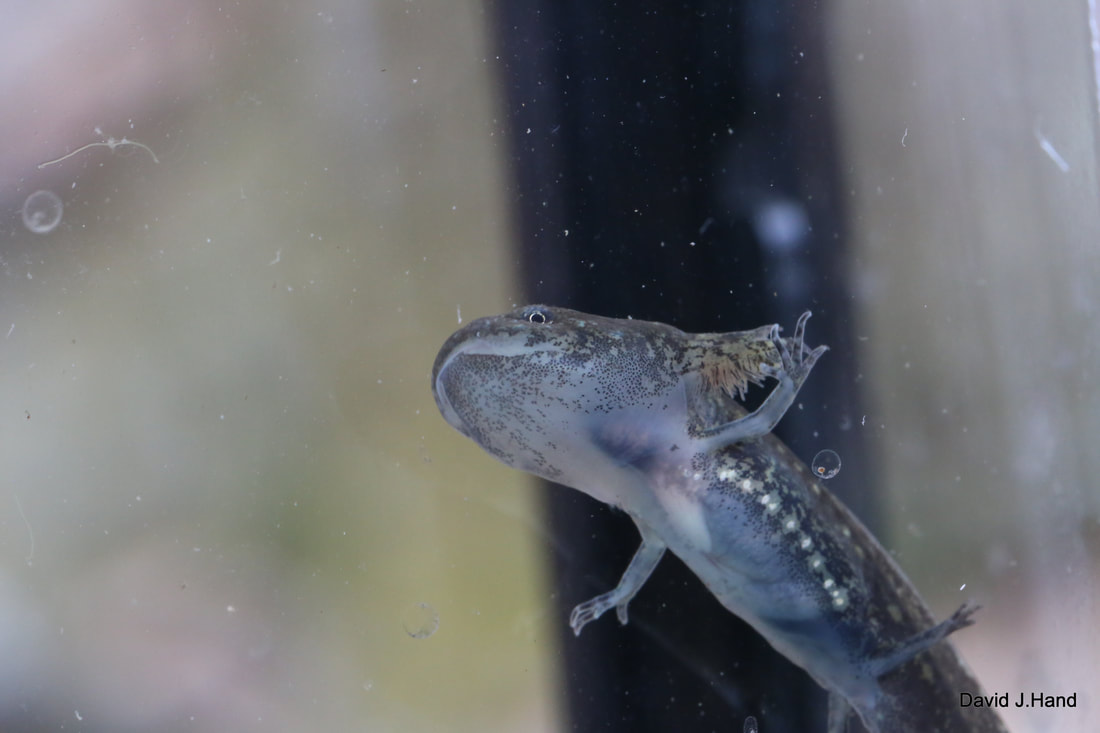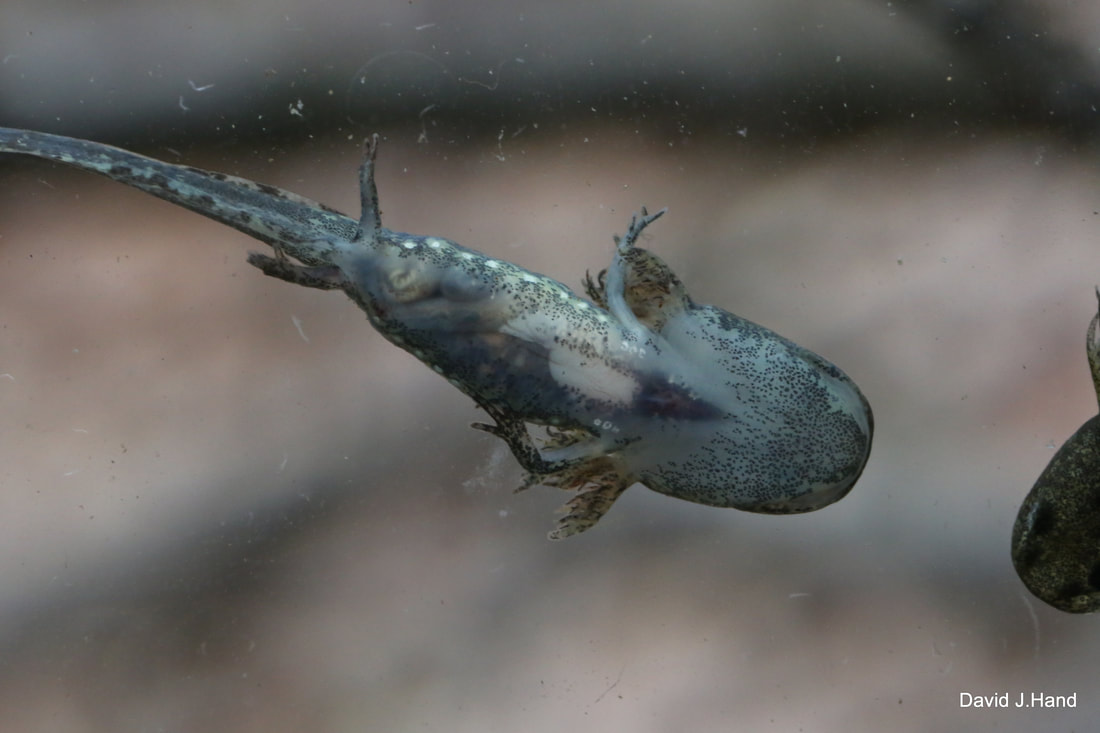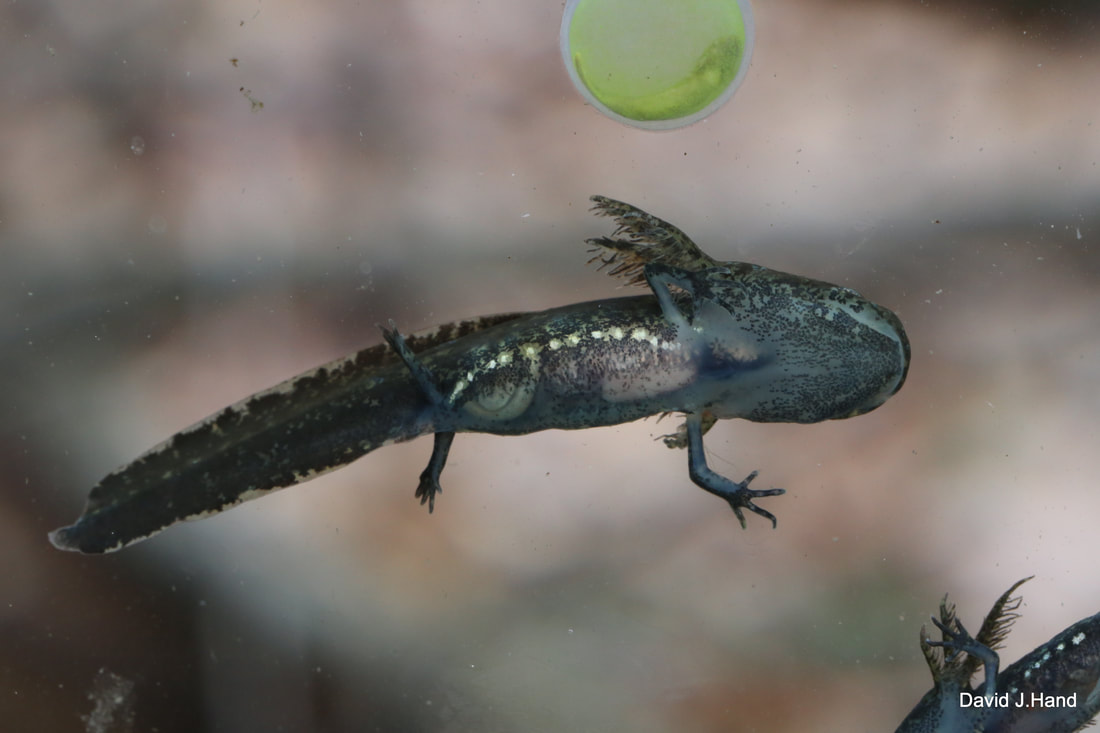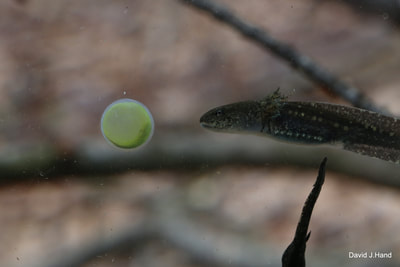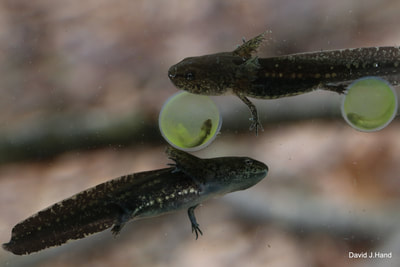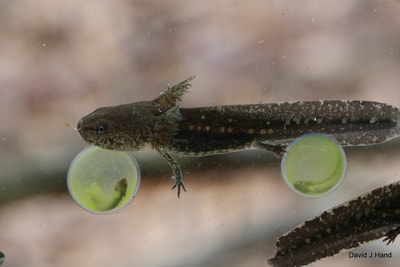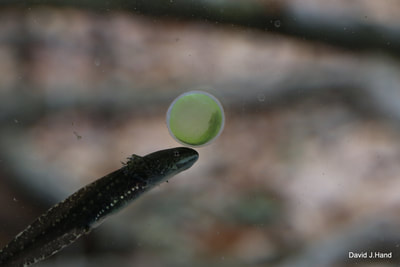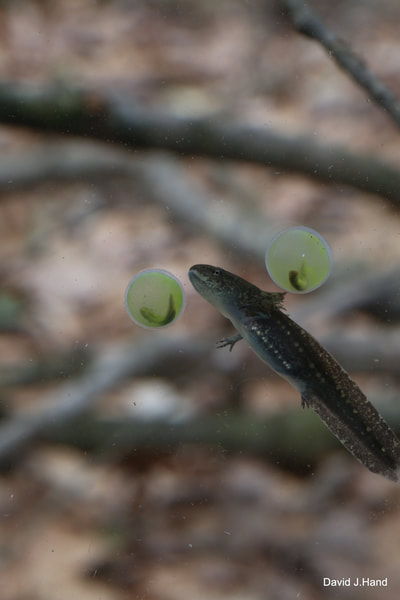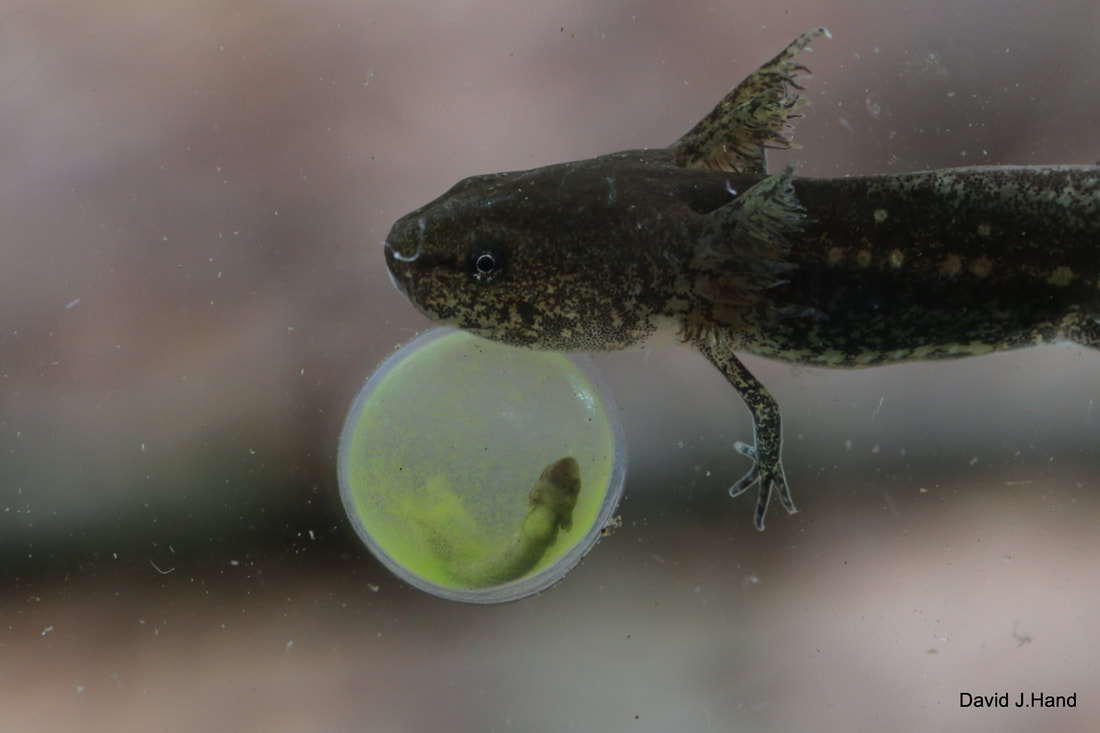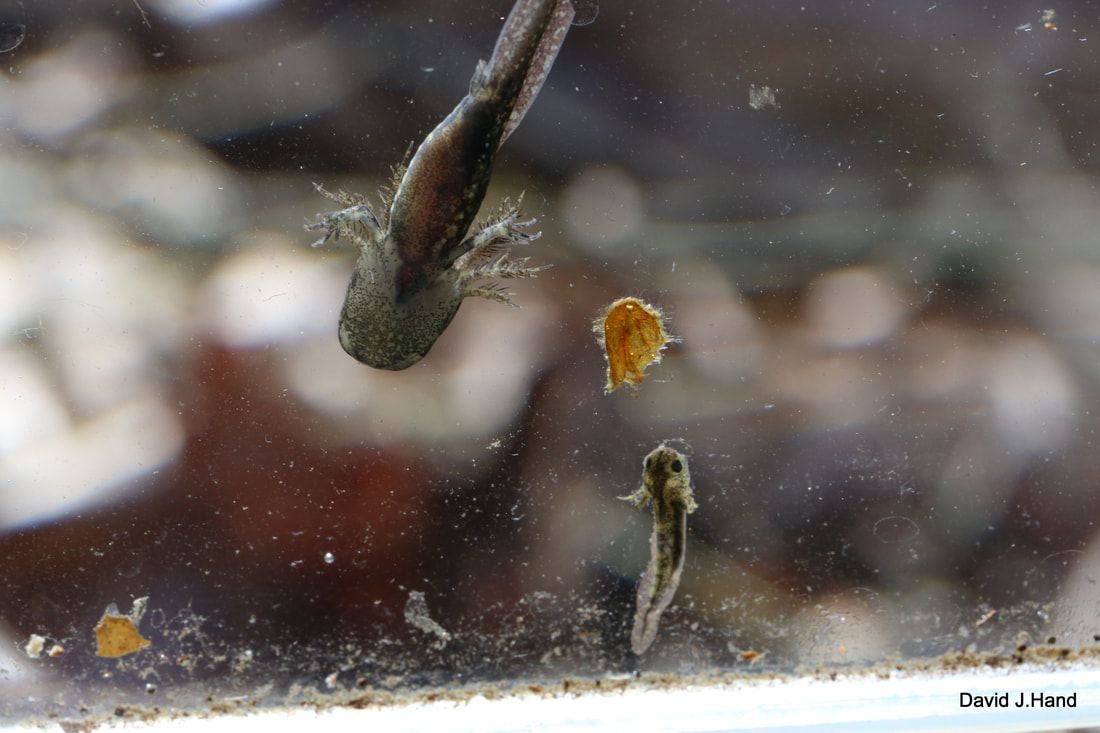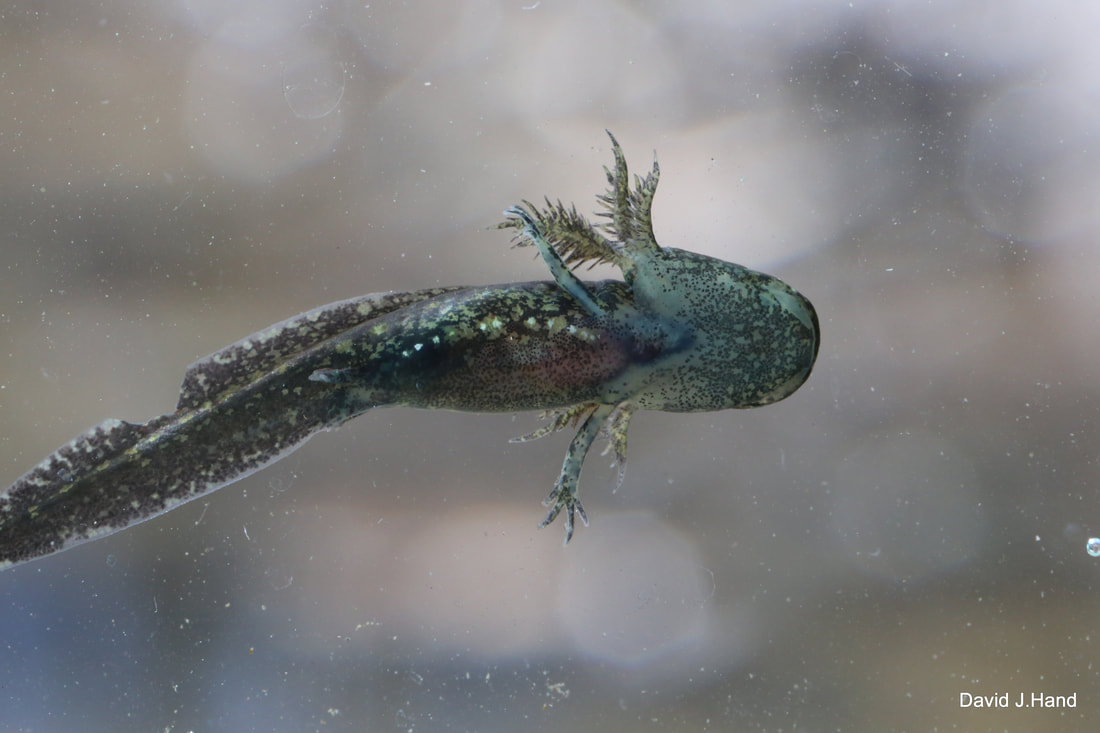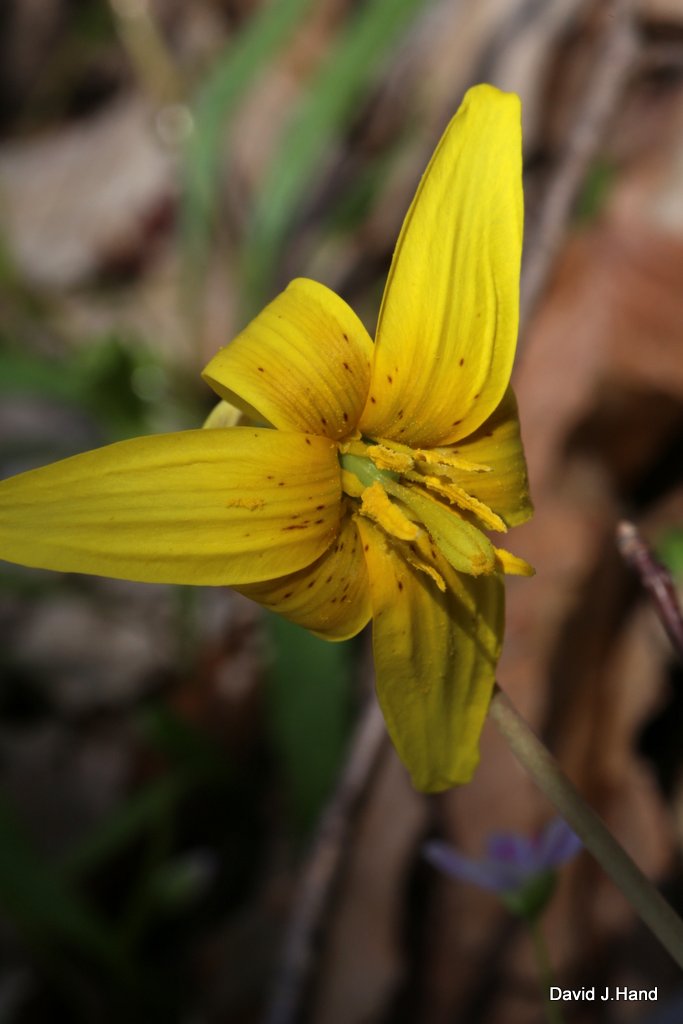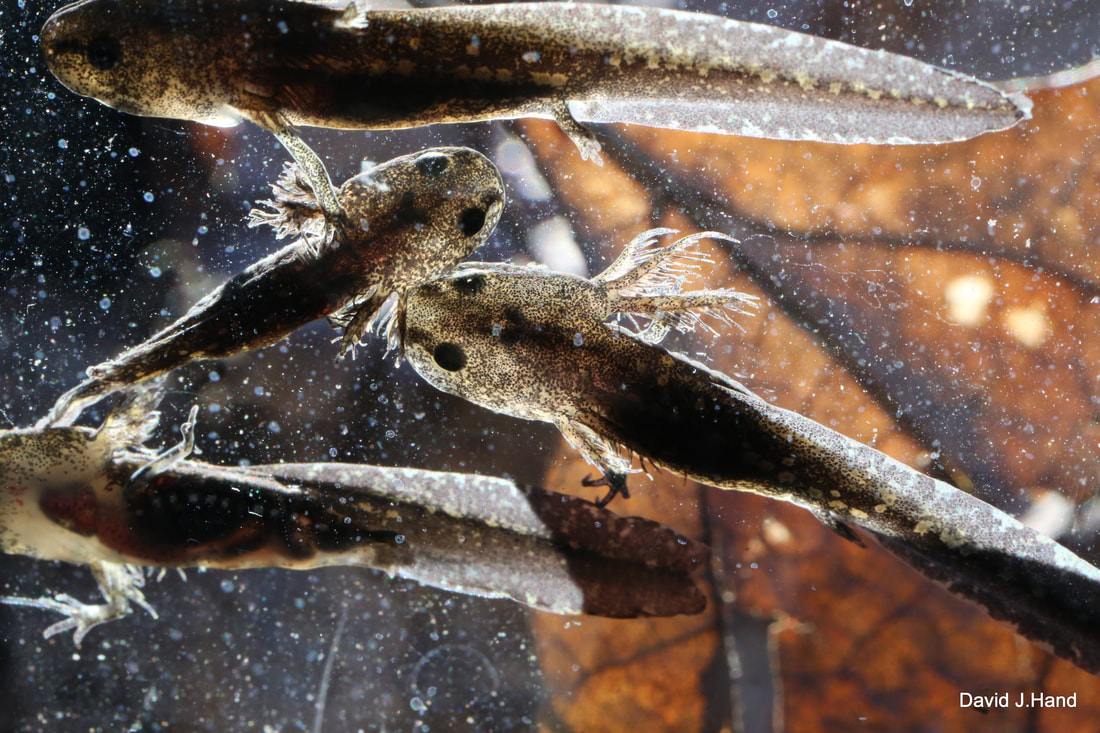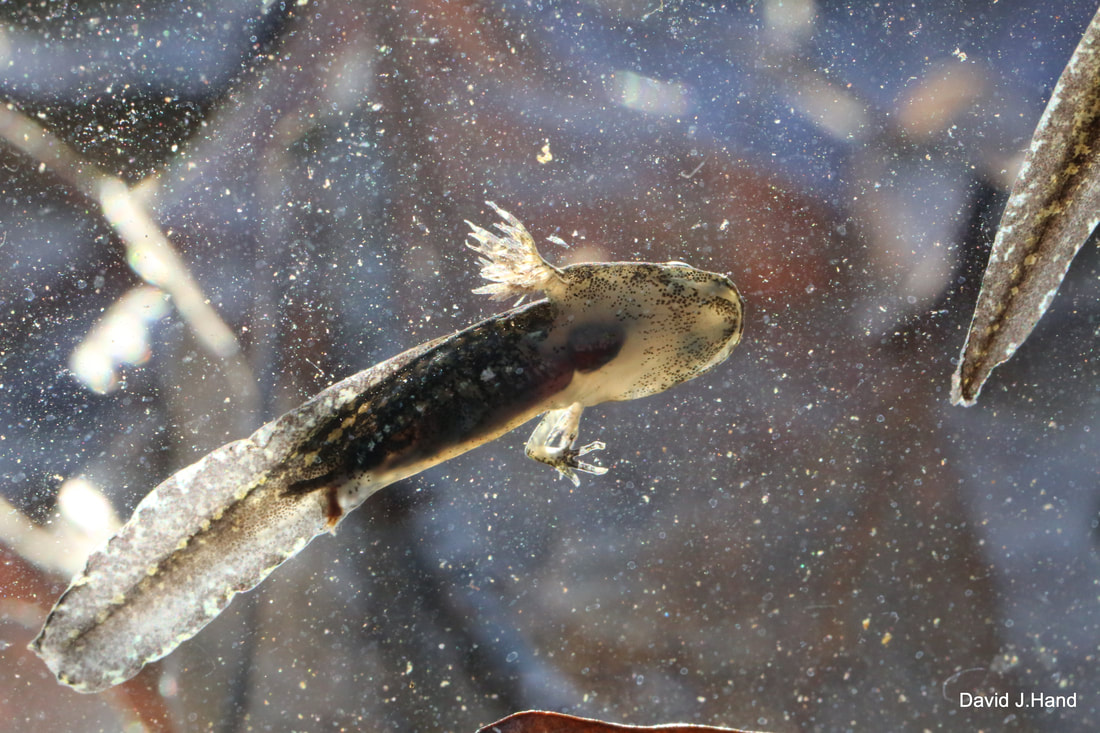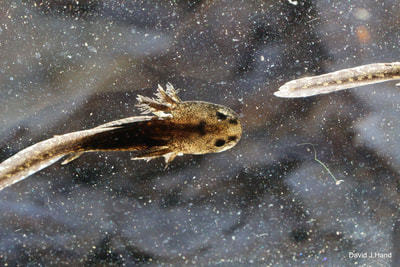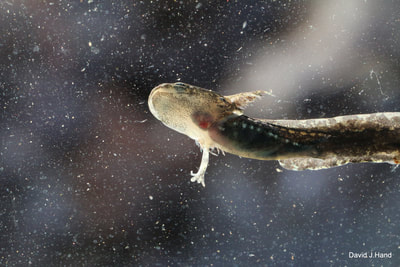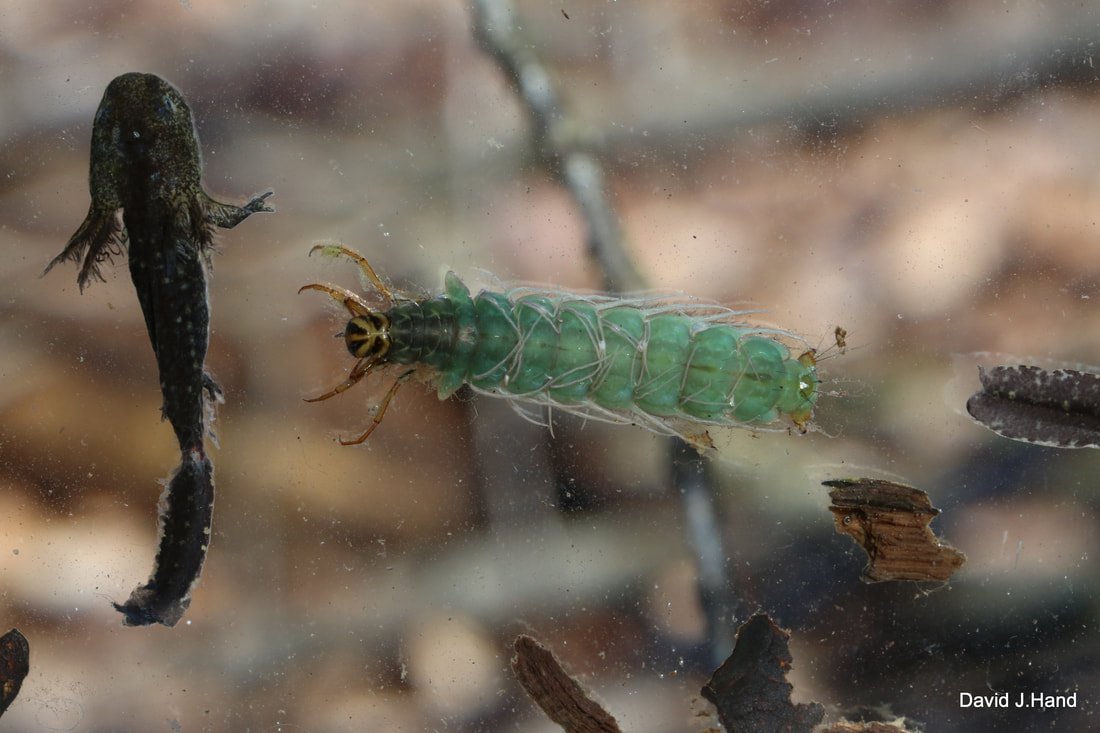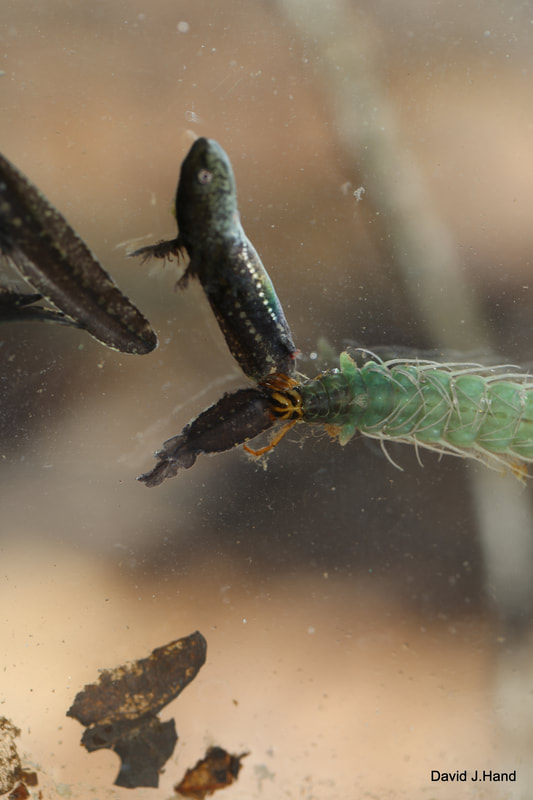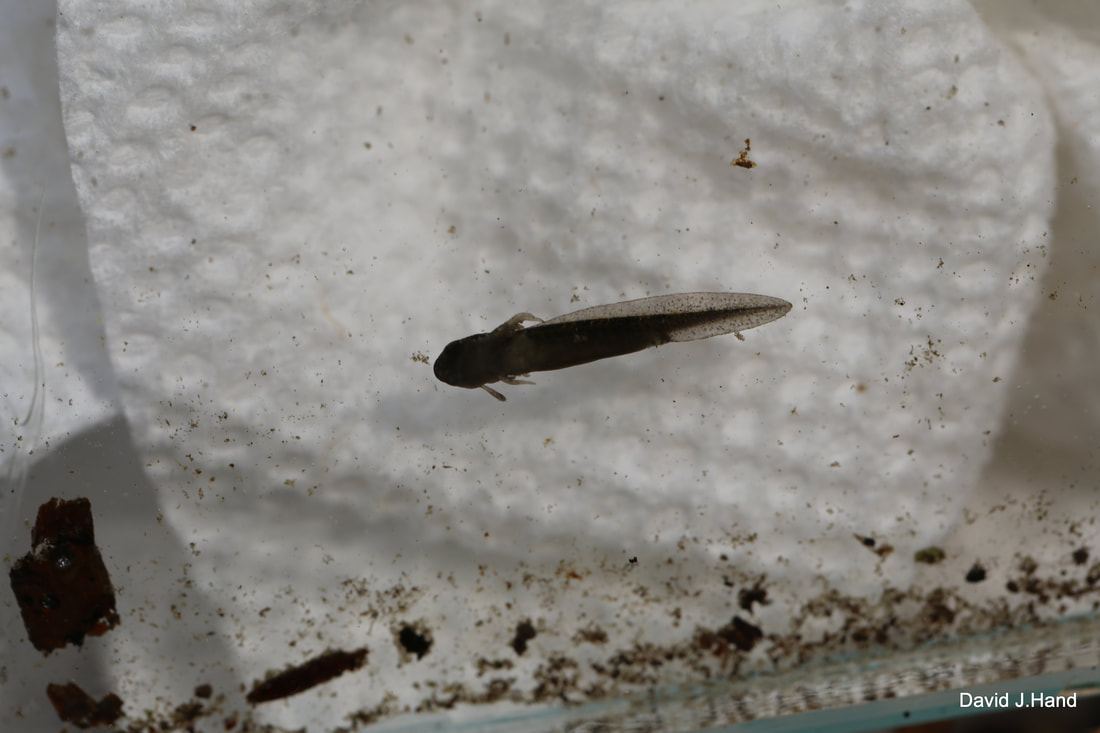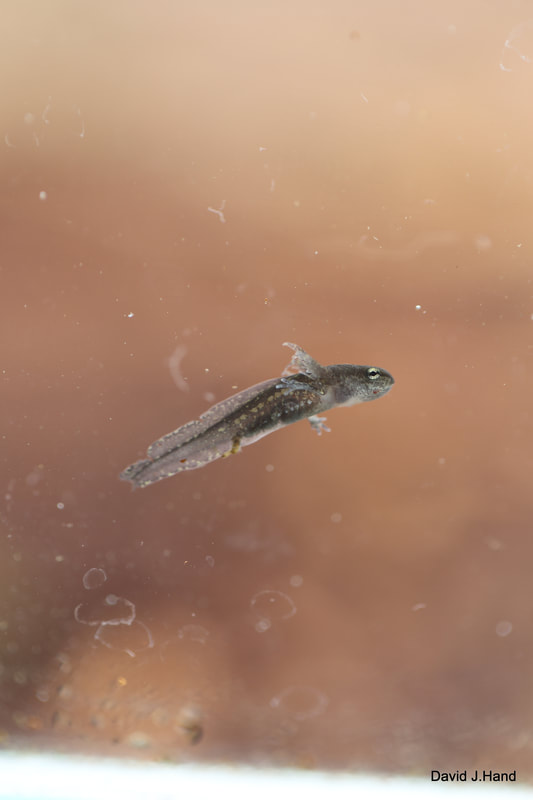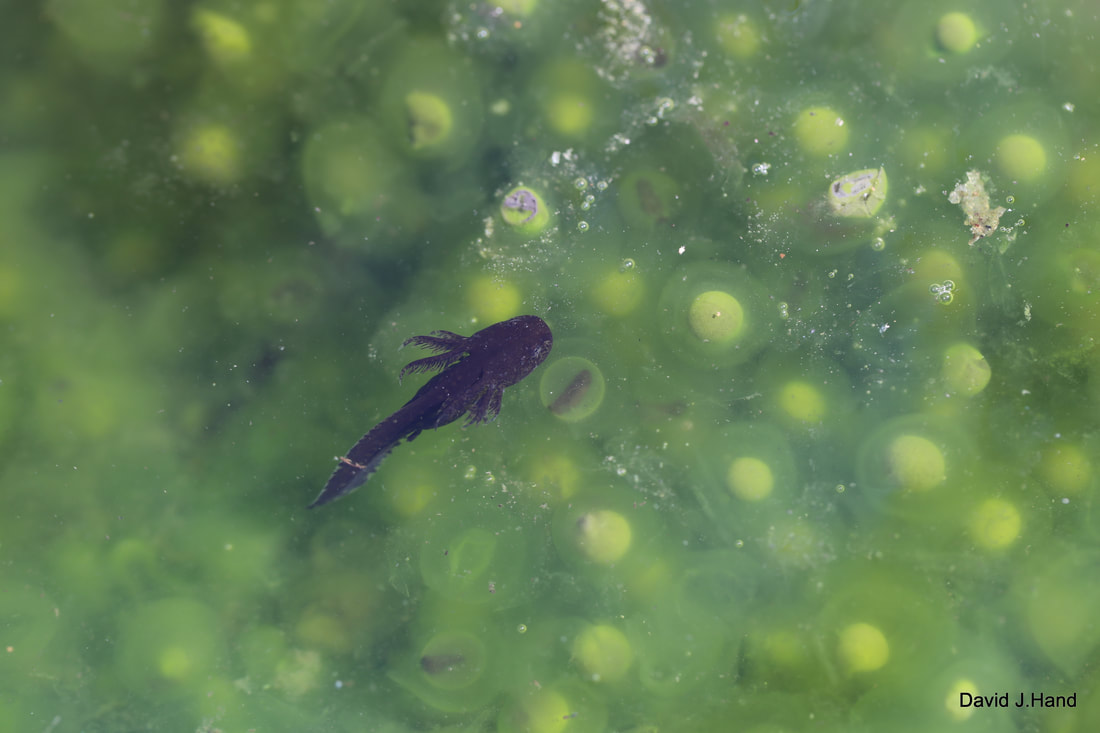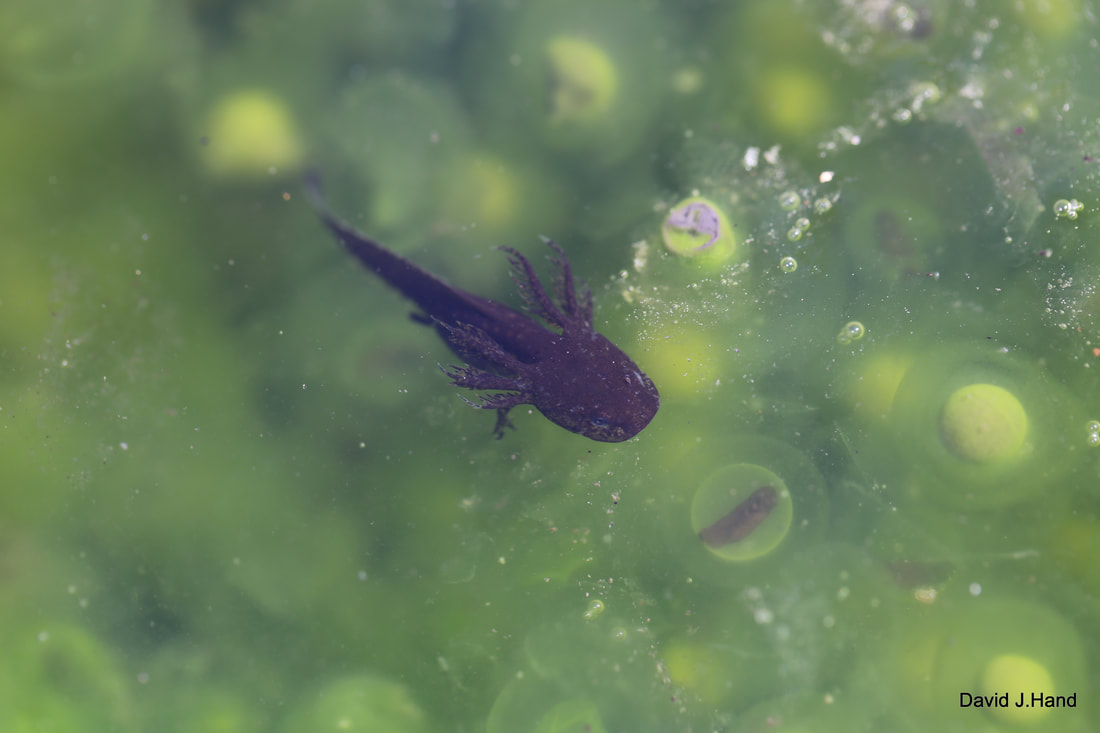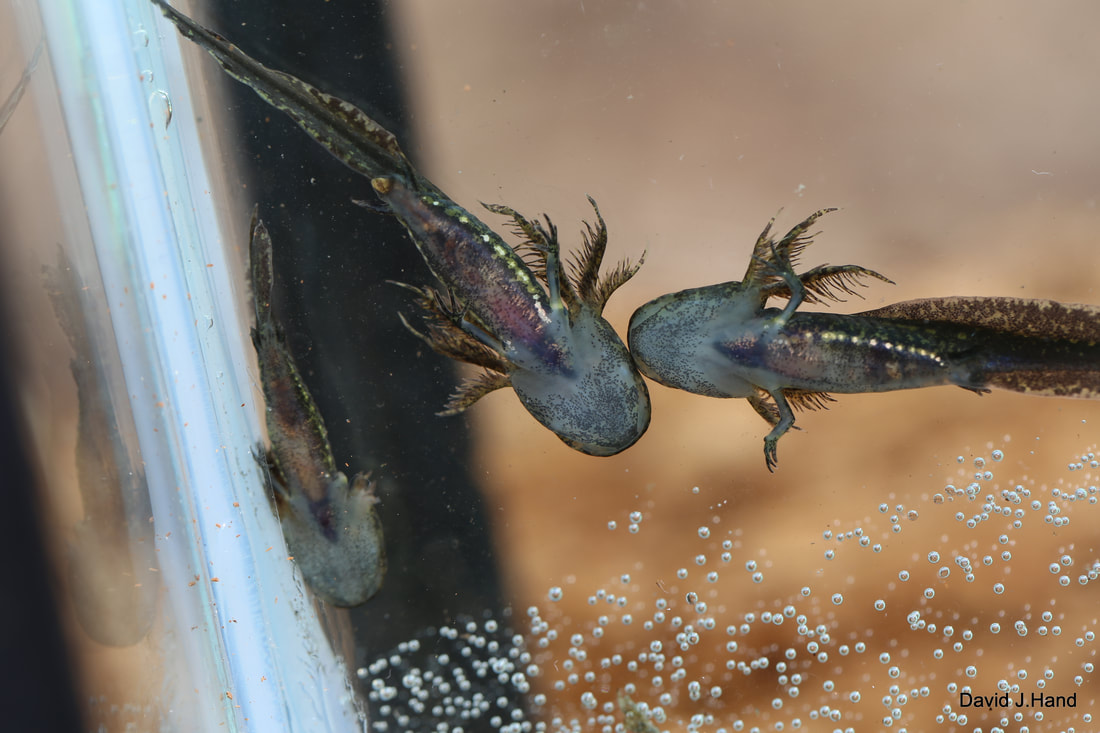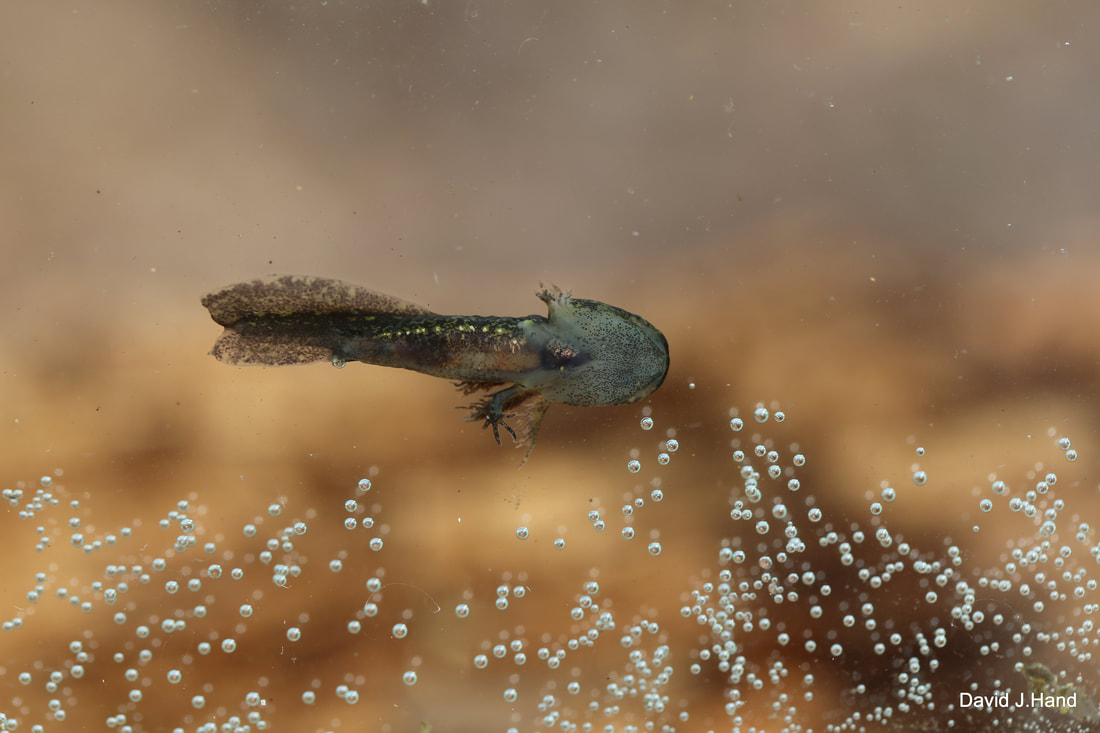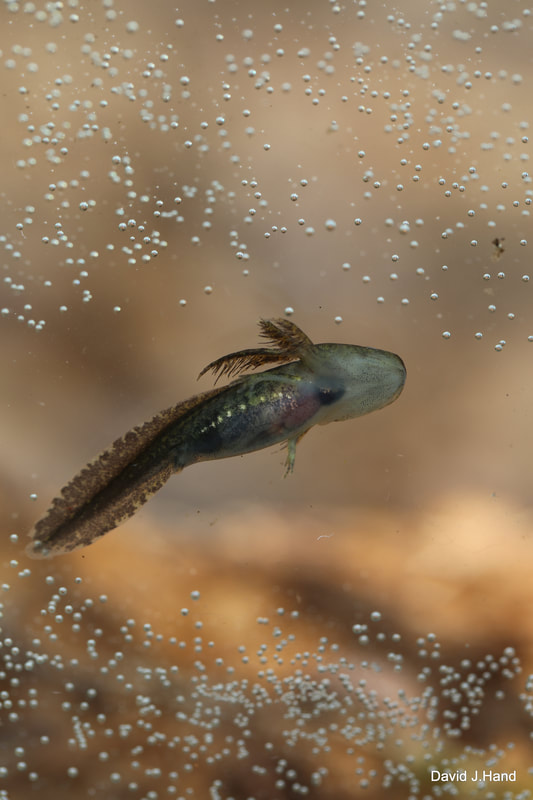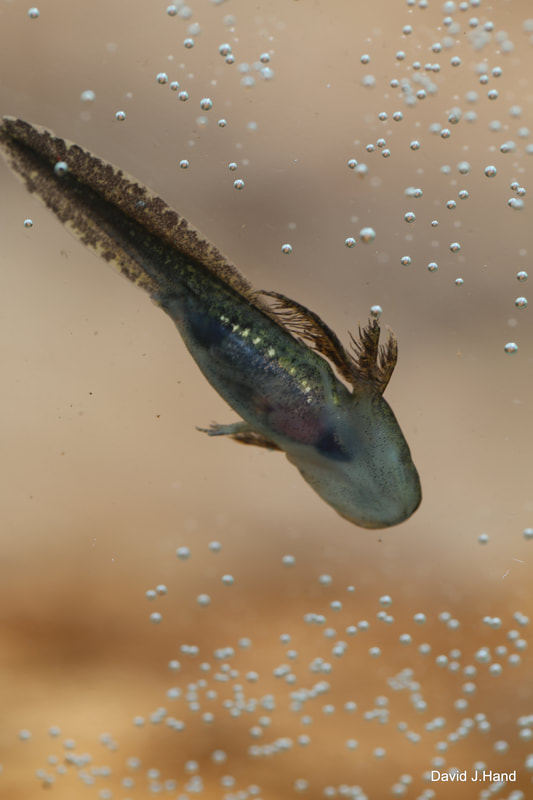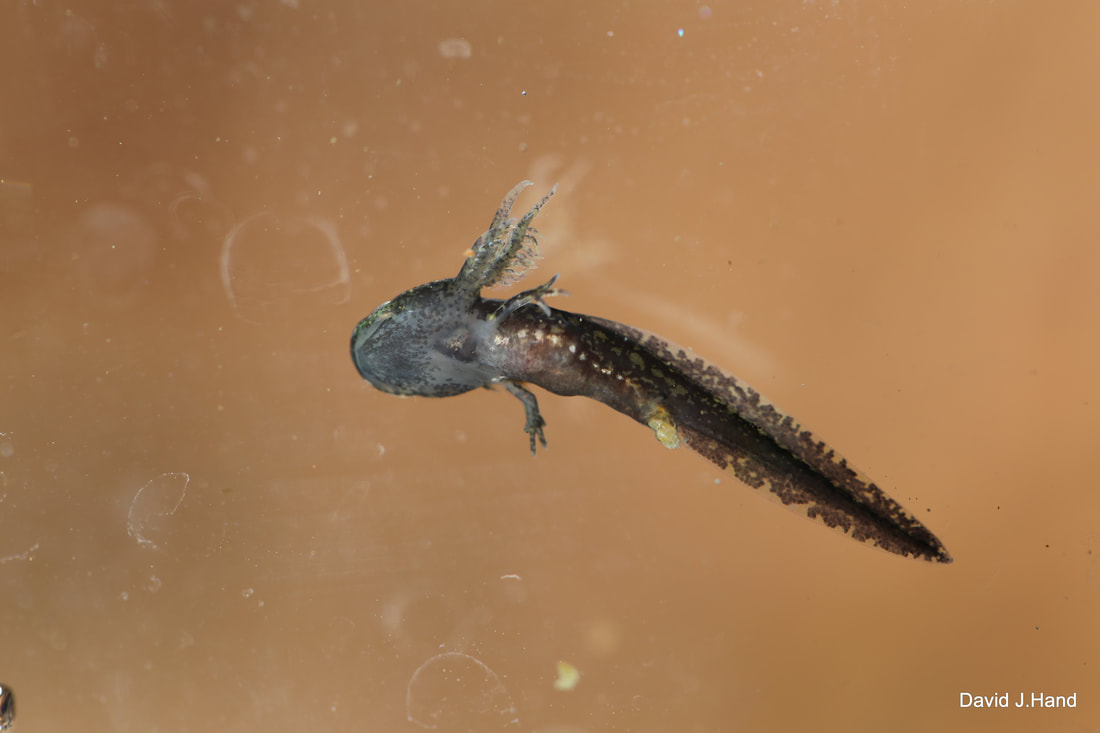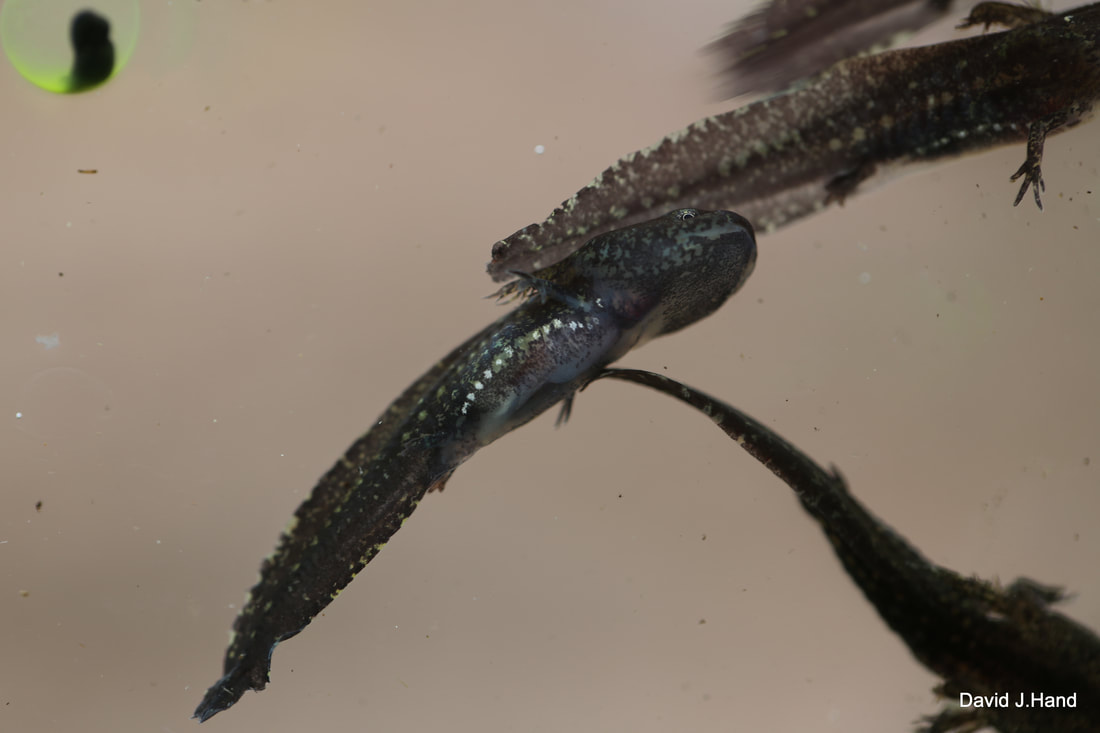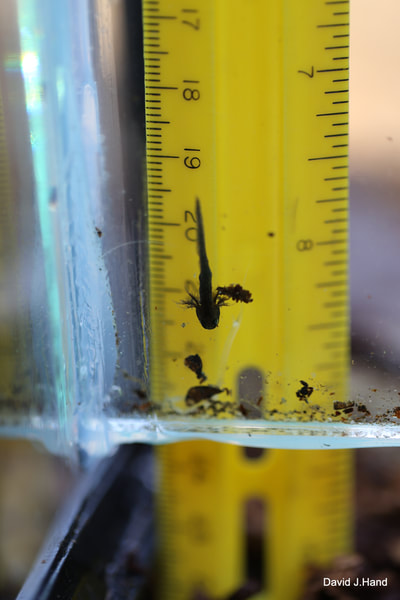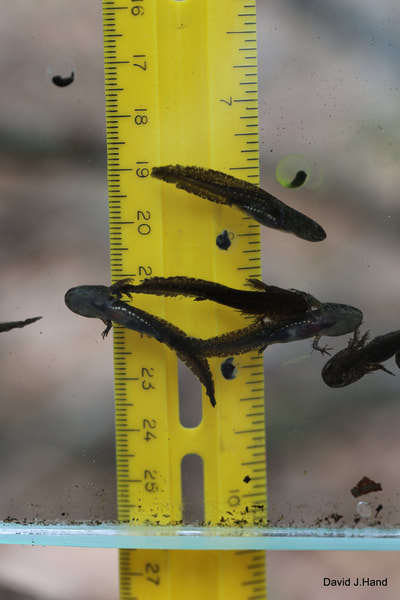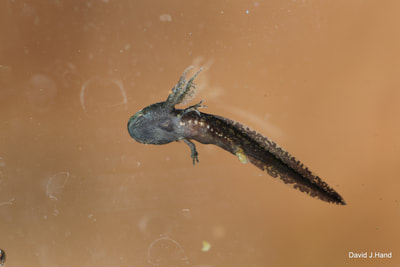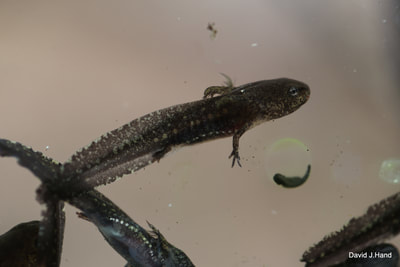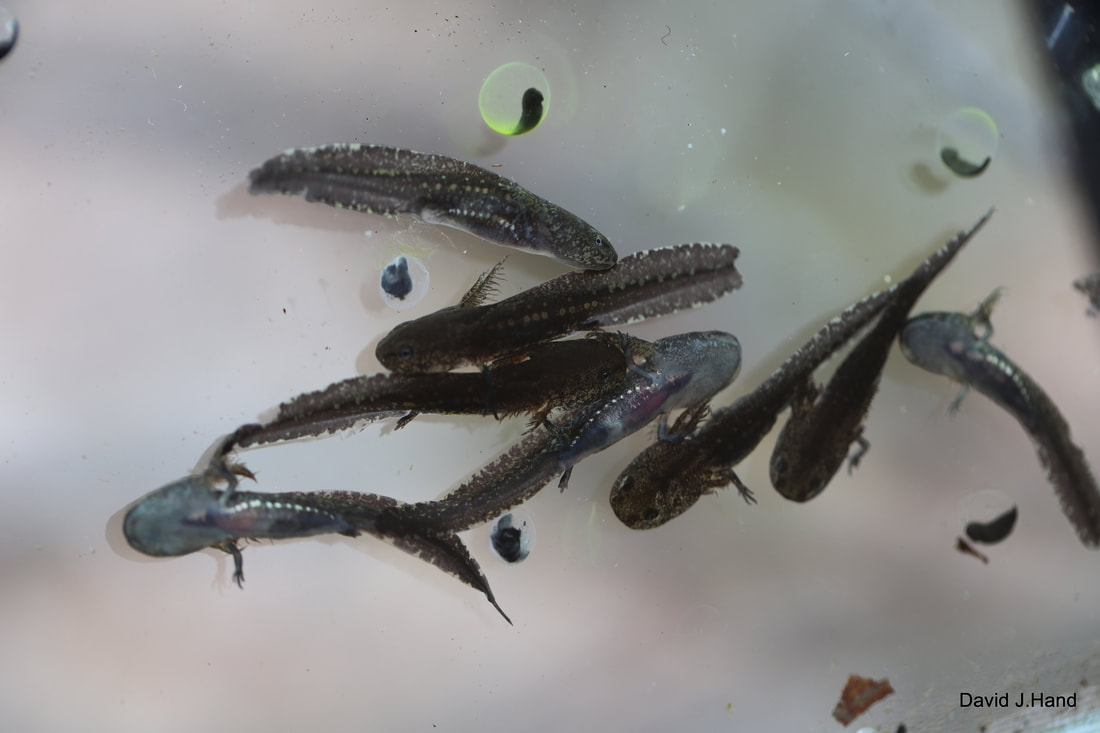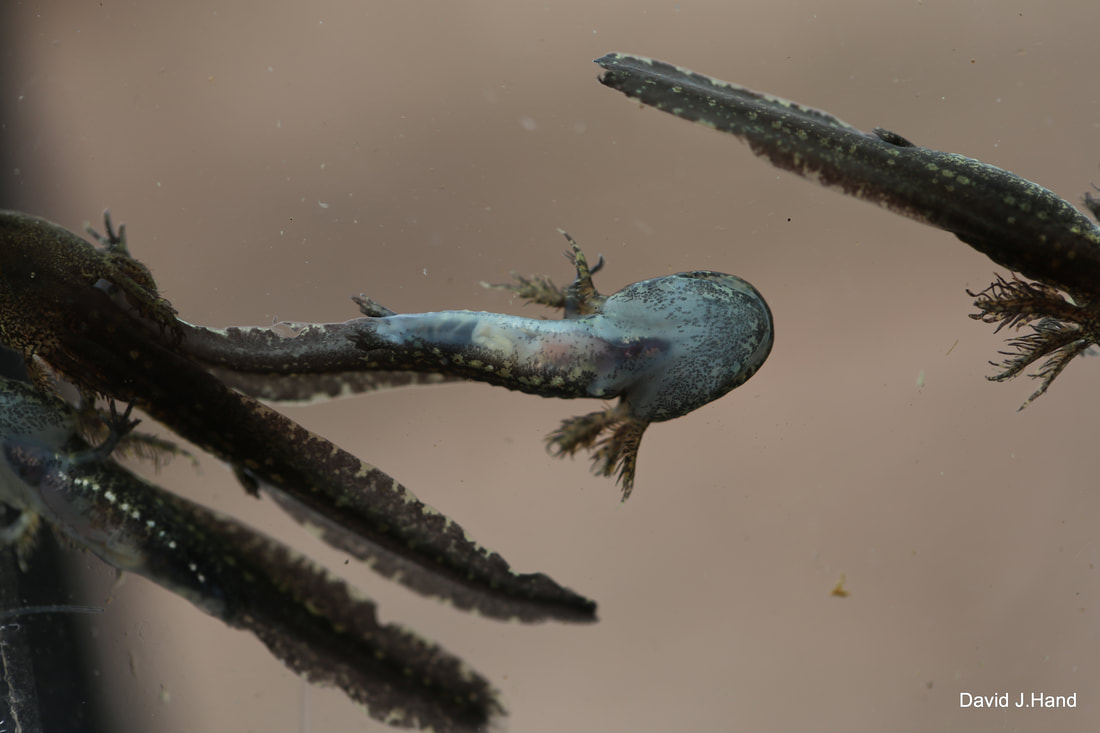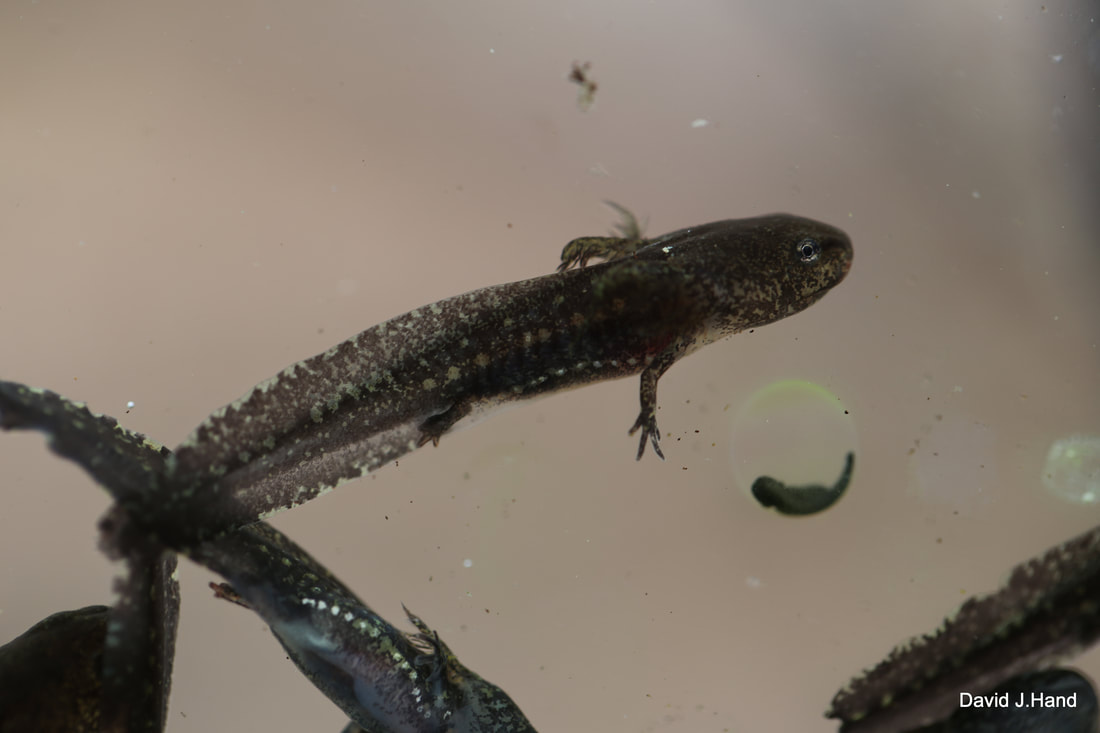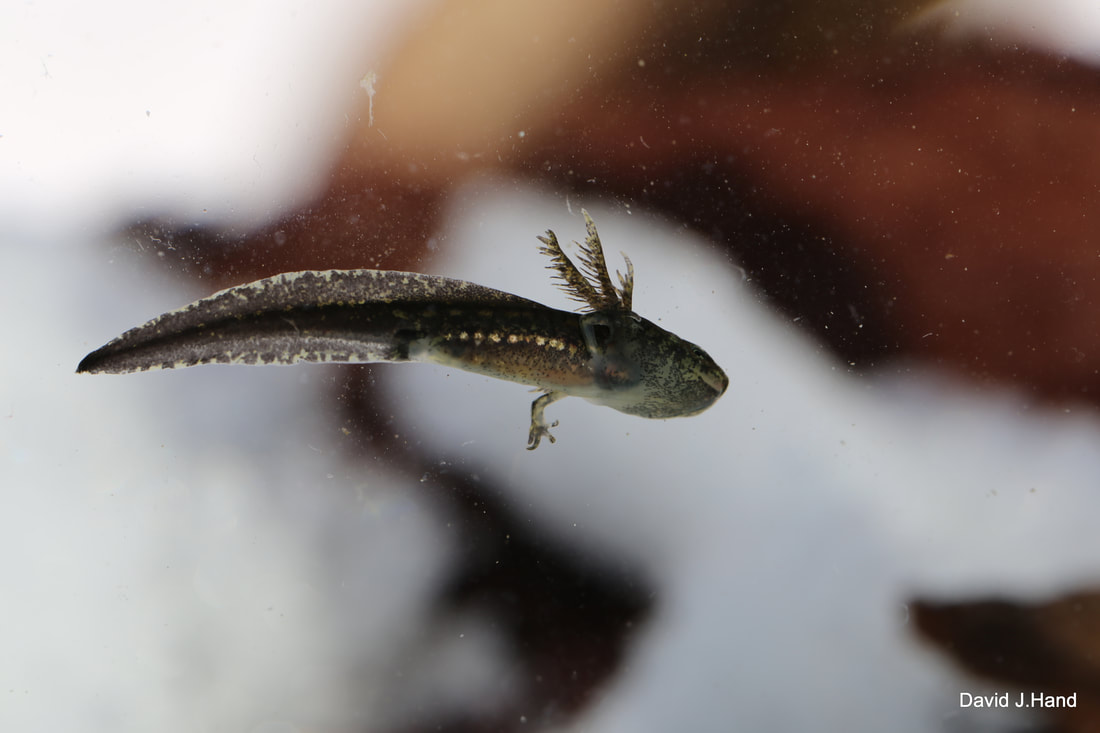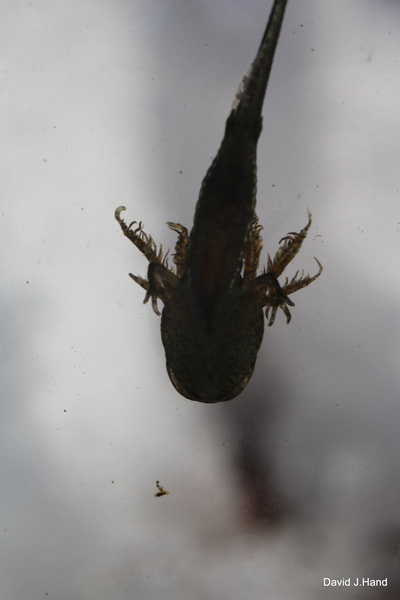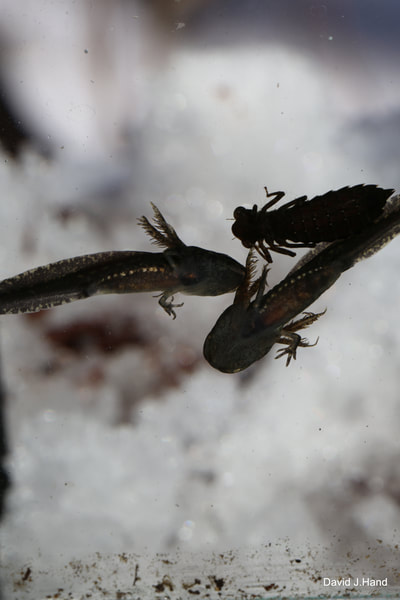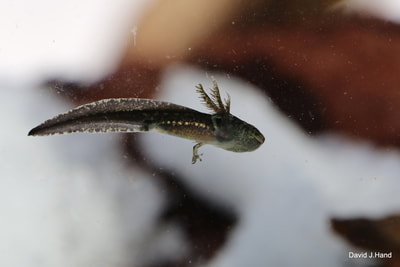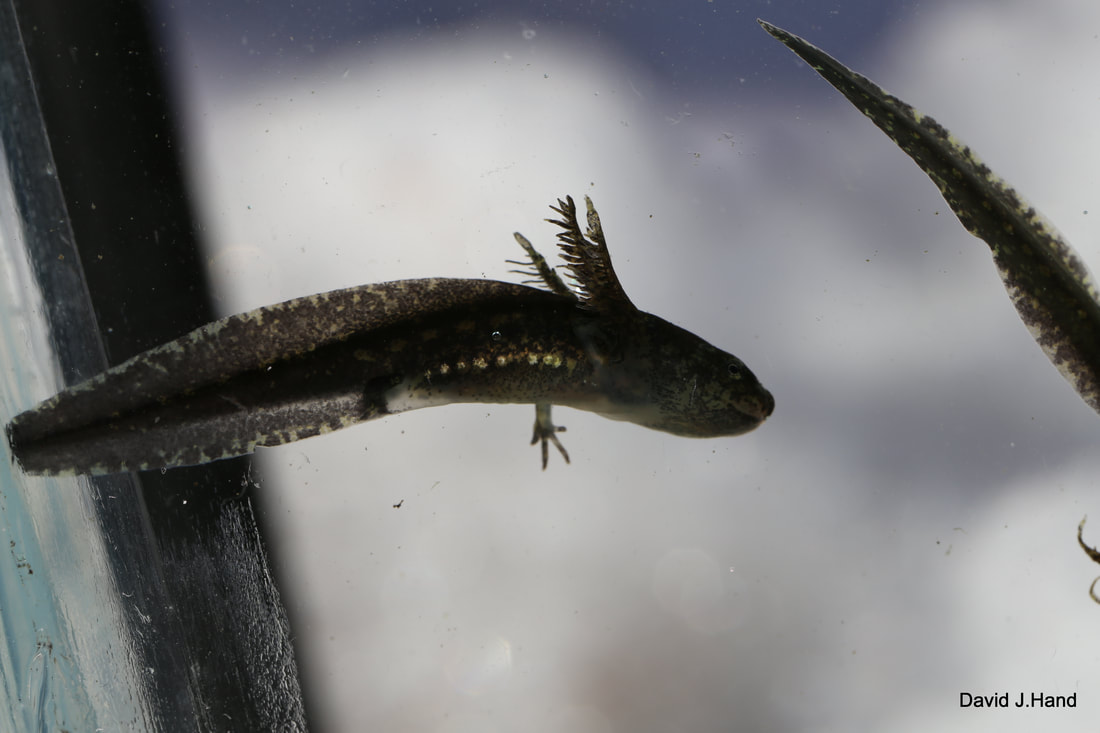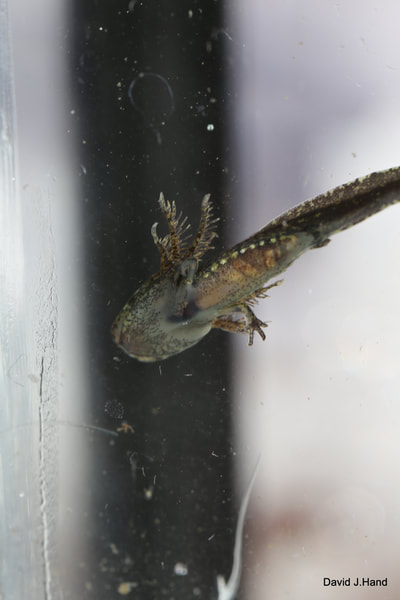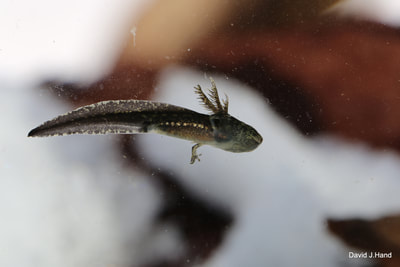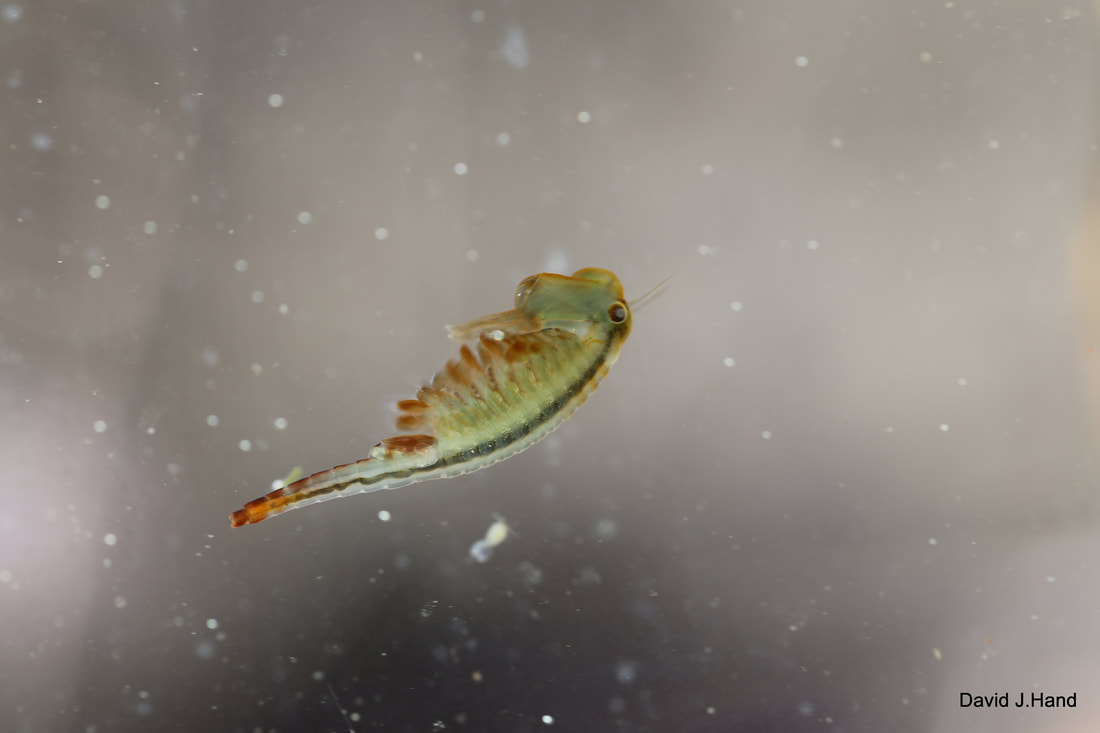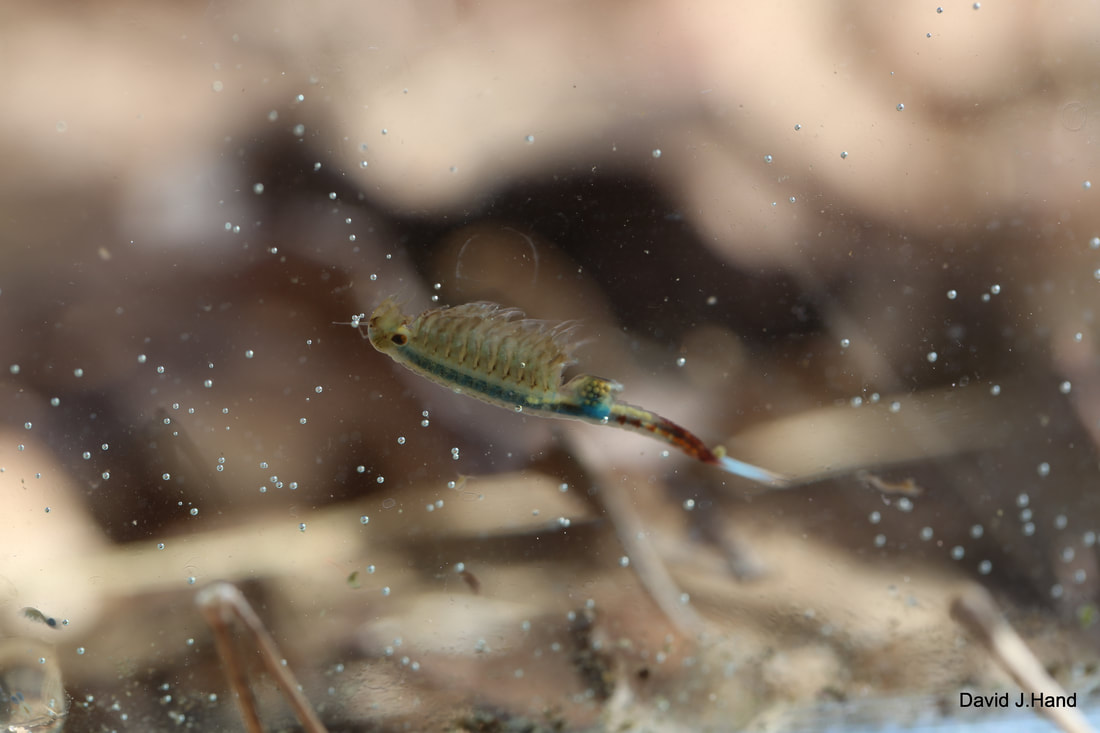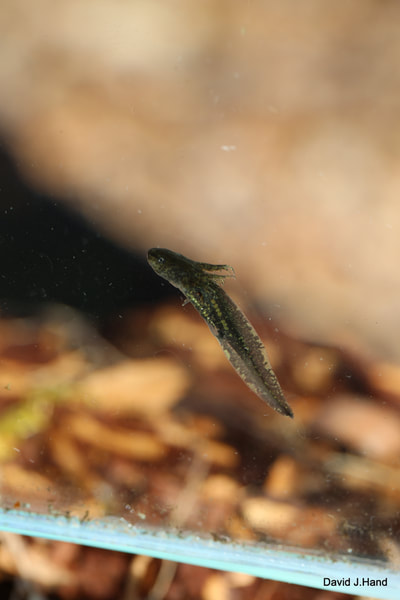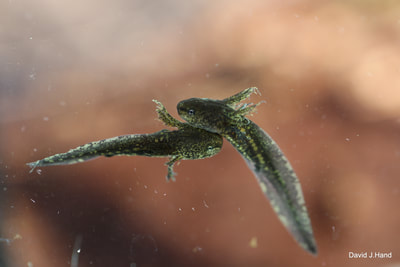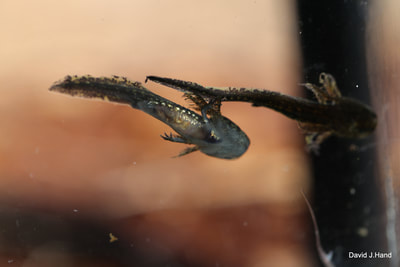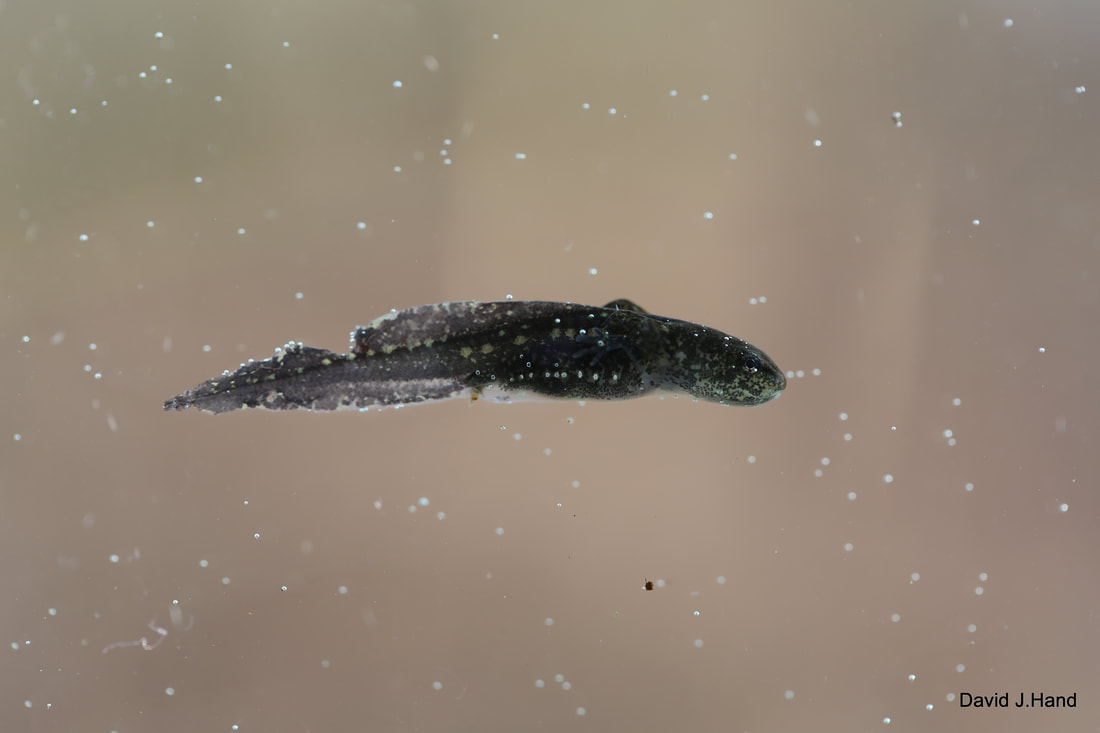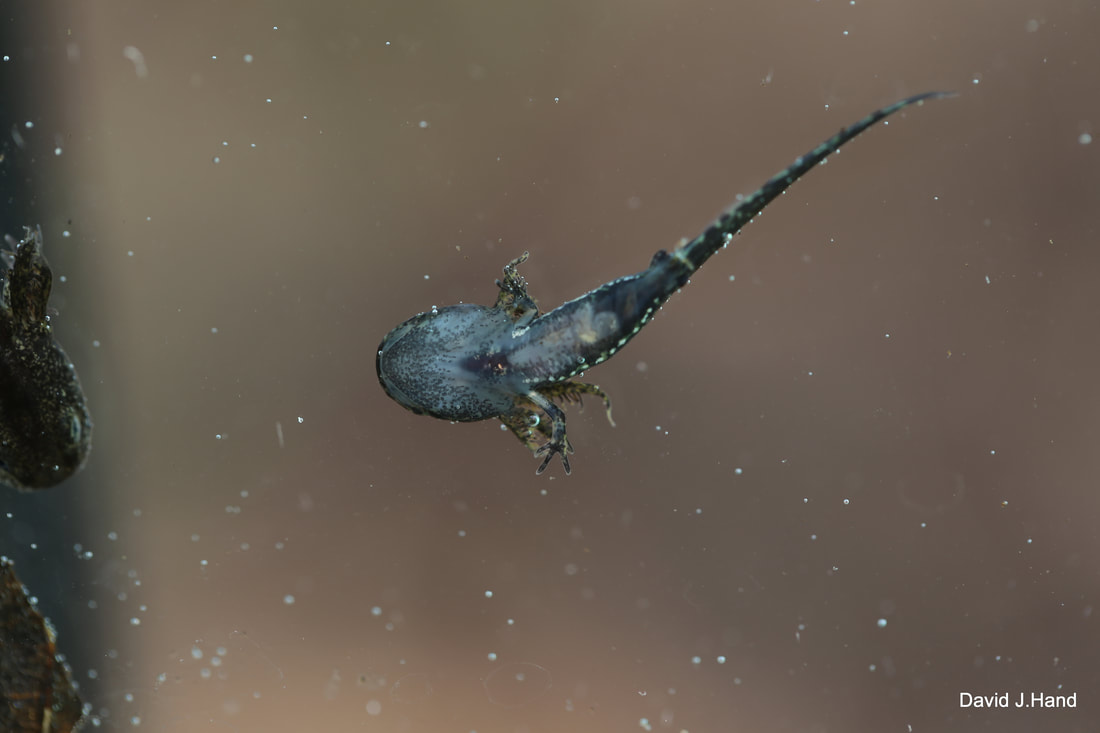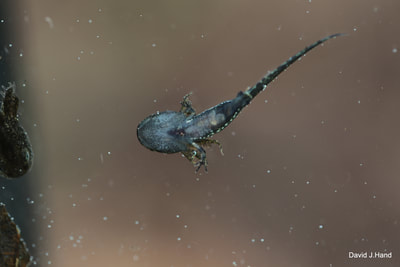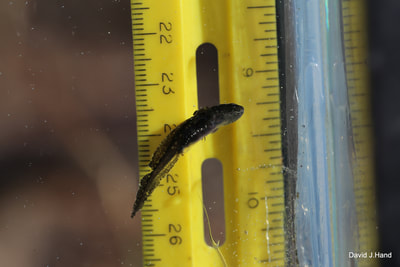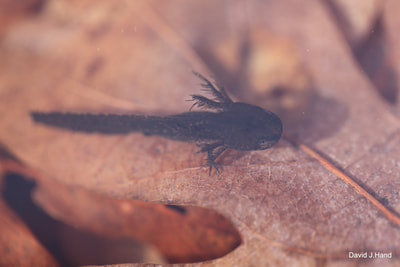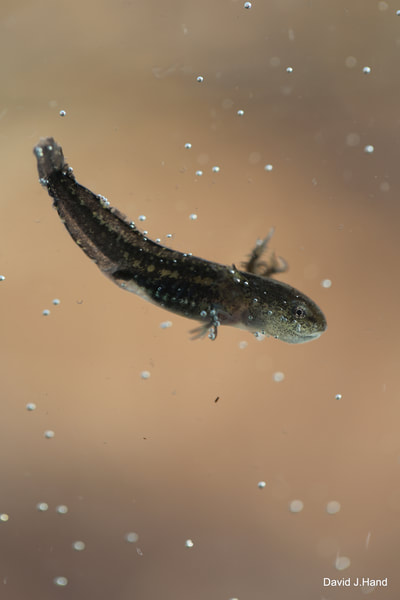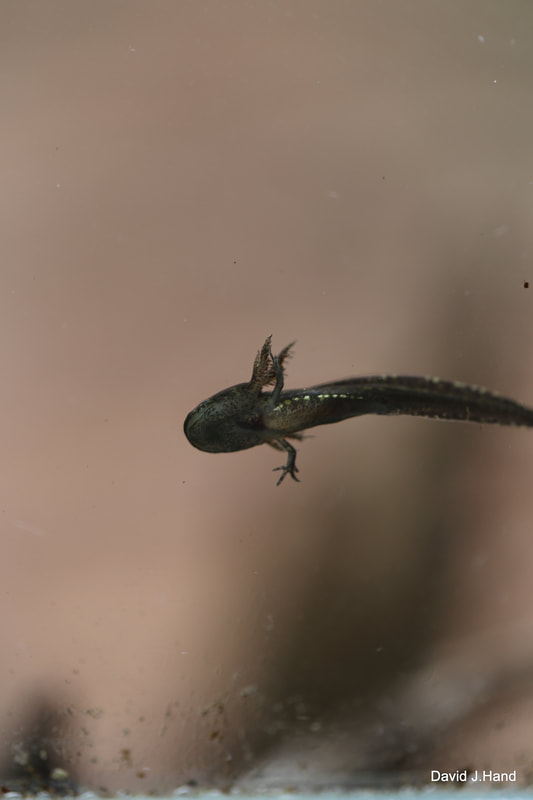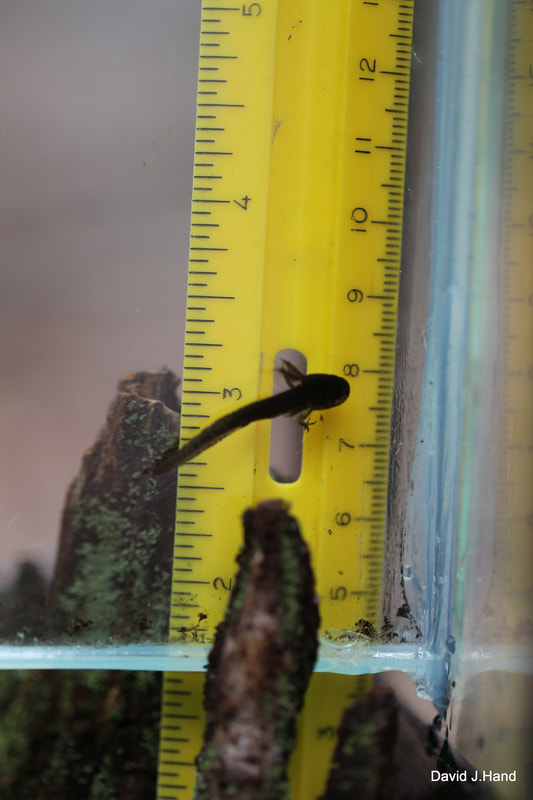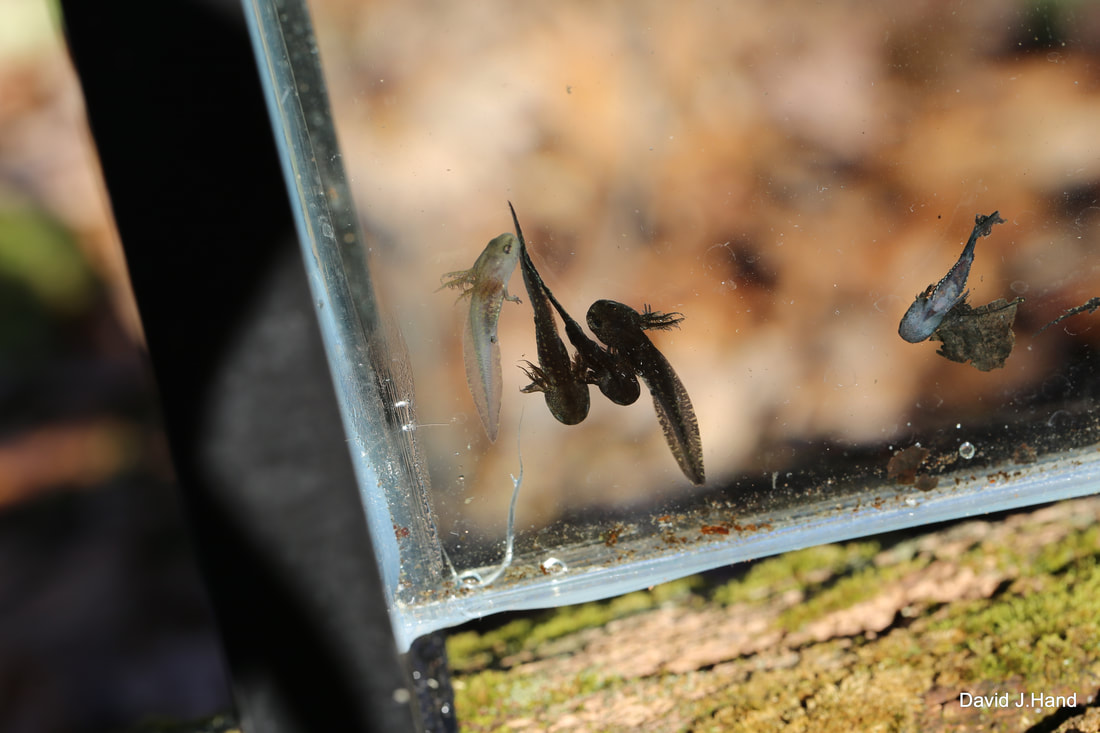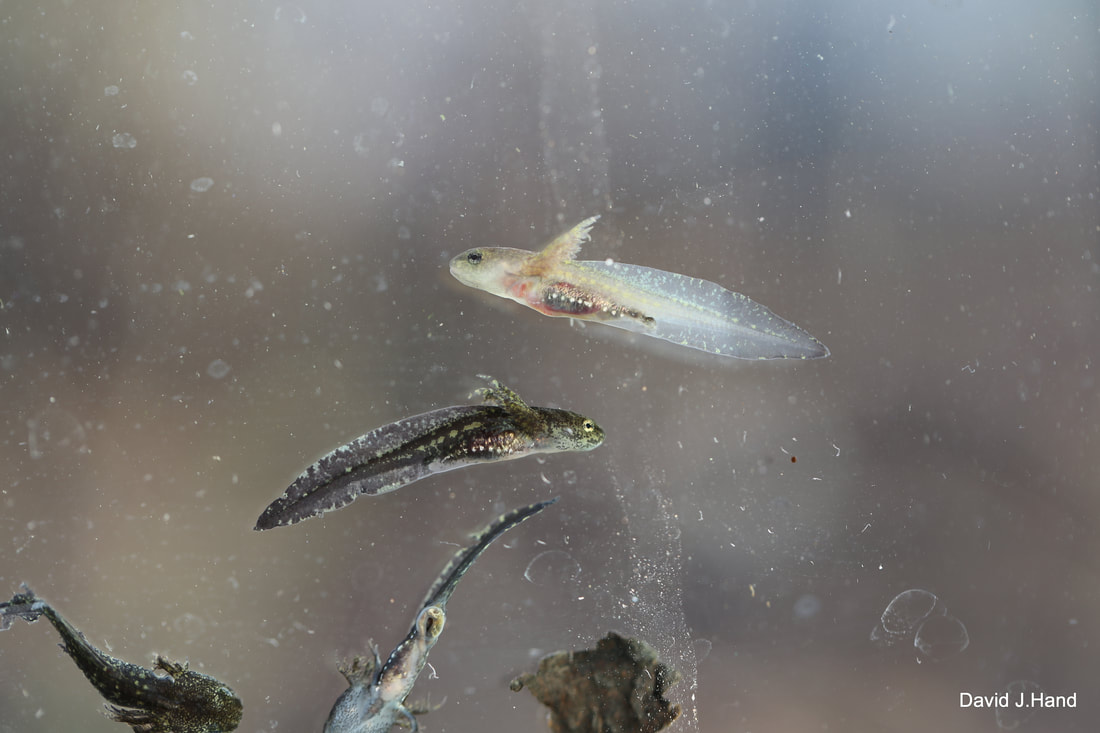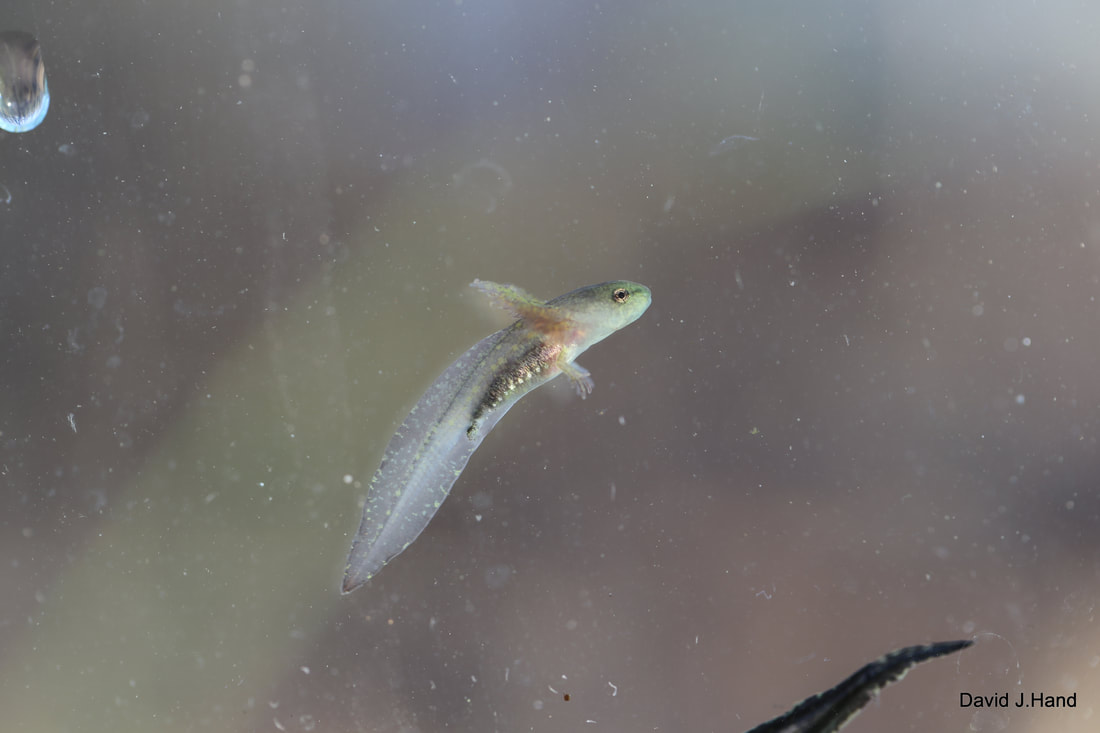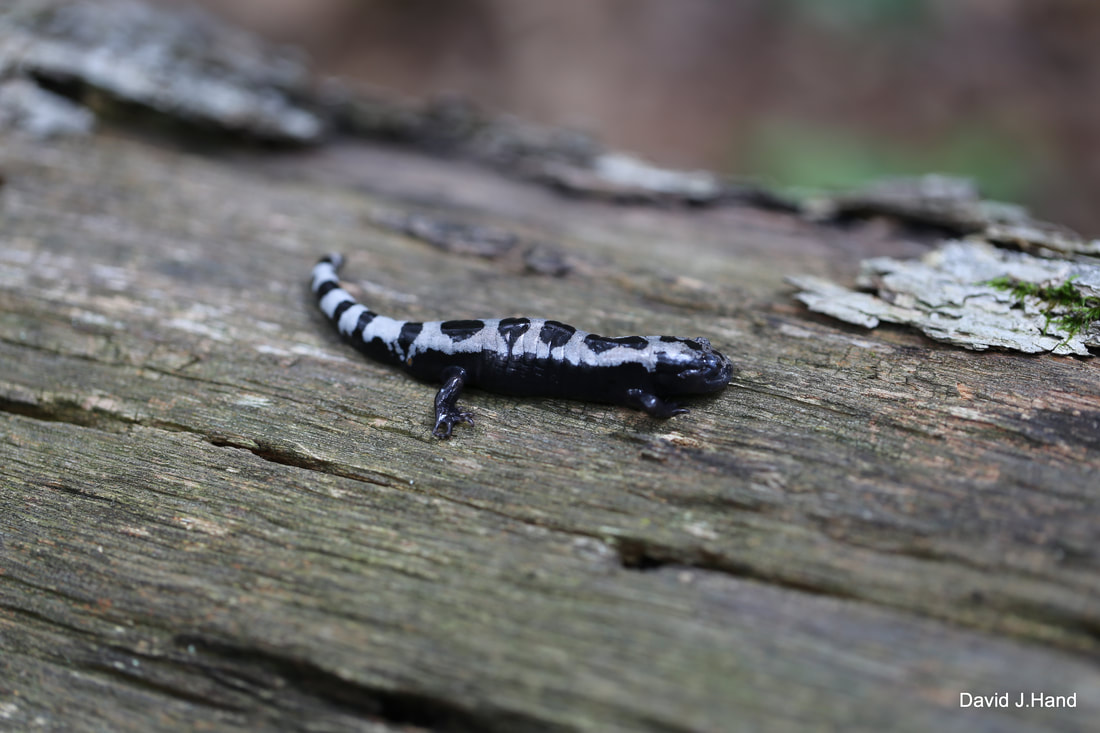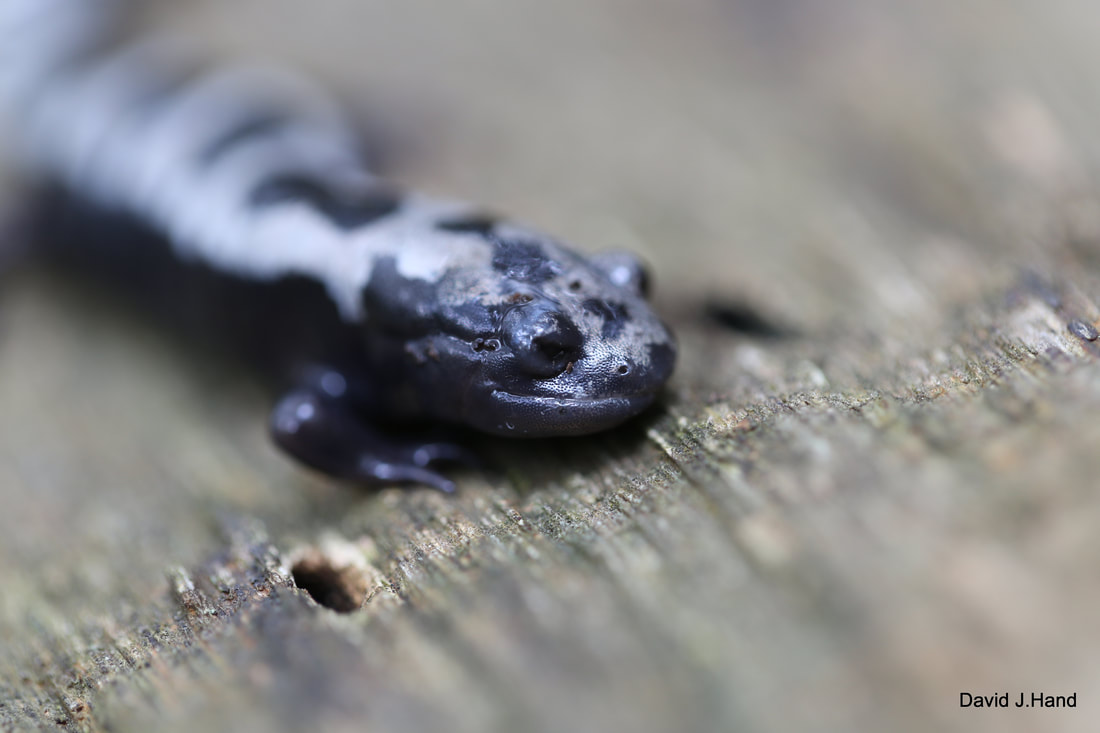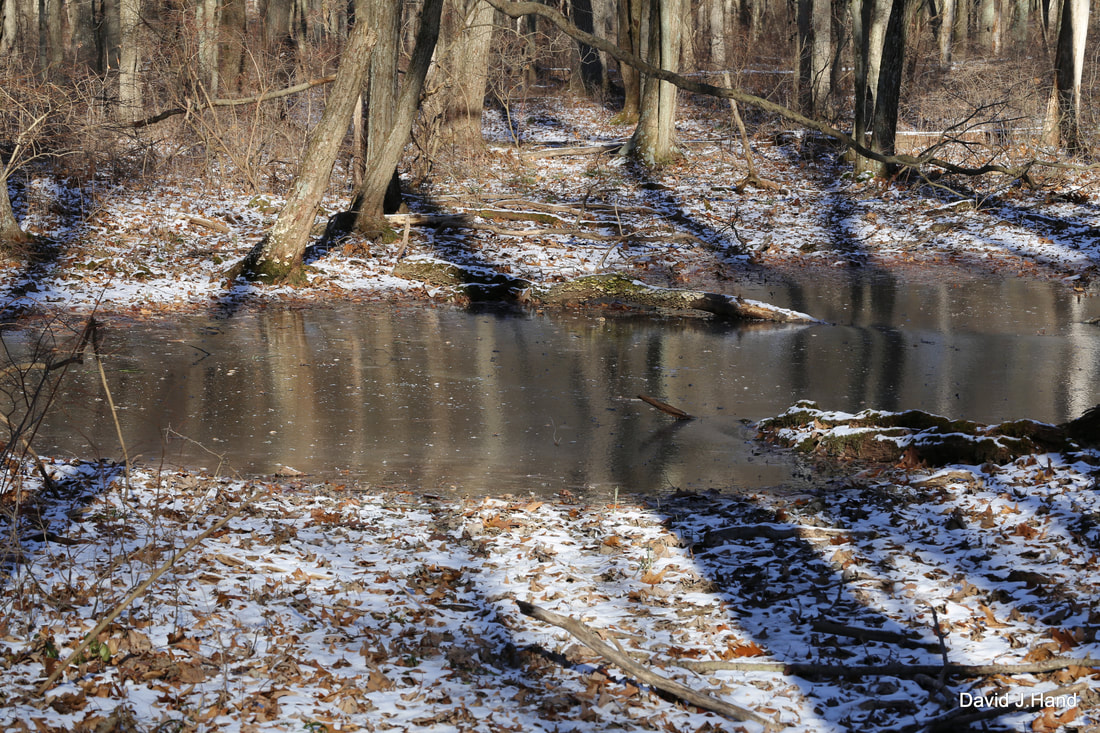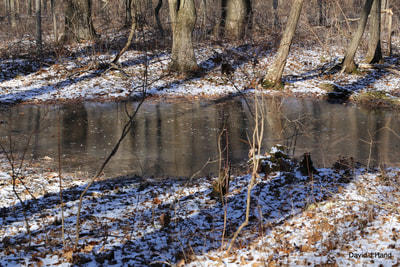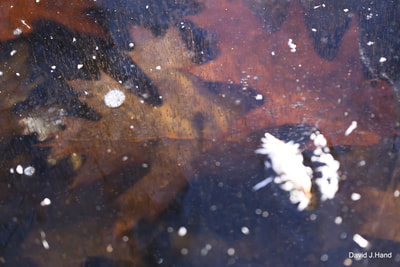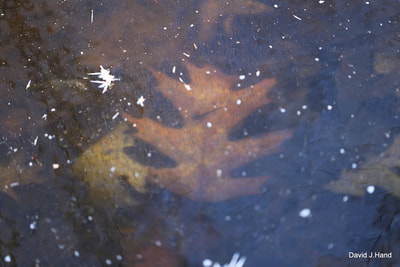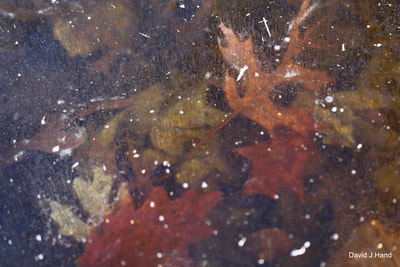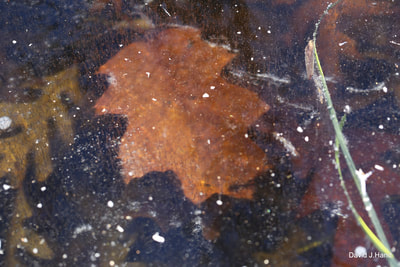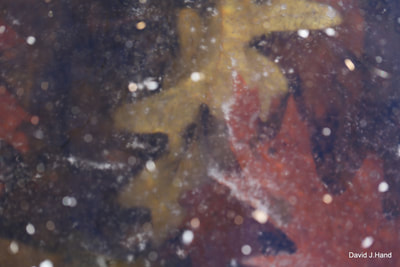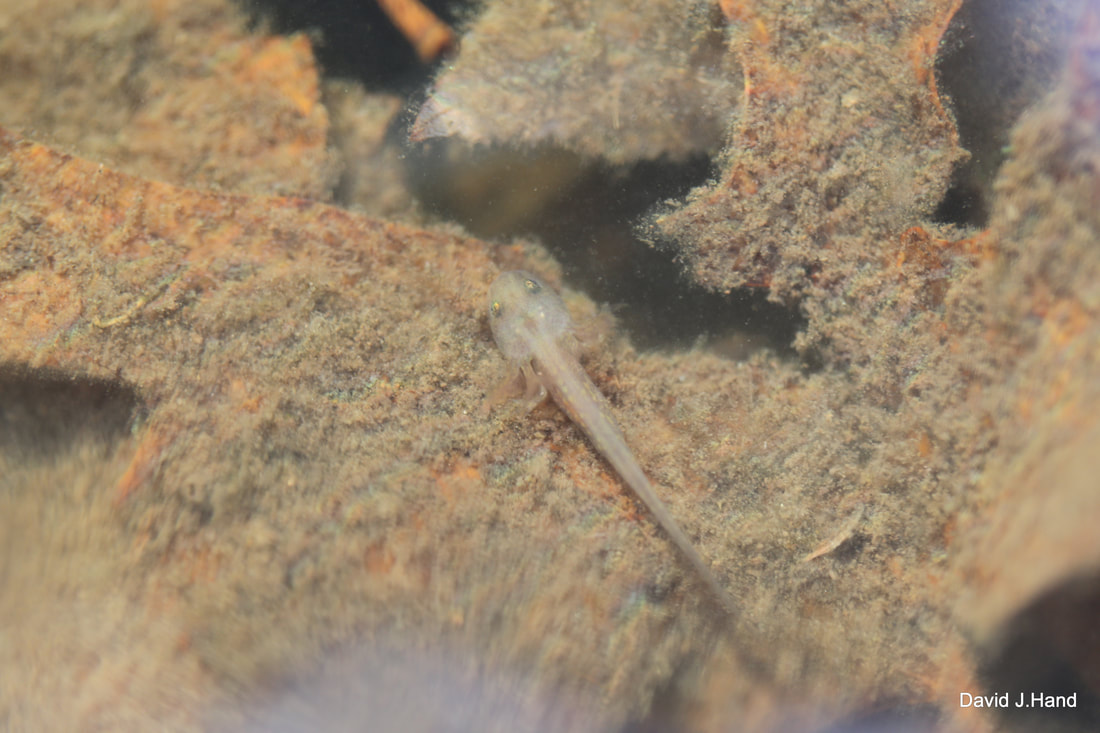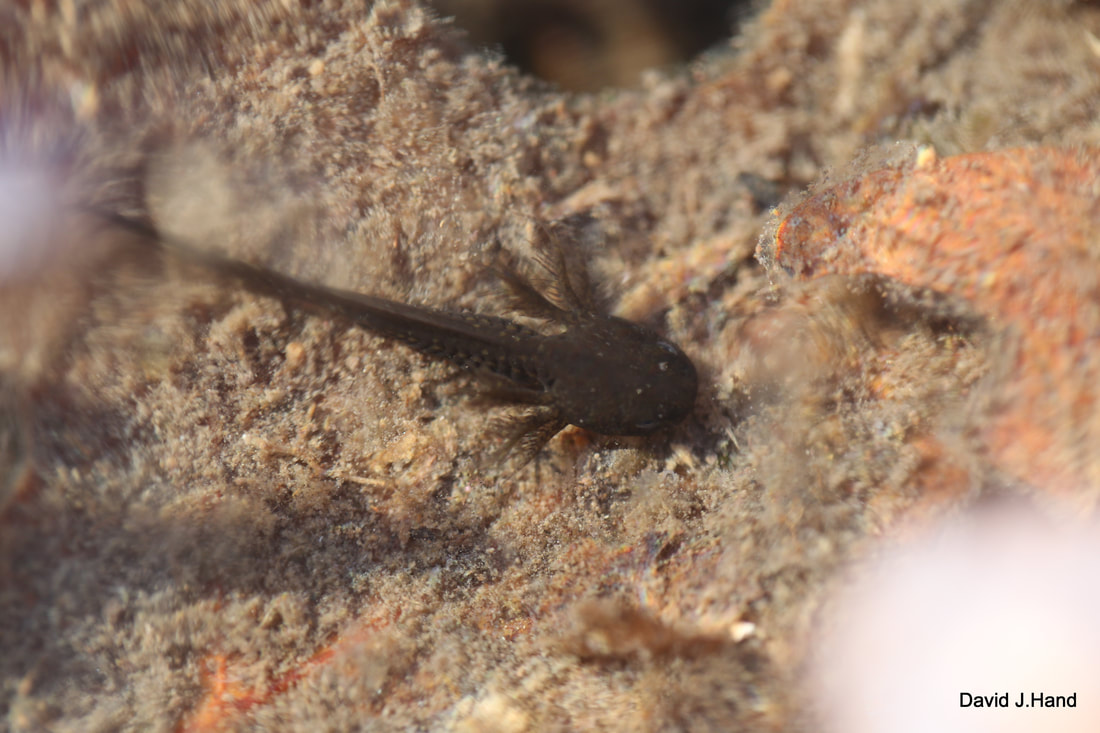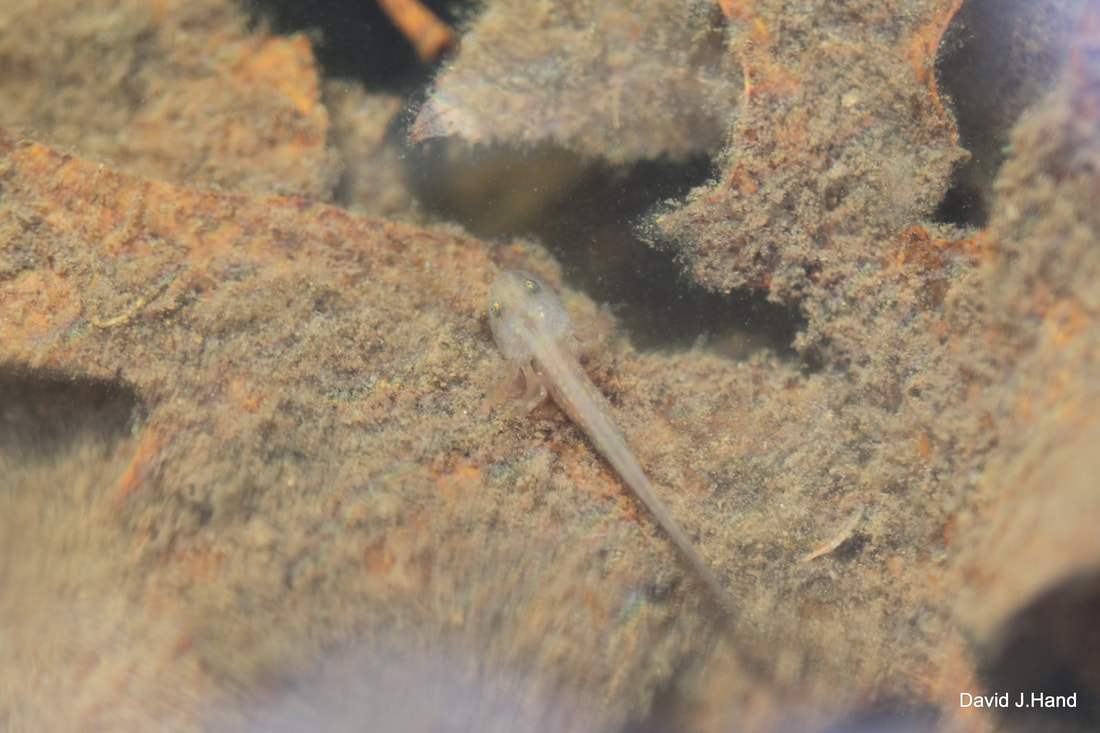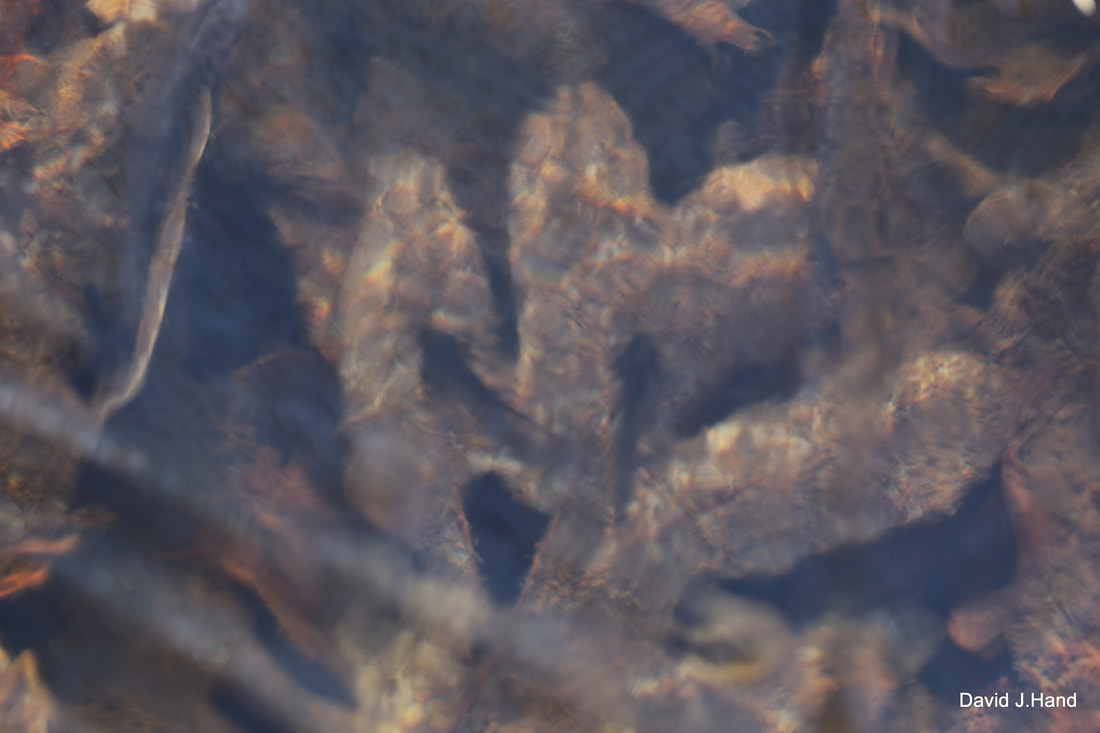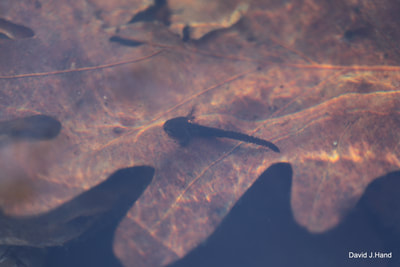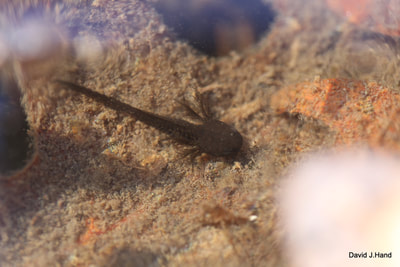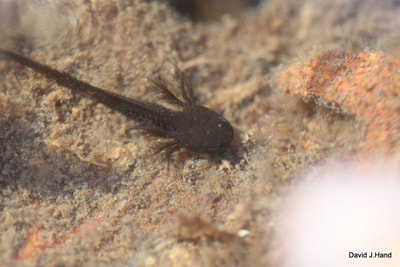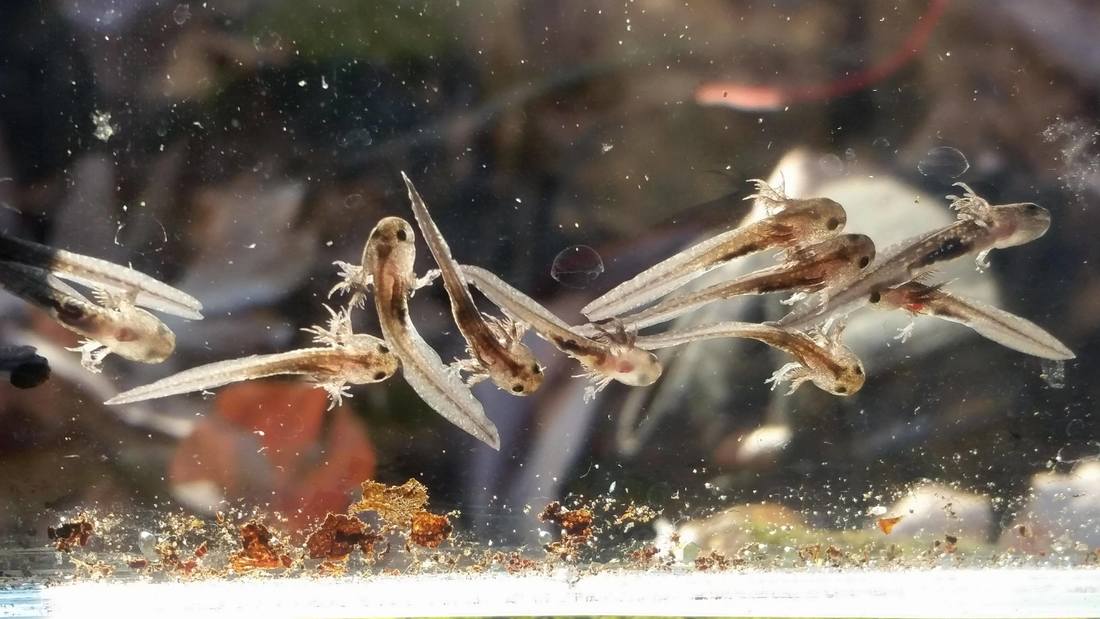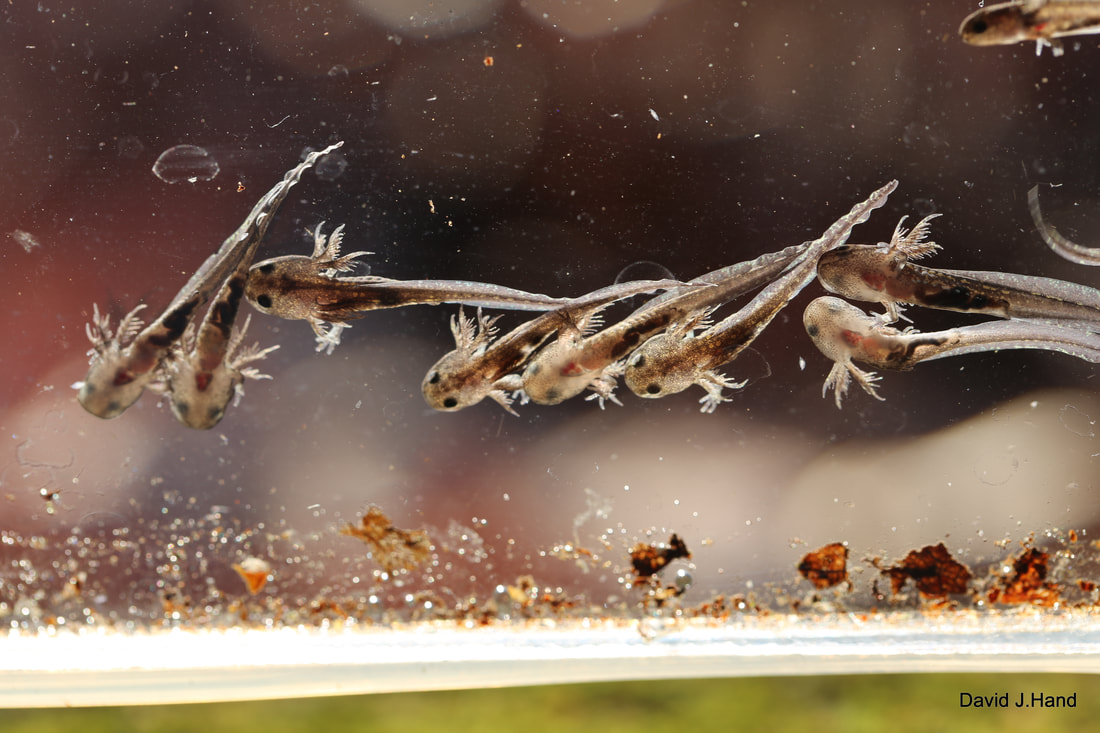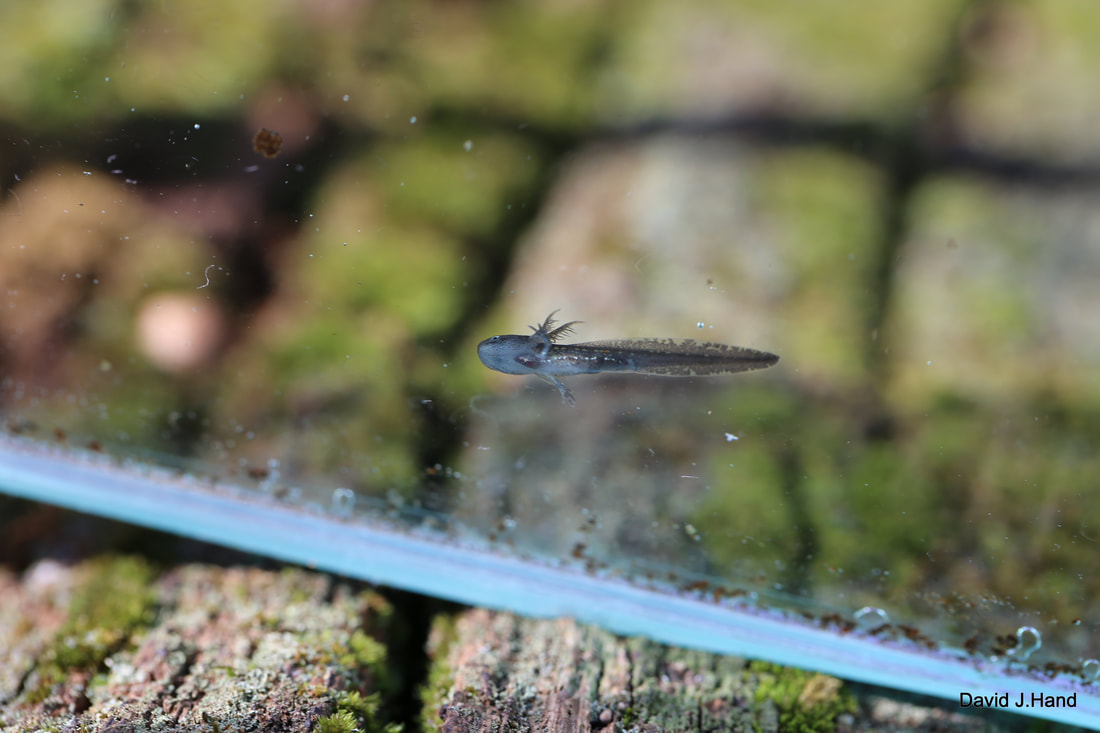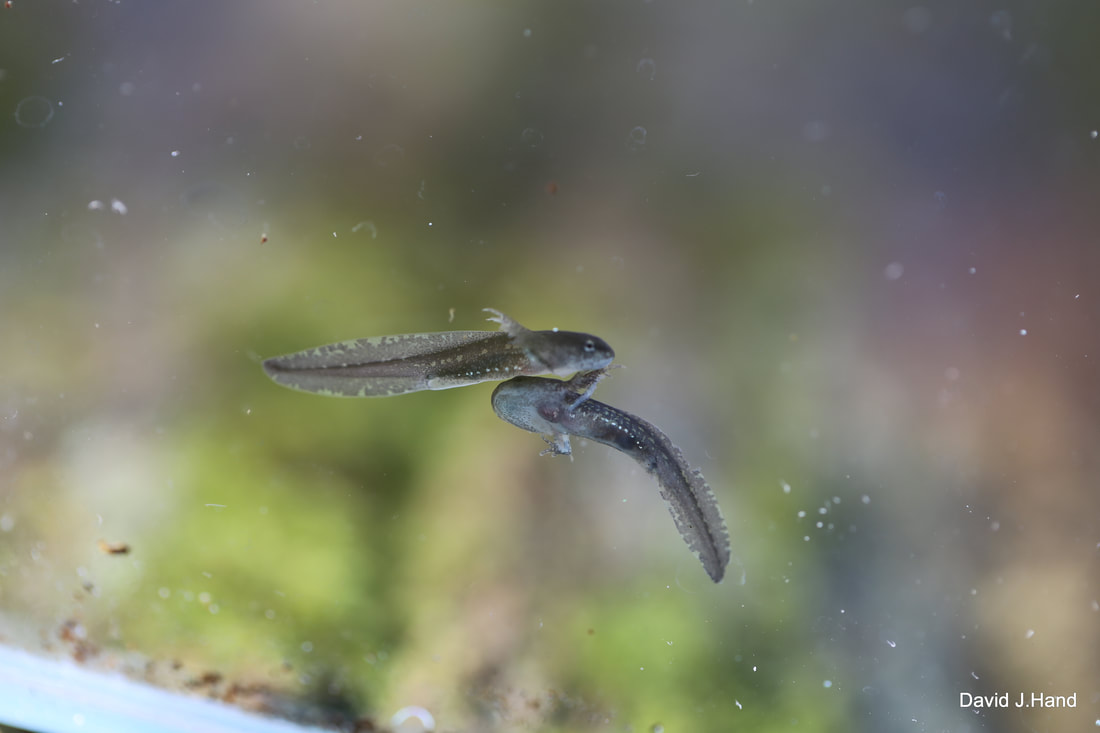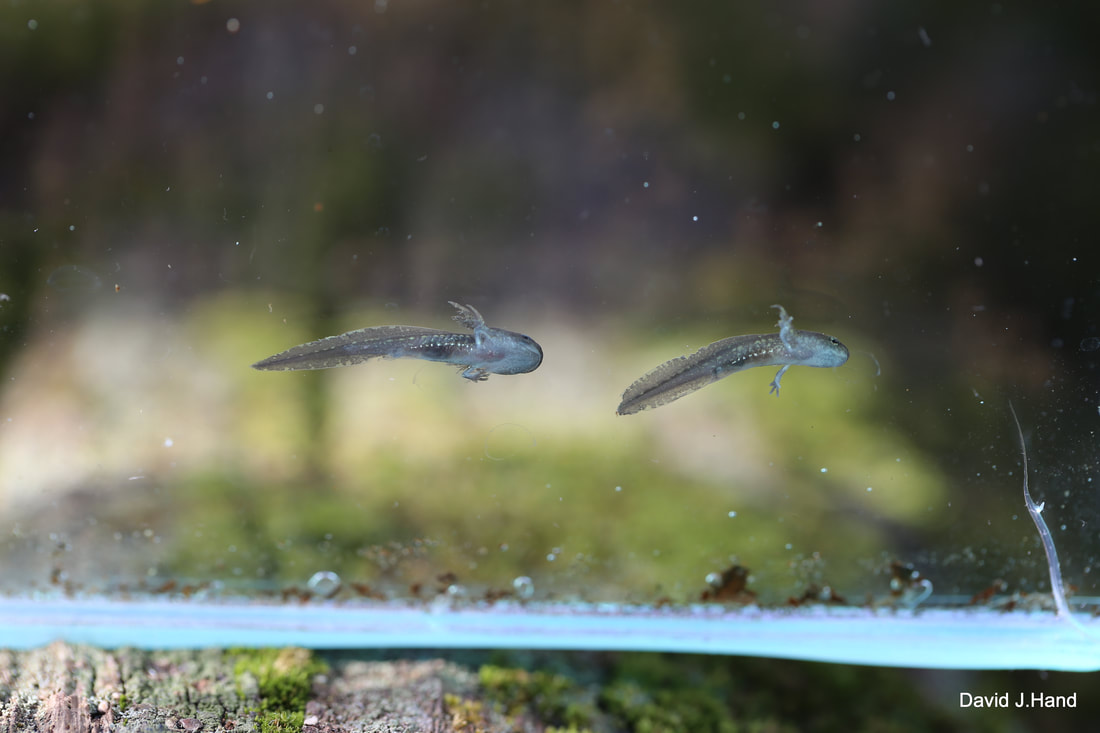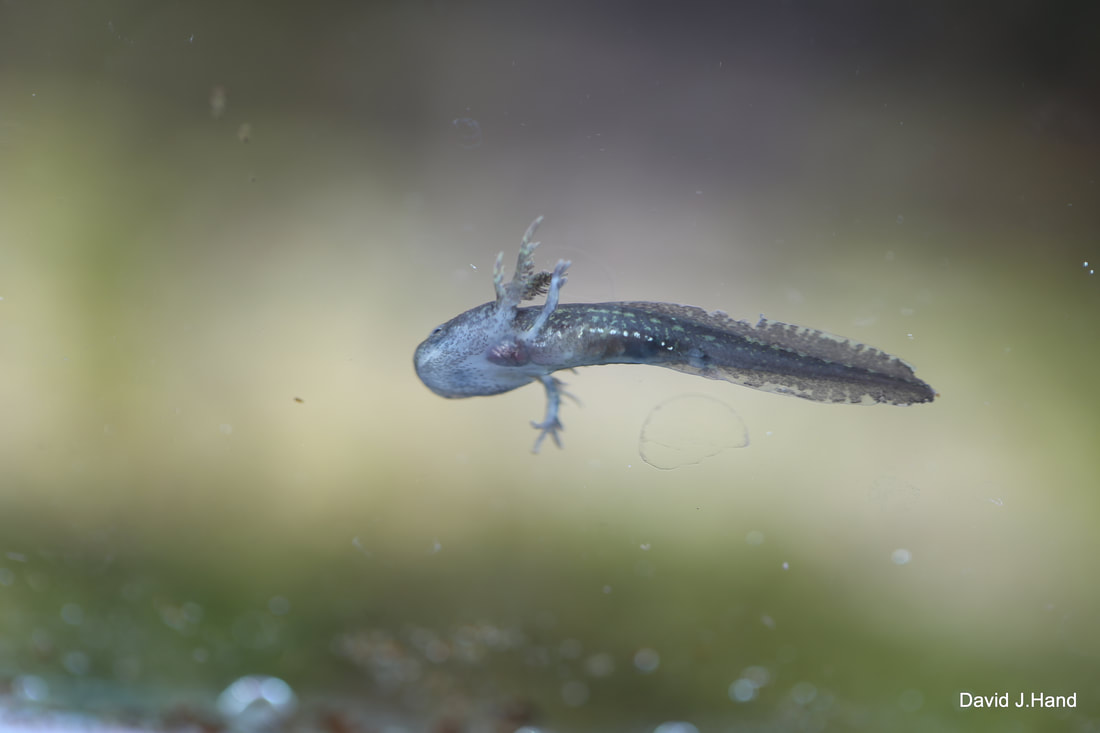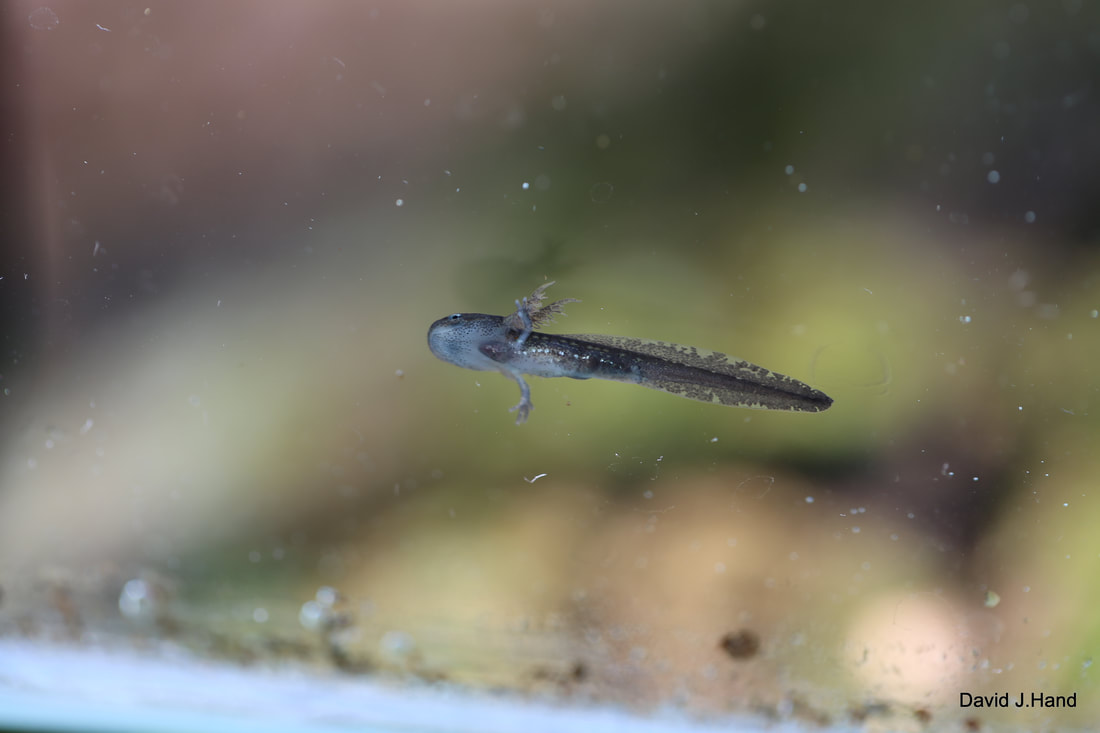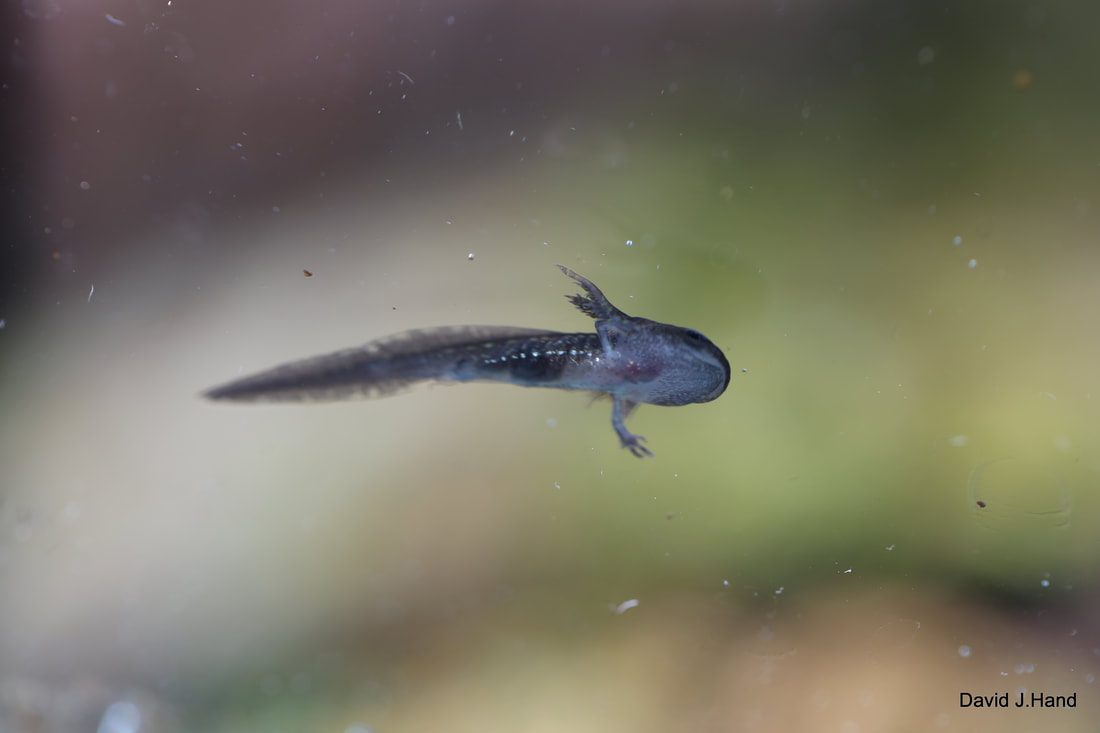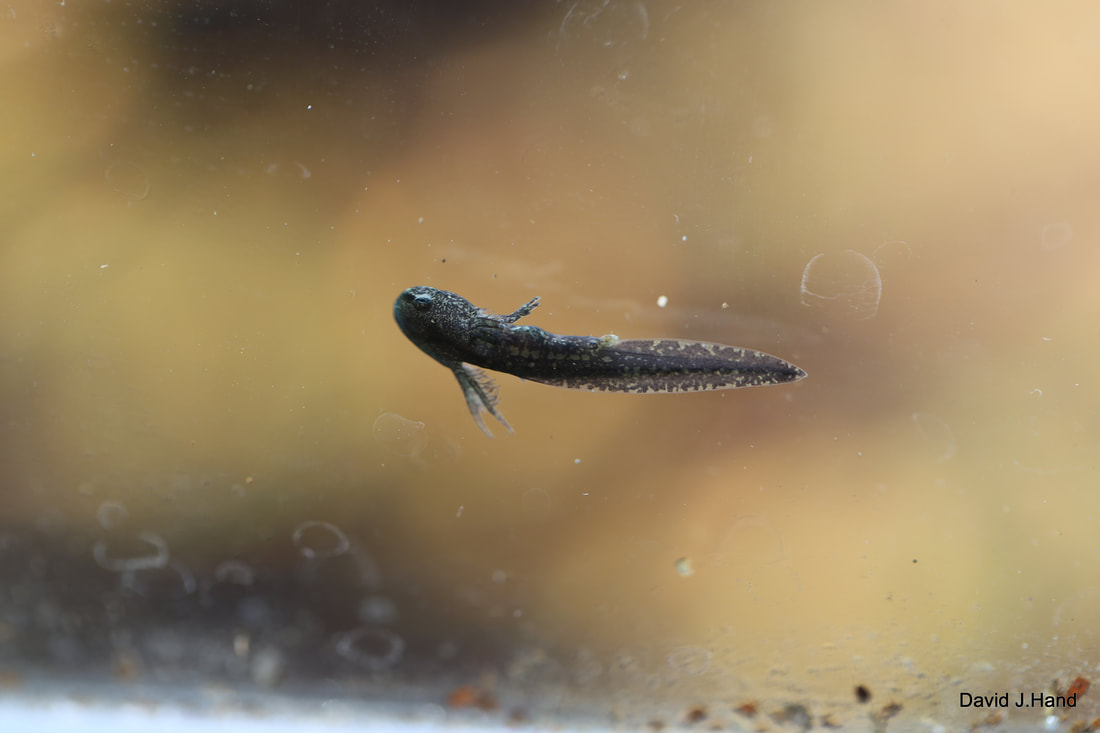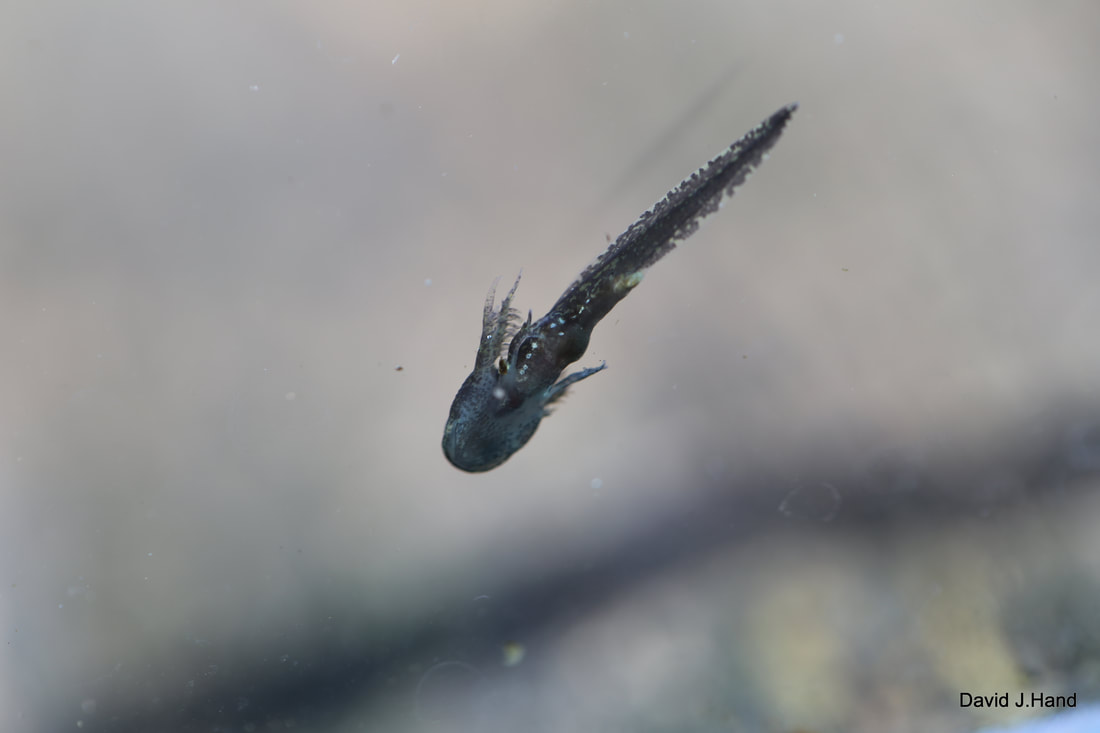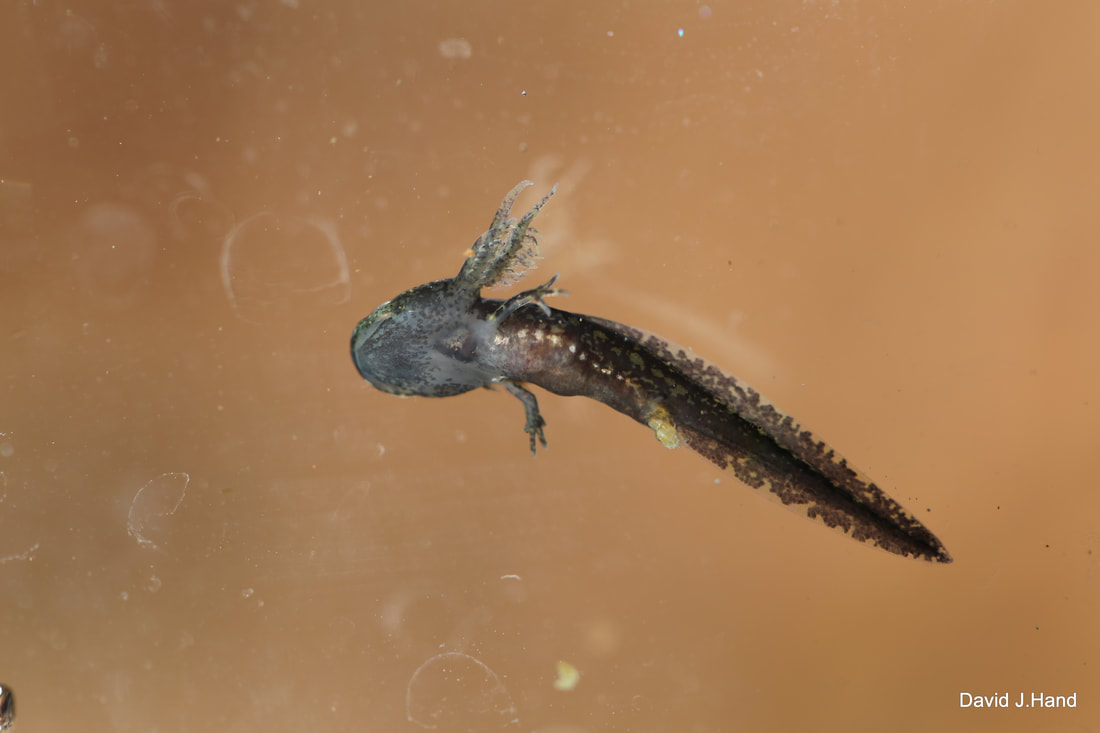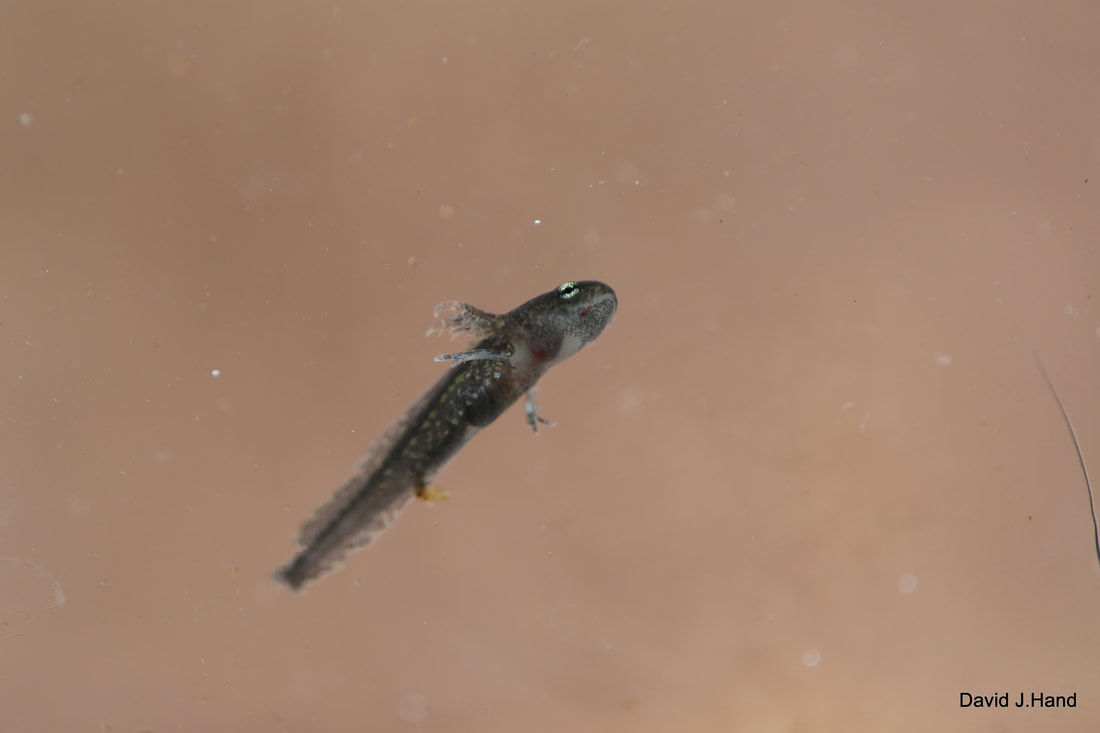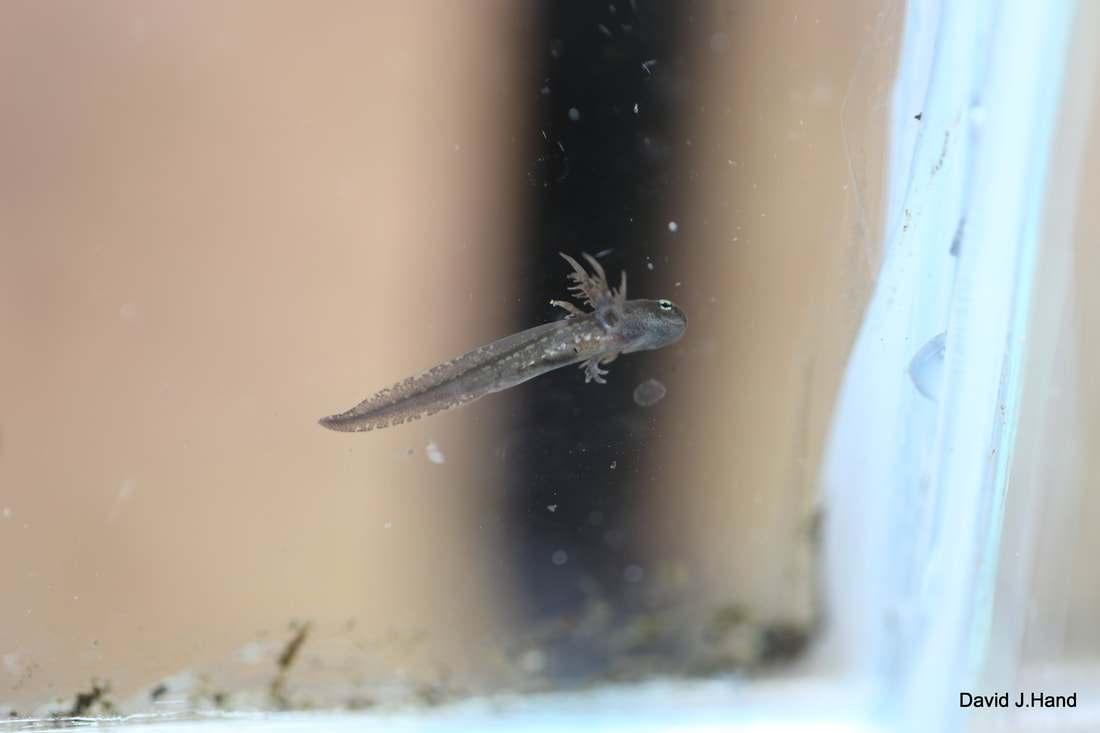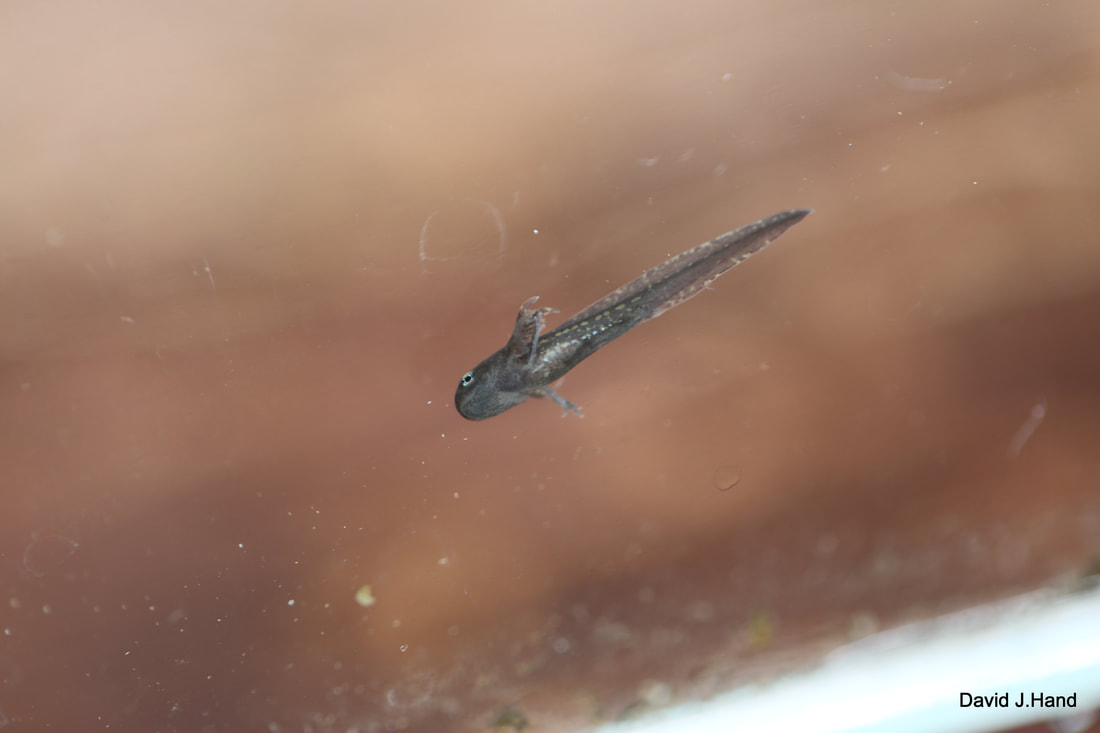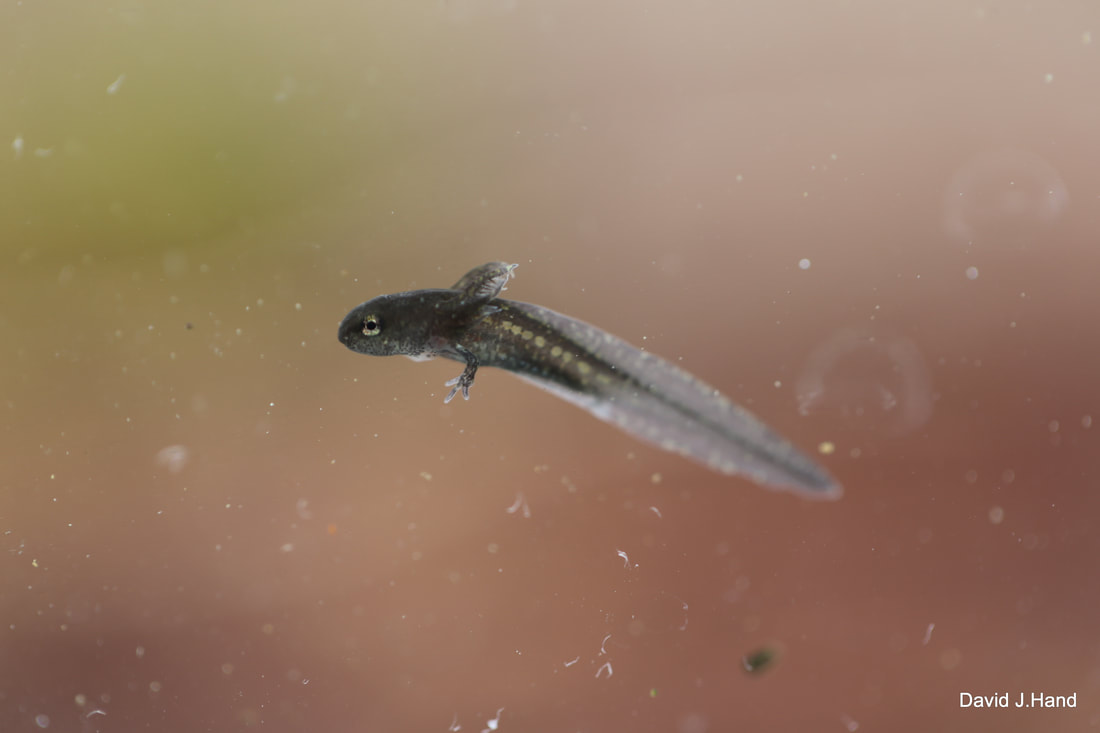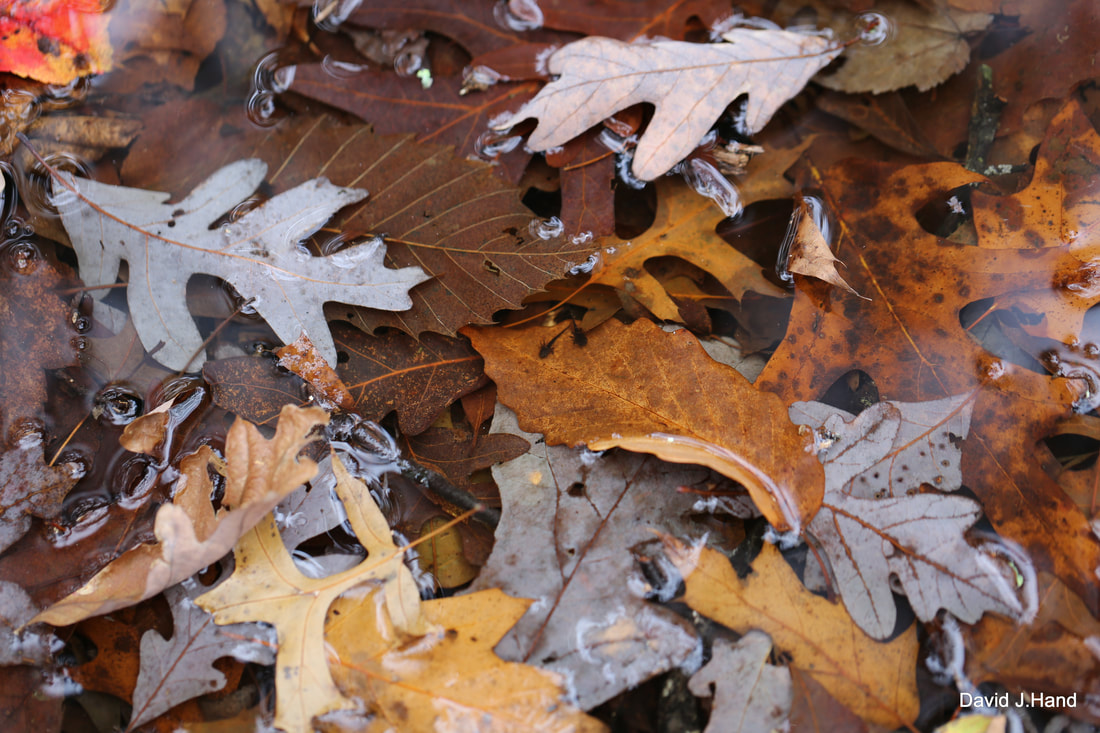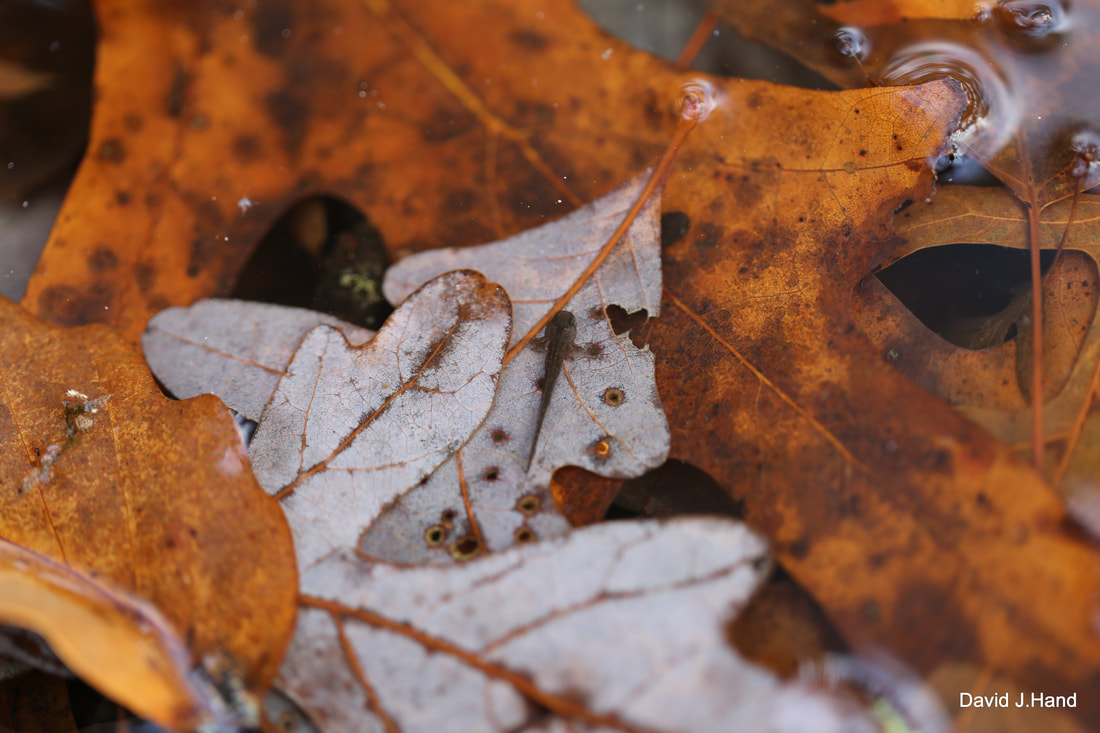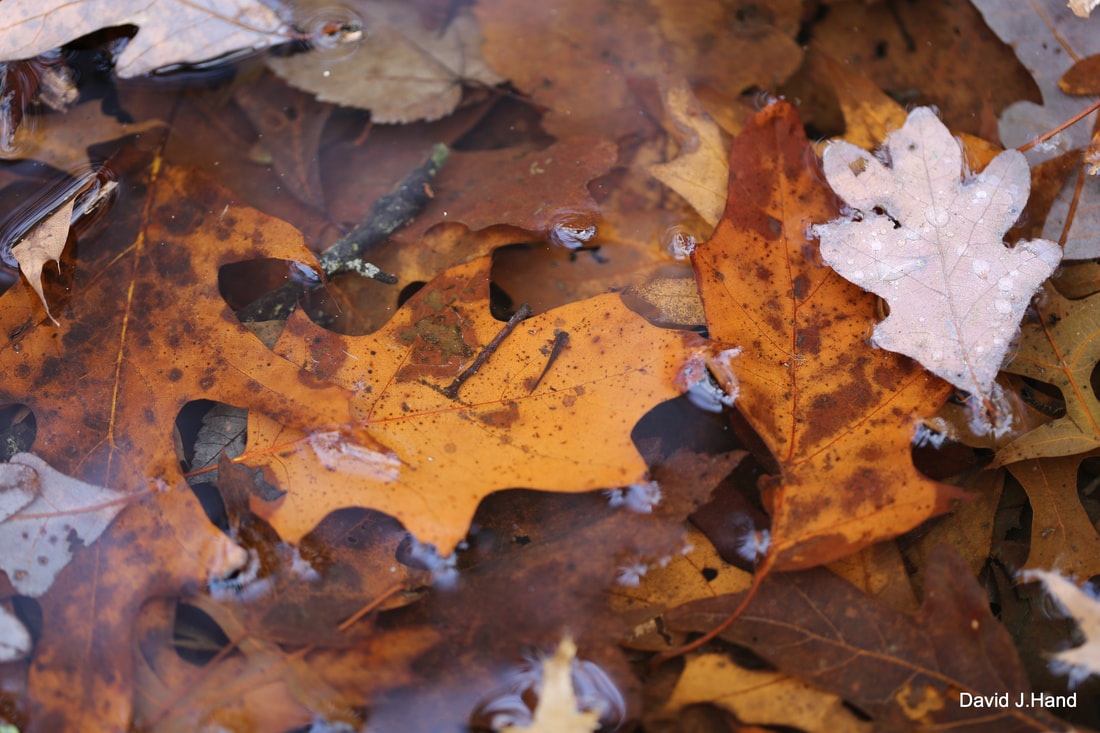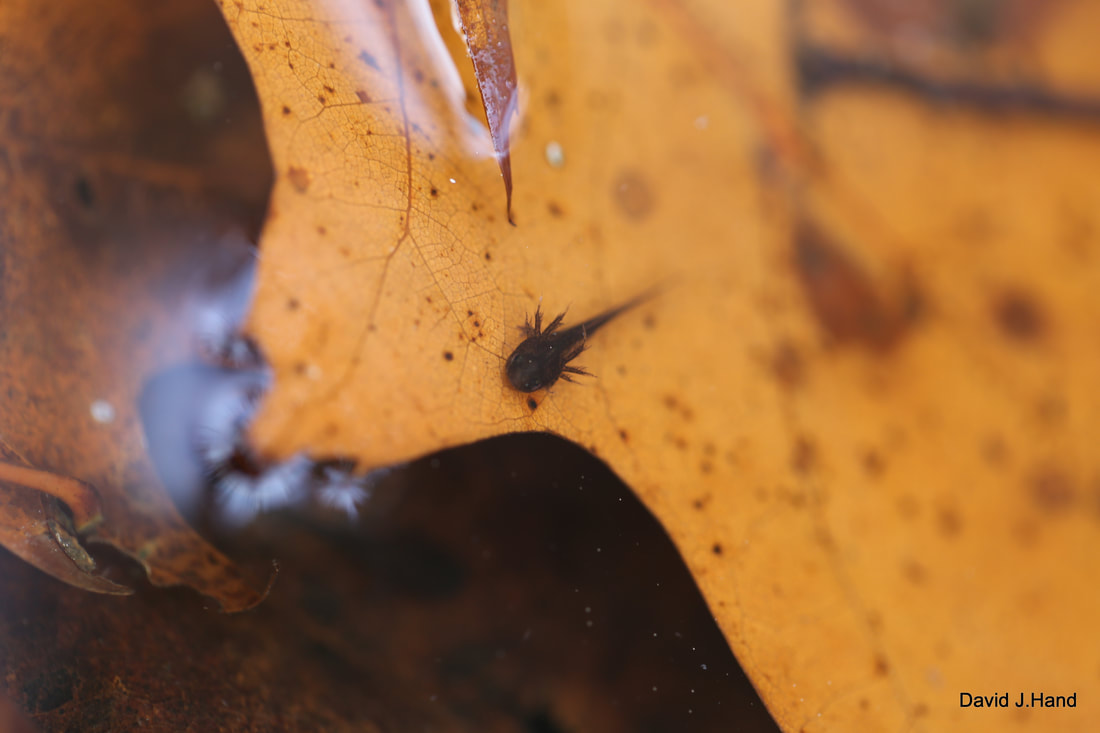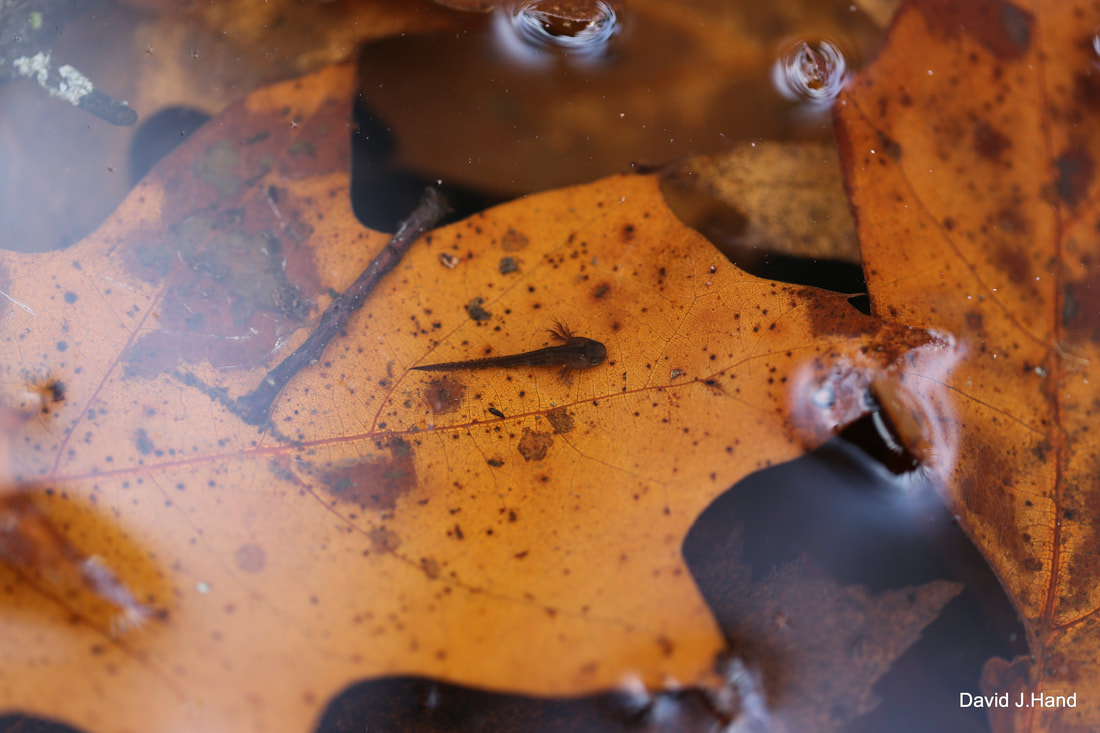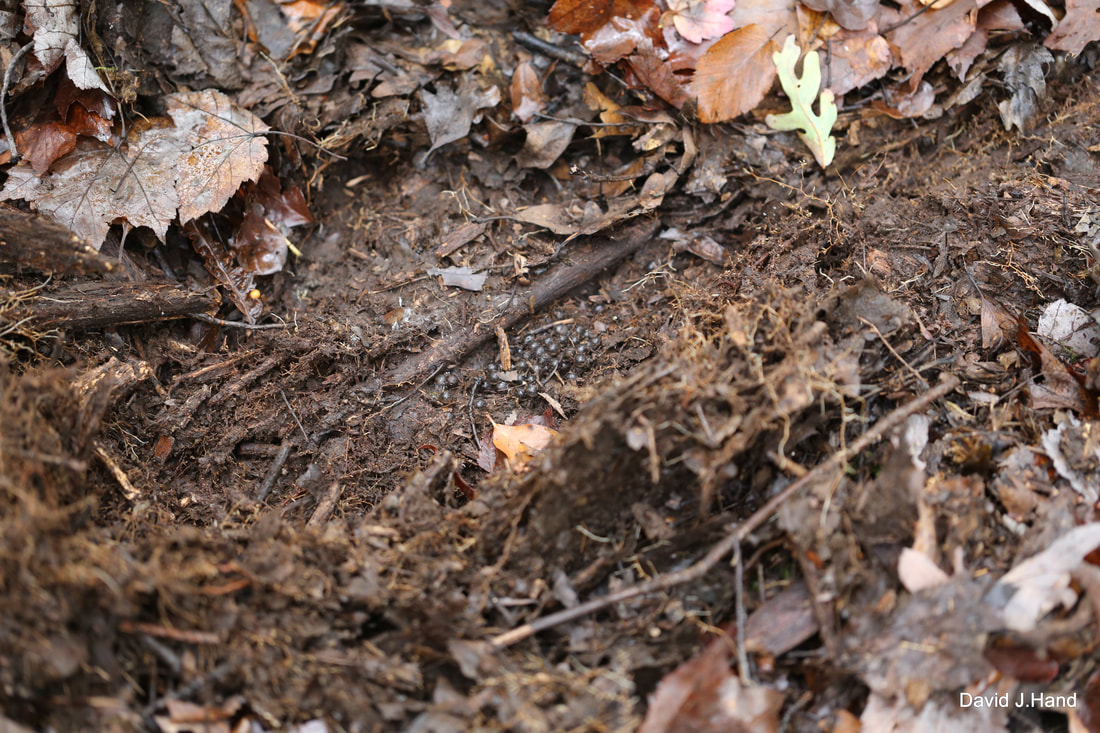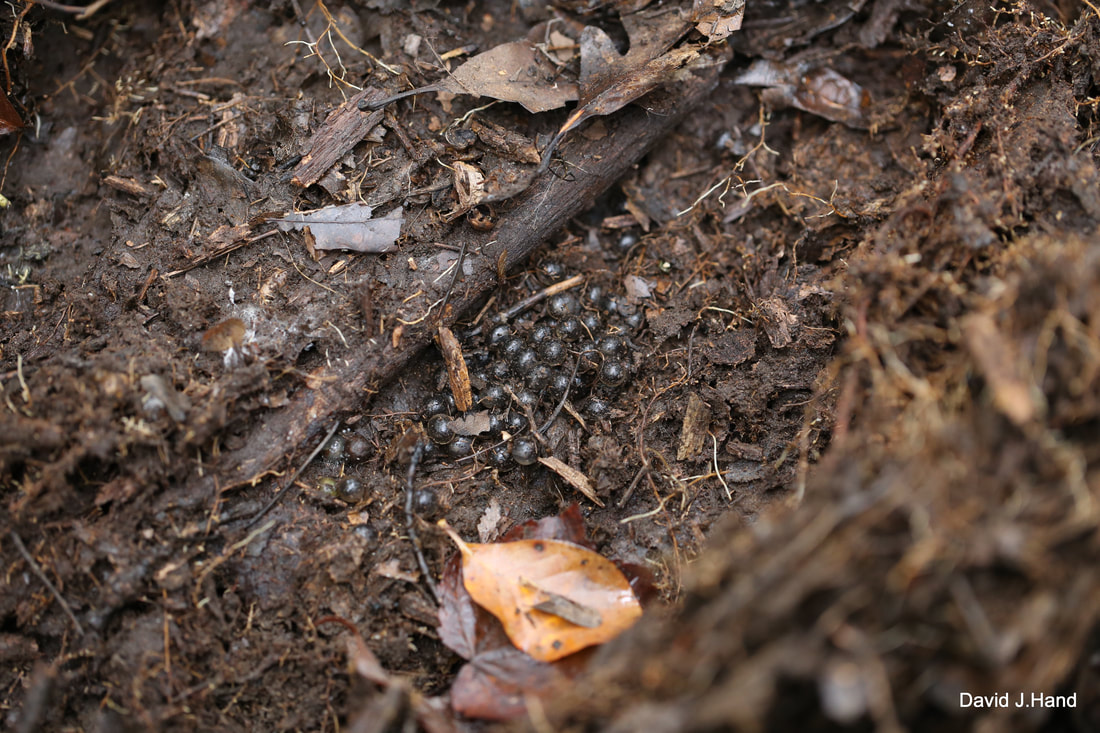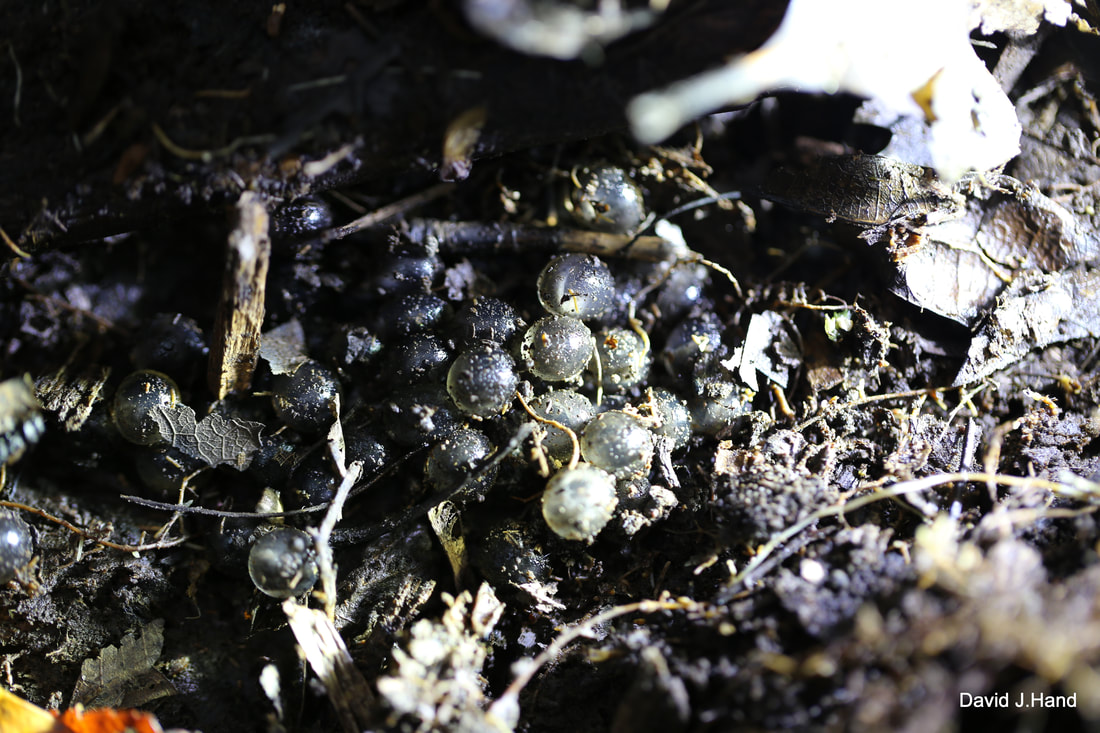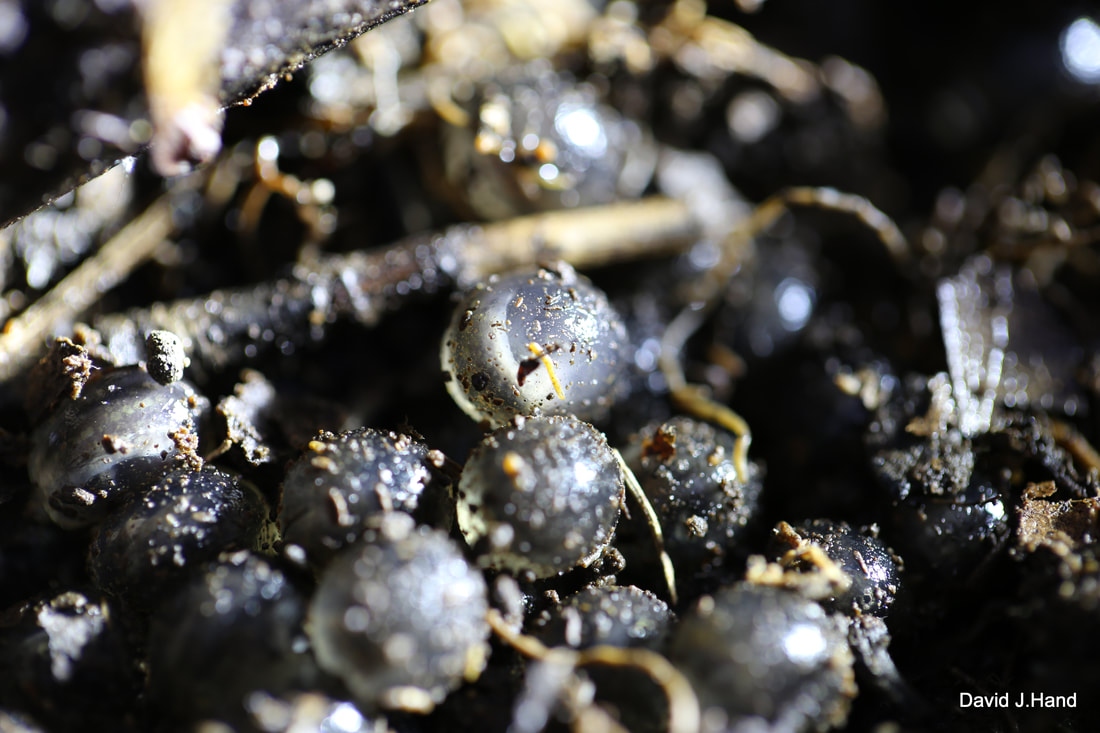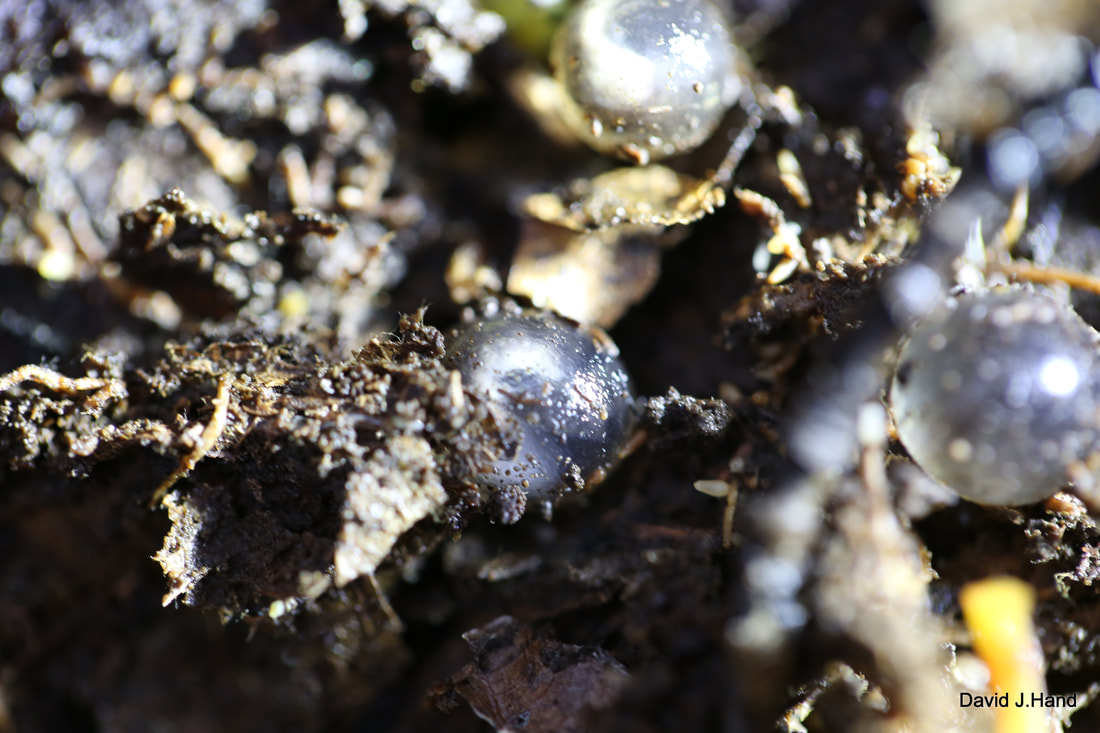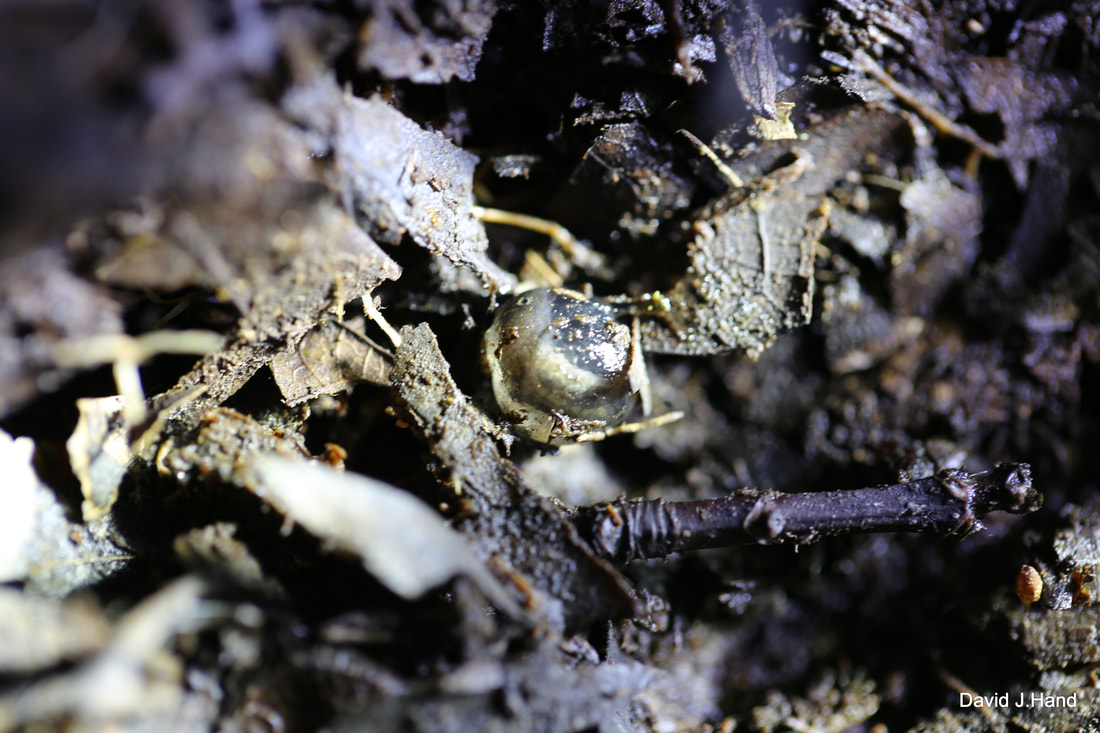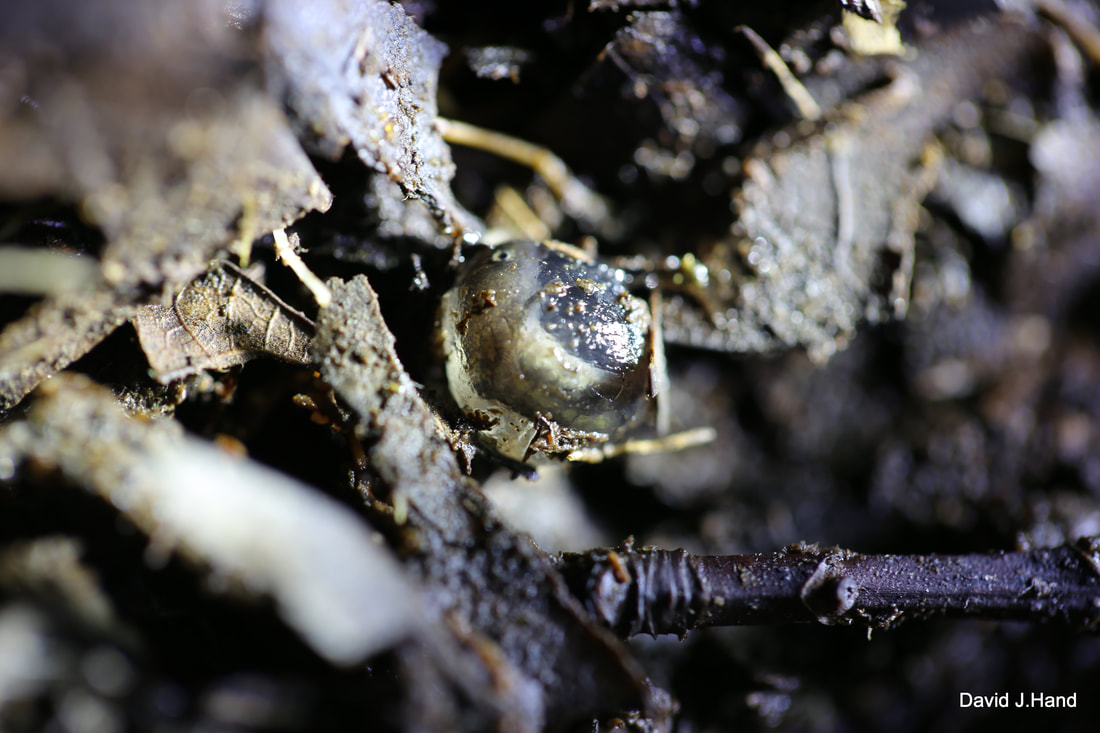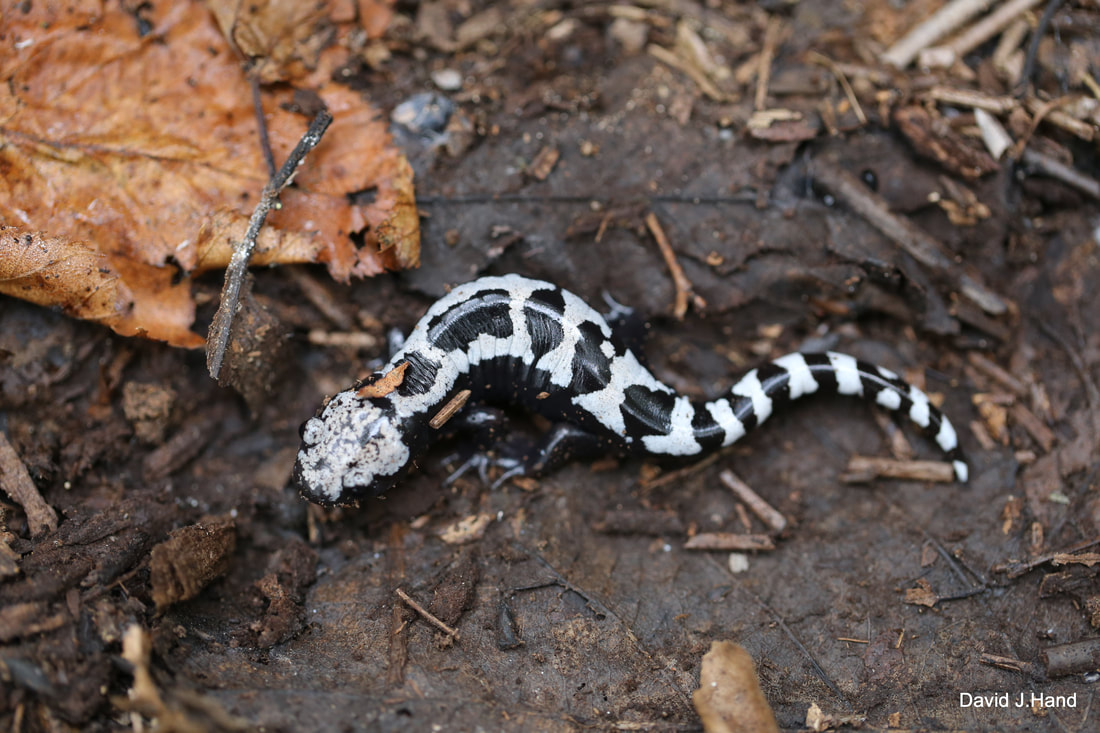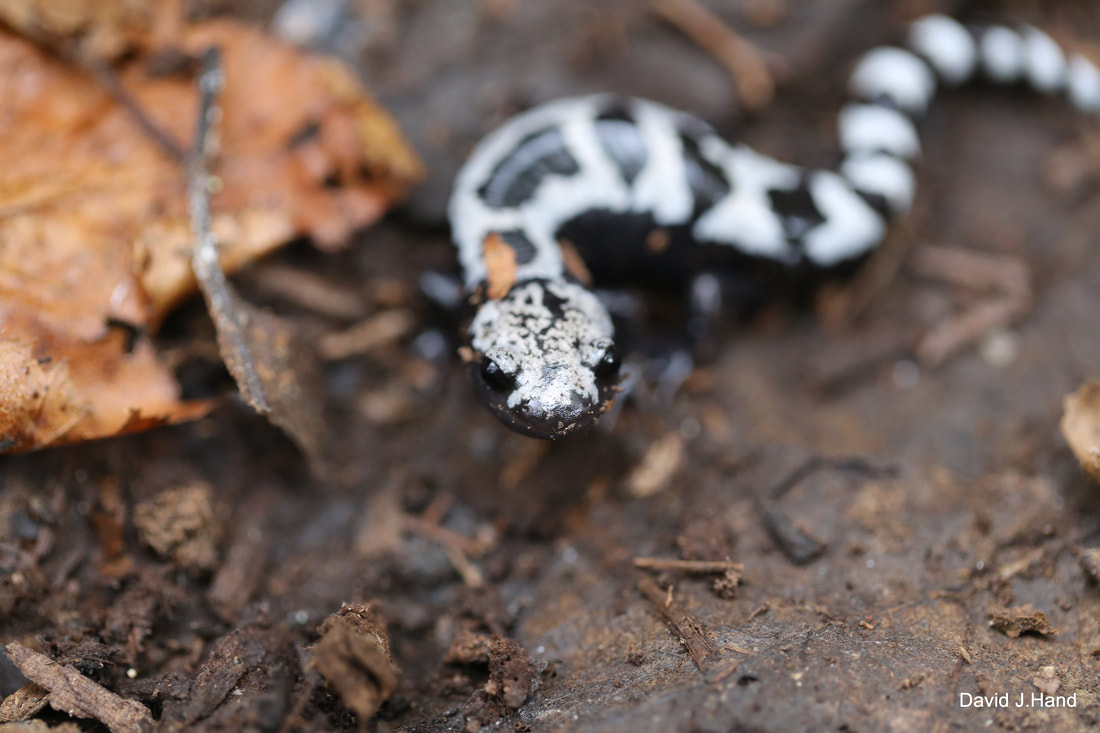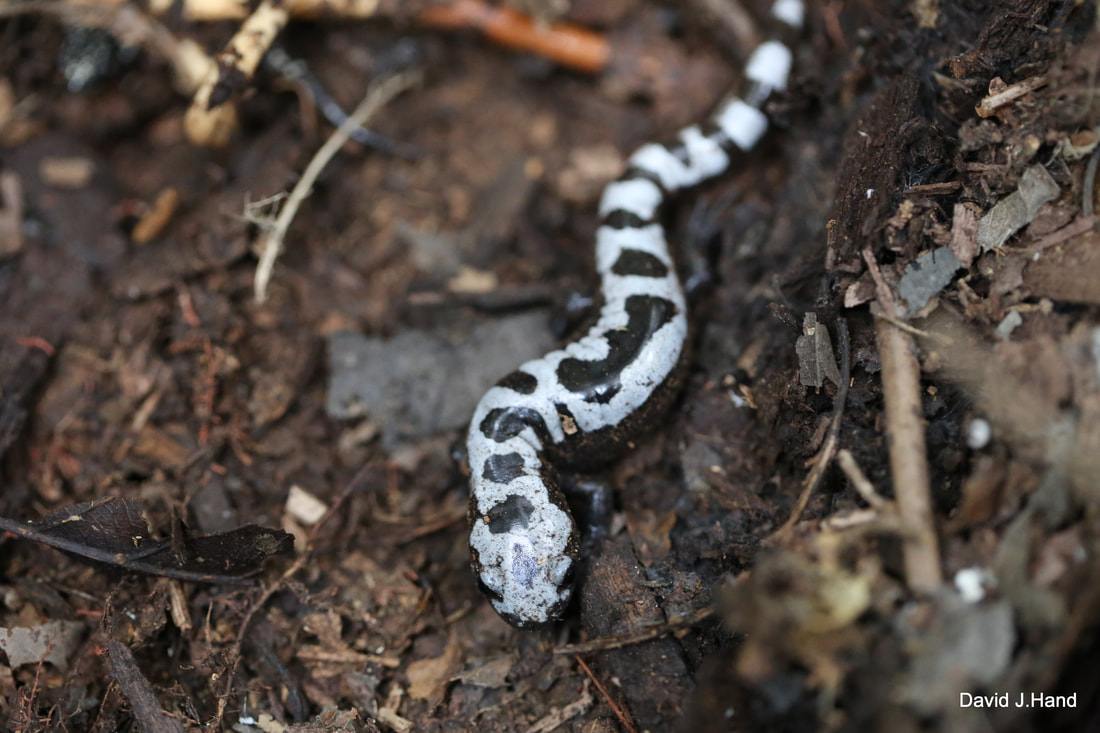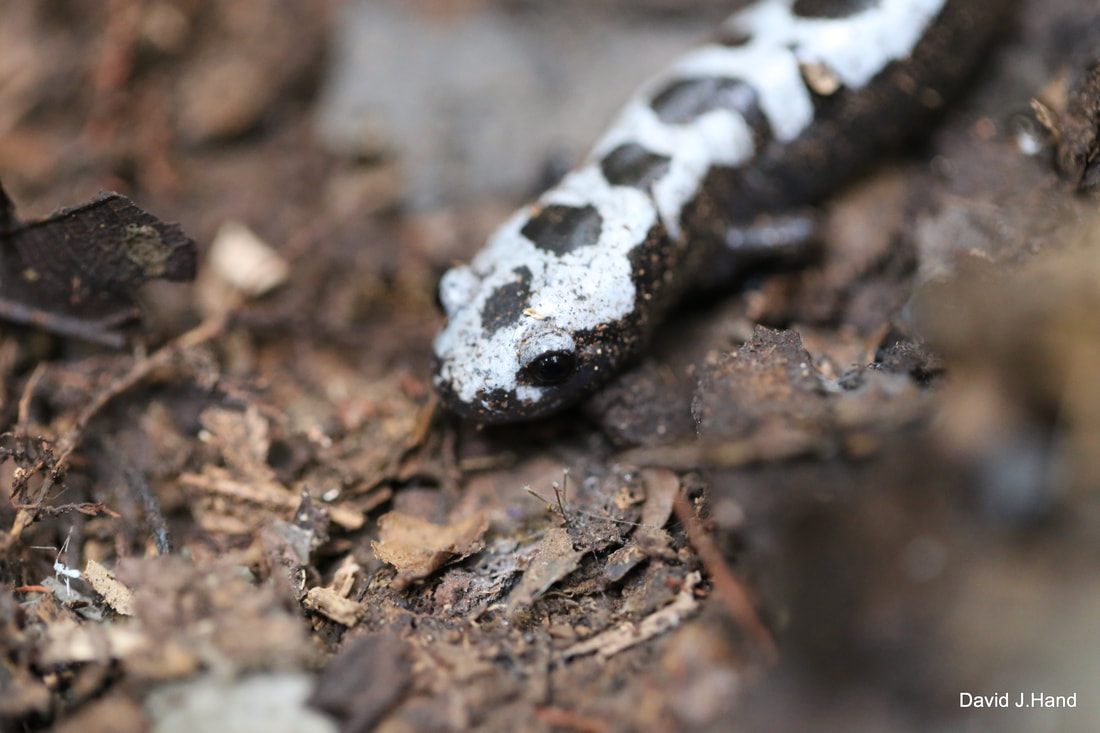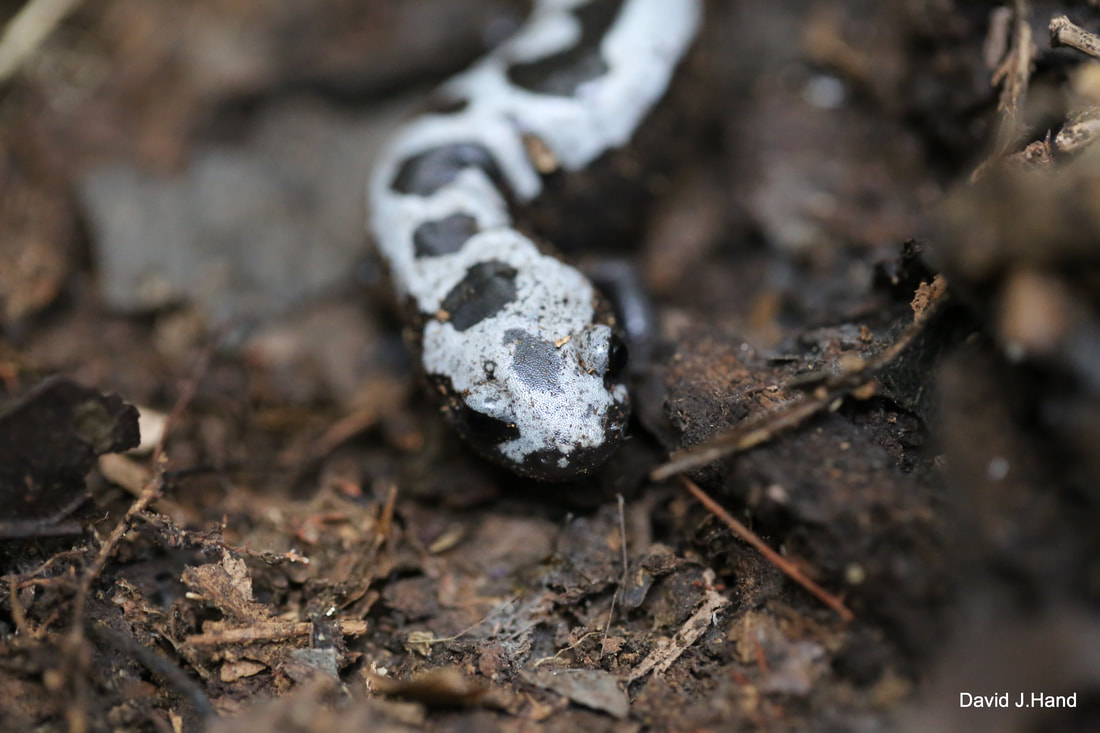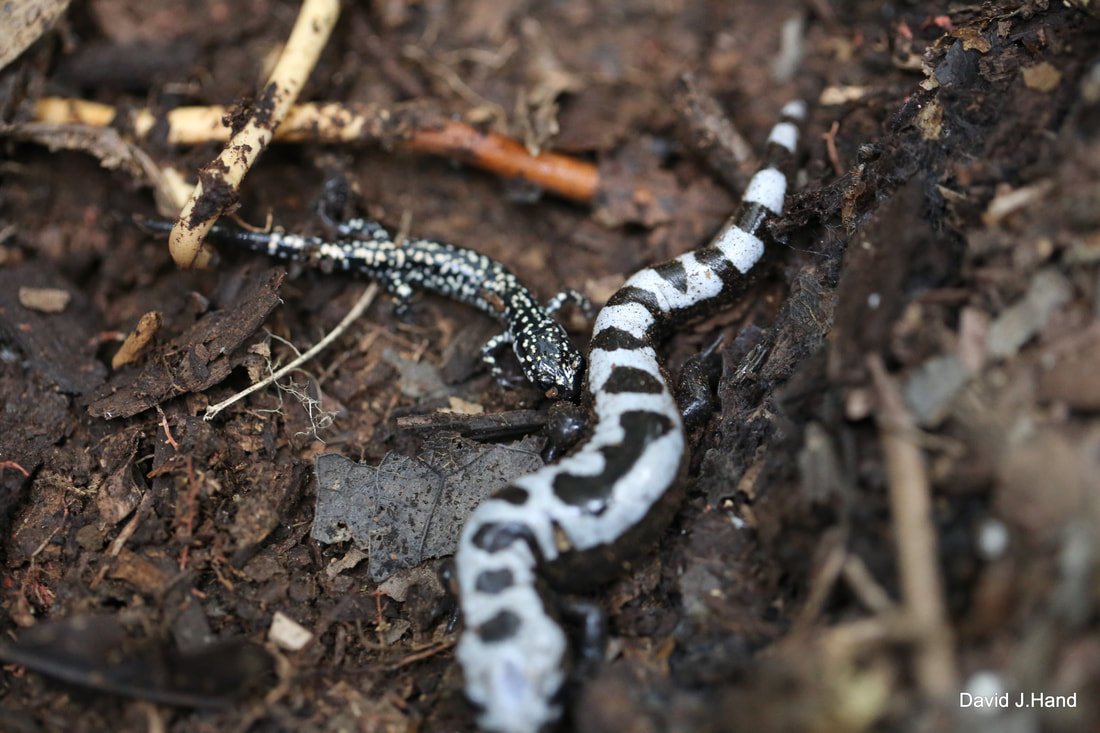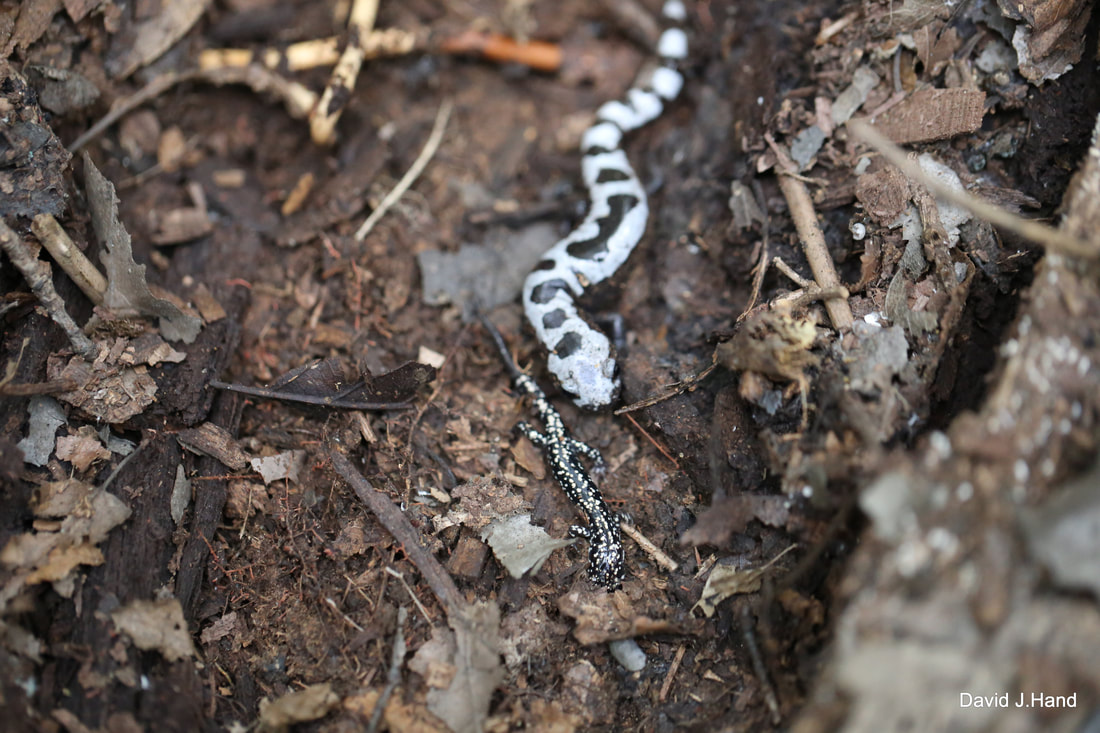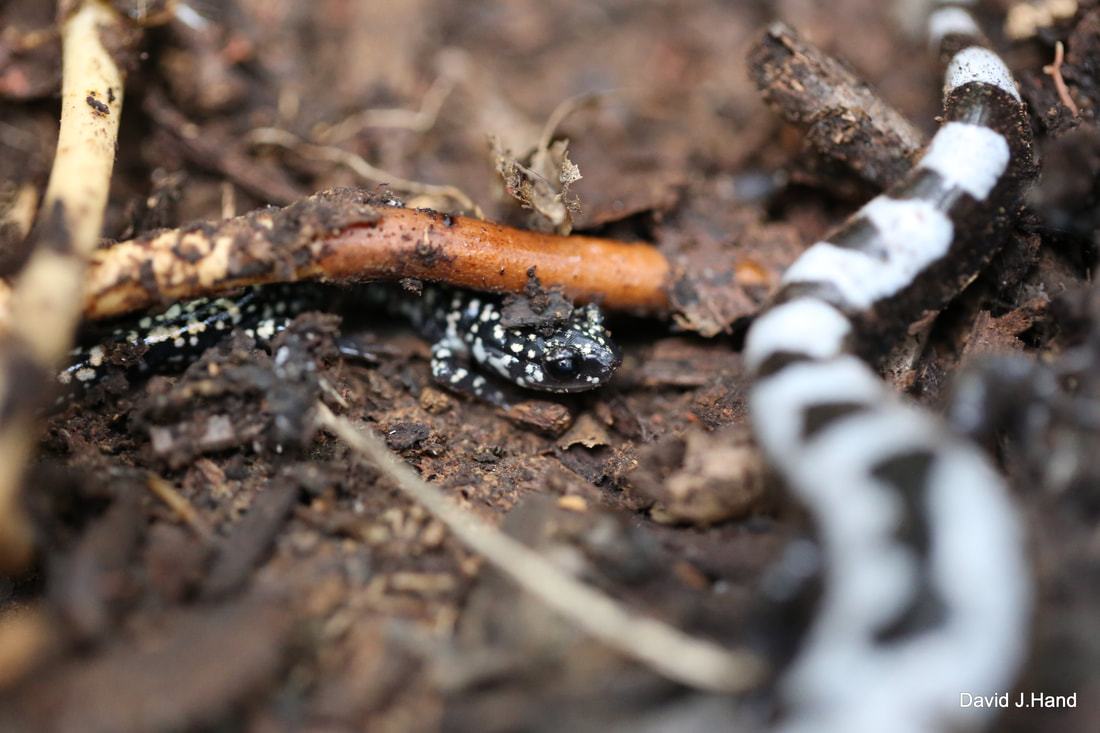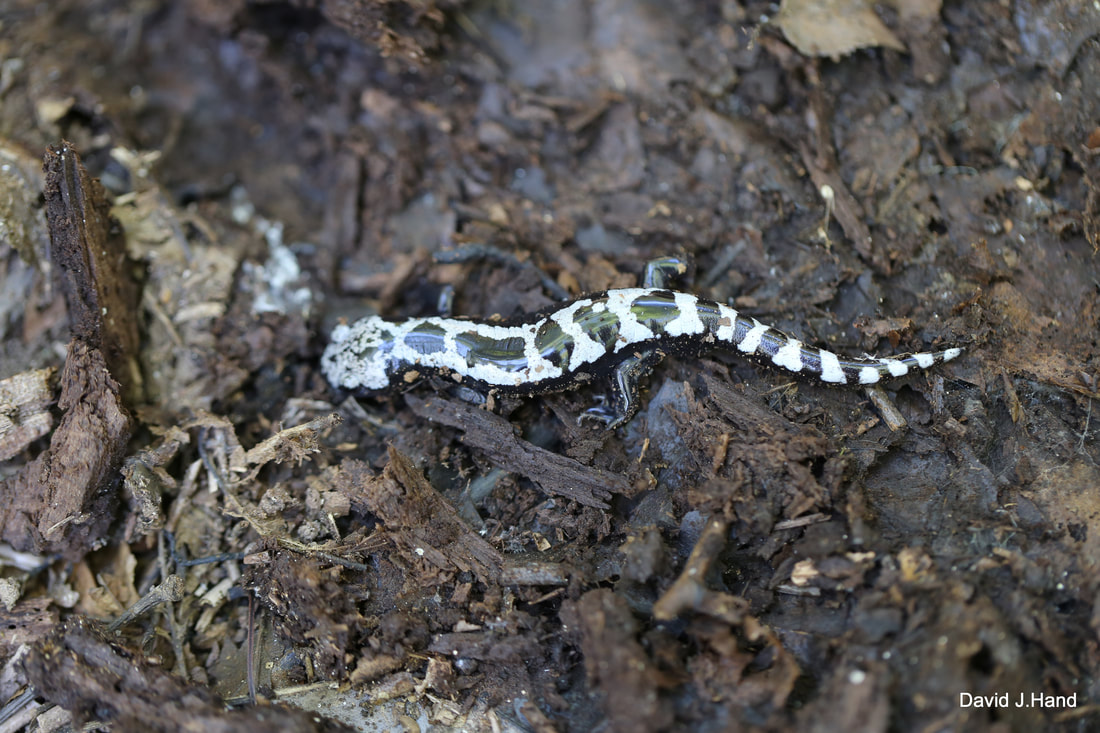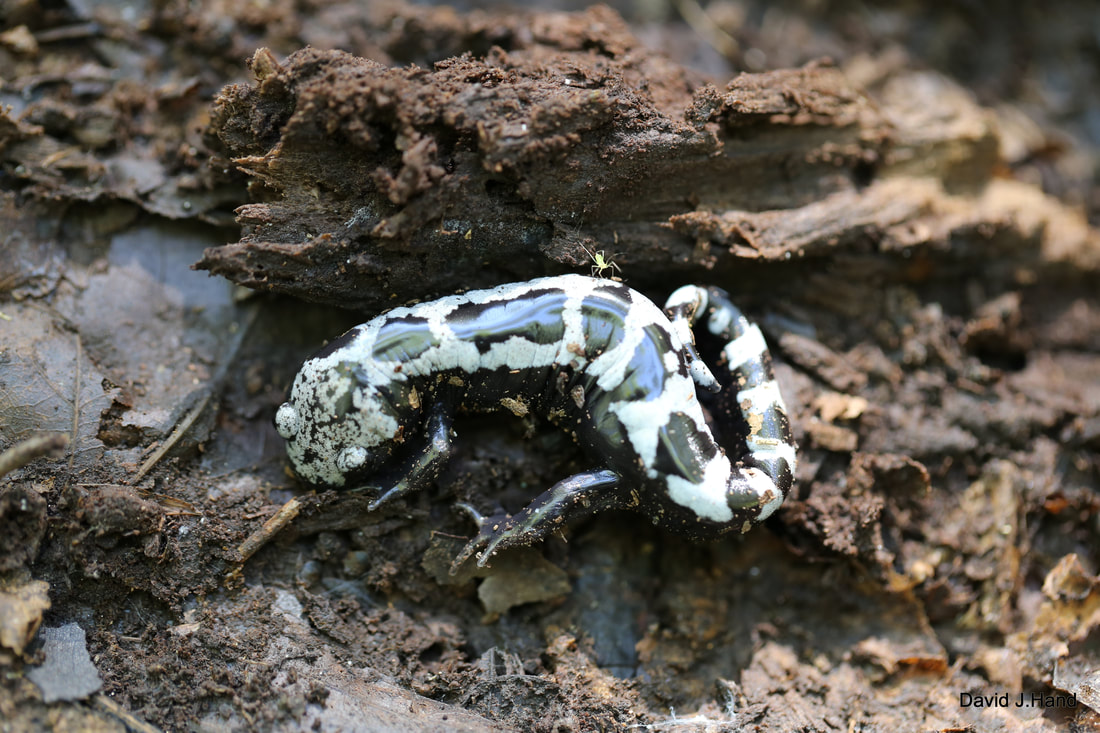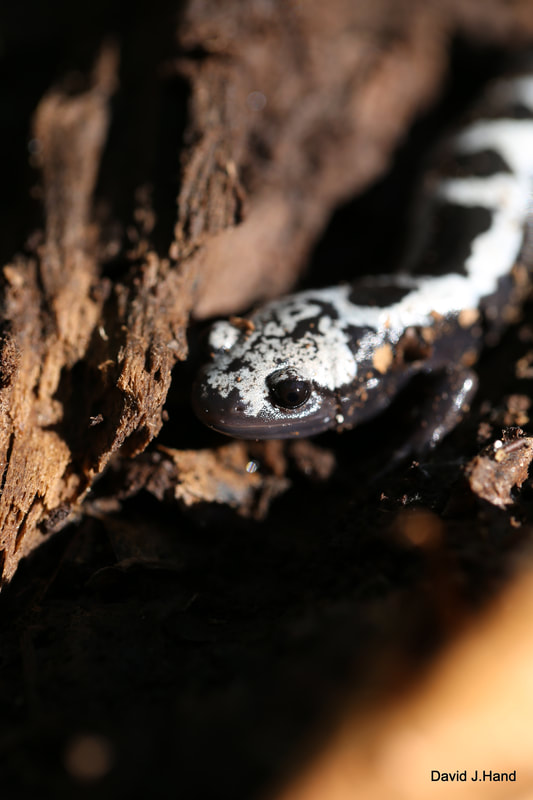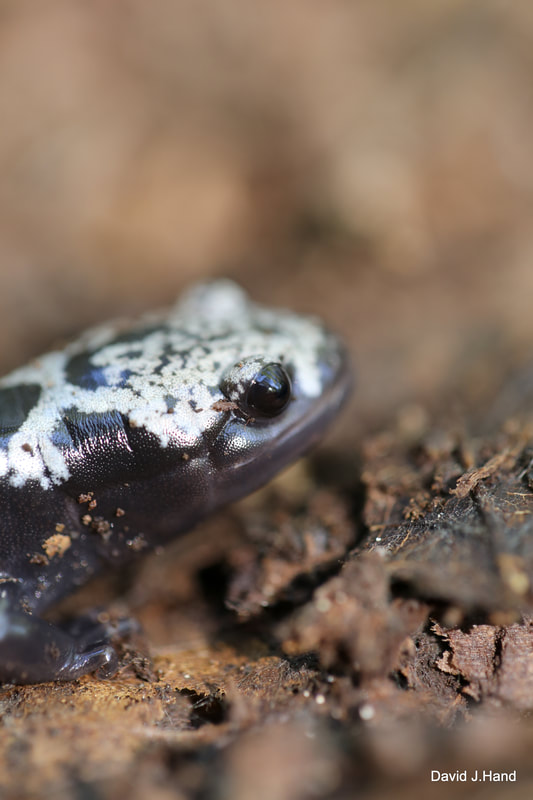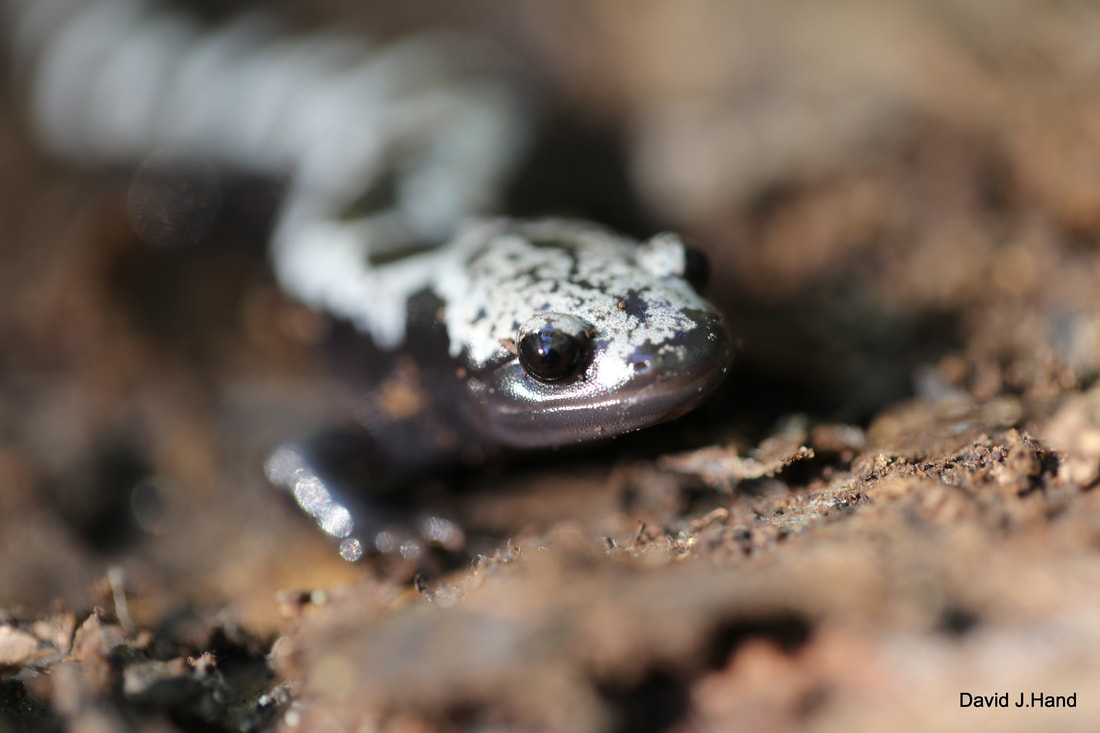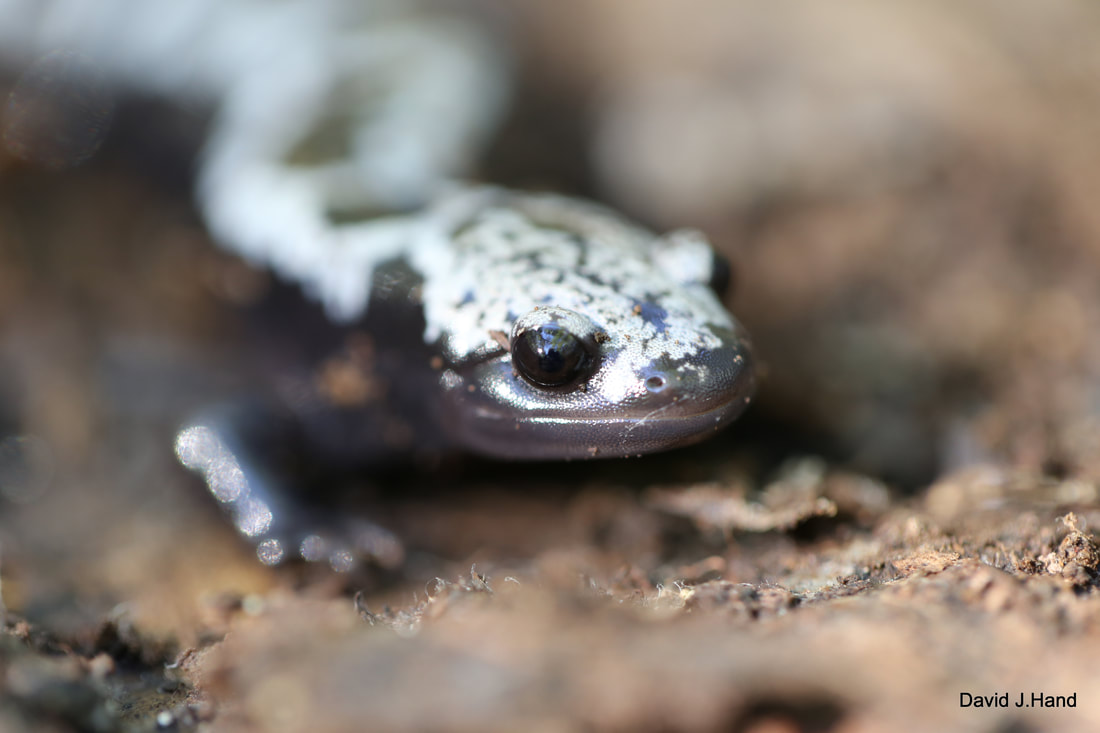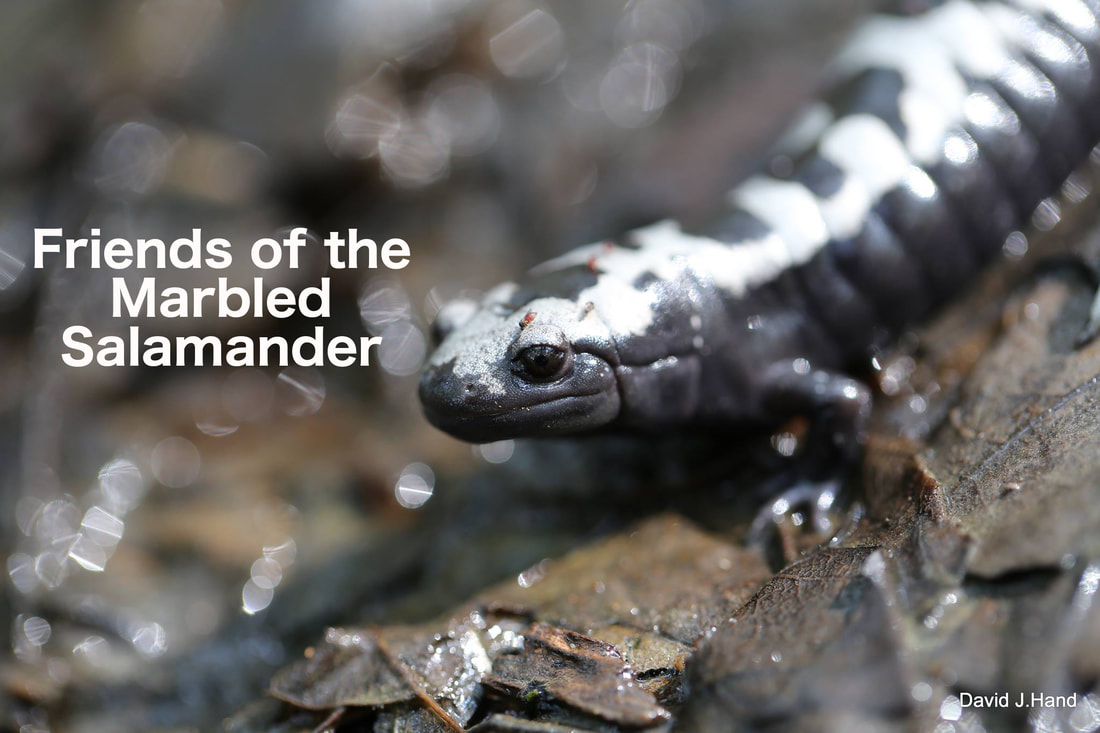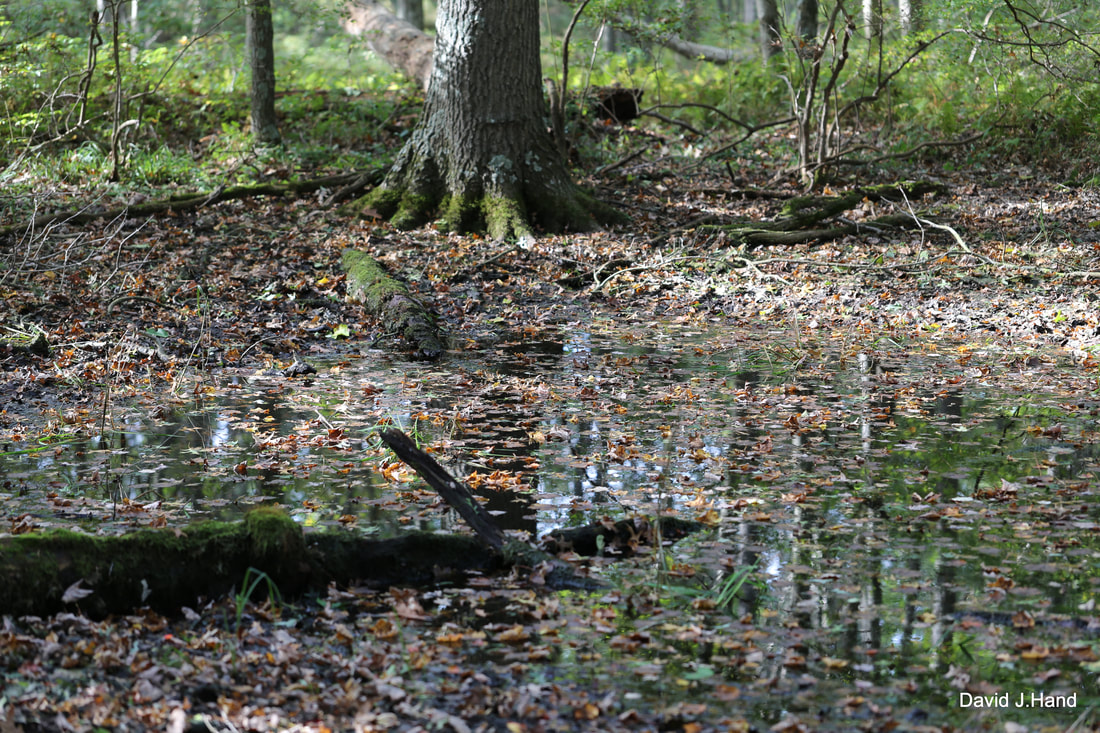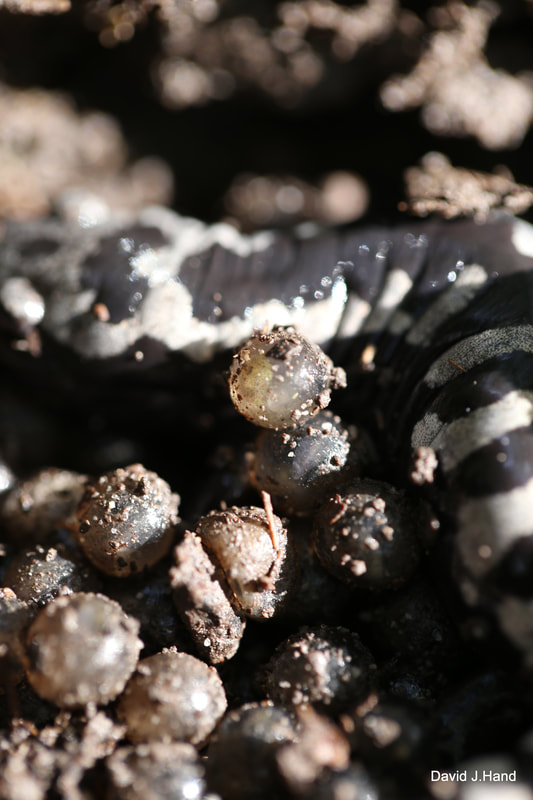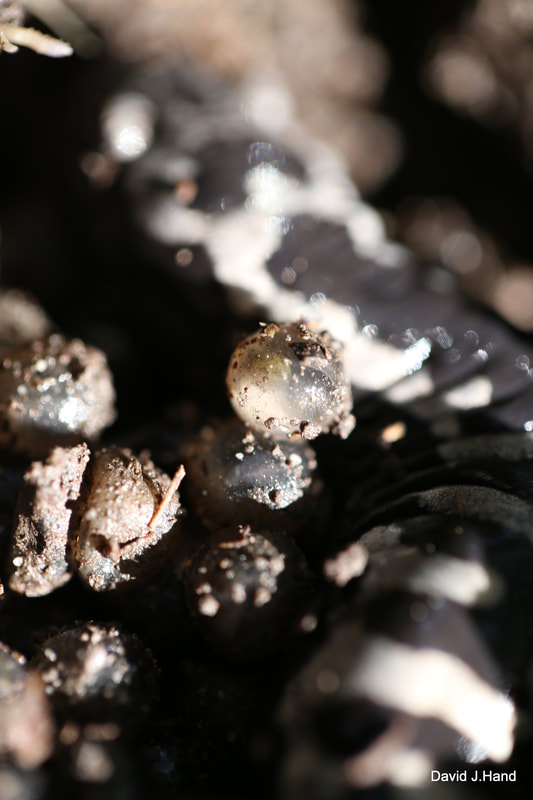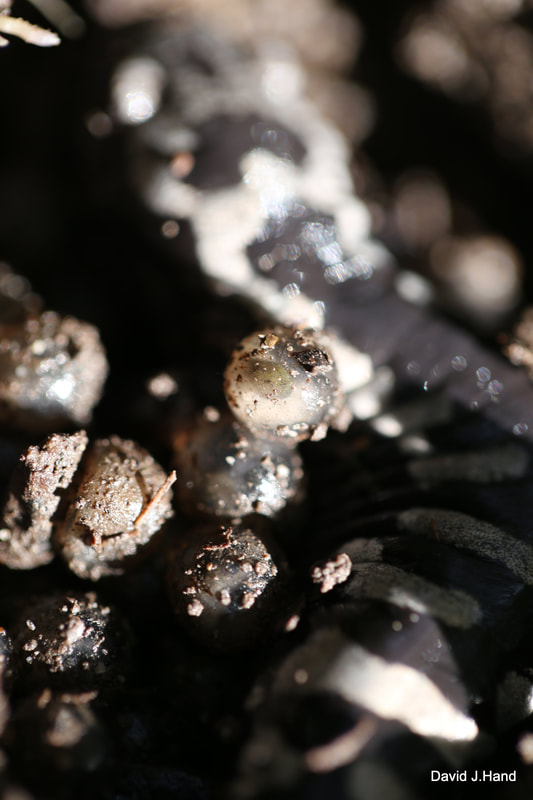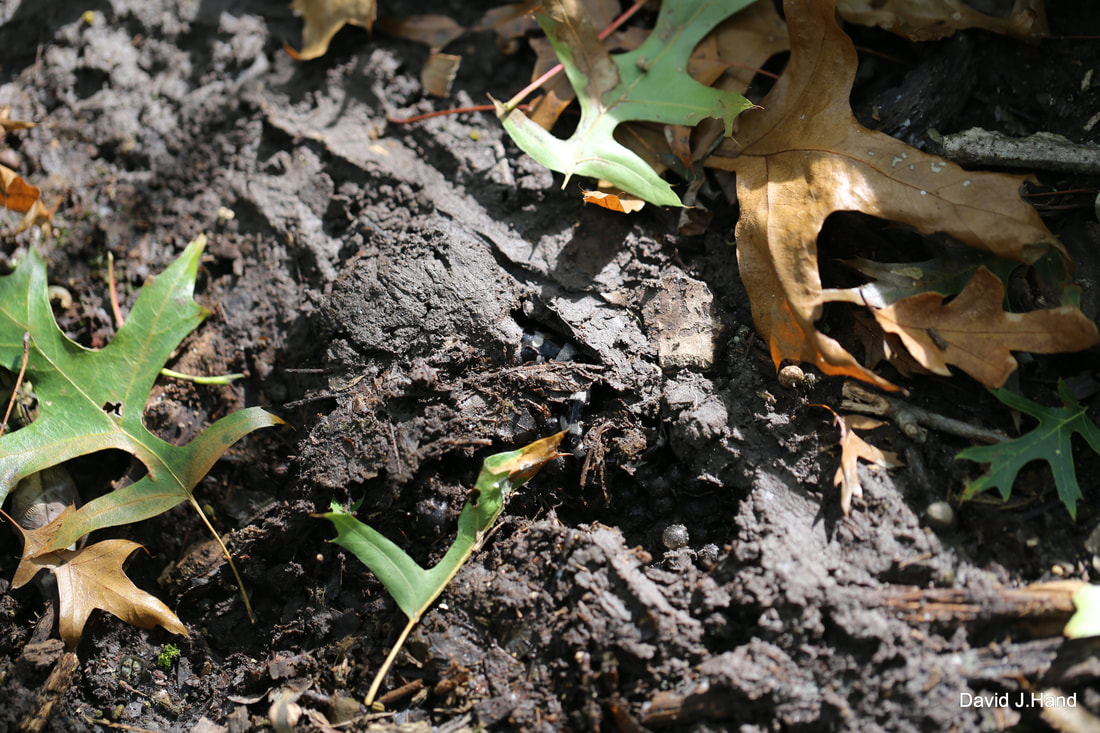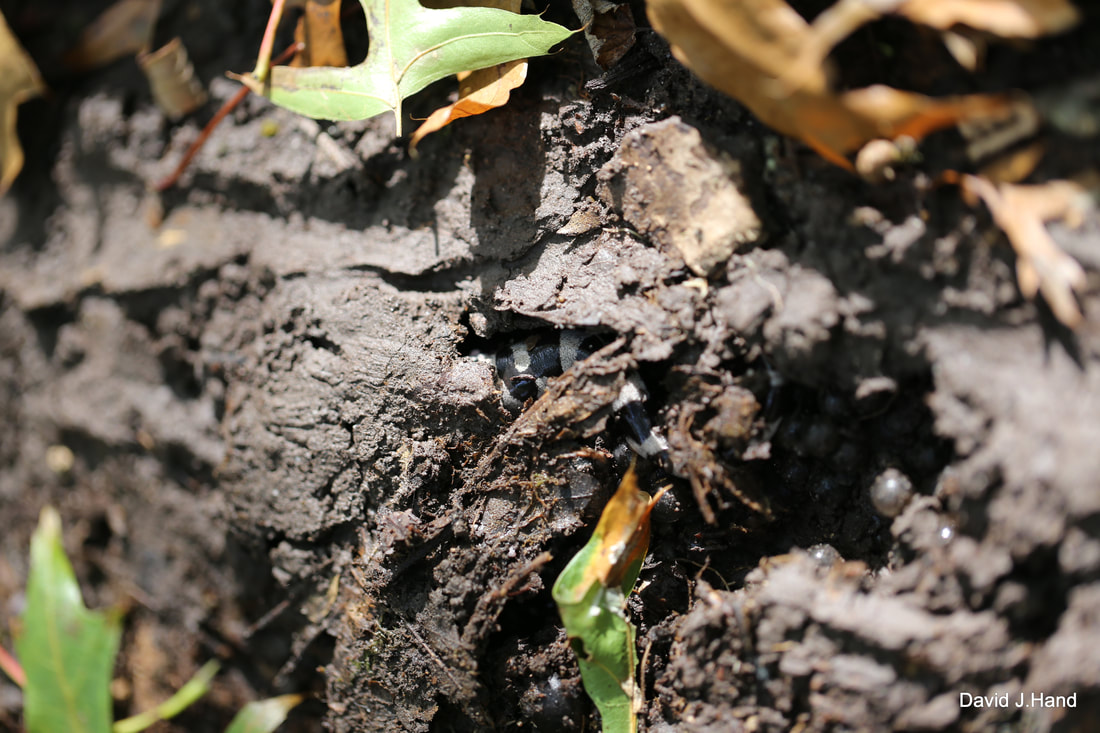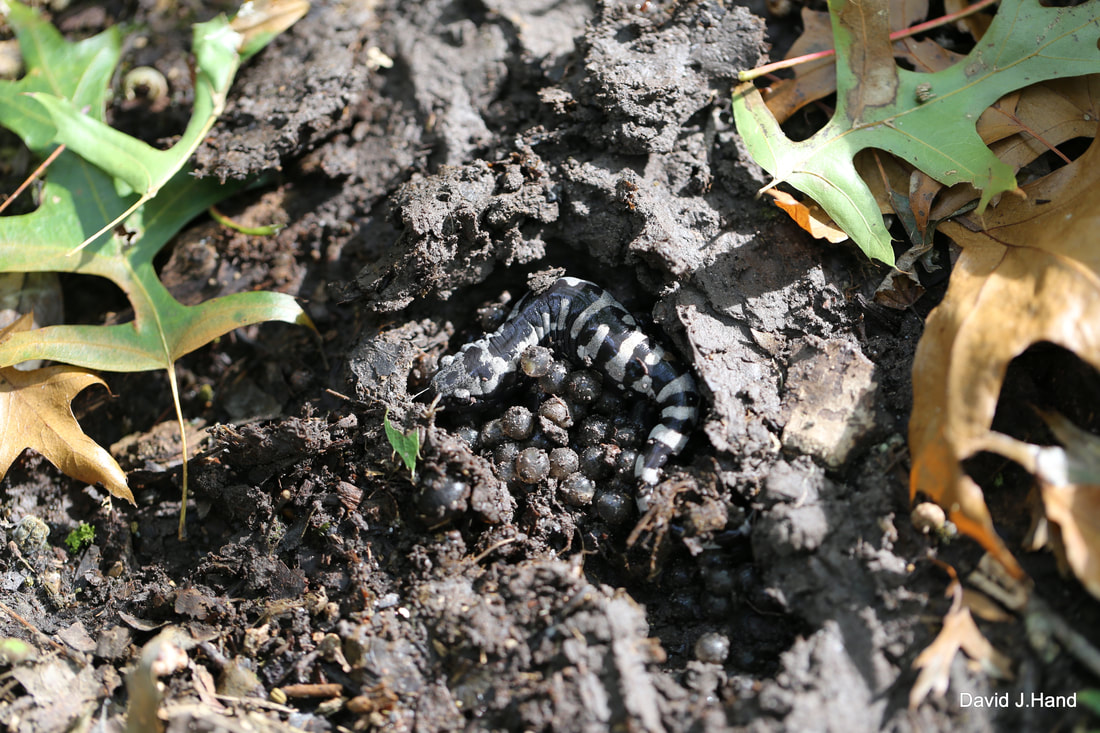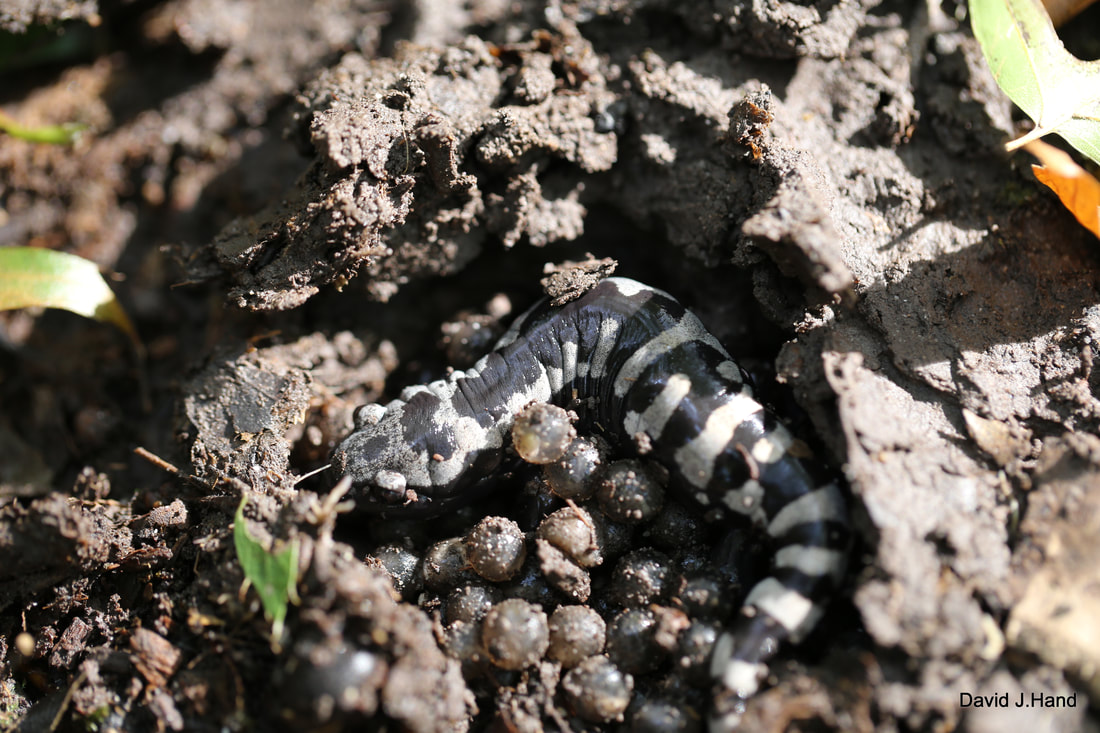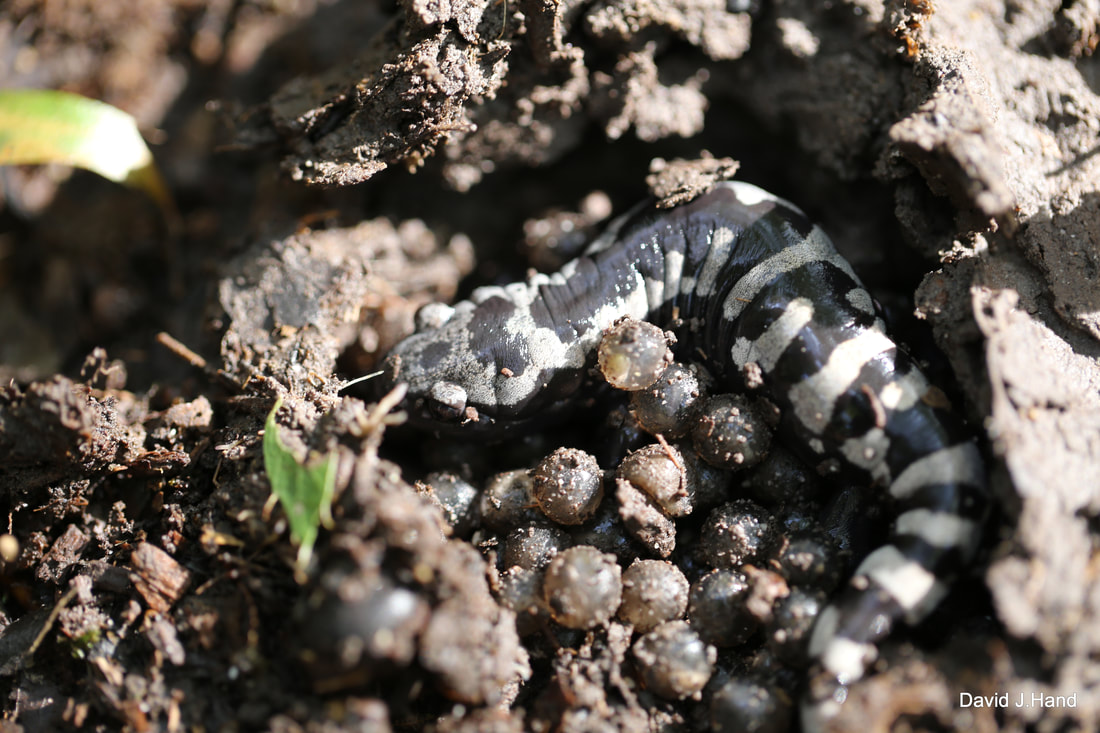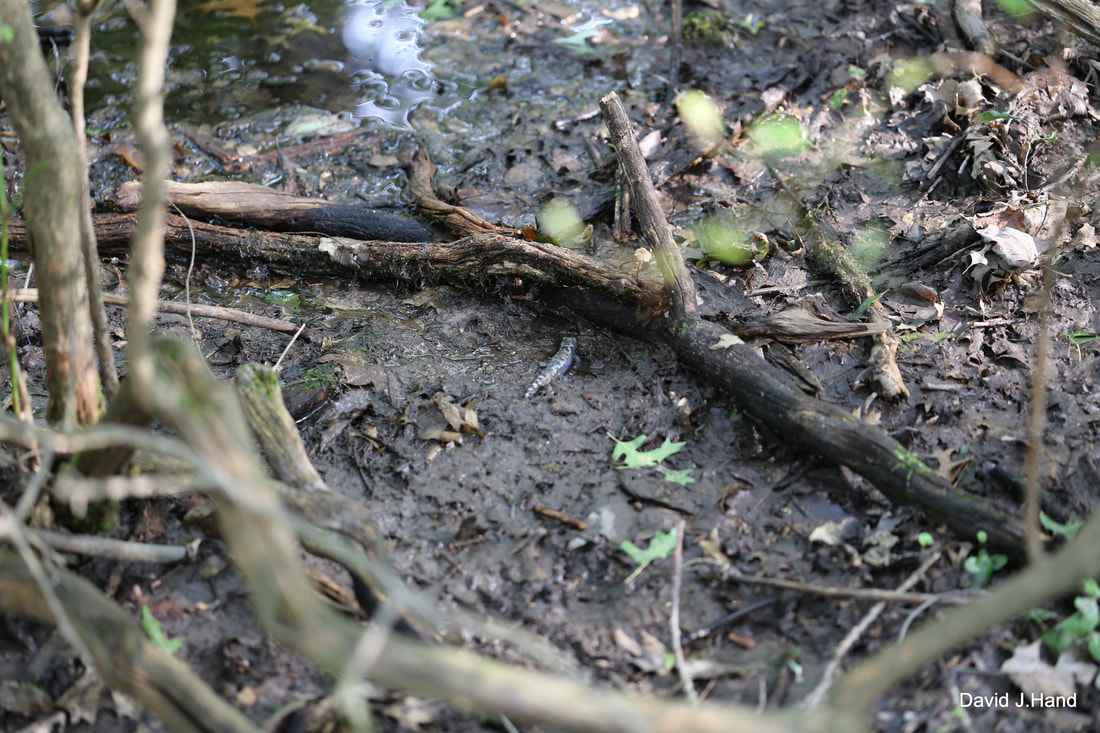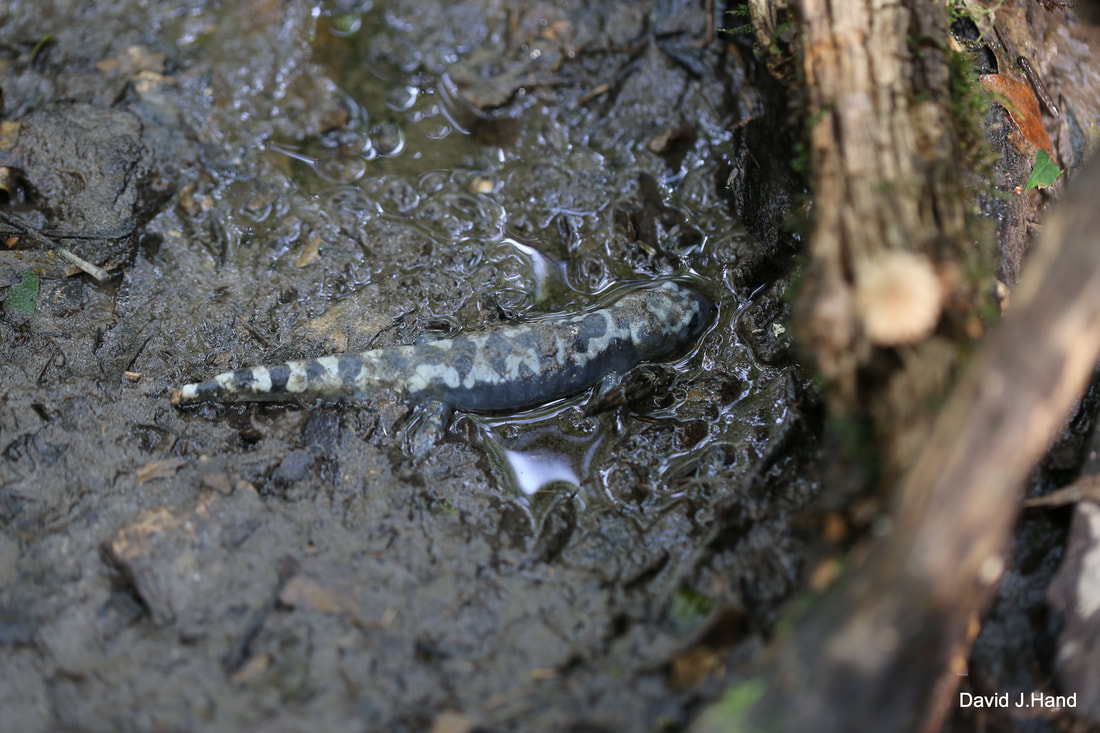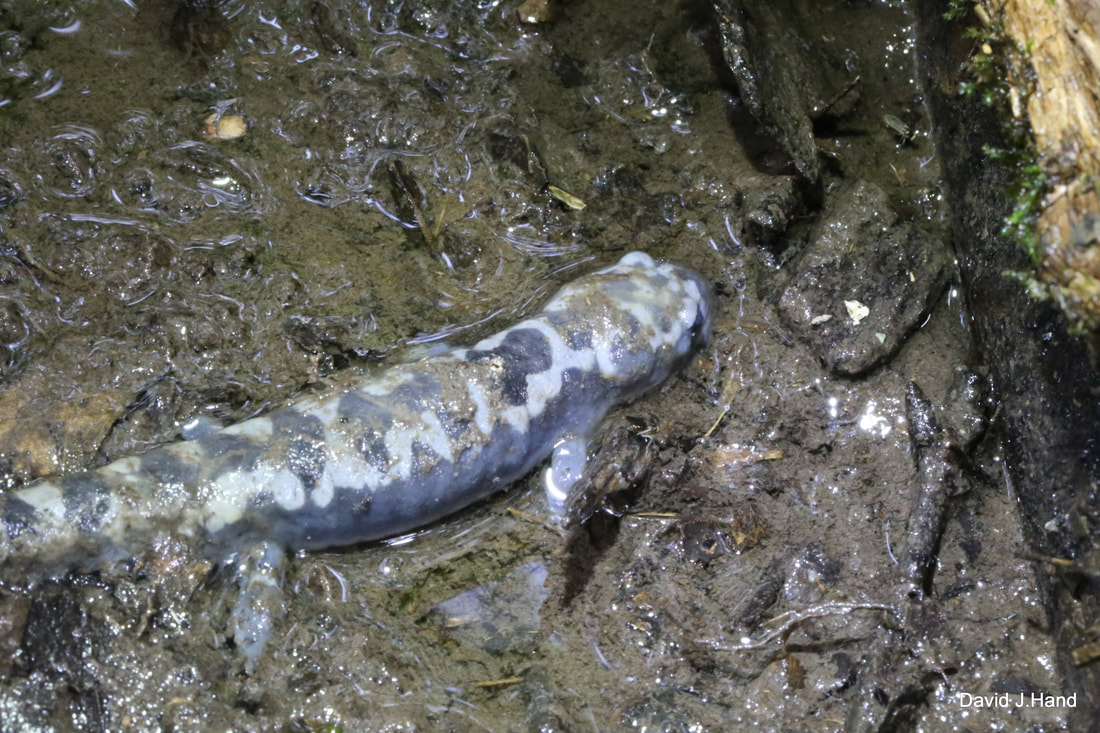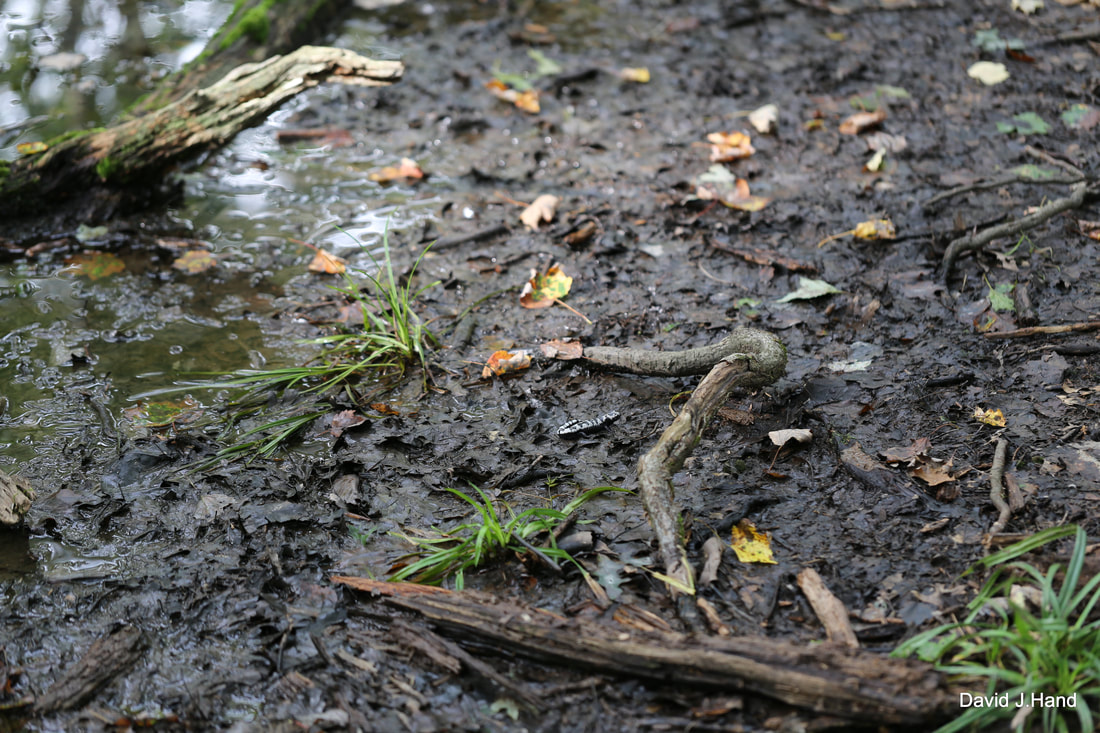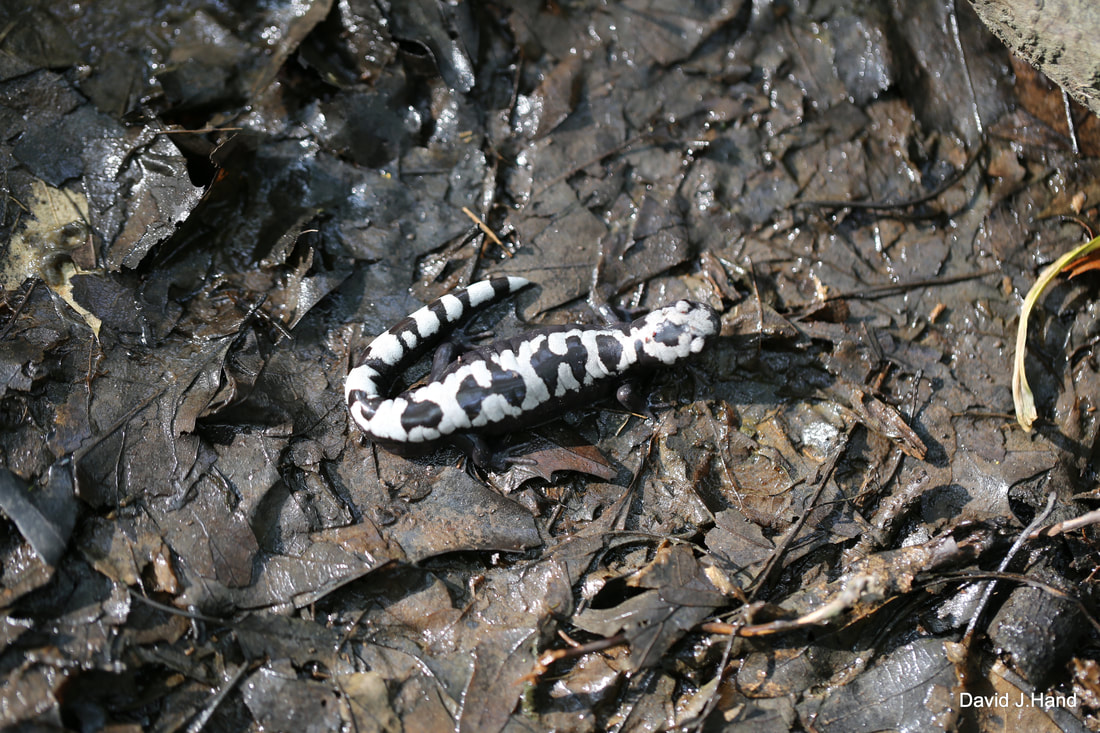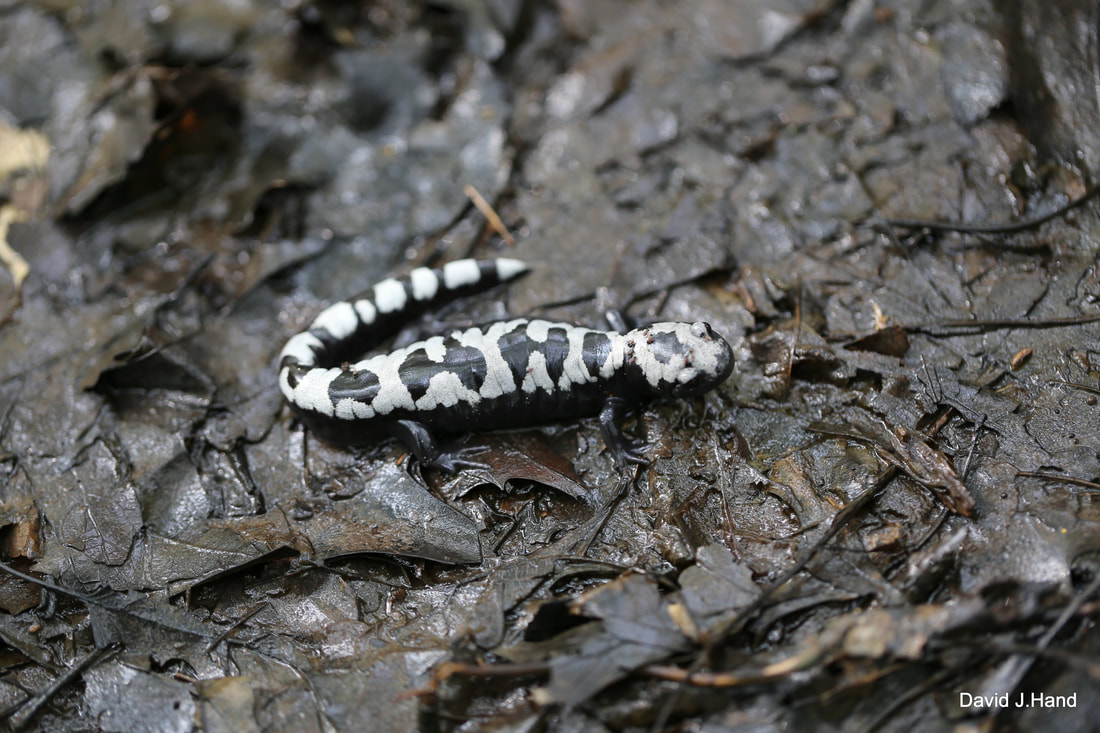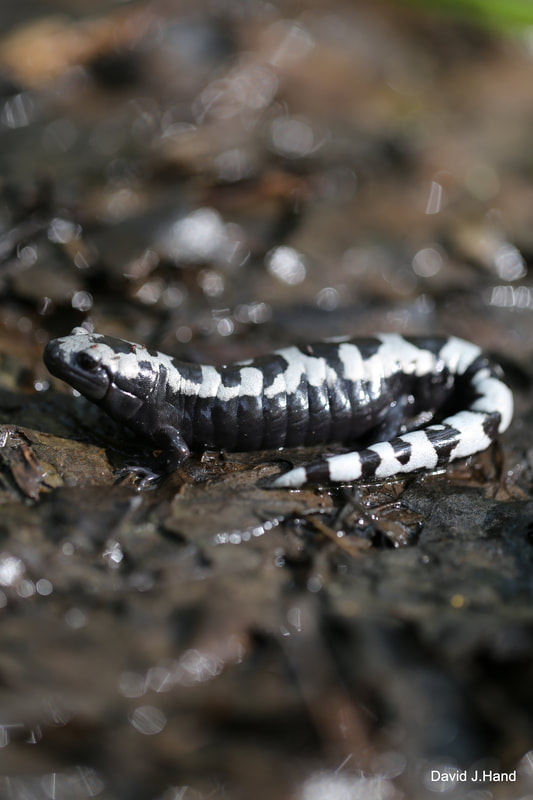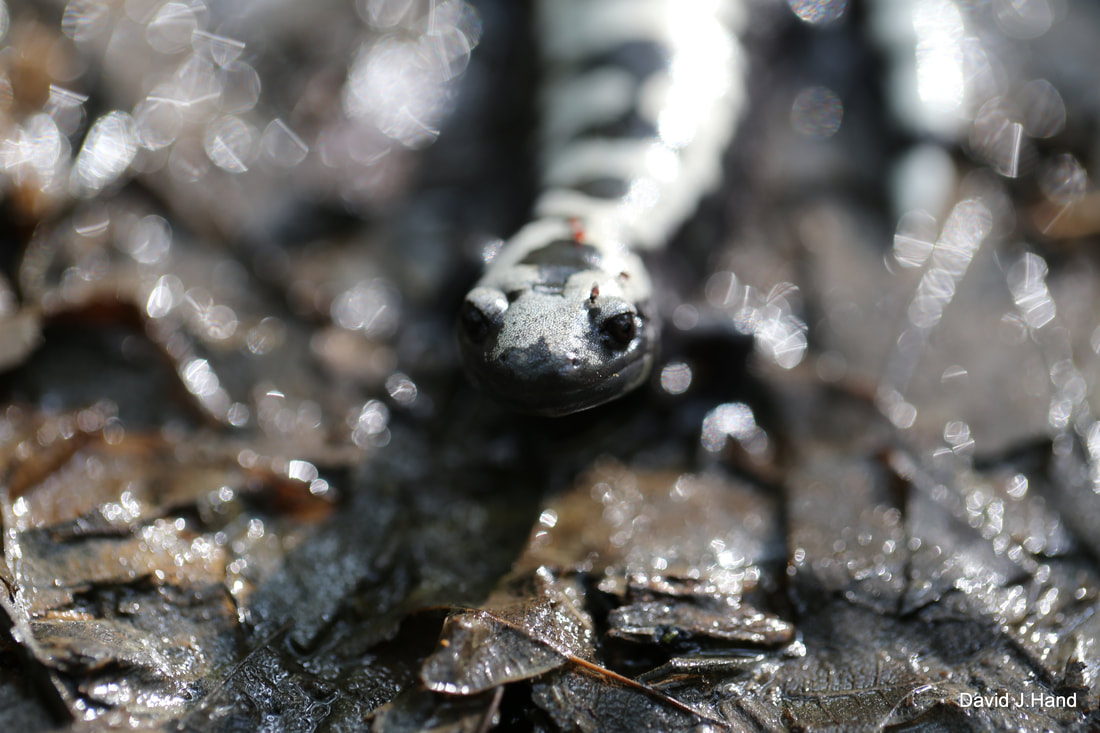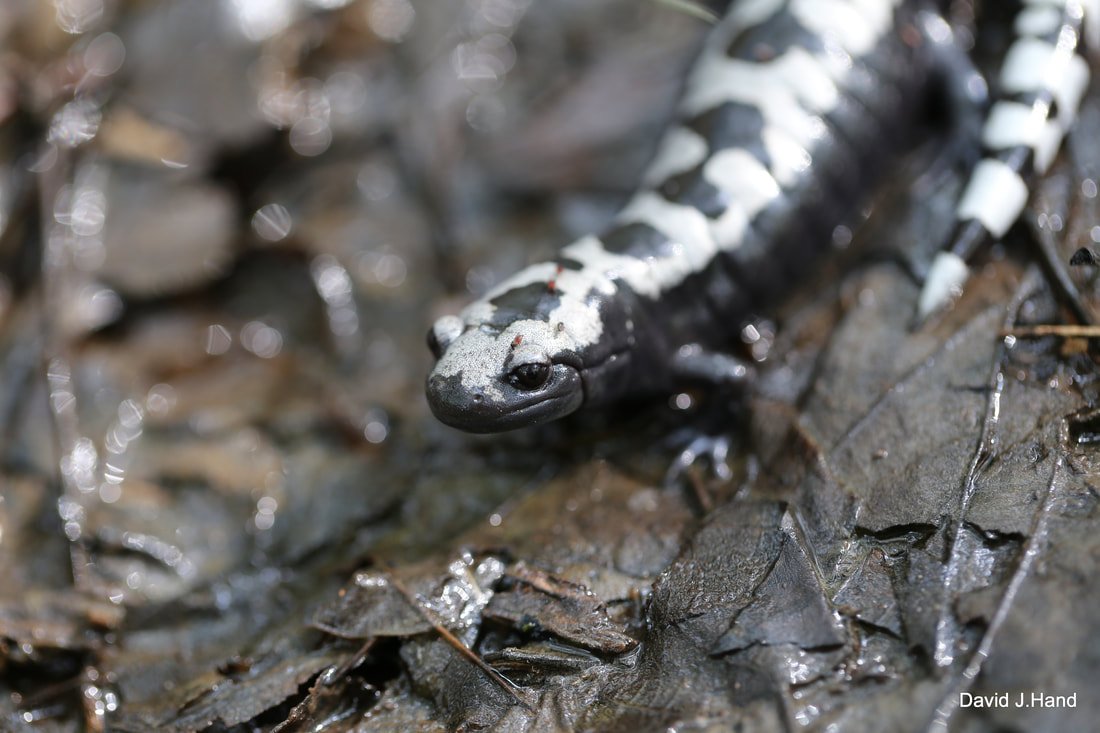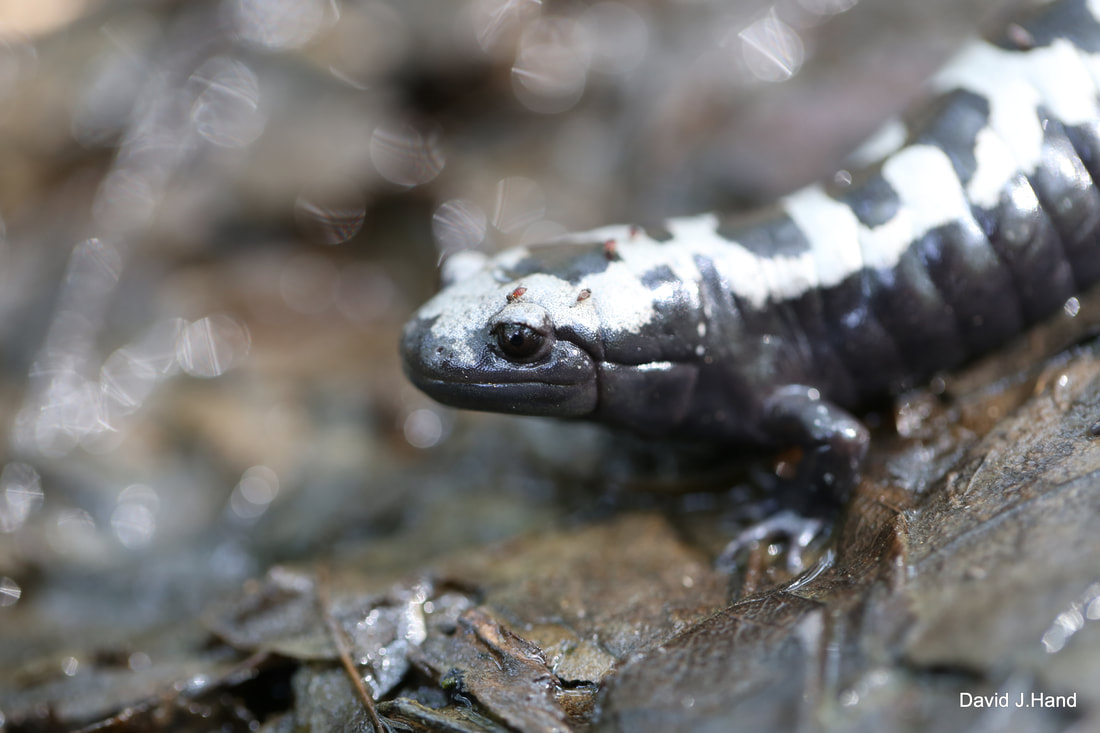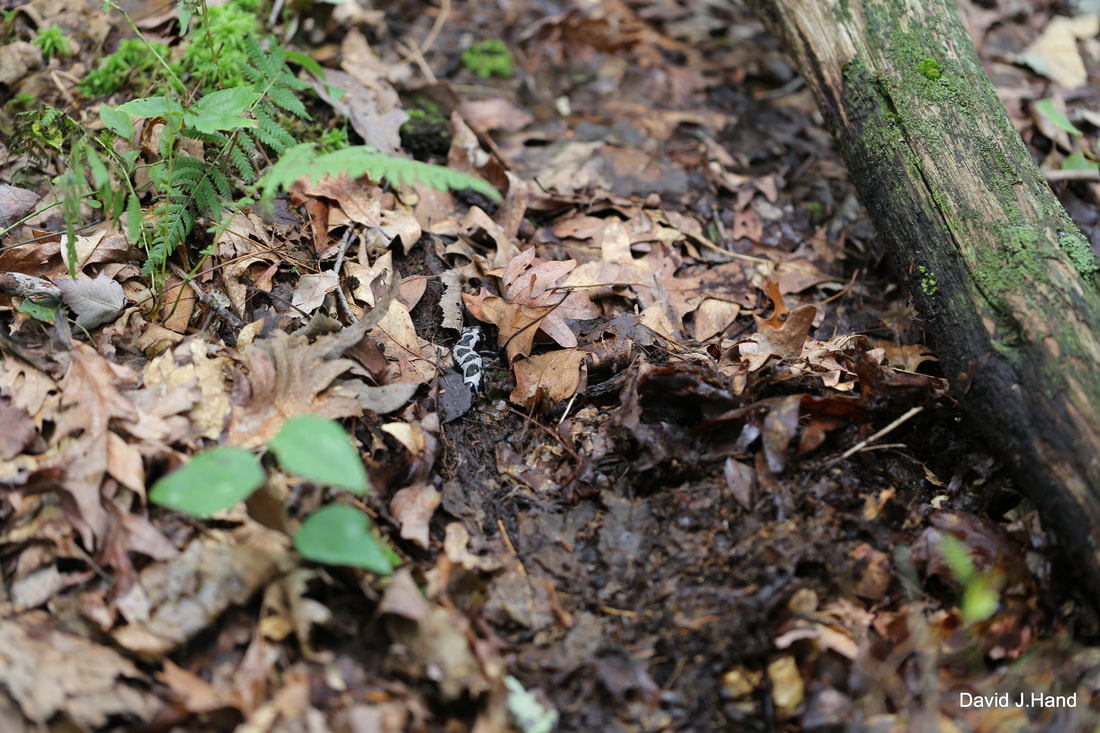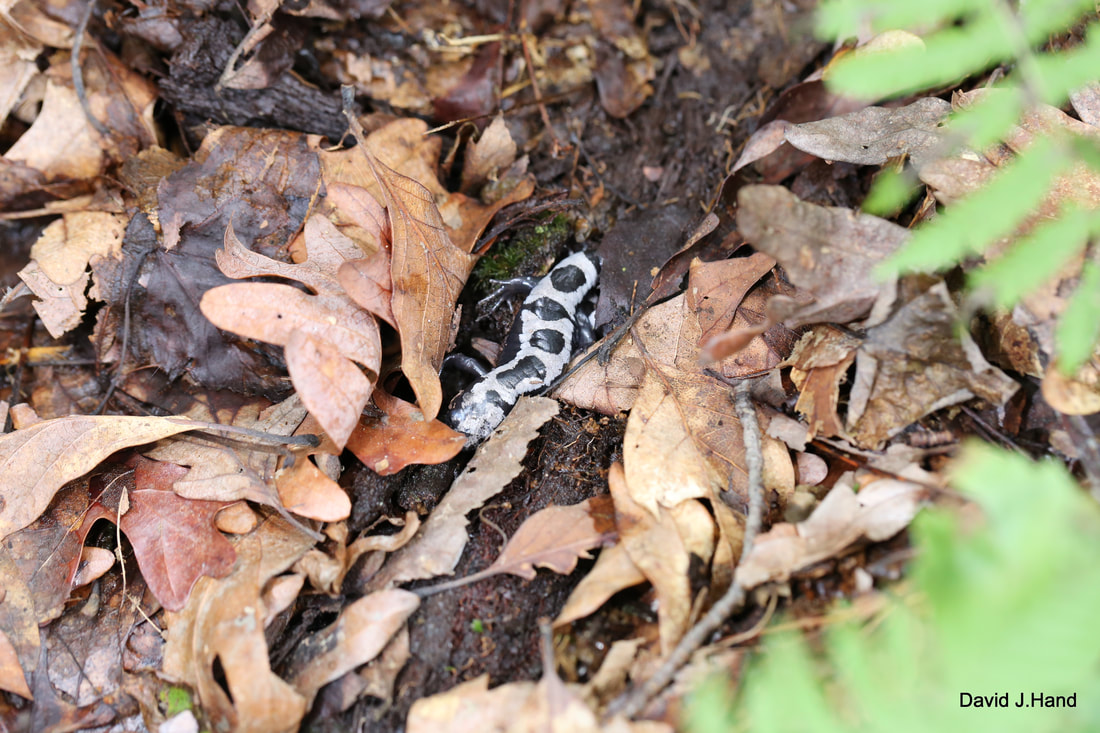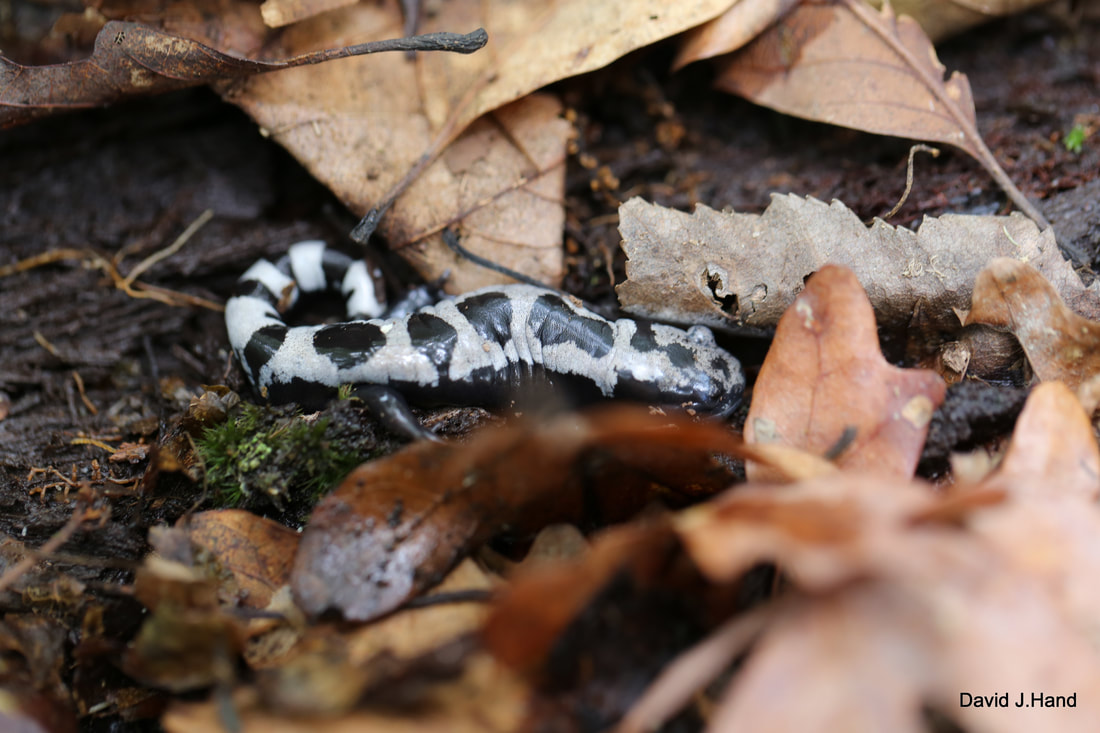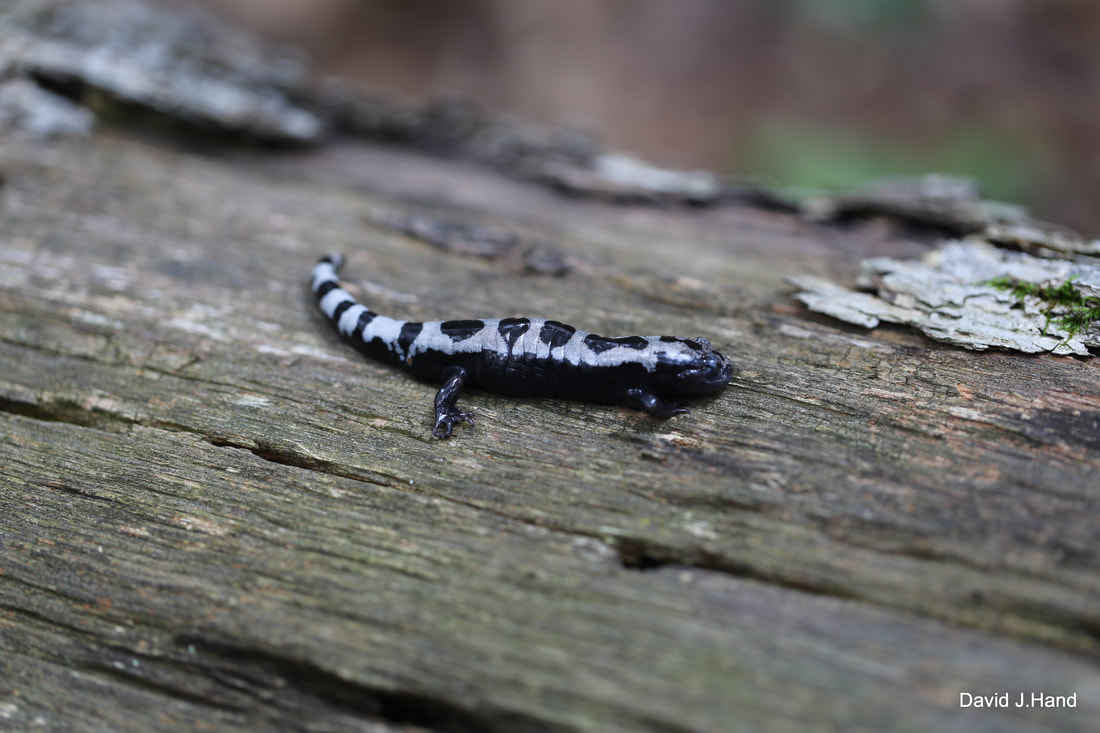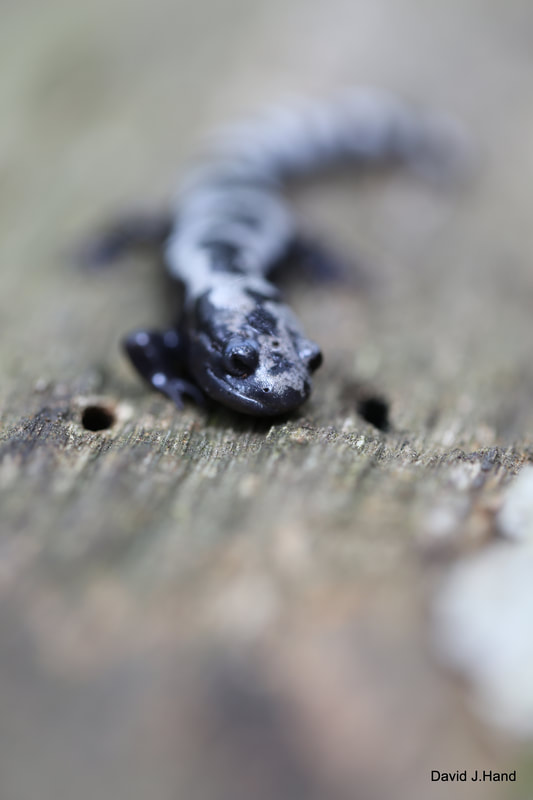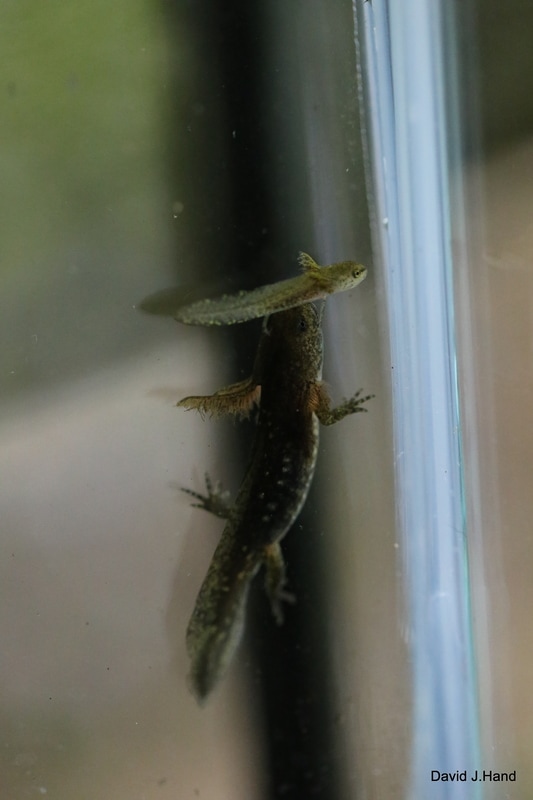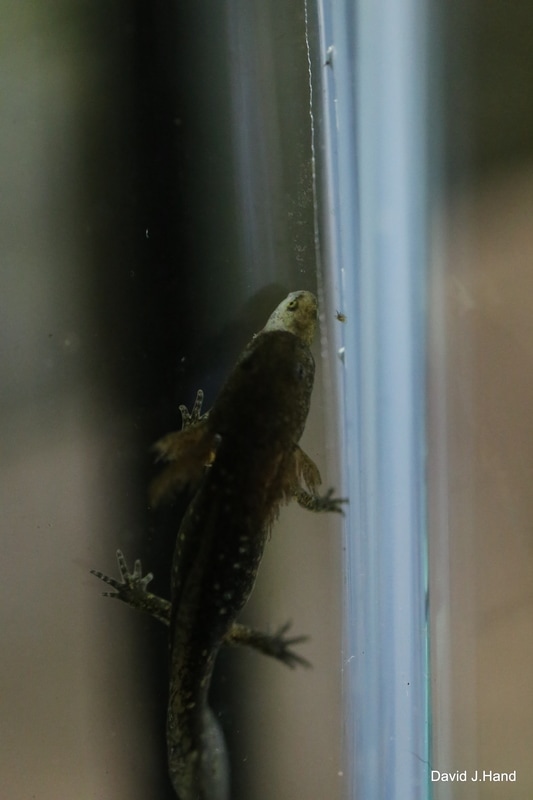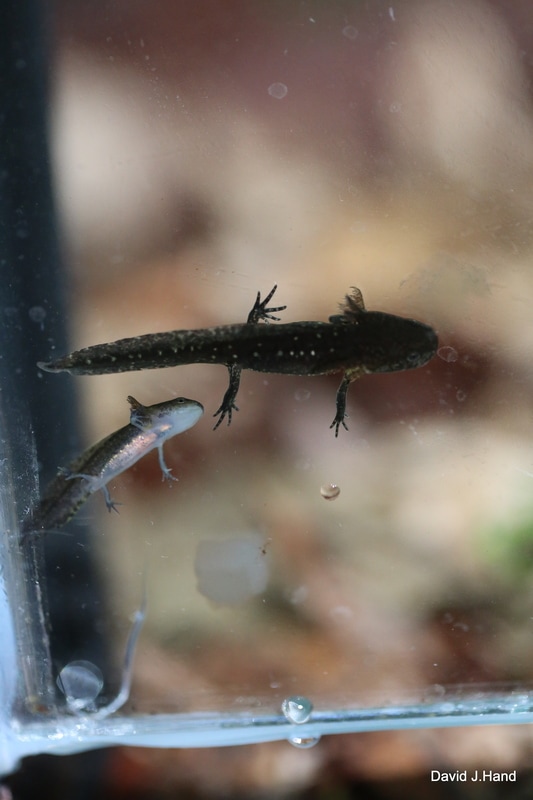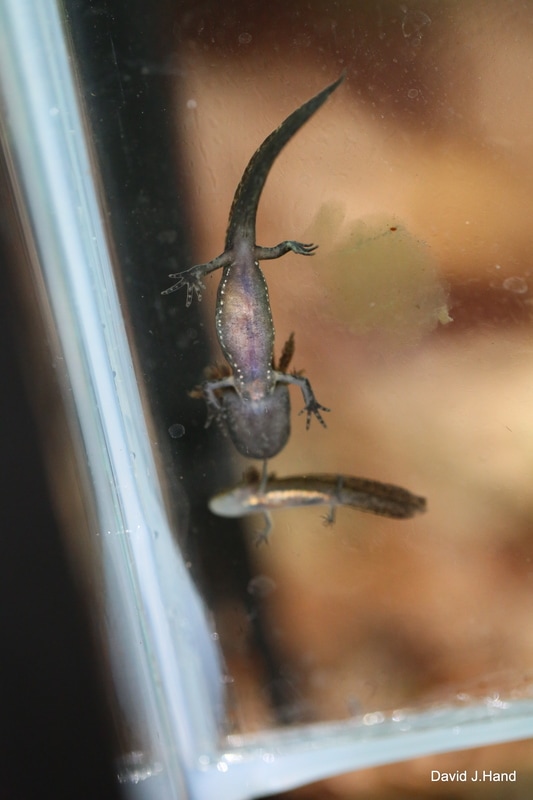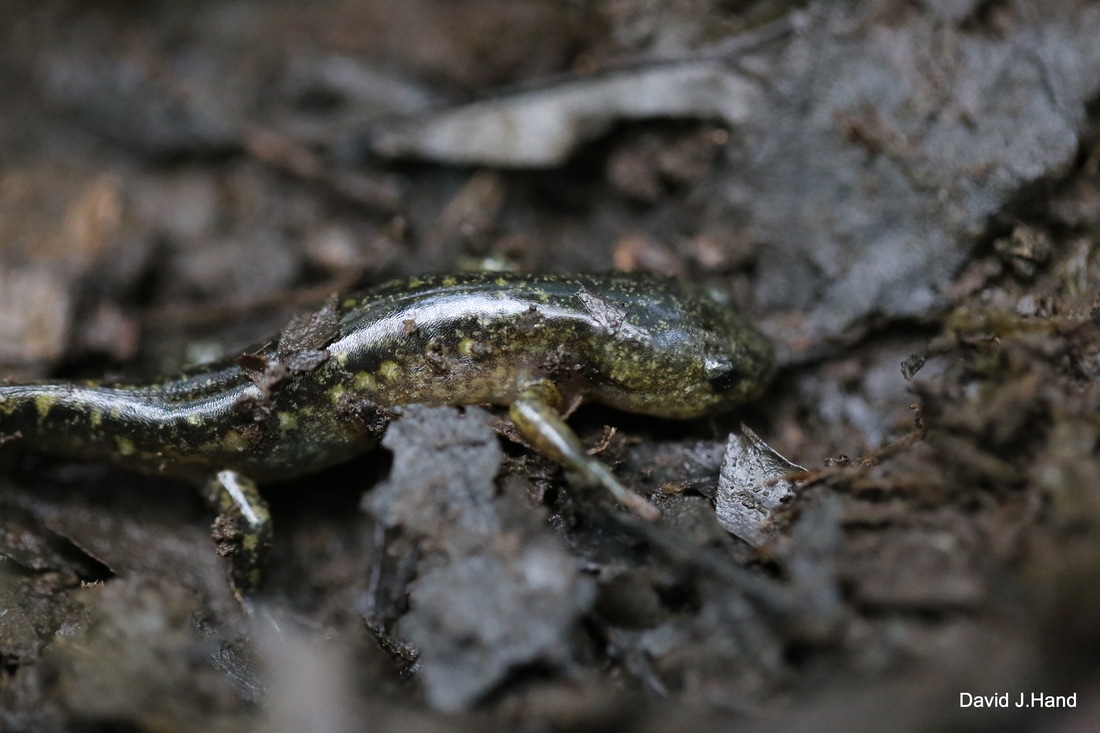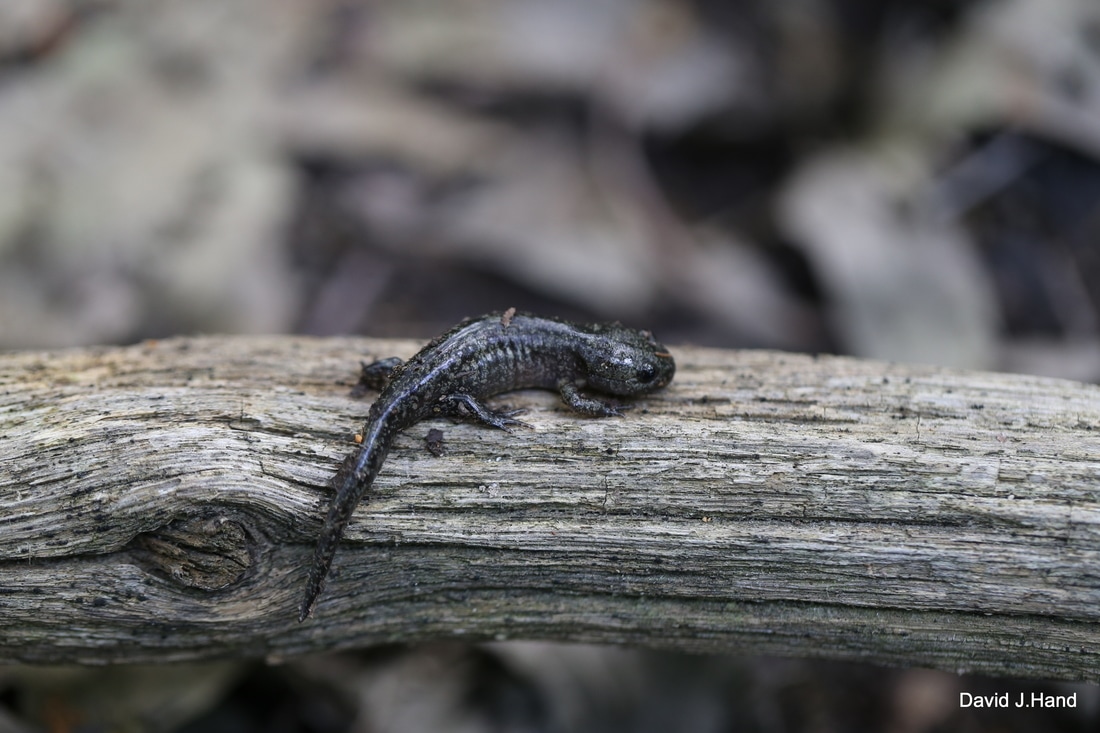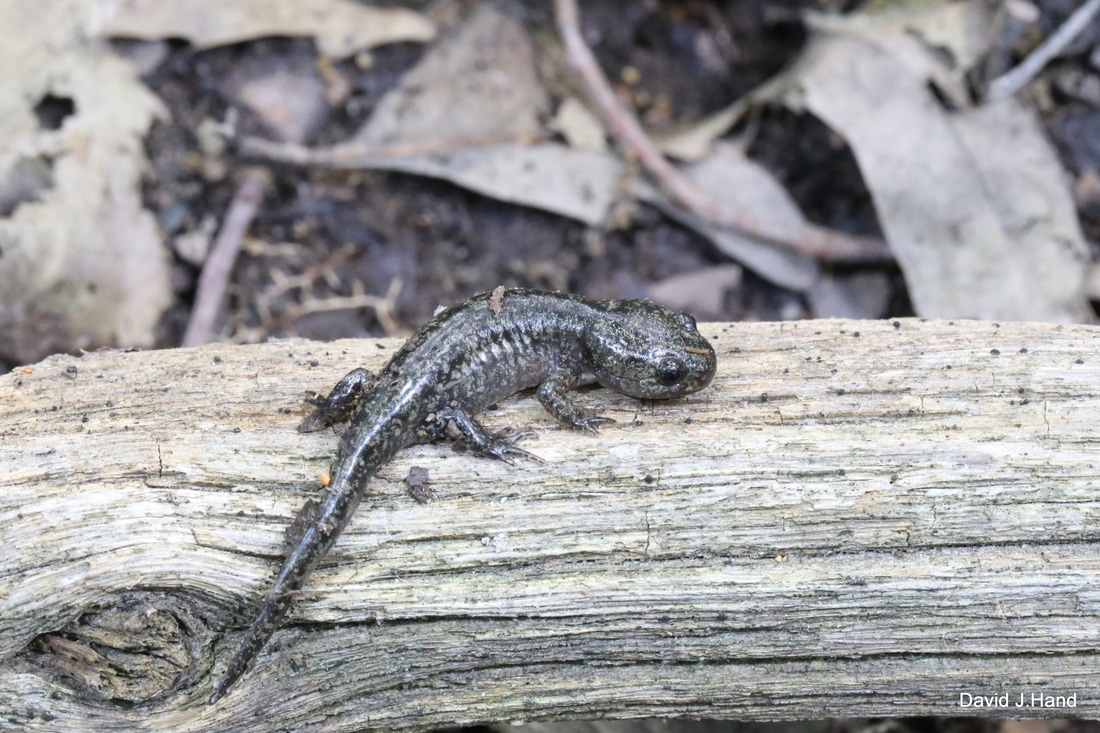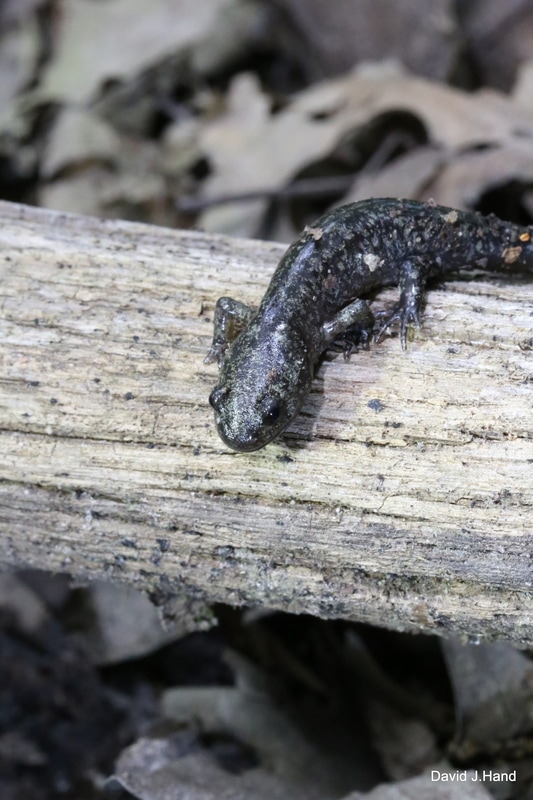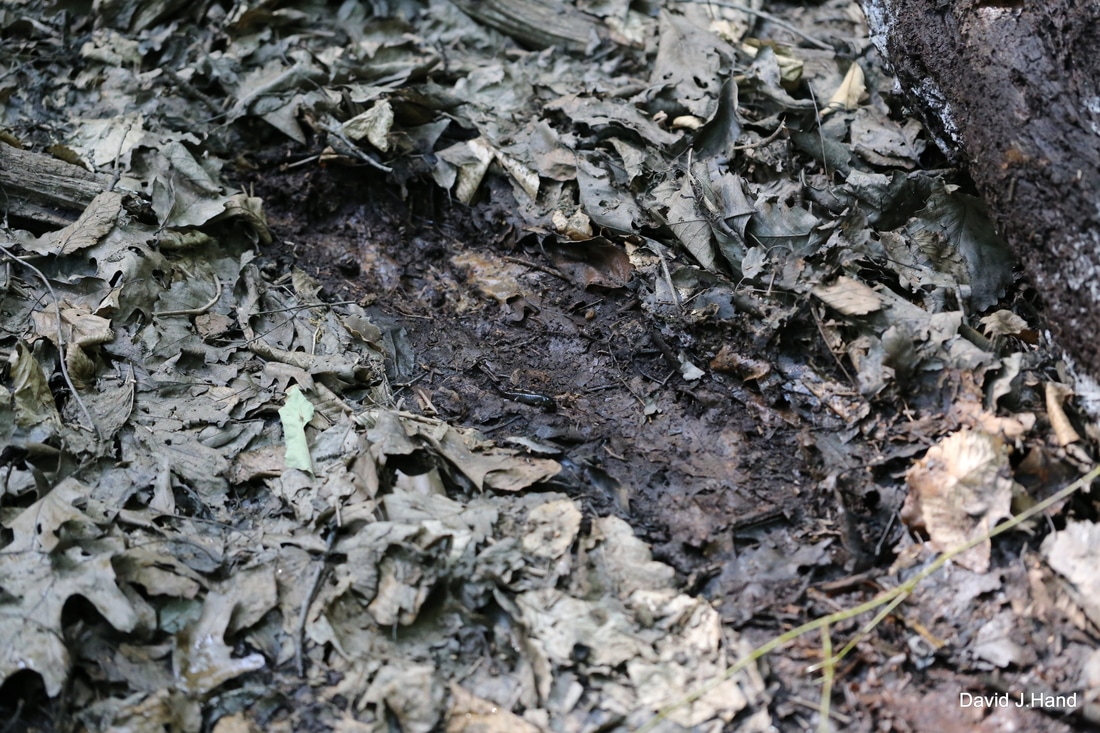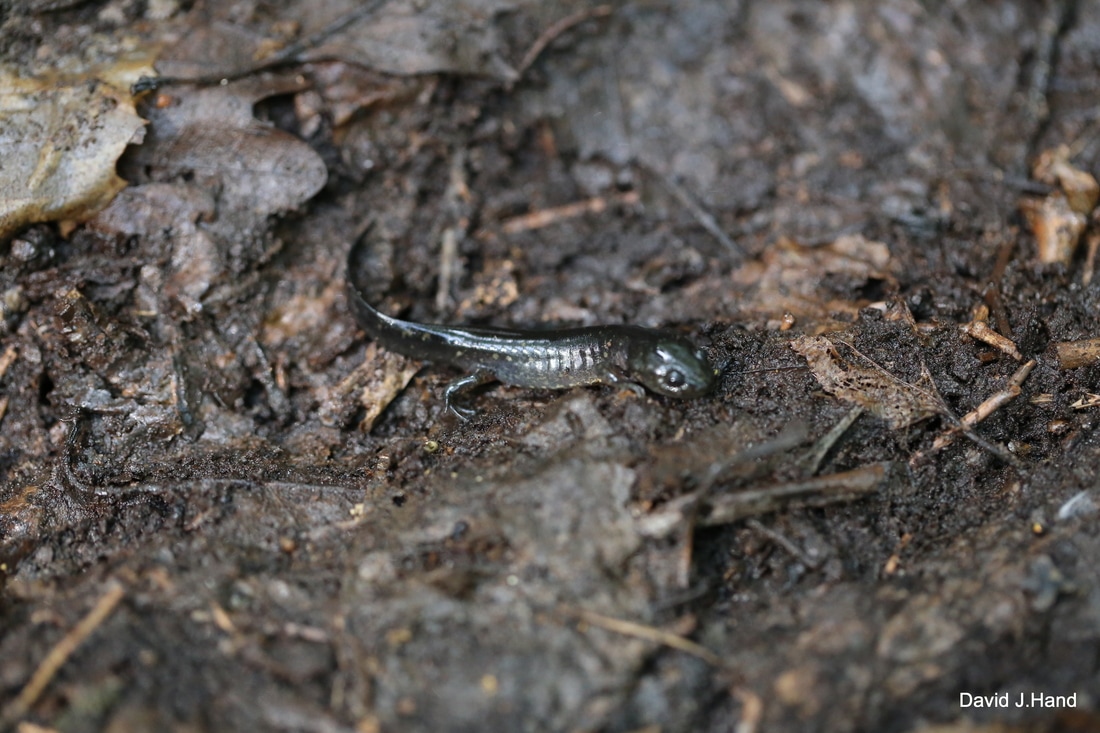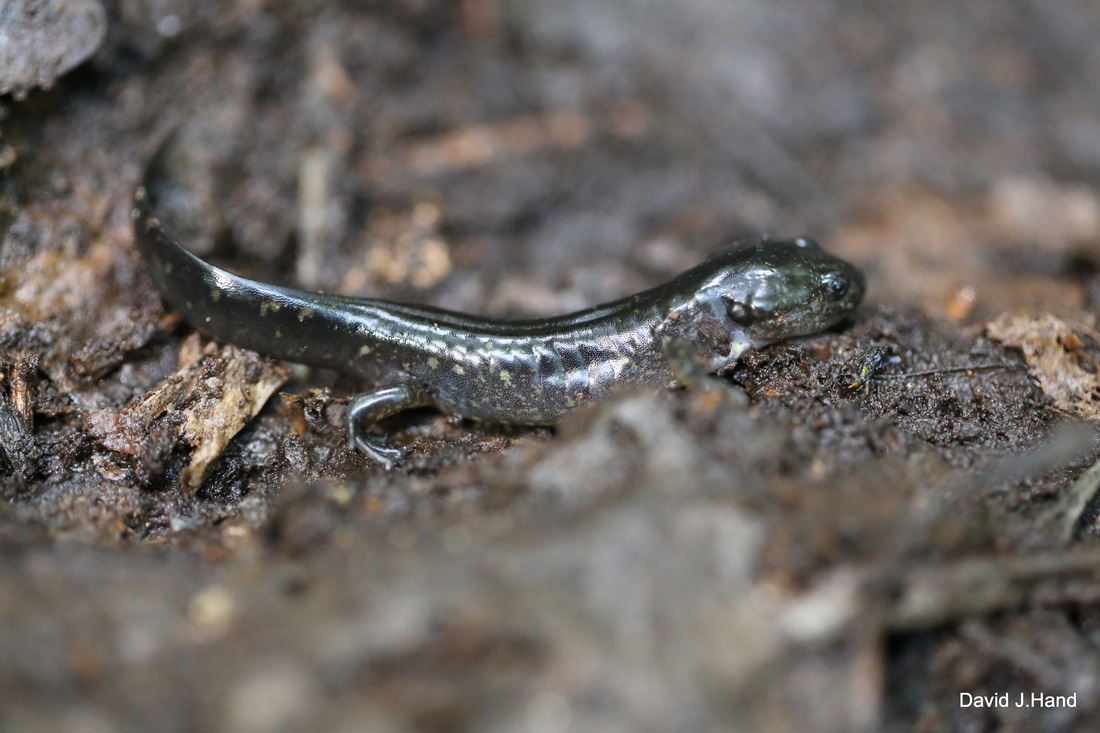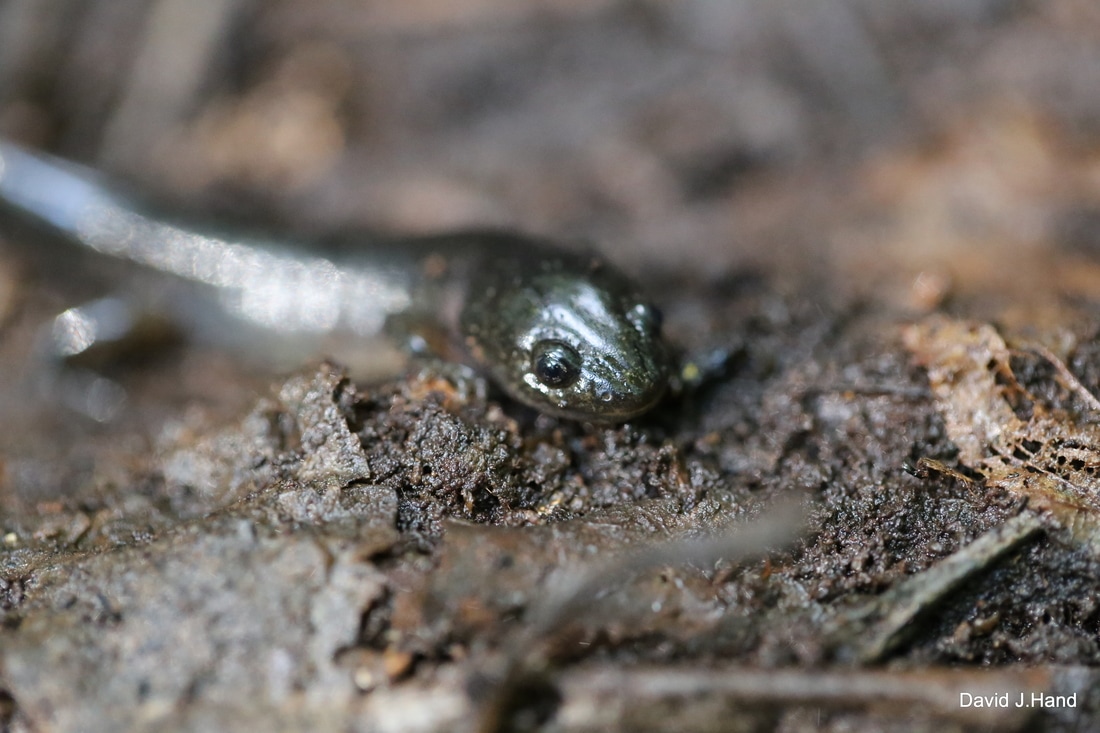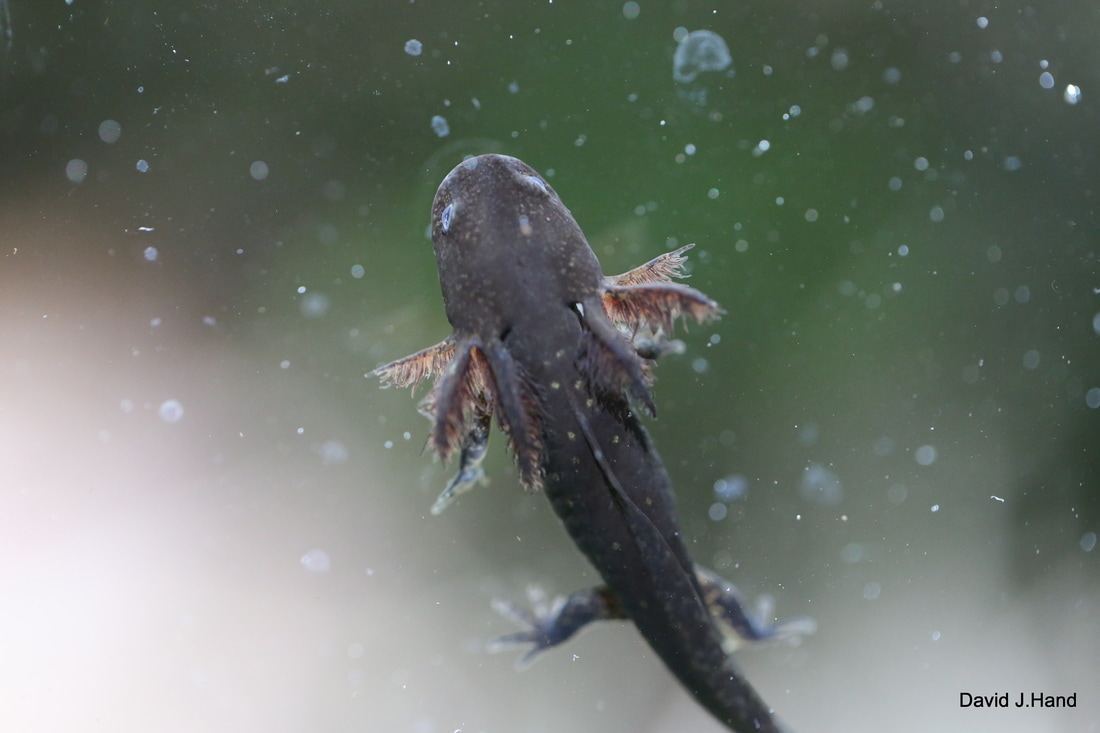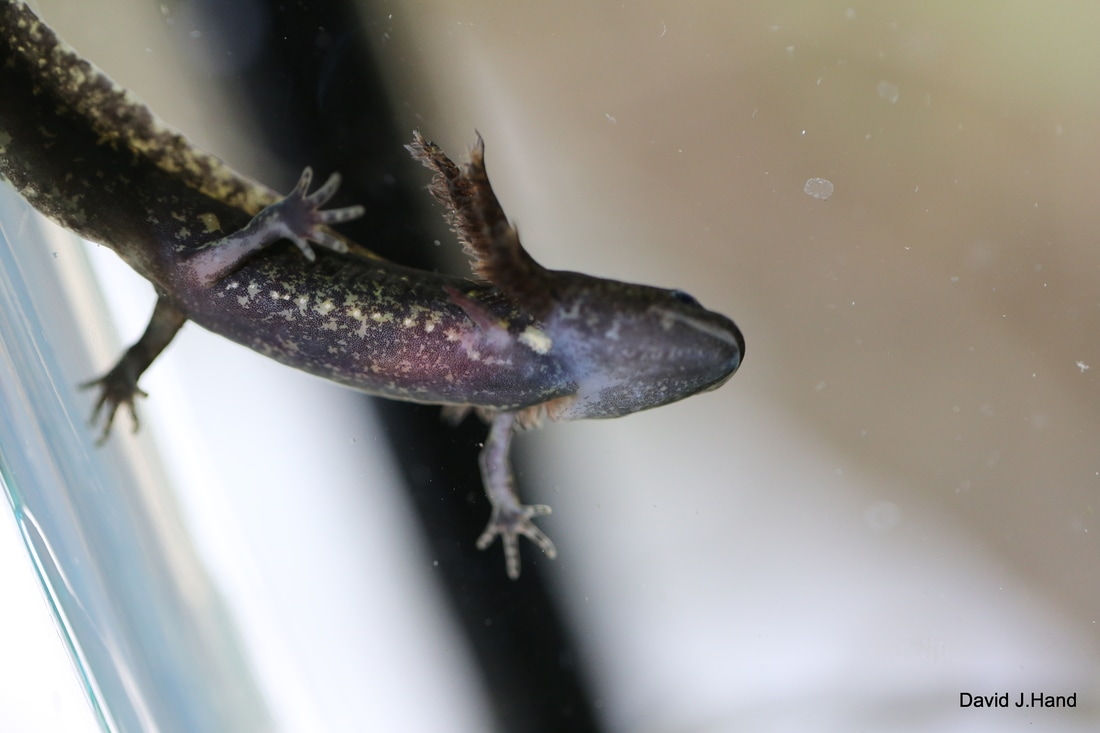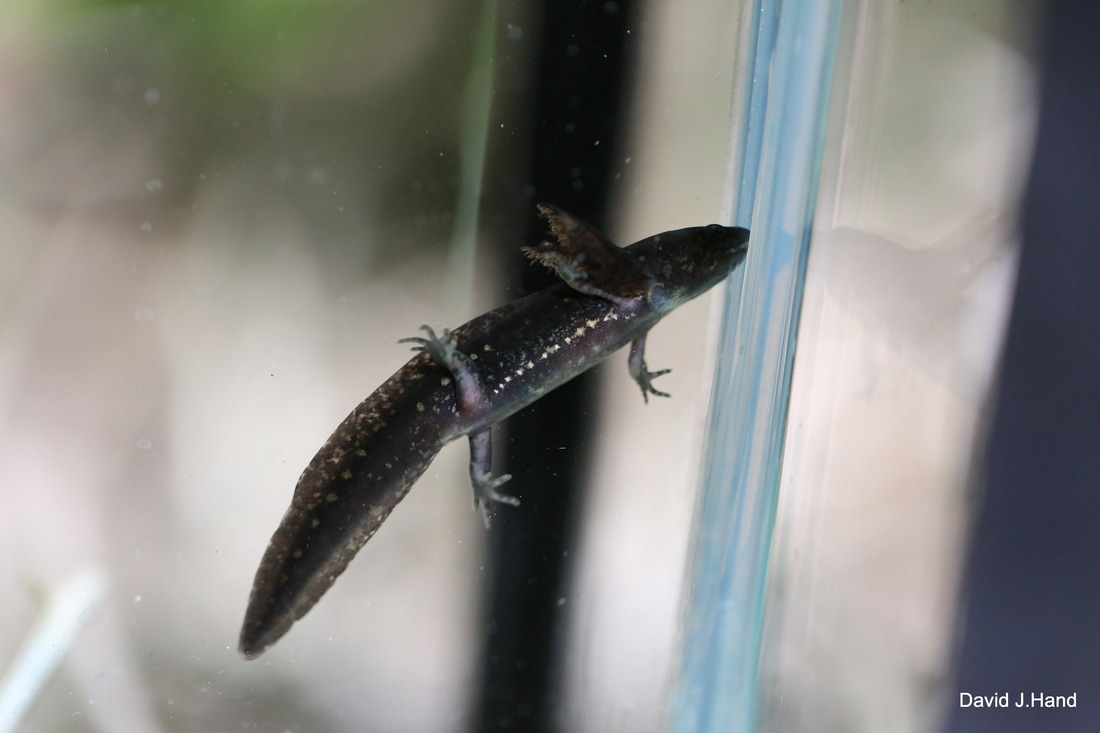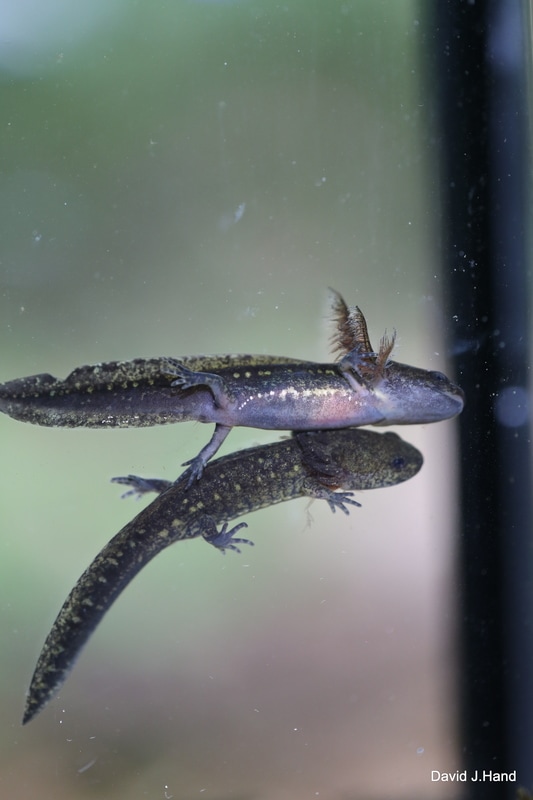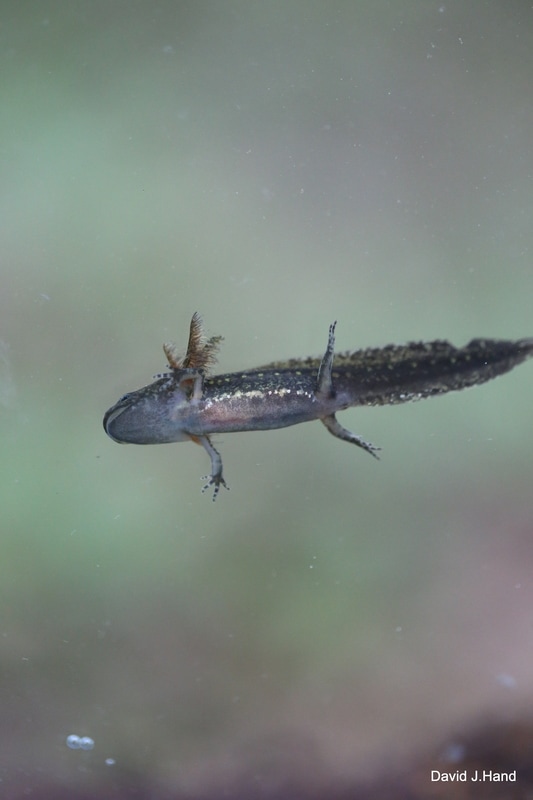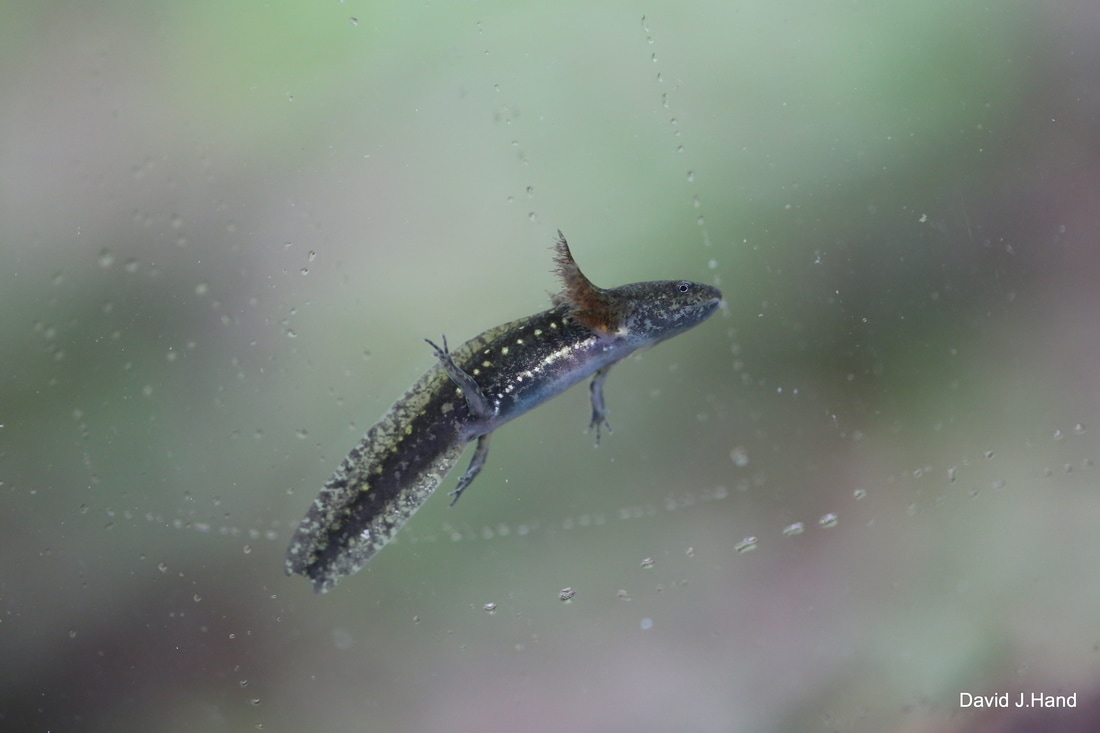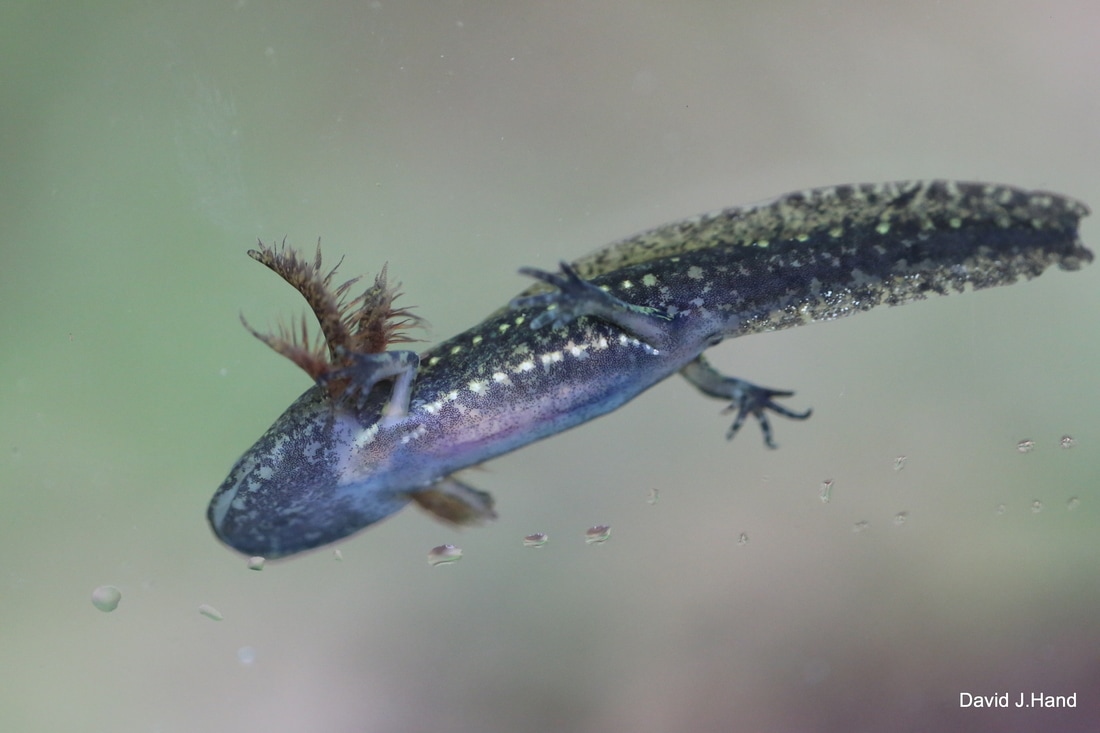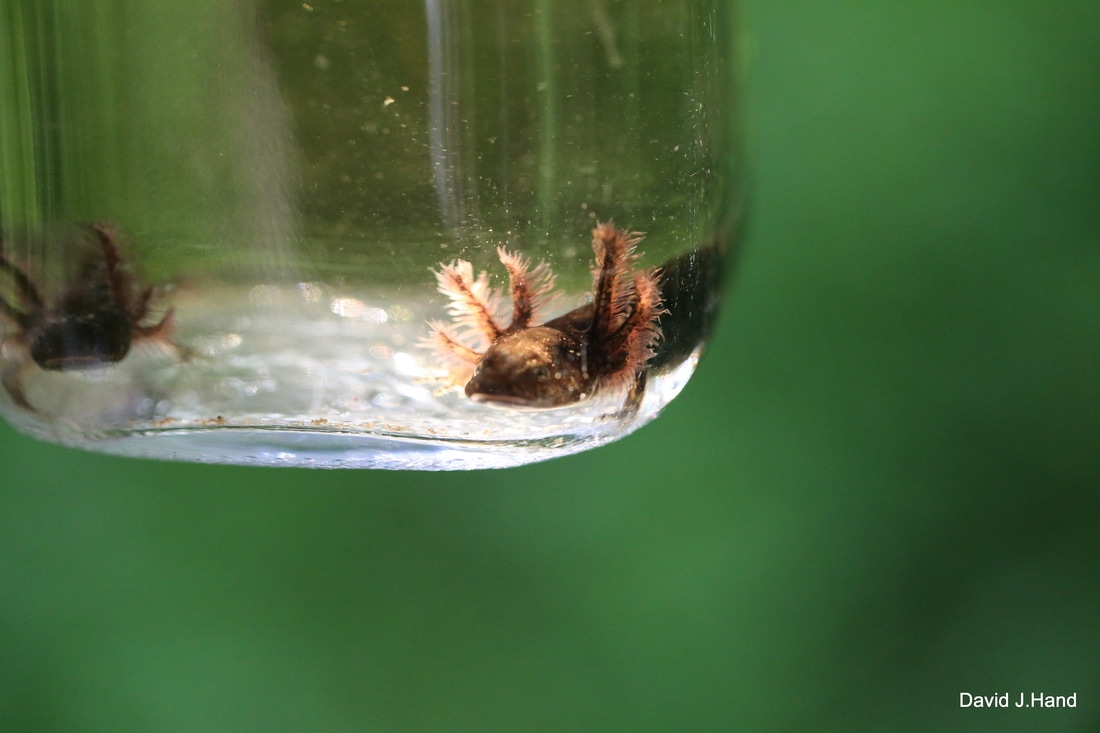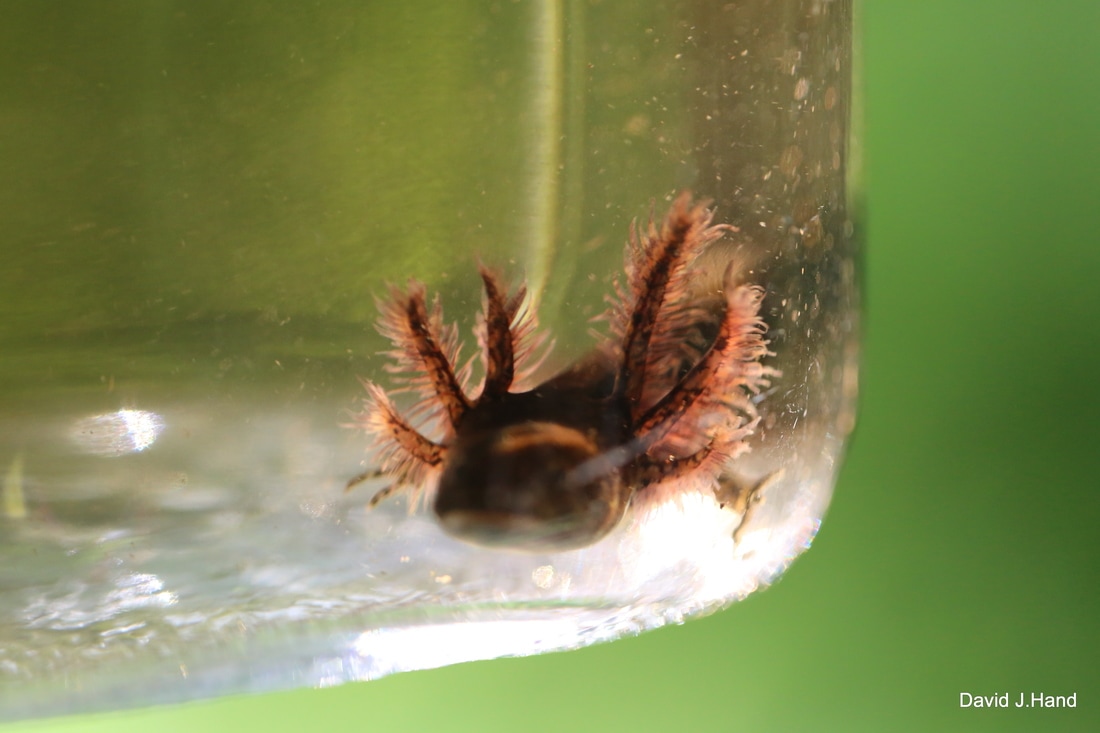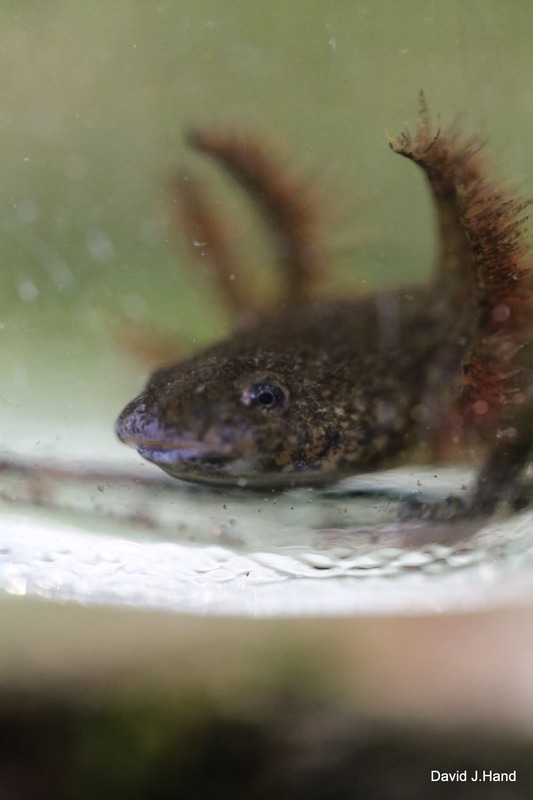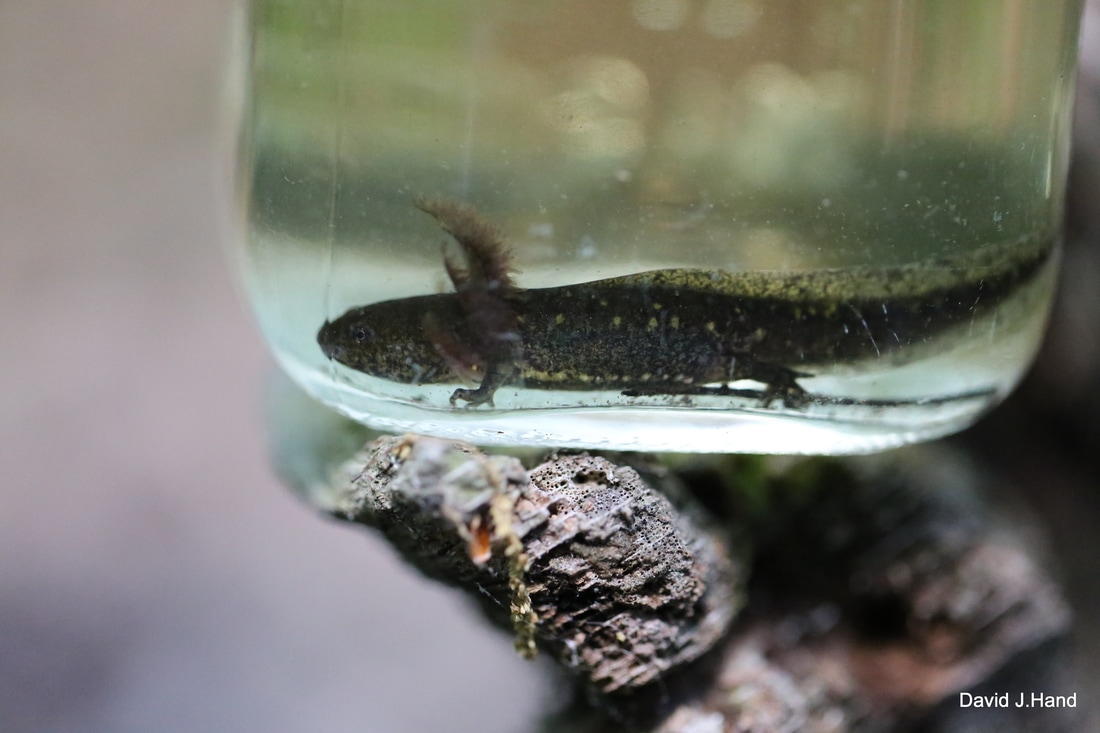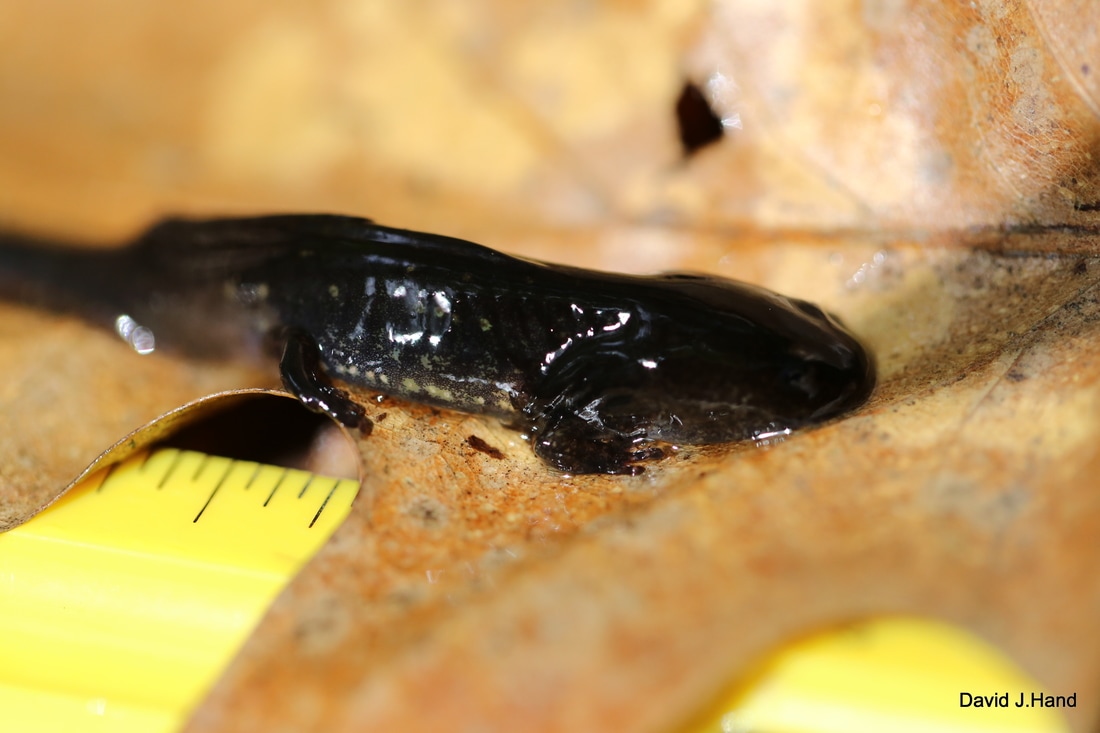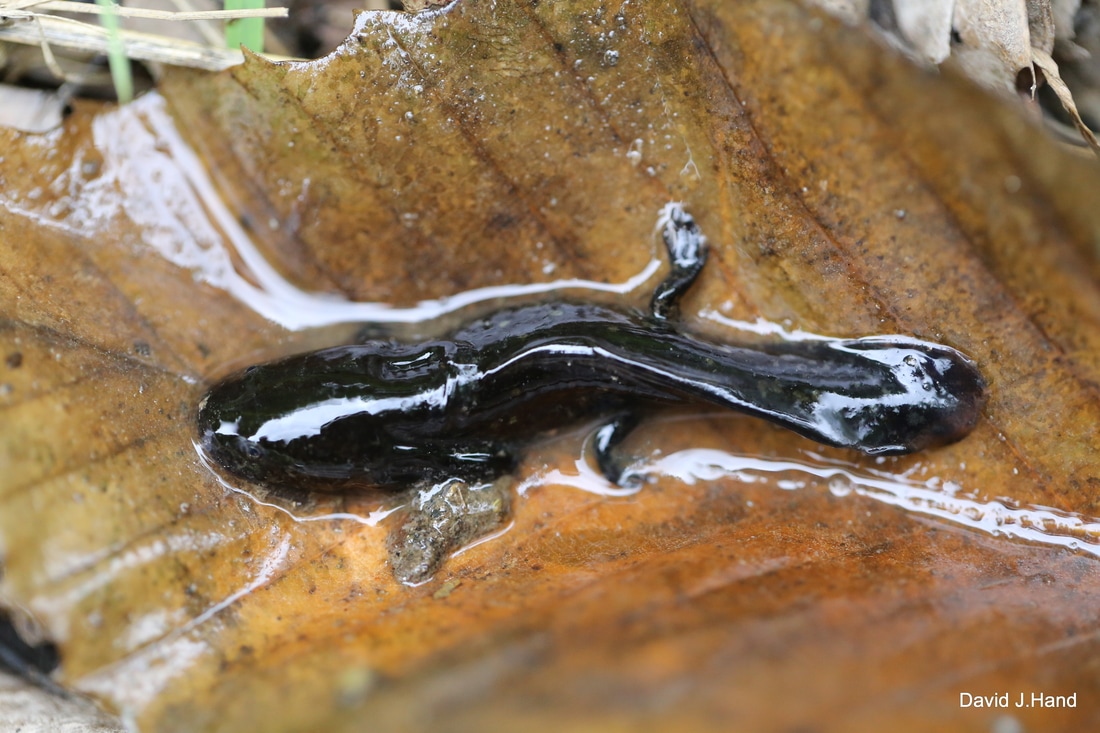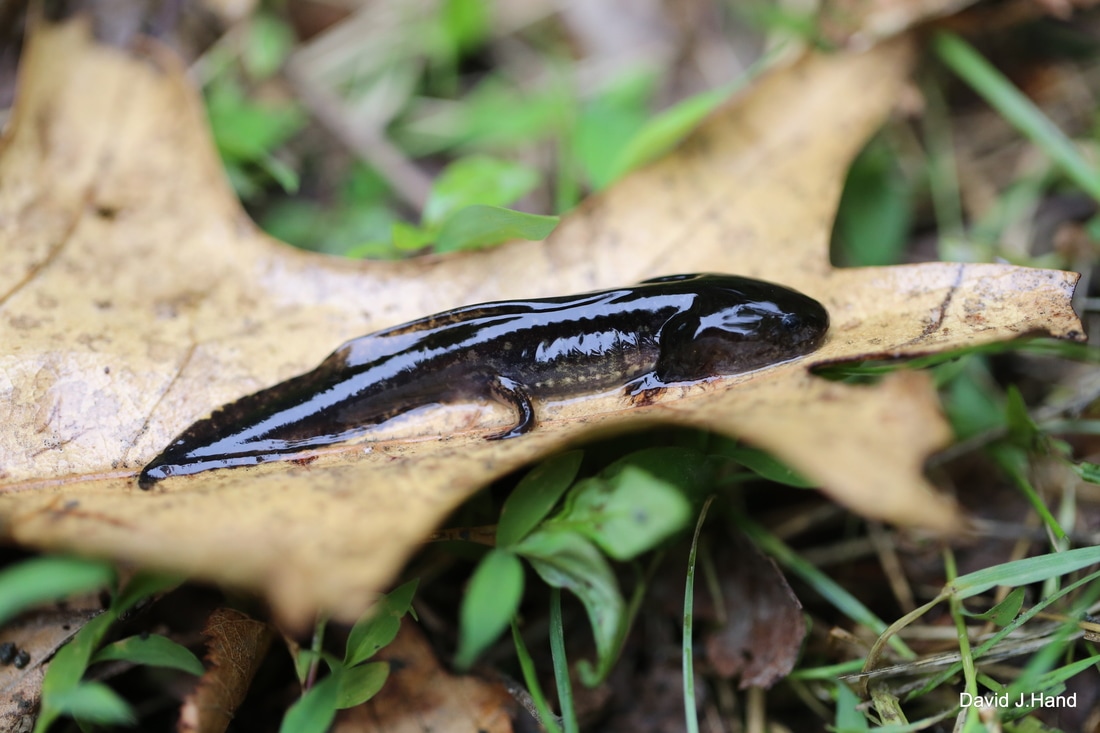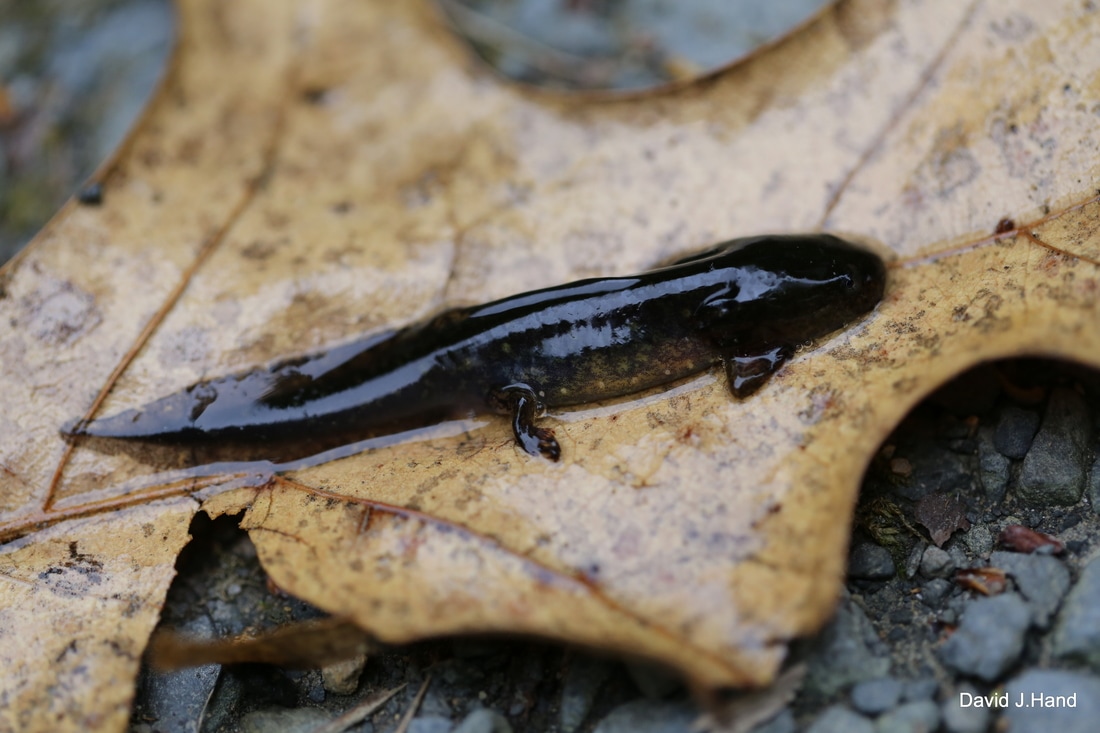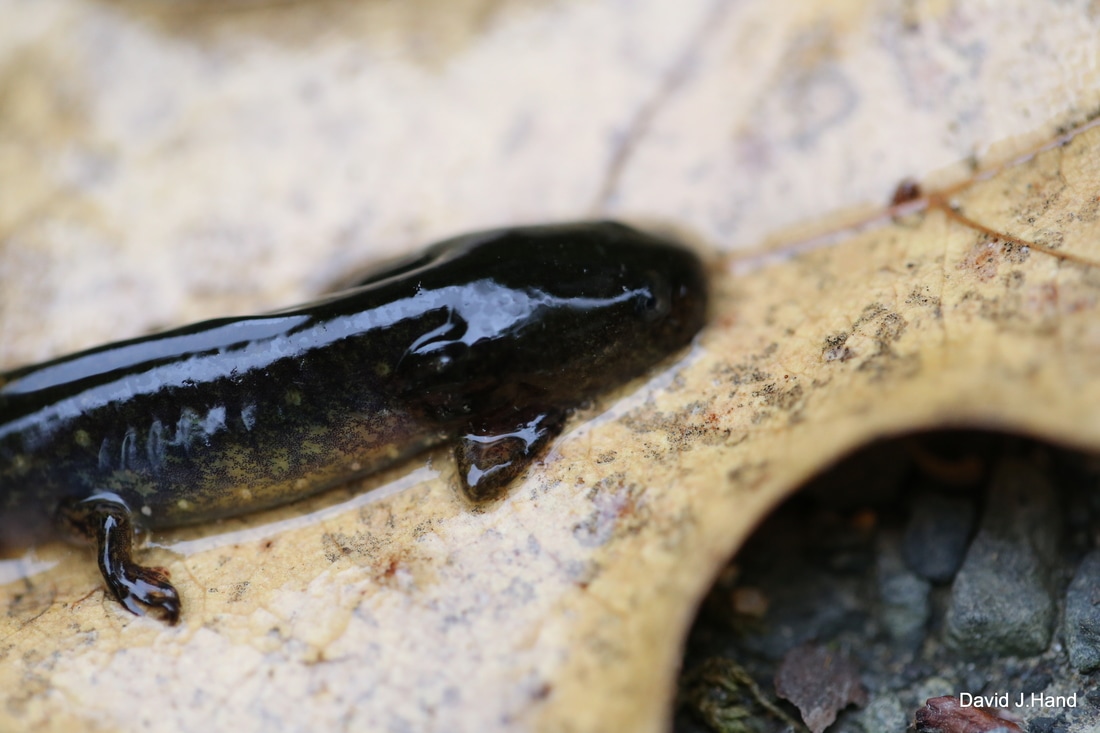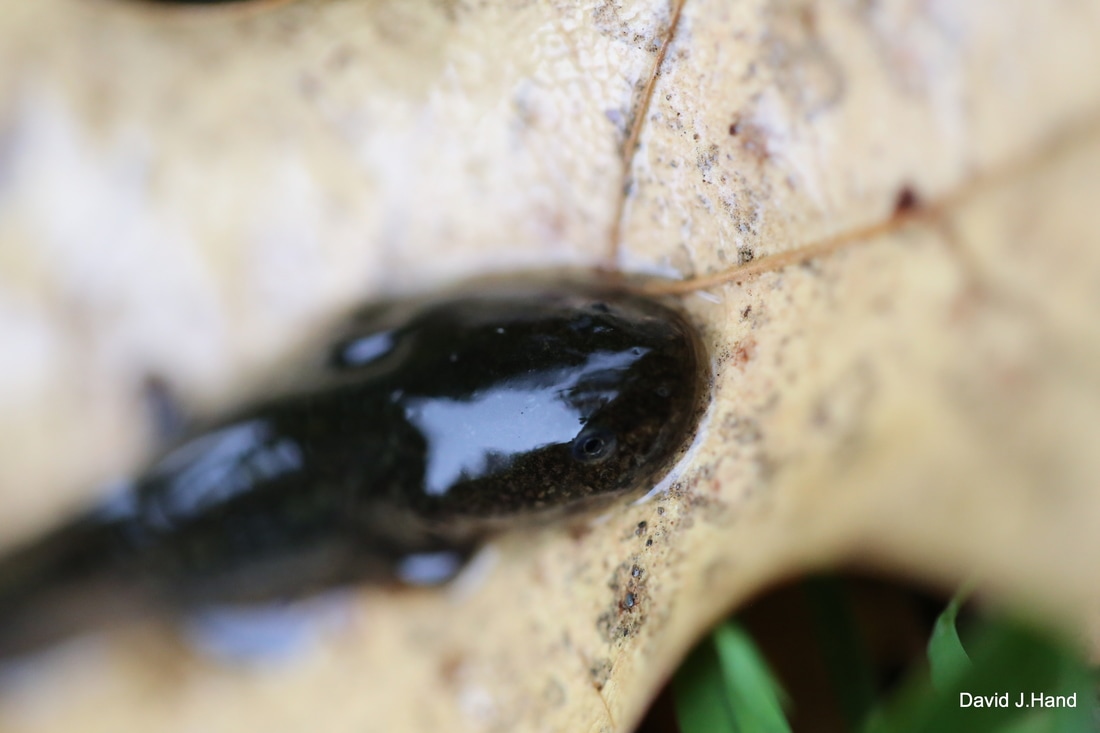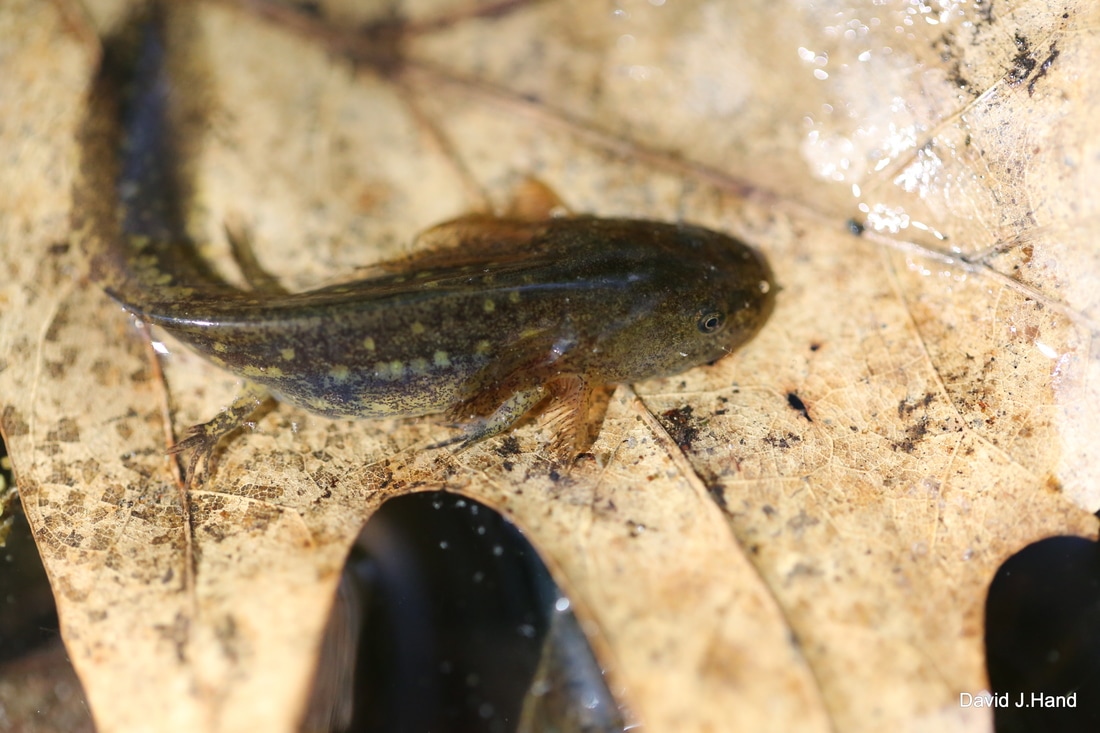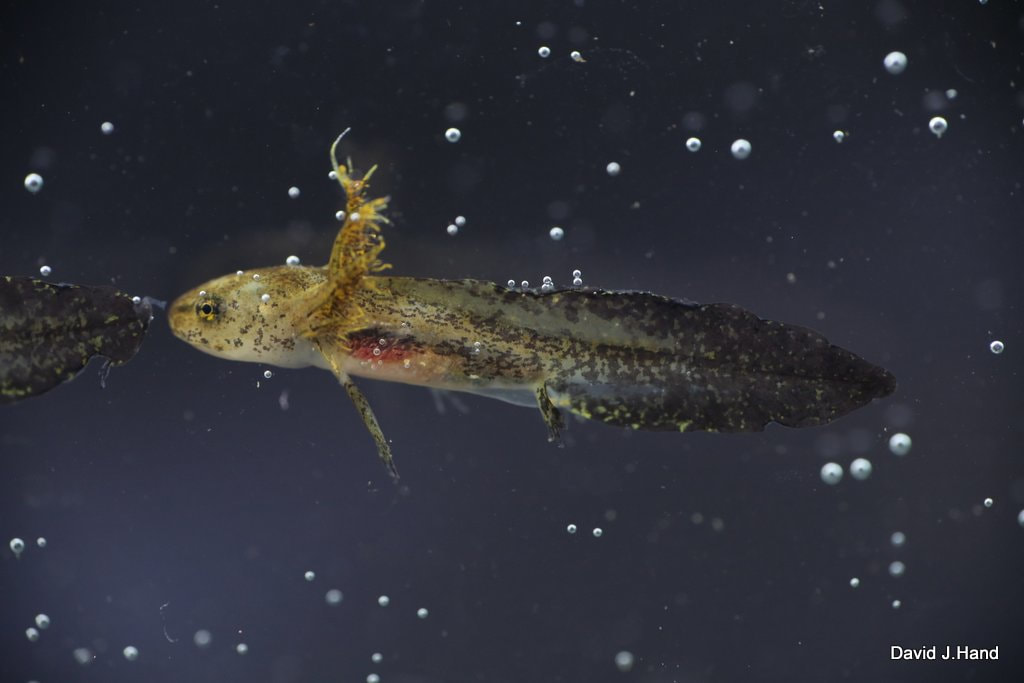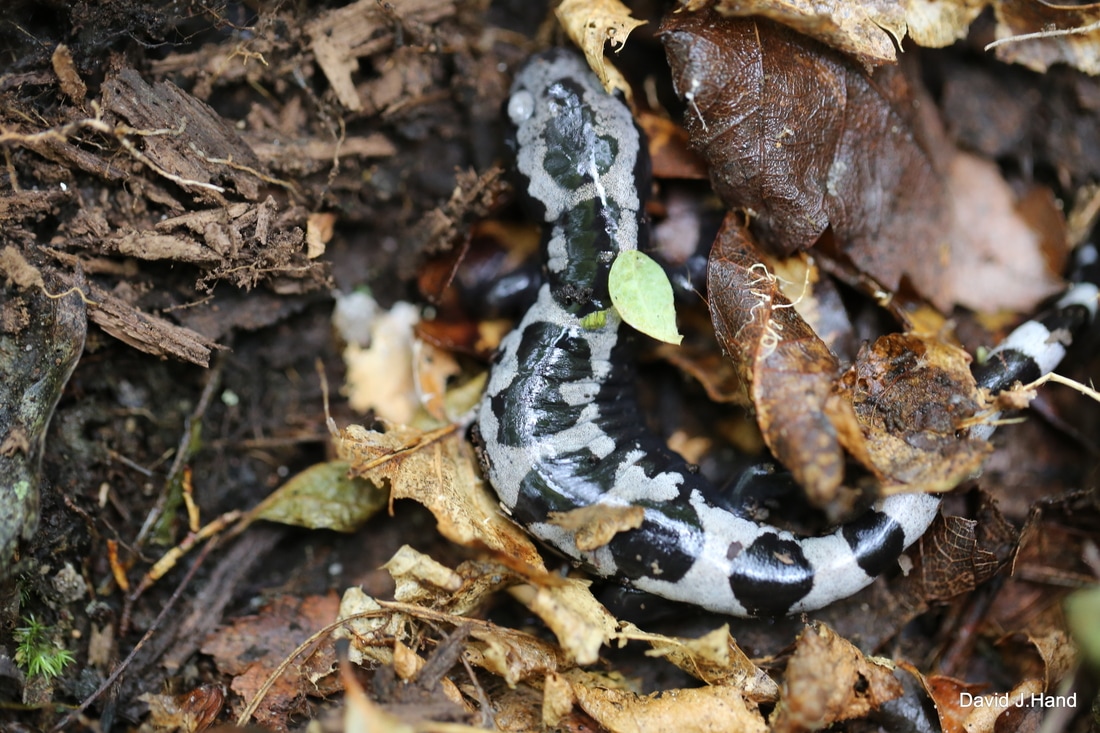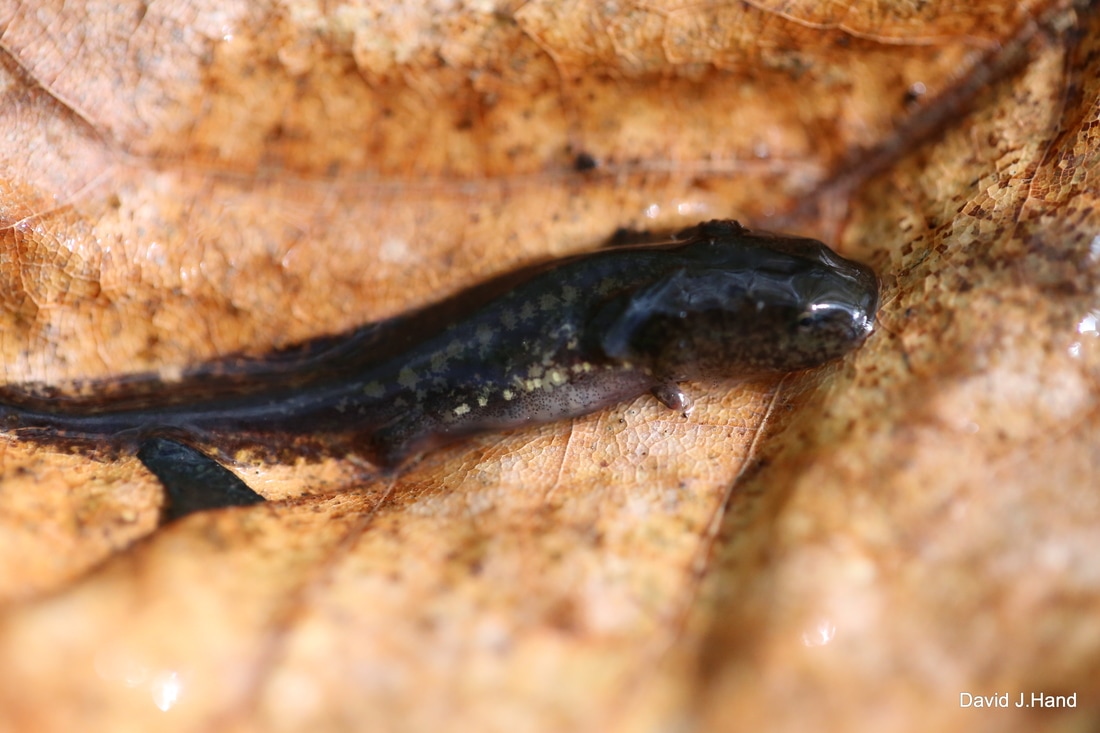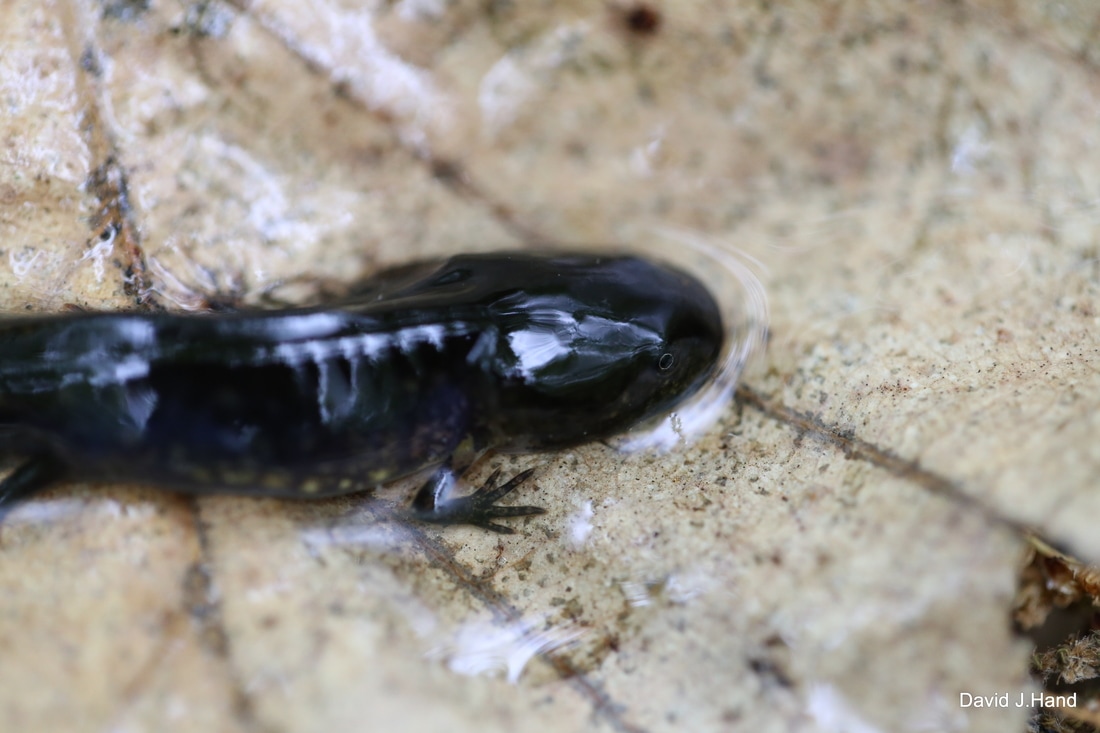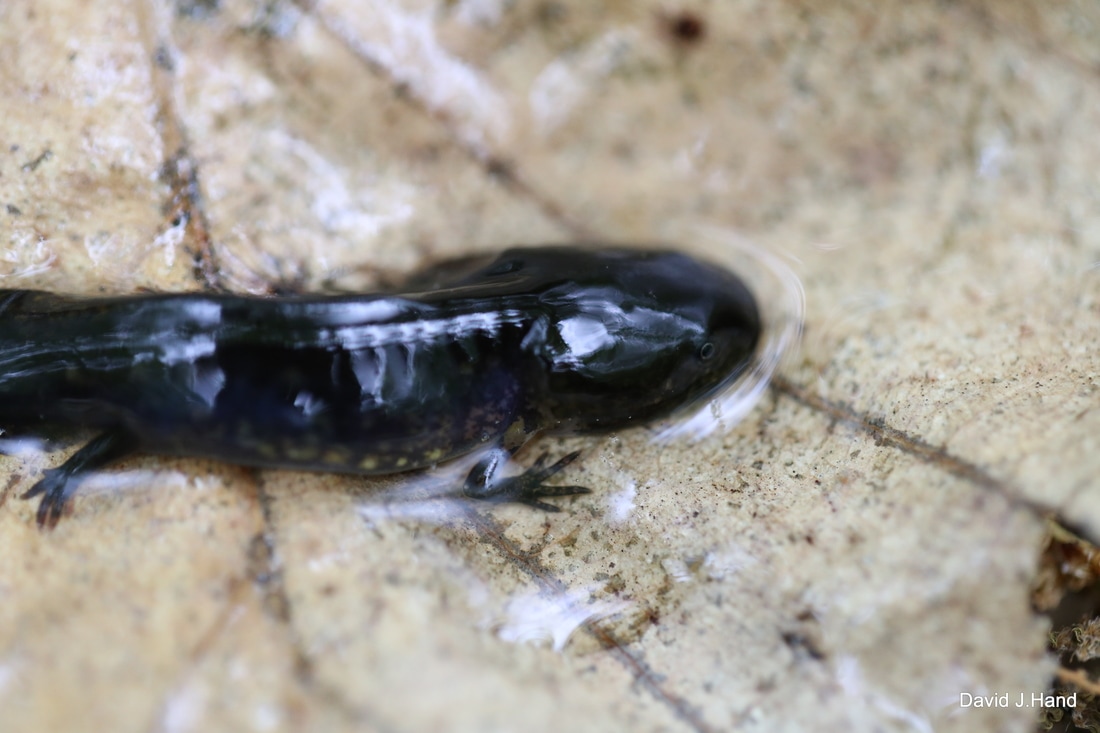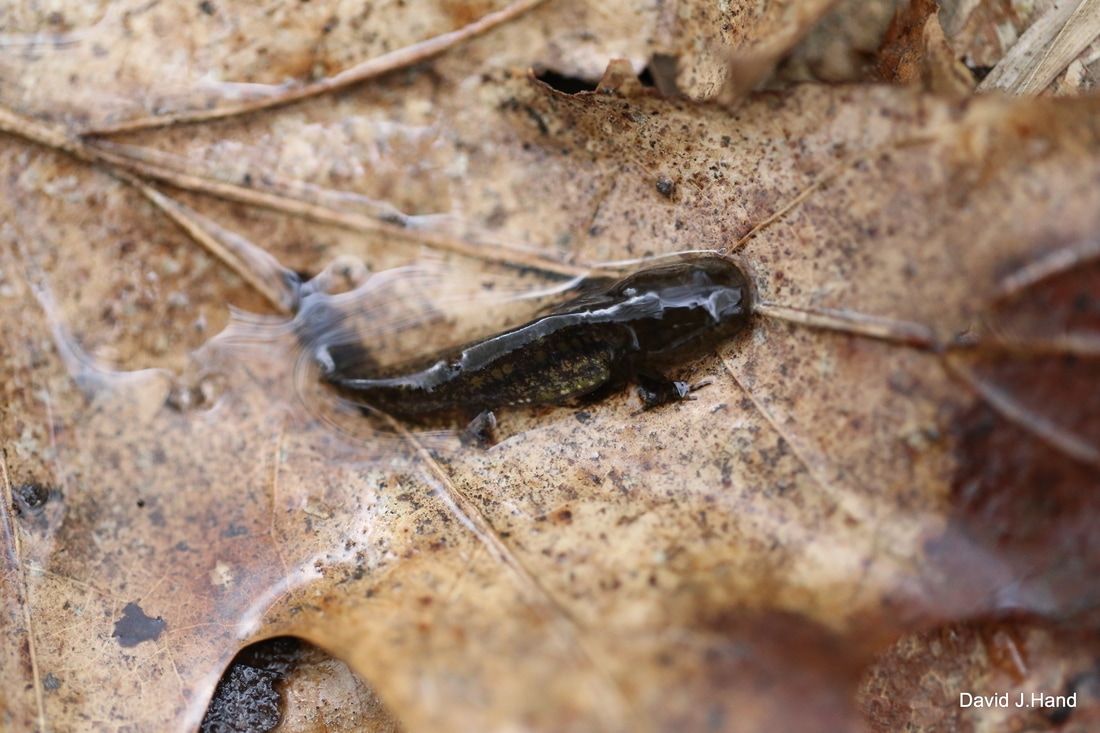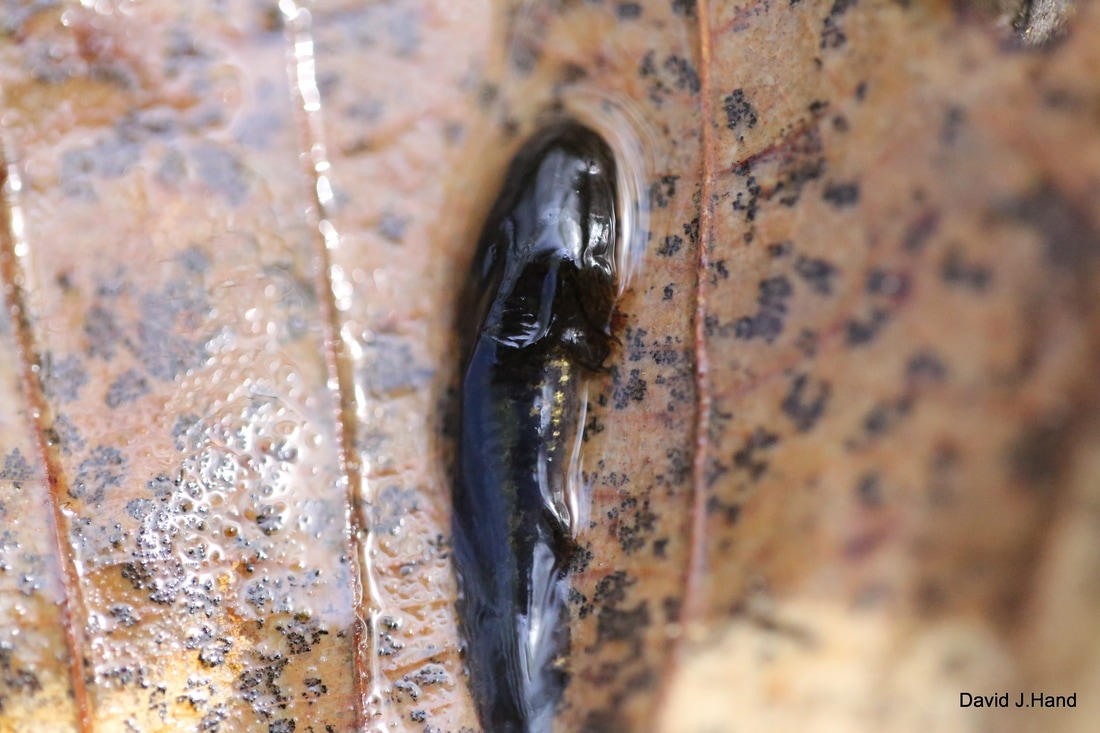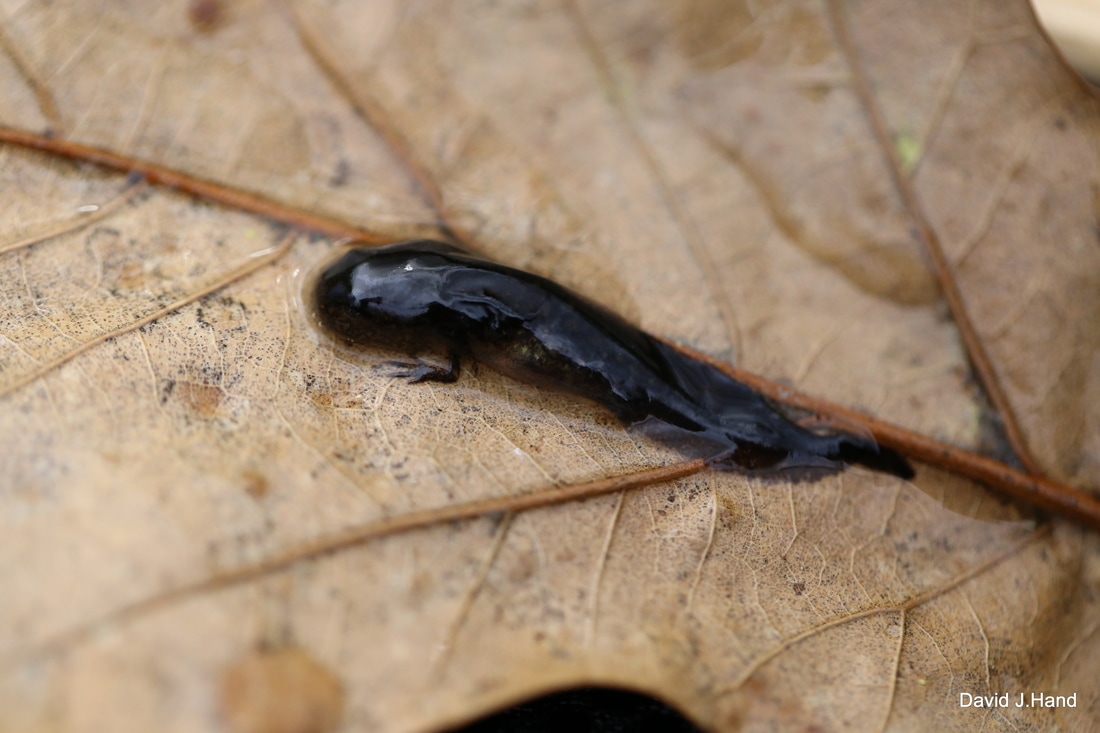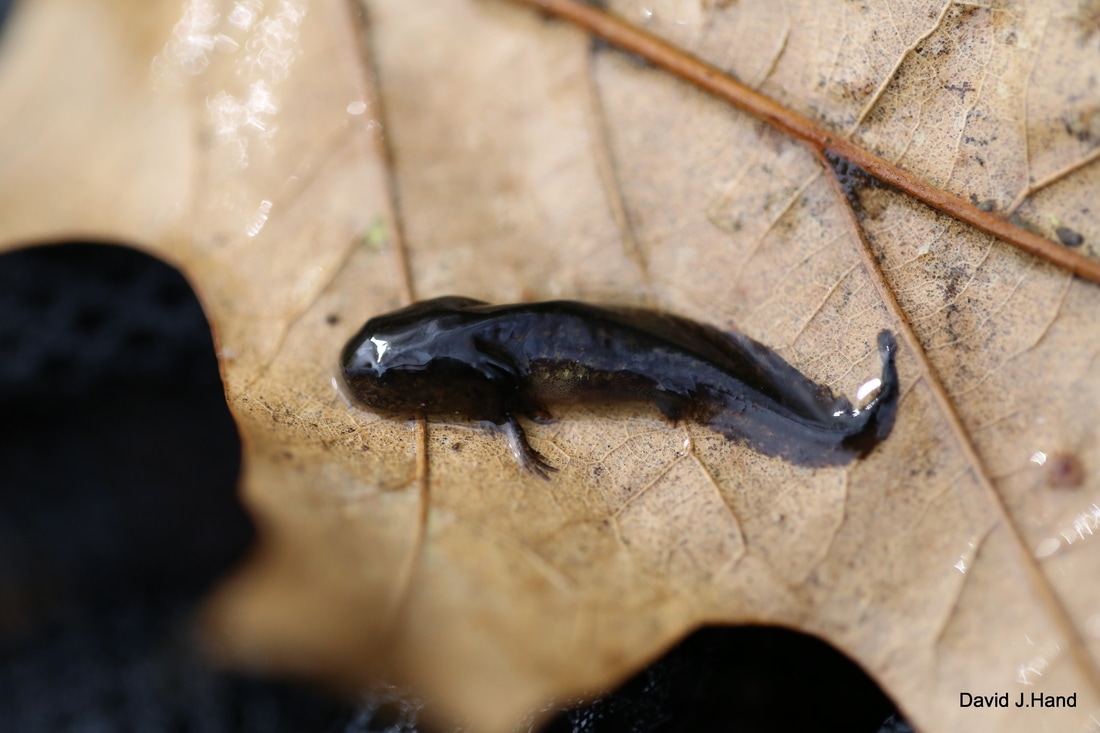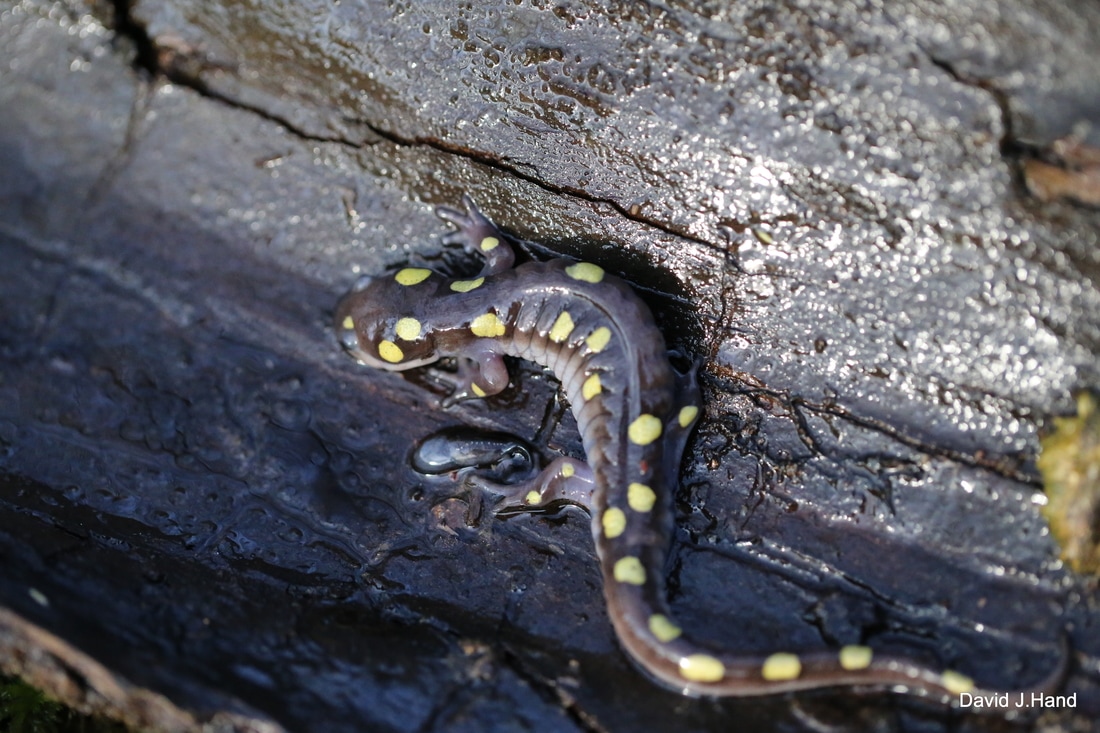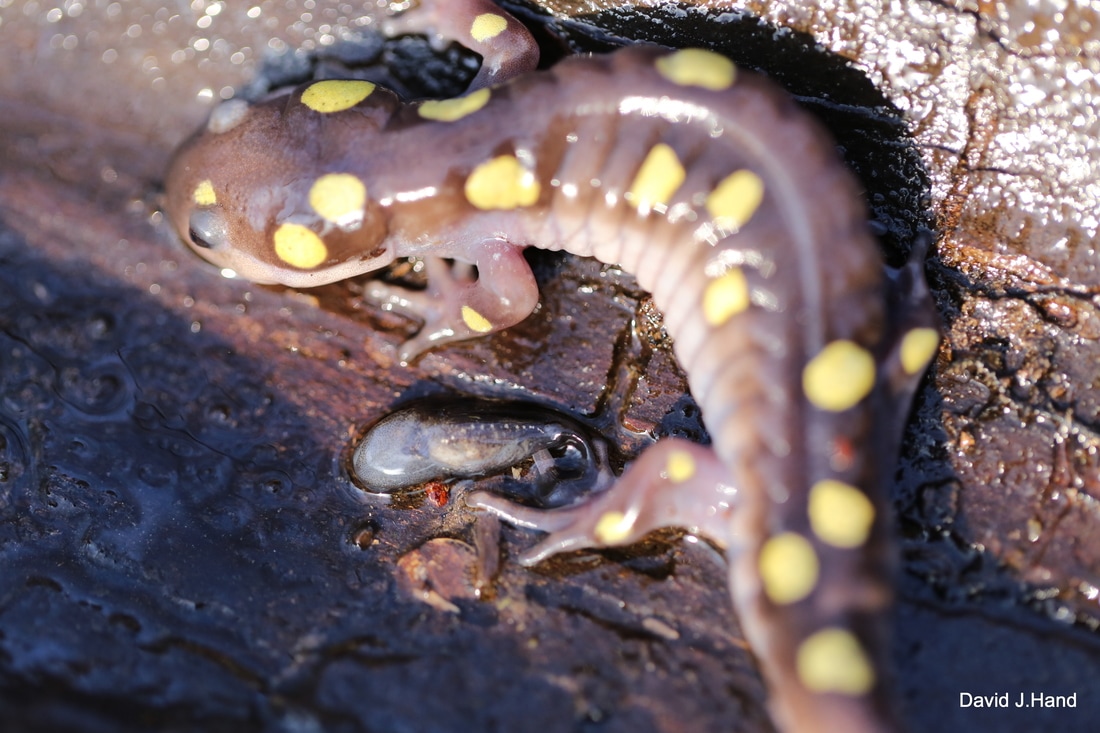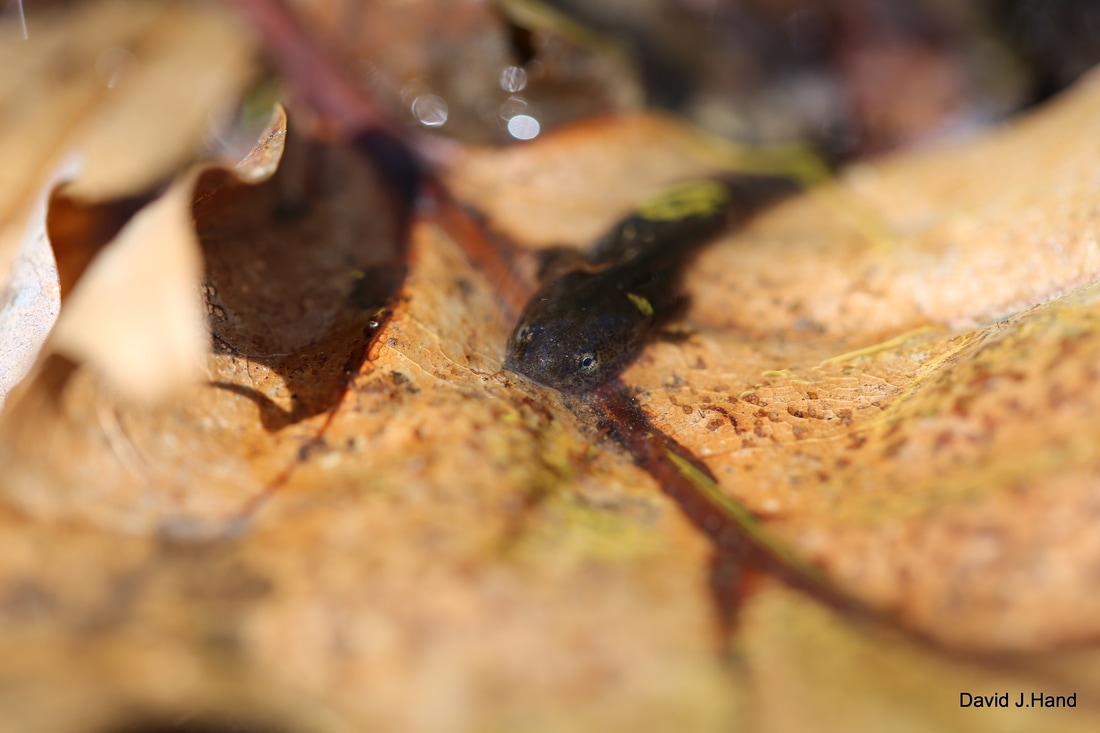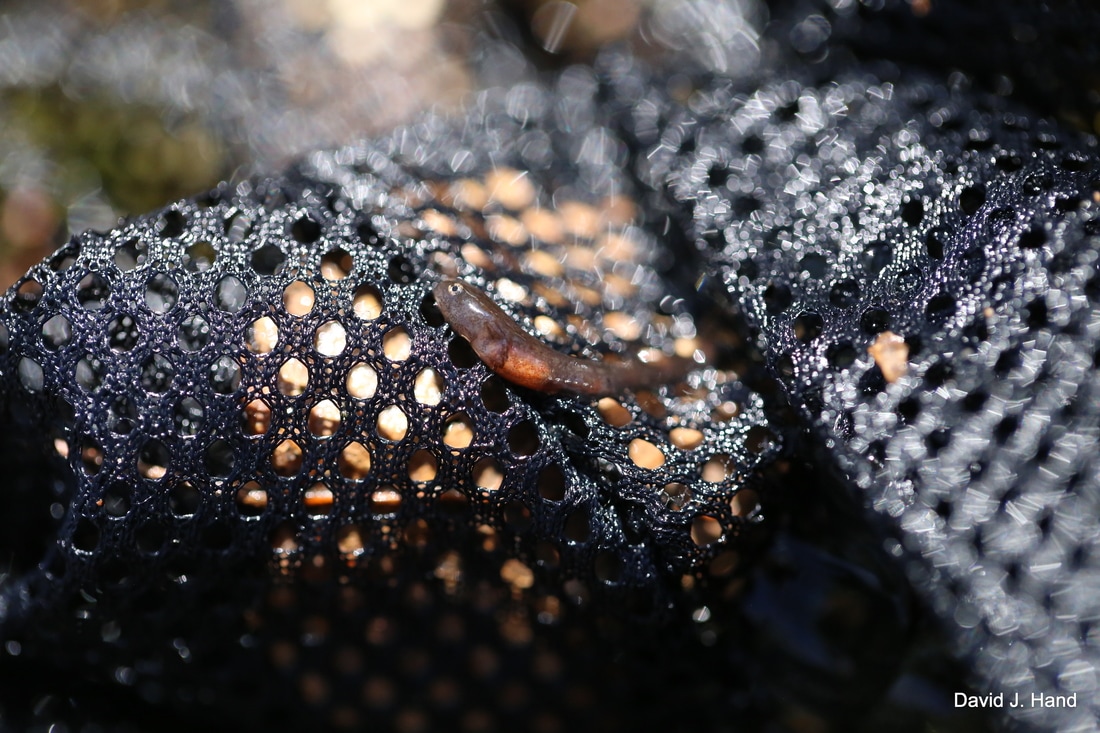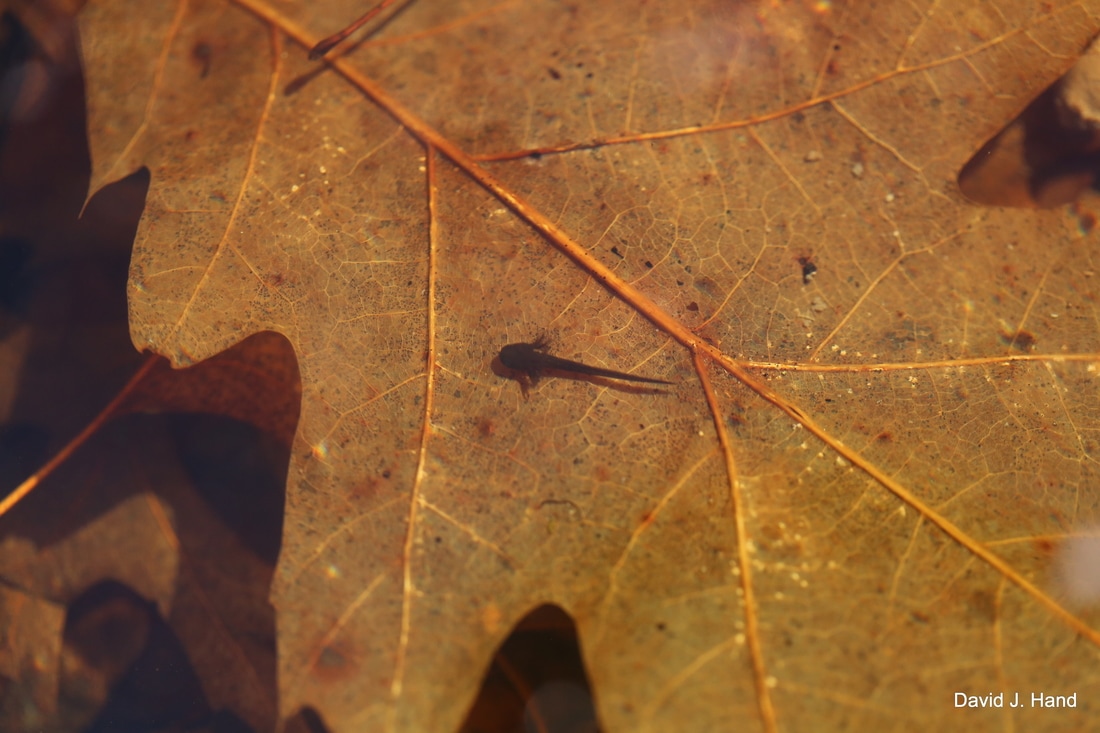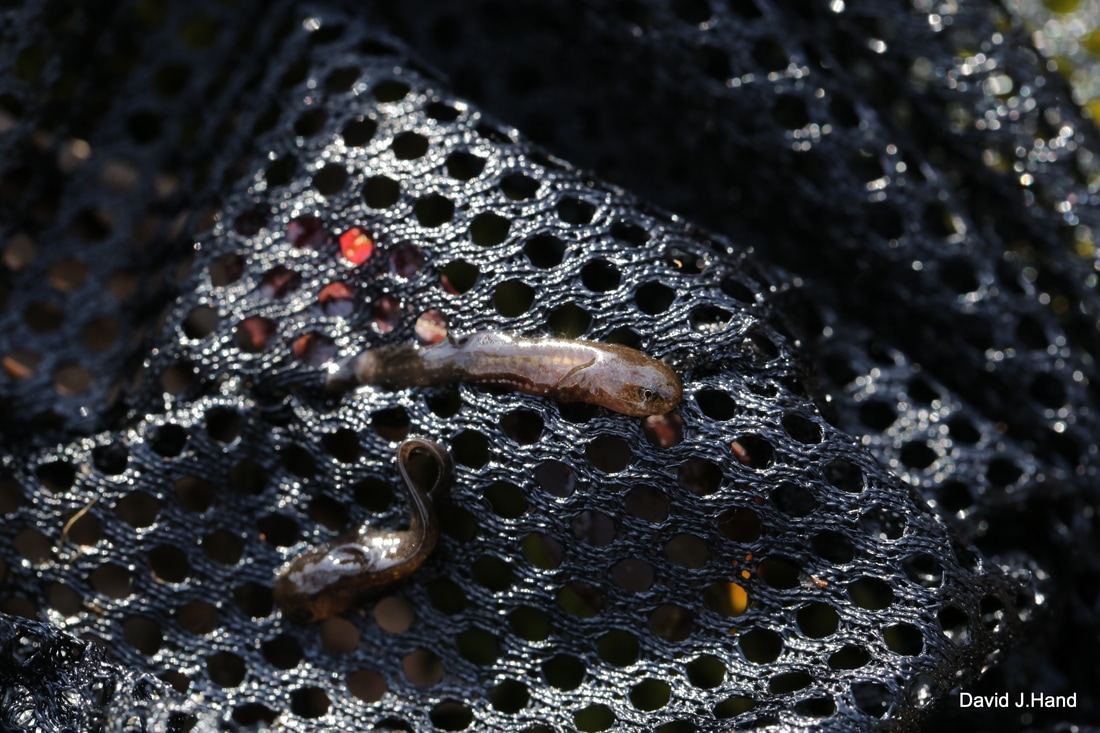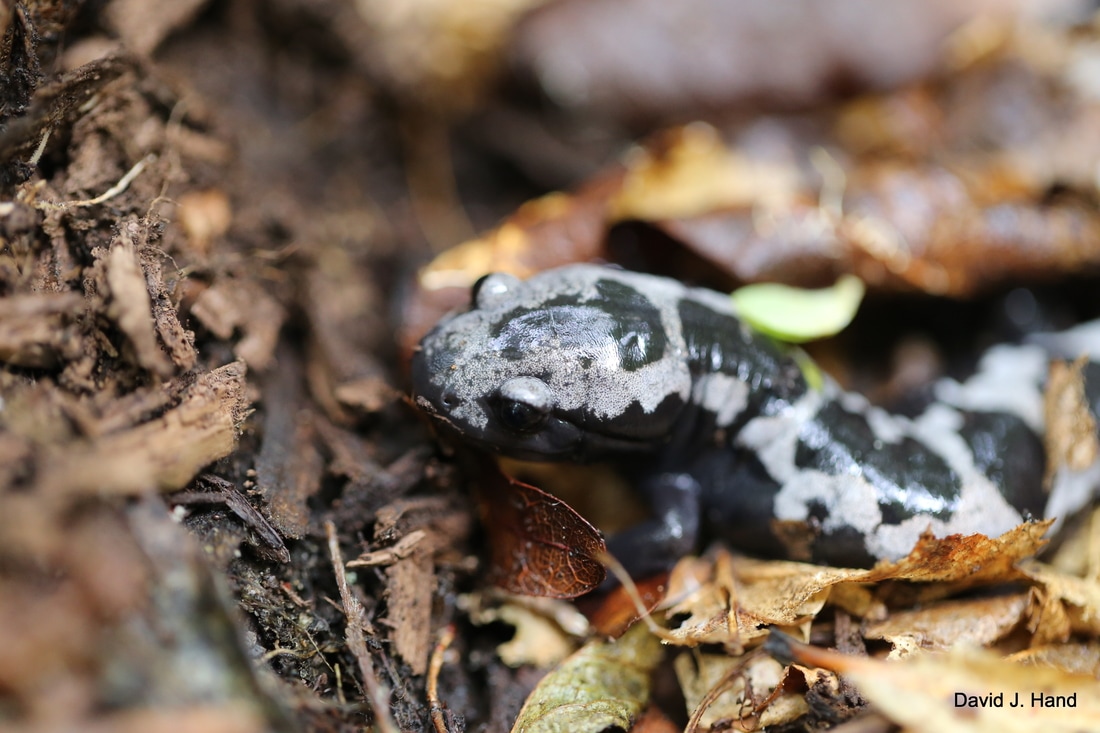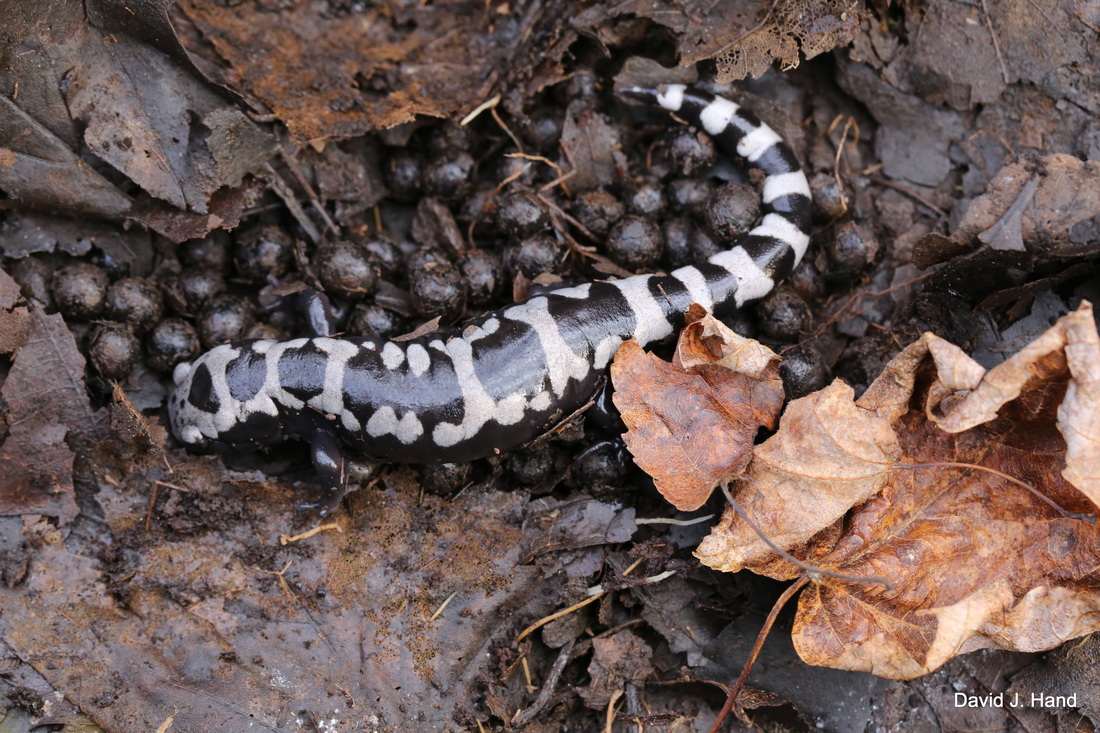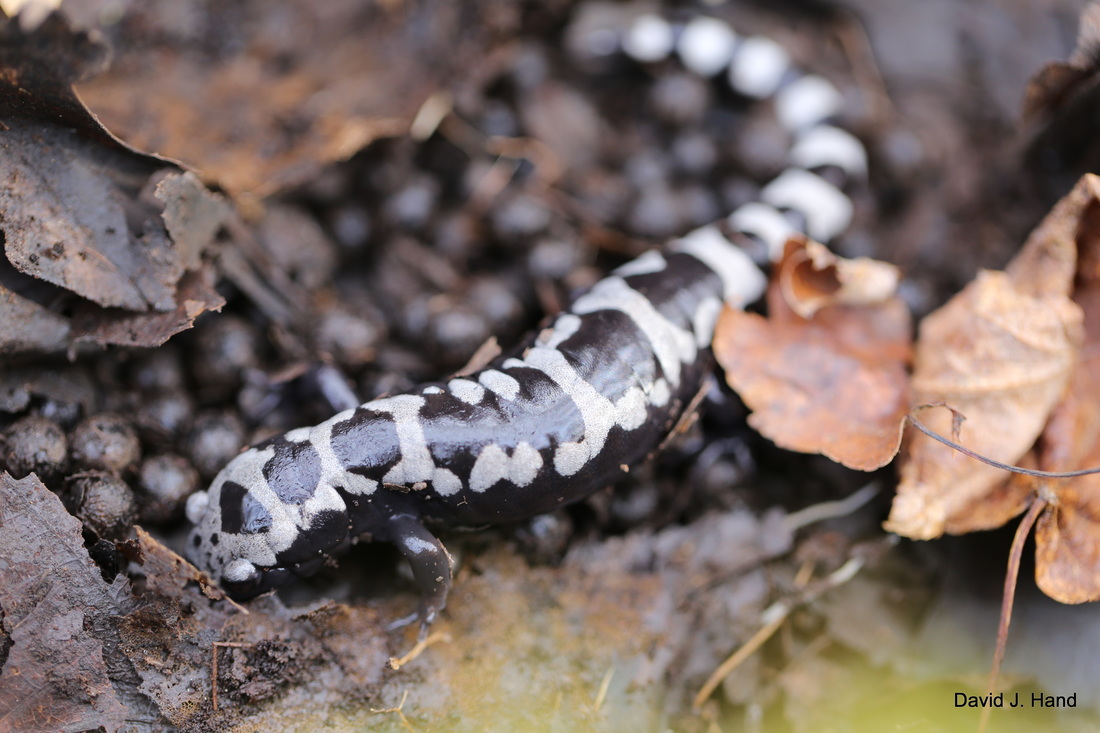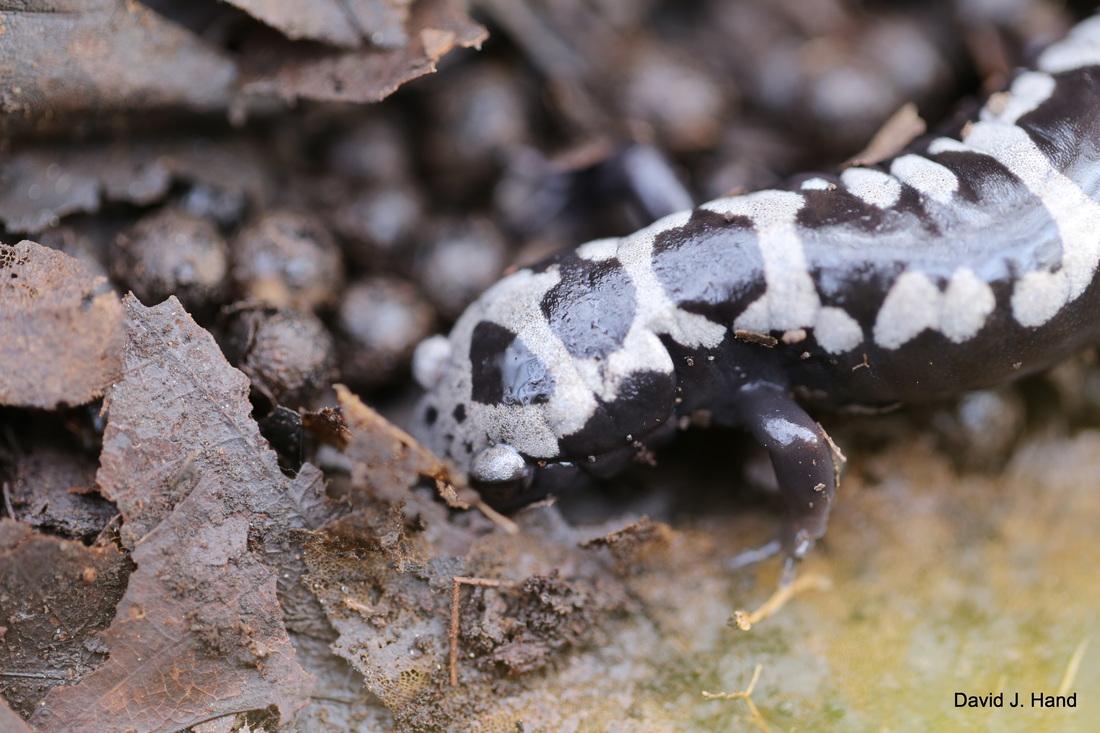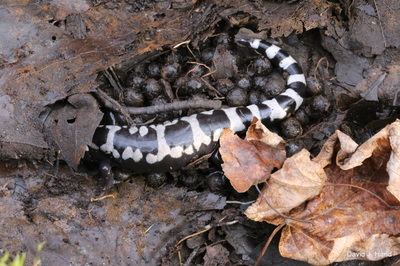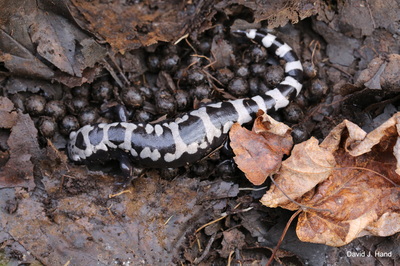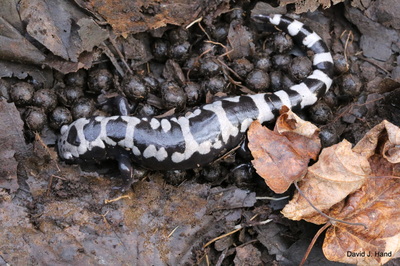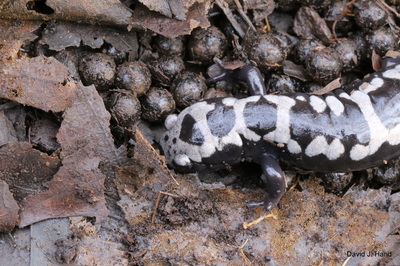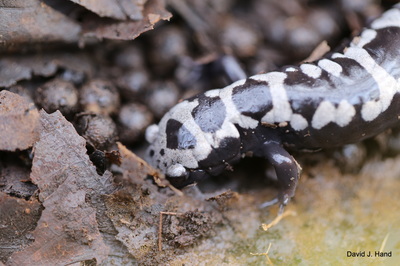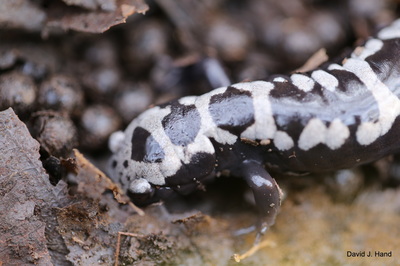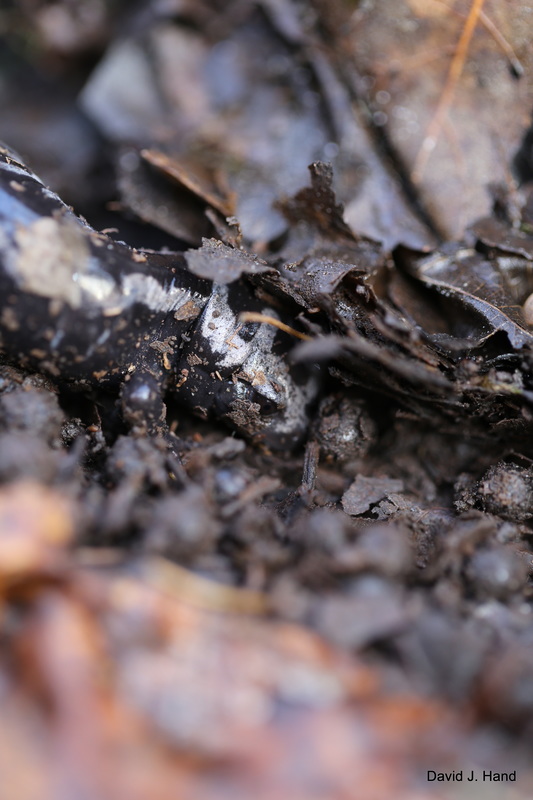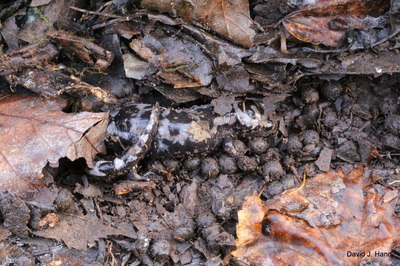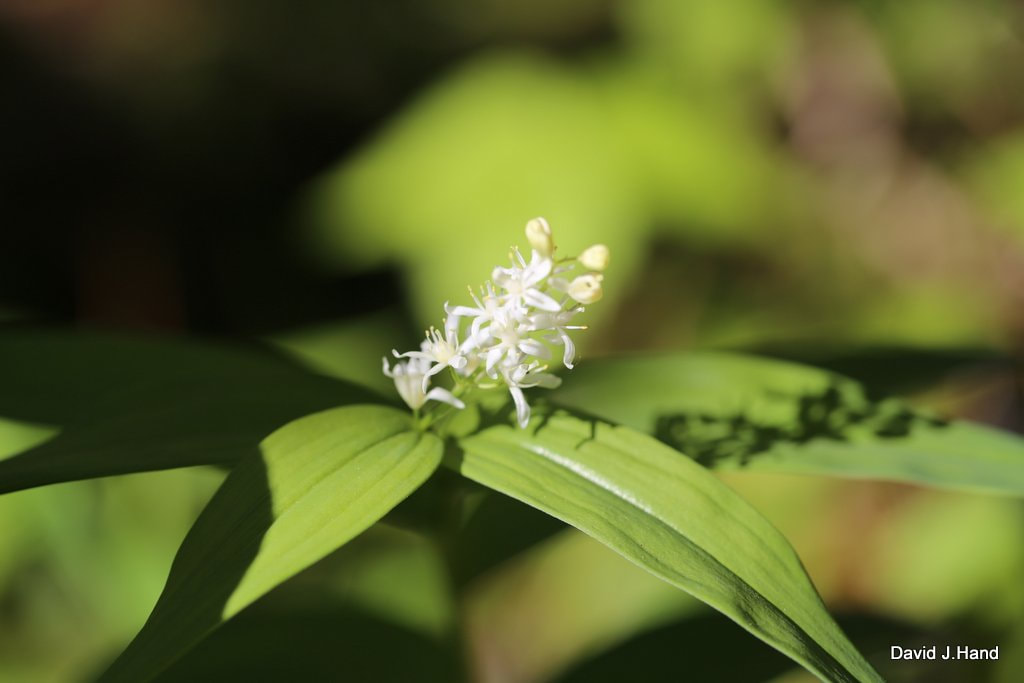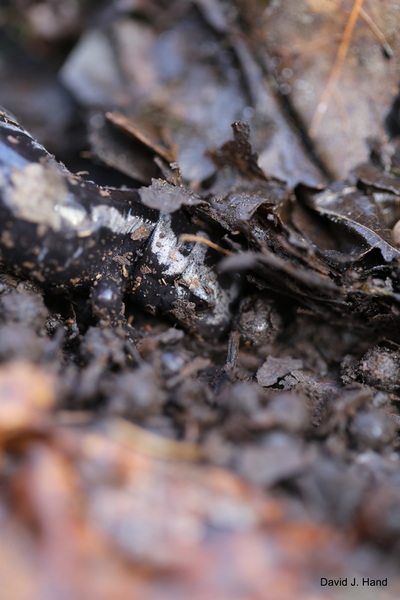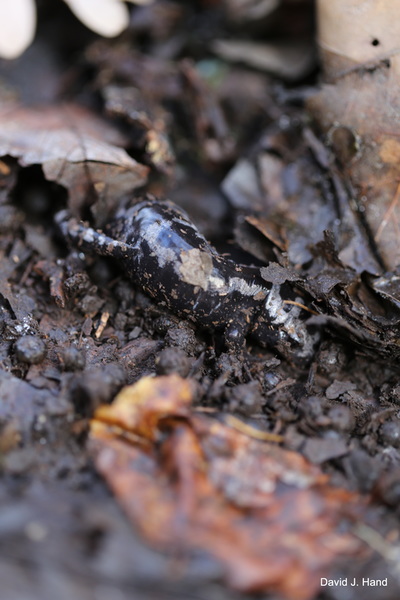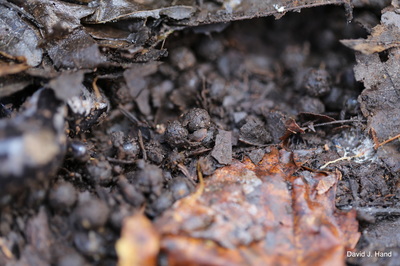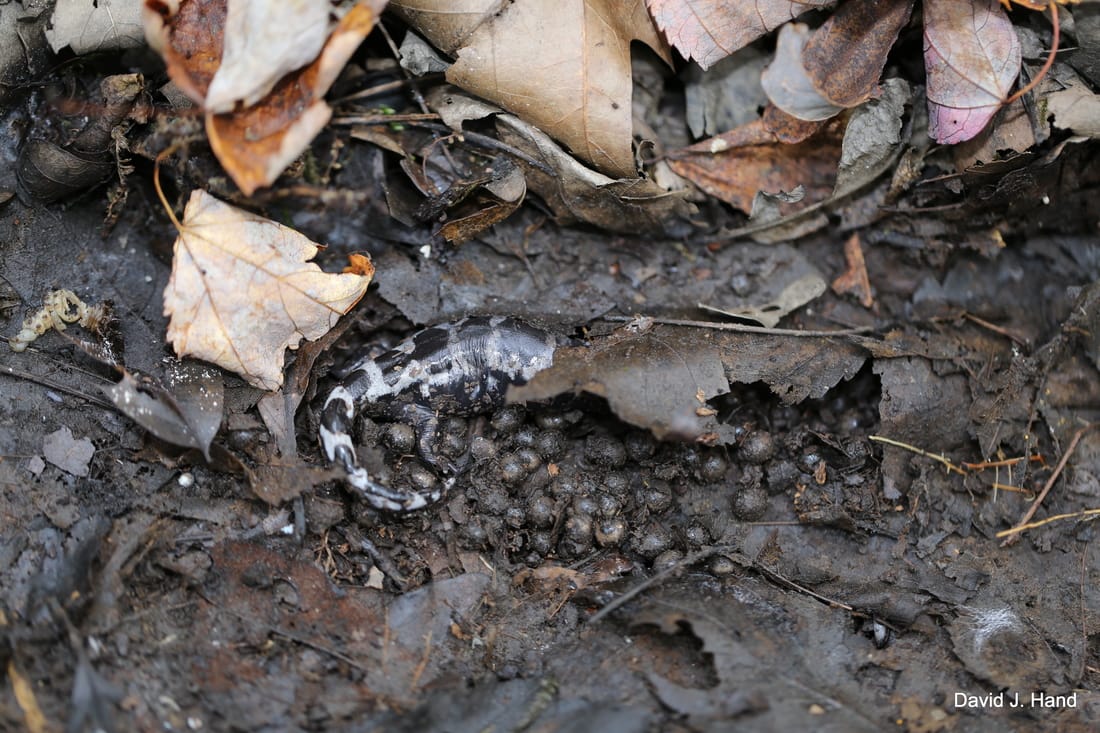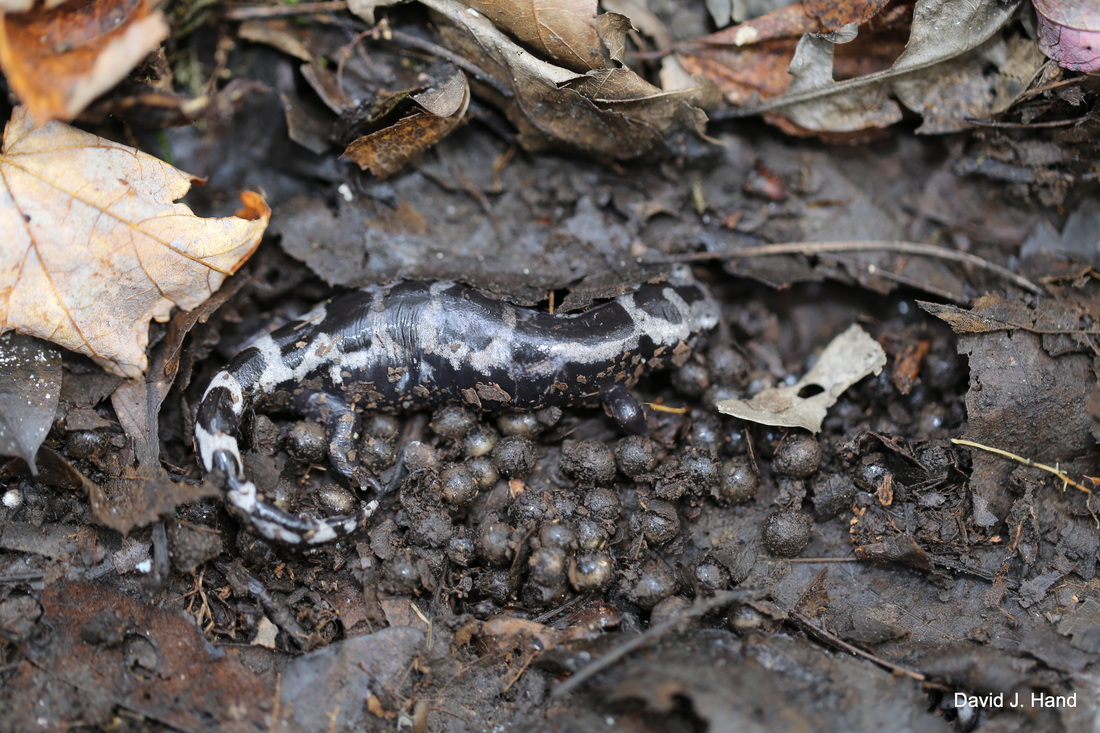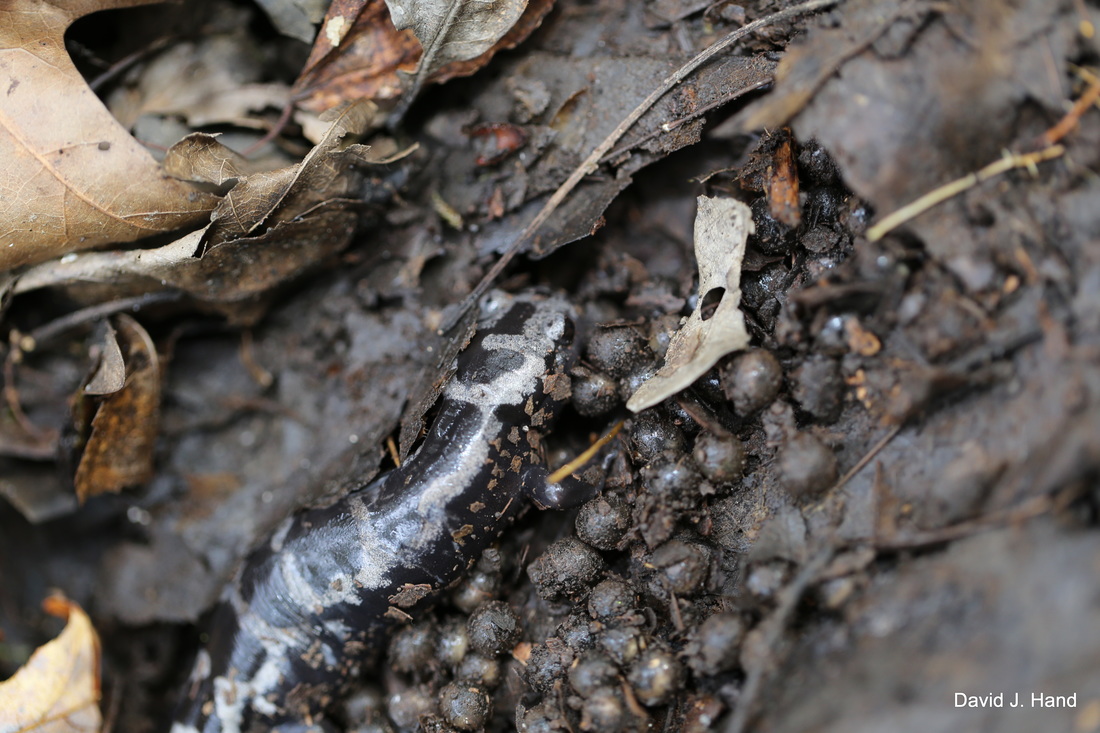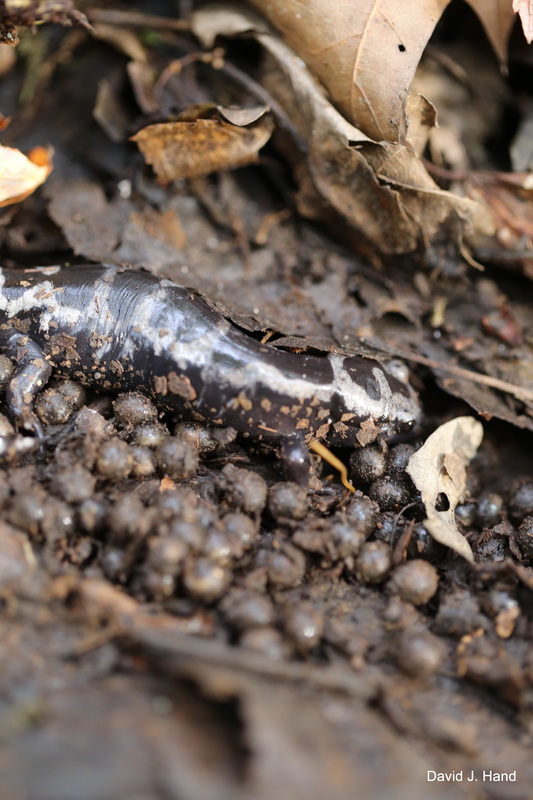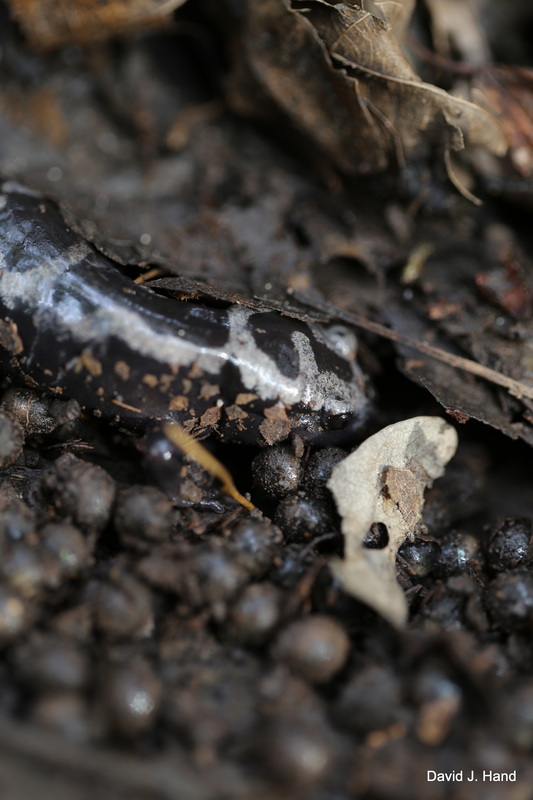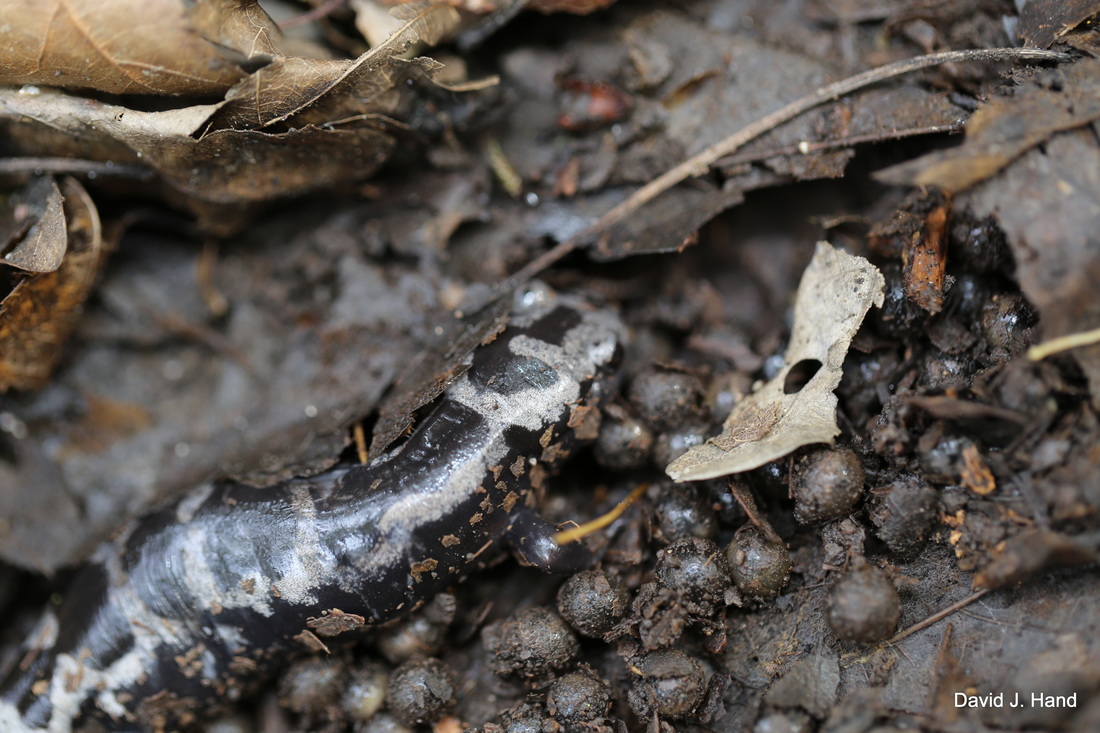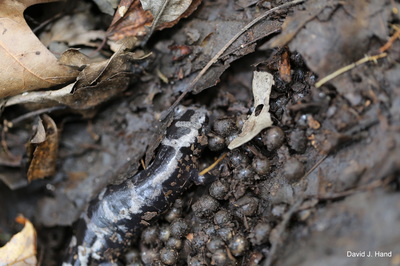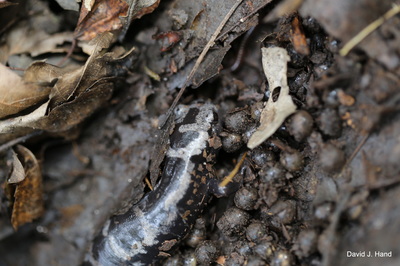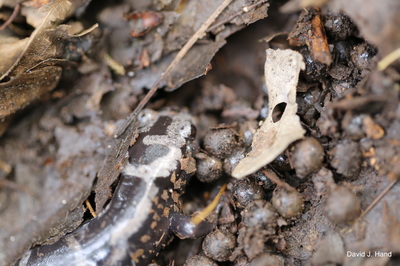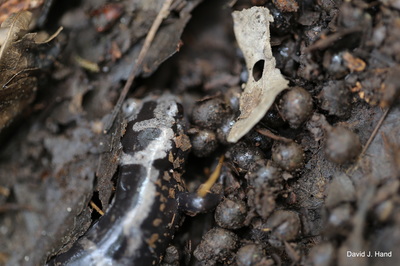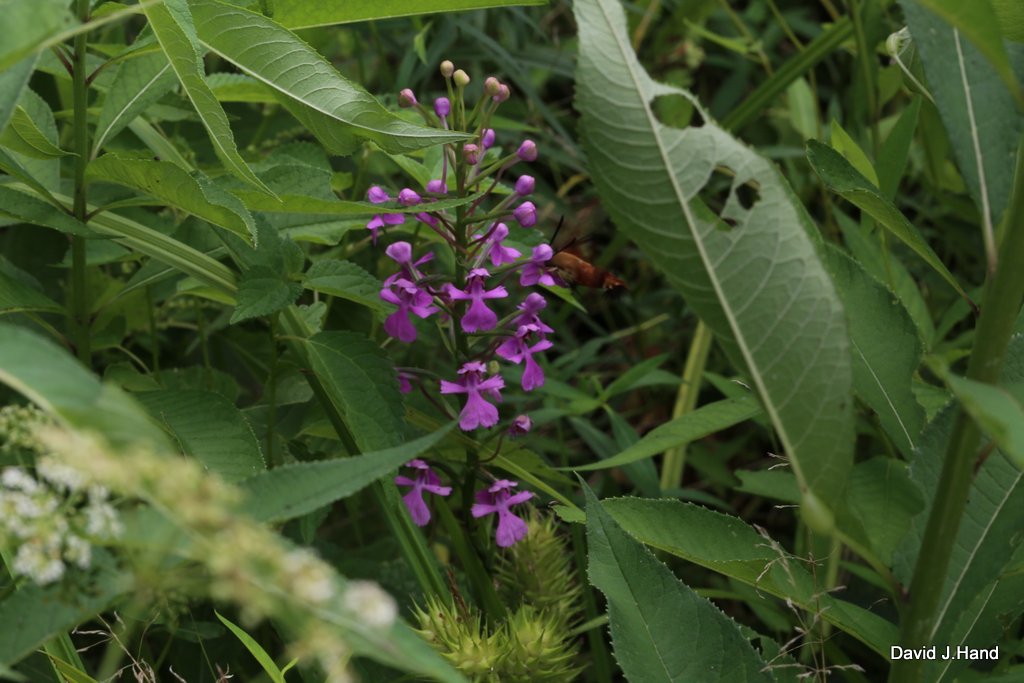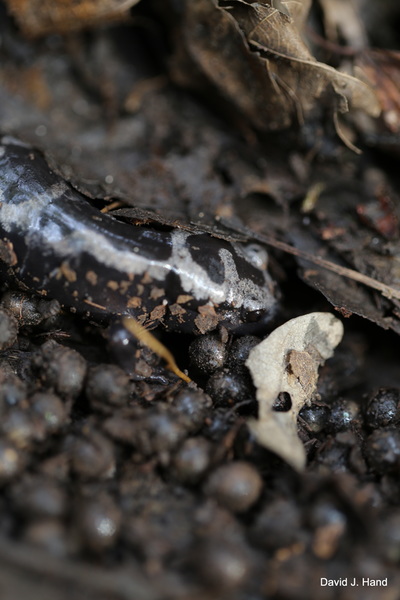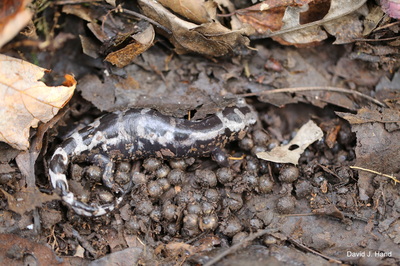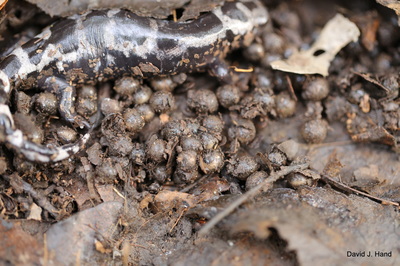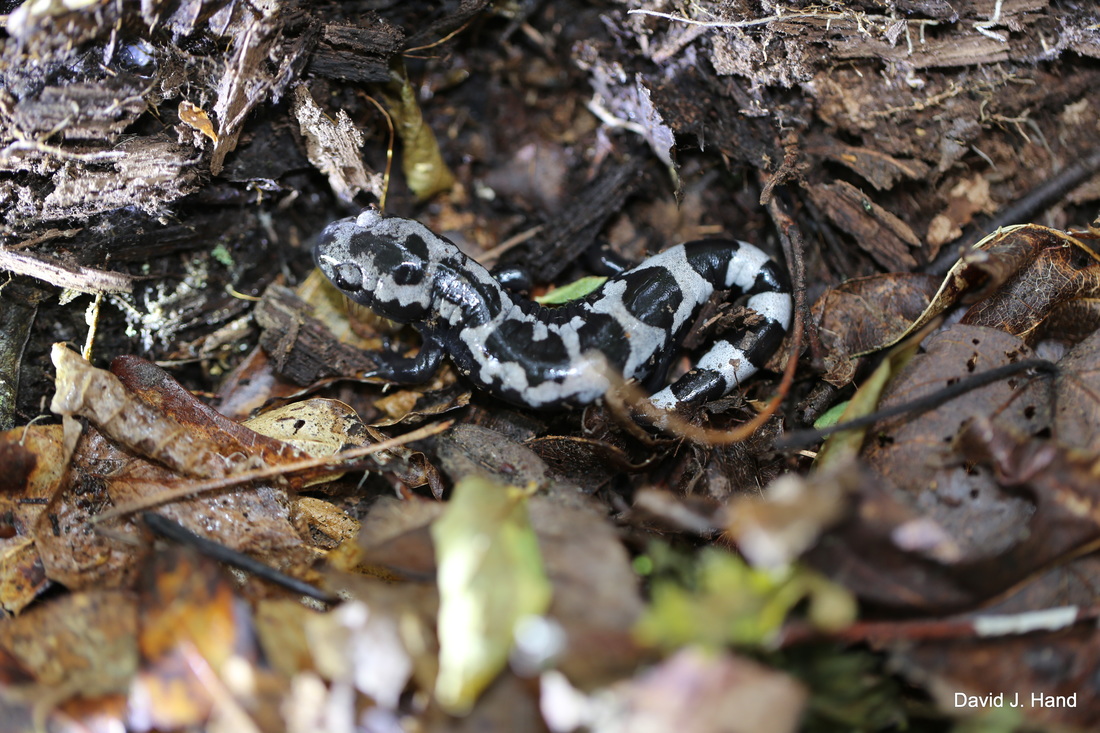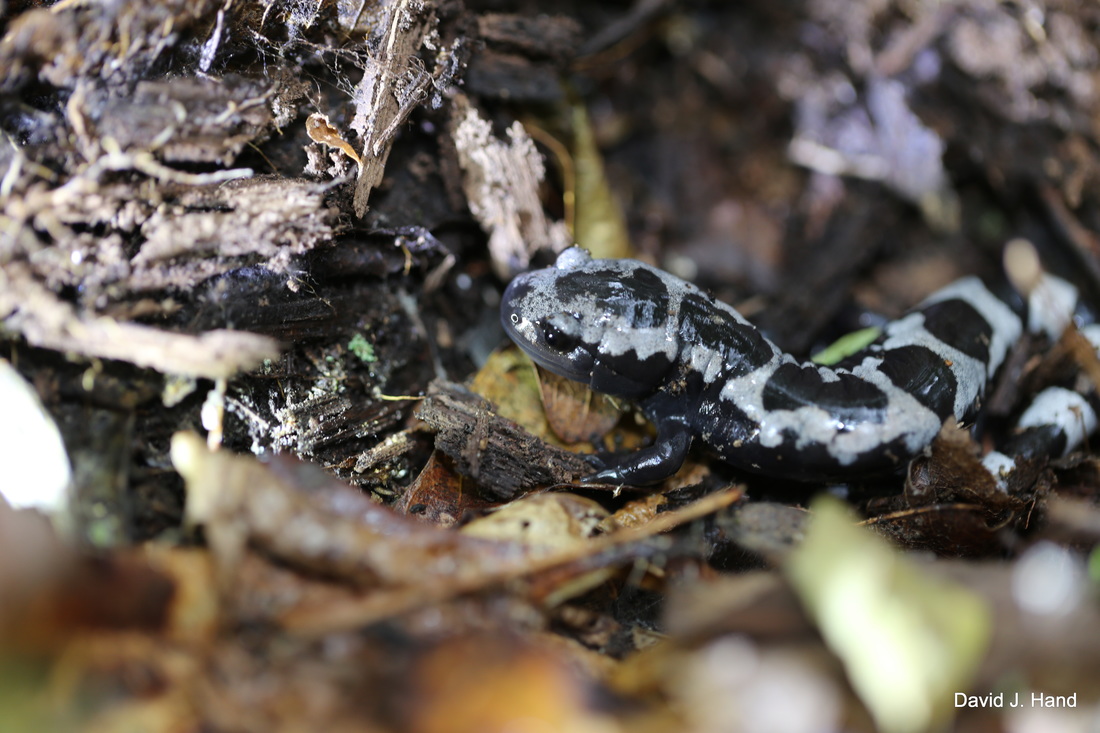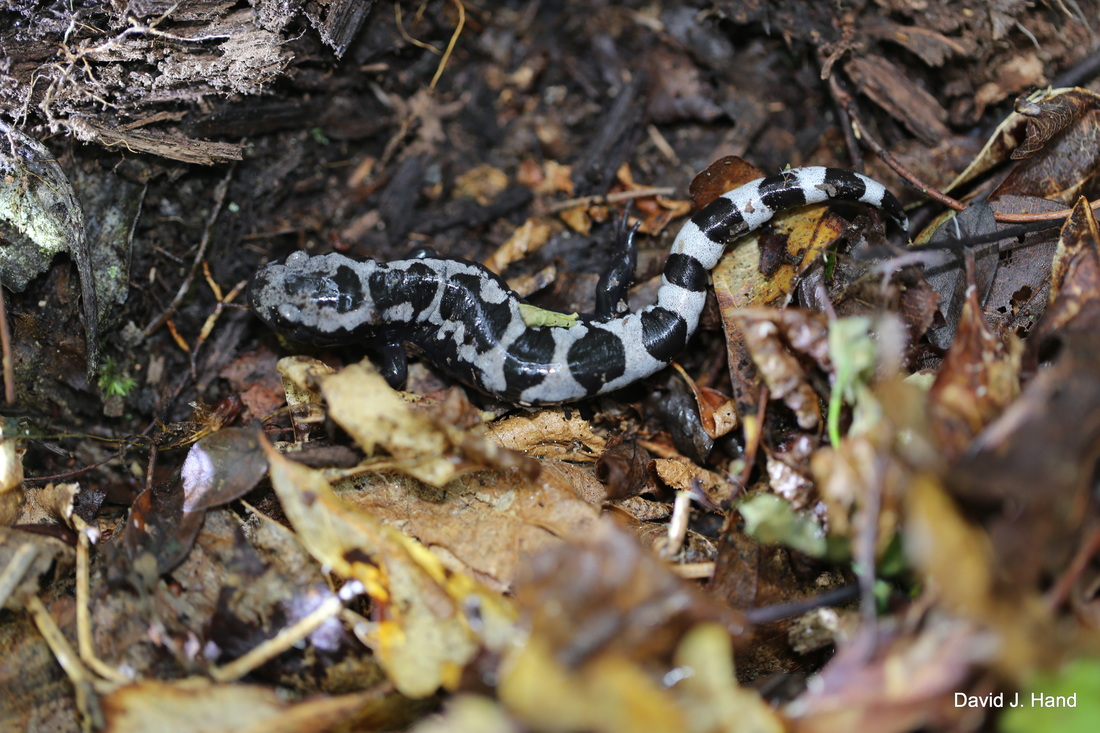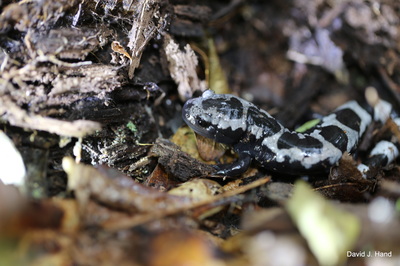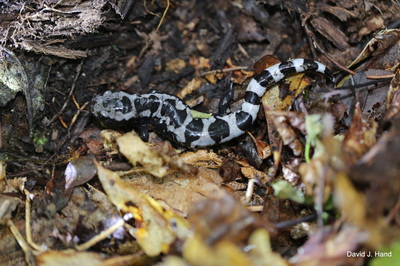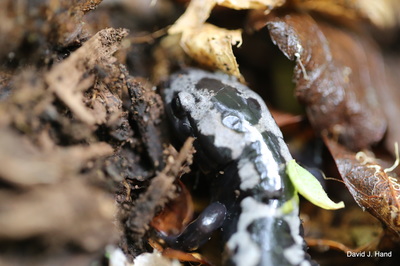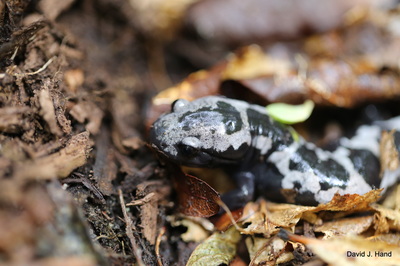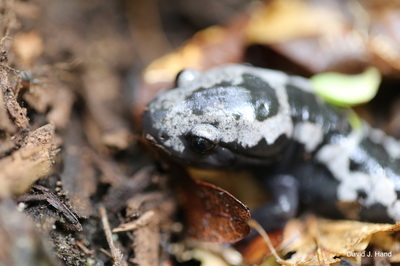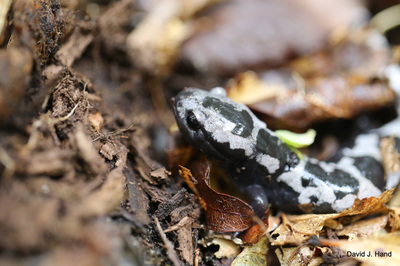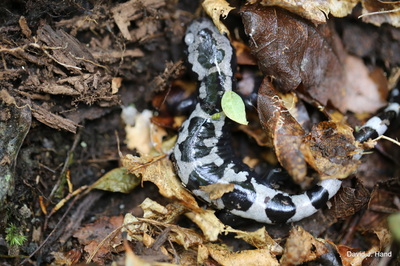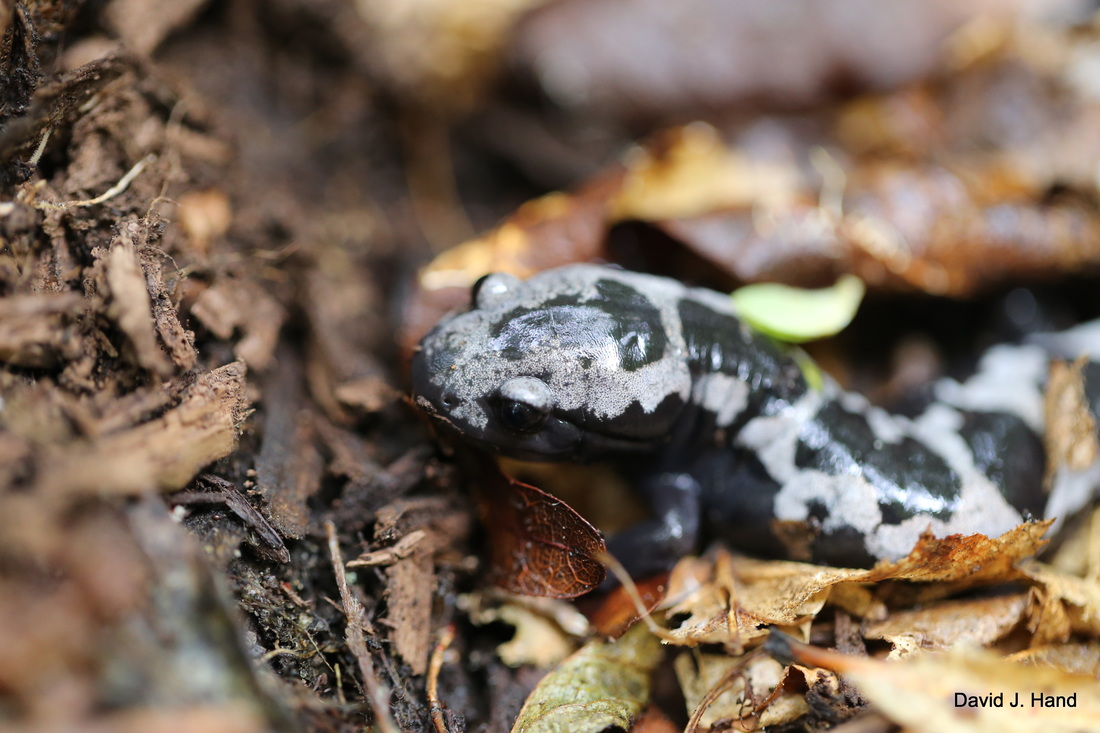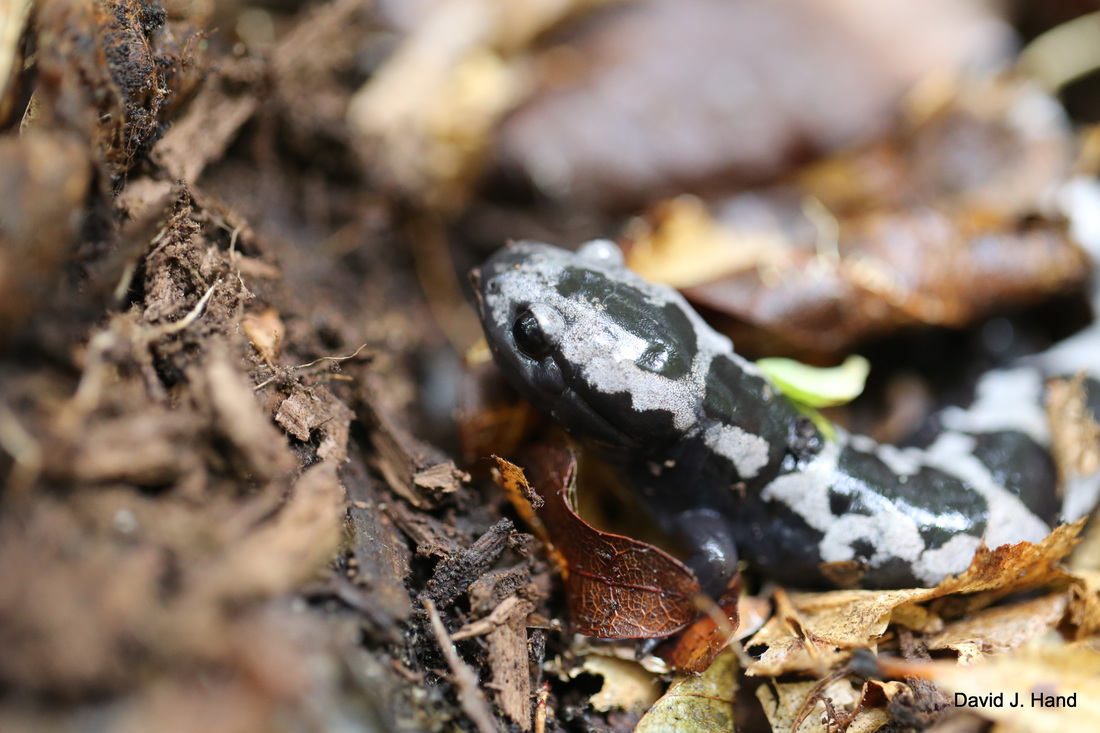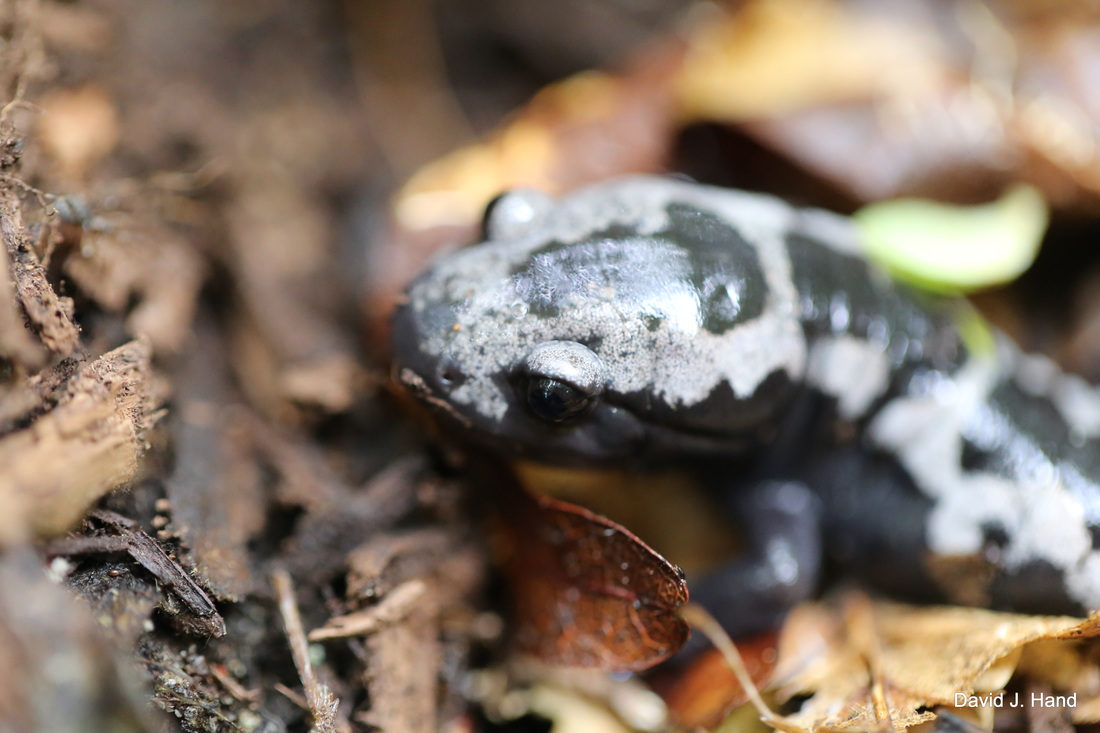|
For anyone who might be interested I started a group on facebook,"Friends of the Marbled Salamander".A place where people can share their pictures and encounters of this magnificent salamander.Its a conservation site dedicated to understanding and helping of this and other salamanders through the sharing of information.
|
Marbled Salamander [Ambystoma opacum] 1 |
Please remember while out herping in Pennsylvania you need to have a current fishing license and please please remember to follow decontamination procedures as not to spread germs,diseases and unwanted fungus to these important areas!If you not willing do follow these procedures,you should not be out!I personally always wear protective gloves [Nitrile],even if I don't handle salamanders and I do try to never touch them.I also spray myself [boots,waders,gloves,net,photographic tank...] with a chlorhexidine solution.
[Chlorhexidine, is a disinfectant and antiseptic that is used for skin disinfection]
[Chlorhexidine, is a disinfectant and antiseptic that is used for skin disinfection]
Fifteen pictures showing the 37 week reproductive cycle of the Marbled salamander [Ambystoma opacum] from female with nest and eggs,embryo development,through hatching,larvae growth and finally metamorphosis to a juvenile salamander in one particular vernal pool in Dauphin County,Pa.9-24-17 through 6-30-18
8 week old Ambystoma opacum larvae found on December 6,2019 in Dauphin County,Pa.Hadn't checked this pool since seeing many females with nest and eggs in September.I was happy to see the vernal pool inundated with water and many hundreds of healthy hatched larvae.Please notice a tail bite on the one larva [very tip of its tail] picture above
Newly hatched Marbled Salamander larva,showing backlit gills and balancer.Dauphin County,Pa.11-5-19 [Ambystoma opacum]
|
Unusual pattern and coloration on this tiny recently hatched larva,on left.Notice lacking a row of spots on it's side.compared to a more normal coloration and spot pattern of larva on right.I hope to be able to find this individual as it grows to see if it retains these unusual characteristics.Ambystoma opacum,Dauphin County,Pa.11-7-19
|
Some at just 3/8 of an inch,some of the tiniest Ambystoma larva that I have ever seen,just hatched within the last few days.Real beauties and a new area for finding Marbled Salamander larvae.Dauphin County,Pa.11-7-19.If you look closely you can see the balancers on their heads.They help them navigate and keep them from sinking until their forelimbs develop.
Last week late in the day I decided to check on a vernal pool that I had looked at in the spring and could find no evidence of Marbled salamander larvae.Walking around the edges I could not believe what I was seeing,tiny larvae which at first I took for some kind of tadpole,they were so small.When I caught one and got it in my photographic tank and realized they were some of the smallest Marbled larvae that I have ever seen.Barely 1/2 inches in length [some only 3/8 "].They must have just hatched-within a couple of days.A brand new area for Marbled Salamanders in Dauphin County,Pa.I was so very excited [haven't found a new location for quite some time,many years in fact].I only saw perhaps 2 dozen,but they were there!Due to the lateness of the day I was afraid my pictures would not be very good so I really was in a hurry which I don't like to be,I really like to take my time to document such a new find,but it was all good!Ambystoma opacum.11-7-19.If you look closely you can still see the balancers on their heads.
Several week old larva taken in Pa.11-3-19.At 3/4 " it looks well fed.You can see its heart [the red area in throat] and intestines.Ambystoma opacum
|
Close up pictures of a newly hatched A.opacum larva still having its balancers on its head.Pa.11-3-19.Balancers are rod like projections on the side of the head that aid the newly hatched larvae in swimming and locomotion until the forelimbs become strong enough.They also help in keeping the larvae from sinking into the substrate.They are eventually absorbed back into the larvae.
|
A recently hatched larva.I like the way the late day sun cast a long shadow of its gills.Pa.11-3-19
Ambystoma opacum nest and eggs,larvae ready and waiting to hatch,just waiting to be covered by water.Pa.10-25-19
Ambystoma opacum nest and eggs,larvae ready and waiting to hatch,just waiting to be covered by water.Pa.10-25-19
Ambystoma opacum nest and eggs,larvae ready and waiting to hatch,just waiting to be covered by water.Pa.10-25-19
Two different male Marbled Salamanders.Pa.9-19-19 [A.opacum] above and below.Notice the insect,picture above,on the salamanders back,aphid I believe.Found in the same dry vernal pool,not far from each other.
Male Marbled Salamander.Pa.9-19-19 [Ambystoma opacum]
A gorgeous male Marbled Salamander.Pa.9-19-19 [Ambystoma opacum]
A gorgeous male Marbled Salamander.Pa.9-19-19 [Ambystoma opacum]
A gorgeous male Marbled Salamander.Pa.9-19-19 [Ambystoma opacum]
A gorgeous male Marbled Salamander.Pa.9-19-19 [Ambystoma opacum]
Female Marbled Salamander with her eggs and growing embryos.Pa.9-19-19 [Ambystoma opacum]
In just three outings in four different locations I was able to locate 22 Marbled salamanders in dry vernal pools.19 were females,3 were males.Also 20 nests with eggs.Notice these eggs the embryos in this nest are almost developed to the hatching stage,you can clearly see the eyes of the larvae in some of the eggs.Also notice the different soil type this nest was found,a limestone chalky soil.When wet it was like a paste.It is completely different than the earlier nest that were found in a different location which was a more sandy acidic soil.I think it interesting to find this salamander in completely different soils but the same general habitat.Pa.9-19-19
Female A.opacum.Pa.9-17-19
Female Ambystoma opacum with an unusual spotted pattern.Pa.9-17-19
Five females under small log with nest and eggs.Pa.9-17-19
Female Ambystoma opacum with nest and eggs.Pa.9-17-19
A beautiful female Marbled Salamander with nest and eggs.Pa.9-17-19 [Ambystoma opacum]
In just two days in the field at two different location,I have found nineteen nest and eighteen different Marbled Salamanders females.Under this small log there were 5 alone with hundreds of eggs.Again there were many logs at this location that I didn't dare move for fear of harming adults,nest and eggs.I wonder if the last two years of flooded vernal pools and poor nesting opportunities has caused a nesting bonanza?Pa.9-19-19.It takes around 15 days for embryos to develop to the hatching stage-so by end of next week they should be ready to hatch,they [the eggs] will just need to be inundated with water.[Ambystoma opacum]
Nesting female Ambystoma opacum with eggs.Pa 9-16-19
I've include these pictures to show the habitat-the sometimes small logs and sticks that female Marbled Salamanders look for to build their nest under in a dry vernal pool.In the first picture under each of these two small logs was found female and nest.Can you see her in picture number 2?Also please notice the small log that had three nest underneath.And the last picture was nothing more that a stick had two nest.[A.opacum],Pa.9-16-19
I was fortunate to fine 9 Marbled Salamander nest altogether in one dry vernal pool.8 were attended by females.There were many more logs that I did not dare disturbed for fear of doing harm to the nest,so there was no telling how many nest there were altogether in this one place.It was wonderful after several years of seeing vernal pools full of water in the fall to see nest like this again!Pa.9-16-19 [Ambystoma opacum].Also in this set of pictures are the small logs and sticks that they were found under to show just what kind of habitat the females are looking for to build their nest under.
Female Marbled Salamander with nest and eggs.Pa.9-16-19 [Ambystoma opacum]
Female Marbled Salamander with nest and eggs.Pa.9-16-19 [Ambystoma opacum]
More of the 8 females with nest and eggs,found in a dry vernal pool.[Ambystoma opacum].Pa.9-16-19
Three females with nest under one small log.I was fortunate to fine 9 nest altogether in one dry vernal pool.8 were attended by females.There were many more logs that I did not dare disturbed for fear of doing harm to the nest,so there was no telling how many nest there were altogether in this one place.It was wonderful after several years of seeing vernal pools full of water in the fall to see nest like this again!Pa.9-16-19 [Ambystoma opacum]
A tiny [just two inches] juvenile Marbled Salamanders with adult markings and coloration.Eight months old.Georgia [Ambystoma opacum]-Different than the one pictured below.please notice the different colorations on the two salamanders
A tiny [just two inches] juvenile Marbled Salamanders with adult markings and coloration.Eight months old.Georgia [Ambystoma opacum]
A tiny [just two inches] juvenile Marbled Salamanders with adult markings and coloration.Eight months old.Georgia [Ambystoma opacum]-different than the one pictured below.Please notice the different colorations on the two salamanders
A tiny [just two inches] juvenile Marbled Salamanders with adult markings and coloration.Eight months old.Georgia [Ambystoma opacum]
Two tiny [just two inches] juvenile Marbled Salamanders with their adult markings and coloration.Eight months old.Georgia [Ambystoma opacum].Please notice the different colorations on the two salamanders
Last week I had the opportunity to put on a Marbled Salamander presentation for The Amphibian Foundation at their 'critter camp" in the Poconos.They had brought along, for educational purposes,two juvenile Marbled Salamanders.They were only eight months old and already had adult markings.I had never had the opportunity to see such tiny Marbled already with their markings before, only about 2 inches in length,they were so beautiful!Here in Pa.most years at 8 month old Marbled are still in their vernal pools metamorphosing,partly the reason for the difference in growth,these individuals were from Georgia,were the larvae are not overwintering under the ice and cold-when growth rate is very slow. Thank you to The Amphibian Foundation for inviting me and this wonderful opportunity!
Vernal pool family picture.38 week old Marbled Salamander larva [bottom],6 week old Spotted Salamander larva [middle],Wood Frog tadpole [top].Dauphin County,Pa.7-5-19
"Pals for life" 38 week old Ambystoma opacum [Marbled Salamander] larva,metamorphosis almost complete,soon to leave the vernal pool and it's watery home for the last 9 1/2 months as a juvenile Marbled salamander never to return to the water again. Pictured with 8 week old Spotted Salamander larva [A.maculatum].Dauphin County,Pa.7-5-19
38 week old A.opacum larva.Metamorphosis almost complete,soon to leave the vernal pool as a juvenile Marbled salamander pictured with 6 week old Spotted Salamander larva [A.maculatum].Dauphin County,Pa.7-5-19
38 week old A.opacum larva.Metamorphosis almost complete,soon to leave the vernal pool as a juvenile Marbled salamander.Dauphin County,Pa.7-5-19
38 week old A.opacum larva.Metamorphosis almost complete,soon to leave the vernal pool as a juvenile Marbled salamander.Dauphin County,Pa.7-5-19
38 week old A.opacum larva.Metamorphosis almost complete,soon to leave the vernal pool as a juvenile Marbled salamander.Dauphin County,Pa.7-5-19
In a year with very few Ambystoma opacum larvae to observe their growth,what a privilege to be able to find this 38 week old larva in a vernal pool full of Wood Frog tadpoles and Spotted salamander larvae.He is the last of his kind for the year,ready to leave the pool for a life on land-never to return to the water again.Metamorphosis is almost complete,notice the gular fold in the throat region ["an external flap or fold of tissue that extends across the lower throat region of salamanders" Salamanders Of The United States And Canada by James W.Petranka].Also please notice the once magnificent gills are almost completely absorbed back into the body of the larva.Hatched last October at a mere 1/2 inch now a full 2 1/2 inches, I sure wish him the best.Dauphin County,Pa.7-5-19
In a year with very few Ambystoma opacum larvae to observe their growth,what a privilege to be able to find this 38 week old larva in a vernal pool full of Wood Frog tadpoles and Spotted salamander larvae.He is the last of his kind for the year,ready to leave the pool for a life on land-never to return to the water again.Metamorphosis is almost complete,notice the gular fold in the throat region ["an external flap or fold of tissue that extends across the lower throat region of salamanders" Salamanders Of The United States And Canada by James W.Petranka].Also please notice the once magnificent gills are almost completely absorbed back into the body of the larva.Hatched last October at a mere 1/2 inch now a full 2 1/2 inches, I sure wish him the best.Dauphin County,Pa.7-5-19
36 week old Marbled Salamander larva [A.opacum] with a 6 week old Spotted Salamander larva [A.maculatum].Dauphin County,Pa.6-21-19.
36 week old Marbled Salamander larva [A.opacum] with a 6 week old Spotted Salamander larva [A.maculatum].Both Ambystoma salamanders,its hard to believe that one day the Spotted larva will be the same size as the Marbled larva,and it won't take nearly as long as the Marbled does to reach this size-Marbled lay eggs in the fall whereas Spotted lay eggs is the spring,this gives the Marbled a big head start,but grow rate through the winter can be very slow.Dauphin County,Pa.6-21-19.
A comparison in growth between Ambystoma opacum larvae.Picture on left taken shortly after hatching around 1/2 inches taken last October [2018],notice it still has its balancers.Picture on right shows 36 week old larva soon ready to metamorphose to land at 2 + inches on June,21, 2019.It is so amazing to watch the growth from larvae and the transformation to adult Marbled salamanders.And to think it survived all through last winter!
A 36 week old A.opacum larva.Dauphin County,Pa.6-21-19
A close up of a Ambystoma opacum larvaes magnificent gills.Dauphin County,Pa.6-21-19
At a full 2 inches this Marbled Salamander [Ambystoma opacum] larva hatch last October is around 36 weeks old.Dauphin County,Pa.6-21-19
At a full 2 inches this Marbled Salamander [Ambystoma opacum] larva hatch last October is around 36 weeks old.Dauphin County,Pa.6-21-19
At a full 2 inches this Marbled Salamander [Ambystoma opacum] larva hatch last October is around 36 weeks old.it is really spectacular,a real giant of a predator in a vernal pool,were other tiny creatures are trying to complete their life cycle before the pools dry up.In a drier year when the vernal pools are drying up at this time,this larva and others of his kind would have gone through metamorphosis to land by now.Full vernal pools really slows down larvaes metamorphosis whereas drying pools speeds it up.Dauphin County,Pa.6-21-19
At a full 2 inches this Marbled Salamander [Ambystoma opacum] larva hatch last October is around 36 weeks old.it is really spectacular,a real giant of a predator in a vernal pool,were other tiny creatures are trying to complete their life cycle before the pools dry up.In a drier year when the vernal pools are drying up at this time,this larva and others of his kind would have gone through metamorphosis to land by now.Full vernal pools really slows down larvaes metamorphosis whereas drying pools speeds it up.Dauphin County,Pa.6-21-19
In with a sea of Wood Frog tadpoles [Lithobates sylvaticus] a lone Marbled Salamander larva [Ambystoma opacum].It only took me 10 minutes to find it and I'm the one who took the picture!Dauphin County,Pa.6-21-19 [it's on the bottom in the leaf litter]
I often get asked about telling the different Ambystoma larvae apart.I am not always correct,but over the years of observing many thousands of larvae you start to see see the differences between larvae.Sometimes the differences are small and the smaller the larvae,the smaller the differences and sometimes the smaller the larvae the bigger the differences [so they can be easier to tell apart] .These are the three Ambystoma larvae in my area that I am familiar with and they are all approximately the same age [8 weeks].Picture1 is a Jefferson [jeffersonianum],picture 2 a Spotted [maclutalum],pictures 3 & 4 are a Marbled [opacum].Jefferson larvae the are always broader in both width and height,they are kind of pudgy looking when young but as they get older [11 weeks] they will get narrower as the are starting to through metamorphosis.Their dorsal fin is wider and they have an overall greenish hue.All three have a row of spots on their sides but of the three Jefferson can be the hardest to see.Jefferson toes are always longer than either Spotted or Marbled,more noticeable as they get older. Spotted larvae are narrower at this age [8 weeks] the are usually a lighter color,their spots are more vivid than the jefferson but not near pronounced as the marbled.The Spotteds gills can be more massive and larger than both the Jeffersons and marbled,but you can't always go by the gills.Their dorsal fin is smaller than the jefferson at this age [not as wide].The Marbled is almost always a darker color,and this makes their spots really stand out.I include the last picture to show the grey pigmented chin of the Marbled,none of other larvae have this and is a sure way to tell Marbled.Spotted and Jefferson do not have this,their chins are clean [white].Marbled also have a second row of spots on their sides,as do both Jeffersons and Spotted but again do to their darker coloration the second row is more pronounced in the marbled.In the Spotted and Jefferson this second row can be almost impossible to see.
32 week old Marbled Salamander [Ambystoma opacum] larva [hatched last October] with 6 week old Spotted Salamander larva [Ambystoma maculatum] and Wood Frog tadpole [Lithobates sylvaticus].Dauphin County,Pa.6-6-19
This has been a very poor year for me finding and documenting A.opacum larvae.I have found and know of very few in the areas I usually see hundreds if not thousands.This is due in part to the high water at the vernal pools last fall during mating and ovipositing [laying eggs].Last week in a sea of thousands of Wood Frog tadpoles and Spotted salamander larvae I was able to locate this giant Marbled larva.I was so happy and excited to find this lone survivor after many hours of searching.Hatched last October,you can see by its tail that metamorphosis is starting to take place [losing its aquatic tail and taking on the shape it will have for the rest of its life].Also pictured [no.4] with Wood frog tadpole [Lithobates sylvaticus] and a Spotted Salamander larva [Ambystoma maculatum].It sure looks well fed [on spotted larvae and tadpoles no doubt!].When I left it go,I sure wished it all the best!I have been told by others that they have seen other areas that have many Ambystoma opacum,which is great news!Dauphin County,Pa.6-6-19
This has been a very poor year for me finding and documenting A.opacum larvae.I have found and know of very few in the areas I usually see hundreds if not thousands.This is due in part to the high water at the vernal pools last fall during mating and ovipositing [laying eggs].Last week in a sea of thousands of Wood Frog tadpoles and Spotted salamander larvae I was able to locate this giant Marbled larva.I was so happy and excited to find this lone survivor after many hours of searching.Hatched last October,you can see by its tail that metamorphosis is starting to take place [losing its aquatic tail and taking on the shape it will have for the rest of its life].Also pictured with Wood frog tadpole [Lithobates sylvaticus] and a Spotted Salamander larva [ambystoma maculatum].It sure looks well fed [on spotted larvae and tadpoles no doubt!].When I left it go,I sure wished it all the best!I have been told by others that they have seen other areas that have many Ambystoma opacum,which is great news!Dauphin County,Pa.6-6-19
Two beautiful A.opacum larvae.Rescued from a fast drying stream.Dauphin County,Pa.4-3-19
A.opacum larva.Perry County,Pa,3-11-19
Marbled Salamander larvae [Ambystoma opacum].Perry County,Pa.3-11-19
Marbled Salamander larvae [Ambystoma opacum].Perry County,Pa.3-11-19
In this vernal pool in Perry County last year there were many Jefferson larvae and Spotted larvae.But could find only one Marbled larvae and it was a giant compared to the others [because of hatching the previous fall].This year after being locked in ice for many months was very excited to see a great many A.opacum larvae after ice out last week.You can even see the tiny hind limbs starting to protrude on the side.Perry County,Pa.2-28-19
15 week old A.opacum larvae [hatched mid October].Notice the hinds limb development,they look like little paddles with toes developing on them.Dauphin County,Pa.2-7-19. They are at around 30 mm.They hatch at 10-20 mm and metamorphosis at around 50mm
15 week old A.opacum larvae [hatched mid October].Notice the hinds limb development,they look like little paddles with toes developing on them.Dauphin County,Pa.2-7-19. They are at around 30 mm.They hatch at 10-20 mm and metamorphosis at around 50mm
6 week old A.opacum larvae.Dauphin County,Pa.11-21-18.Found in a vernal pool overflow stream
Another video showing a hatching A.opacum larva,you can clearly see the what's left of the dissolving egg around the larva.Notice the tiny unknown white aquatic insect [water flea?] with the larva.I wonder if it is feeding on the dissolving egg,or is some sort of parasite.I do not know.Dauphin County,Pa.11-21-18
This picture shows two Ambystoma opacum larvae that have just broken free of their dissolved eggs and have hatched.Dauphin County,Pa.11-21-18
Remembering that A.opacum eggs will not hatch until inundated by water,which triggers a release of enzymes that dissolve the egg which leads to hatching.You can see in this picture what is left of the dissolved egg at and around the tail of the larva on the right [upside down].Again the white patch in between the two larvae is an embryo that did not develop.Dauphin County,Pa.11-21-18.I feel very fortunate to have been able to witness larvae in the process hatching,it was one of my best days afield ever!
Remembering that A.opacum eggs will not hatch until inundated by water,which triggers a release of enzymes that dissolve the egg which leads to hatching.You can see in picture one what is left of the dissolved egg at and around the tail of the larva on the right [upside down].Also you can see some of the dissolved egg in picture number two again around the larva on the right.Picture number three shows the larva on the right free of the egg.Again the white patch in between the two larvae is an embryo that did not develop.Dauphin County,Pa.11-21-18.I feel very fortunate to have been able to witness larvae in the process hatching,it was one of my best days afield ever!
This picture [top] and video [bottom] show the same two larvae that have just hatched after being inundated by water in sphagnum moss.The A.opacum larva on the left had just hatched,the larva on the right in the picture and video shows as it struggles to and finally breaks free from what is left of the egg membrane.The white area in between the two is an embryo that didn't develop.Please notice the tiny aquatic insect [water flea?] in the video.Dauphin County,Pa.11-21-18
A newly hatched Marbled salamander larvae.Please notice the tiny ribs.Dauphin County,Pa.10-31-18
This A.opacum embryo appears ready to hatch,compared to others in the nest.You can see an eye,gills,tail and a balancer.Dauphin County,Pa.10-31-18
Nothing says fall to me like Marbled Salamander larvae!Dauphin County,Pa.10-30-18
Newly hatched A.opacum larva.You can see what's left of the balancers on the sides of the head,they are being absorbed back into the larva.Dauphin County,Pa.10-24-18
Developing A.opacum embryos.Top picture you can see the eye,tail and a balancer on the side of the head.Bottom picture an eye,tail and above the eye you can see a tiny forelimb developing.Dauphin County,Pa.10-24-18
Developing A.opacum embryo.Dauphin County,Pa.10-18-18
I think this is one of the best picture I've gotten so far of an A.opacum embryo inside an egg.I am fortunate in that most years the eggs are all full of dirt and mud by now and seeing embryo development is very hard to say the least.But these eggs and nest being in sphagnum moss are very clean and clear.Dauphin County,Pa.10-18-18
A.opacum nest eggs and embryo development.Dauphin County,Pa.10-18-18
Developing A.opacum embryos.Dauphin County,Pa.10-18-18
Not only do these pictures [Top and Bottom] show the developing gills,forelimbs,and eyes of A.opacum embryos.But I believe they also show balancers on the heads of the developing larvae.I have seen balancers on Jefferson embryos and larvae as well as Spotted,but this is the first time that I have seen it on A.opacum."Balancers are rod like projections that help the larvae maintain balance during its first attempts at locomotion and also keep the larvae from sinking into muddy substrate.In some species they are resorbed before the larvae hatch"From the wonderful book Biology Of Amphibians by William E. Duellman and Linda Trueb.I hope this year to see if balancers are on newly hatched larvae,I have not seen them in the past.Dauphin County,Pa.10-18-18
I have been seeing movement in a small brook associated with a vernal pool for a couple of weeks now, and not thinking it could be a larva already,and I was not really paying too much attention to it.Last week I was able to catch what I could clearly see now was a larva.I could not believe it!To my surprise A.opacum larvae already!And from its size I believe it to be a several weeks old already.It is the only one I found,but there must be more from a very early nest.Last year I was seeing larvae the first week of November,this year the the 18th of October.This pool still had larvae that hadn't metamorphosed yet only two months ago that had hatched last November [2017].All of this is due to the unusually high water and very wet conditions during Marbled salamander breeding season.Dauphin County,Pa.10-18-22
A.opacum egg and developing embryo.Dauphin County,Pa.11-12-18.If you look close you can see the eyes developing on both sides of the head.
This A.opacum nest in sphagnum moss was very close to being inundated with water with all the recent rains,and would have perished as many others have.The embryos are doing well and are very active.It is the only nest that I know of to have survived.I hope there are others.A very hard year for Marbled Salamanders and their nest.Dauphin County,Pa.10-12-18
A.opacum eggs and developing embryos.Dauphin County,Pa.10-12-18
Of the four A.opacun nest that I knew of the only one to survive the recent rains, and was not be inundated with water and perish, was a nest in sphagnum moss.The water is very close to and under the eggs,but the embryos are doing fine.Dauphin County,Pa.10-12-18
A.opacum nest, eggs and developing embryos in sphagnum moss.Dauphin County,Pa.10-4-18
Developing A.opacum embryos.Dauphin county,Pa.10-4-18
Developing A.opacum embryo.You can clearly see the eyes ,gills and tail.Dauphin County,Pa.10-4-18
A.opacum nest, eggs and developing embryos in sphagnum moss.Dauphin County,Pa.10-4-18
A.opacum nest, eggs and developing embryos.Dauphin County,Pa.10-4-18
I recently found three A.opacum nest and eggs by a overflowing vernal pool.All three were unattended by a female and two groups of eggs were totally exposed.One was a beautiful nest under sphagnum moss.All three were inches from the water and all the embryos were healthy and active.Notice the nest in the sphagnum is almost completely surrounded by water,like an island.Dauphin County,Pa.10-4-18
Marbled Salamander.Dauphin County,Pa.9-16-18
A.opacum eggs and developing embryos.Dauphin County,Pa.9-20-18
A.opacum eggs and developing embryos.Dauphin County,Pa.9-20-18
Recently laid [oviposition] ,but unattend Ambystoma opacum eggs.Due to the exposed nature of the eggs [no real nest] and no female I originally thought these eggs were not fertile.I was wrong.The embryos are alive very active.The earliest eggs that I have ever found,and because of them being recently laid,the clearest I have ever seen.Dauphin County,Pa.9-20-18.Embryos develop to the hatching stage after 9 to 15 days but will not hatch until flooded by water.
A.opacum.Dauphin County,Pa.9-16-18
A.opacum.Dauphin County,Pa.9-16-18
A beautiful Ambystoma opacum found under a log.Dauphin County,Pa.9-16-18
My first adult Marbled Salamander of mating season.Dauphin County,Pa.9-16-18.What a beauty,with a large Northern Slimy under the same log [not in the video].I have found A.opacum before with Slimy salamanders,also Jeffersons with Slimies.I wonder if there is some connection or just a good spot!.
The last Ambystoma opacum larva of the year.Hatched November 2017.It was a great year,I was privileged to watch many hundreds of larvae grow from egg to embryo to larvae and finally metamorphosed to juvenile Marbled Salamander.I will never tire of watching this miracle of nature and the life cycle of this beautiful salamander.Dauphin County,Pa.8-19-18.I sure wish them all the best to their new life on land.
A.maculatum larva [top] with A.opacum.Dauphin County,Pa.8-18-18
Comparison pictures of two Ambystoma species of larvae.A.opacum [top] and A.maculatum [bottom] first two pictures,A.opacum bottom last picture.Dauphin County,Pa.8-18-18.Please notice the pigmented chin on A.opacum.A.opacum is the only Ambystoma species to have this distinguishing characteristic.Where as A.maculatum does not have a pigmented chin and is much lighter from the chin through the underside.
Amazingly I found a A.opacum larva when I went looking for early arriving adult Marbled salamanders for breeding season [found adults at the same time last year at this vernal pool].A.opacum on left with A.maculatum [Spotted] on right.A.opacum hatched last November [2017].A.maculatum early May.This pool had many hundreds of A.opacum larvae in a variety sizes,from really large to very small this past spring.This must be one of the tiny ones I observed in the spring,now getting its chance to grow.But still I think this is very unusual.Last year all were metamorphosed by mid to late June.Dauphin County,Pa.8-18-18
These pictures show the development of a beautiful luecistic A.opacun larva first seen on December 22,2017.And finally ending with metamorphosis on July 12,2018 .Also included are pictures of larvae with normal coloration for comparison.Pa.Leucism (/ˈluːsɪzəm, -kɪz-/)[1][2][3] is a condition in which there is partial loss of pigmentation in an animal resulting in white, pale, or patchy coloration of the skin, hair, feathers, scales or cuticle, but not the eyes.[3] It's occasionally spelled leukism. Unlike albinism, it is caused by a reduction in multiple types of pigment, not just melanin.
This was the last time I saw the luecistic A.opacum larva.Metamorphosis to land complete.Notice the gills have been completely absorbed back into the body,in nature nothing is ever wasted.It was a real privilege watching it grow since I first saw it last December.This was a truly unique and beautiful creature.I wish all the best to its new life on land!Pa.7-12-18
This was the last time I saw the luecistic A.opacum larva.Metamorphosis to land complete.Notice the gills have been completely absorbed back into the body,in nature nothing is ever wasted.It was a real privilege watching it grow since I first saw it last December.This was a truly unique and beautiful creature.I wish all the best to its new life on land!Pa.7-12-18
Metamorphosis is starting to take place in the luecistic A.opacum larva.Pa.7-9-18.The gills are starting to be absorbed back into the body.And it is starting to lose it's aquatic tail,and take on the shape it will have on land and for the rest of its life.
Luecistic A.opacum larva compared to a larva with normal coloration.7-9-18,Pa.
The last video I was able to get of the luecistic A.opacum larva before it metamorphosed to a life on land.Pa.7-9-18
Luecistic A.opacum larva [top] compared to a larva with normal coloration [bottom].Pa.7-2-18
Luecistic Marbled Salamander larva [Ambystoma opacum] with normal larva.Pa.7-2-18
Luecistic Marbled Salamander larva [Ambystoma opacum].Pa.7-2-18
Luecistic Marbled Salamander larva [Ambystoma opacum].Pa.7-2-18
Some pictures from 7-2-18 of the beautiful luecistic A.opacum larva.Pa.Please notice the beautiful golden spots [like gold dust] on its gills and tail
Some pictures from 7-2-18 of the beautiful luecistic A.opacum larva.Pa.Please notice the beautiful golden spots [like gold dust] on its gills and tail.
Some of the last video I got of the beautiful luecistic A.opacum larva before it metamorphosed.Pa.7-2-18
Video of 30 week old luecistic A.opacum larva with 8 week old A.maculatum [Spotted] larva.Pa.6-21-18
A beautiful luecistic A.opacum larva taken on 6-21-18.30 weeks old,hatched November 2017.Pa.
After not seeing this possible luecistic A.opacum larva for two months,it was really exciting to find it again.This was taken on 6-21-18,Pa.Leucism (/ˈluːsɪzəm, -kɪz-/)[1][2][3] is a condition in which there is partial loss of pigmentation in an animal resulting in white, pale, or patchy coloration of the skin, hair, feathers, scales or cuticle, but not the eyes.[3] It's occasionally spelled leukism. Unlike albinism, it is caused by a reduction in multiple types of pigment, not just melanin.
Nice comparison pictures of larvae.A.opacum larva [Marbled Salamander,top [picture above], and left two pictures below] and A.maculatum [Spotted Salamander,bottom [picture above] and right two pictures below].Dauphin County,Pa.8-1-18.Notice how the A.opacum is more heavily spotted along sides and has a row of spots on the tail whereas A. maculatum does not have these spots.Also notice that maculatum has more massive gills,this is noticeable even when young [newly hatched].
Still finding A.opacum larvae in this particular vernal pool,hatched last November [2017].With all the recent flooding some have washed into a small overflow stream [was a torrent last week].Dauphin County,Pa.8-1-17.For some unknown reason these larvae should have metamorphosed in June,many have but a few still remain.
A metamorphosed A.opacum.Dauphin County,Pa.7-8-18.Hatched November 2017
A metamorphosed A.opacum.Dauphin County,Pa.7-8-18.Hatched November 2017
Still finding a few [actually more than a few] A.opacun larvae,notice the gills are all but gone on some.Dauphin County,Pa.7-8-18.Last year at this time all had long since metamorphosed,and these hatched earlier [November 2017].I can only conclude there wasn't enough food?The pool has been full of water this year and somehow the lack of food doesn't make too much sense either.I guess we still have a lot to learn about the mysteries of nature.But they all do seem really healthy
A beautiful recently metamorphosed Marbled Salamander [juvenile], [A.opacum].After watching these [larvae] since last November [2017],in this particular vernal pool.The larvae are completing metamorphosis to juvenile salamanders and leaving the water for a life on land never to return to water again.Dauphin County,Pa.6-30-18.
A beautiful recently metamorphosed Marbled Salamander [juvenile], [A.opacum].After watching these [larvae] since last November [2017],in this particular vernal pool.The larvae are completing metamorphosis to juvenile salamanders and leaving the water for a life on land never to return to water again.Dauphin County,Pa.6-30-18.
A recently metamorphosed Marbled Salamander [juvenile], [A.opacum].After watching these [larvae] since last November [2017],in this particular vernal pool.The larvae are completing metamorphosis to juvenile salamanders and leaving the water for a life on land never to return to water again.Dauphin County,Pa.6-30-18.It has been a humbling and amazing experience watching them go from egg to larva and growing to metamorphosis to complete their life cycle.I never tire of watching this beautiful transformation,and always feel a great sense of being humbled by the power and wonder of nature.
A beautiful recently metamorphosed Marbled Salamander [juvenile], [A.opacum].After watching these [larvae] since last November [2017],in this particular vernal pool.The larvae are completing metamorphosis to juvenile salamanders and leaving the water for a life on land never to return to water again.Dauphin County,Pa.6-30-18.
A recently metamorphosed Marbled Salamander [juvenile], [A.opacum].After watching these [larvae] since last November [2017],in this particular vernal pool.The larvae are completing metamorphosis to juvenile salamanders and leaving the water for a life on land never to return to water again.Dauphin County,Pa.6-30-18.It has been a humbling and amazing experience watching them go from egg to larva and growing to metamorphosis to complete their life cycle.I never tire of watching this beautiful transformation,and always feel a great sense of being humbled by the power and wonder of nature.
My first metamorphosed [juvenile] Marbled Salamander [Ambystoma opacum] of the year.This was one of many that hatched last November in this particular vernal pool [2017].About 28 weeks old .Good luck to you,it's a dangerous world out there.I think he really likes his land legs!Dauphin County,Pa.6-29-18
A real nice bunch of A.opacum larvae soon to metamorphose to juvenile Marbled Salamanders.Dauphin County,Pa.6-21-18-These hatched last November [2017].Why these in this particular vernal pool are still there when others have metamorphosed weeks ago,I do not know.But they really look good!
A.opacum larvae that have recently had their tails bitten [chewed] off.I do not believe this was from other larvae,but an unknown predator.Looks like it was pretty violent,severing bone,and muscle tissue.The injury really affects their swimming and they are easy to spot.These larvae in this pool are soon ready to start metamorphosis.How this injury will affect their transformation to land I do not know.I do know that creatures like these always amaze me as to how resilient they are and they seem healthy enough in spite of their condition.Dauphin County,Pa.6-21-18
A.opacum larvae that have recently had their tails bitten [chewed] off.I do not believe this was from other larvae,but an unknown predator.Looks like it was pretty violent,severing bone,and muscle tissue.The injury really affects their swimming and they are easy to spot.These larvae in this pool are soon ready to start metamorphosis.How this injury will affect their transformation to land I do not know.I do know that creatures like these always amaze me as to how resilient they are and they seem healthy enough in spite of their condition.Dauphin County,Pa.6-21-18
A nice comparison of two Ambystoma species of salamander larvae.Top picture 6 week old Jefferson [A.jeffersonianum],bottom picture 30 week old old Marbled A.opacum.
A 30 week old A.opacum larva that had lost its tail [most likely from another larva],and the tail had started to regenerate.
A 30 week old A.opacum larva with unusual blotching on its cheek.Dauphin County,Pa.6-15-18
30 week old [7+ month old] A.opacum larvae.Dauphin County,Pa.6-15-18
A very light colored 30 week old Ambystoma opacum larva.Dauphin County,Pa.6-15-18
This Marbled Salamander larva was one of many that were swept down into a small overflow stream [brook] to a vernal pool last November [2017] during heavy rains.120 were rescued back into the pool.But this one remained there in a small shallow pool all winter and at times frozen in ice [December through January],and since April feeding on a small mass of Spotted Salamander eggs.The grey area around the larva is all that is left of the egg mass.Metamorphosis will soon take place.It does show that larvae don't always need a vernal pool but can and do survive to complete metamorphosis in a small stream, under the right conditions.Dauphin,County,Pa.6-15-18.
This Marbled Salamander larva was one of many that were swept down into a small overflow stream [brook] to a vernal pool last November [2017] during heavy rains.120 were rescued back into the pool.But this one remained there in a small shallow pool all winter and since April feeding on a small mass of Spotted Salamander eggs.The grey area around the larva is all that is left of the egg mass.Metamorphosis will soon take place.It does show that larvae don't always need a vernal pool but can and do survive to complete metamorphosis in a small stream under the right conditions.Dauphin,County,Pa.6-15-18.The trickle you hear is all the water that is feeding this small brook.
Another vernal pool that still has plenty of Ambystoma opacun larvae.Dauphin County,Pa.6-15-18.Really growing fast!Hatched last November 2017
The last of the Marbled Salamander larvae in this particular vernal pool.These Larvae hatched 11-1-17.Dauphin County,Pa.6-11-18
This was both a happy and a sad day for me,I have been watching these Marbled Salamander larvae [Ambystoma opacum] in this particular vernal pool since they hatched last November.This was the only larva left the and last of his kind that I could find,the others have all completed metamorphosis to land and a life as salamanders never to return to the water again [not this species] and this individual will be very soon be joining the others to a life on land.I wish them all the very best in an uncertain future.It was truly a privilege watching them grow and facing all the predators that feed on them,and watching them become predators themselves.Every time I witness this metamorphosis I am in awe of nature and realize that there is a whole lot more to life than we will ever know or understand.Thank you for looking at this amazing creatures journey with me.There are other pools that still have larvae to watch,but as for this pool you can bet I will be there in August when the adults migrate back to the same pool they once came from to start their amazing life cycle all over again!Dauphin County,Pa.6-11-18
A well fed 7+ month old A.opacum larvae.Dauphin County,Pa.6-5-18
7+ month old A.opacum larvae.Dauphin County,Pa.6-5-18
7+ month old A.opacum larvae.Dauphin County,Pa.6-5-18
Seven month old A.opacum larvae.Pa.6-1-18.I believe in this particular pool they are two weeks from metamorphosis to juveniles and land.
A 7 month old A.opacum larvae that had lost its tail and has started to regenerate.Pa.6-1-18
A beautiful unusually light colored 7 month old Ambystoma opacum larvae.Pa.6-1-18
A comparison picture of growth of A.opacum larvae in the same vernal pool.Picture on top taken 4-14-18 shows larvae at approximately 33 mm,bottom picture taken on 5-29-18 shows larvae at 96 mm.That's approximately 63 mm of growth in just 6 weeks!Dauphin County,Pa
Newly hatched salamander larvae comparison.Marbled Salamander [Ambystoma opacum] top picture.Spotted Salamander [Ambystoma maculatum] bottom picture.Please notice the pigmented chin on the Marbled [Marbled are the only Ambystoma larvae to have this pigmented chin] vs the clean or white chin of the Spotted.Also notice the more prominent row of spots on the side of the Marbled.
Beautiful 7 month old A.opacum larvae.Dauphin County,Pa.5-26-18.
Beautiful 7 month old A.opacum larvae.Dauphin County,Pa.5-26-18.
Beautiful 7 month old A.opacum larvae.Dauphin County,Pa.5-26-18.
Beautiful 7 month old A.opacum larvae.Dauphin County,Pa.5-26-18.
These A.opacum larvae are really getting big!These hatched almost 7 months ago [11-1-17].It's hard to believe it was that long ago!Dauphin County,Pa.5-25-18
I debated whether or not to post this for awhile now and decided that I should.It was not intentional.I put a newly hatched Jefferson larvae in my photographic tank with a 51/2 month old Marbled larvae for a comparison picture of the two Ambystoma species.After getting my camera set up,I could not find the Jefferson larvae.I looked and looked,and then there it was hanging out of the Marbled larvaes mouth!I couldn't believe it,in hindsight I should have known better.A hard lesson learned.The thing I found interesting is,if you look at the Marbled larvaes tail there is a bite mark probably from another Marbled larvae.It is a dangerous world in a vernal pool!Perry County,Pa.4-25-18
A beautiful 6 month old leucistic A.opacum larvae.Pa.
6 month old beautiful leucistic A.opacum larvae.Pa.Leucism /ˈljuːkɪzəm/ is a condition in which there is partial loss of pigmentation in an animal resulting in white, pale, or patchy coloration of the skin, hair, feathers, scales or cuticle, but not the eyes.
6 month old leucistic A.opacum larvae [top] compared to larvae with normal coloration [bottom].Please notice the way the normal colored larvae is "peeking" through the forelimb ["hand"] of the leucistic larvae.Pa.
6 month old beautiful leucistic A.opacum larvae.Pa.Leucism /ˈljuːkɪzəm/ is a condition in which there is partial loss of pigmentation in an animal resulting in white, pale, or patchy coloration of the skin, hair, feathers, scales or cuticle, but not the eyes.
6 month old leucistic A.opacum larvae [top] compared to larvae with normal coloration [bottom].Pa.Leucism /ˈljuːkɪzəm/ is a condition in which there is partial loss of pigmentation in an animal resulting in white, pale, or patchy coloration of the skin, hair, feathers, scales or cuticle, but not the eyes.
An unusually small 51/2 month old A.opacum larvae [it almost looks like the body hasn't caught up to the head in growth].Dauphin County,Pa.4-14-18
A close up picture showing the digestive tract [intestines] and heart of a 6 month old A.opacum larvae.Dauphin County,Pa.4-29-18
This group of 5 1/2 old A.opacum larvae taken in Dauphin County,Pa.on 4-14-18 shows how different the spot patterns can be from larvae to larvae.Notice the larvae in the first and middle [middle larvae] pictures,the spots almost turn into a single line towards the forelimbs.Also please notice the small larvae to the left in the middle picture and the last picture has lost its right forelimb,probably from another larvae.Salamander larvae can and do regenerate limbs.
6 month old A.opacum larvae.Dauphin County,Pa.4-29-18.
The pigmented pattern on this particular A.opacum larvae makes it look like it has an extended smile!Dauphin County,Pa.4-29-18
6 month old A.opacum larvae.Dauphin County,Pa.4-29-18
6 month old Marbled Salamander larvae [Ambystoma opacum] with Spotted Salamander eggs and embryos [Ambystoma maculatum].Dauphin,County,Pa.4-29-18
6 month old Marbled Salamander larvae [Ambystoma opacum] with Spotted Salamander egg and embryo [Ambystoma maculatum].Dauphin,County,Pa.4-29-18
6 month old Marbled larvae feeding on the membrane [matrix] of Spotted salamander eggs [A.maculatum].Dauphin County,Pa.4-29-18
5 1/2 month old Ambystoma opacum larvae compared to a 1 week old Ambystoma jeffersonianum larvae.Perry County,Pa.4-22-18
Exciting find,a new vernal pool in Perry County with Marbled Salamander larvae.4-22-18.Compared to Dauphin County larvae of the same size,they should of hatched last fall around the first of November.Notice the bite mark in it's tail,most likely from another larvae.
A comparison of backlit Marbled Salamander larvae taken from the same pool.Top taken 11-14-17 shows 2 week old larvae.Bottom shows 51\2 month old larvae taken 4-20-18.Dauphin County,Pa
Backlit 5 1\2 month old A. opacum larvae.Dauphin County,Pa.4-20-18.Showing those beautiful gills,internal organs [the red area is the heart] and the hind limbs are starting to appear.
Backlit 5 1\2 month old A. opacum larvae.Dauphin County,Pa.4-20-18.Showing those beautiful gills,internal organs [the red area is the heart] and the hind limbs are starting to appear.
|
I caught several 5+ old Marbled larvae and in the net was a beautiful Green Sedge Caddisfly larvae [Phryganeidae],so I put them in the photographic tank together.The one marbled larvae [on left] already had a damaged tail,the Caddis fly larvae immediately attacked the the larvae at the damaged point cutting the tail in half and proceeded in eating the larvae alive.It was a horrible thing to witness.It all happened so quickly,I got the fly larvae away from the salamander larvae and he seemed okay [even missing part of his tail] and placed him back in the pool,it swam away.It's almost like the fly larvae knew exactly where to strike the larvae [at the damaged point].I think it's safe to say that these larvae attack and pray on Marbled larvae.Dauphin County,Pa.4-20-18
|
A.opacum larvae with Wood frog embryos [Lithobates sylvaticus].Dauphin County,Pa.4-13-18
The beautiful undersides of 5+month old Marbled Salamander larvae.Notice the size difference,the one on the left is the larvae missing it's right forelimb.Dauphin County,Pa.4-14-18
Video of the same larvae below missing it's right limb.Dauphin County,Pa.4-14-18
A picture of a A.opacum larvae that has it's right forelimb completely ripped off,most likely by another larvae.The limb can and will regenerate amazingly.Dauphin County,Pa.4-14-18
A.opacum larvae amongst a sea of Wood Frog eggs [Lithobates sylvaticus].Dauphin County,Pa.4-14-18.I can see now how much Marbled salamander larvae depend on frog eggs for food.This vernal pool filled with hundreds of larvae,I am guessing almost 90 percent of them are in and eating the membrane off the wood frog eggs.Other areas of this pool that doesn't have any frog eggs has very few larvae.
A.opacum larvae gorged on eating the membrane [matrix] off Wood Frog eggs [Lithobates sylvaticus].Dauphin County,Pa.4-14-18.This larvae hatched around 11-1-17.Please notice it's deformed left forelimb [probably lost through another larvae] is starting to regenerate.
5 month old Ambystoma opacum larvae.Dauphin County,Pa.4-5-18
More video of 5 month old A.opacum larvae eating the membrane [matrix] off wood frog egg masses [Lithobates sylvaticus].Dauphin County,Pa.4-5-18.There were hundreds of larvae on or around the wood frog eggs
Another nice comparison between newly hatched Marbled Salamander larvae taken 11-12-17 [top],and 5 month old larvae [bottom],taken on 4-5-18.Dauphin County,Pa.
These four larvae pictures show the growth of these amazing salamanders.The two pictures on the left are of a week old larvae approximately 19 mm from 11-10-17,and no hind limbs.Compared to 5 month old larvae[ two pictures on the right] which measure at approximately 33.8 mm to 35 mm,and hind limbs starting to show development.Taken in the same vernal pool.Dauphin County,Pa.4-5-18.[I would also like to say that the ruler on the left was not as close to the tank and larvae as I would have liked and therefore the larvae were probably not quite the 19mm stated]
5 month old A.opacum larvae eating the membrane [matrix] off wood frog egg masses [Lithobates sylvaticus].Dauphin County,Pa.4-5-18.There were hundreds of larvae on or around the wood frog eggs.
5 month old Marbled Salamander larvae.Dauphin County,Pa.4-5-18
Exactly five month old Marbled Salamander [A.opacum] larvae,showing signs of developing hind limbs.Dauphin County,Pa.4-5-18.Notice the wood frog egg
Exactly five month old Marbled Salamander [A.opacum] larvae,showing signs of developing hind limbs.Dauphin County,Pa.4-5-18.Notice the wood frog egg
A.opacum larvae in the snow.Dauphin County,Pa.3-26-18.With unknown insect nymph
5 month old A.opacum larvae.Dauphin County,Pa.3-26-18
These A.opacum larvae hatched the first week of November [2017].Saw hundreds in this pool,I was concerned because this pool was covered in a thick layer of ice from December into february.You can see the rear limbs starting to develop in these pictures.Please notice to the pigmented chin which helps to positively identify this larvae from all other species.Dauphin County,Pa.3-26-18-The red area in the neck region is it's heart
The beautiful and amazing Fairy Shrimp [Anostraca].Perry County,Pa.3-20-18.A food source so many vernal pool creatures,salamander larvae,frogs,tadpoles all feed on them
The beautiful and amazing Fairy Shrimp [Anostraca].Perry County,Pa.3-20-18.A food source so many vernal pool creatures,salamander larvae,frogs,tadpoles all feed on them.Please notice the eggs she is carrying inside her.
Marbled Salamander larvae.Perry County,Pa.3-18-18
The beautiful and amazing Fairy Shrimp [Anostraca].Perry County,Pa.3-10-18.A food source so many vernal pool creatures,salamander larvae,frogs,tadpoles all feed on them.They in turn feed on phytoplankton and protozoans.They swim "upside down" beating their abdominal appendages which also serve as respiratory structures.[from the great booklet a field guide of the animals of vernal pools]
A.opacum larvae on a very cold and windy day.Dauphin County,3-4-18
Went to visit a vernal pool that had Marbled larvae that hatched the first week in November [2017].It had been locked in thick ice for two months [since December].I was afraid of what I might find.The larvae were fine and I saw hundreds!Dauphin County,3-4-18
A.opacum larvae already with a bite mark in its tail.They will and do cannibalize each other,I see this a lot.Dauphin County,2-20-18
Marbled Salamander larvae in a sea of aquatic insect larvae,including mosquito and Chironomidea [midges,gnats,flies].All food for salamander larvae [I could see them feeding on these].you can almost hear him say"springtime and the living is easy"!Dauphin County,2-20-18.
Aquatic insect larvae,including mosquito and Chironomidea [midges,gnats,flies].All food for salamander larvae [I could see them feeding on these].Dauphin County,2-20-18.
Went to check on these Marbled larvae and was surprised to see how much they have grown since 1-25-18.you can see their hind limbs starting to develop.Dauphin County,2-20-18.These hatched first week of November 2017
Marbled larvae.Perry County,2-15-18.I do not know when they hatched in this vernal pool.
Leucistic Marbled Salamander larvae video,you can see its heart beating.Pa.1-25-18.
Leucistic and and normal color Marbled Salamander larvae.It was 28 degrees.Pa.1-25-18
Went to visit a vernal pool that had hundreds of Marbled larvae[hatched the beginning of November,2017].It had been locked in ice since December.Was glad to find it mostly free of ice.The larvae looked great,they seemed to have grown a lot.I Was very excited to see and catch a Leucistic larvae and got pictures in my photo tank.[Leucism is a condition in which there is partial loss of pigmentation in an animal resulting in white, pale, or patchy coloration of the skin, hair, feathers, scales or cuticle, but not the eyes. Unlike albinism,it is caused by a reduction in multiple types of pigment.[from Wikipedia].I was able to get nice comparison pictures with the normal color larvae.Pa.1-25-18
A Marbled Salamander with something wrong with its right eye [doesn't seem recent,but healed],seemed very healthy and believe it to be alright.Dauphin County,8-26-17.For me me it shows the hardships that animals just like humans go through,but still push on and do the best they can with what they have.
A picture of a frozen vernal pool the has hundreds of Marbled Salamander larvae locked underneath a thick layer of ice.They are doing fine in the water below the ice,along with many other creatures waiting for spring.Dauphin County,12-28-17.I think the recent rains were a big help filling the pools with water before they froze solid.
Some video of a Marbled larvae under several inches of ice.I apologize for the poor quality of the video due to the thickness of the ice.Dauphin County,12-28-17.Air temperature was 16 degrees.
Ambystoma opacum in a frozen vernal pool.Larvae shown under several inches of ice.Dauphin County,12-28-17-If you look close you can see them under the ice.
I went to visit another vernal pool that had hundreds of Marbled larvae last checked in early November and found it entombed in several inches of ice.It was 16 degrees.I knew if I wanted to find any larvae they would be out in the middle where there was still water under the ice.The ice was like a mirror so I got down on all fours and crawled out to the center.I tried to moved slowly [I didn't really have much choice!] because I didn't want to make them swim,using up any valuable oxygen left in the water.I was rewarded and found many larvae in their frozen world.Some were moving very slowly but most were very still and I could see them against the lighter leaves.can you find them?I even saw many fairy shrimp moving about,a good food source for the larvae.Sorry for the poor picture quality but the ice was really thick.Side note,on my trip I watched Robins eating Winter Berries on such a cold and bitter day.Dauphin County,12-28-17.Again because of all the fall rains this is the second brood of larvae in the same calendar year in this vernal pool.
A beautiful light colored [Leucistic] A.opacum larvae.Pa.12-21-17.Leucism is a condition in which there is partial loss of pigmentation in an animal resulting in white, pale, or patchy coloration of the skin, hair, feathers, scales or cuticle, but not the eyes. Unlike albinism,it is caused by a reduction in multiple types of pigment.[from Wikipedia]
A Light colored A.opacum larvae shown with regular dark colored larvae.Pa.12-21-17
I have seen a good many A.opacum larvae,they always appear dark in color [left picture] from above.This is true of other larvae species as well.I was very surprised to see a very light colored larvae [right picture] in with all the other hundreds of other Marbled larvae seen last week under the ice.Pa.12-21-17
More Marbled Salamander larvae under the ice.Dauphin County,12-21-17
Marbled larvae [A.opacum] feeding under the ice.Whatever it was it wasn't very good!Dauphin County,12-21-17
Went to check on Marbled larvae and found the vernal pool frozen in ice and was glad to see and find hundreds of larvae under the ice,it was interesting watching them as the were pretty active.They are 7 weeks old [having hatched at the beginning of November].A really good Christmas present!Dauphin County,12-21-17.
Went to check on Marbled larvae and found the vernal pool frozen in ice and was glad to see and find hundreds of larvae under the ice,it was interesting watching them as the were pretty active.They are 7 weeks old [having hatched at the beginning of November].A really good Christmas present!Dauphin County,12-21-17.
Another picture of some of the rescued Marbled Salamander larvae taken by Kirk Tuttle.They were immediately released back into the vernal pool they came from.Dauphin,County,11-21-17-Wonderful picture,they are so tiny and beautiful,you can see their internal organs.Its hard to believe what they will become one day,A true miracle of nature!
Video of some of the 3 week old rescued A.opacum larvae.Released back into the same vernal pool they came from.Dauphin County,11-21-17
Pictures of some of the 3 week old rescued Marbled Salamander larvae.You can see through the larvae,showing the internal organs,heart and digestive track and those beautiful gills.Dauphin County,11-21-17
One of the vernal pools in Dauphin County that has Marbled larvae.Many of the nest found were at the overflow end of the pool [picture no.1].With some of the recent rains many of the larvae got swept down the overflow and many settled in a small pool [picture no.2].I made the decision to try and rescue as many larvae as I could from the rapidly drying pool.Over a two day period a friend and I rescued 112 larvae [pictures 3 & 4] from almost certain death and released them back into the adjacent vernal pool.I was even finding them in the leaf covered tiny stream flowing into the pool.It was a great feeling,but I know there are still some trapped and I will be back and try and do my best to help.The larvae are three weeks old.Dauphin County,11-21-17
Marbled Salamander larvae in a vernal pool.Dauphin County,11-17-17
Marbled Salamander larvae in a vernal pool.Dauphin County,Pa.11-17-17
Video showing Marbled salamander larvae,if you look close you can see their tiny hearts beating.Dauphin County,11-17-17
A.opacum larvae video.Dauphin County,11-17-17
Another vernal pool in Dauphin County with 2 1\2 week old Marbled Salamander larvae.This is the second pool found with a second brood of larvae in the same calendar year.This was due to all the abundant water this fall,when the eggs were inundated with water [which they need to hatch].This occurred October 29 & 30.Dauphin County,11-17-17
A.opacum larvae,1 1\2 week old.Dauphin County,11-10-17.A very cold and windy day.You can really hear the wind in the back ground.But there is no place I'd rather be.
1 1\2 week old larvae,notice the beautiful gills.Dauphin County,11-10-17
1 1\2 week old A.opacum larvae on a very cold and windy November day.As soon as I brought my net out of the water it froze!The tiny white creatures are copepods food for salamander larvae.Notice this larvae is already missing,has a bite mark on his tail.The larvae will and do eat each other.Dauphin County,11-10-17
1 1\2 week old Marbled salamander larvae.I tried to take a measurement of some kind,I tried putting a metric [cm] ruler in back of the tank.Its not all that accurate,but at least it gives you an idea.I'll keep working on it!Dauphin County,11-10-17.Approximately 19 mm.
My favorite picture of a newly hatched Marbled larvae,you can clearly see the heart.Dauphin County,11-3-17
Recently hatched A.opacum larvae.Dauphin County,Pa.11-3-17.In the back ground you can hear a Katydid
The smallest Marbled salamander larvae I have ever photographed.hatched within the last week.Dauphin County,11-3-17.The red area between the gills is the heart,which I could see beating [underneath pictures].Notice no sign of hind limbs [yet].They hatch without them.
Recently hatched [within the last week] Marbled salamander larvae.Ambystoma opacum.Dauphin County,11-3-17.Last year's eggs [2016] in this pool did not hatched until mid February of 2017 when they were covered by water [eggs will not hatch until they are covered by water].This nest and eggs first seen on 9-24-17,the nest was inundated by water this last week.Picture number 8 & 9 shows where the nest was to the left and bottom of the tree.I was initially afraid she made her nest too far from the water [at the very limit the water reaches at its highest point] and the eggs would never get covered.But she knew exactly where to make her nest!!
A.opacum eggs.You can see the embryos moving inside the eggs.The embryos now appear to be fully developed larvae ready to hatch.But will not hatch until covered by water,which after surviving the harsh cold winter most likely will not be until next spring or when the vernal pool is filled with water.Last year the Marbled eggs in this particular pool hatched in February when the eggs were covered by water.Truly amazing!Dauphin County,10-17-17
Finding [checking on] A.opacum nest and eggs.Unattended by a female.The last time this nest was seen was on 9-24-17,and the female was with the eggs.The embryos were fully developed and moving inside the eggs.Dauphin County,10-17-17
I found two Marbled Salamander nest with eggs yesterday on the very edge of a mostly dry vernal pool, dry aside from a small pool of water left in the middle.Both nest were not attended by females which was a surprised to see.Last year I knew of two nests that had females with them through the end of November.The eggs found yesterday in both nest were healthy,you could see the embryos moving and they looked very much developed and ready to hatch.You could see the eyes,limbs,gills,and the row of spots on the sides of the larvae.But the eggs will not hatch until they are covered by water,which may not be until next spring.How the embryos survive the cold harsh winter is a another mystery of this amazing salamander.Dauphin County,10-14-14
Marbled Salamander [Ambystoma opacum] video.Perry County,10-1-17
This is the same Marbled Salamander seen on 10-1-17,found under the same under the same log.Perry County,10-5-17
Ambystoma opacum.Perry County,10-5-17 [found by Kirk Tuttle]
Marbled [A.opacum] and Northern Slimy [Plethodon glutinosus] salamanders under the same log.Perry County,10-5-17
Marbled salamander [A.opacum].Perry County,10-1-17
For anyone who might be interested I started a group on facebook,"Friends of the Marbled Salamander".A place where people can share their pictures and encounters of this magnificent salamander.Its a conservation site dedicated to understanding and helping of this and other salamanders through the sharing of information.
This vernal pool in Dauphin County,produced hundreds if not thousands of Spotted [A.maculatum] and Marbled [A.opacum] larvae that successfully metamorphosed to adults.All this after a freeze that killed hundreds of Marbled larvae in March.The recent Marbled nest and eggs were found on the left side of the large tree at top of photo.2017
Pictures of a Marbled Salamander egg[s] where you can a see the developing embryo.I was able to watch it moving inside the egg [you can see the embryo moving in this slide show,from picture to picture],and if you look close you can actually see an eye of the developing larvae.[A.opacun].Dauphin County,9-22-17.In the fantastic book "Salamanders Of The United States And Canada author James W. Petranka states "Embryos develop to the hatching stage within 9-15 days after oviposition ,but do not hatch until the eggs are flooded"."When covered with water the embryos become oxygen stressed,this situation triggers the release [from hatching glands on the snout] of digestive enzymes that dissolve the egg capsule and allow the embryo to escape".What a wonderful privileged it was to see the developing embryos of this magnificent salamander,something I never thought or expected I would ever see!
Female nesting Marbled salamander with eggs.Dauphin County,9-22-17.I was fortunate to find this female under a very small piece of wood [center of picture two] but well hidden at the very edge of where the water reaches at its highest point at this particular vernal pool.I left her very much covered exactly the way I found her.
The second dead or dying Marbled salamander [A.opacum],found in a different vernal pool.Maybe,and just speculating here,that Marbled's finding their usually dry breeding pools filled with water does have a negative effect on them,and some drown?Dauphin County,8-27-17.Please notice the tip of his tail looks like it was injured and healed.A very hard thing to see,hopefully he is alright and this is something that happens to some.
A beautiful A.opacum from yesterday afternoon.Don't know if its a female or male [I don't like to handle salamanders unless its absolutely necessary] Dauphin County,8-27-17
Beautiful male A.opacum.Dauphin County,8-25-17.Same area as the dead female seen below.
Dead female Marbled salamander [Ambystoma opacum] under water in a vernal pool.For awhile now I have be concerned about what is going to happen to Marbled salamanders that come to vernal pools for breeding only to find the pools over flowing with water.Last year all the pools in that I know of were dried up by the end of June.I had heard reports on Marbled salamanders showing up at dried pools for breeding as early as July.In the fall I found two females with eggs under logs in dry pools waiting for the fall rains as is the normal for this species.But this year is a complete opposite with all the vernal pools I know being full of water.What will happen to the Marbled's that show up for breeding and find a full pool instead of the usual dry pools?I could not see any marks on the female and assumed she drowned [trying to lay her eggs or looking for a suitable nesting area?].I did find in the same area a beautiful male close to the water,very much alive,Please see pictures above.Dauphin County,8-25-17
Marbled Salamander [Ambystoma opacum].Life cycle[a year in the life of the magnificent Marbled Salamander],from adult female with eggs [last fall,2016], unattended eggs in January,hatched larvae in February,larvae development through spring [2017],to metamorphosis in late June 2017,Dauphin County,2016-2017
Marbled Salamander larvae eats a Spotted Salamander larvae! I went to a vernal pool that I haven't visited since May 12,with my photographic tank.These Marbled Salamander larvae [Ambystoma opacum] were not hatched until the pool filled with water in Mid to late March.I put one A.opacum larvae in the tank with three different sized Spotted Salamander larvae [Ambystoma maculatum] for comparison [all three much smaller than the Marbled,I don't know when these were hatched].The largest A.maculatum larvae settled on the Marbled larvae's nose,and in one swift movement the [A.opacum] attacked and partially swallowed swallowed the A. maculatum larvae and three gulps he was gone!Also !I would like to say that this was never intentional,it was the last thing I expected to happen.Also pictured a wood frog tadpole [Lithobates sylvaticus].Dauphin County,6-27-17
Ambystoma opacum larvae hatched around the 1st March,compared to Spotted Salamander larvae [A.maculatum] [smaller],hatched around the 14th of May..Notice the bite marks on the tail of A.macutlatum,from eating [cannibalizing] each other,not only different species but also from the same species-Its a tough world being a larvae!
This series of pictures shows what I felt privileged to witness in the last 9 months,the reproductive cycle and growth of the amazing Marbled Salamander [Ambystoma opacum].From females attending their eggs last fall through larvae hatching through metamorphosis to adults this spring.I was honored to witness this wonder of the natural world.I first found two females with their nest and eggs last October 16 & November 8,2016 in a dry vernal pool under two different logs [pictures 1-6].I felt sure there were a lot more under logs that I could not or should not lift [the important thing is to be able to safely put the log back with no harm coming to the females or her eggs].On January 14,2017 I observed the two nest were no longer attended by the females [pictures 7&8].The eggs start to develop as soon as the eggs are laid but will not hatch until they are covered by water,which was in mid February in this particular pool.The first larvae that I observed was in February on the 21st [pictures 9,10 &11].Picture 12 shows a larvae I found during a snow storm on March 4th.In mid March after 18 inches of snow it got very cold for at least a week,the pool froze solid and the ice was thick..On March 23 the vernal pool was still mostly frozen,I found many dead larvae [from the cold and being oxygen starved] and also many still alive [pictures 13-18],please notice picture 15 shows a live larvae with some of the dead.Pictures 19-35 shows the development of the larvae from April 6th-May 20.Picture 35 [May 20] shows a Marbled larvae with a recently hatched [in the week prior] Spotted Salamander larvae [Ambystoma maculatum] for comparison.The ruler is metric and is shown in cm.On May 31,I had tried to experiment by taking pictures of larvae in a jar to lessen the chance of any stress or harm coming to the larvae [pictures 36-42.Please notice the beautiful gills of the larvae.The next 10 pictures [43-52] taken on June,9 shows the use of a photographic tank for taking pictures of the larvae,I was very pleased with the results.Please notice the damage to some of the larvae's tails,most likely caused by other larvae.And finally on June 19th the last set of pictures [53-64] shows the larvae have completed metamorphosis [have lost their gills and crawled out of the water on to land] into adults,found in the leaf liter surrounding the now drying vernal pool.The further one got away from the pool the bigger they got,up to 20 feet where they looked more like adults [still lacking in size and adult coloration] the last 5 pictures.This time capsule represents approximately 9 months from egg laying till metamorphosis.It was incredible thing to watch and I would not have missed it for the world.What a privilege it truly was and is! Dauphin County,Pa To
Dauphin County,6-16-17.I went to check on Ambystoma opacum larvae today [a week earlier they still had their gills].I was sadden to see the vernal was pool almost dry.After all that had happened to this site [the bad freeze in March that resulted in hundreds of dead larvae].I thought now they aren't going to make it.I started carefully moving the leaf litter back close to what was left of the pool.And to my relief and surprise found 5 different larvae that had completed metamorphosis.And the farther I got away to from the water the larger they got [up to 20 feet away],and started to look more like fully developed Marbled Salamanders.I have been watching these Marbled since they were eggs attended by females since last fall.Thanks for looking at all my development and stages of the larvae,and bearing with me.Again it was a honor and privilege to witness the life cycle of this amazing creature.Sometimes when its hot and 'buggy",like last Friday,you wonder what you are doing out in the forest on such a day.Then you move a leaf and all of the sudden you know exactly why you are there!I would have like to check on the larvae in the small pool,both Marbled and Spotted,but was afraid I might step on something!
Metamorphosis!6-14-17,I have been watching these Marbled salamander larvae since April 24.,in Perry County.Just 5 days ago they still had gills [please see pictures below].Yesterday I caught 2 in the water that had no gills.and observed one under a log several feet from the water.He was breathing really fast and labored.No doubt from going from water breathing creature [gills] to air breathing.What a honor and a privilege to watch this miracle of nature and the transformation from eggs to larvae to adult salamander [still a little ways to go to be an full adult marbled].
Ambystoma opacum larvae from Perry County,6-9-17 [don't know when these hatched].You can see they are losing their "aquatic" tails.I Saw five altogether and photographed two.
I know I have a ways to go,but I was very happy with these Marbled Salamander larvae [Ambystoma opacum] pictures,yesterday.4 different larvae [2 with some tail damage,most likely from other larvae].These hatched when the pool and eggs were covered by water in mid to late February.Dauphin County,6-8-17.They sure are beautiful!
Back lit pictures of Ambystoma opacum gills.Perry County,Pa.6-2-17
Marbled salamander larvae [Ambystoma opacum].First I would like to say thank you to those who encouraged me to try taking pictures of larvae in water to lessen the chances of doing any harm to the larvae,I was always very careful when handling larvae,taking every precaution as to their safety.As it states in the description of this site"Friends Of The Marbled Salamander" [face book] I am no expert and I am just trying to learn all I can about these amazing creatures.That is why I started this site was to share information and learn.And I encourage anyone even with a passing interest to join.I am sure I will improve on taking pictures this way,but for the first time I was pleased.To see their beautiful gills this way[under water] is truly amazing!These all hatched in Mid to late February.The small larvae is a recently hatched [in the last two weeks] Spotted salamander larvae [Ambystoma maculatum].This is the same site that suffered the freeze and hundreds of dead larvae in March.Saw many,and saw signs of metamorphosis starting to take place [their tails].Dauphin County,5-31-17
Metamorphosis has started!5-27-17.For the first time since watching these Marbled salamander larvae [4-24-17] in Perry County,Pa.I can see,other than growth,a physical change in the larvae.They are losing their pointed "feathery" tails.Becoming more rounded and hardened.Compared to larvae taken in the same place just 6 days ago [picture no. 1,5-21-17]Metamorphosis to adult salamanders has begun!I can't begin to tell you how excited I was to see the changes,and to witness this wonder of nature-I felt very humble.Hopefully I will continue to be able to get more picture as metamorphosis proceeds.Please notice the feet in the last picture
Ambystoma opacum larvae from Perry County,5-21-17.First found this site on 4-24-17,When the larvae were 2 1/2 cm.Now just 28 days later many measure over 6 cm.
Marbled Salamander larvae pictures.Its amazing & fascinating for me to see and watch them grow.They are so beautiful.Perry County,5-21-17.I do not know when they hatched,and I believe I was wrong when I earlier stated that their gills are done [the ones in Perry County],they just aren't as noticeable.These are really getting big,over 6 cm now!Compared to other sites in Dauphin County,they are huge!I don't know when the metamorphosis to adult salamander takes place,but I hope I don't miss it.In the book "Salamanders of the United States ans Canada",it states that "The larval period in many New York populations lasts about 8-9 months,with larvae transforming from May through early July"
Beautifully spotted Marbled Salamander larvae [Ambystoma opacum].Dauphin County,5-19-17.These larvae I believe to have hatched sometime in late February.[this is the same vernal pool that experienced the freeze and many dead larvae in mid March].The are approximately 5 cm,and still have their gills [please see pictures].The last picture is with a newly hatched Spotted Salamander larvae [Ambystoma maculatum].
Marbled Salamander [Ambystoma opacum] larvae compared to an adult.Perry and Dauphin Counties,5-4-17 & 10-5-16
Was last at the Perry County,site 12 days ago,Marbled Salamander larvae didn't seem any longer still approximately 5 1/2 Cm,but seemed a lot bulkier [heavier].They sure are beautiful!They were really using their limbs to crawl around on a wet leaf.As on May,4,I believe the gills to all but gone. 5-15-17
Ambystoma opacum larvae.These eggs [laid last fall] were not covered by water until mid March[2017]."Embryos start to develop after being laid,to the hatching stage [9-15 days]",from the wonderful book "Salamanders Of The United States And Canada" by James W.Petranka.But do not hatch until covered by water."When covered with water the embryos become oxygen stressed,this situation triggers the release [from the hatching glands on the snout] of digestive enzymes that dissolve the egg capsule and allow the embryo to escape".Dauphin County,5-8-17
The new area [for me] that I was able to find Marbled salamander larvae [Ambystoma opacum] in Perry County.I was there on 4-24-17,and the largest larvae I found was approximately 2 1/2 cm.Yesterday [ten days later] I found many that measured at 5 1/2 cm.I don't when these hatched but would guess early February,or even early.According to James W. Petranka book "Salamanders Of The United States And Canada","embryos develop to the hatching stage within 9-15 days after oviposition [eggs being laid],but do not hatch until the eggs are flooded with water".I do not know when these eggs were covered by water.There are many hundreds,perhaps thousands of larvae in this vernal pool.I believe their gills to be all but gone.Perry County,5-4-17
Two different sized Marbled Salamander larvae.the smaller of the two hatched the end of February,the larger hatched mid February.[the ruler is metric the numbers being cm].I watched the larger larvae actually crawling using its limbs.Its wonderful to see and watch them grow after seeing all the dead larvae in this vernal pool in March [the freeze].This pool should have Spotted Salamander larvae and did have many [100's] of wood frog tadpoles.I can't find any of either,I wonder if the marbled larvae are eating them.There is a pool adjacent to this one that has no Marbled larvae and is full of wood frog tadpoles.Dauphin County,5-1-17
Three different Ambystoma opacum larvae.Perry County,4-23-17
Three week old [opacum] larvae with Spotted salamander [maculatum].I think this is a good comparison in size,even though they are different species they are both mole salamanders [Ambystoma].Dauphin County,4-21-17.Its amazing to watch these larvae grow and to think one day they will metamorphosis into an adult salamander.
Several different Ambystoma opacum larvae.Dauphin County,4-18-17.These larvae hatched between mid February and the 21st of February.The larger larvae [by a full mm] must of hatched even earlier.Saw many larvae of both sizes.This is the same vernal pool that experienced the freeze and many dead larvae in mid March.Notice in some of the pictures you can see the hind limbs developing.They have come a long way since being first photographed on February 21,last picture.
Ambystoma opacum larvae [all but three] swiming underwater.Same site as below,counted 24.Dauphin County,4-8-17
Ambystoma opacum larvae,second site and different than the site below.The smallest Marbled Salamander larvae that I have ever seen or photographed.Dauphin County,3-29-17.This vernal pool had Marbled eggs last fall,but they were not covered by water until two weeks before this picture was taken.Only one found,hopefully there are more.
Ambystoma opacum larvae.Dauphin County,3-23-17
The vernal pool that I found at least two female Marbled Salamanders [Ambystoma opacum] with eggs last fall and in February was so happy to find hundreds of Marbled Salamander larvae were swimming in the pool alive and well [last falls eggs had hatched].Now today after over a week of severe cold and snow and the pond being frozen in several inches of ice [the pool is still 80 percent frozen].I found dozens of dead larvae pictures 2,3,4,5,& 6.I can only guess that its because of the frozen conditions.Very hard thing to see,I'm not a big fan of the expression "Its natures way".I had tears in my eyes,but after much looking I was able to find at least two dozen larvae very much alive and doing well.You can see one of the live larvae with the dead larvae in picture 4,and the last 3 pictures are all of live larvae.Dauphin County,3-23-17
Ambystoma opacum larvae,in a snowstorm.Dauphin County,3-3-17
Marbled Salamander larvae [Ambystoma opacum].Dauphin County,2-21-17
Ambystoma opacum.Dauphin County,10-4-16
Two different Marbled salamander [Ambystoma opacum] nest and eggs.Dauphin County,1-14-17.Both nest had attending females on November,8,2016.The females are now gone and the water level is still not up to the eggs as of yet.Water needs to be covering the eggs for them to develop and hatch.I Hope the eggs are still okay as the ground and eggs have been frozen at times.And I hope they get covered with water soon.
Female Ambystoma opacum with nest and eggs.Dauphin County,11-8-16
Another [different] female Marbled Salamander with nest and eggs [Ambystoma opacum],the same dry vernal pool as the female below.Dauphin County,11-8-16.Found under the moss covered log in the center of picture.
The same Female Ambystoma opacum with eggs as below one month later.Dauphin County,11-8-16
Female Marbled Salamander with nest and eggs [Ambystoma opacum].Dauphin County,10-11-16.How she first looked when I found her under the log.
Female Marbled Salamander with nest and eggs [Ambystoma opacum].Dauphin County,10-11-16
Female Ambystoma opacum,with nest and eggs.Dauphin County,10-11-16
Female Marbled Salamander nest and eggs [Ambystoma opacum].Dauphin county,10-11-16.In a dry vernal pool.Female Marbled Salamanders will stay with and brood their eggs until the area is flooded with water,when the fall rains come.Found in a different location than than the Salamander seen below.Second Ambystoma opacum site found in Dauphin county.Found under the moss covered log in upper left corner of picture.
Ambystoma opacum.Dauphin County,10-4-16
Ambystoma opacum [Marbled Salamander].Dauphin County,10-4-16
Ambystoma opacum,Dauphin County.This series of pictures shows the development of Marbled Salamander larvae from March 11 through June 27,2016.And finally an adult on October 4,2016
Marbled Salamander [Ambystoma opacum].Dauphin County,10-4-16.After observing and photographing Marbled salamander larvae [please see pictures above and below] in a vernal pool in February through late June,when the pool dried up.What a beautiful sight to find an adult under this small log [in the same location as the larvae last spring].Ambystoma opacm breeds in the fall,when they return to a vernal pool to lay their eggs.This is my first adult.And also a new record for Dauphin County,as its never been known to occur in Dauphin County before.
Marbled salamander [Ambystoma opacum] larvae,[notice frog tadpole in the one picture].Dauphin county,6-27-16
Marbled salamander [Ambystoma opacum] larvae.Vernal pool.Dauphin county,6-10-16.Notice how much the larvae have grown since March.Also notice the gills are all but gone and they now have visible nose holes for breathing.Observed them coming up for air regularly.Watching the transformation from larvae to salamander since February has been a honor and a privilege, and a wonder of nature to see.
Marbled salamander [Ambystoma opacum] larvae.Dauphin county,5-20-16
Three different Marbled salamander [Ambystoma opacum] larvae.Dauphin county,5-8-16
Marbled Salamanders [Ambystoma opacum], [larval stage] in a vernal pool,first seen in February [in the snow with ice on the pool].first photographed on March 11.Dauphin County,3-11 & 31 & 4-2 & 15-2016.Notice the larvae with Spotted Salamander [Ambystoma maculatum] eggs].
